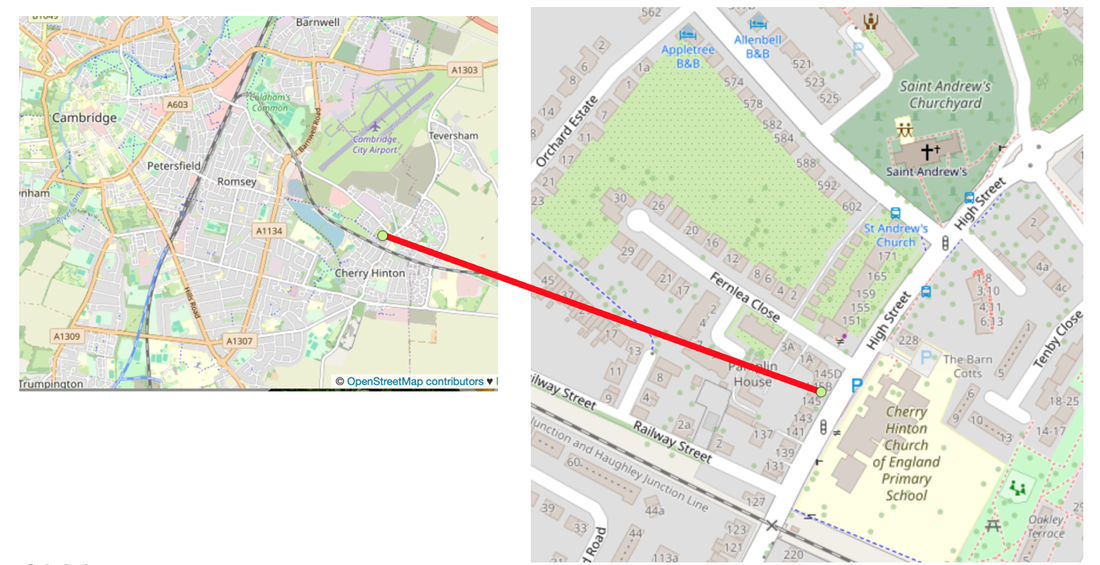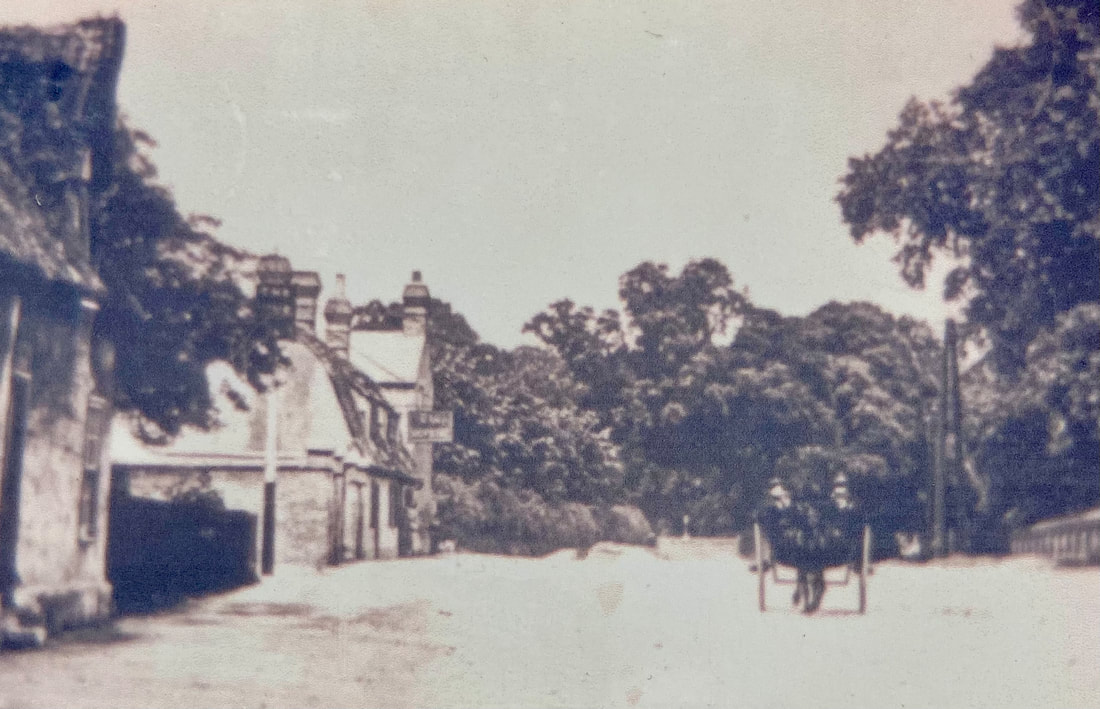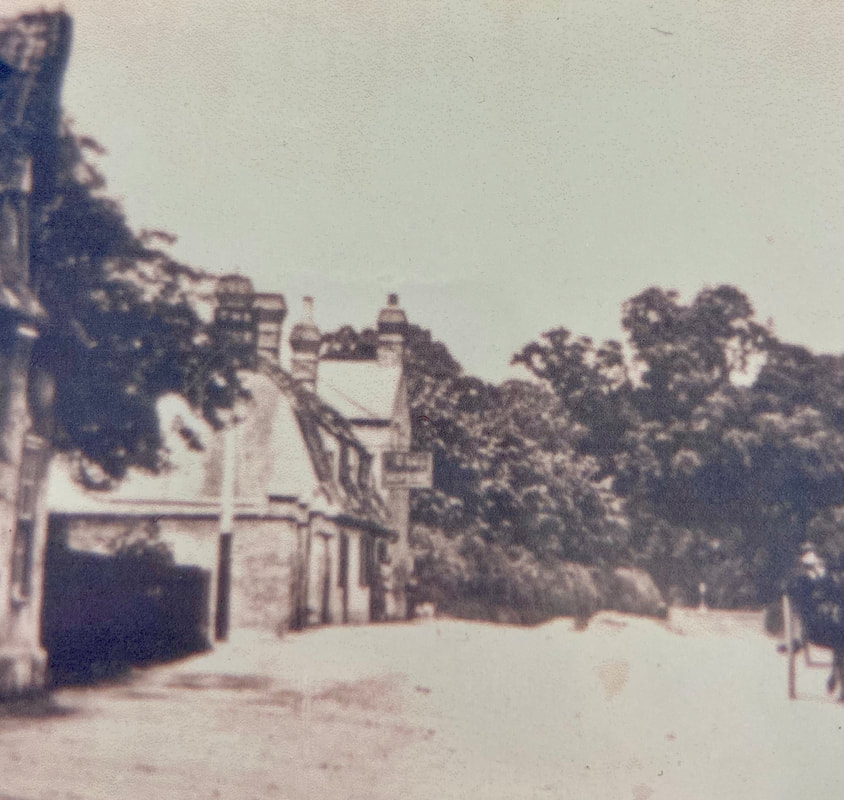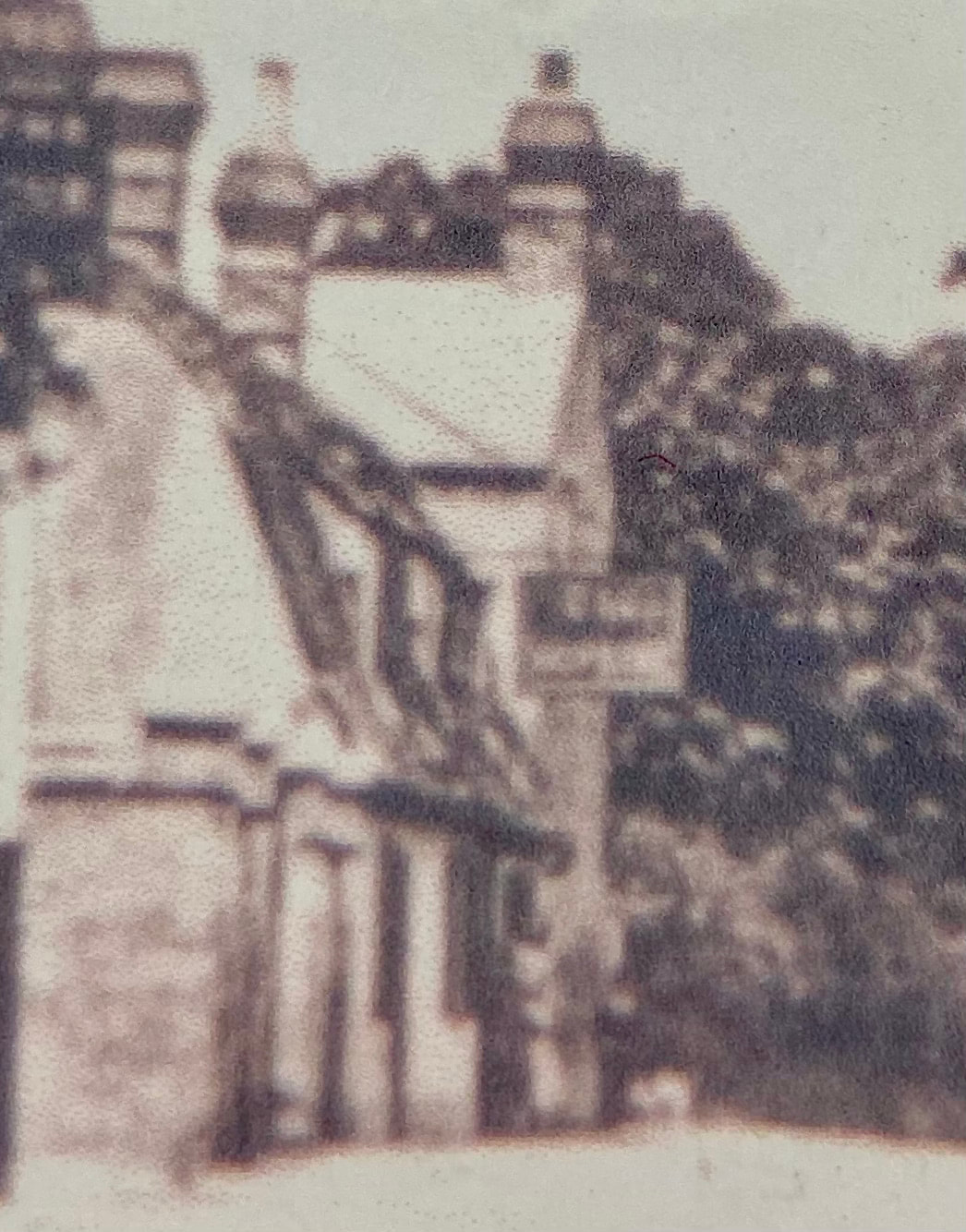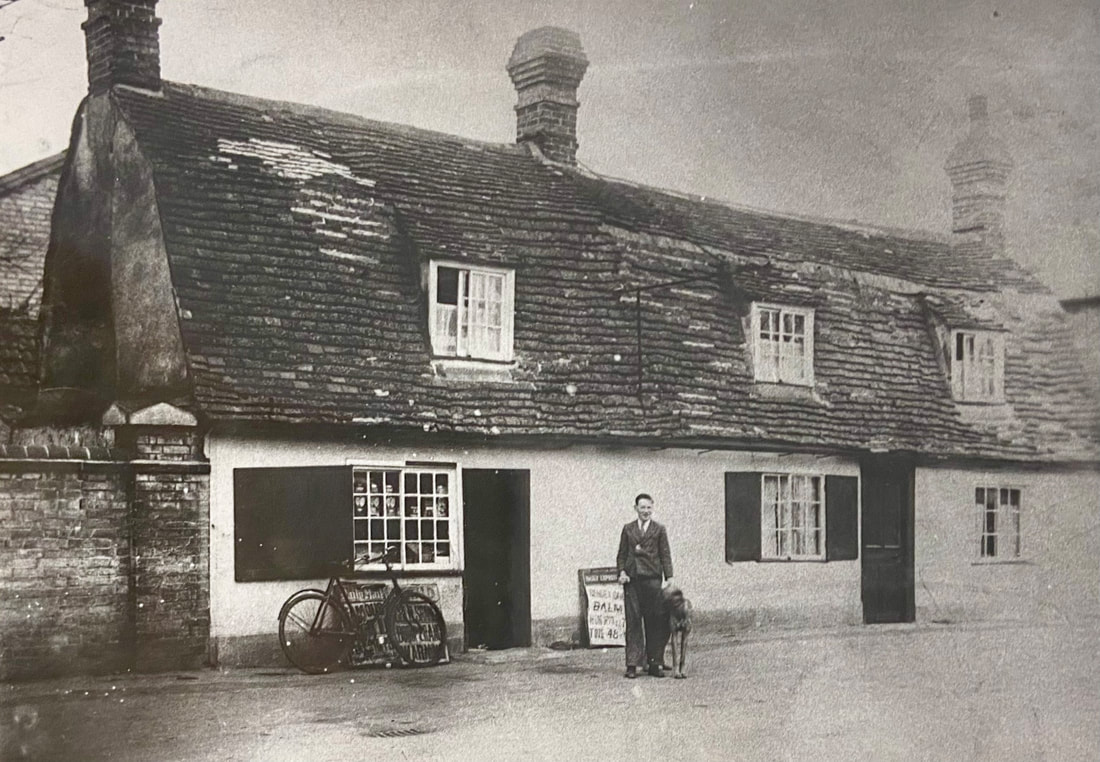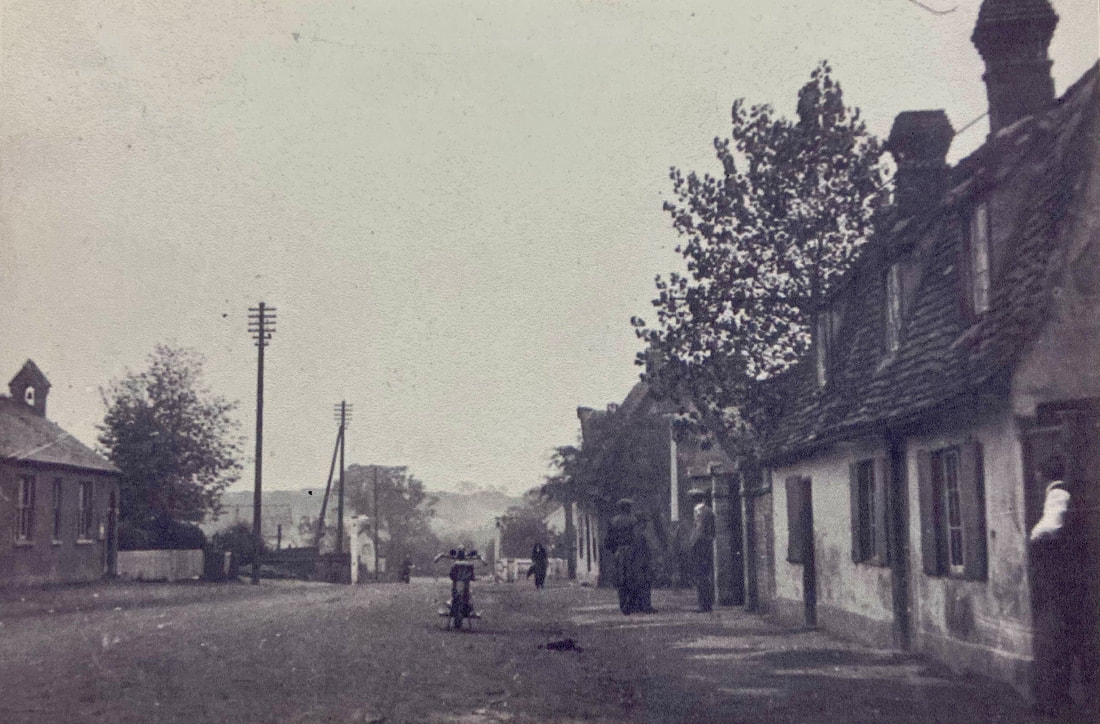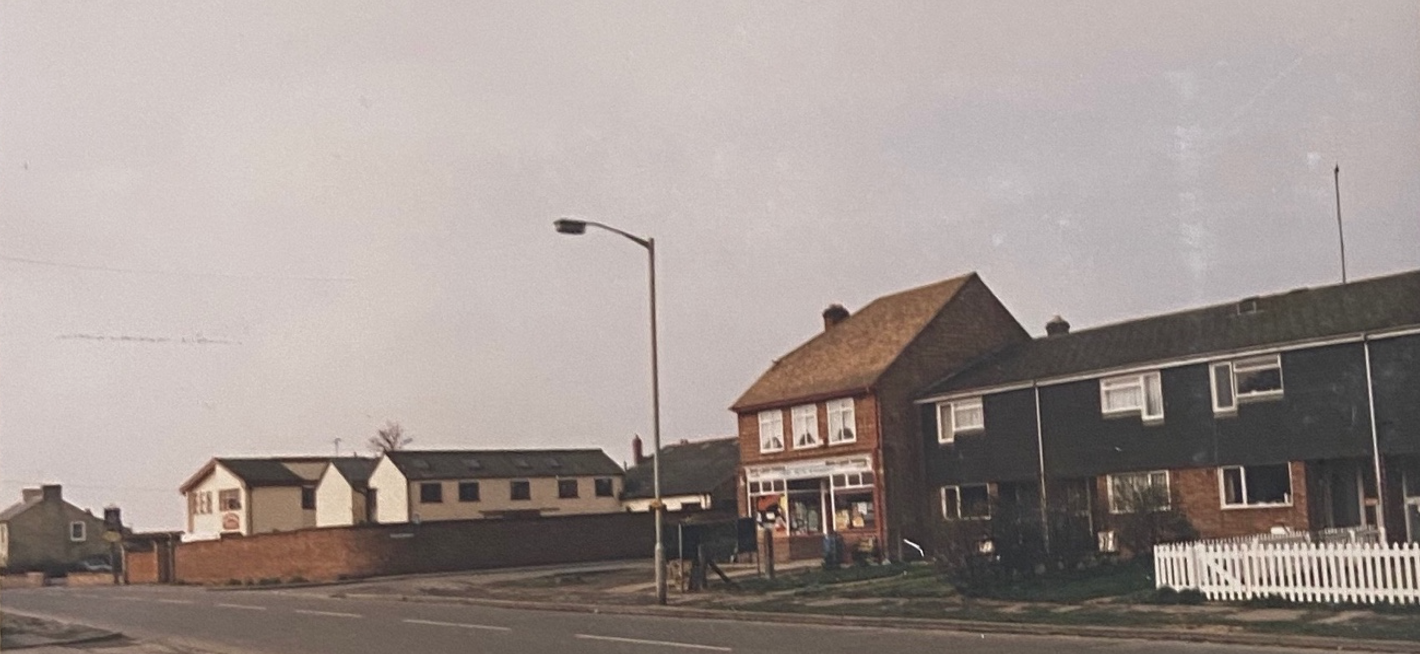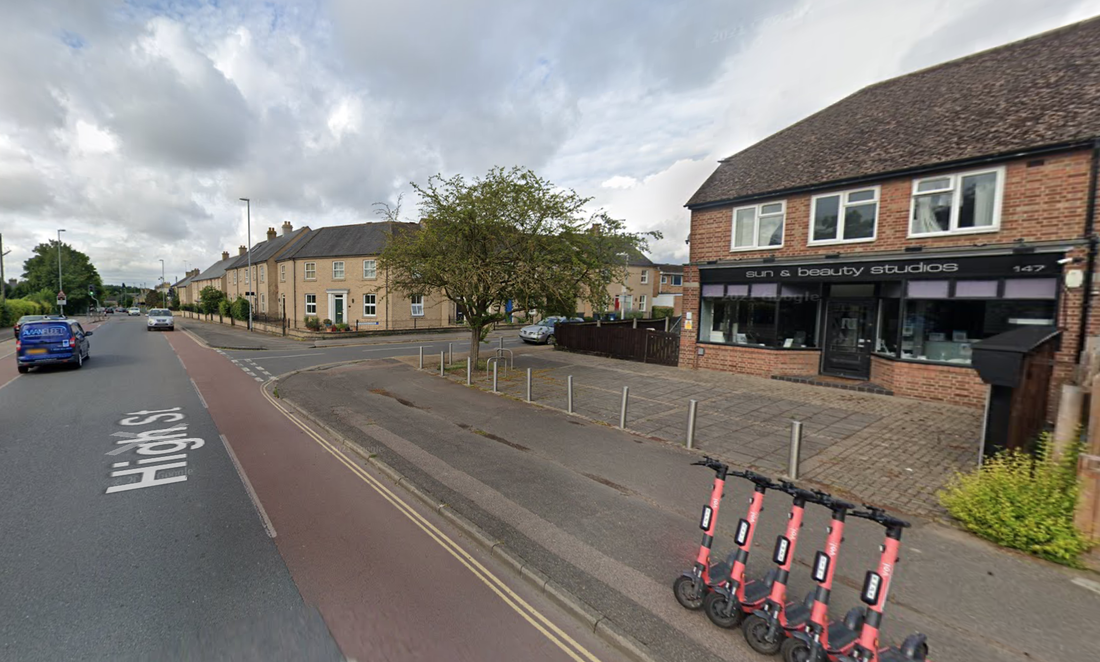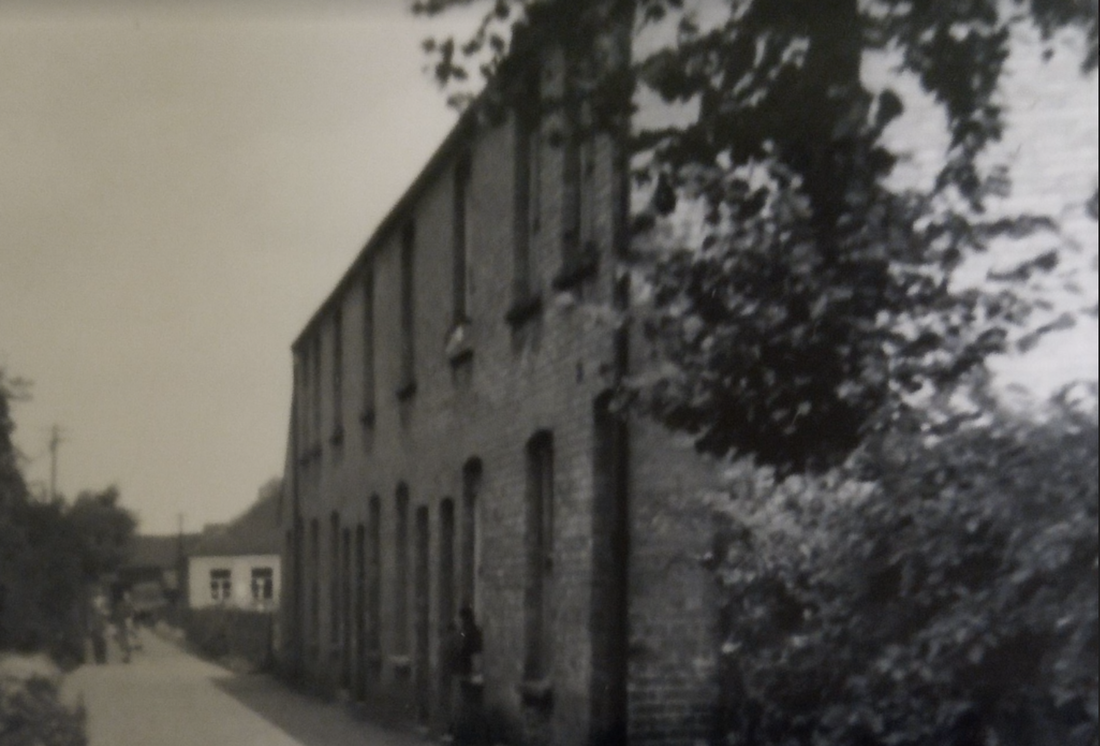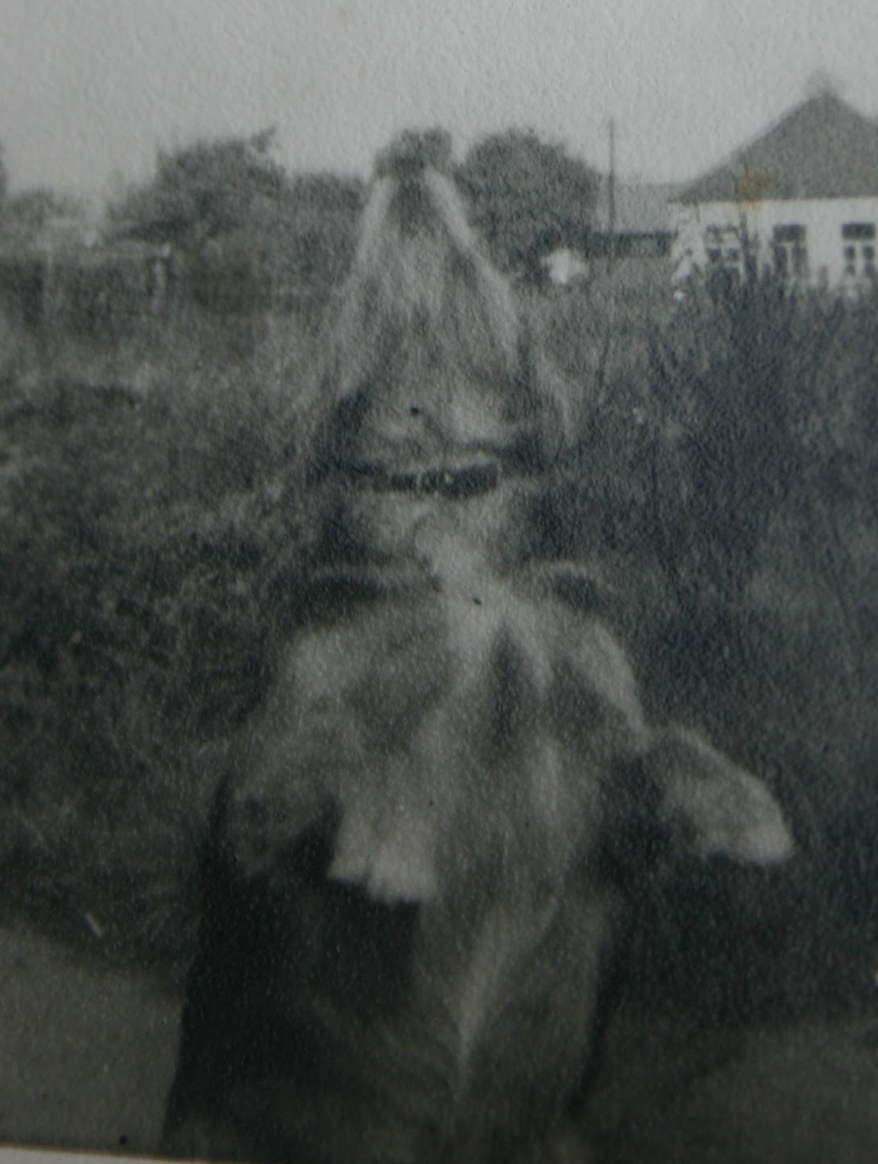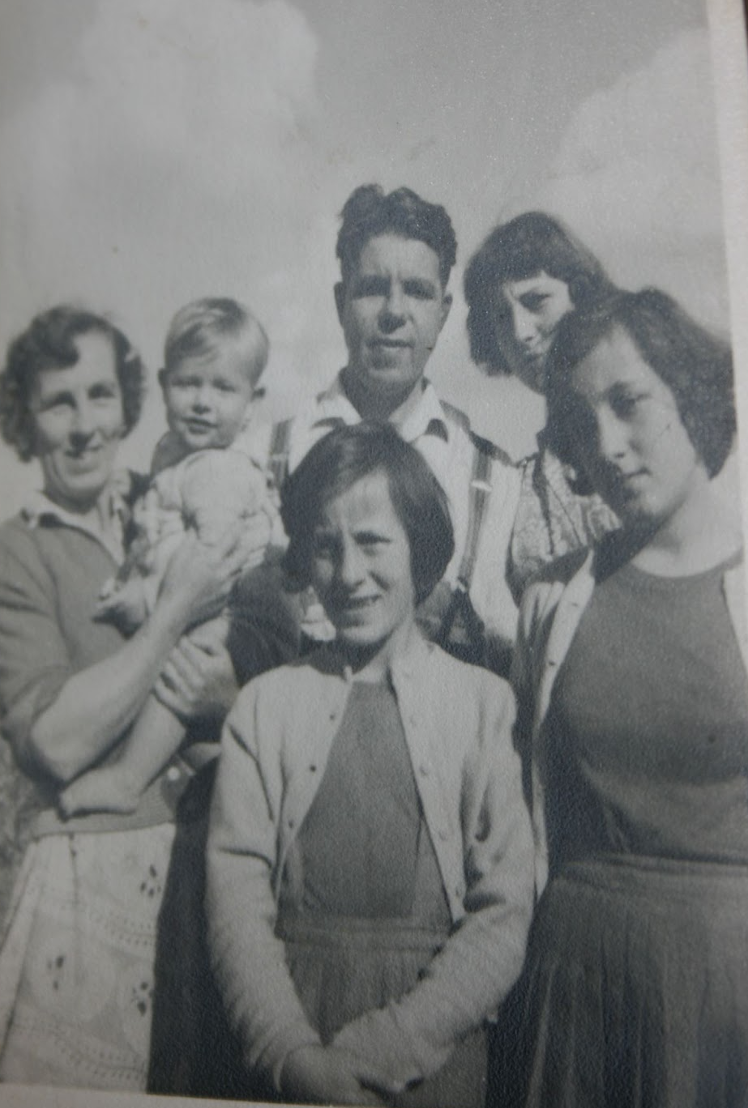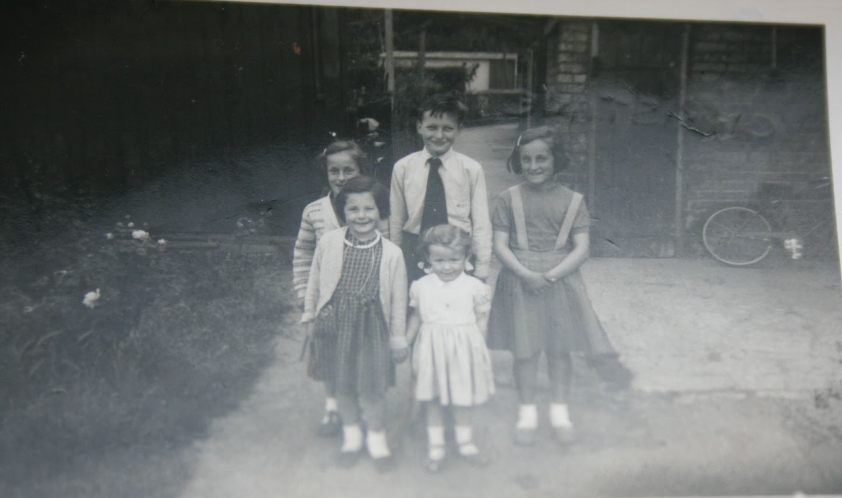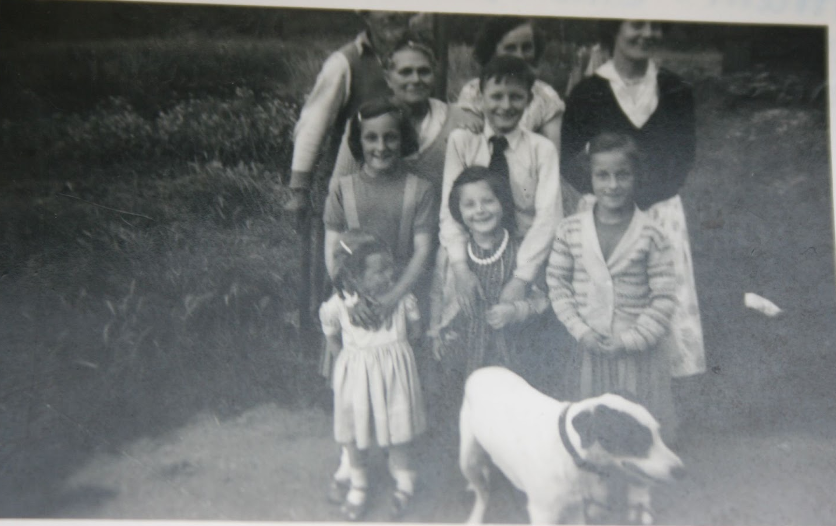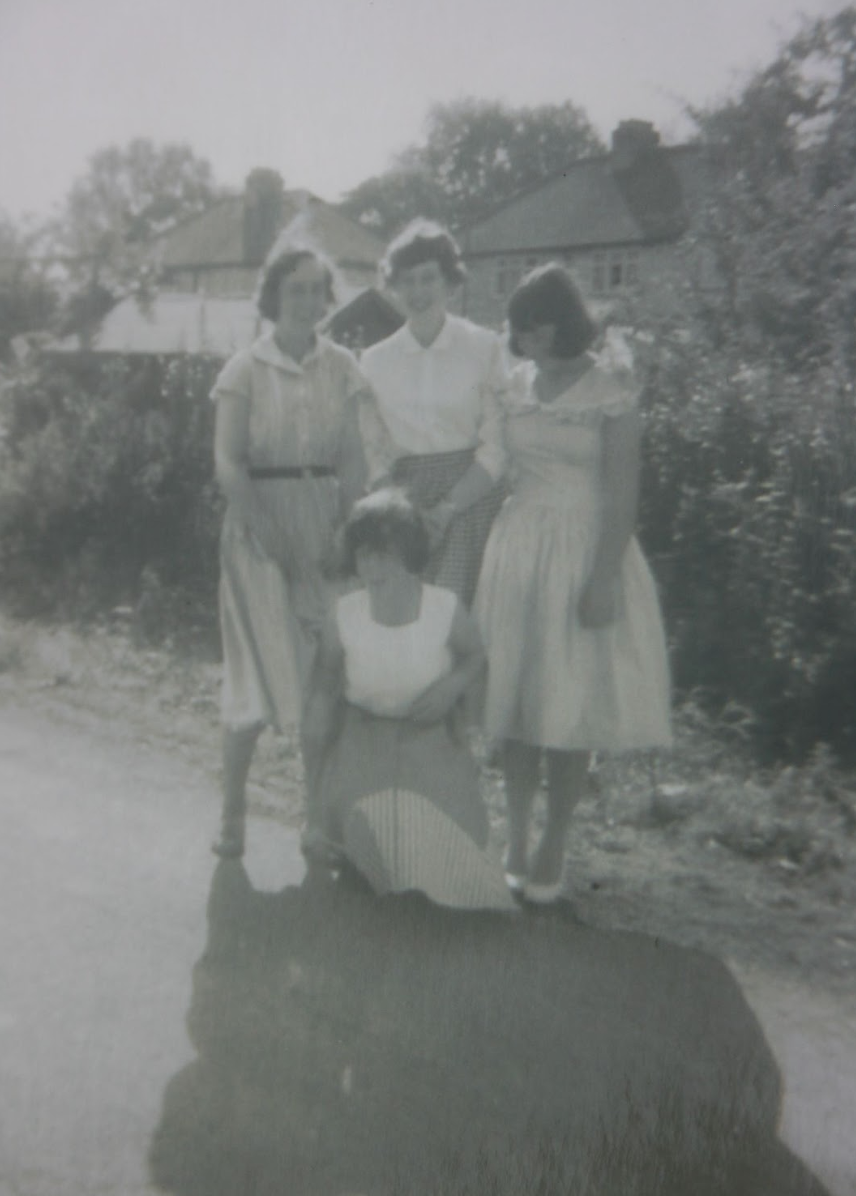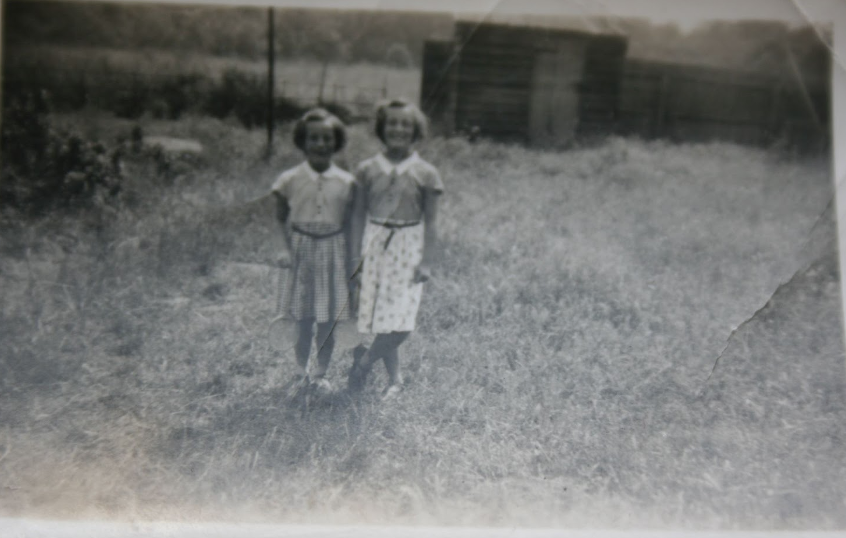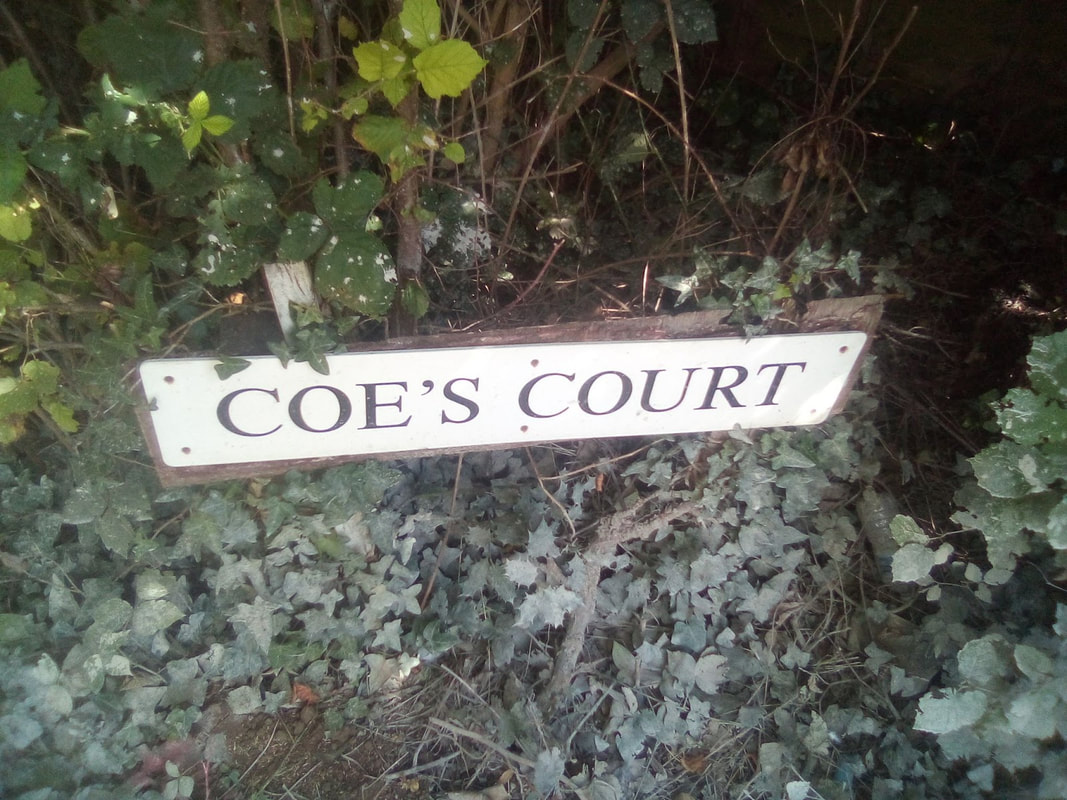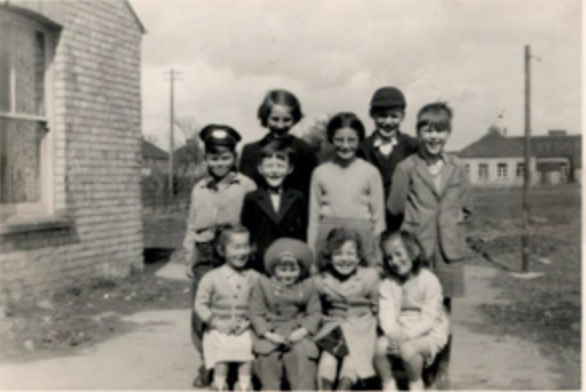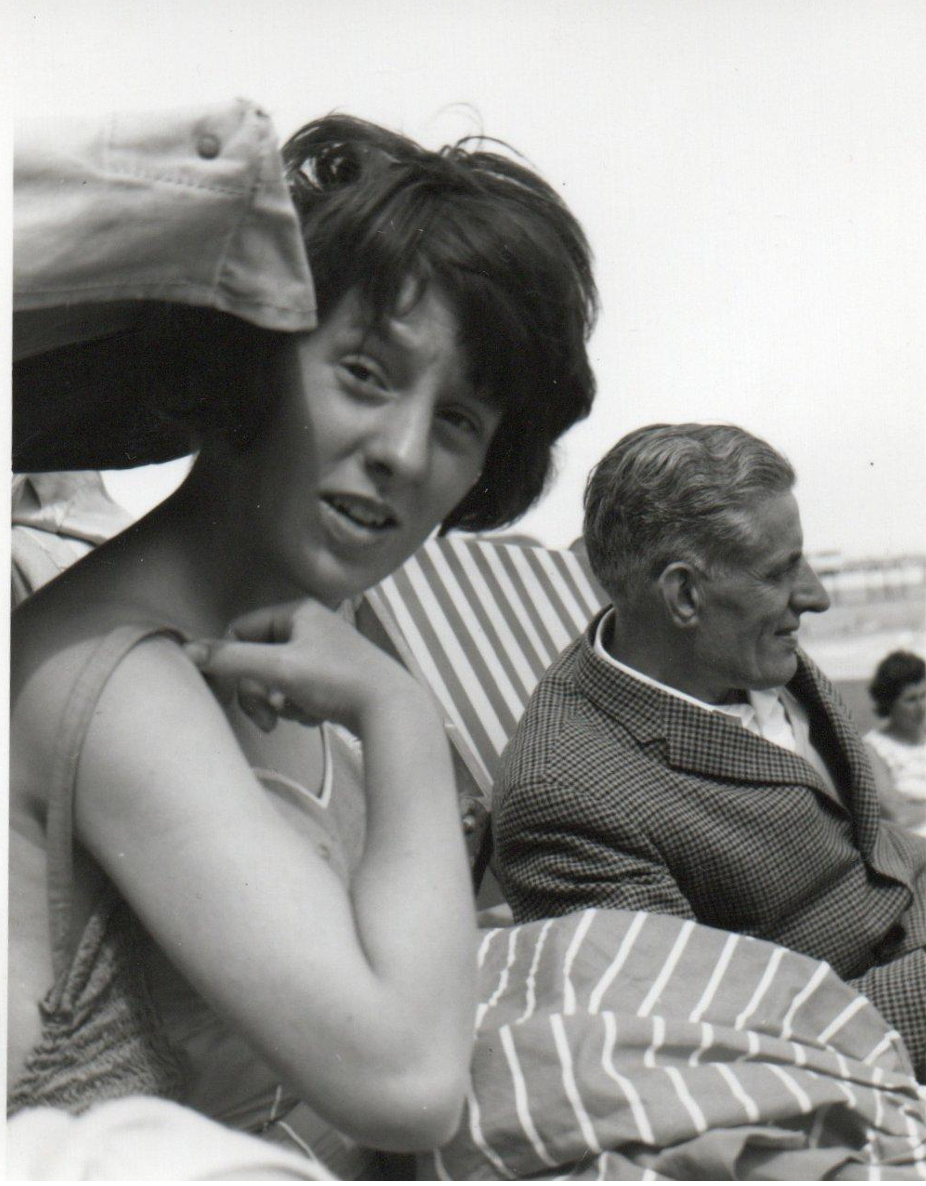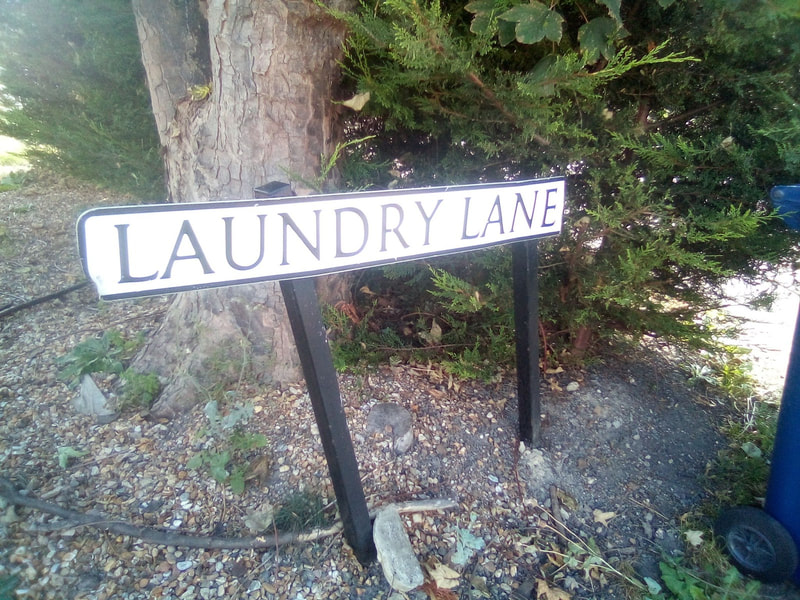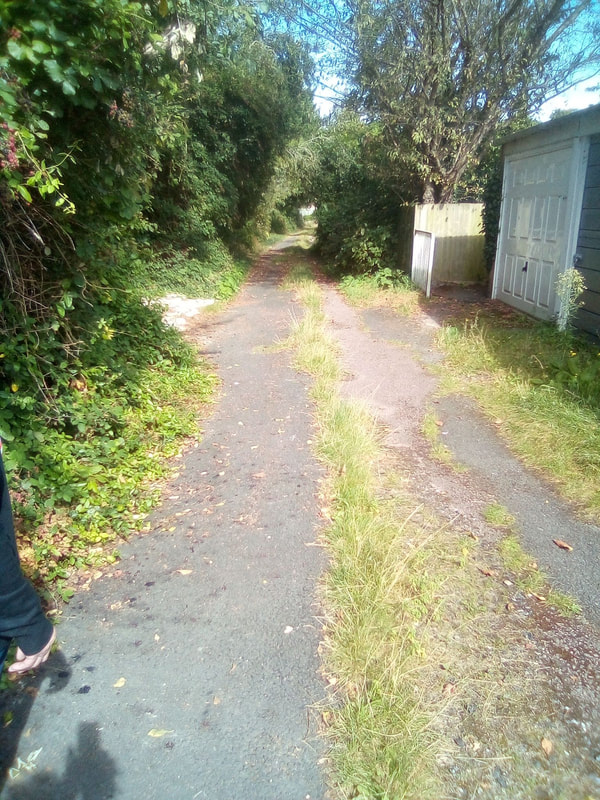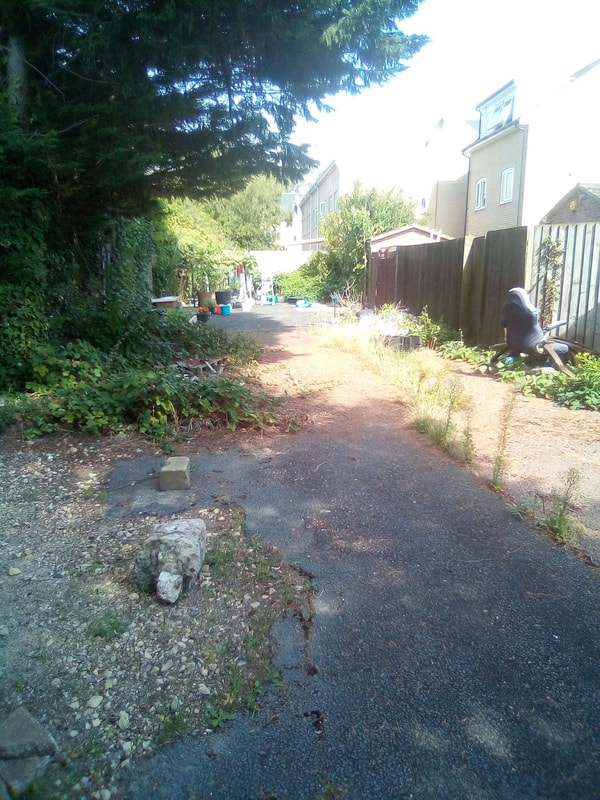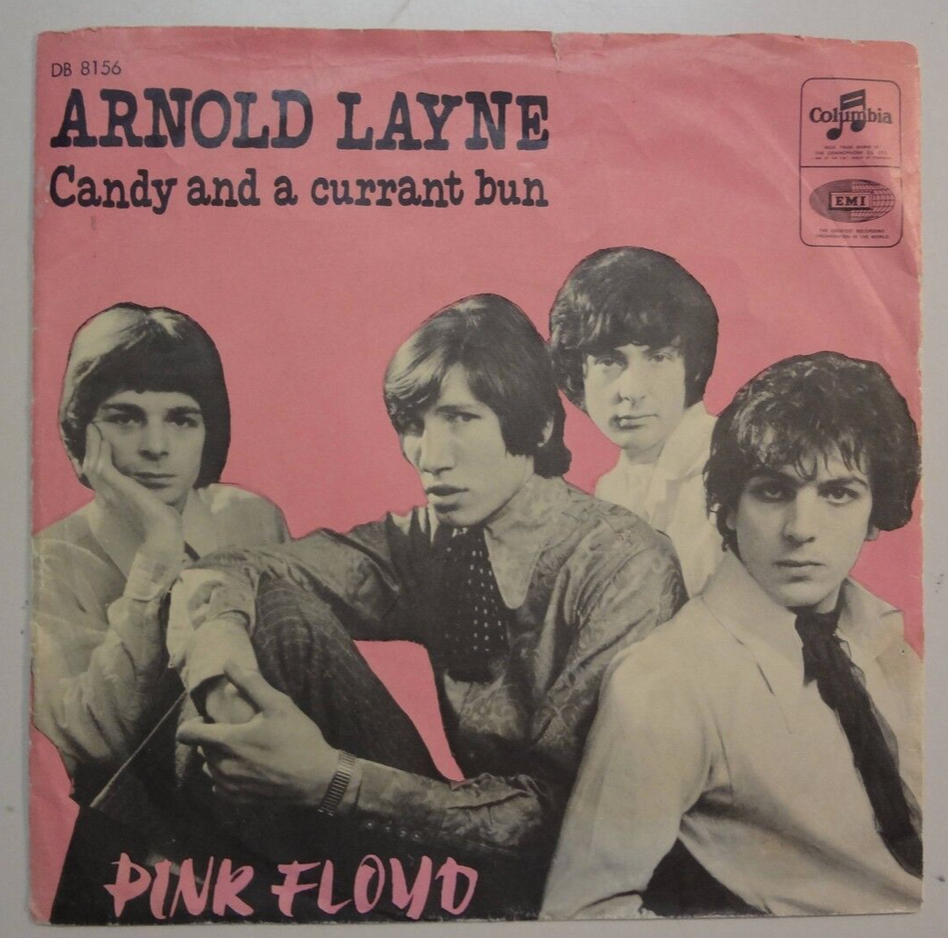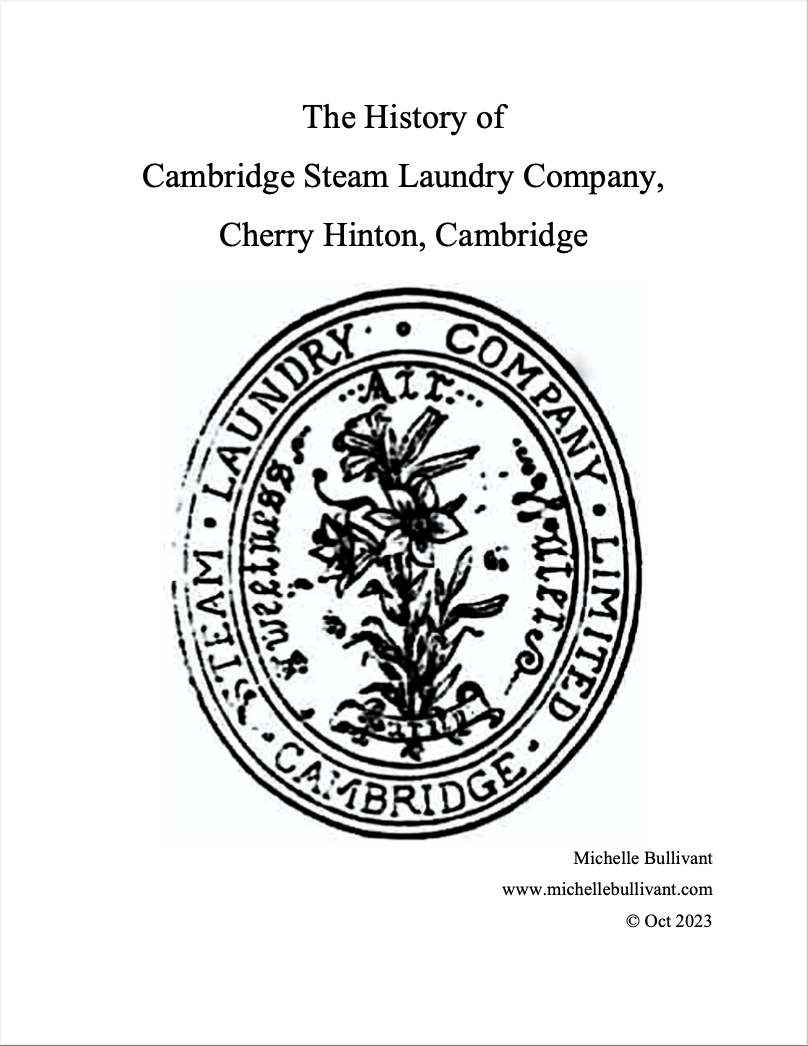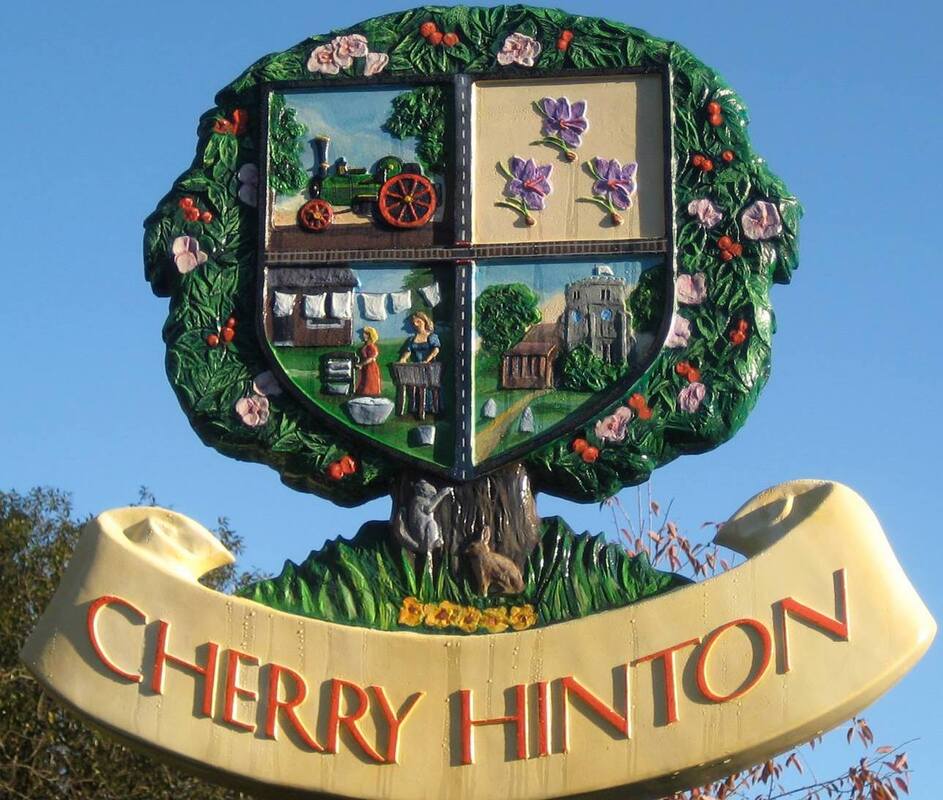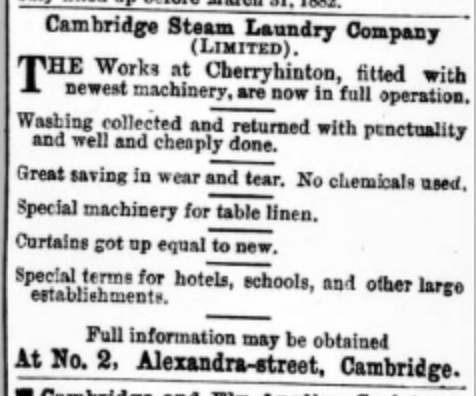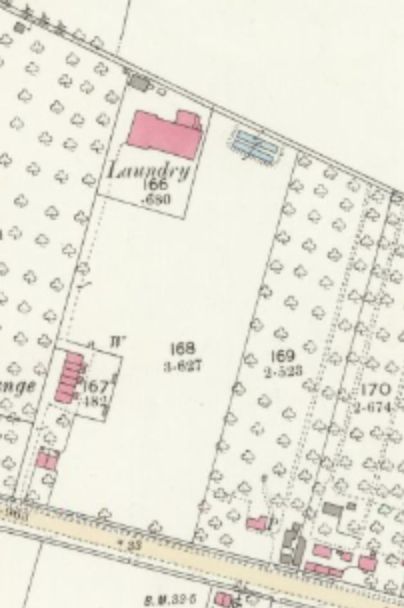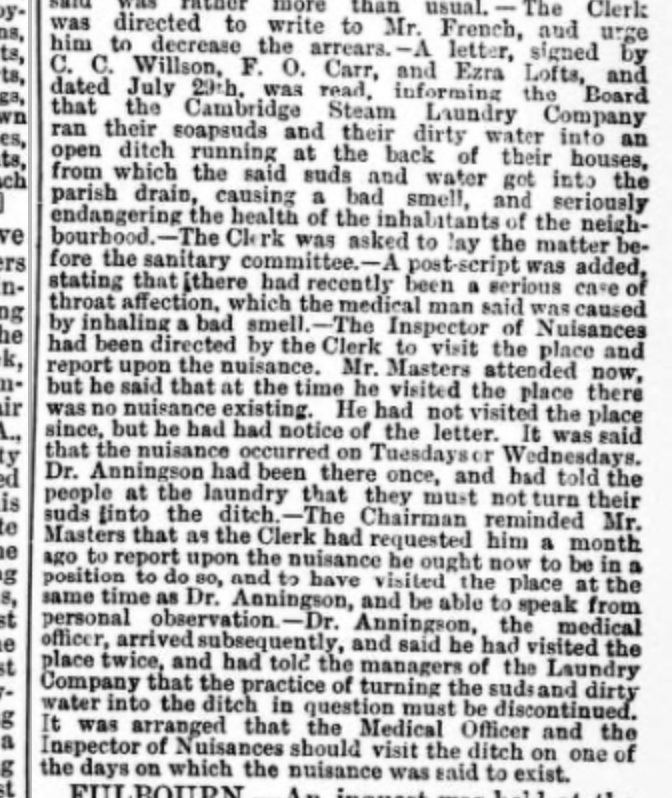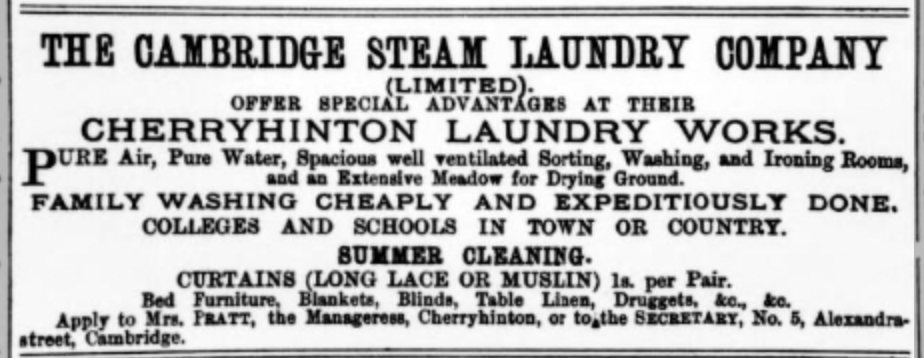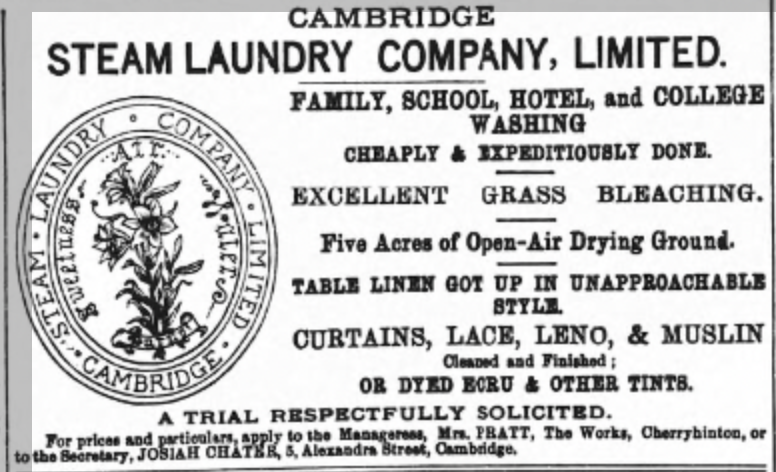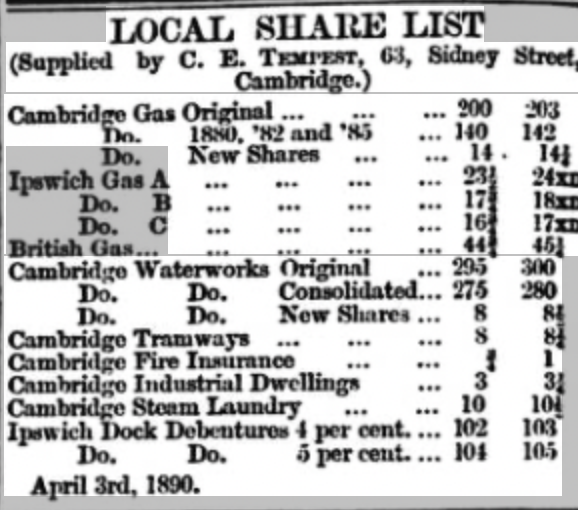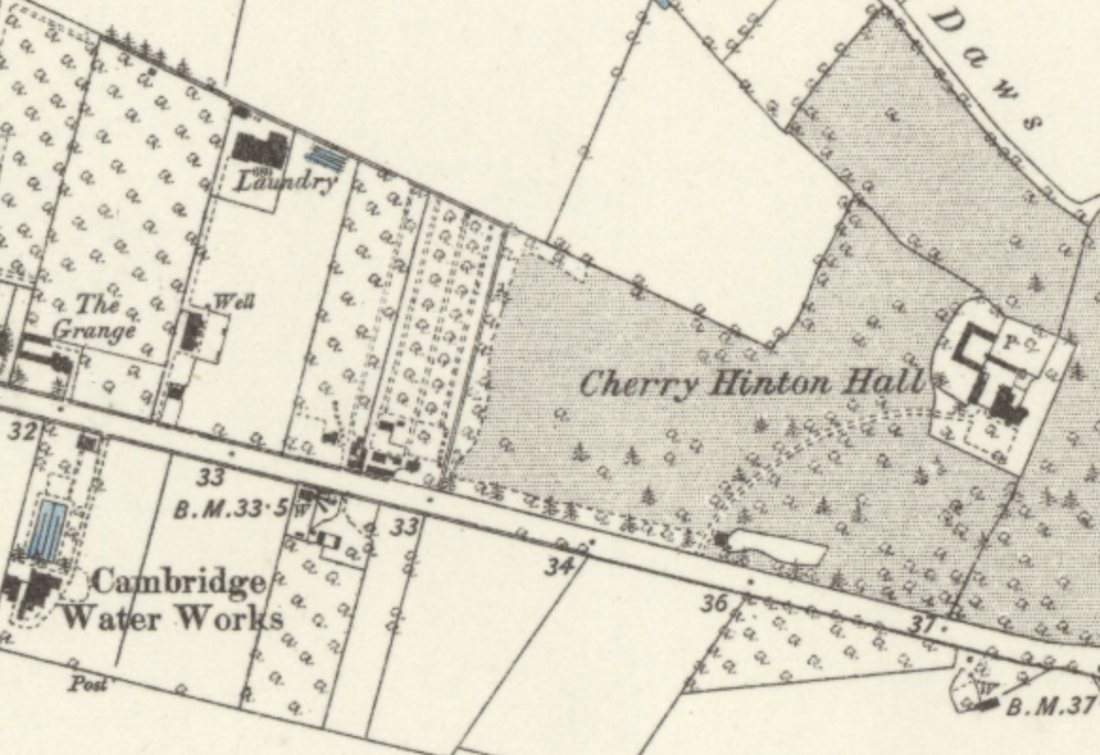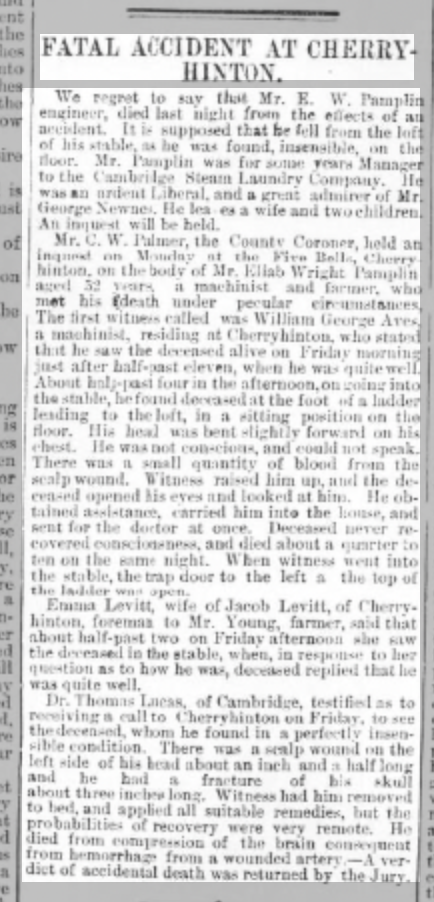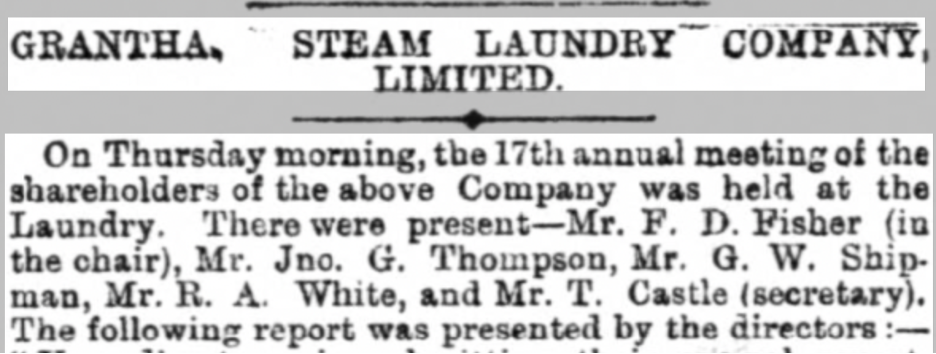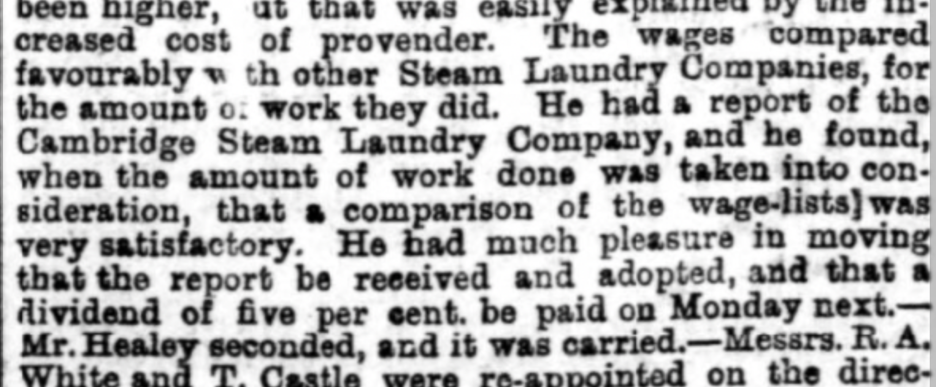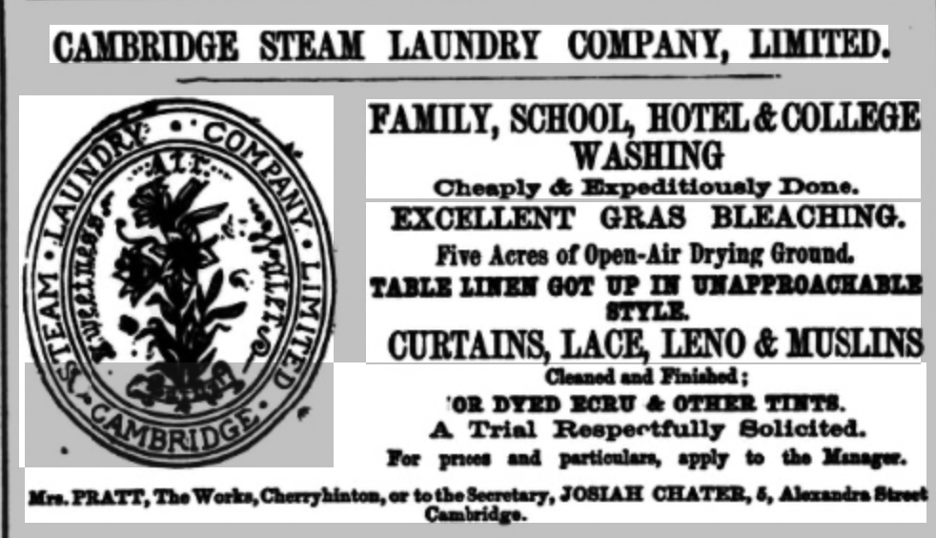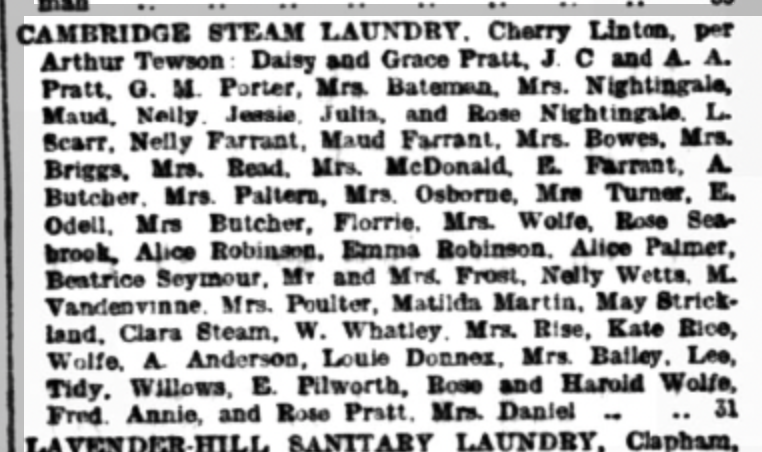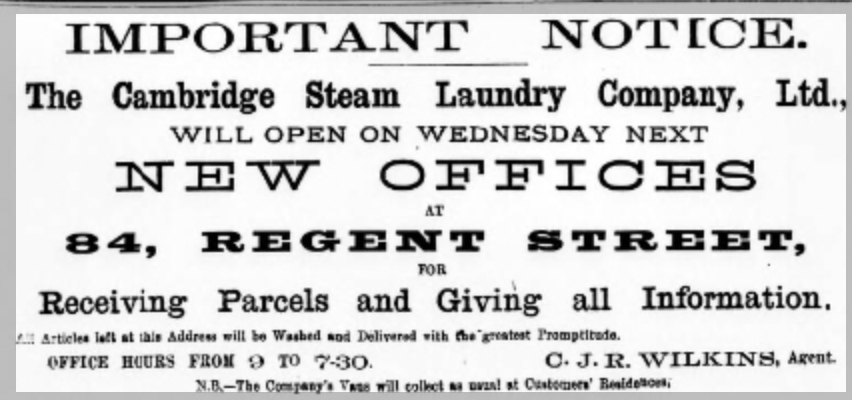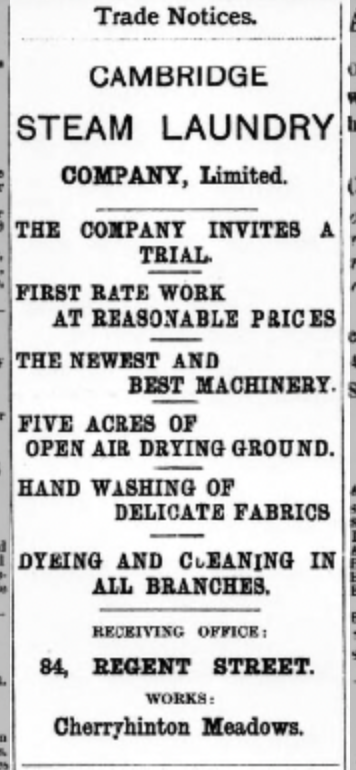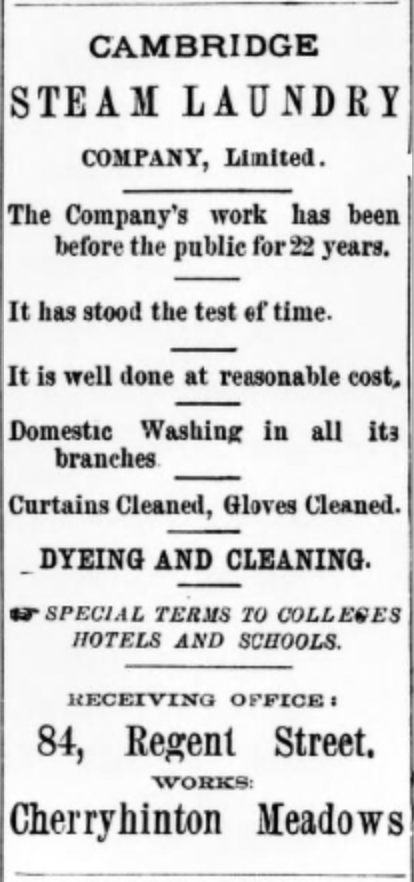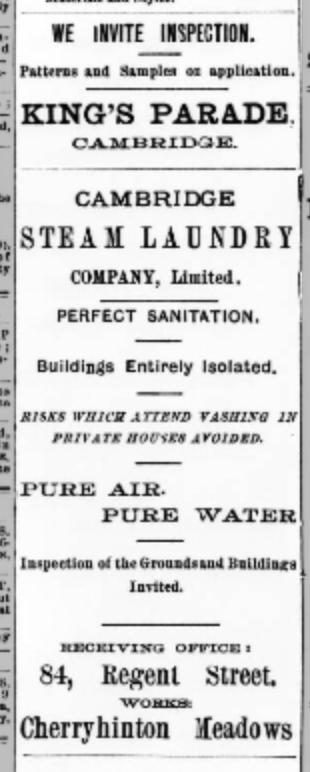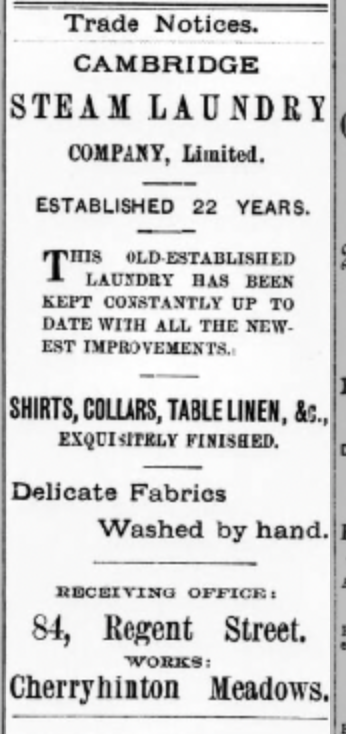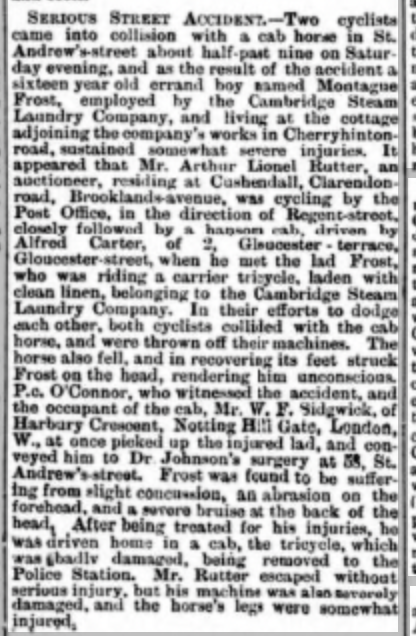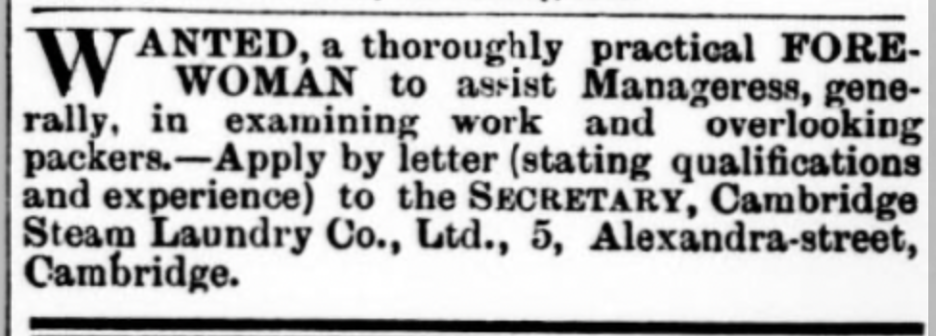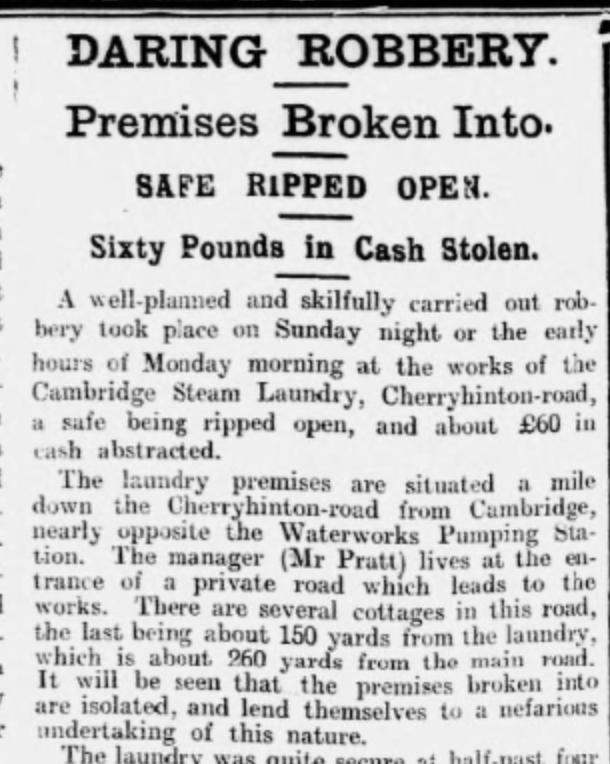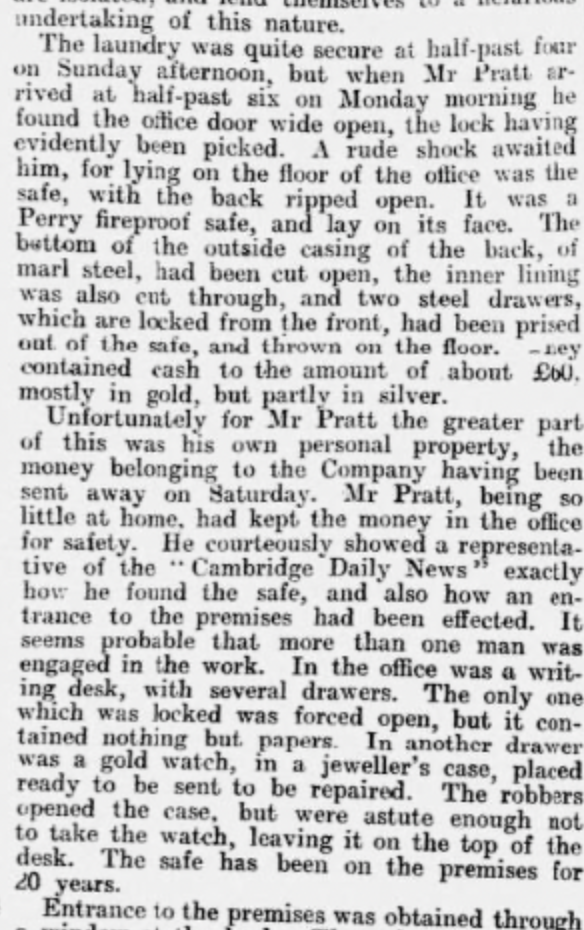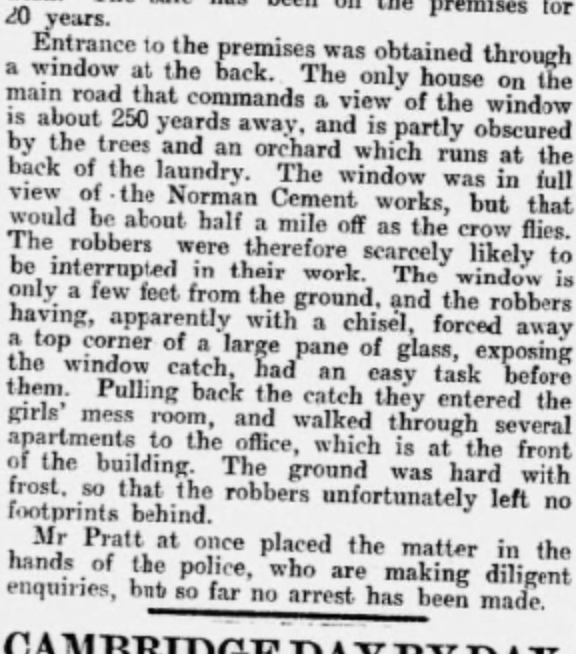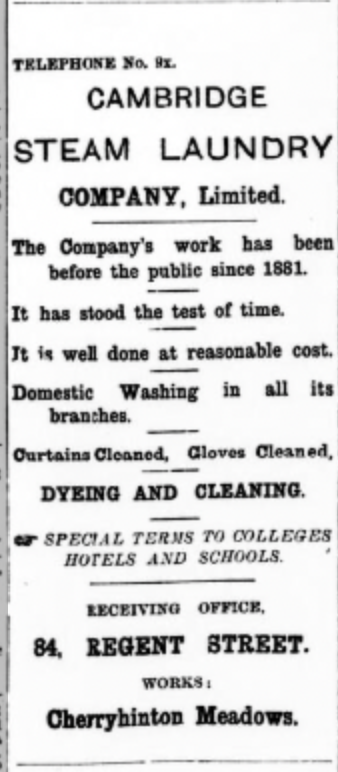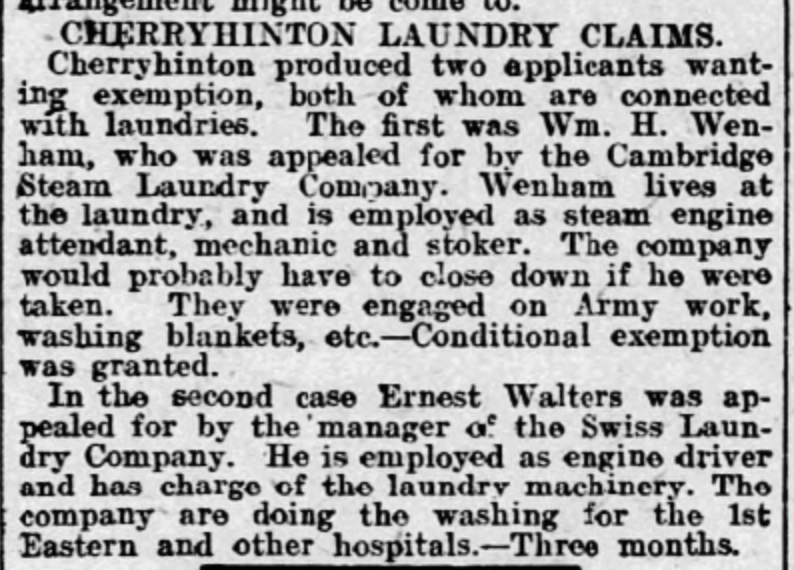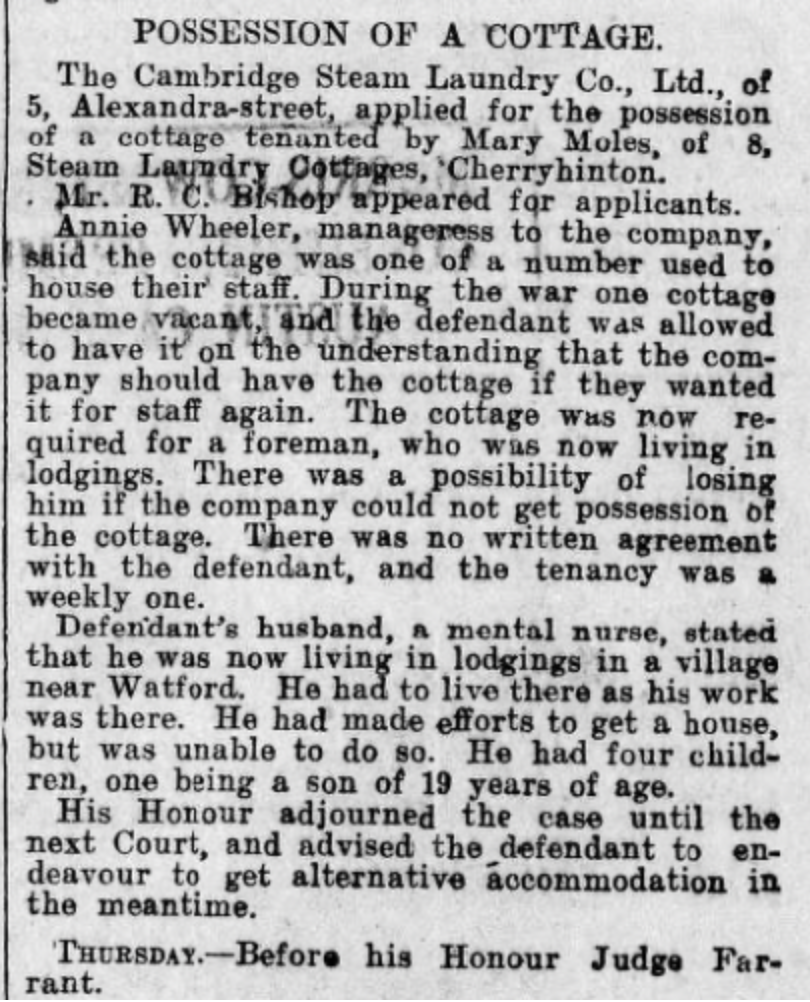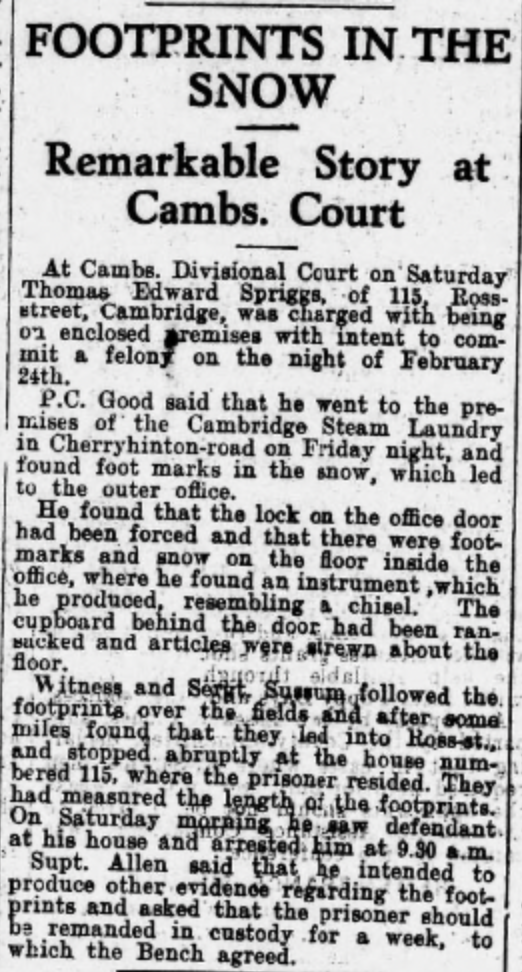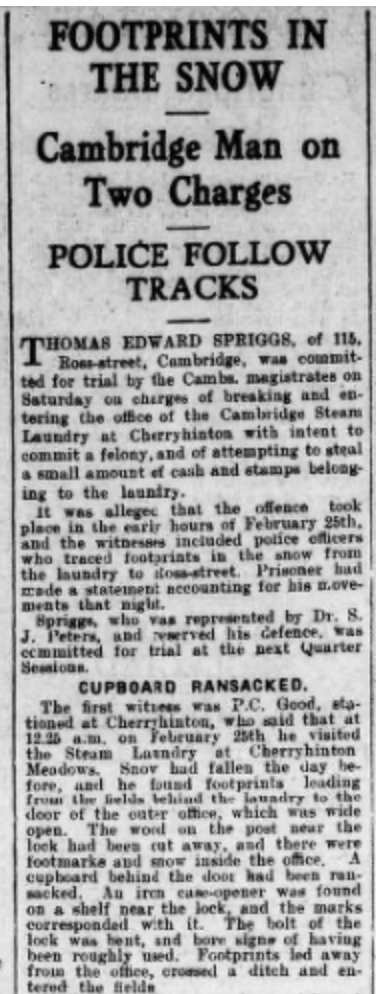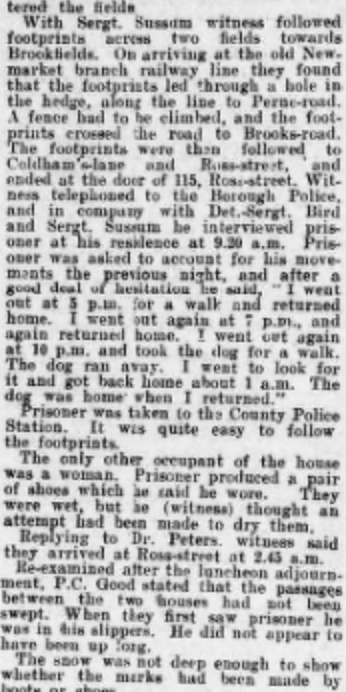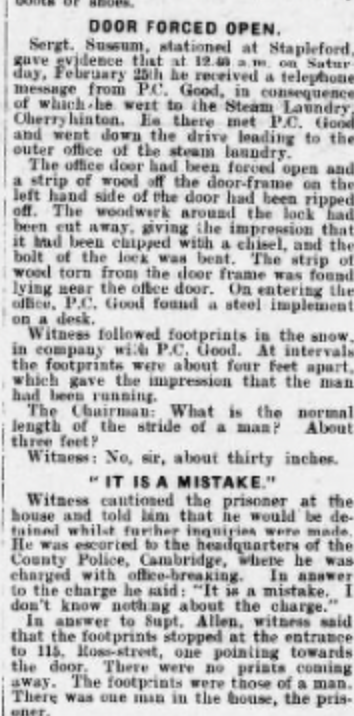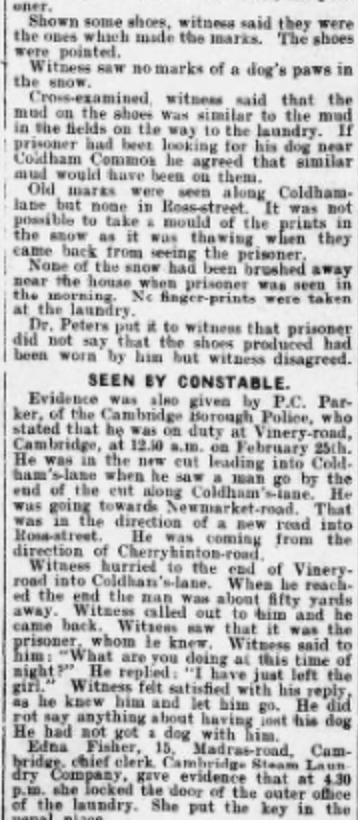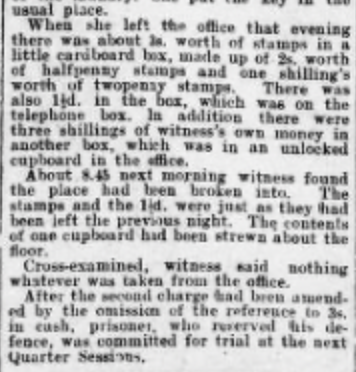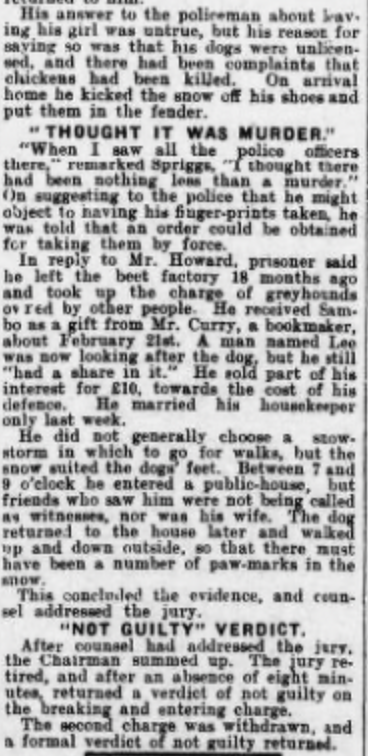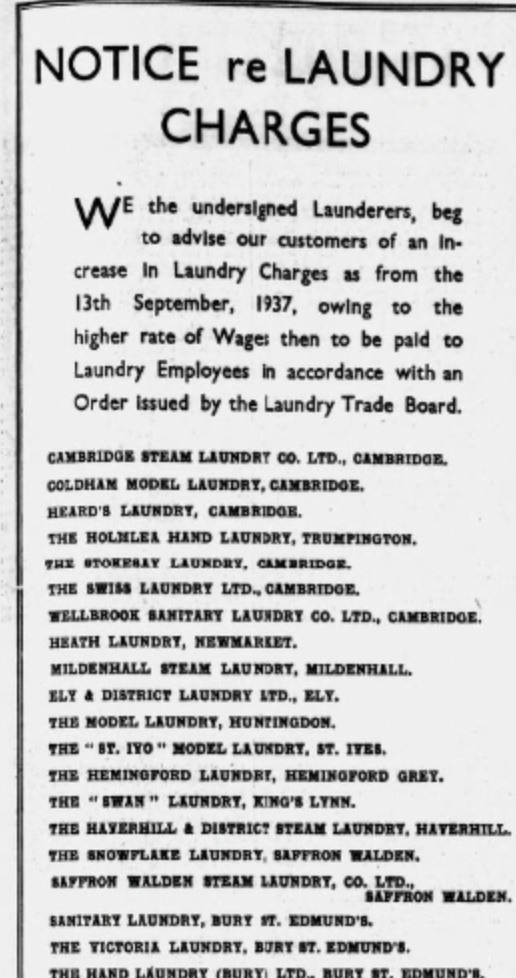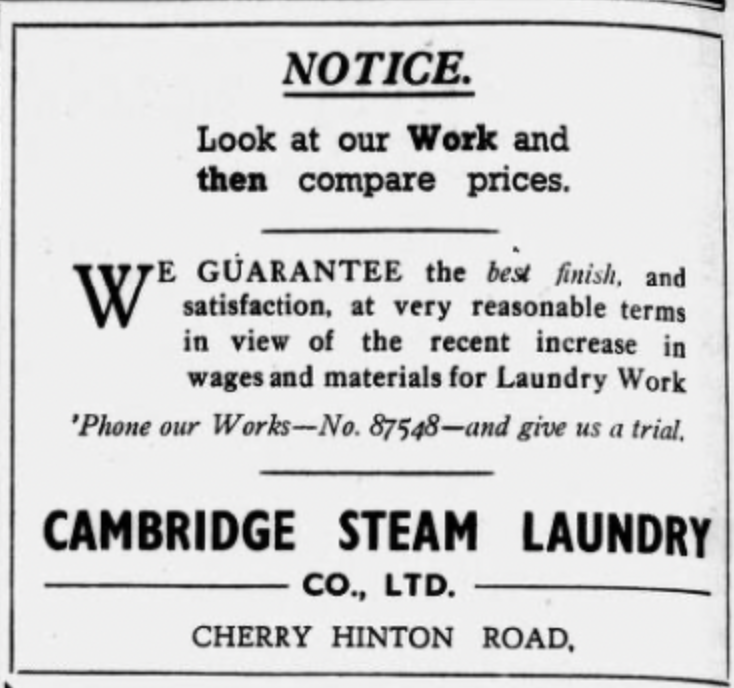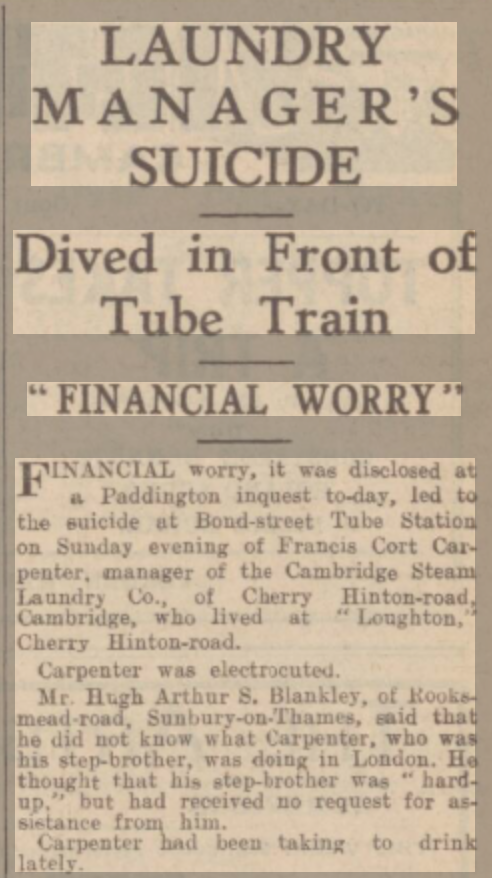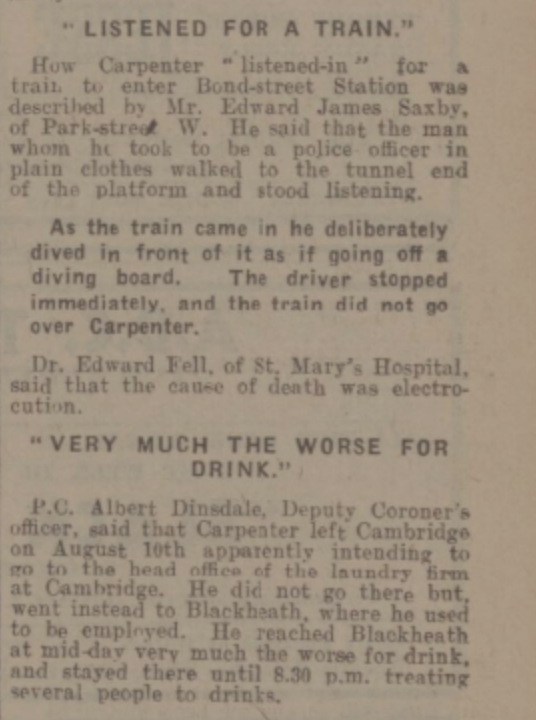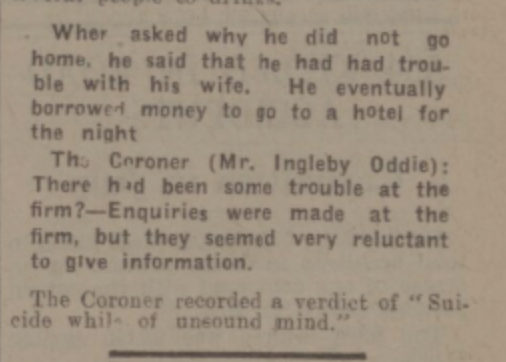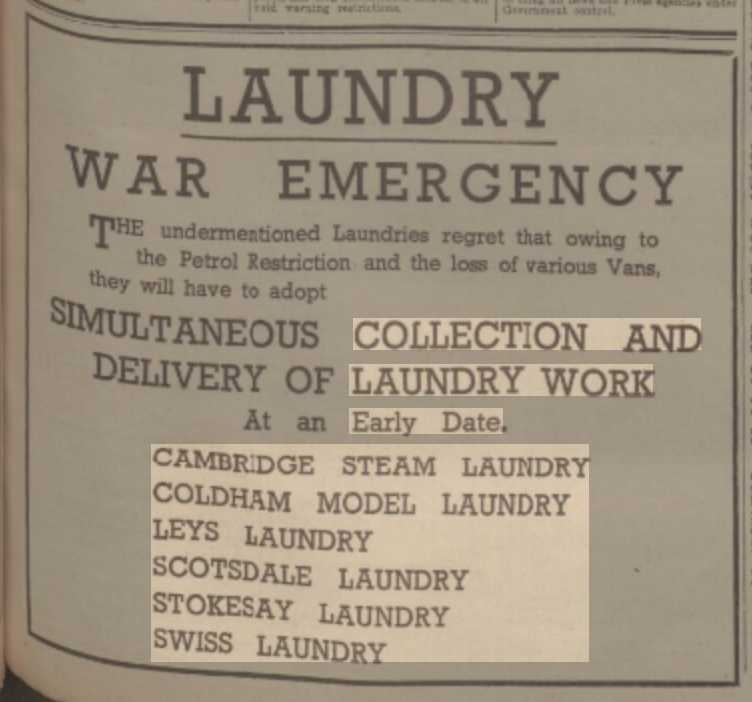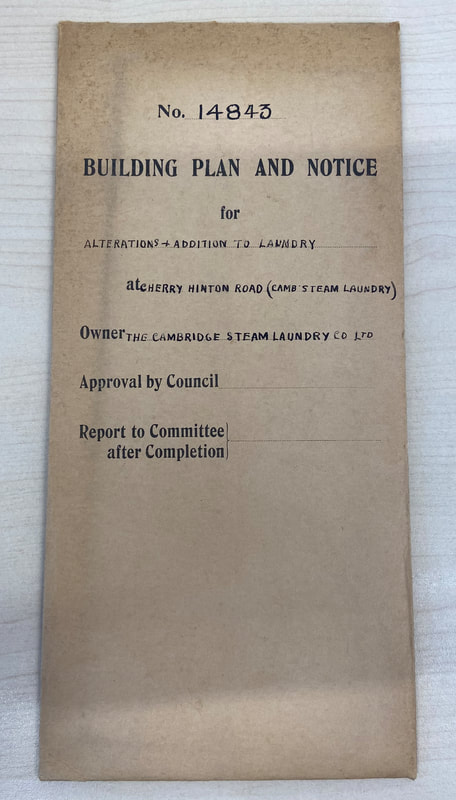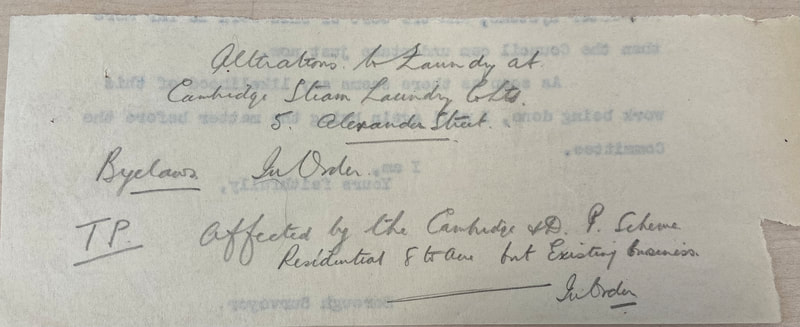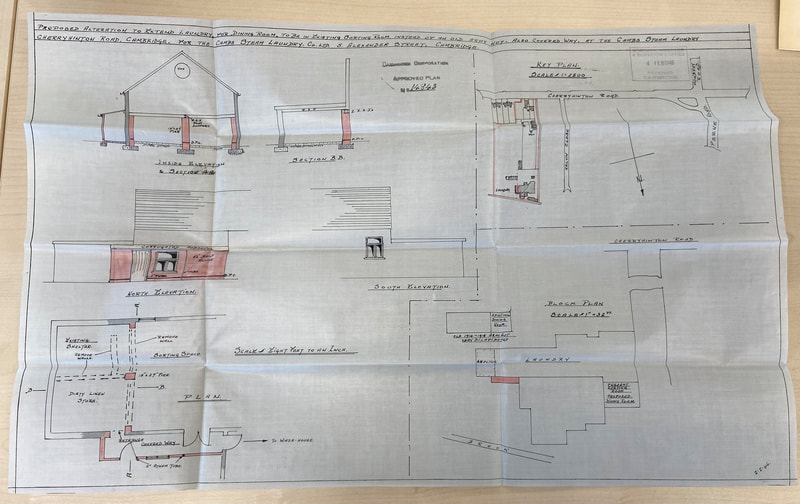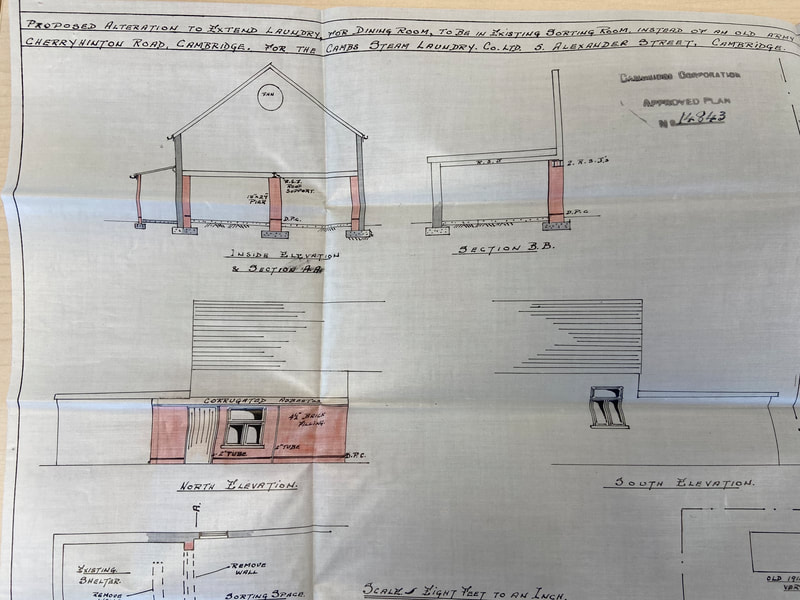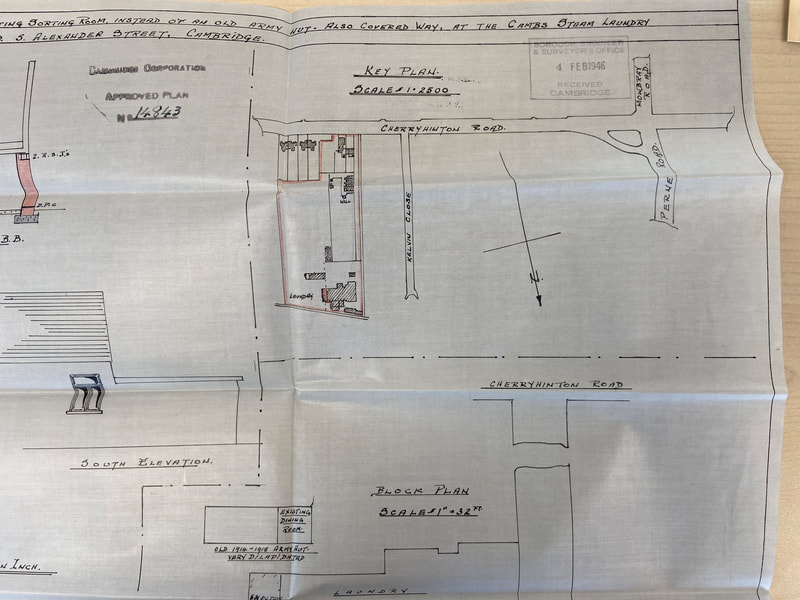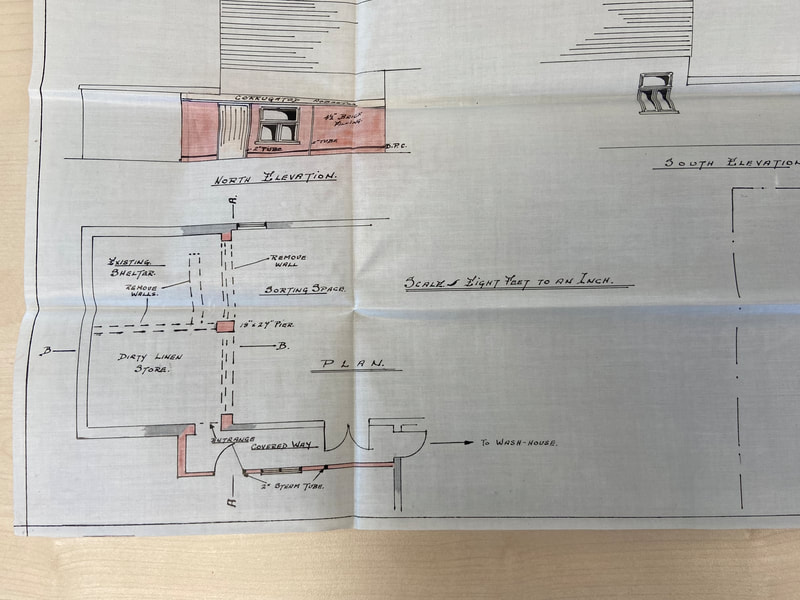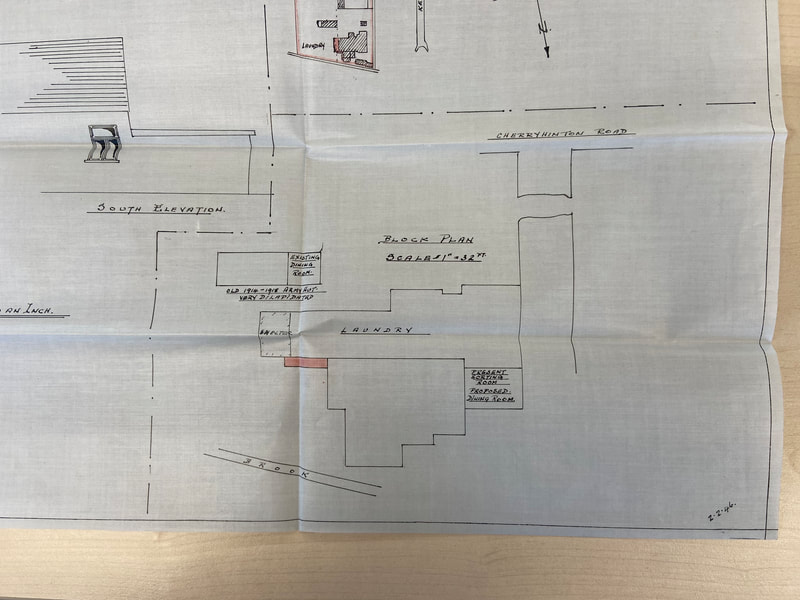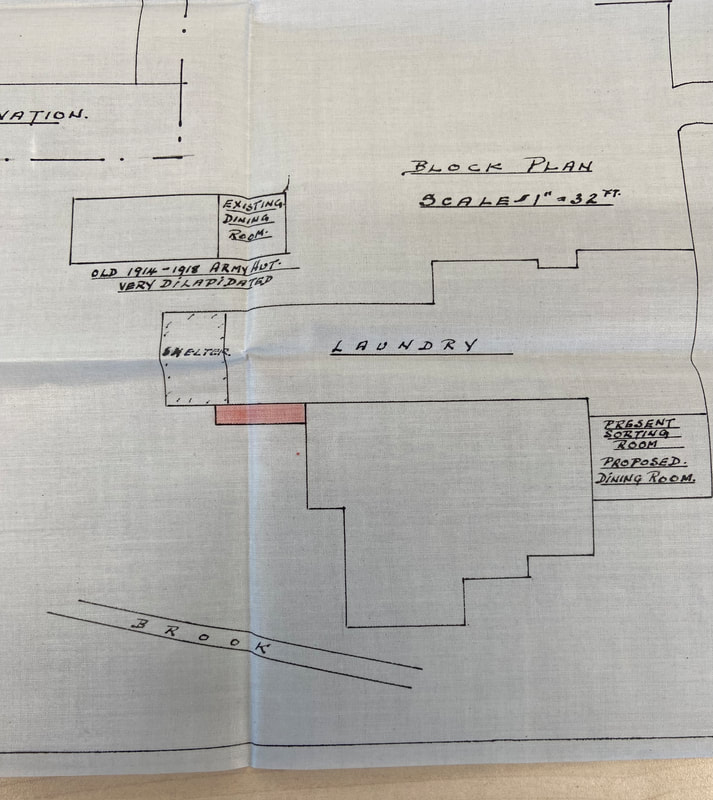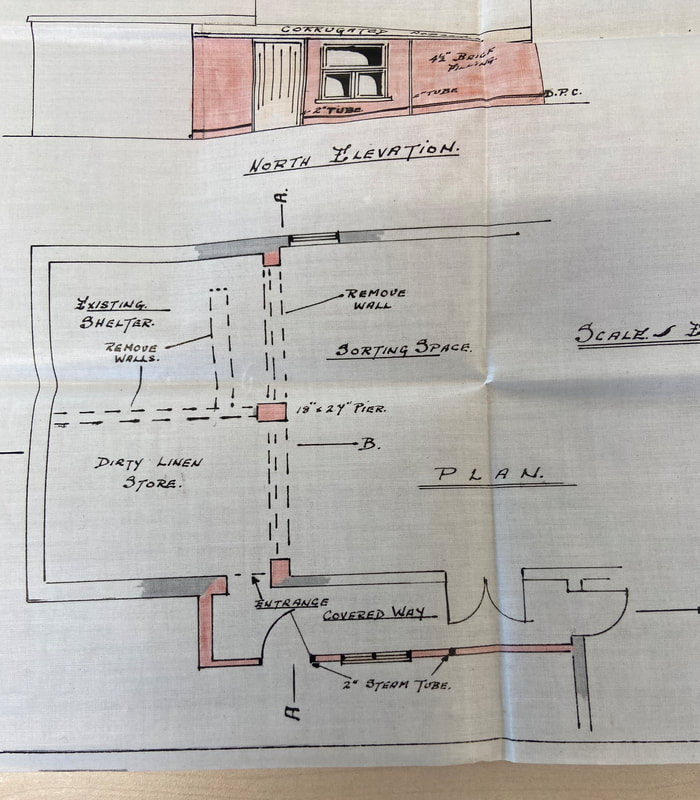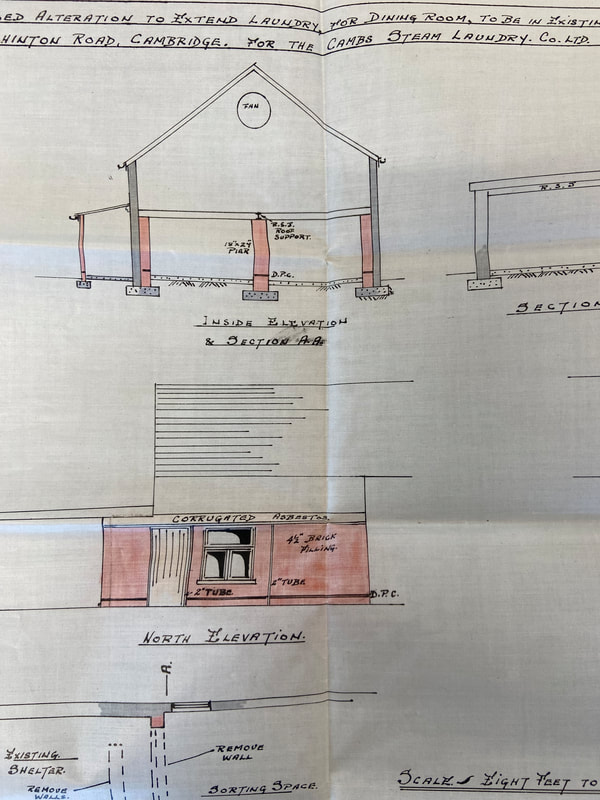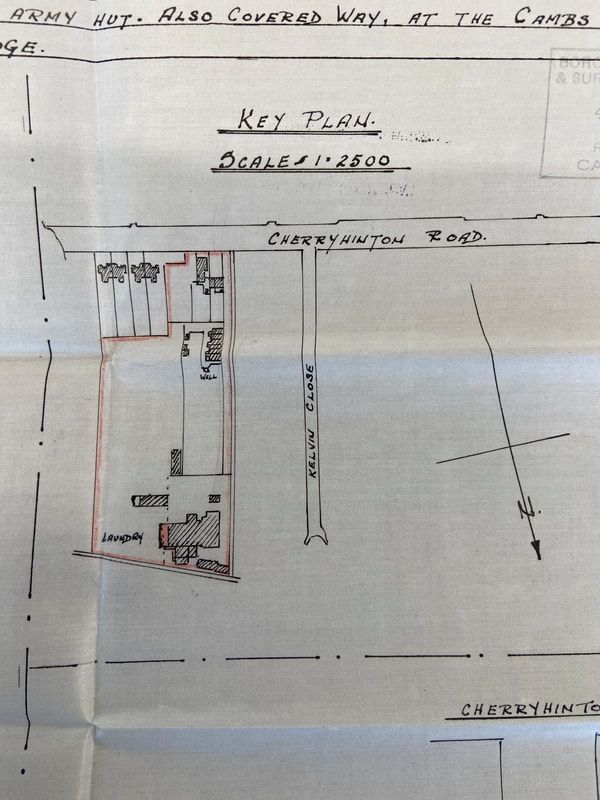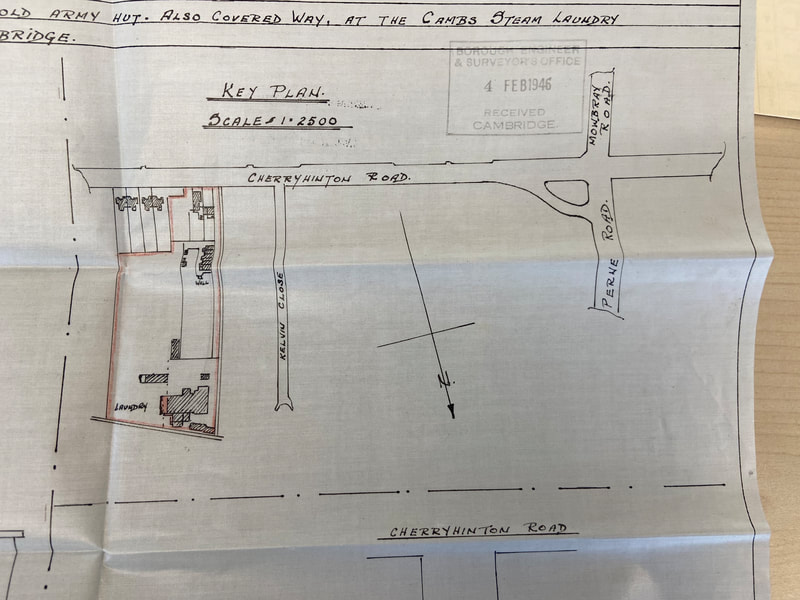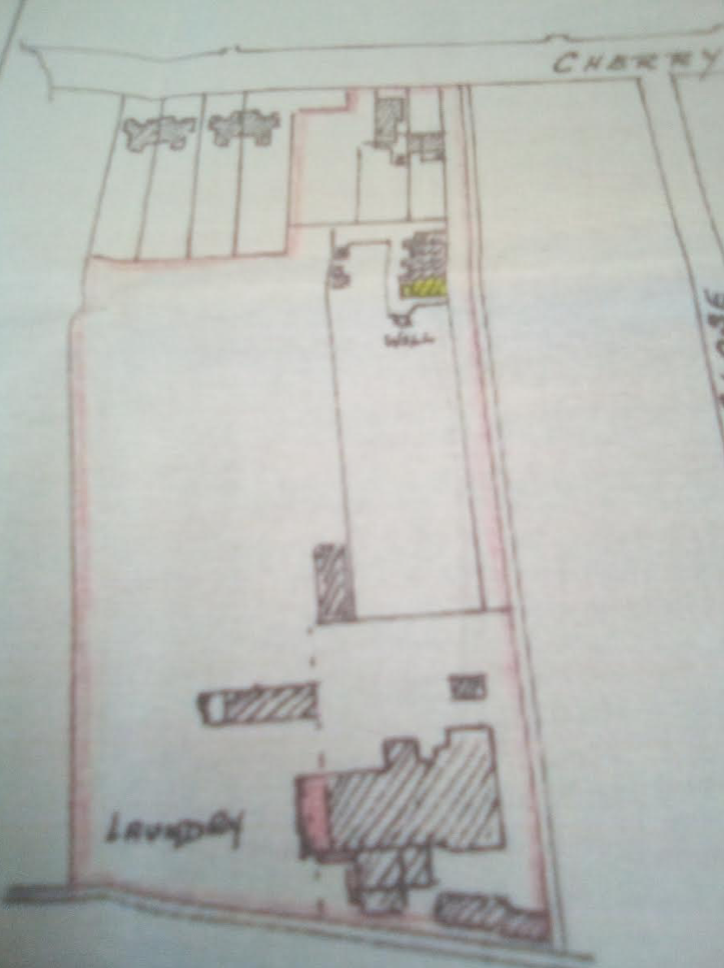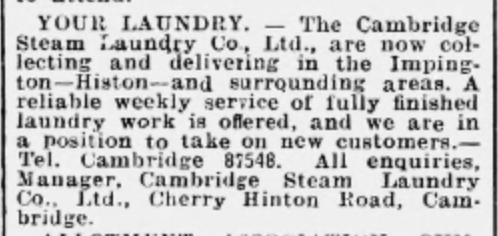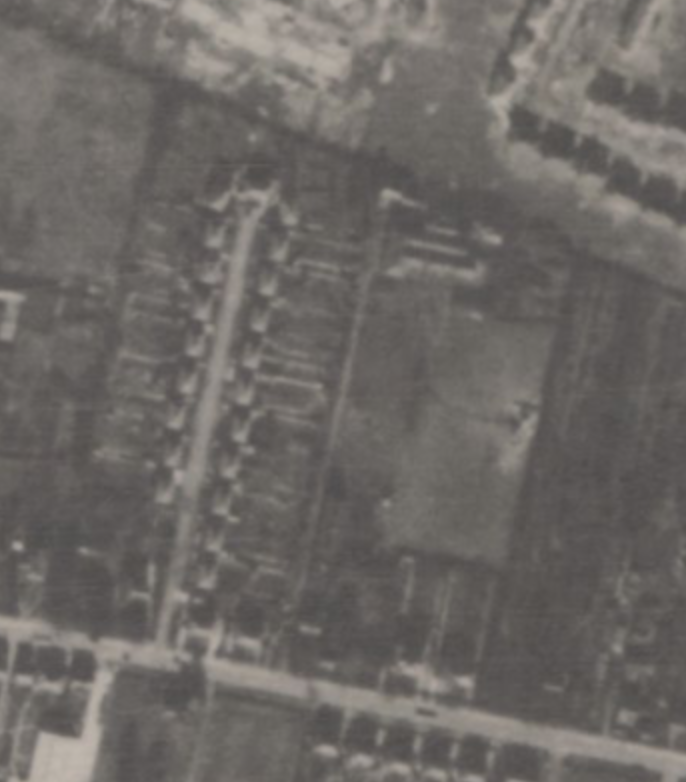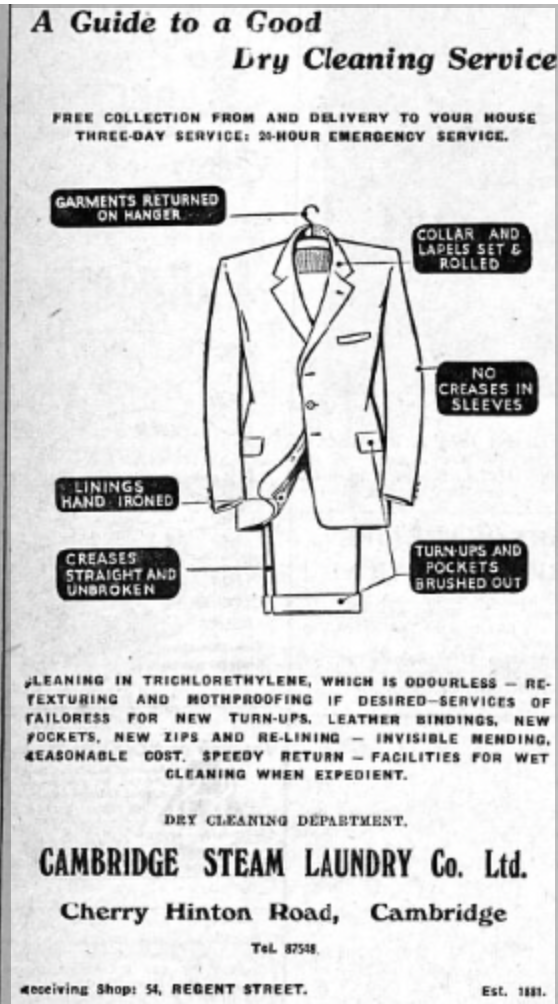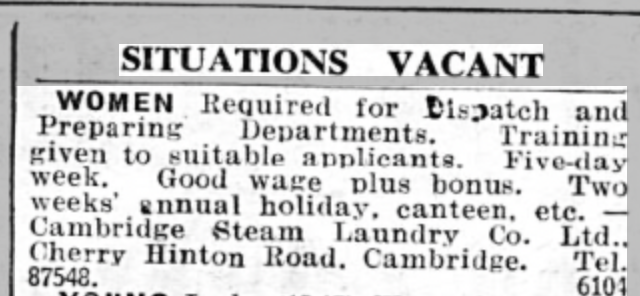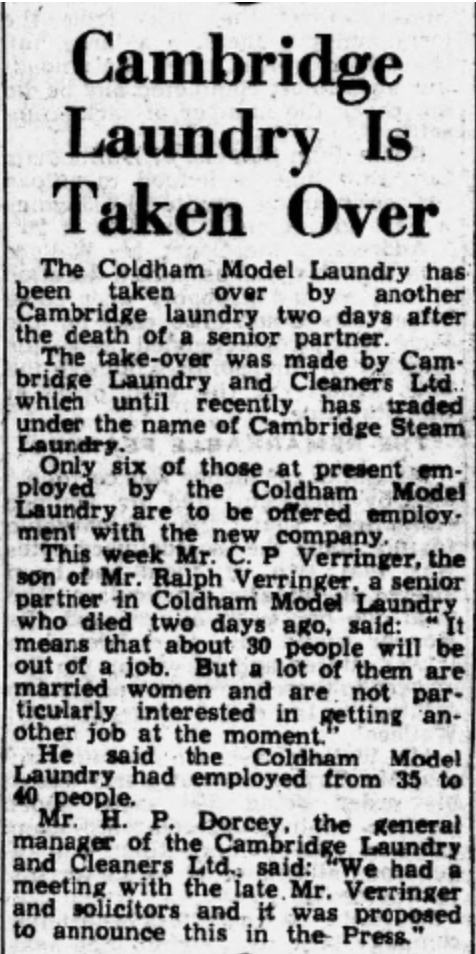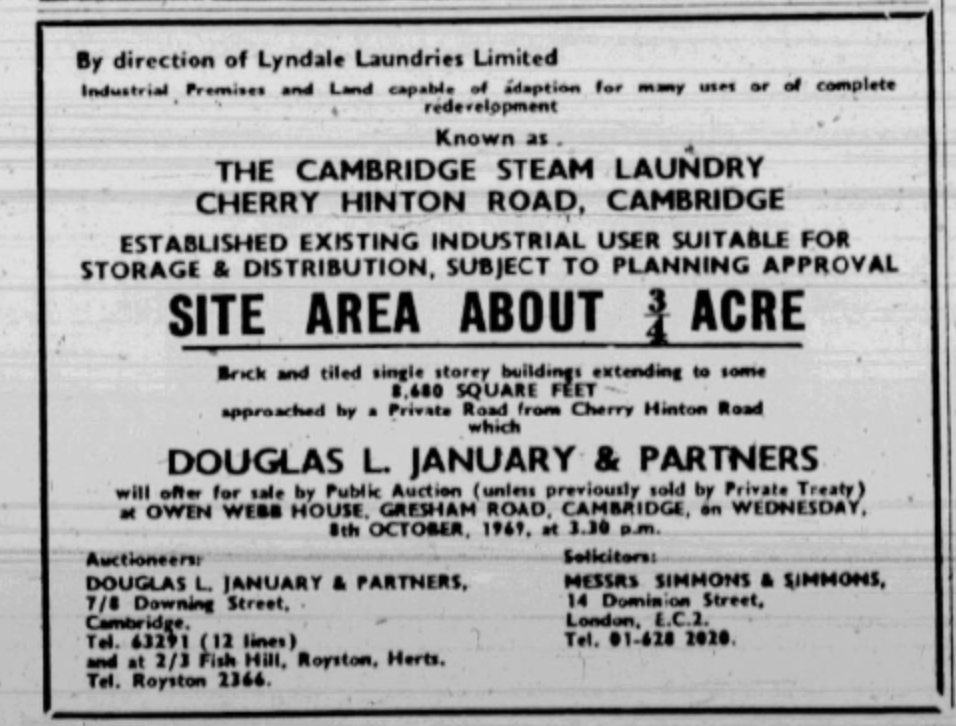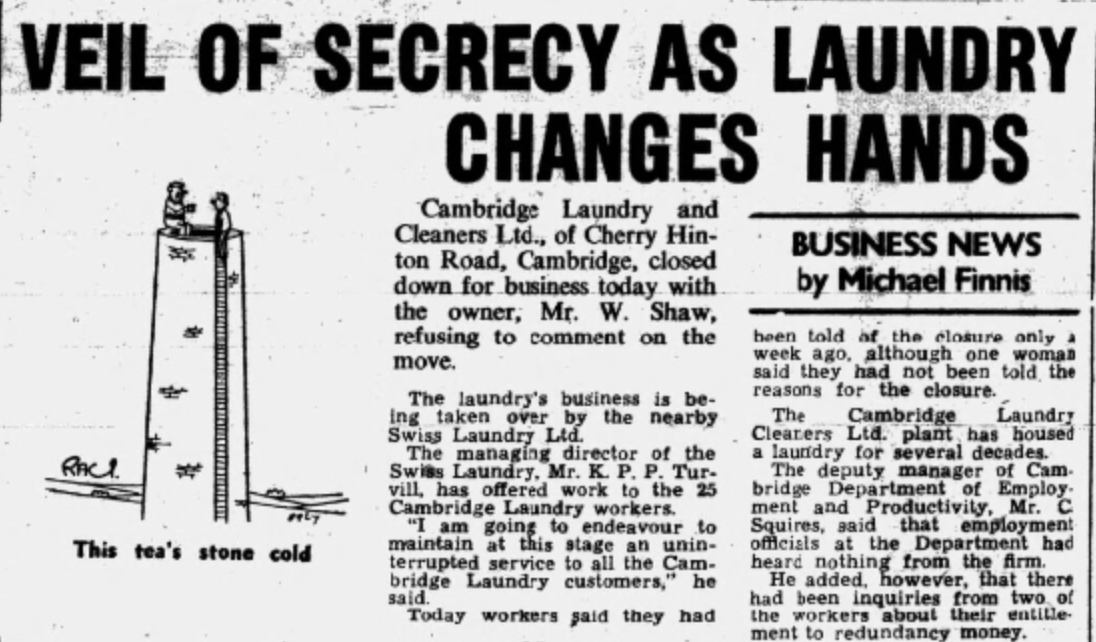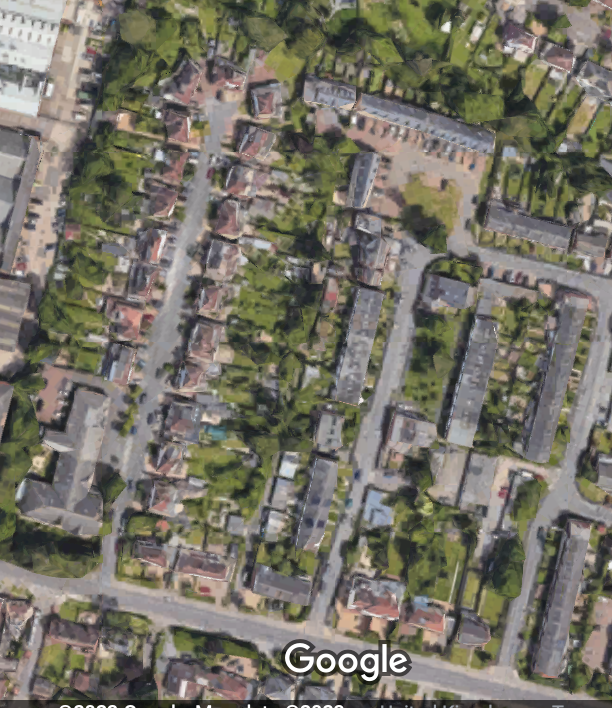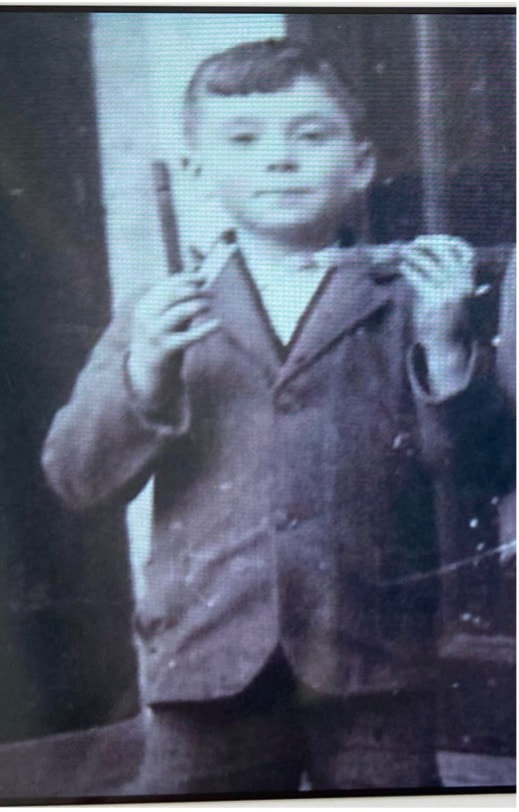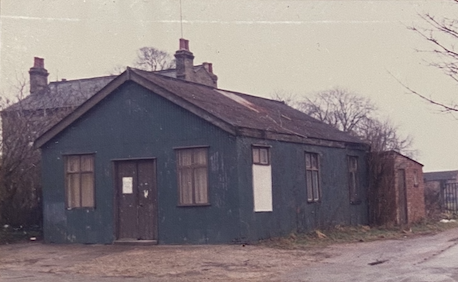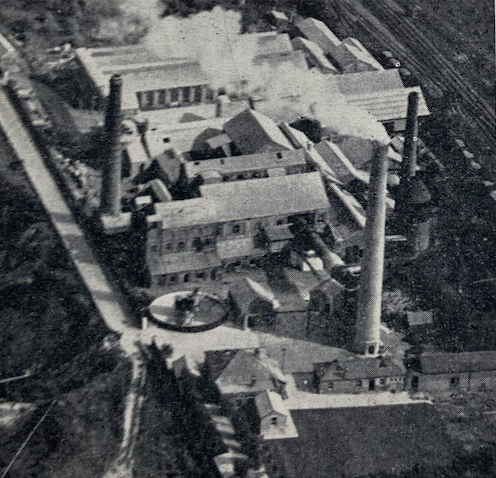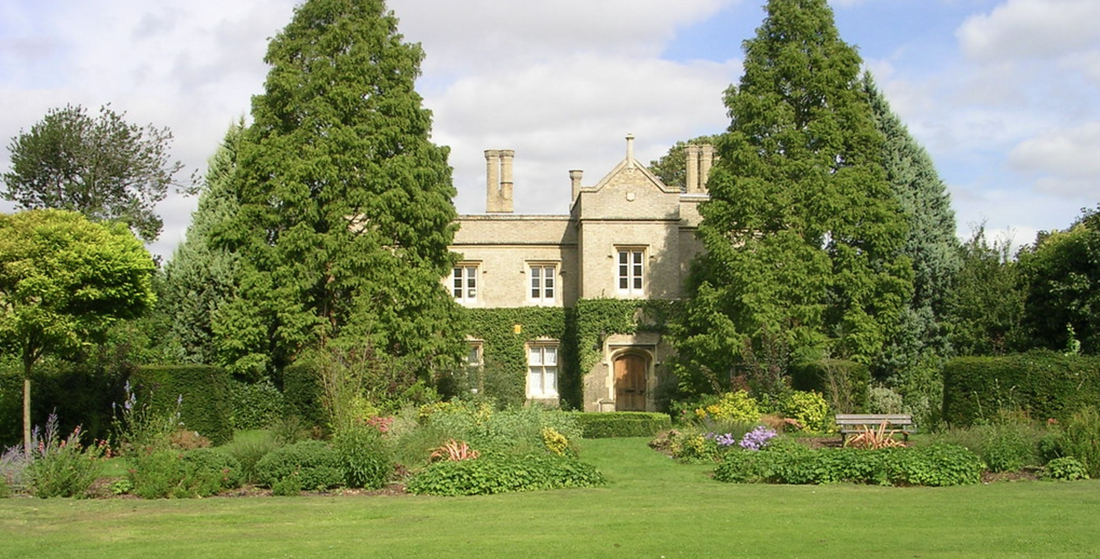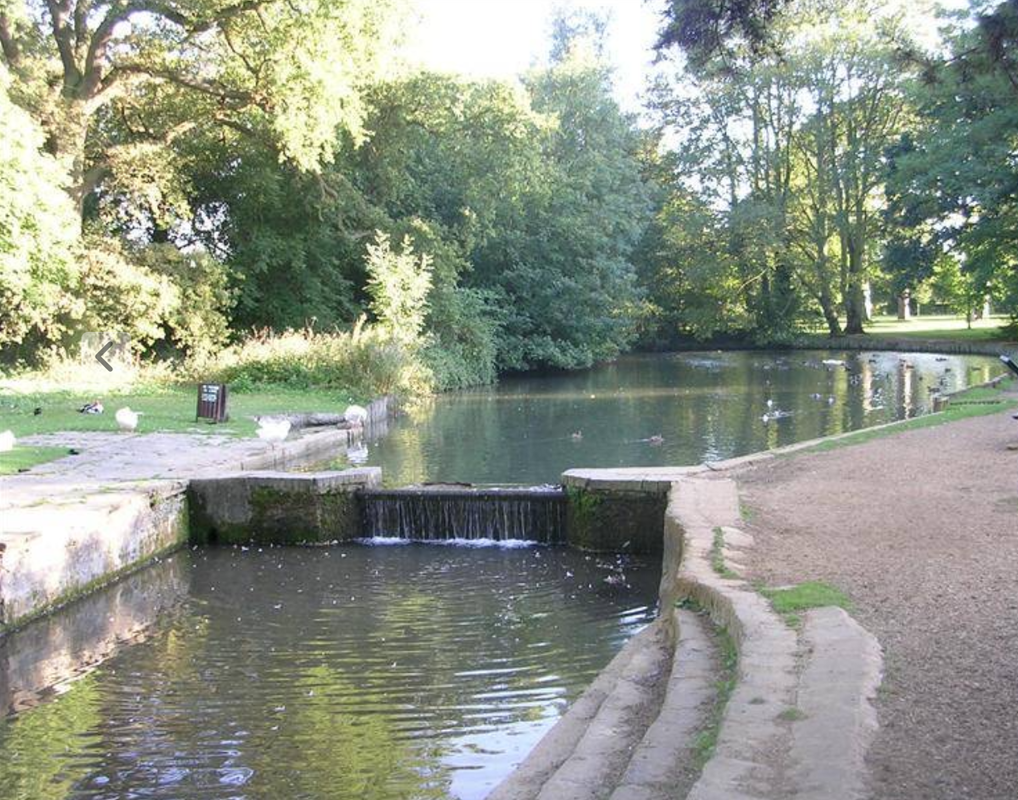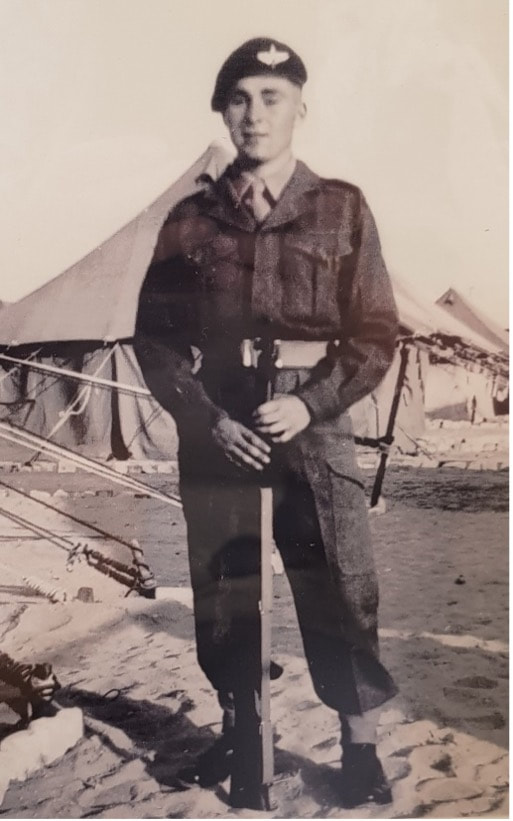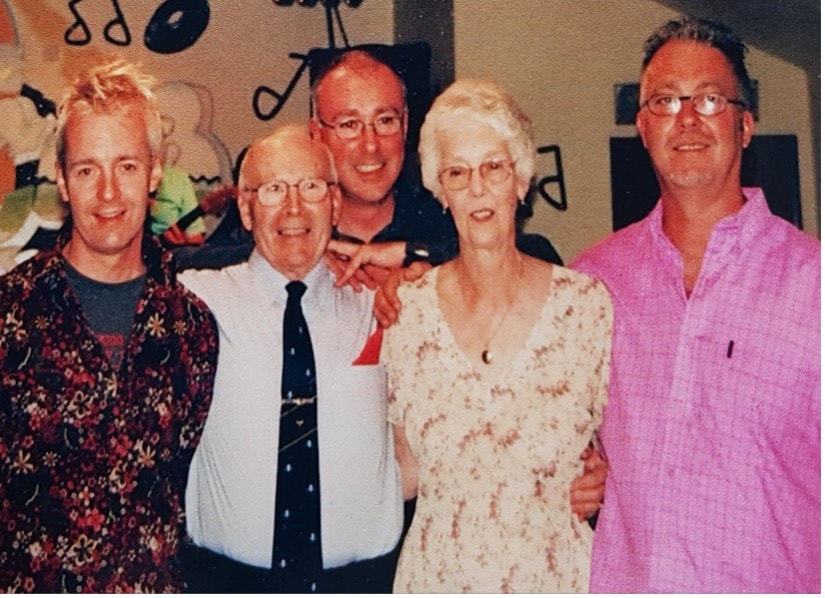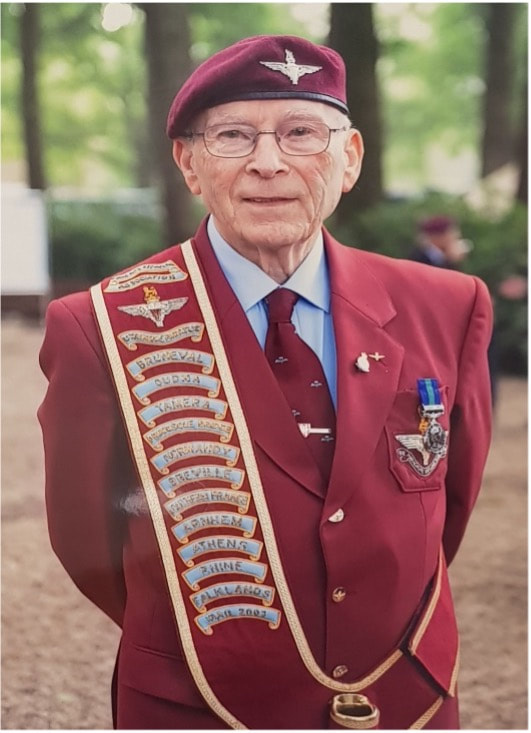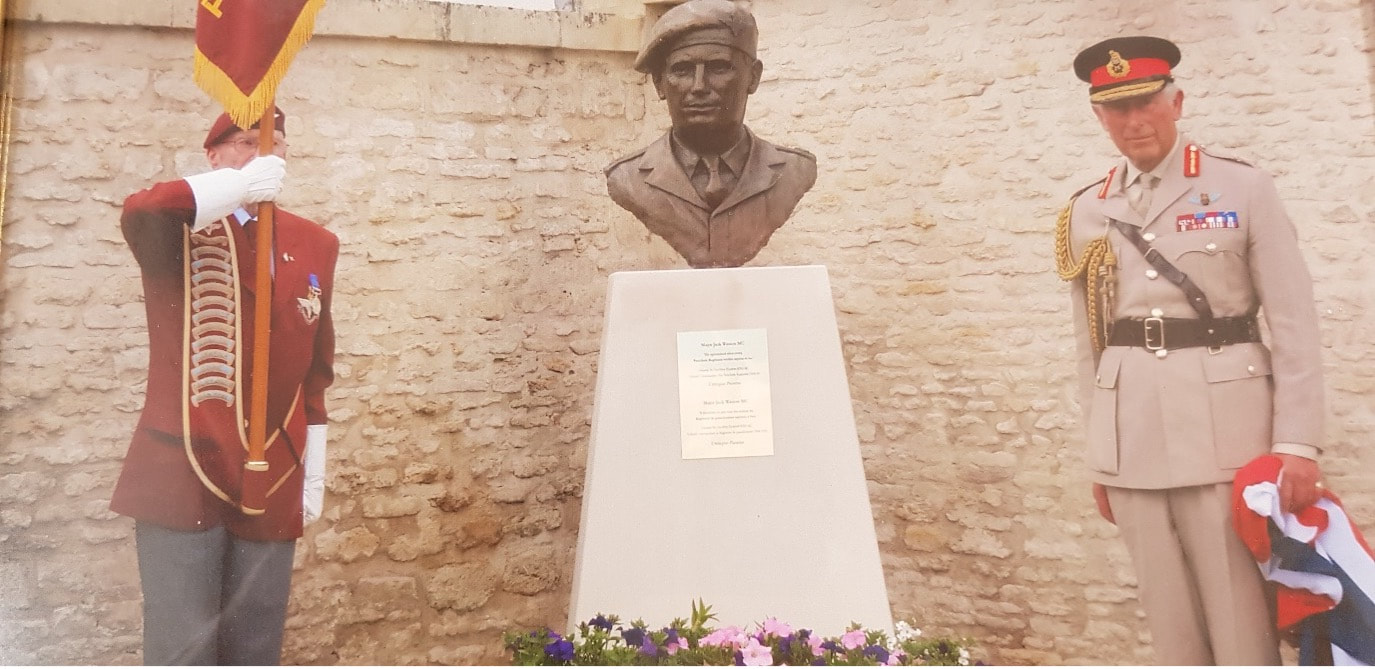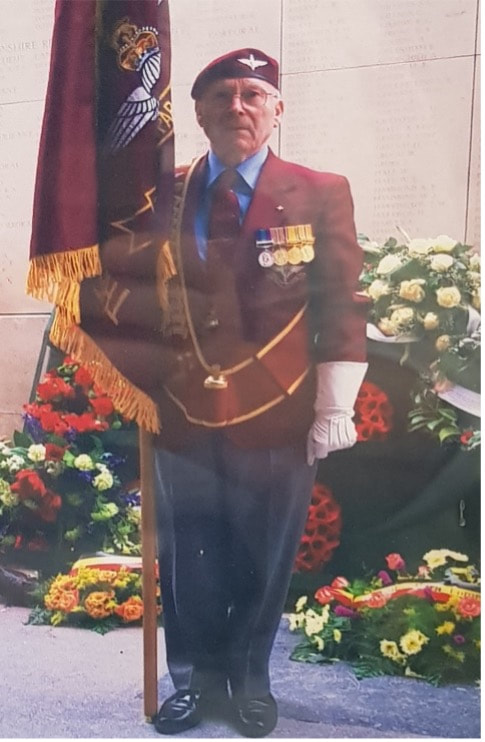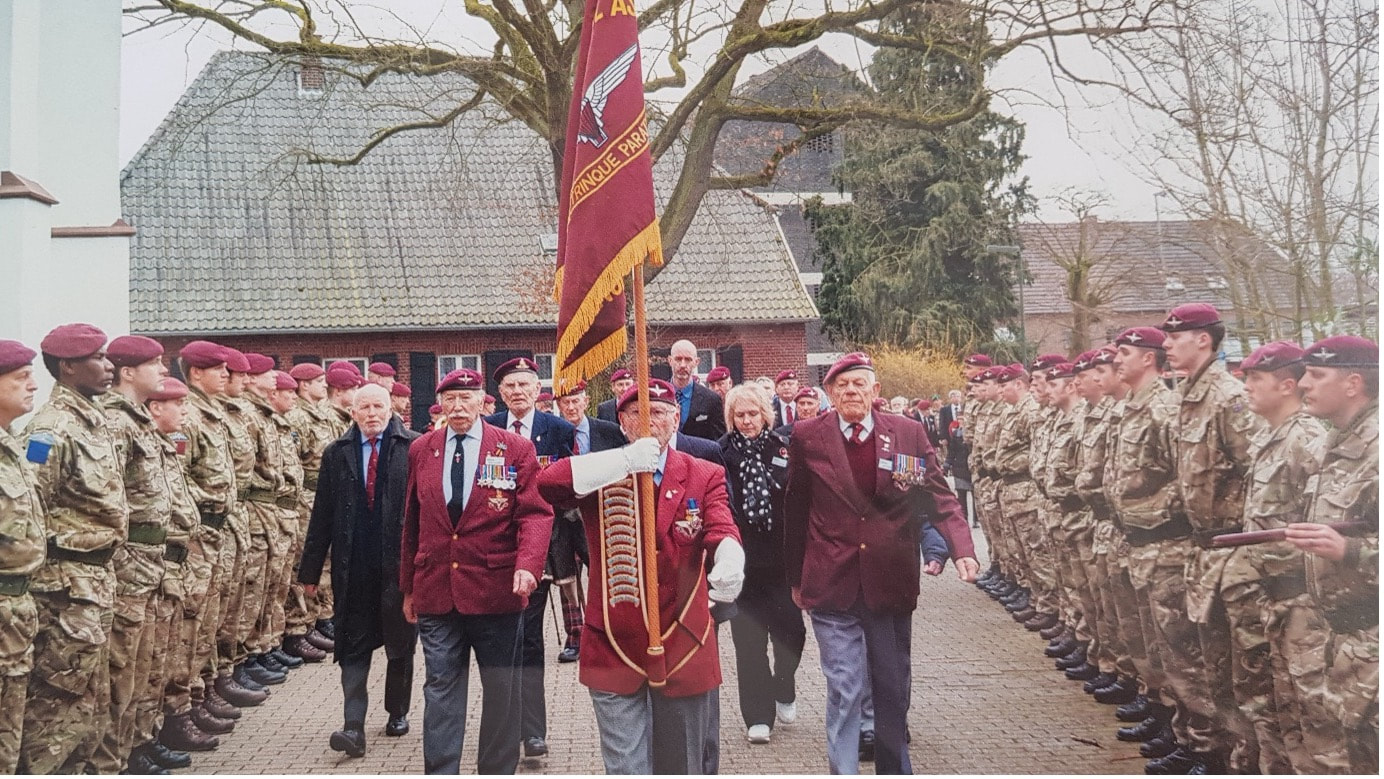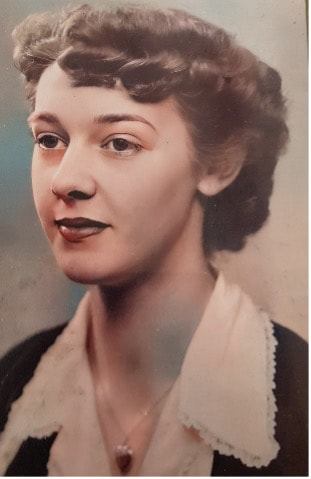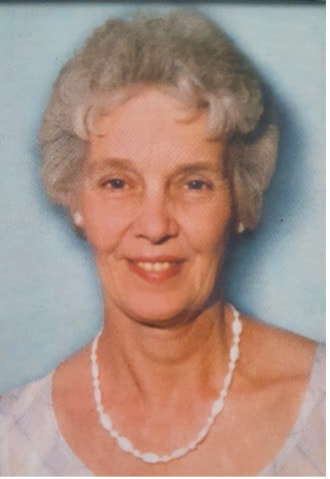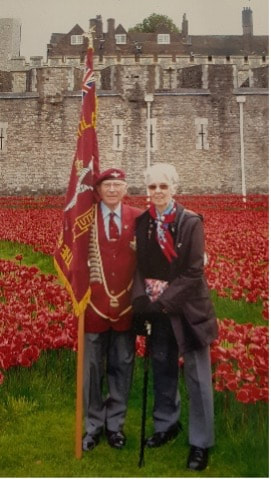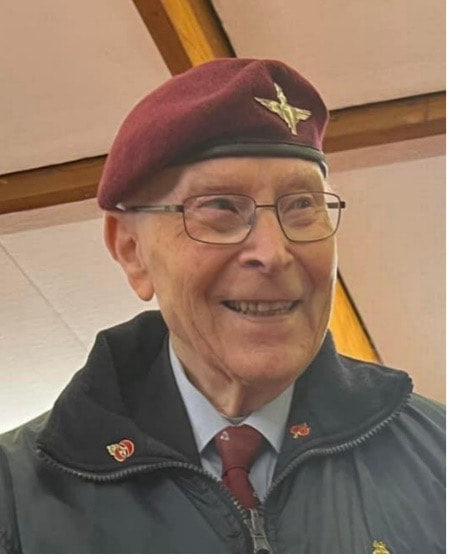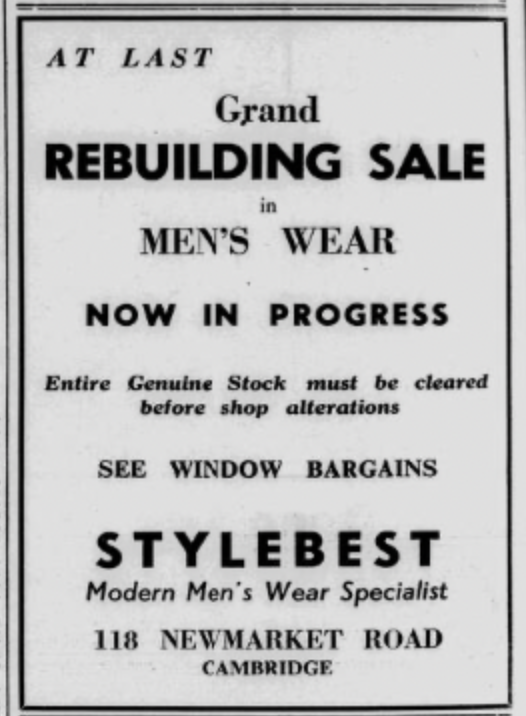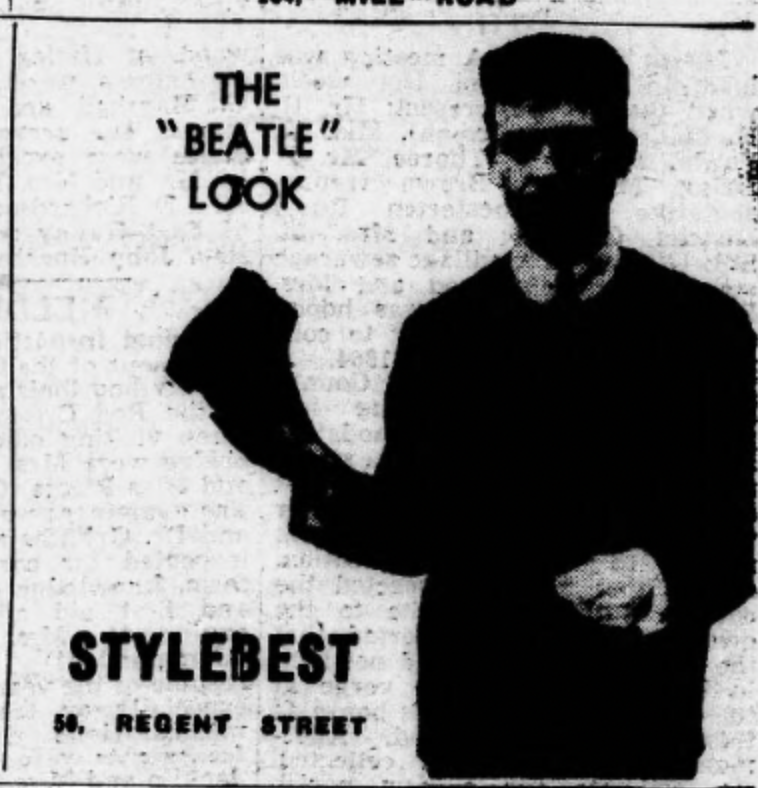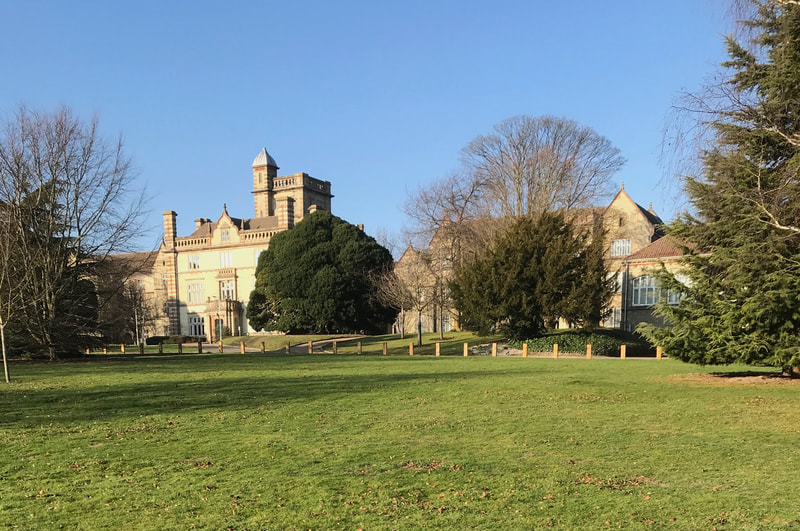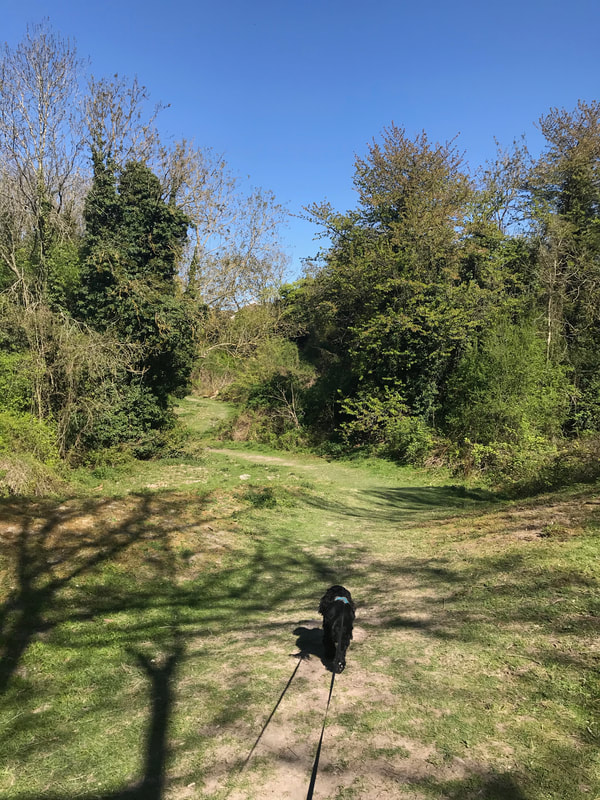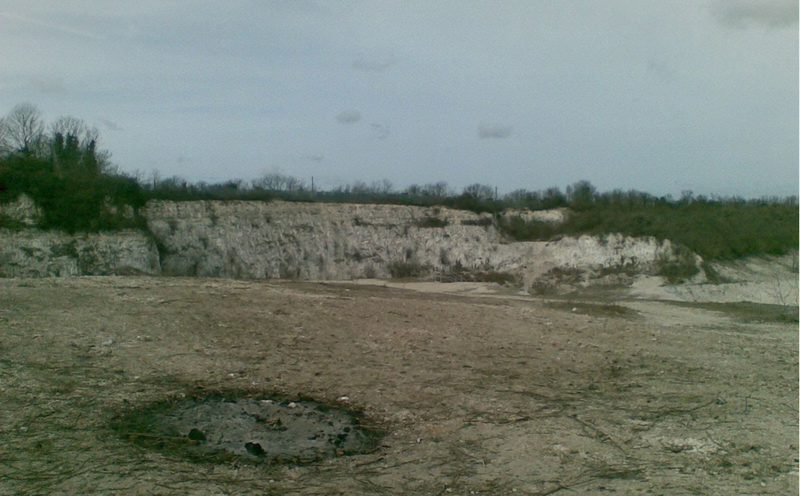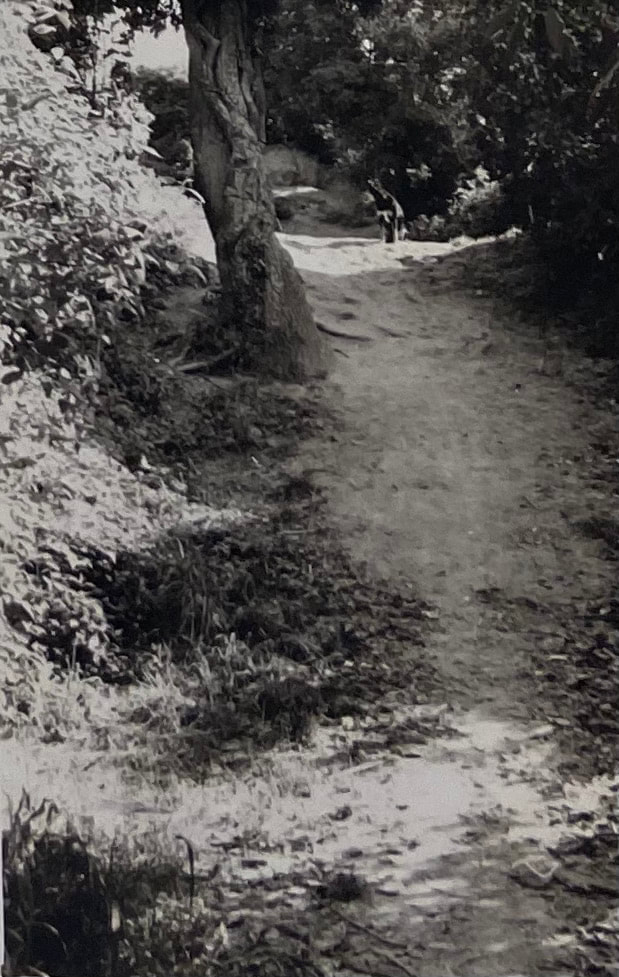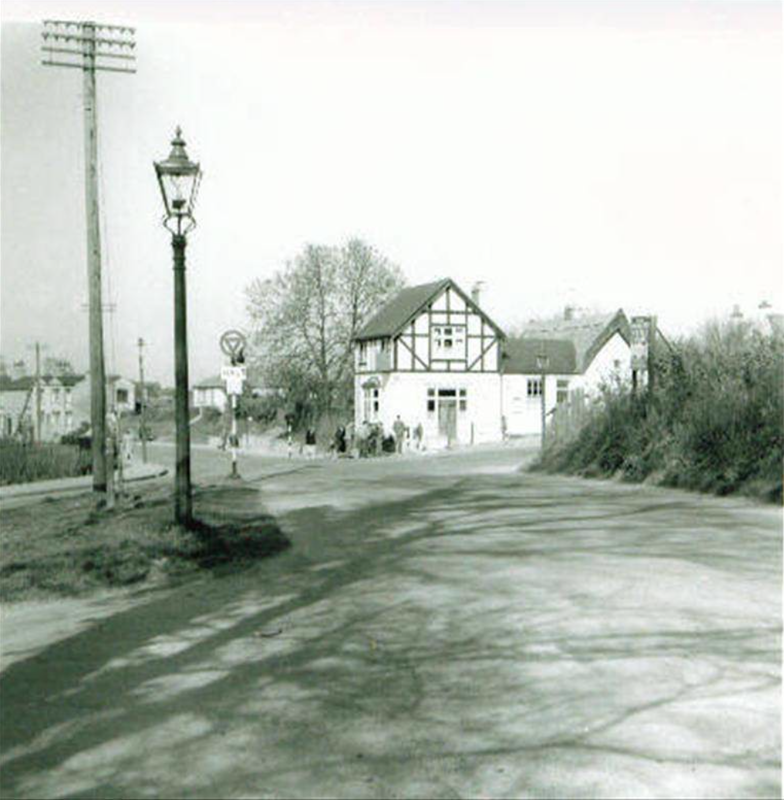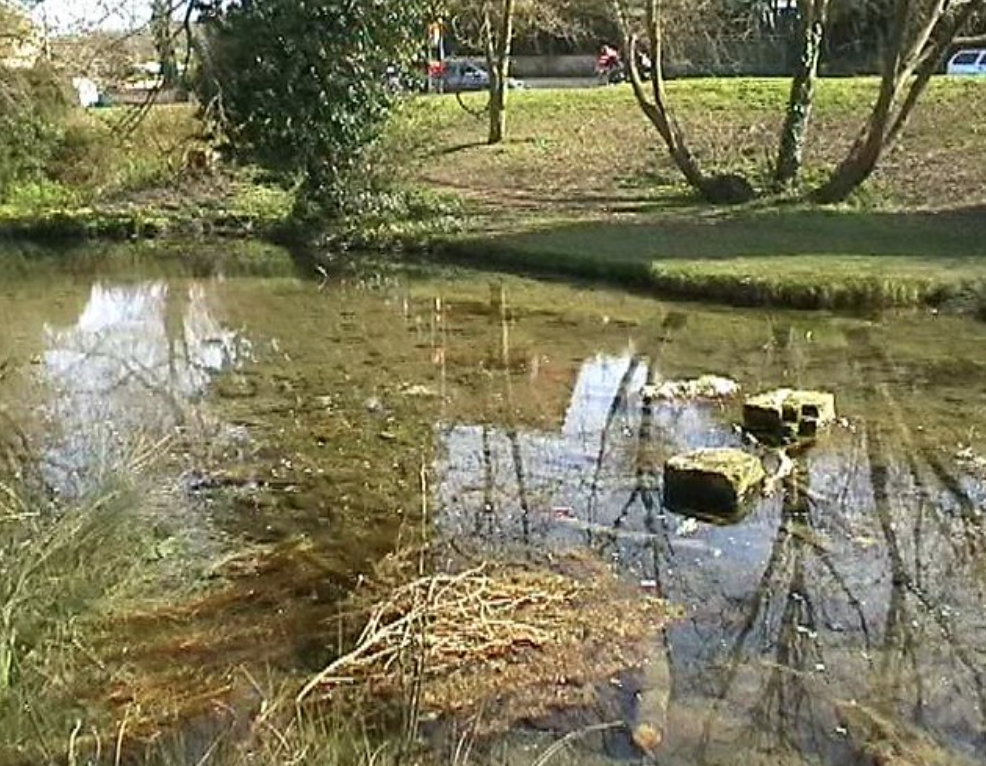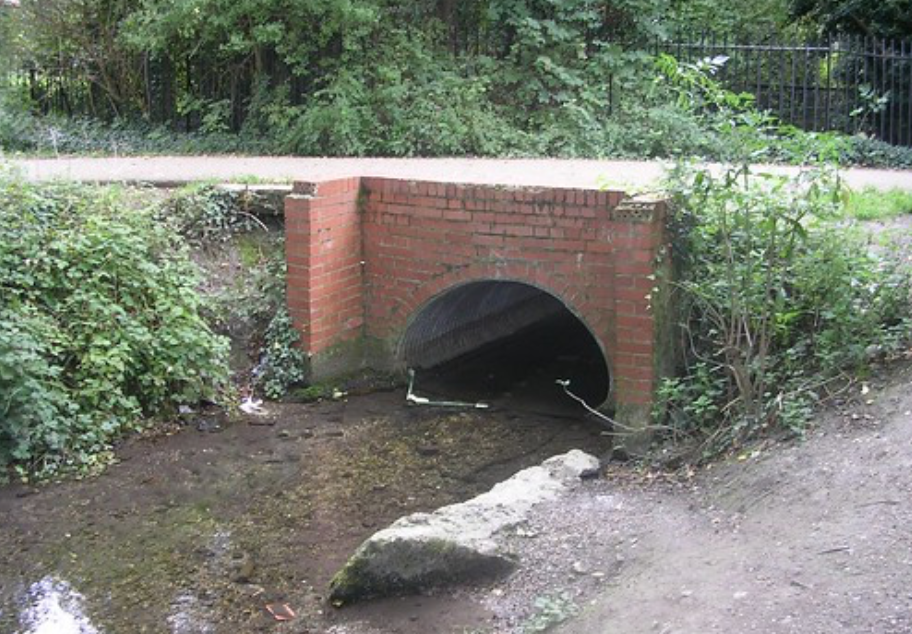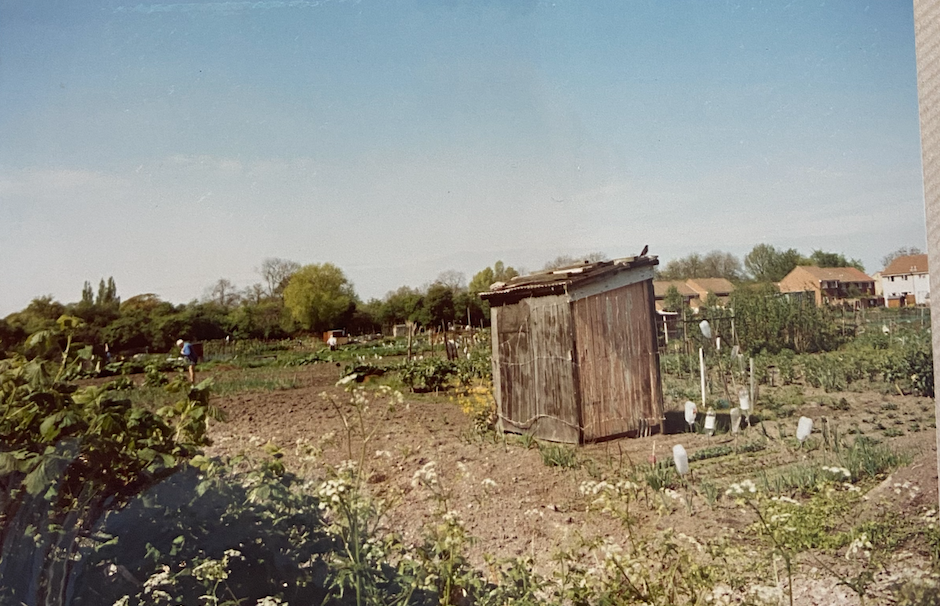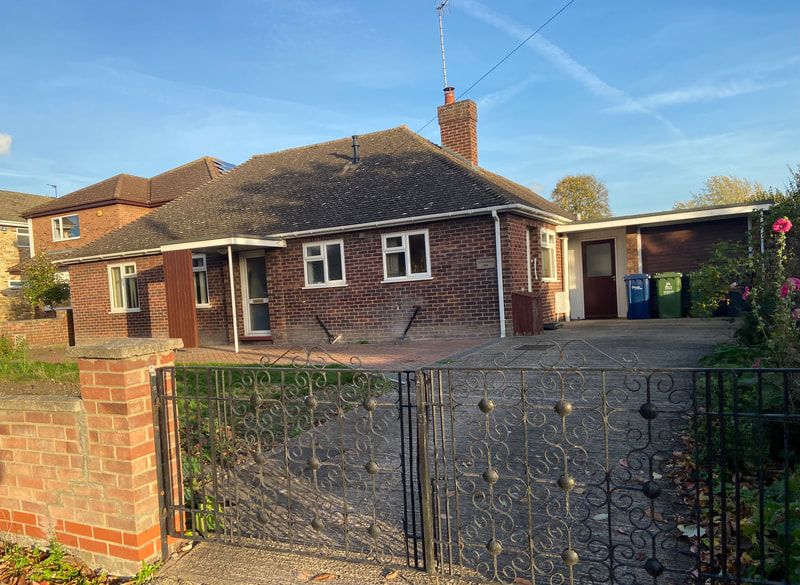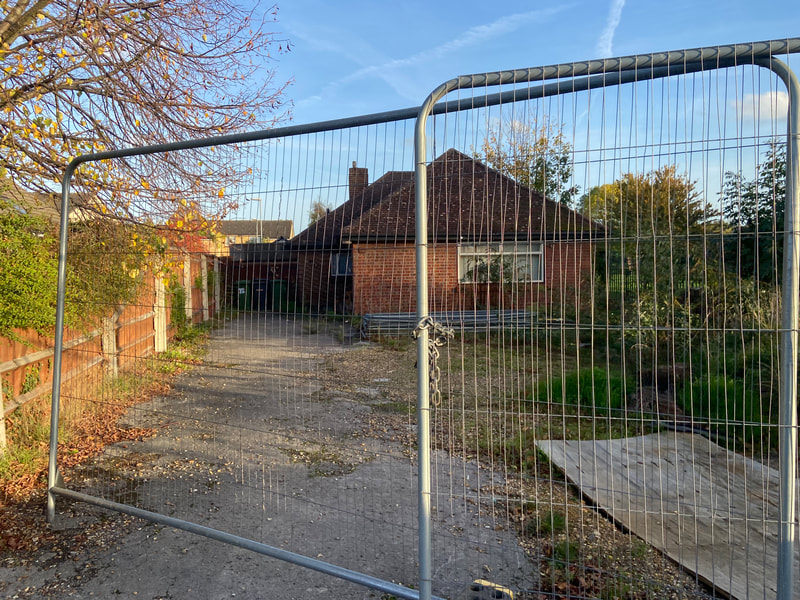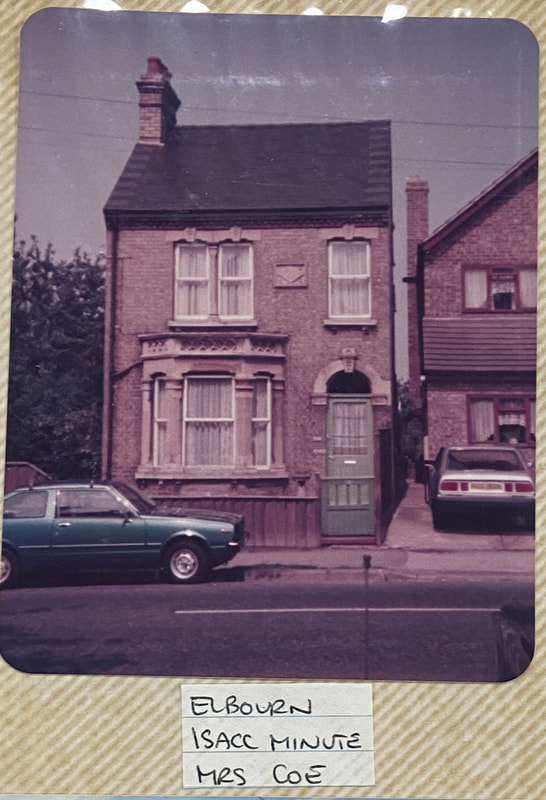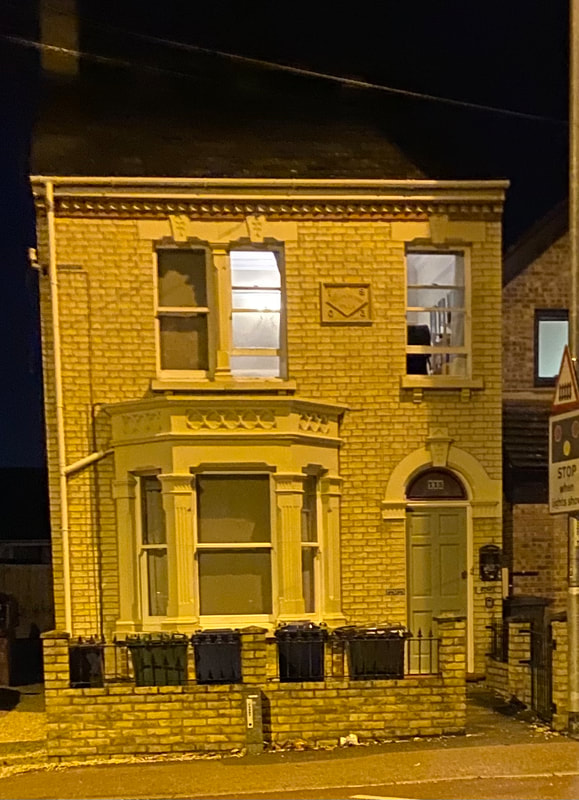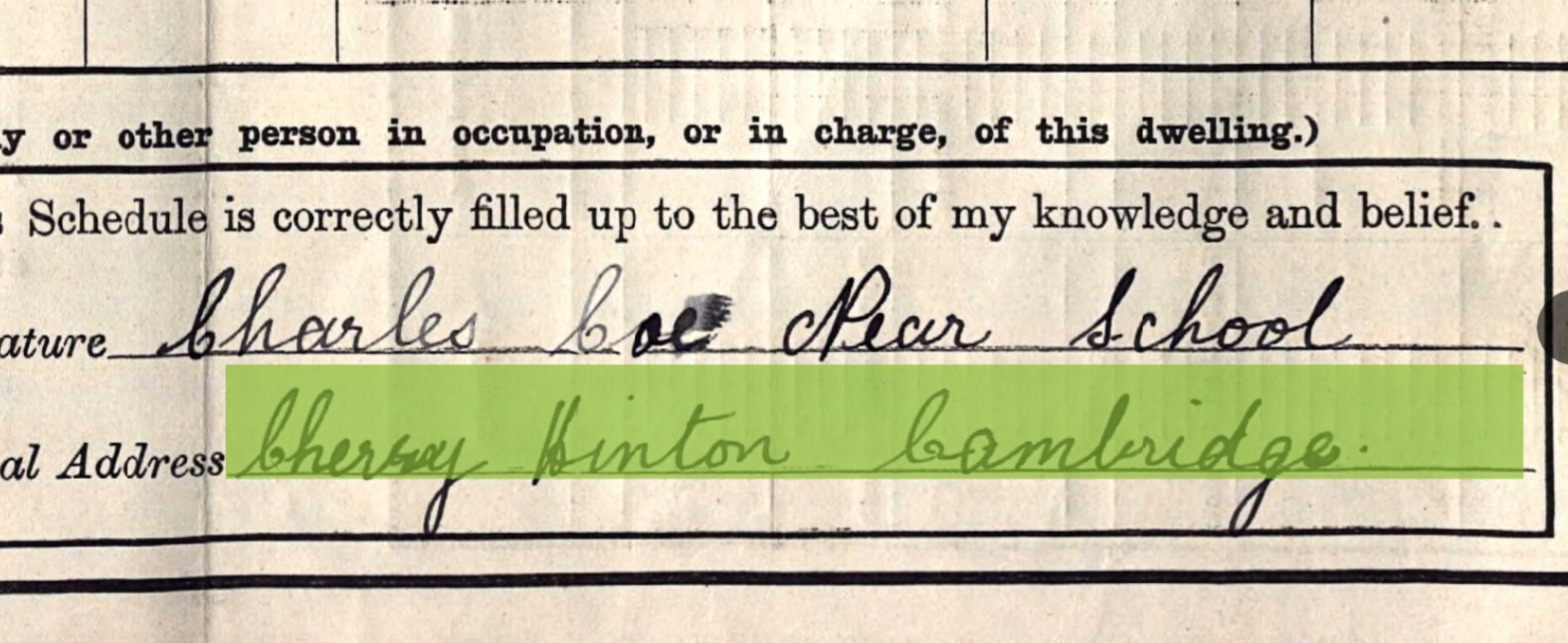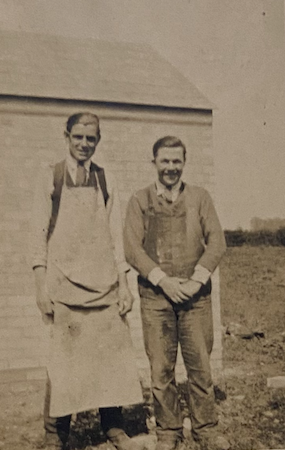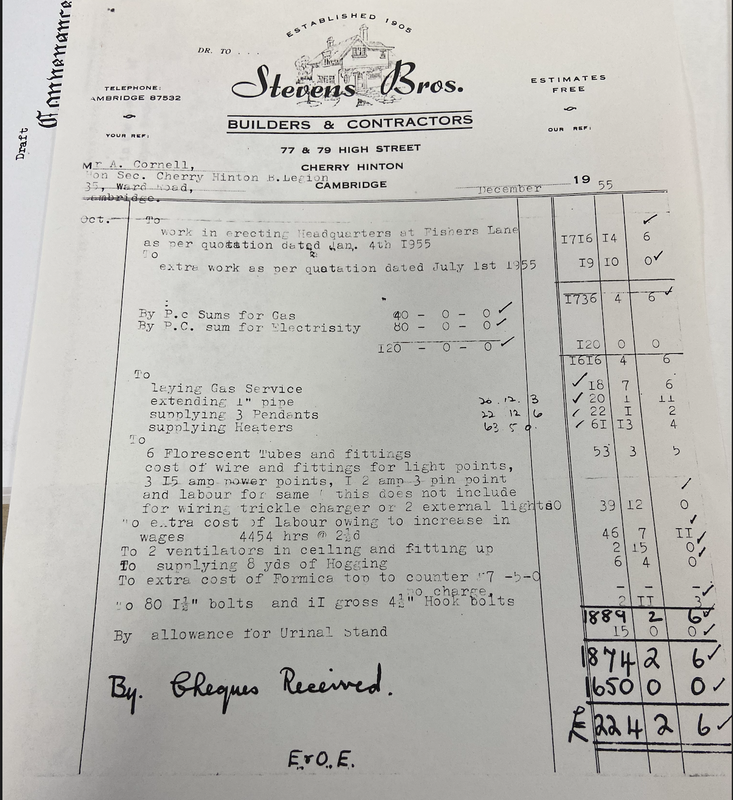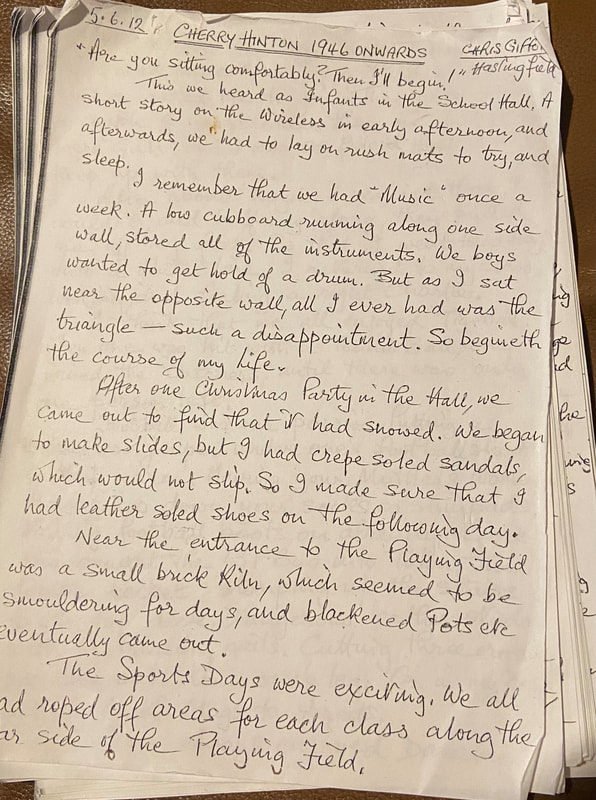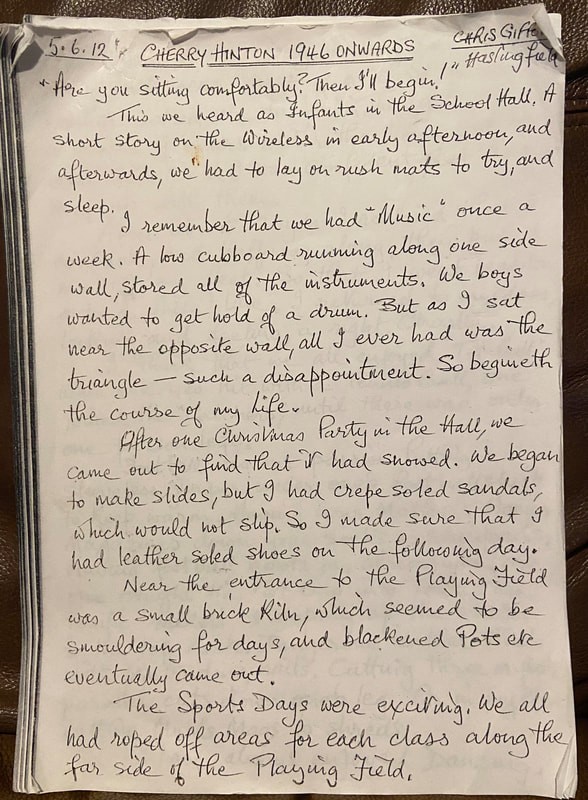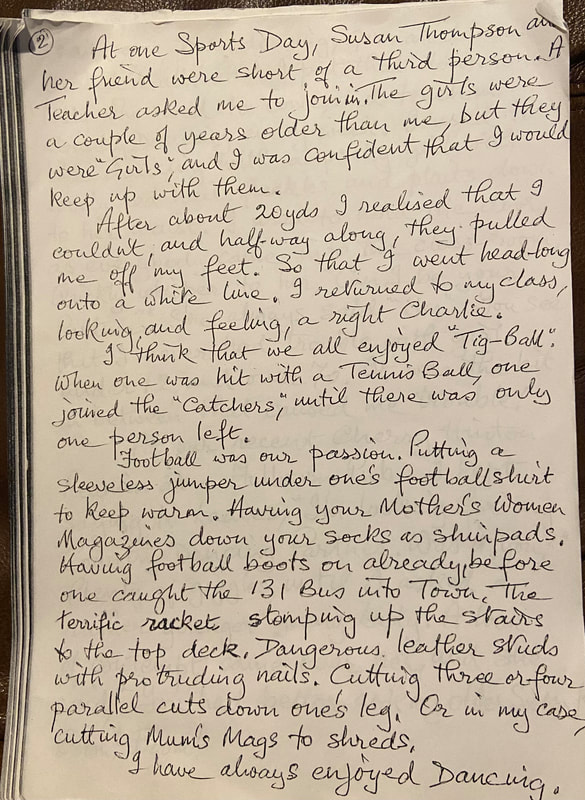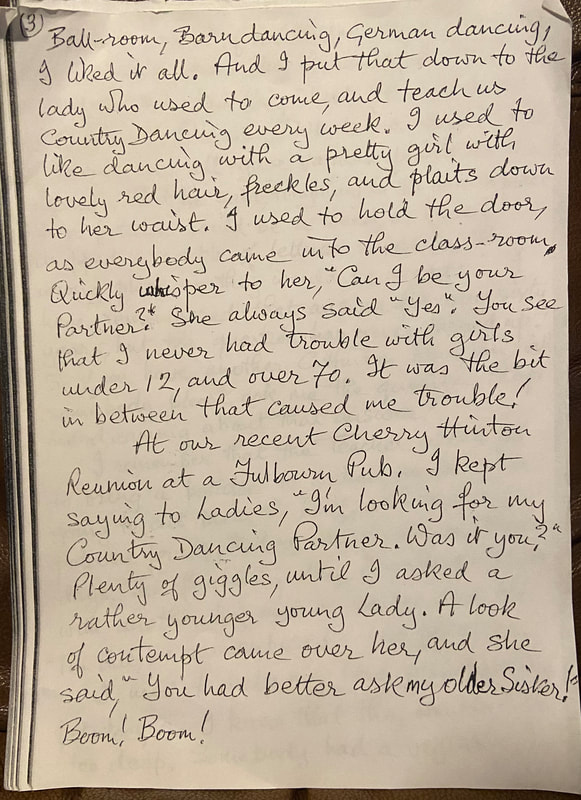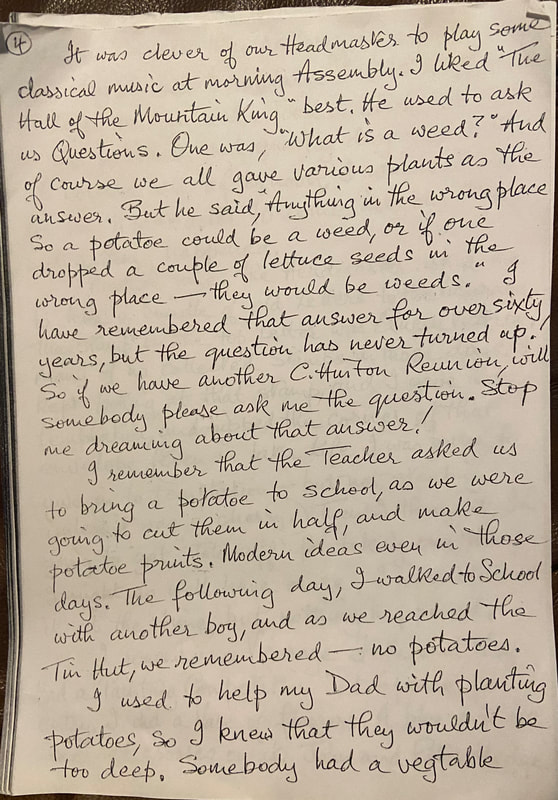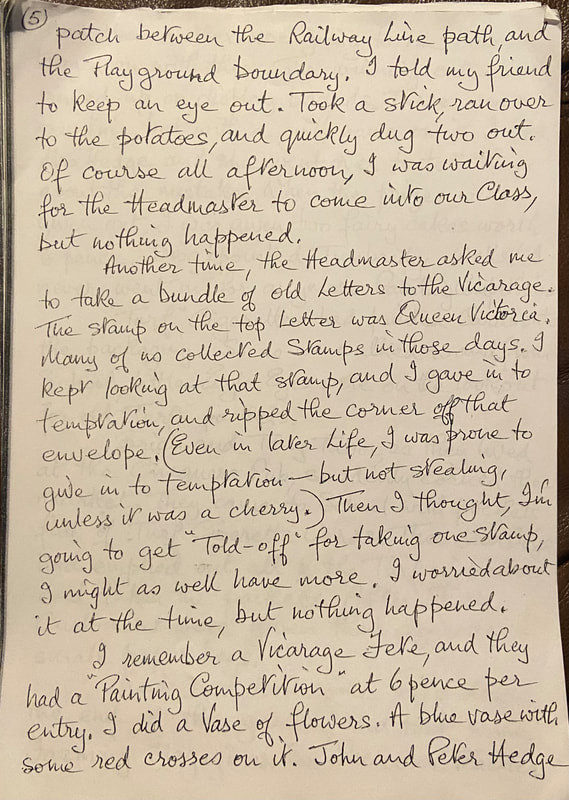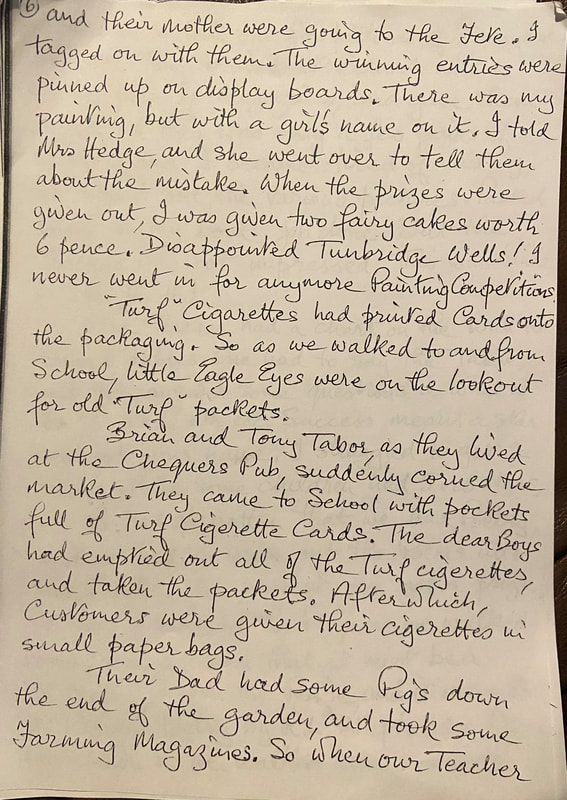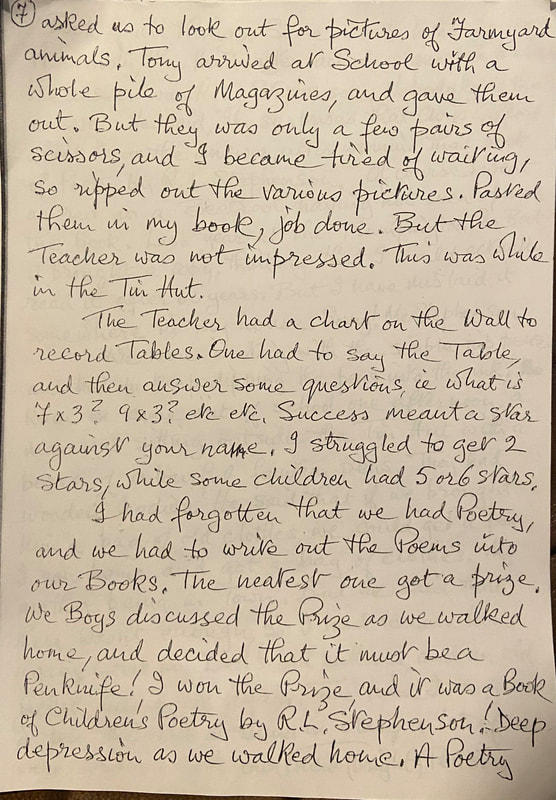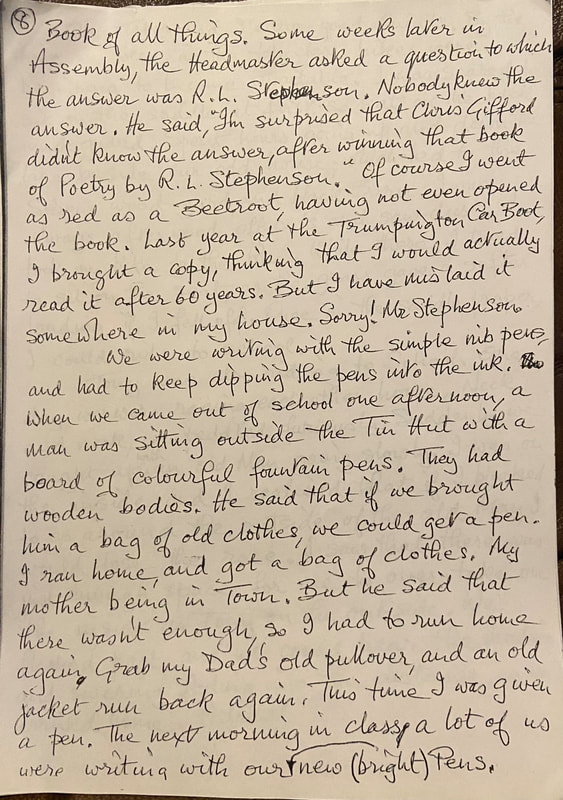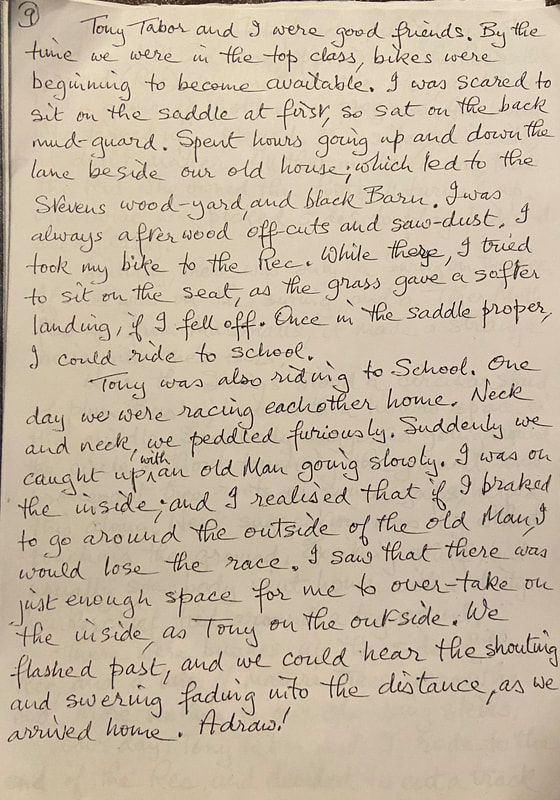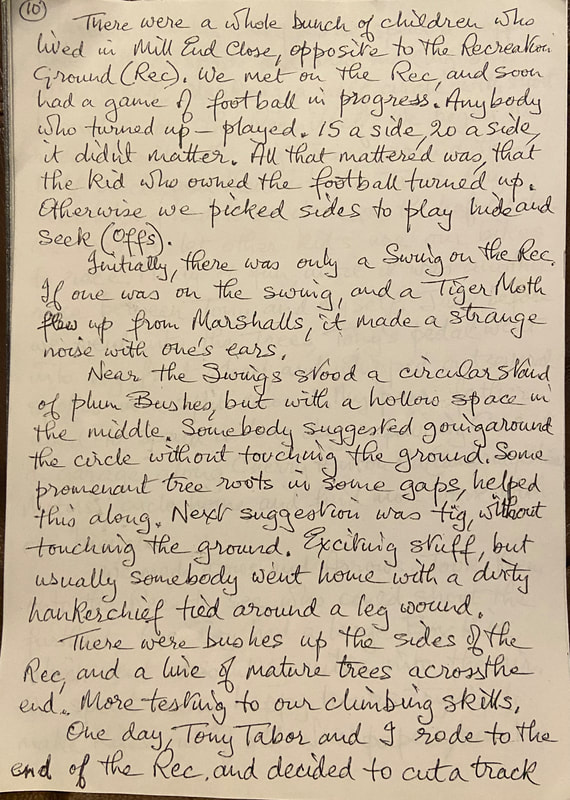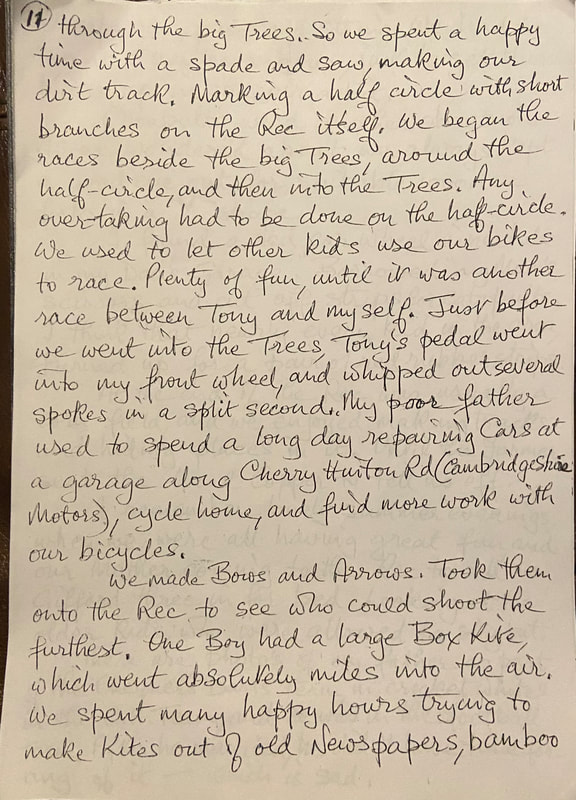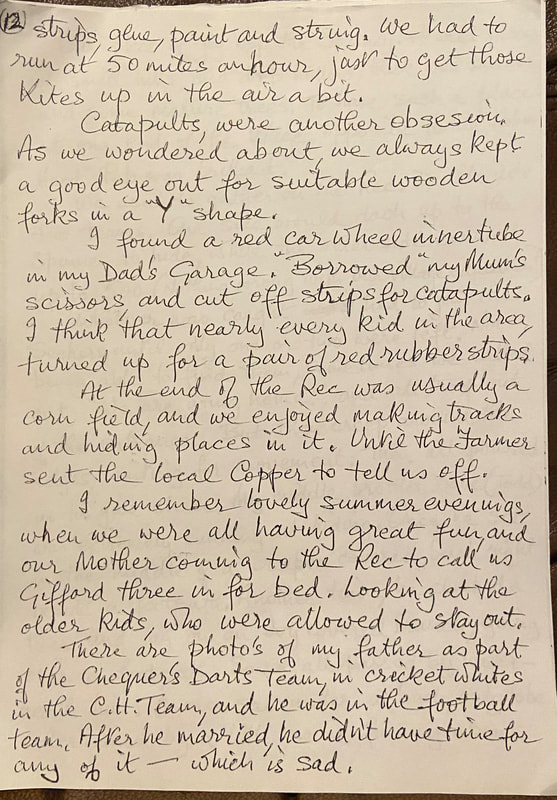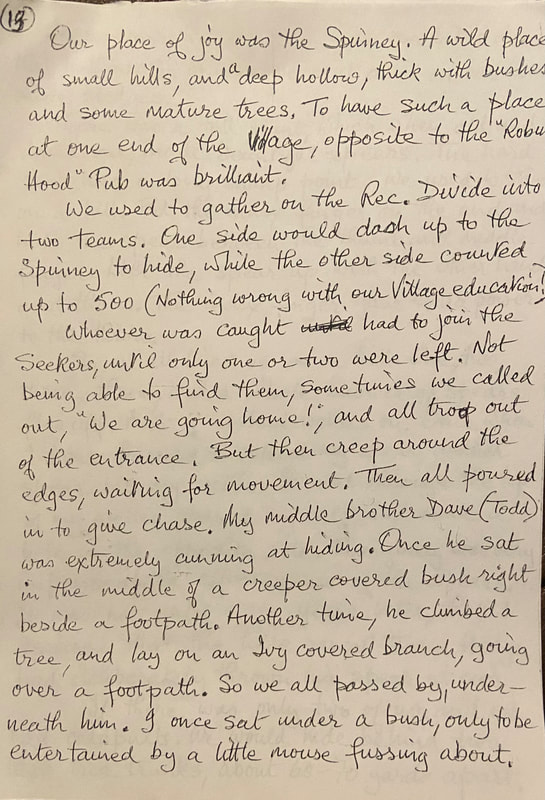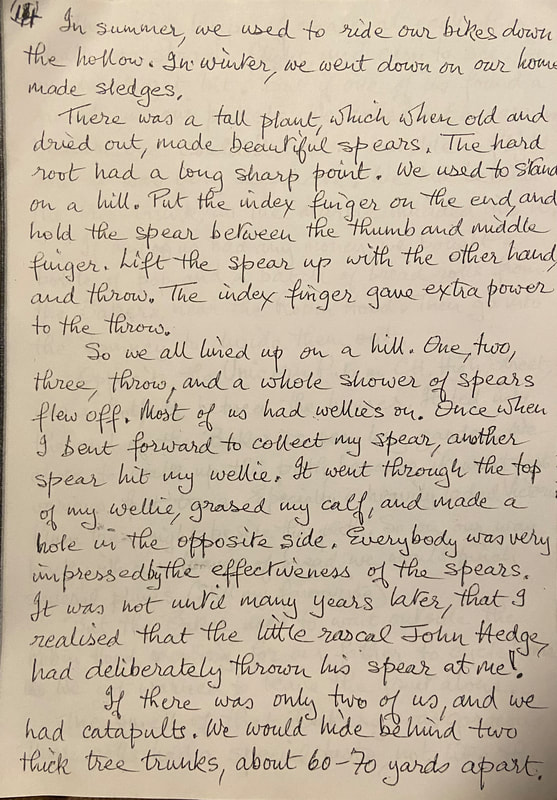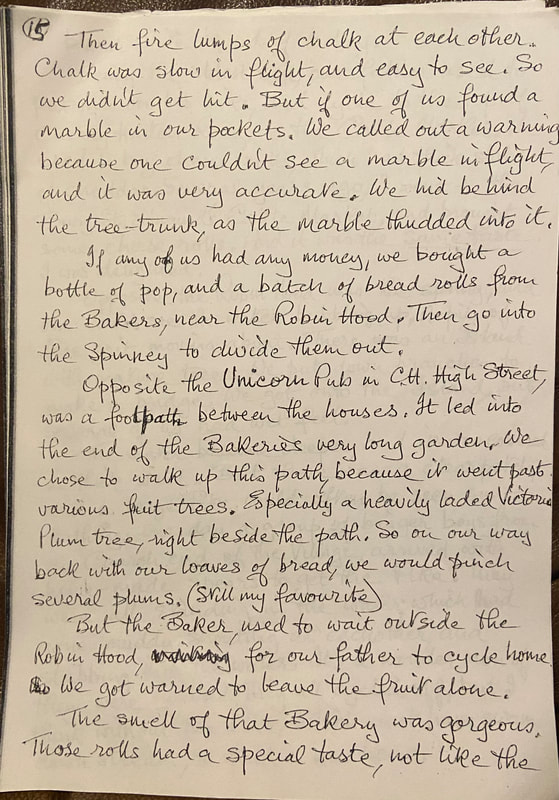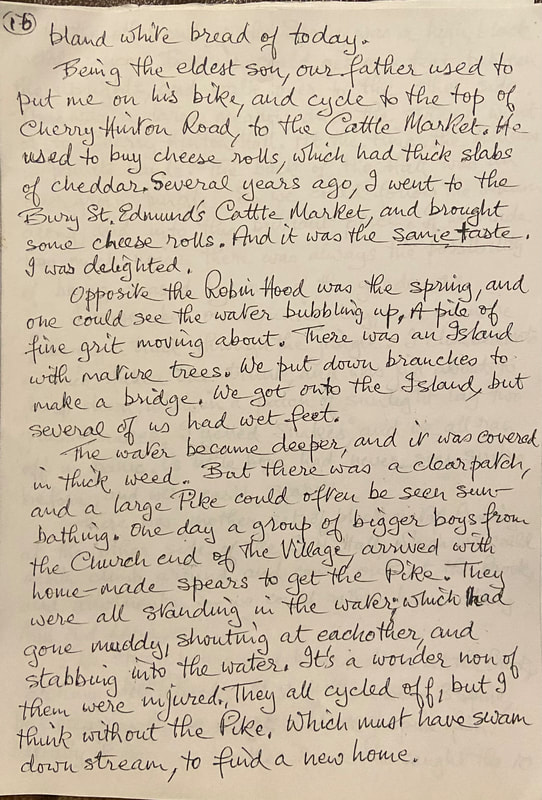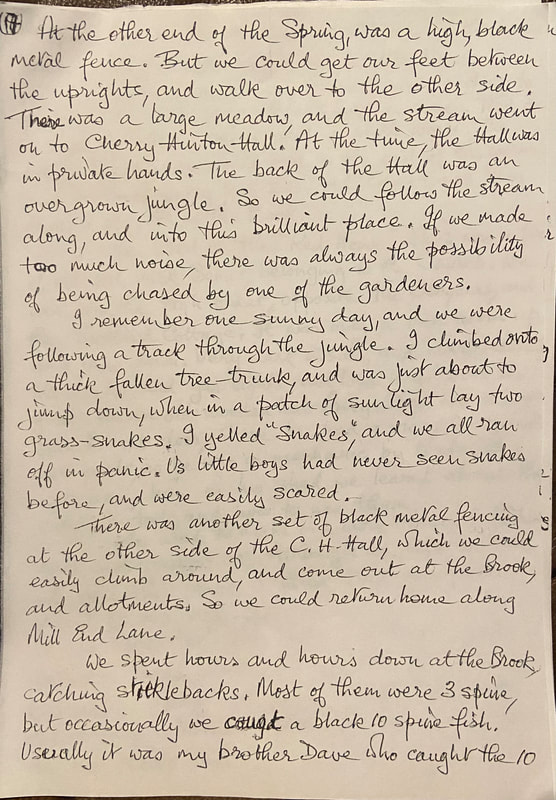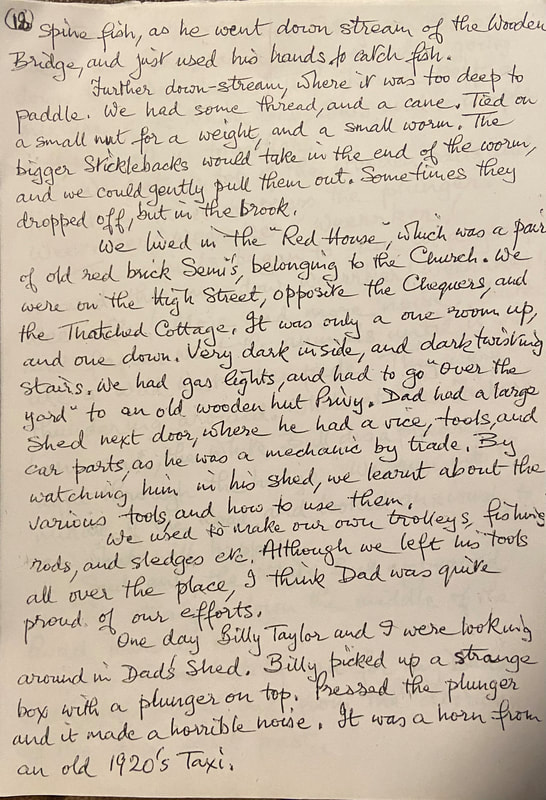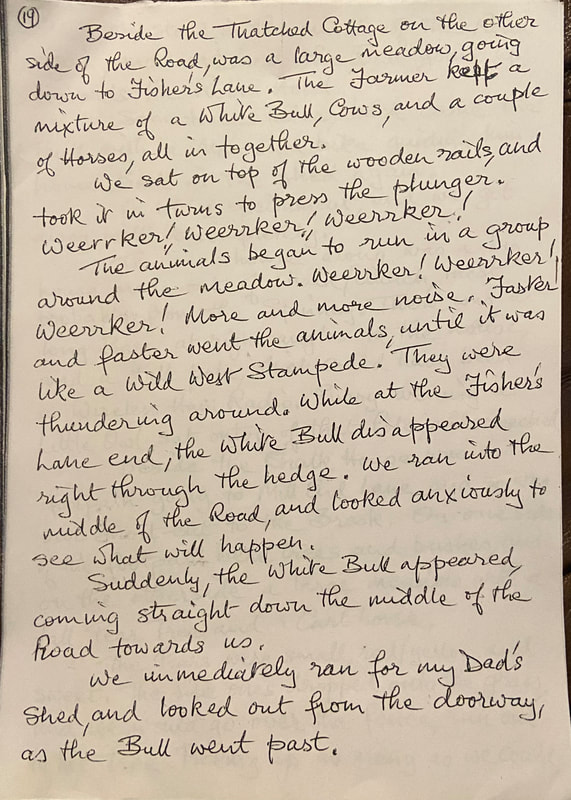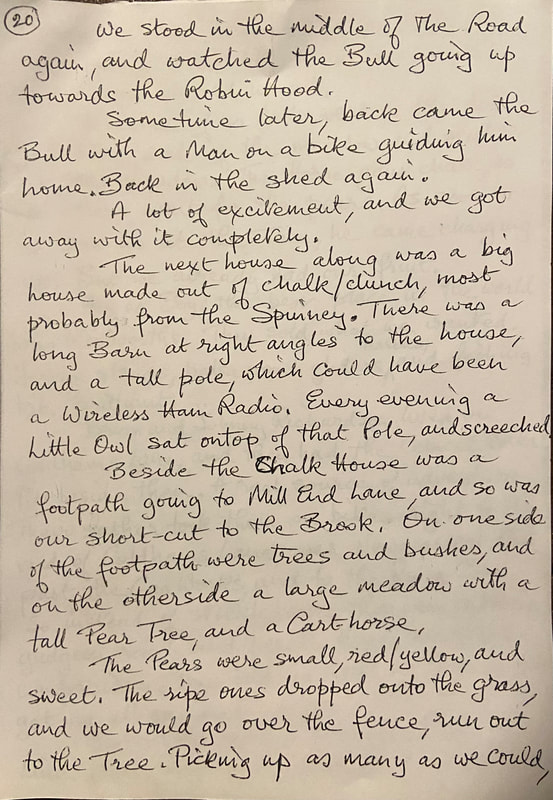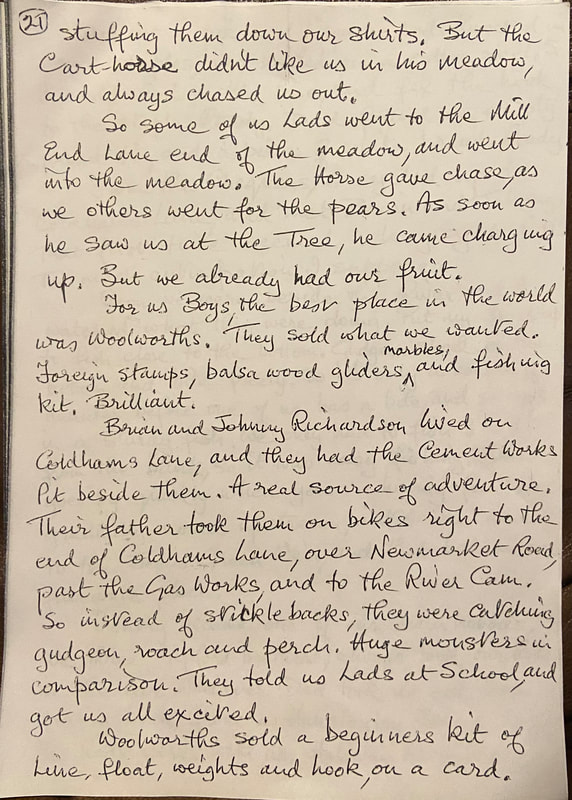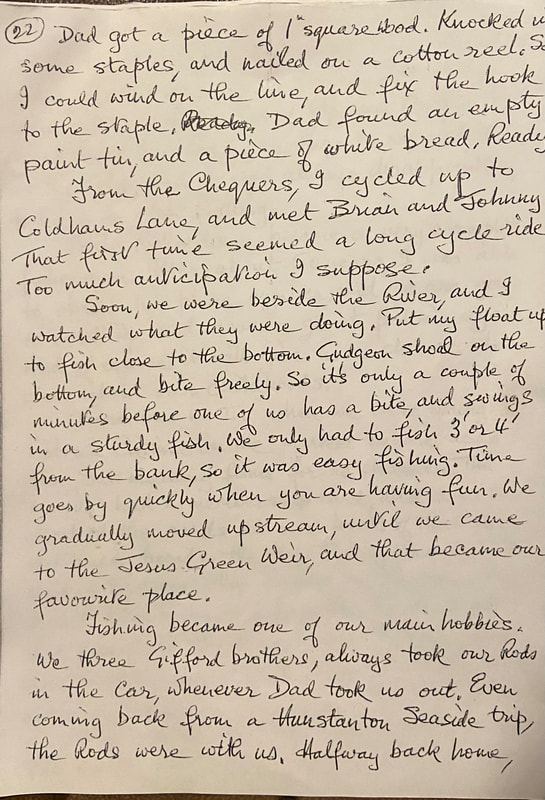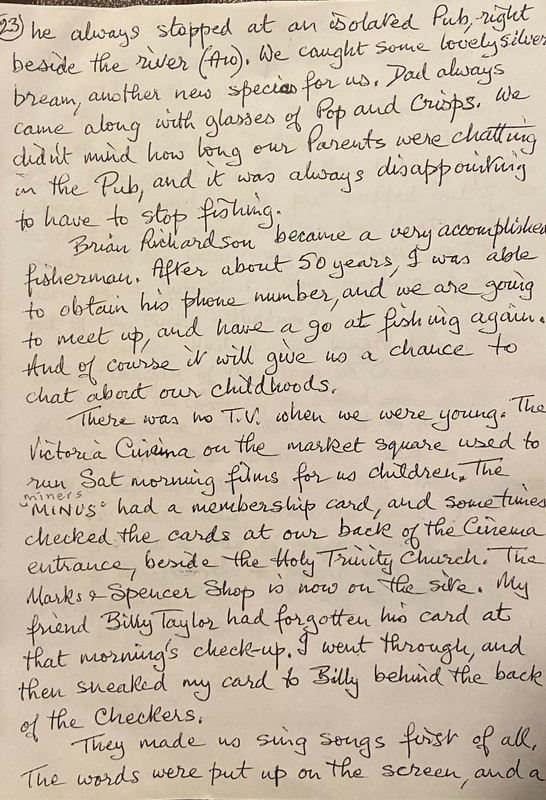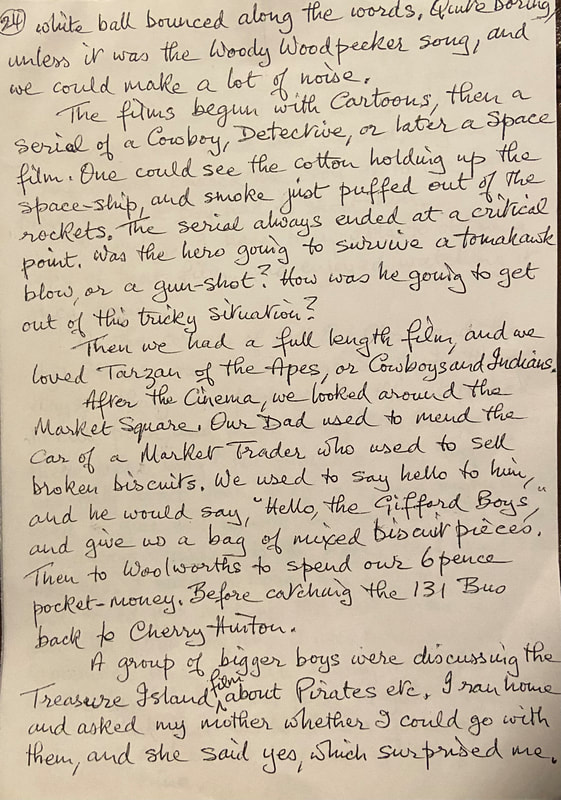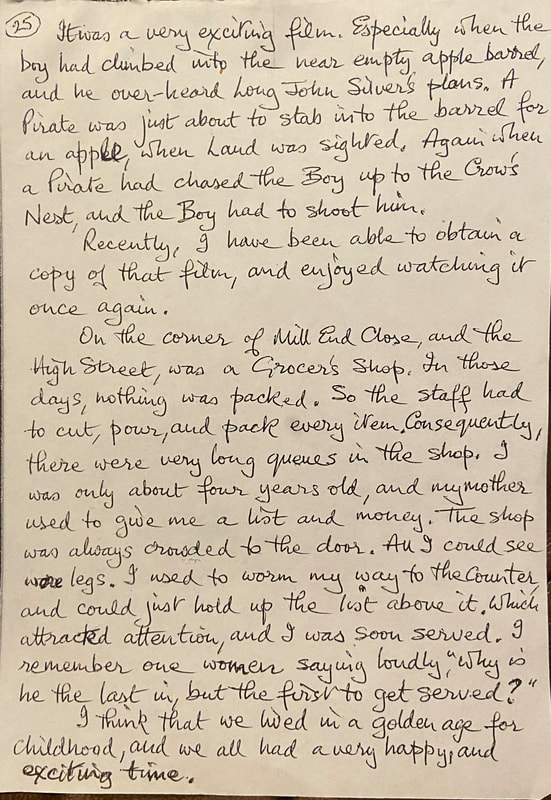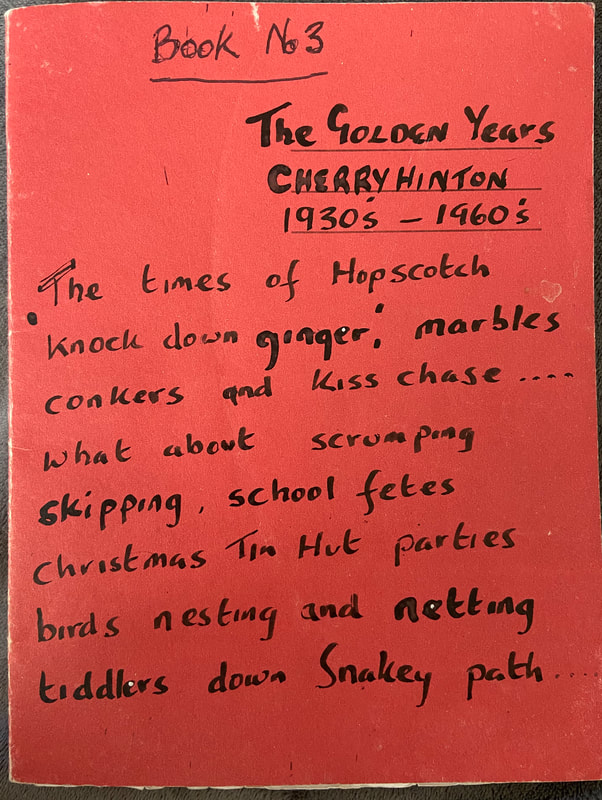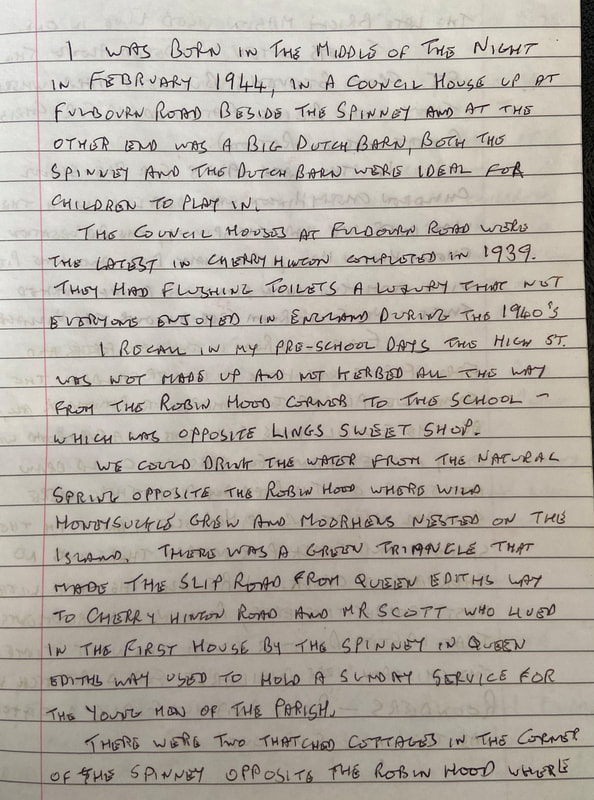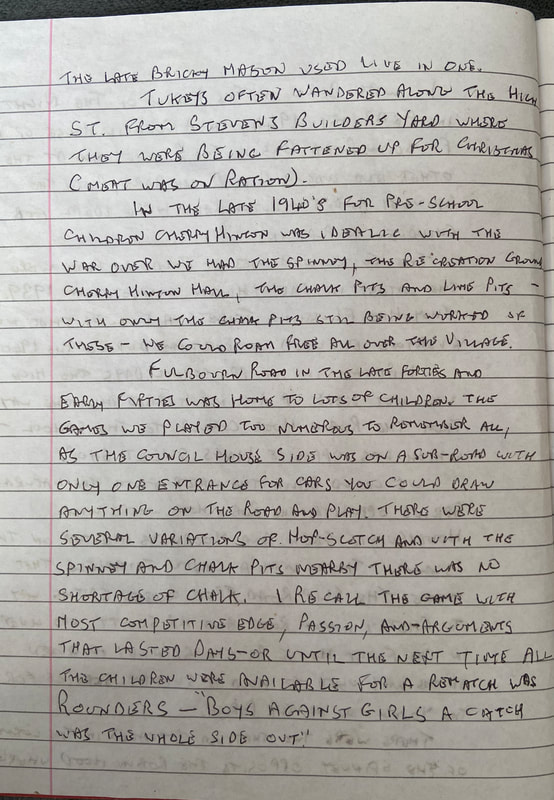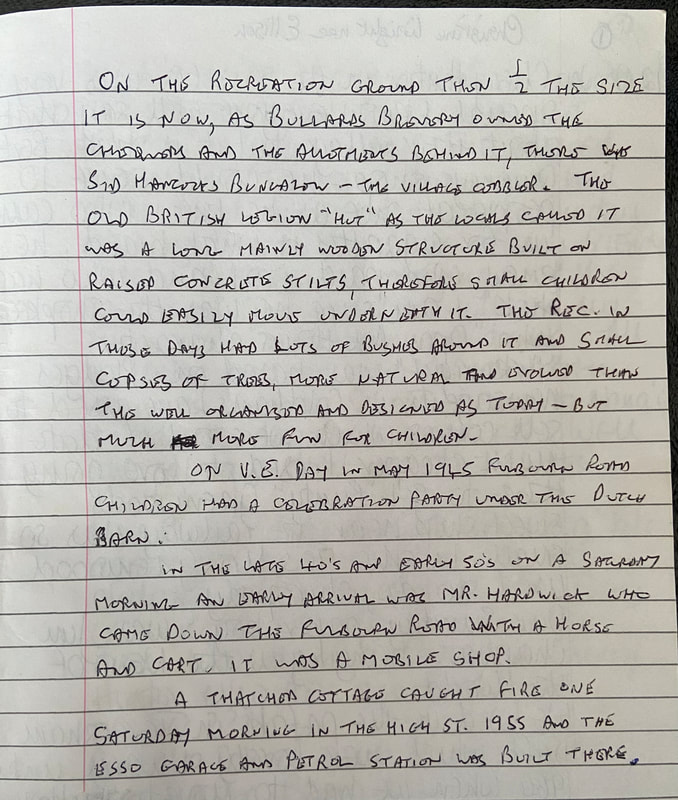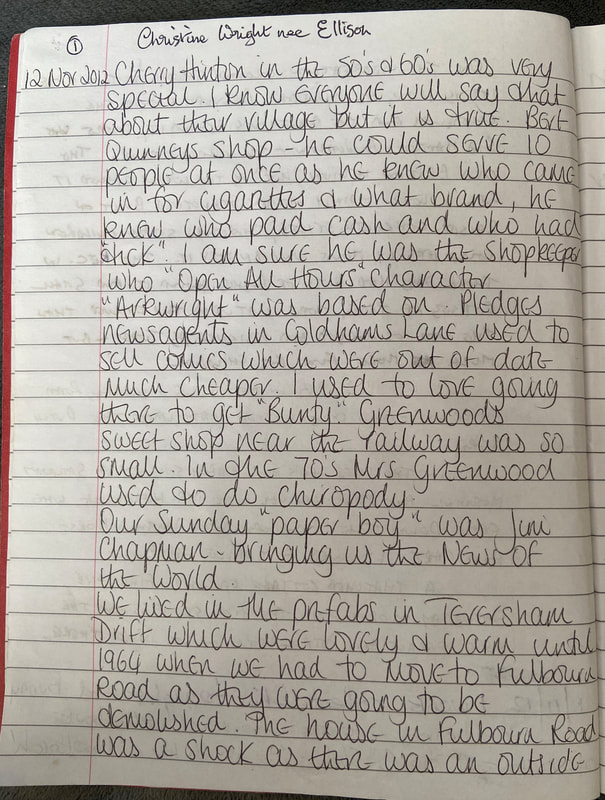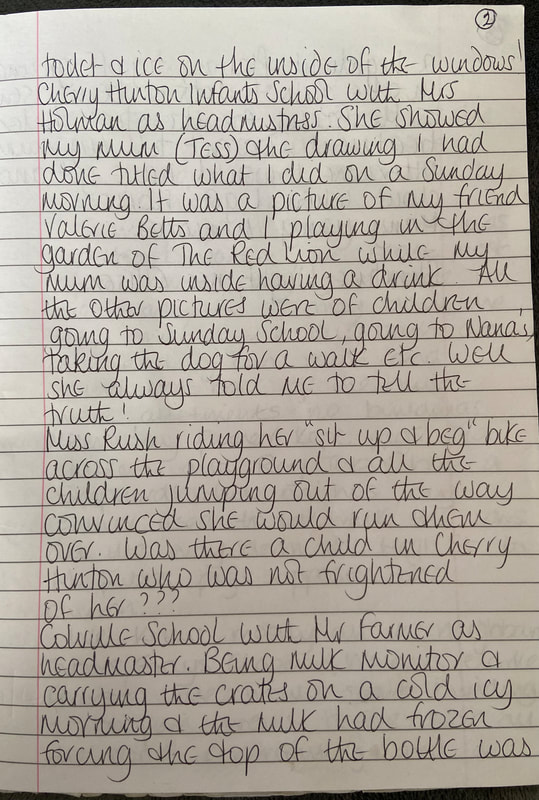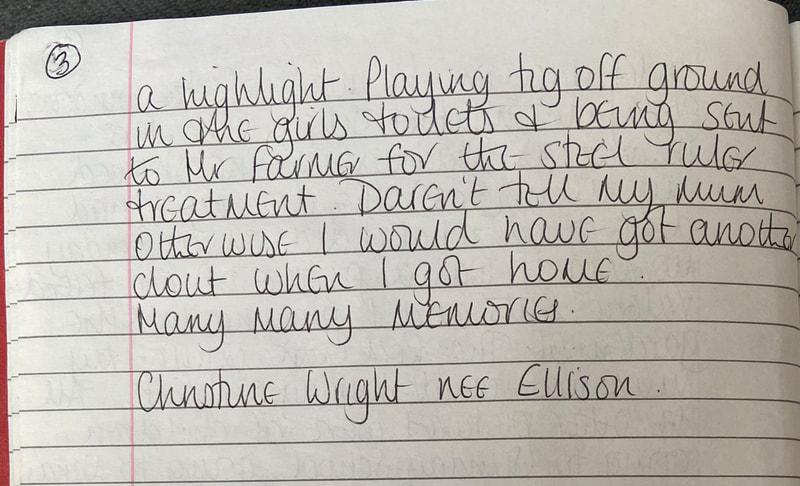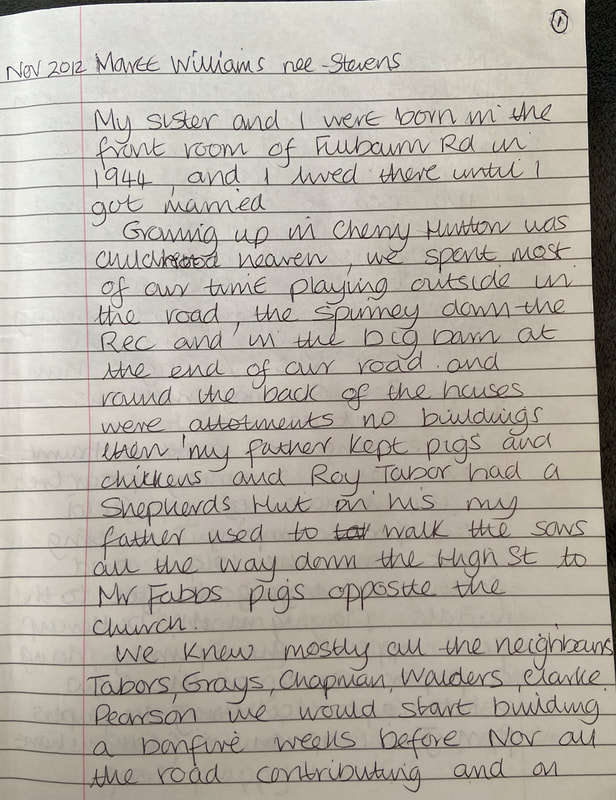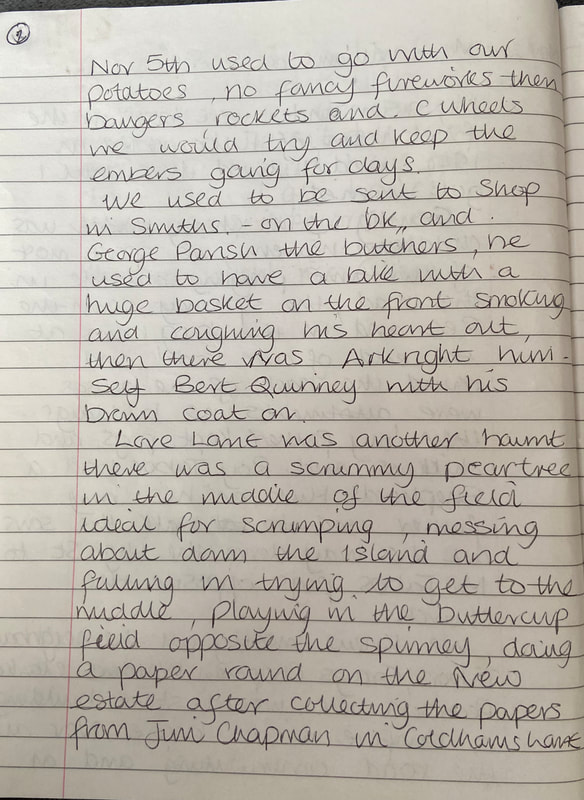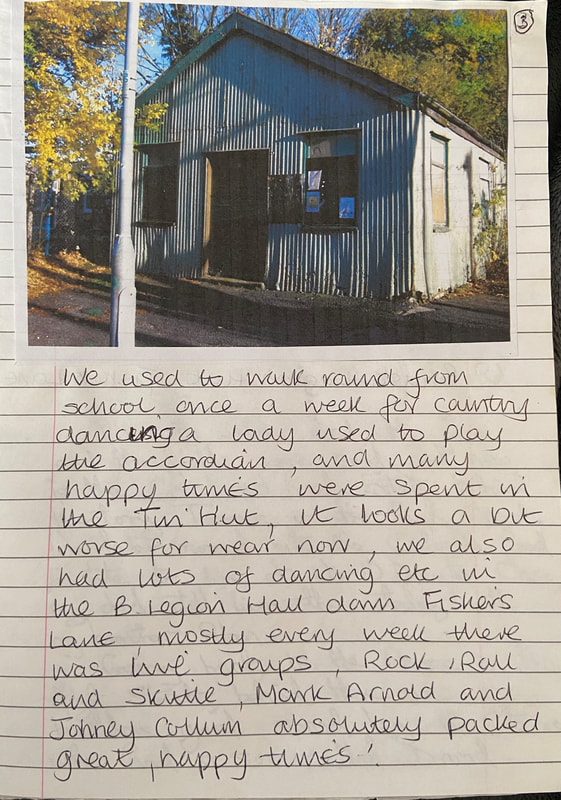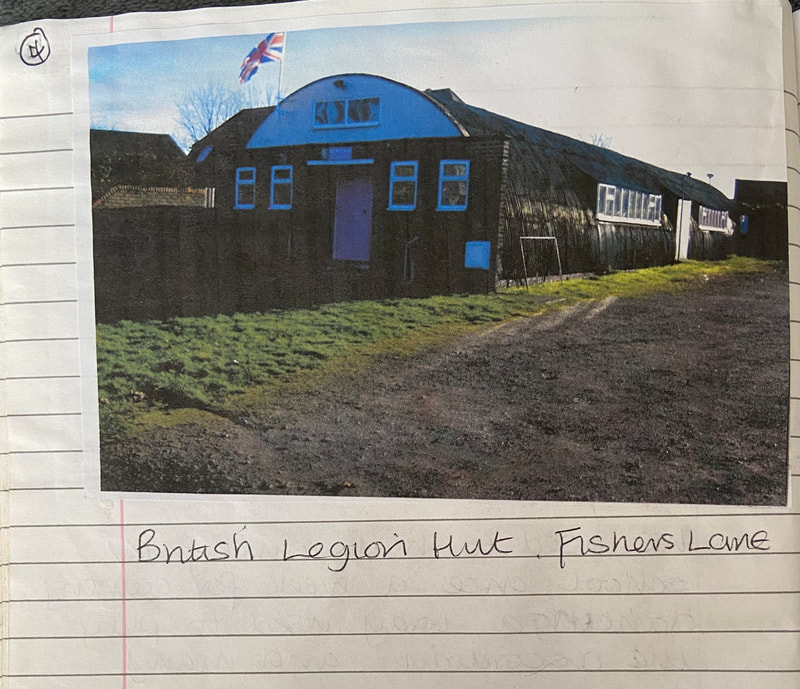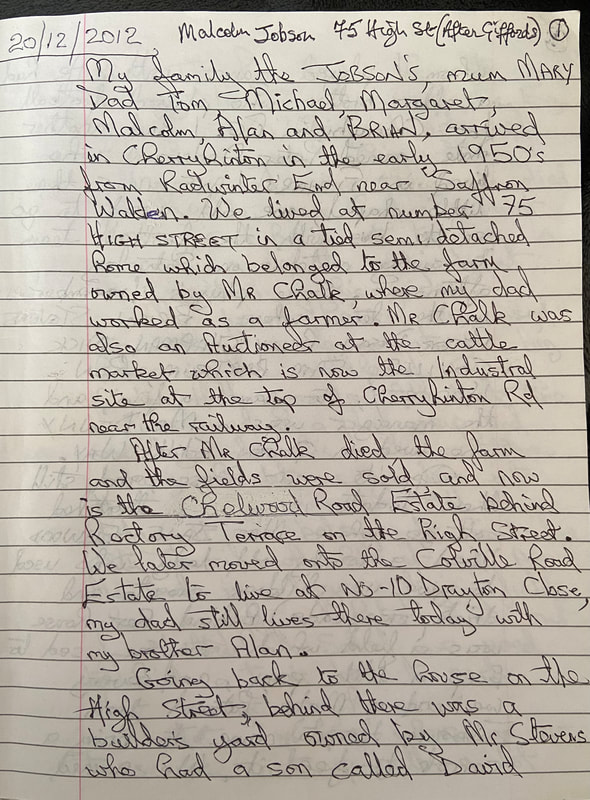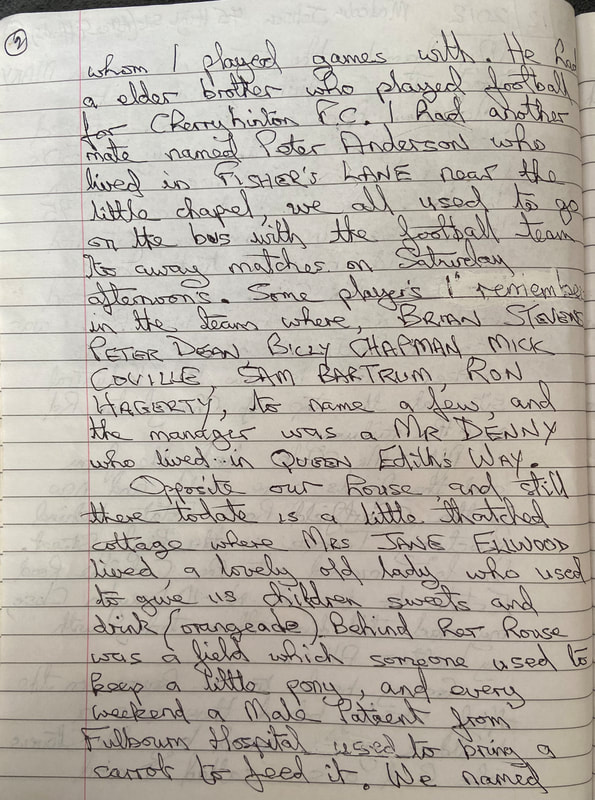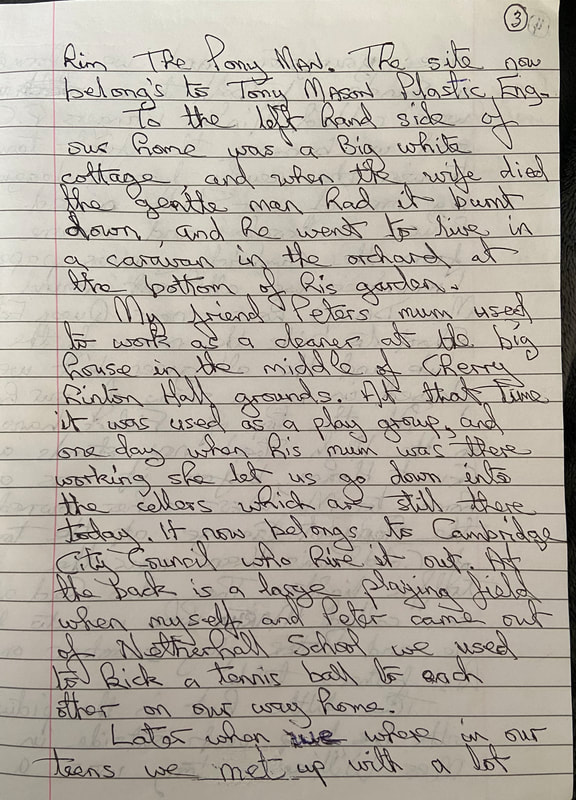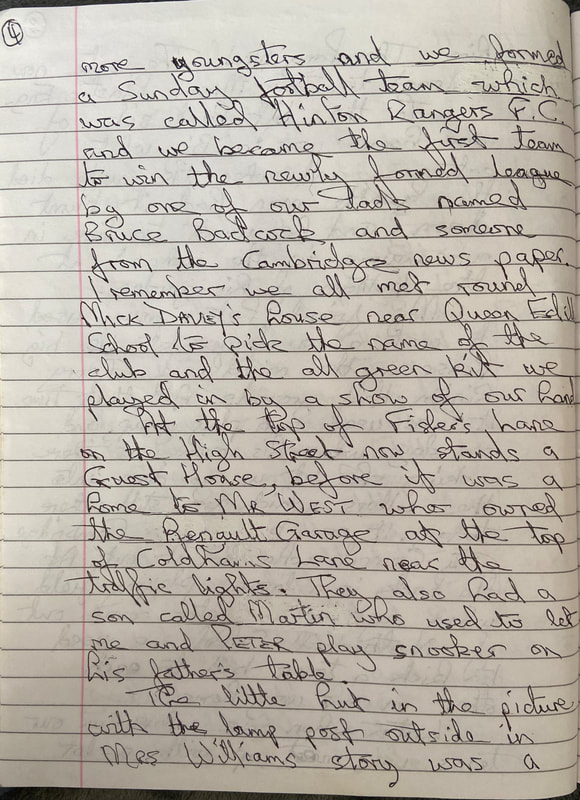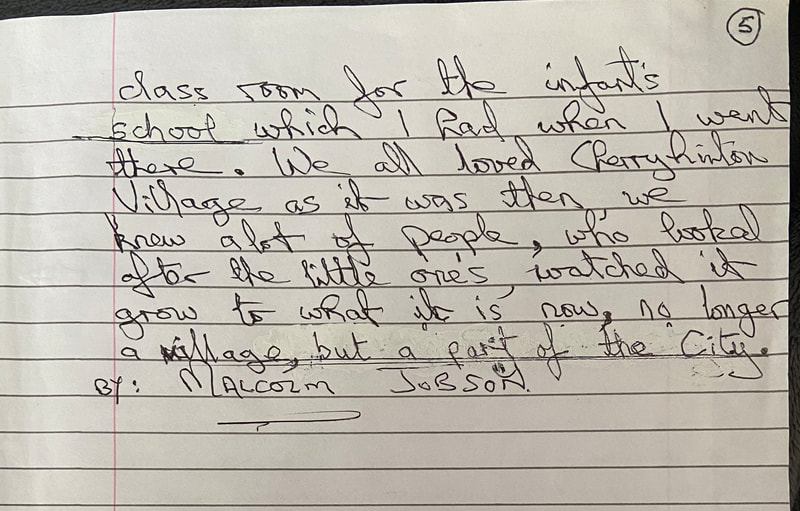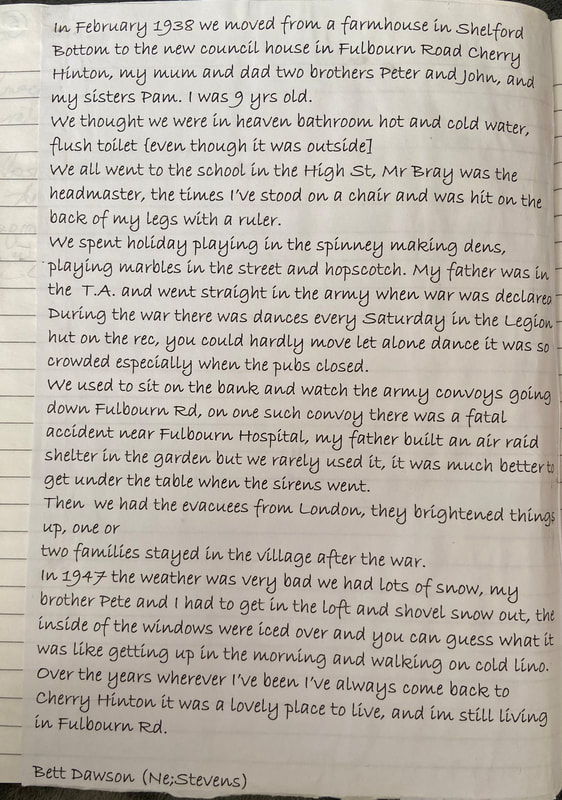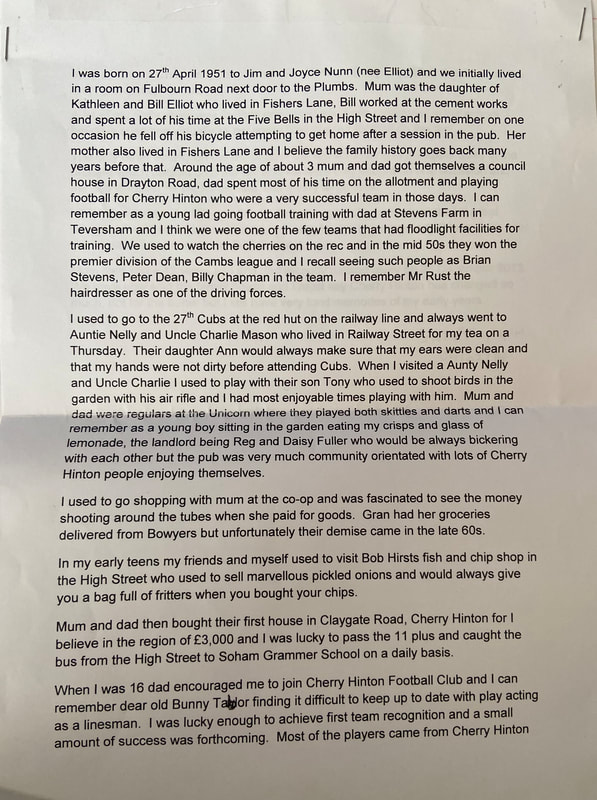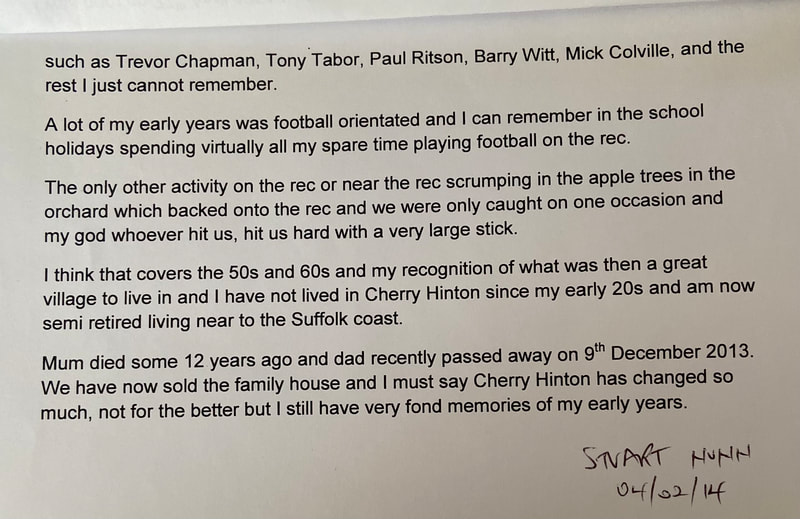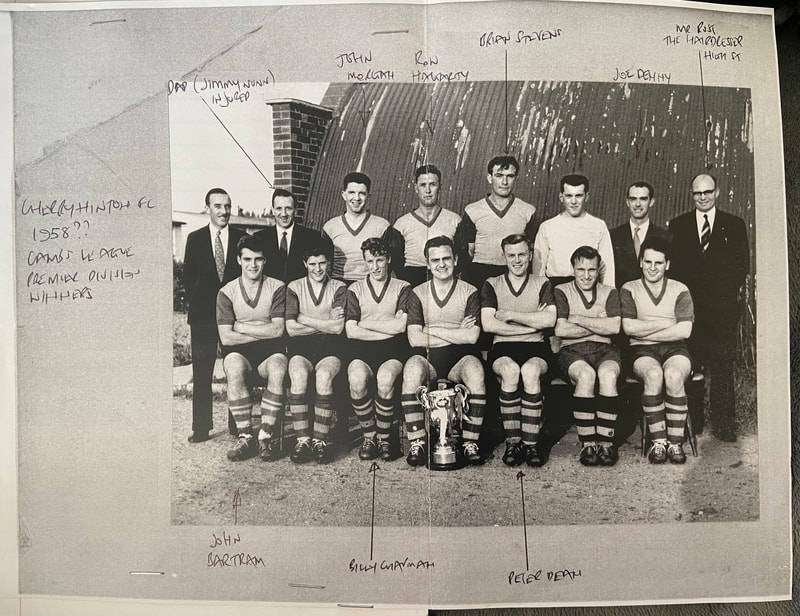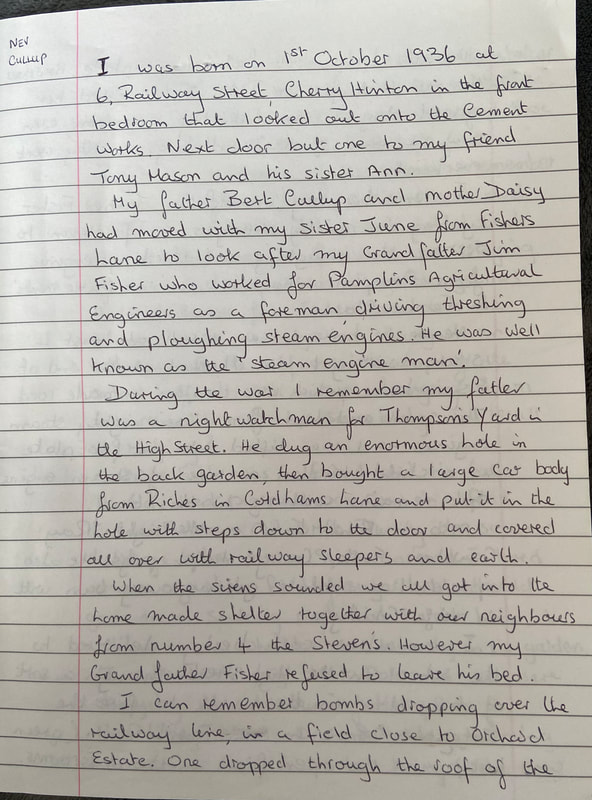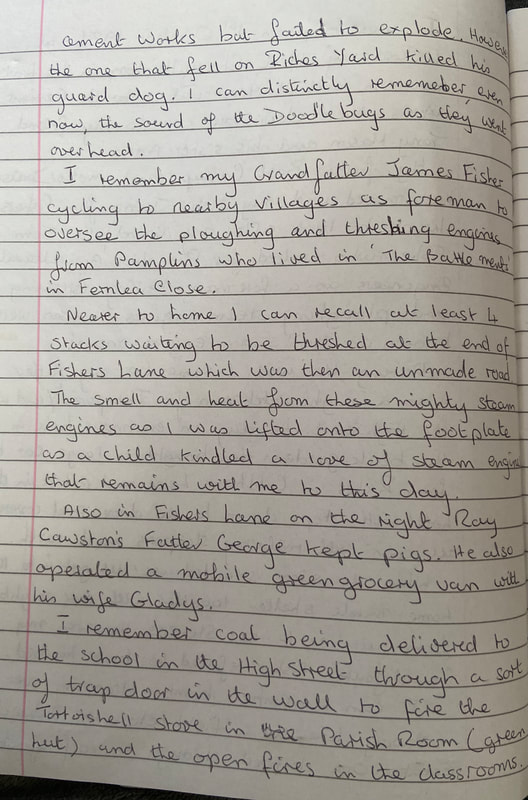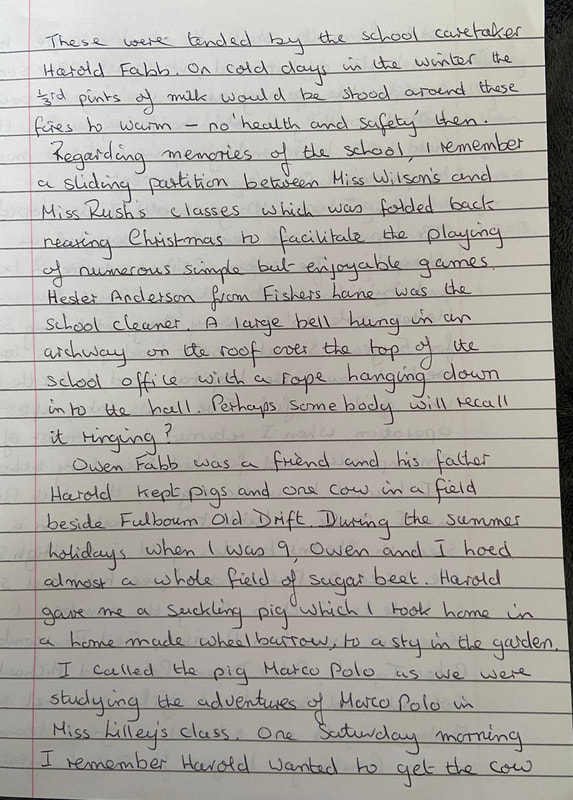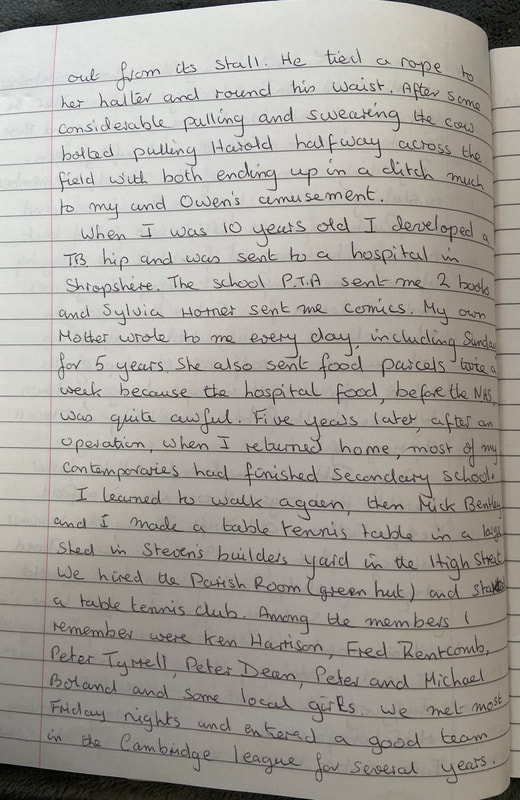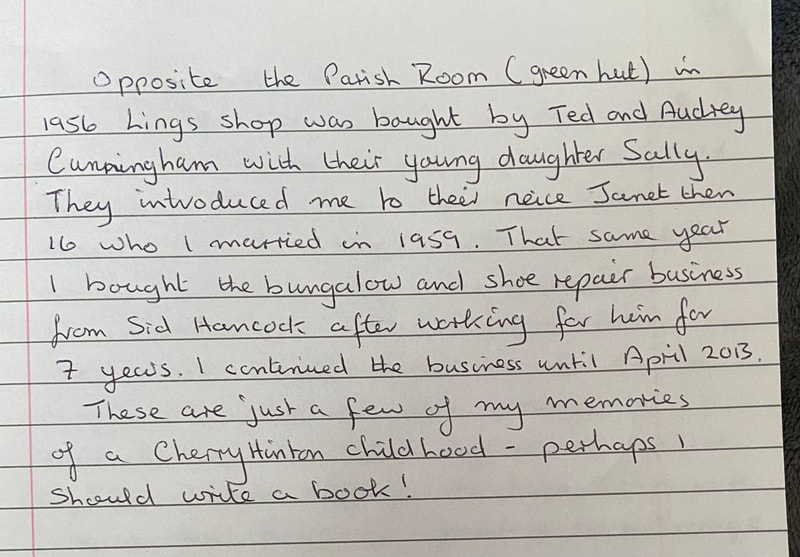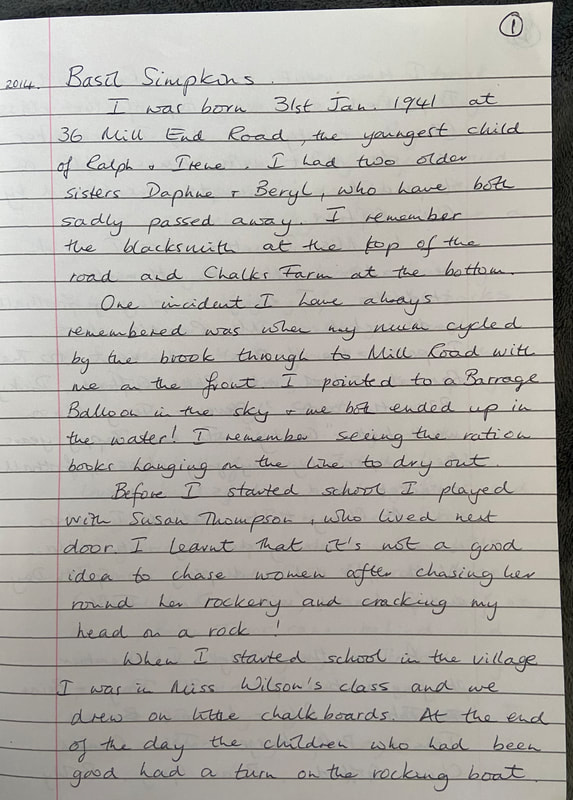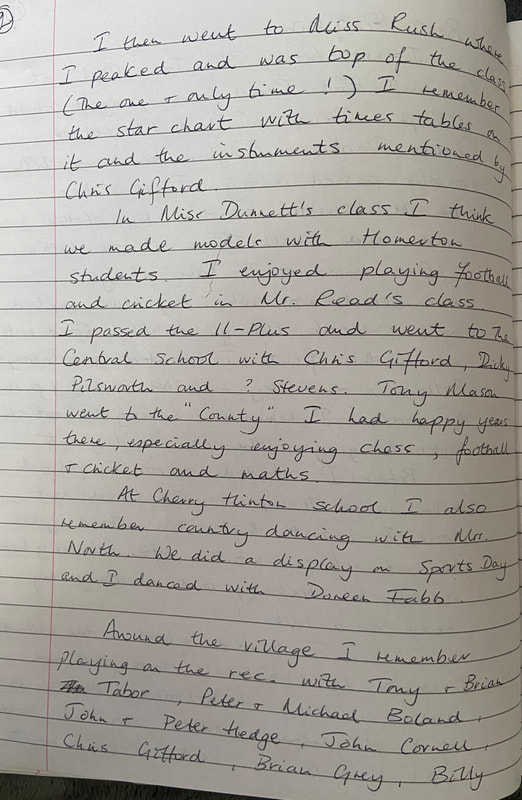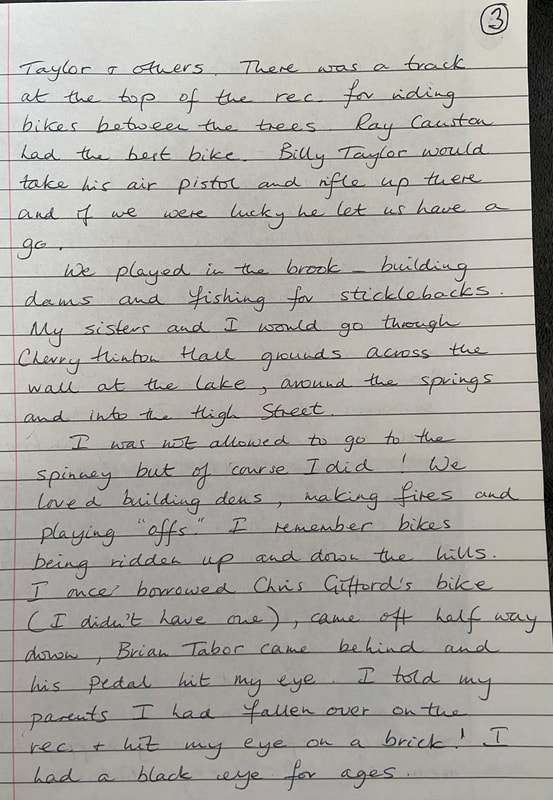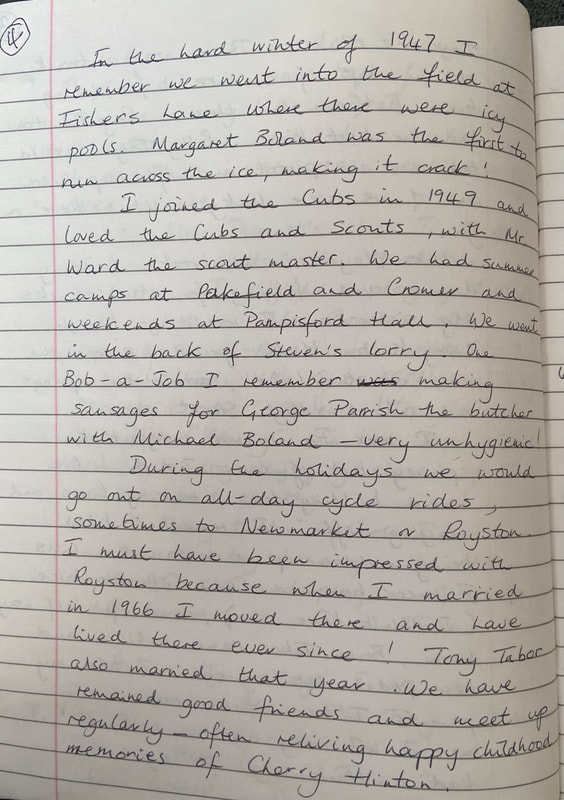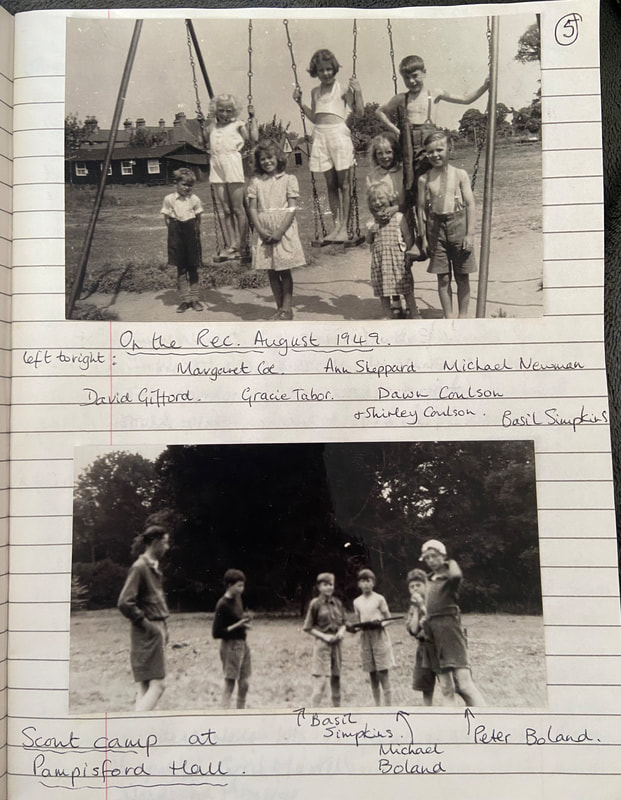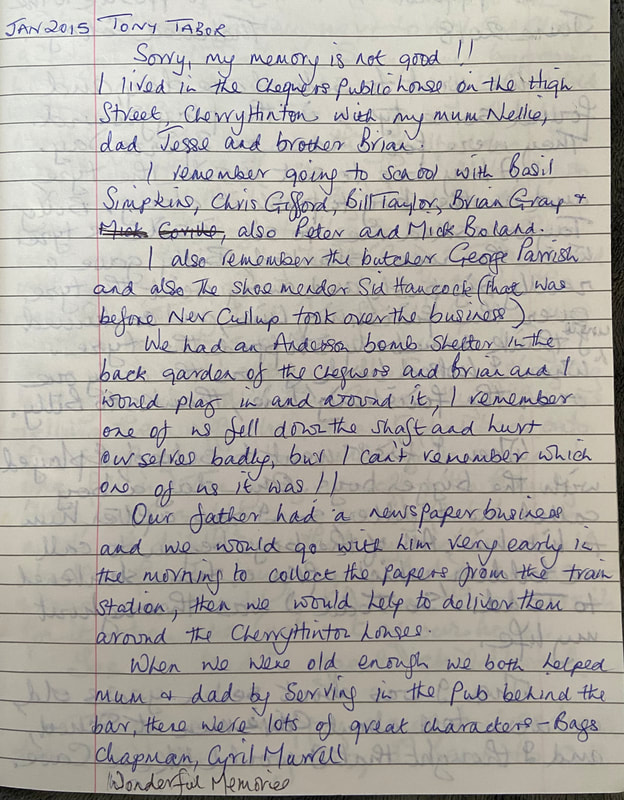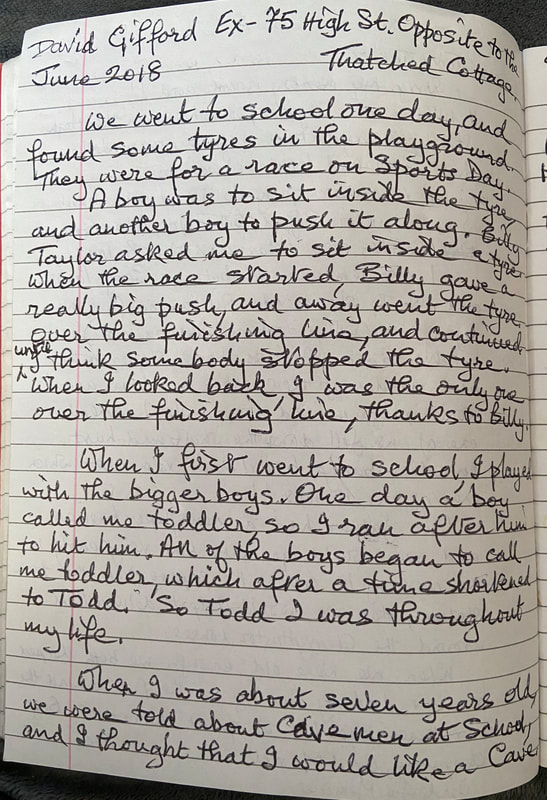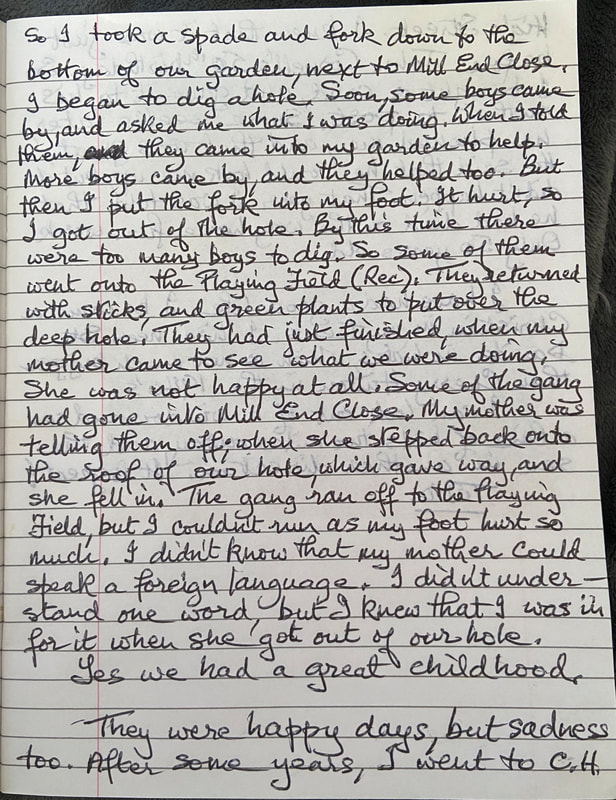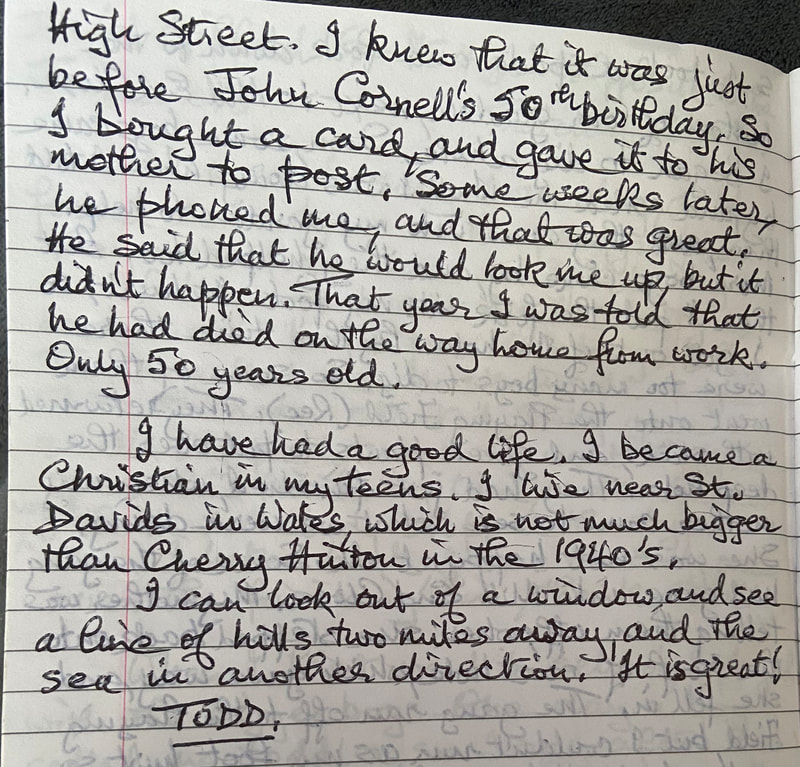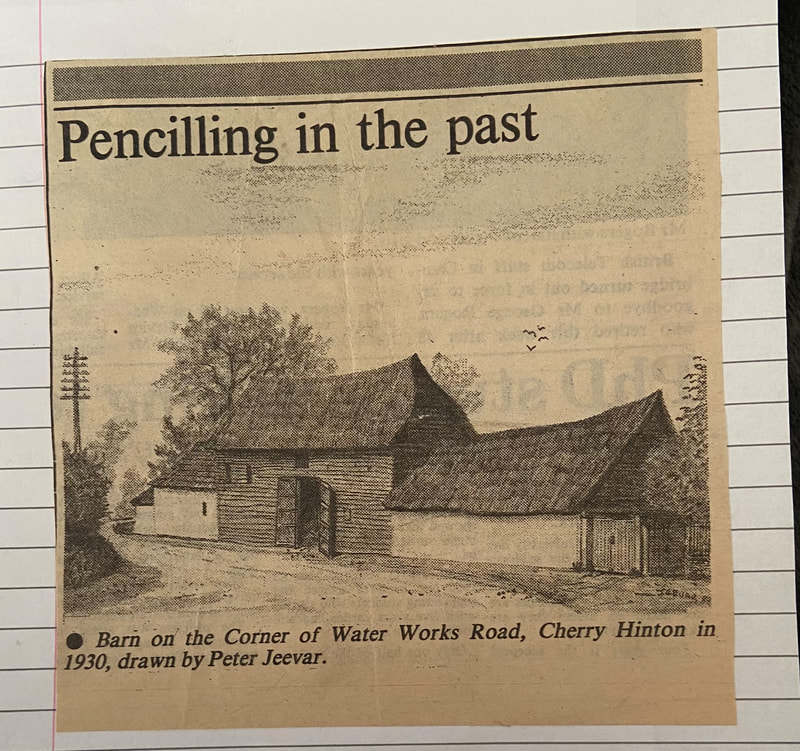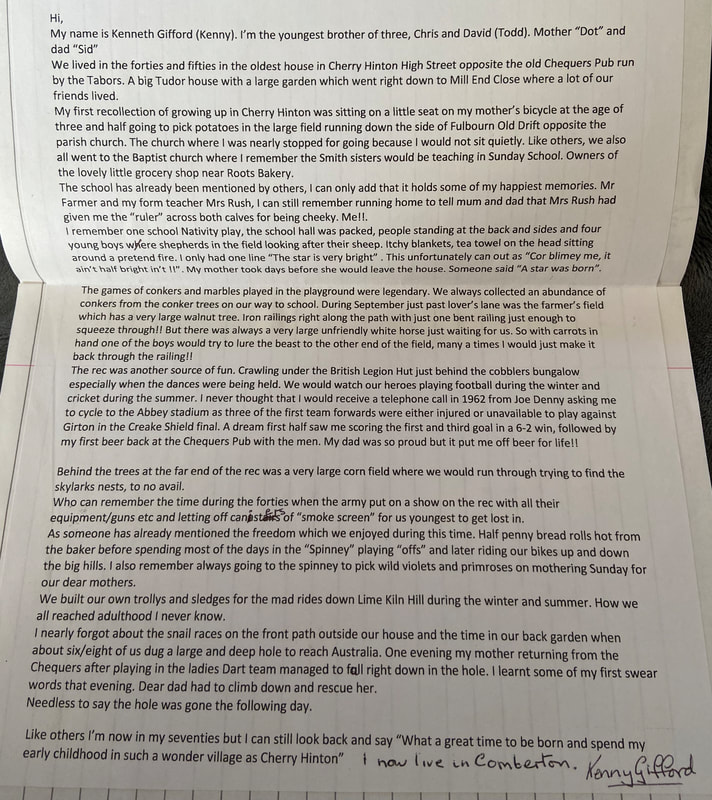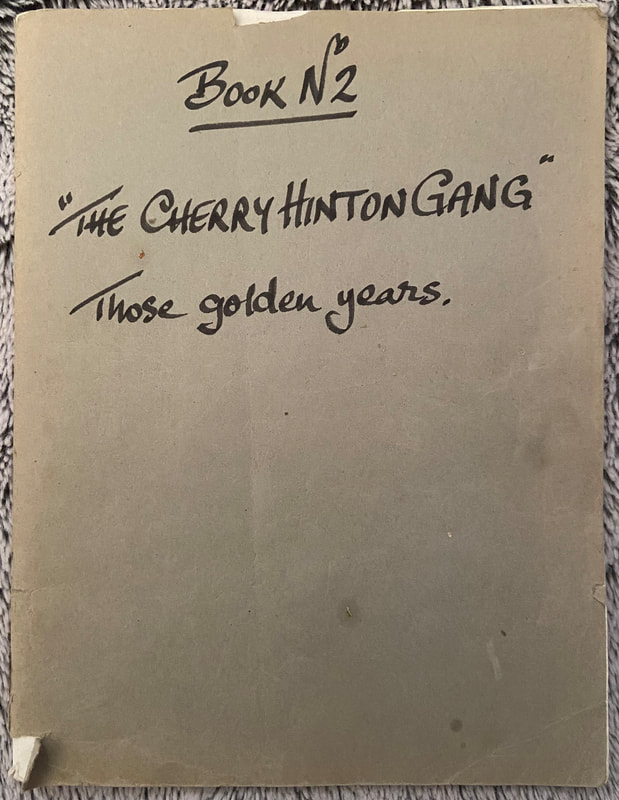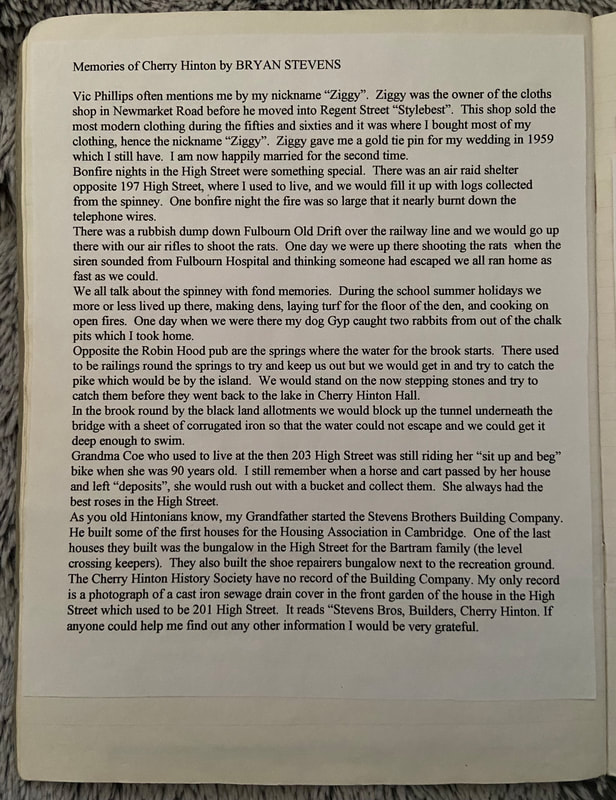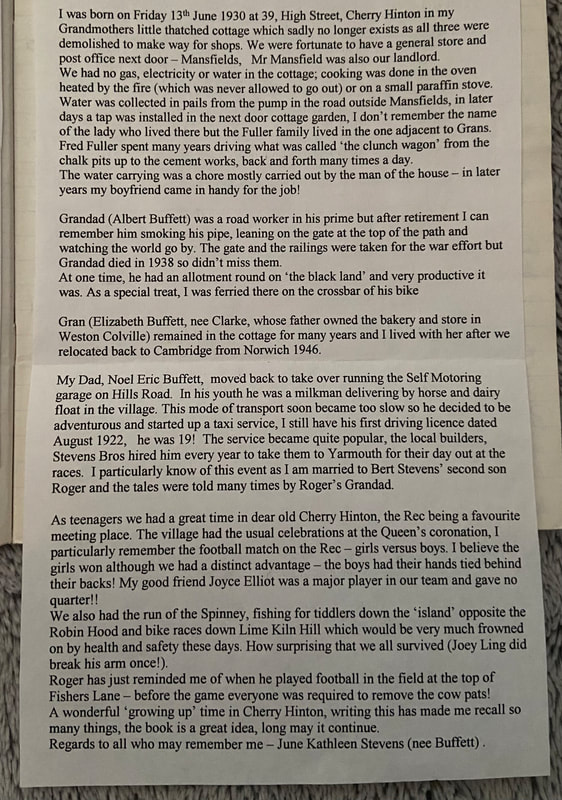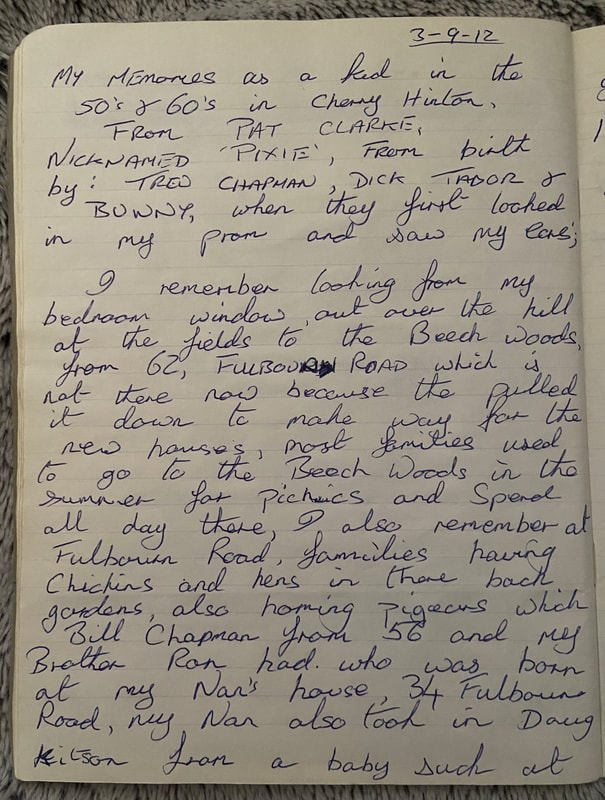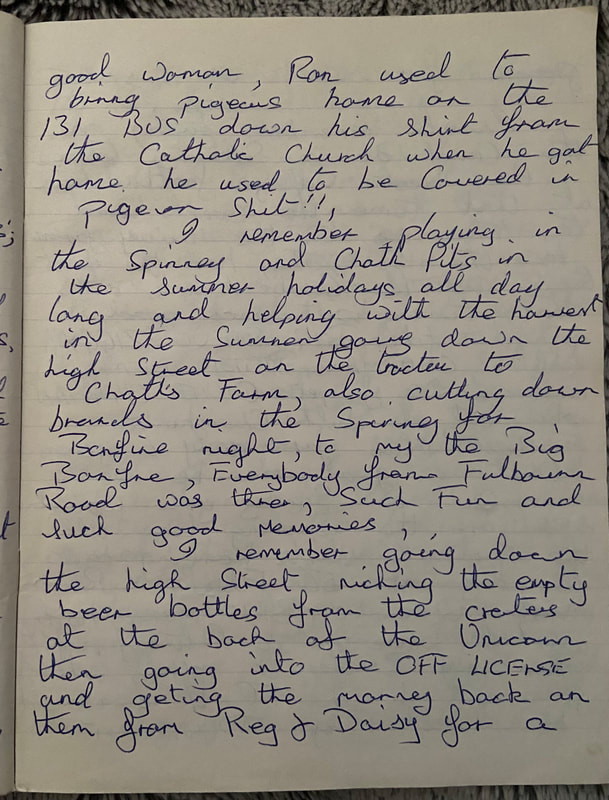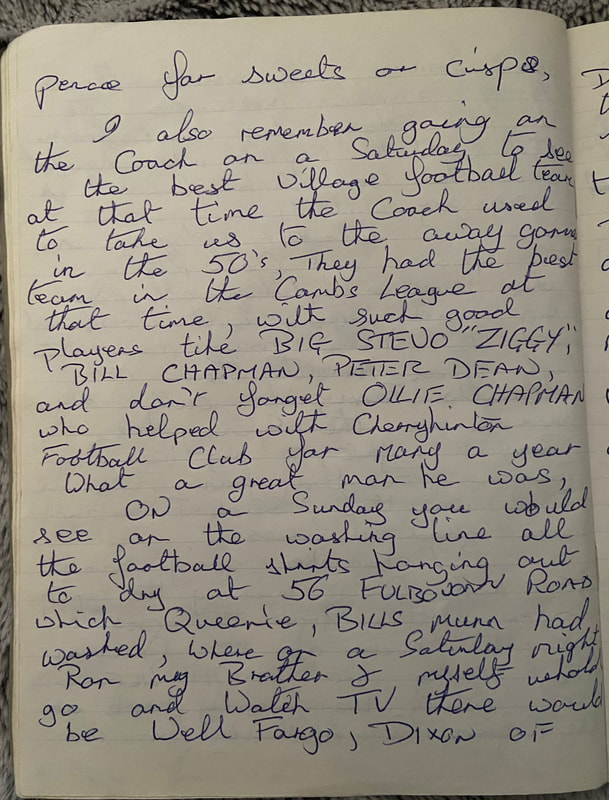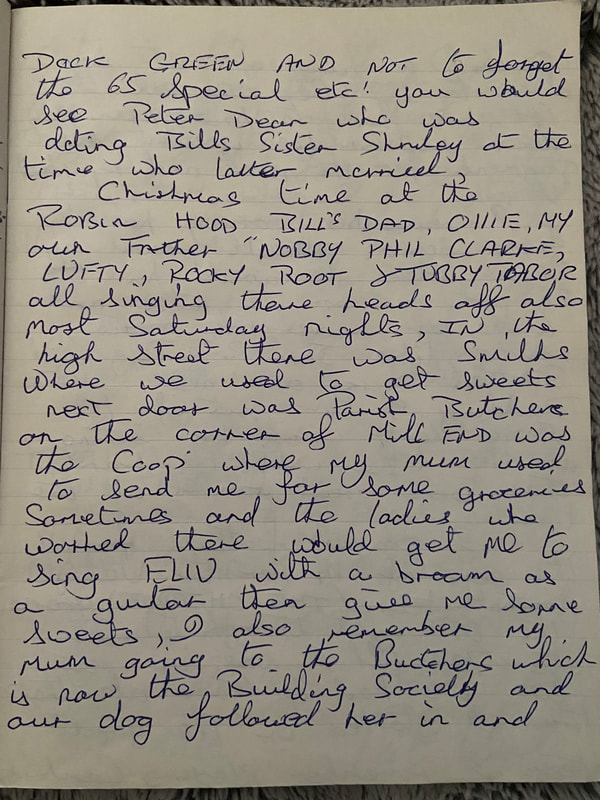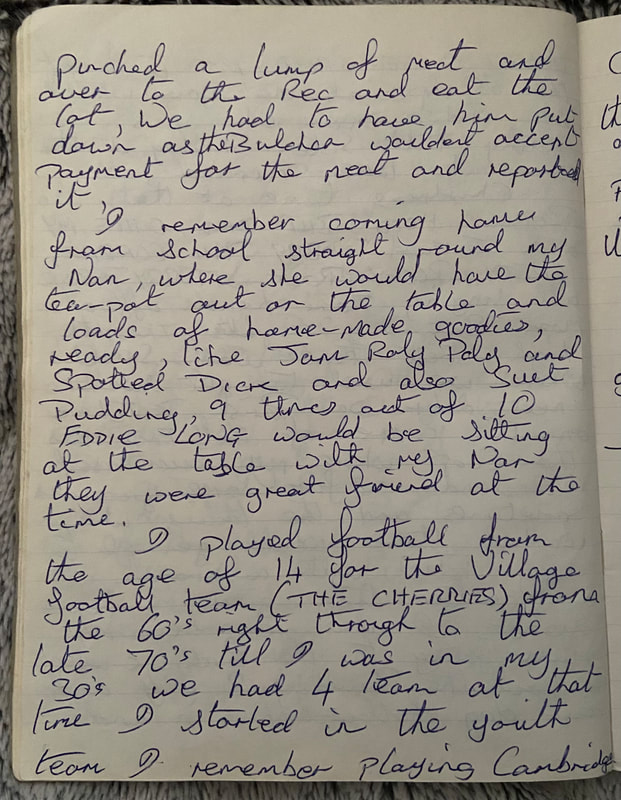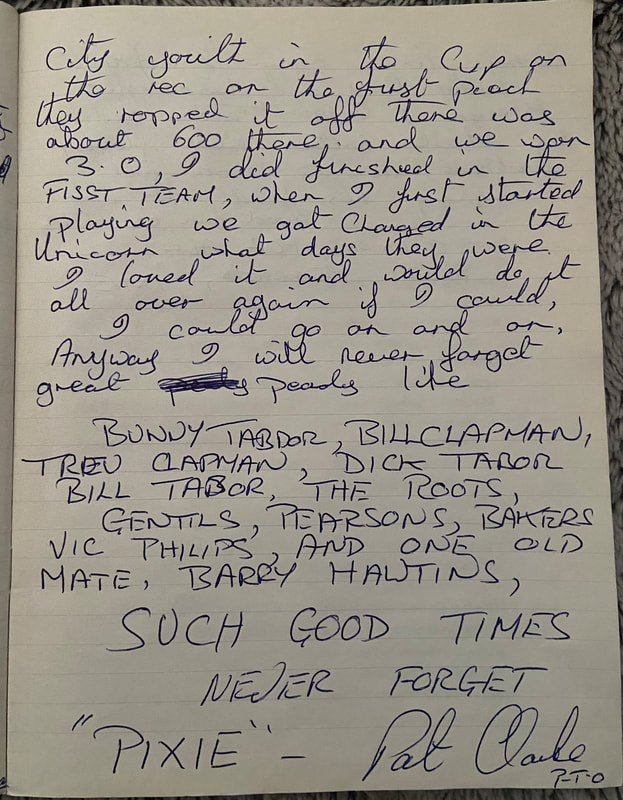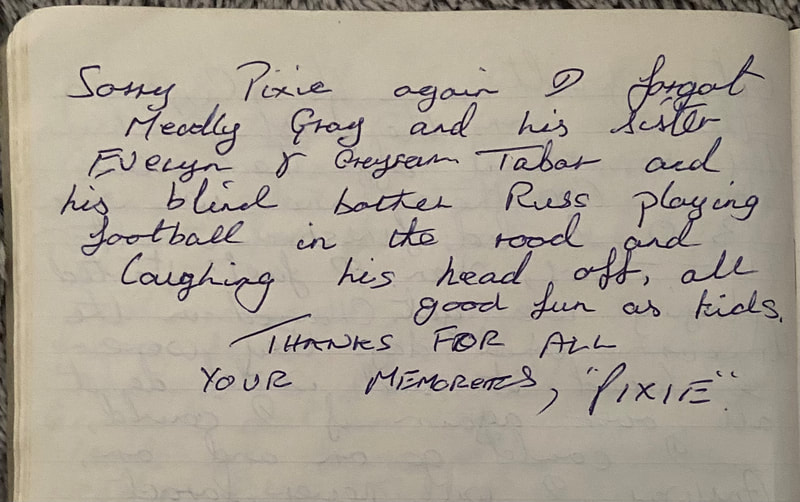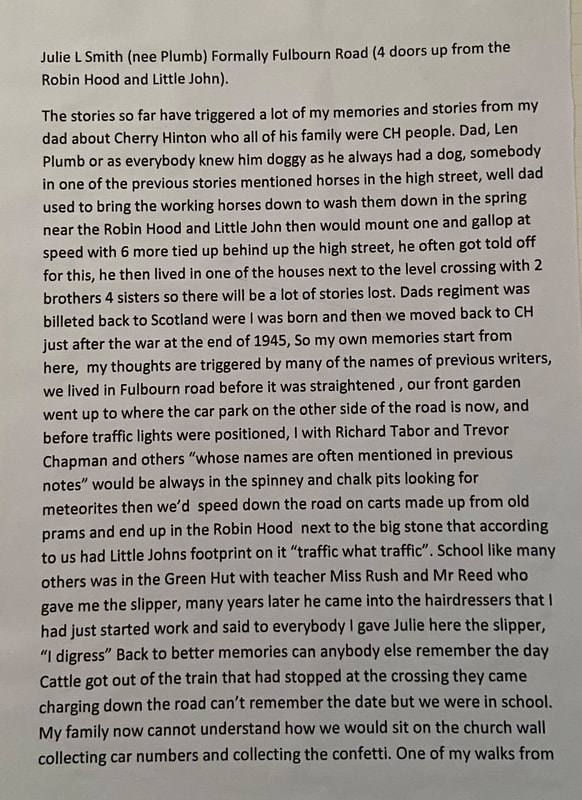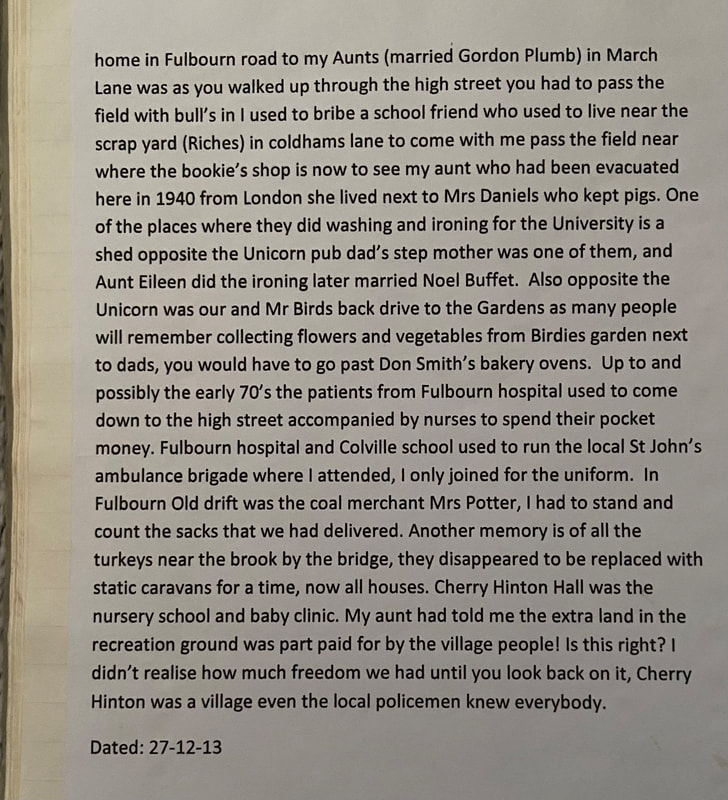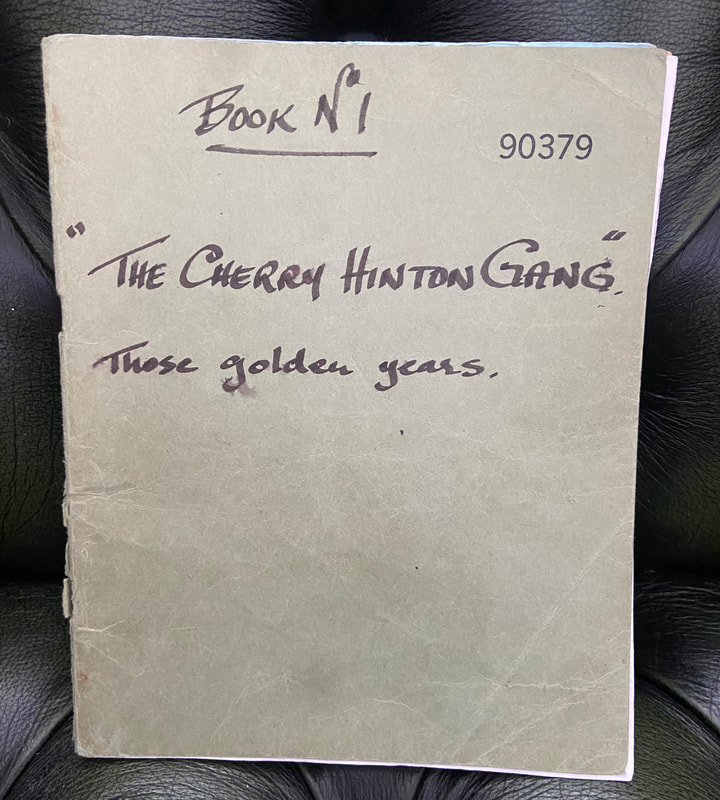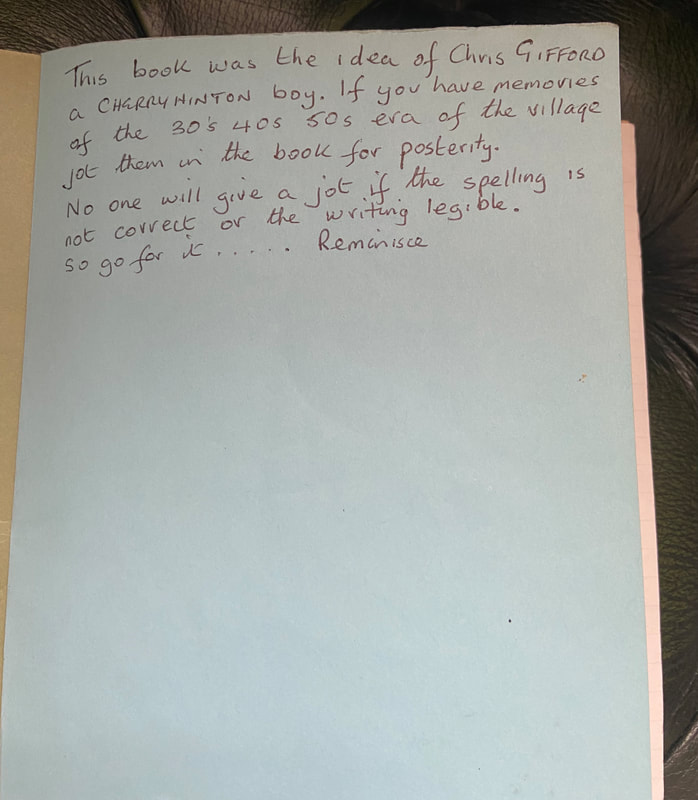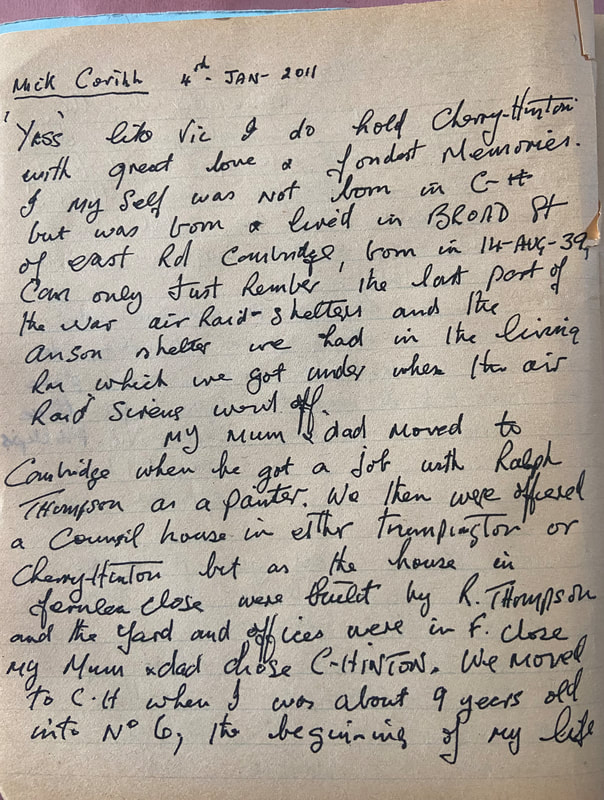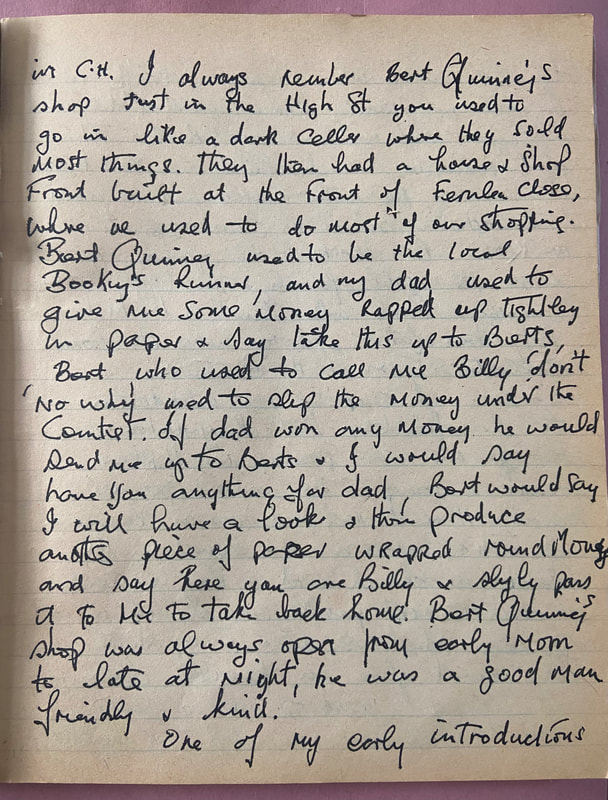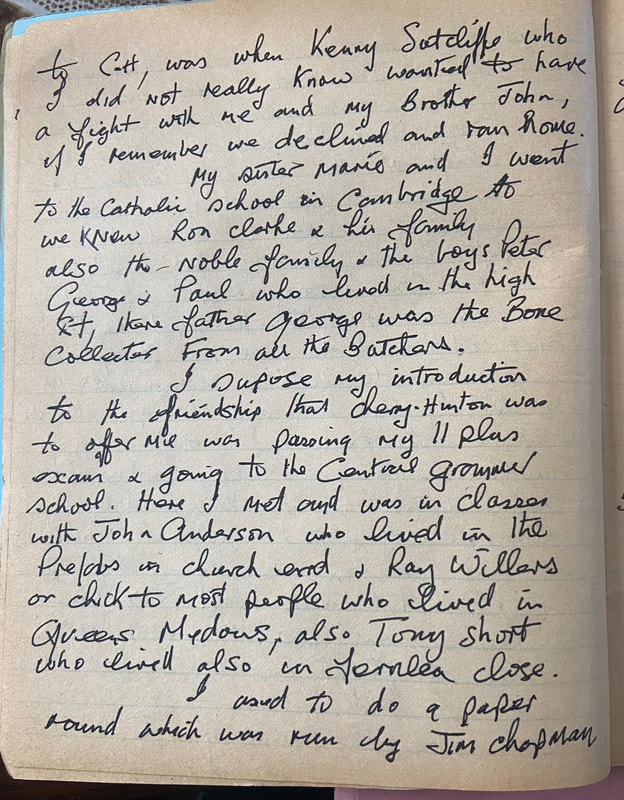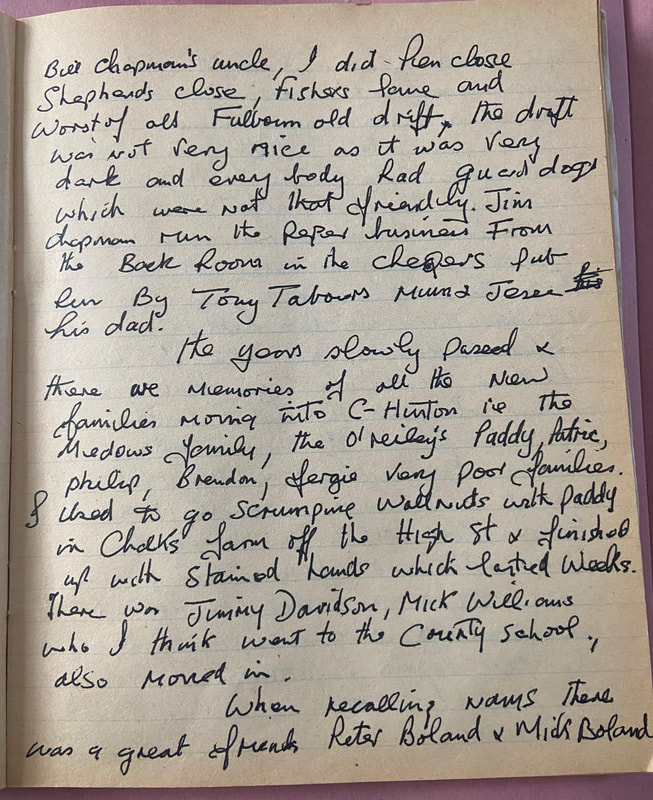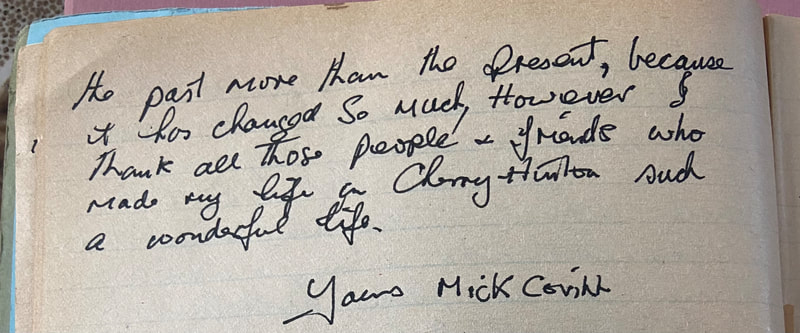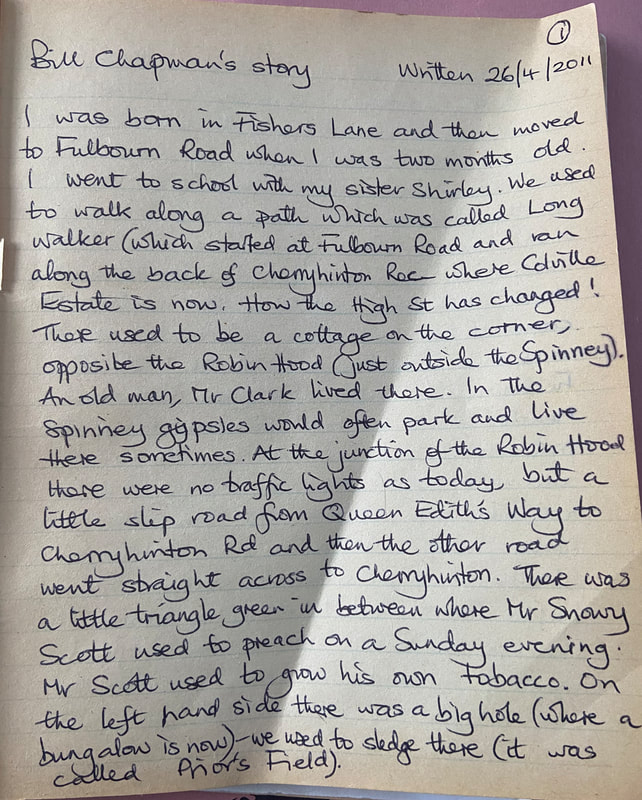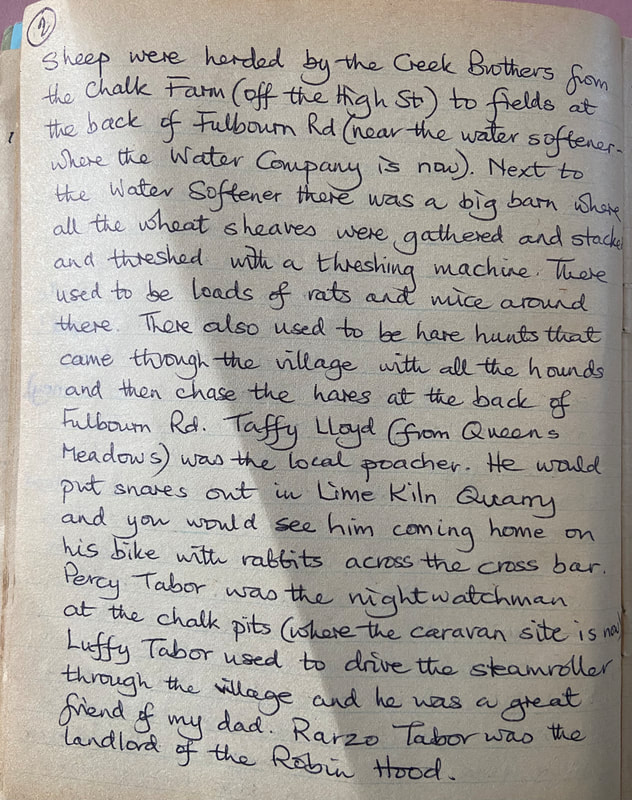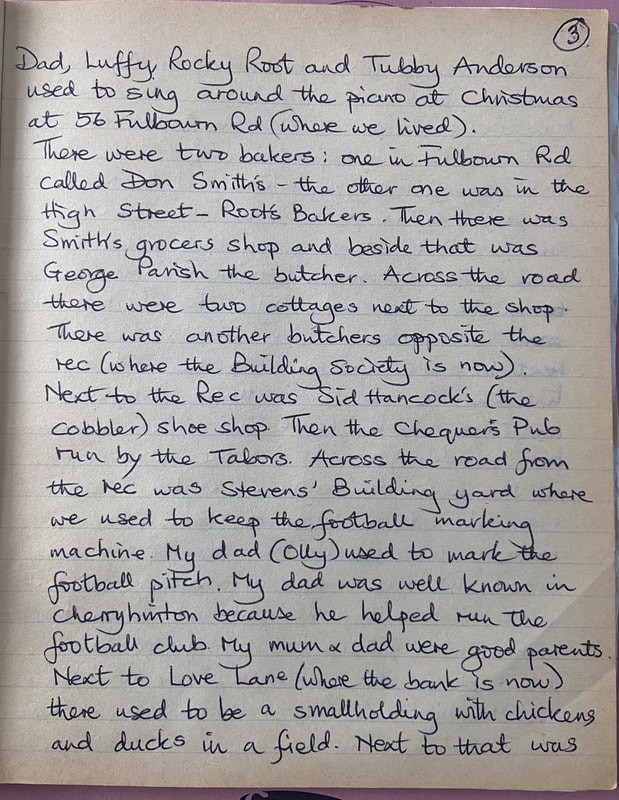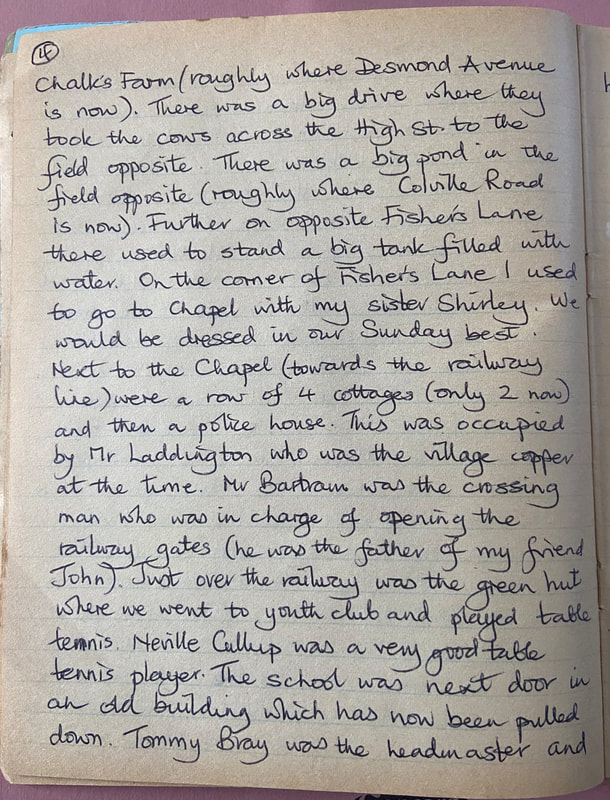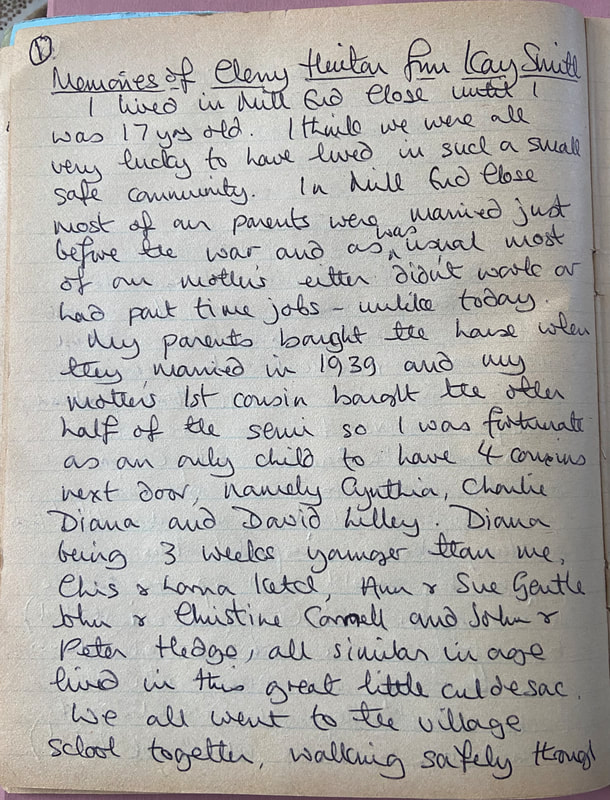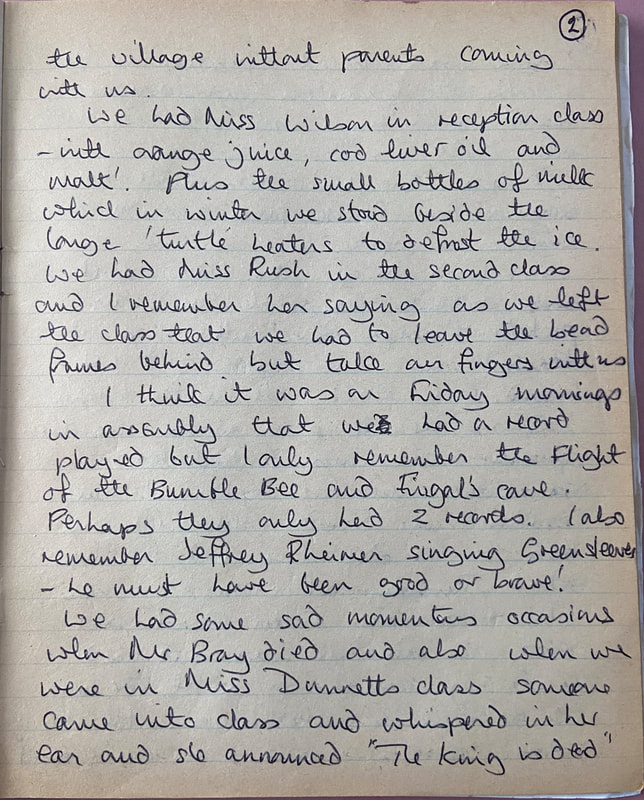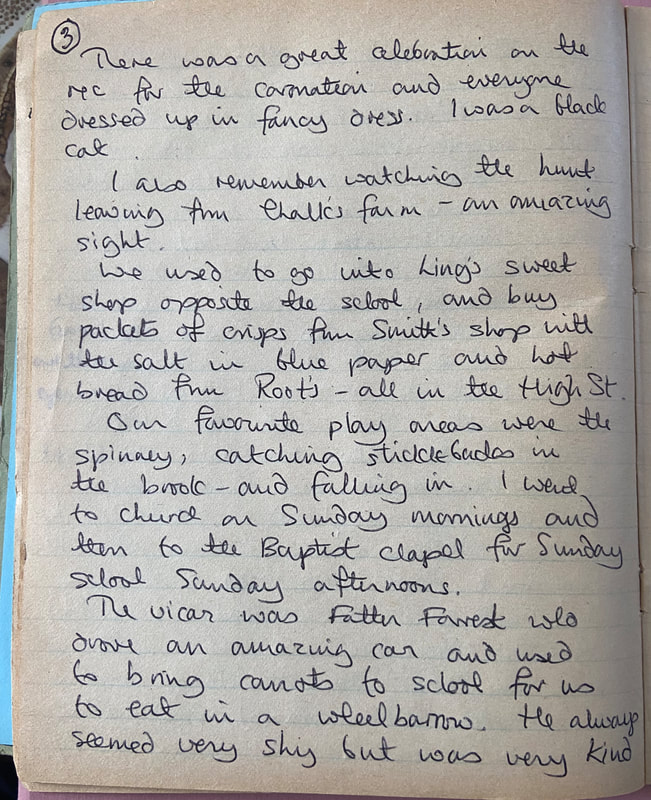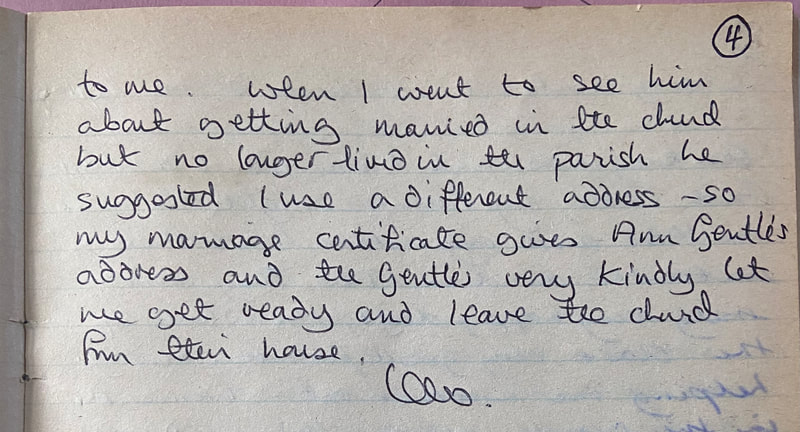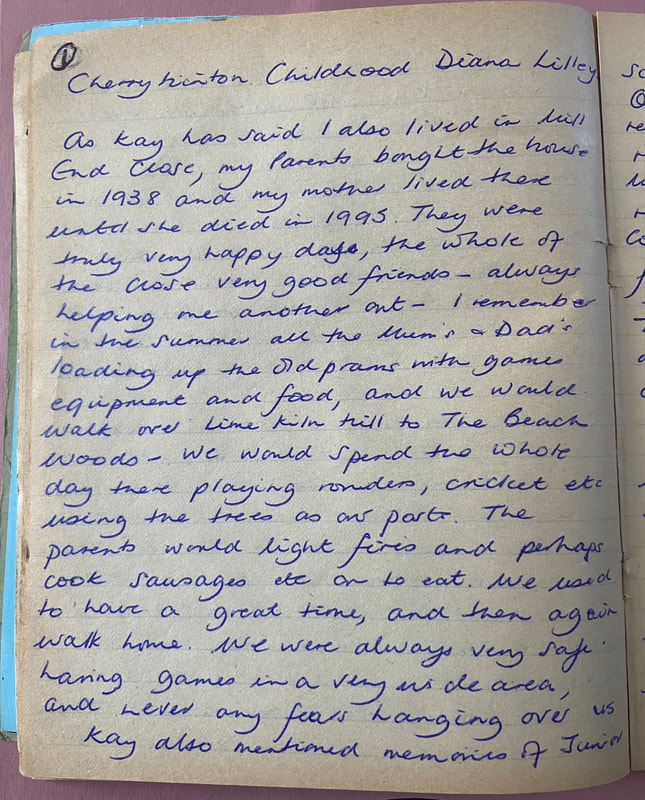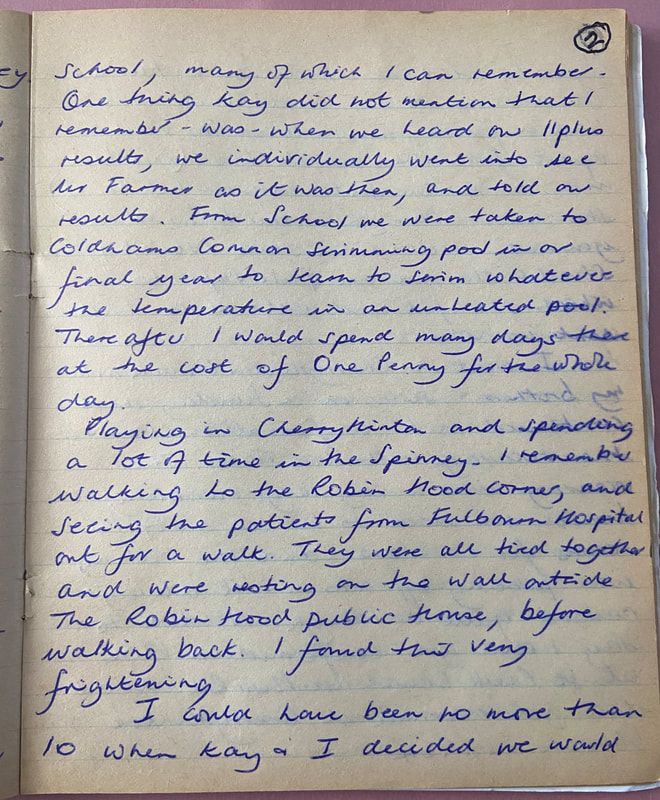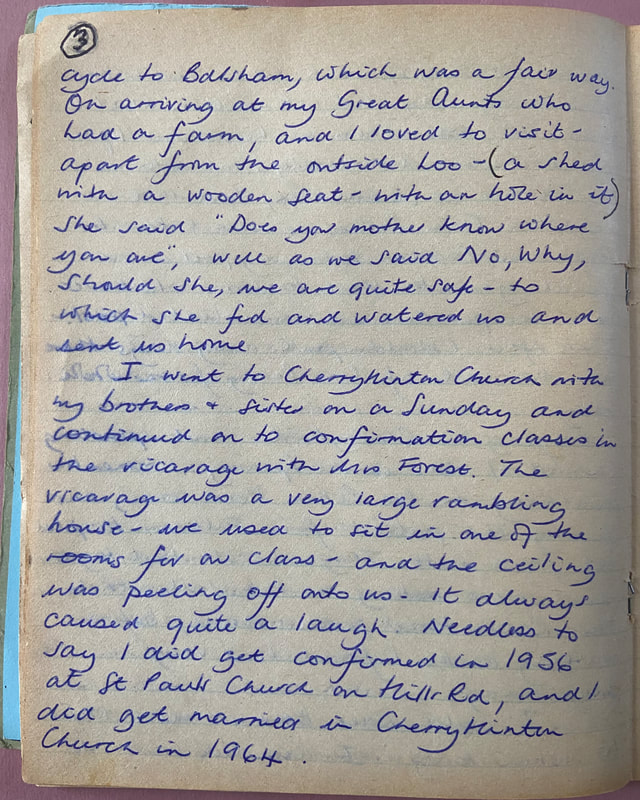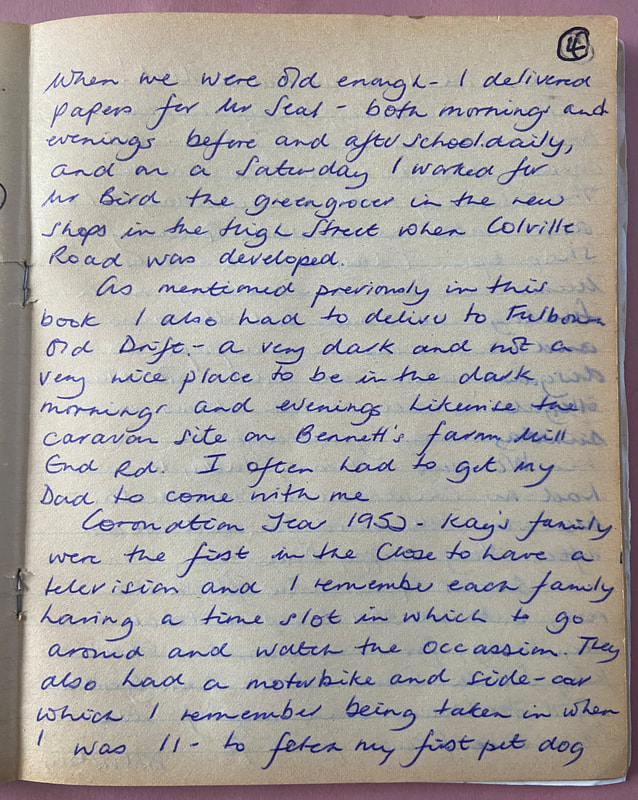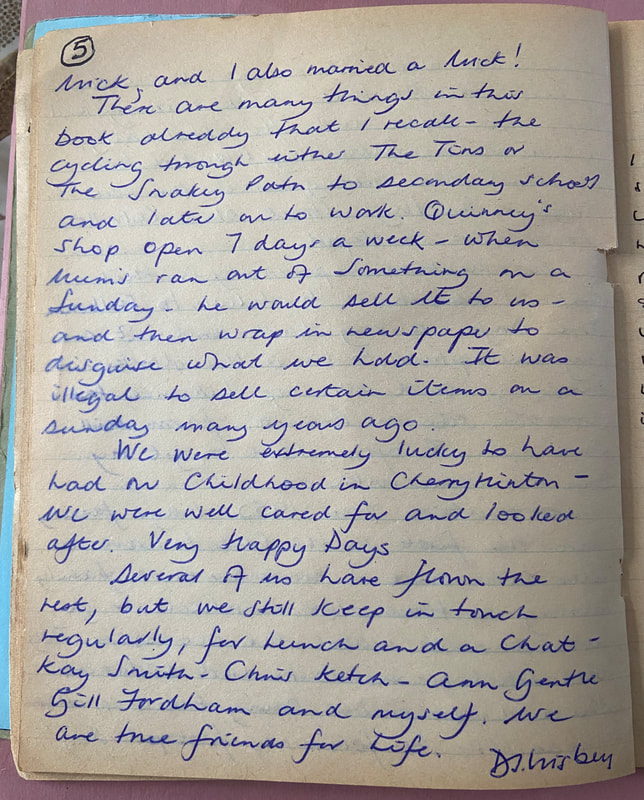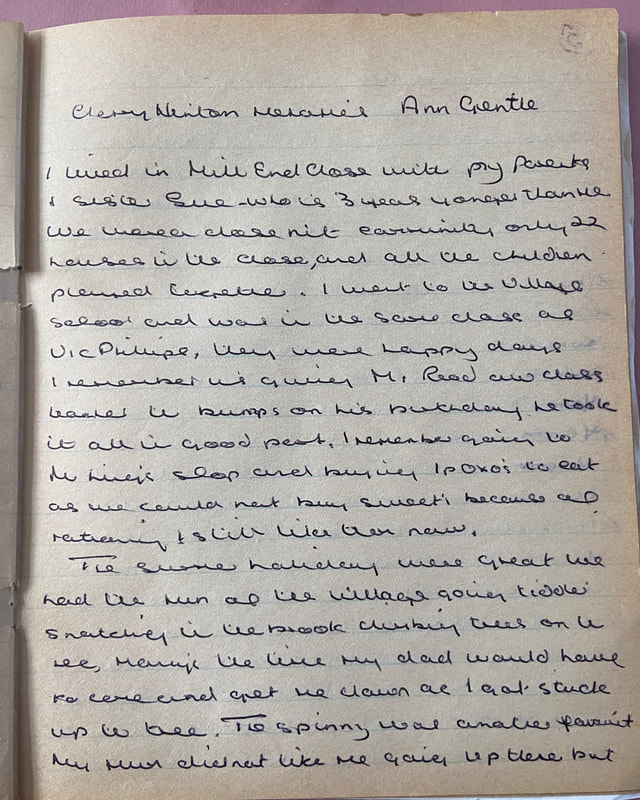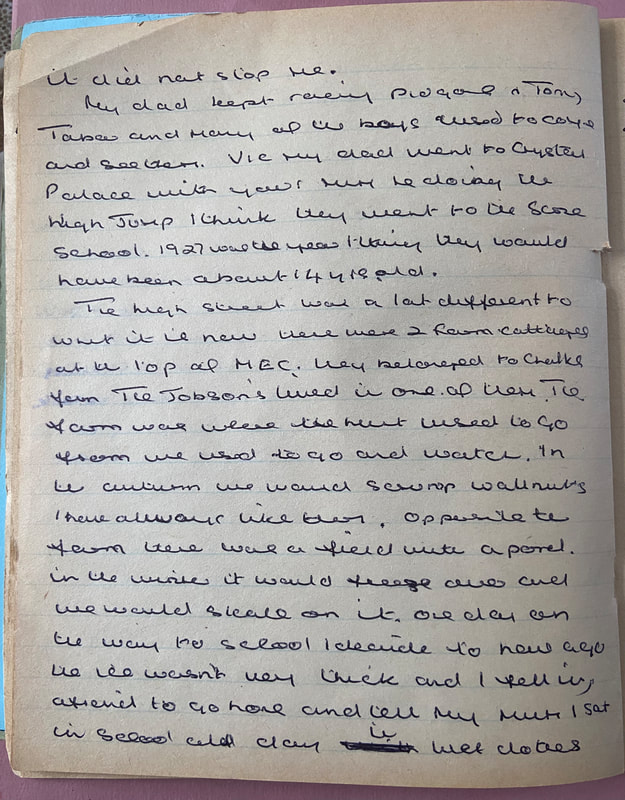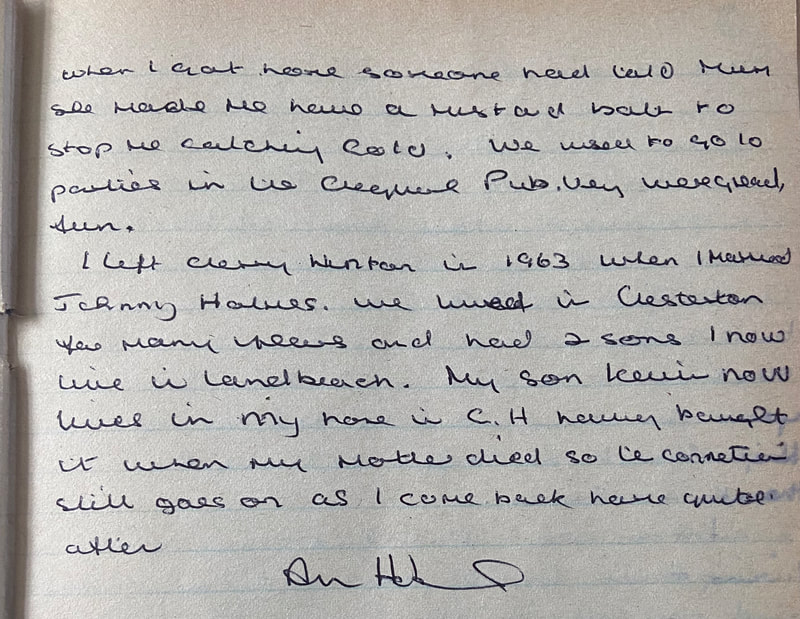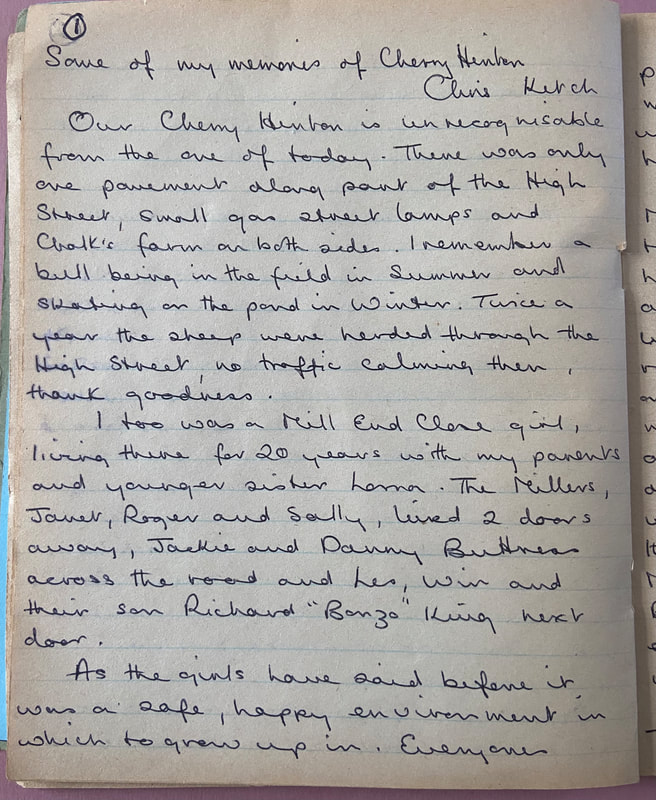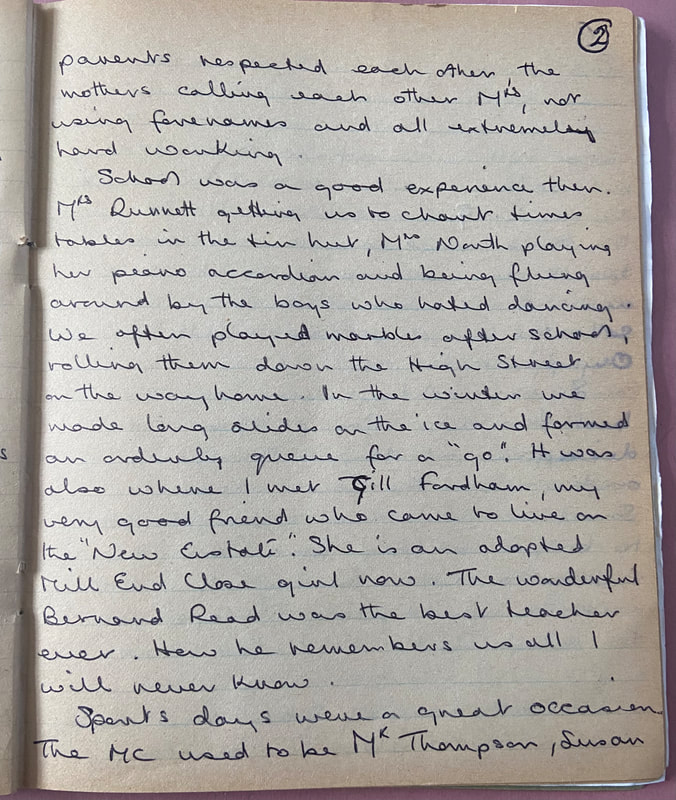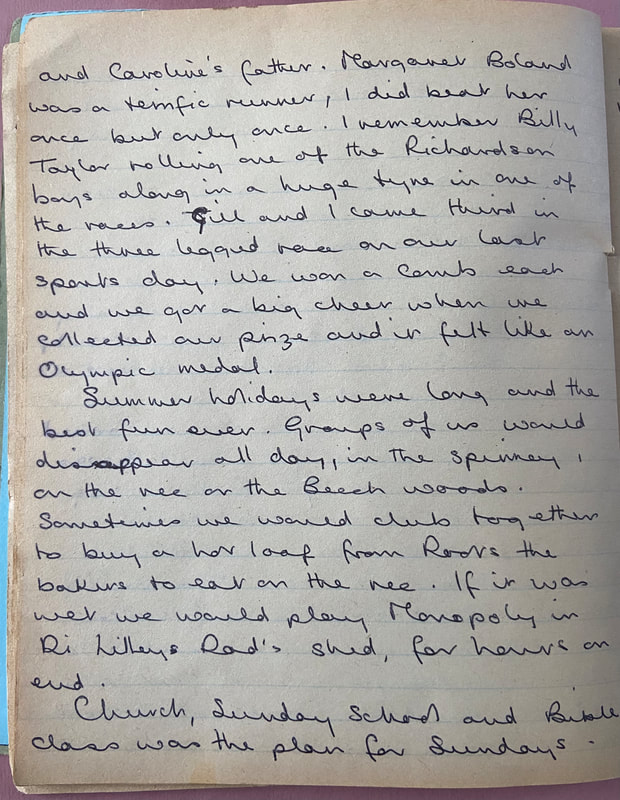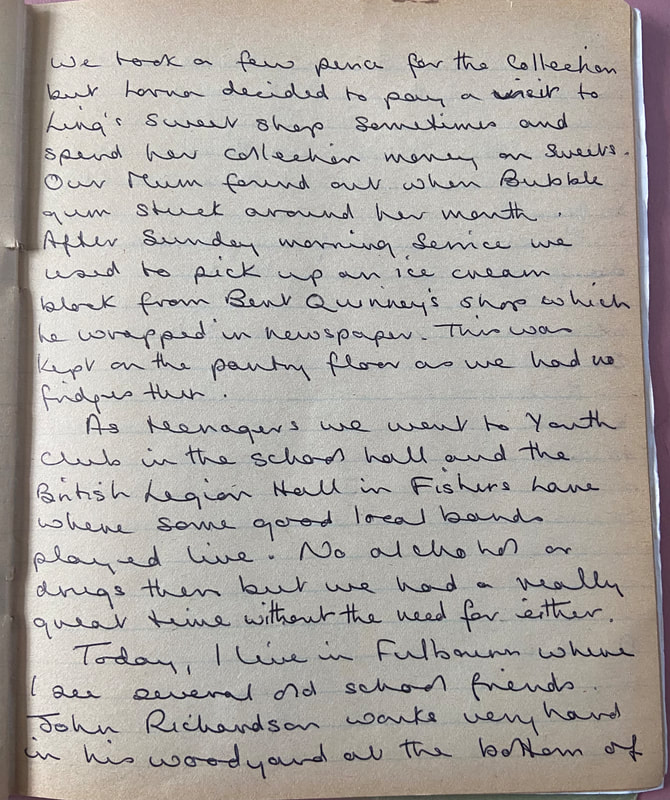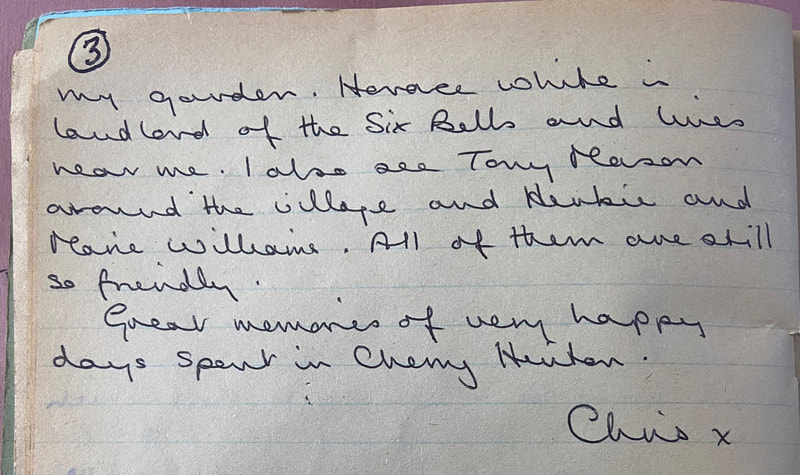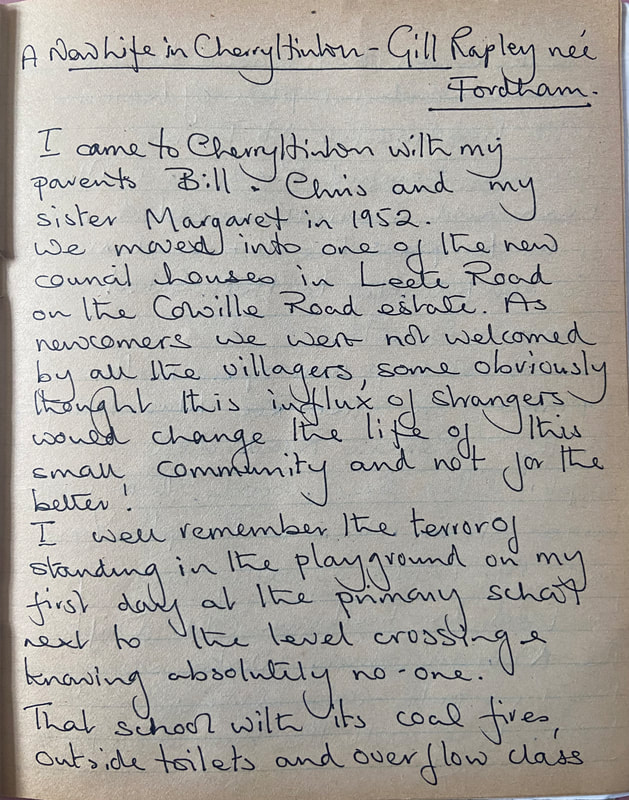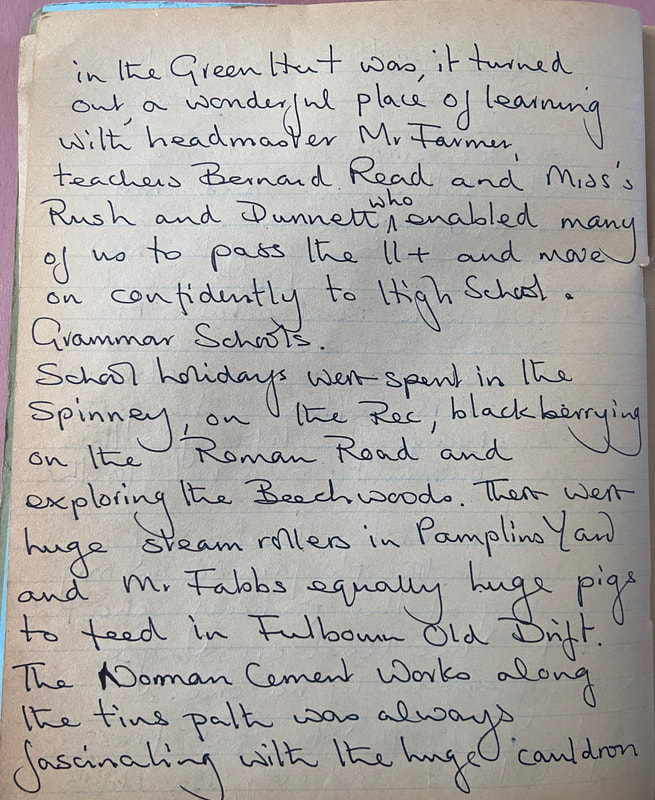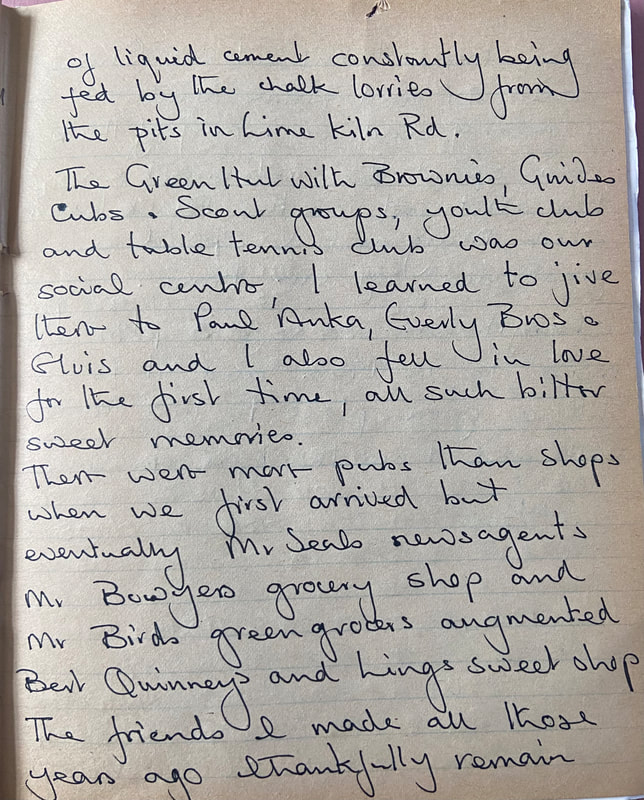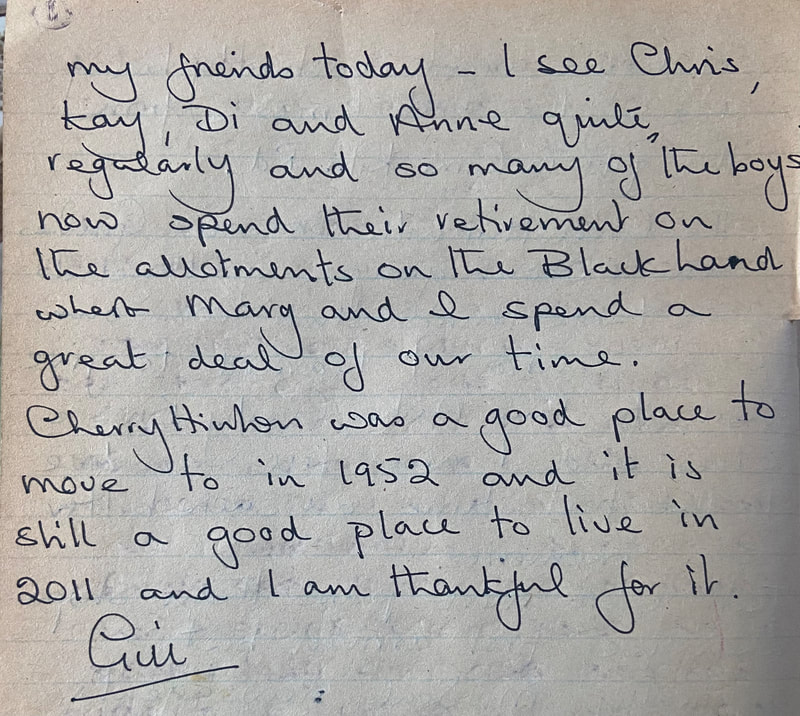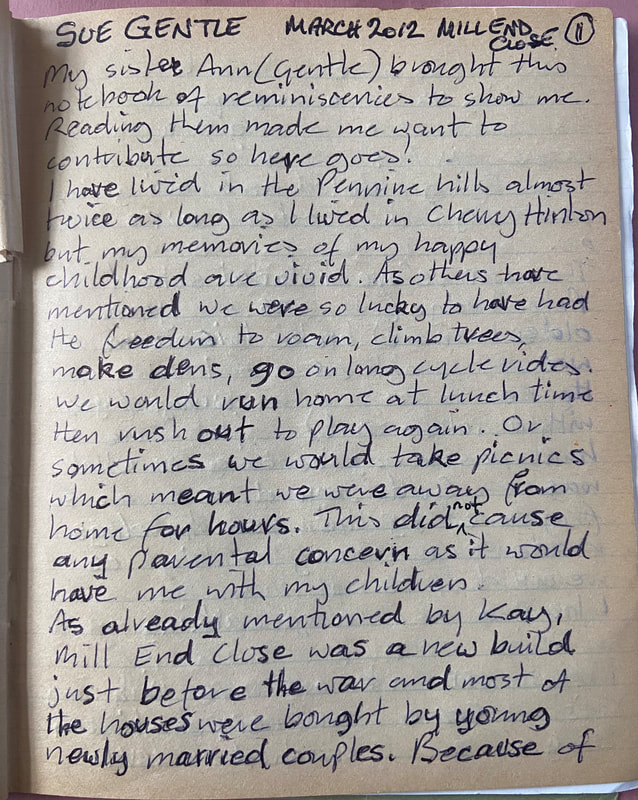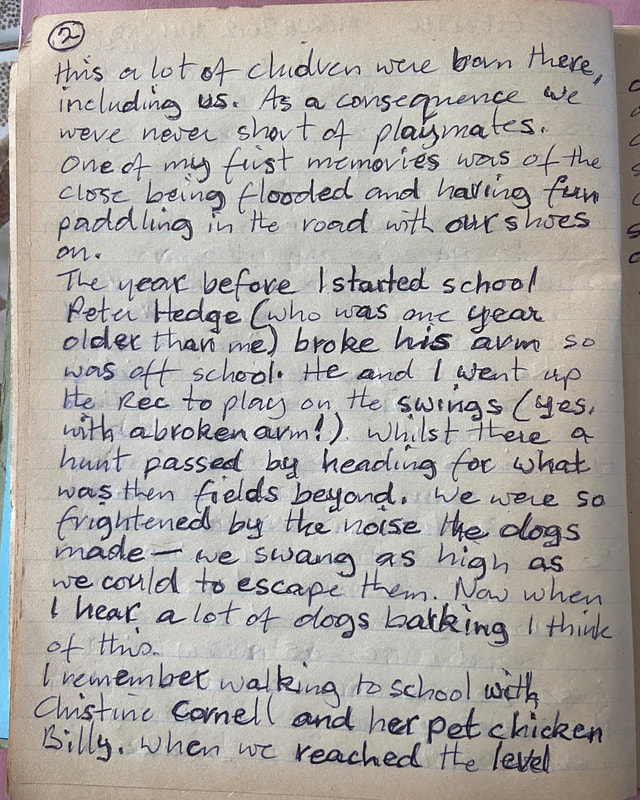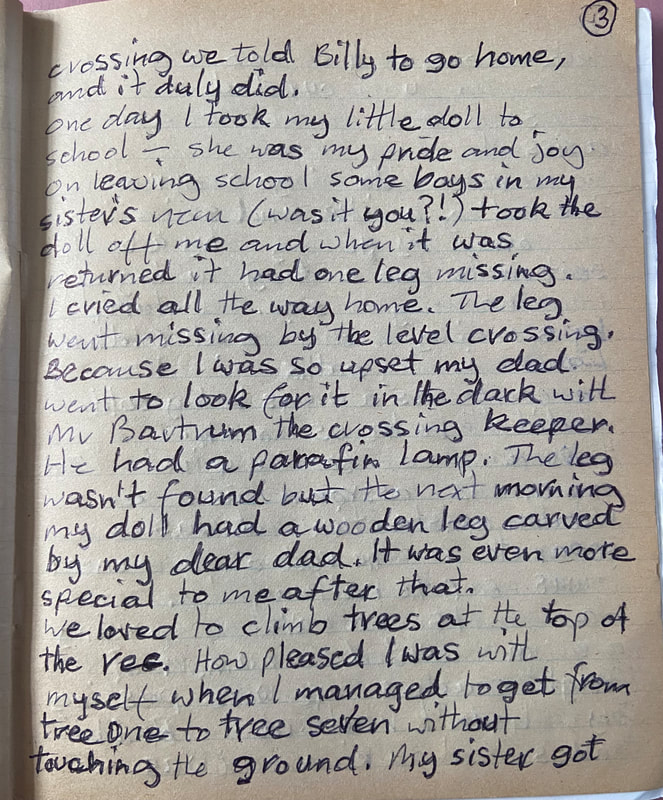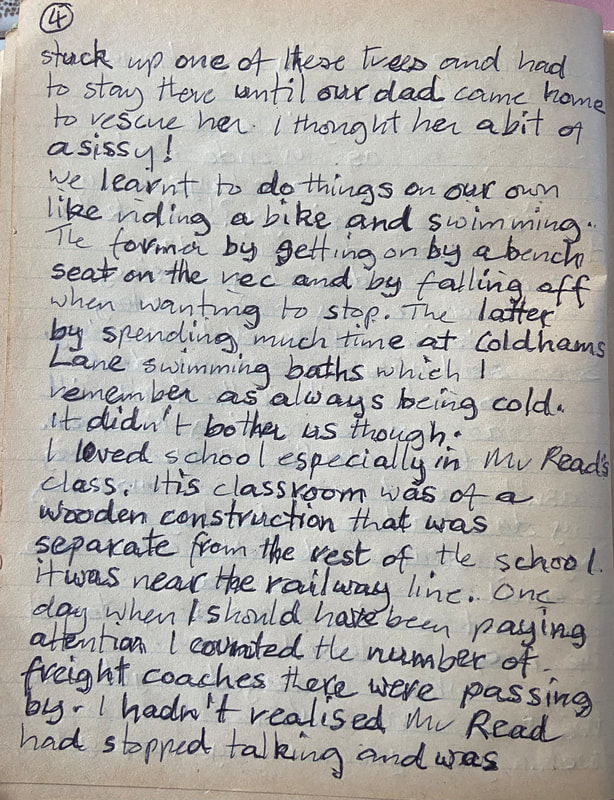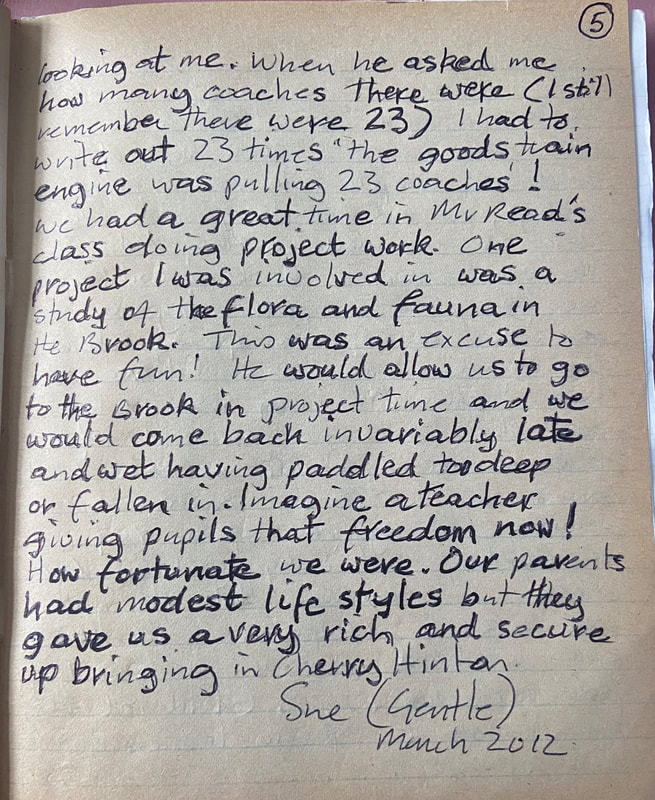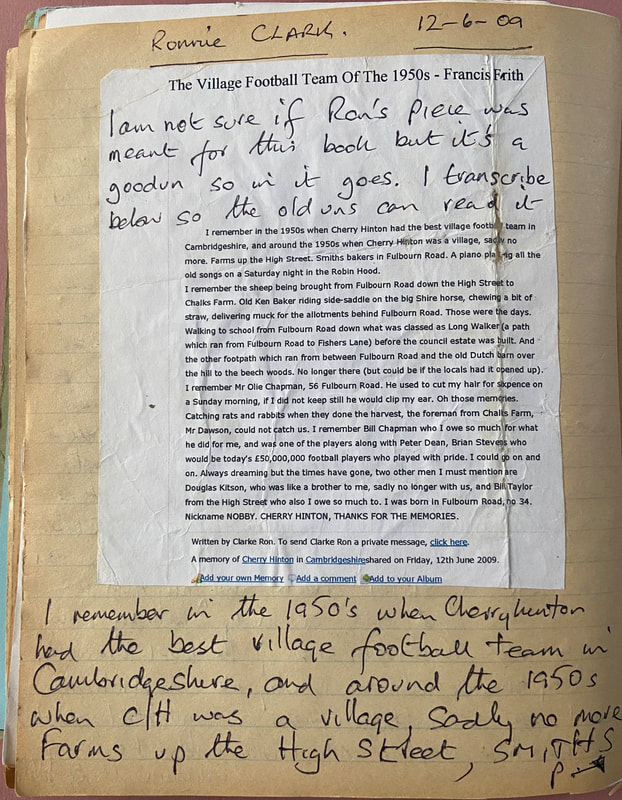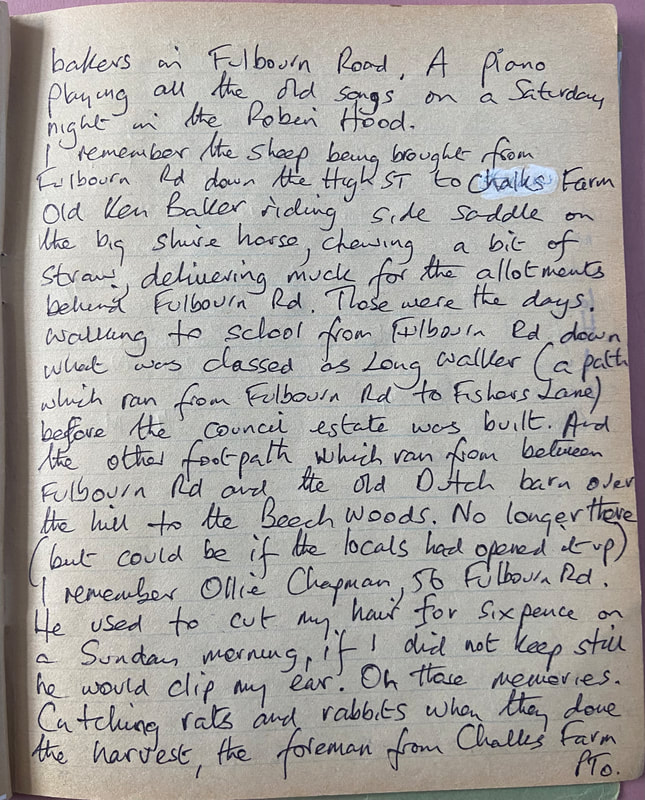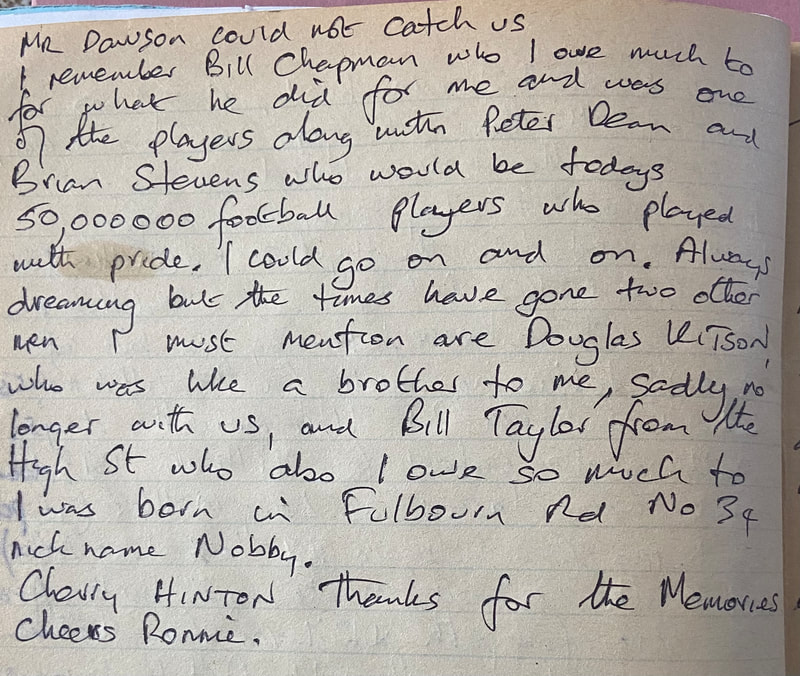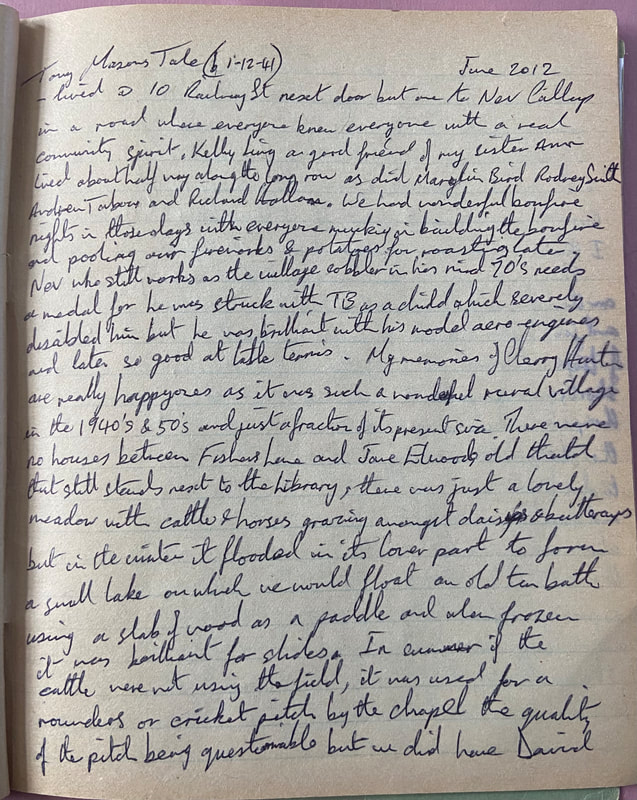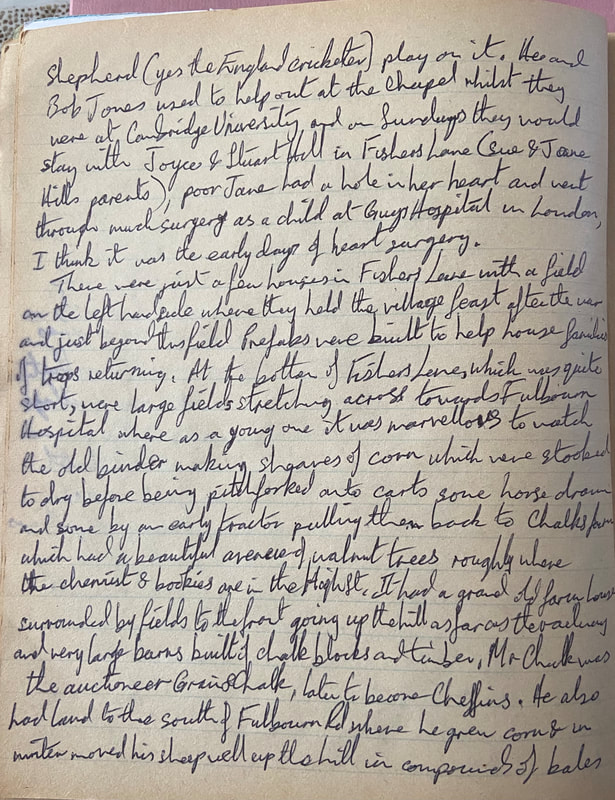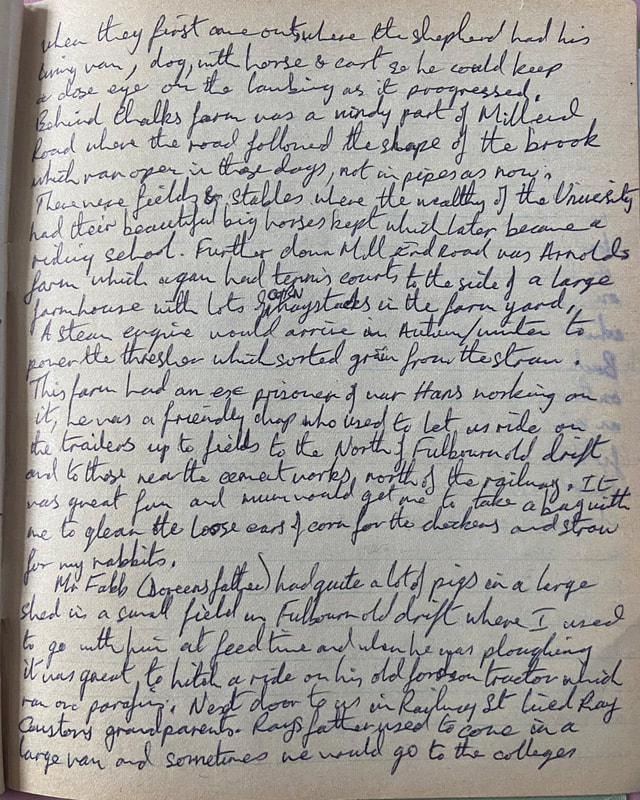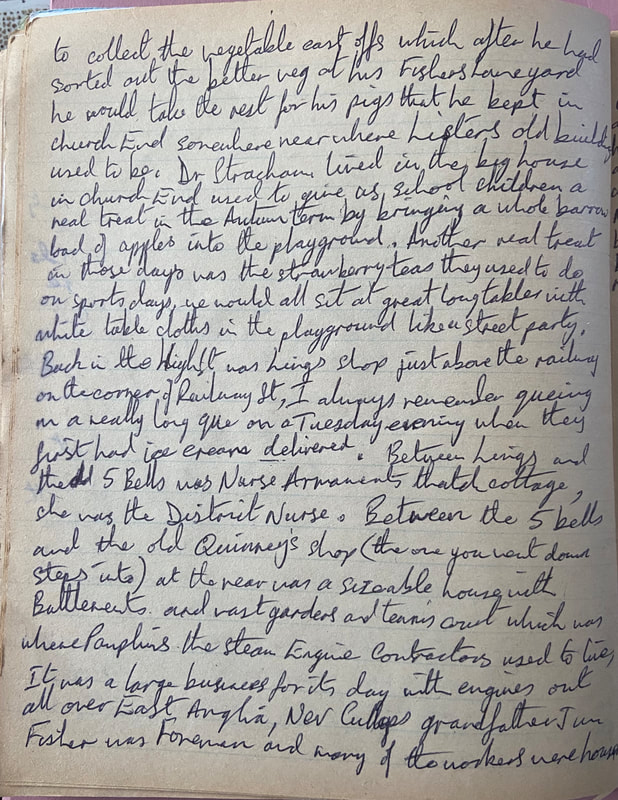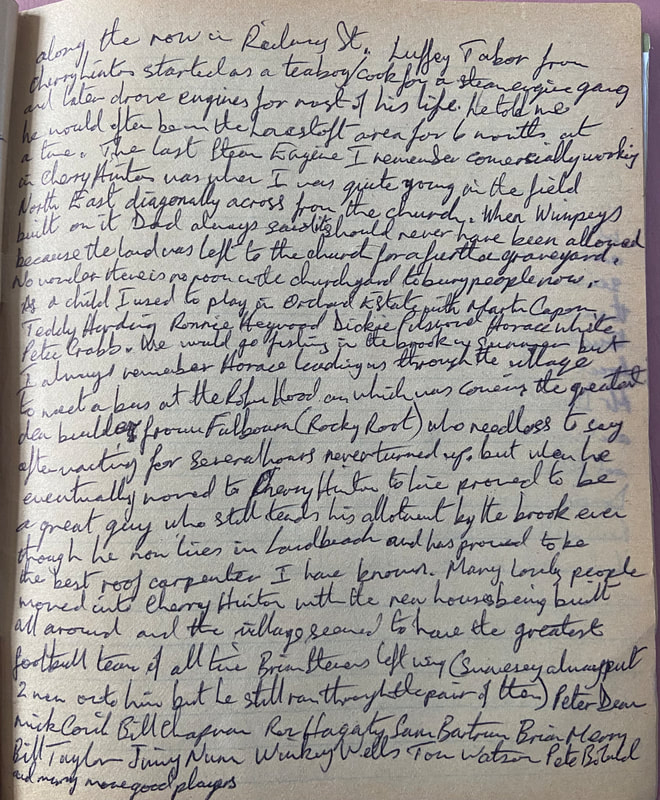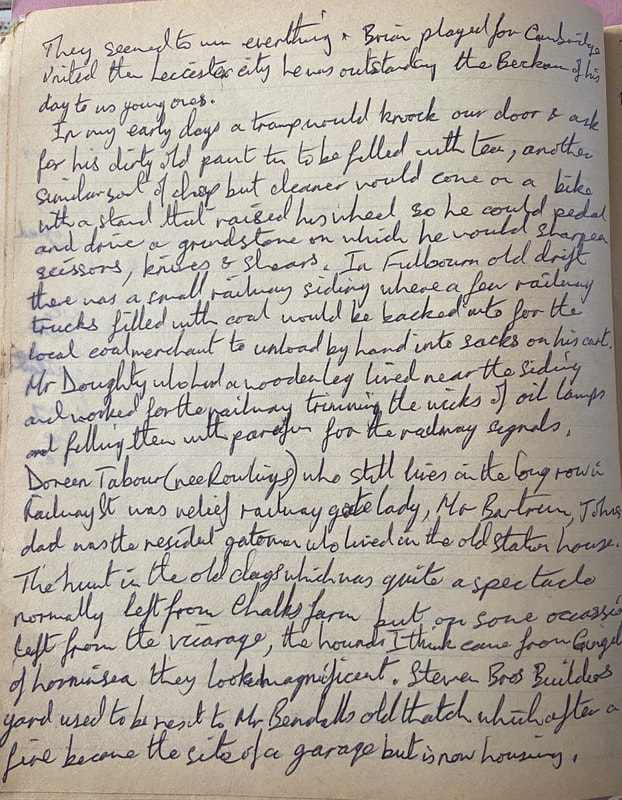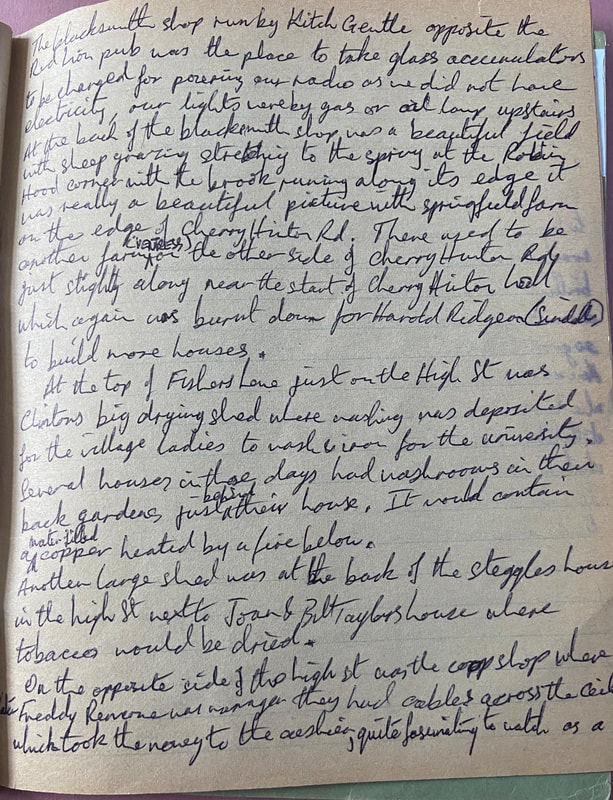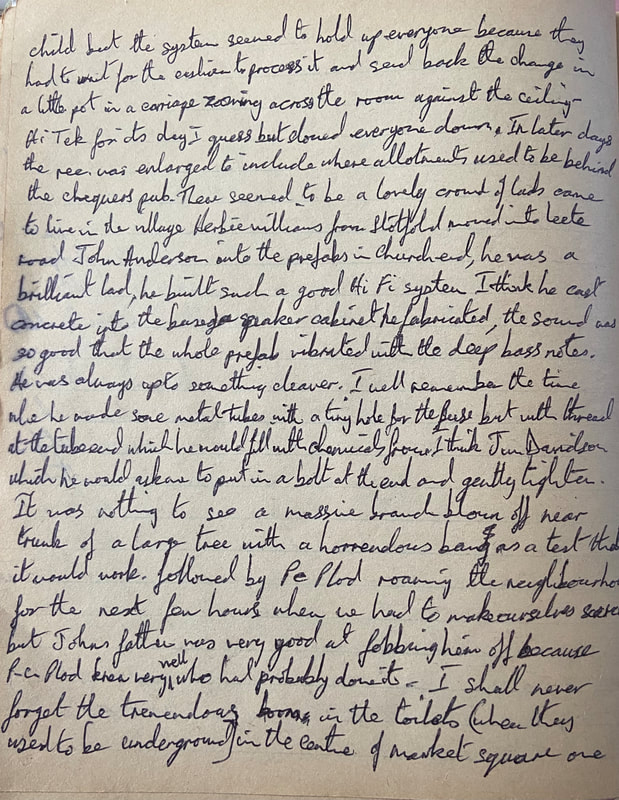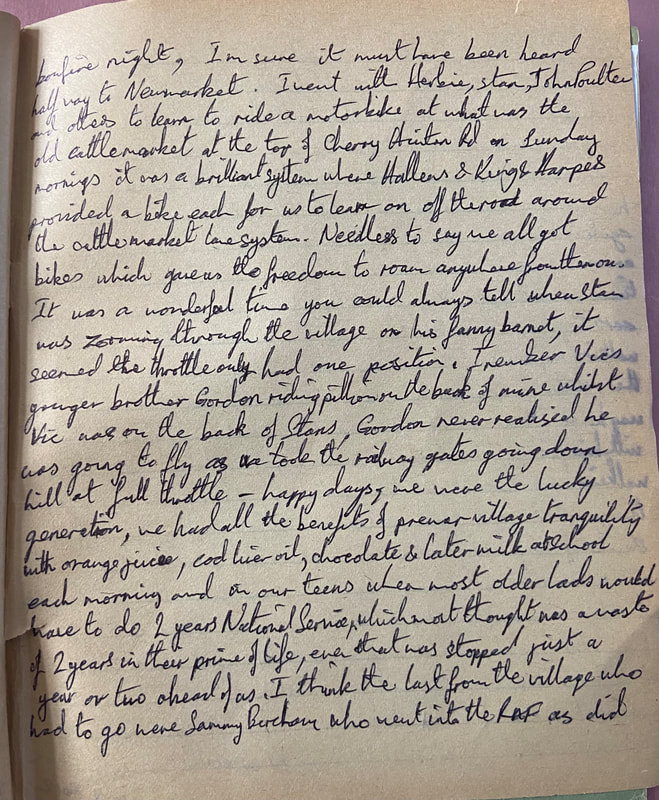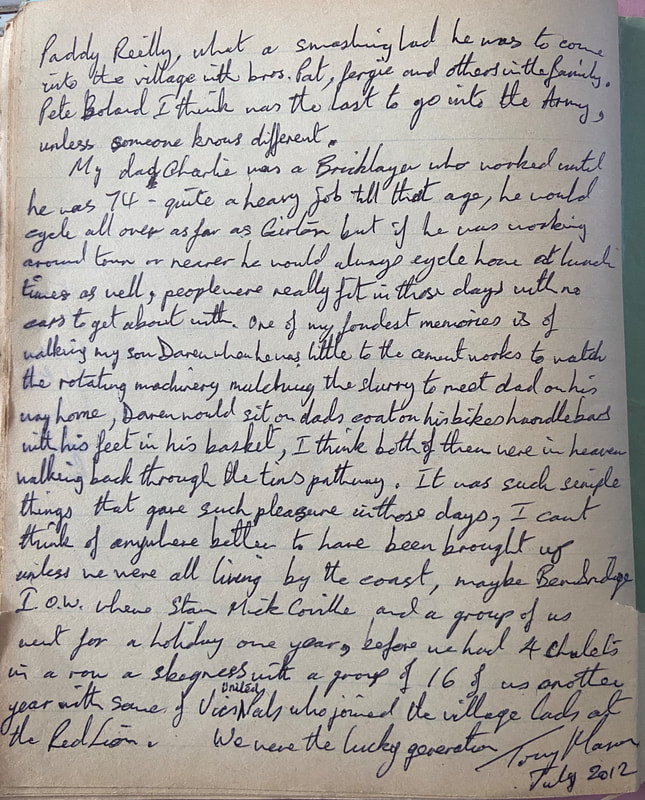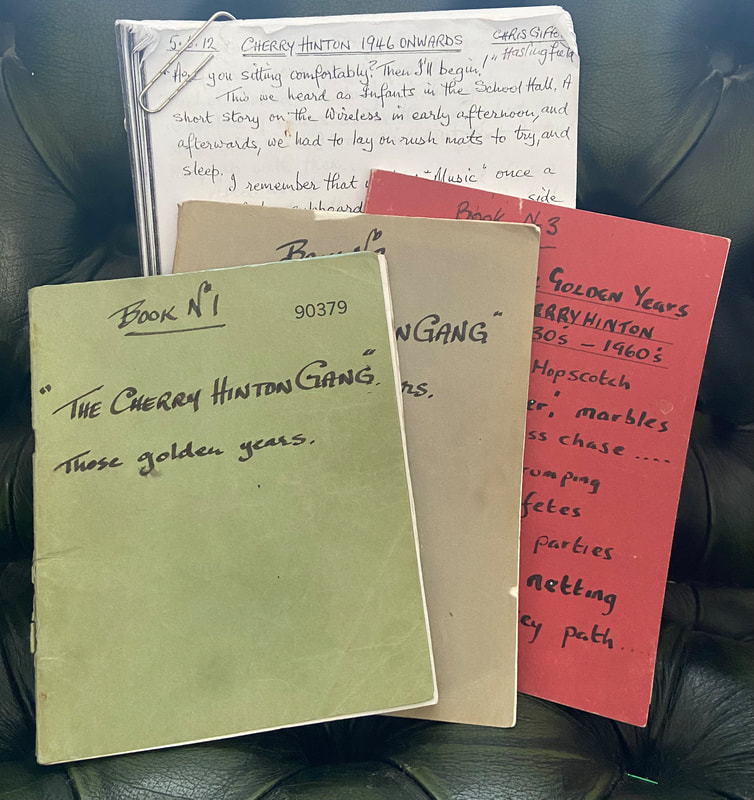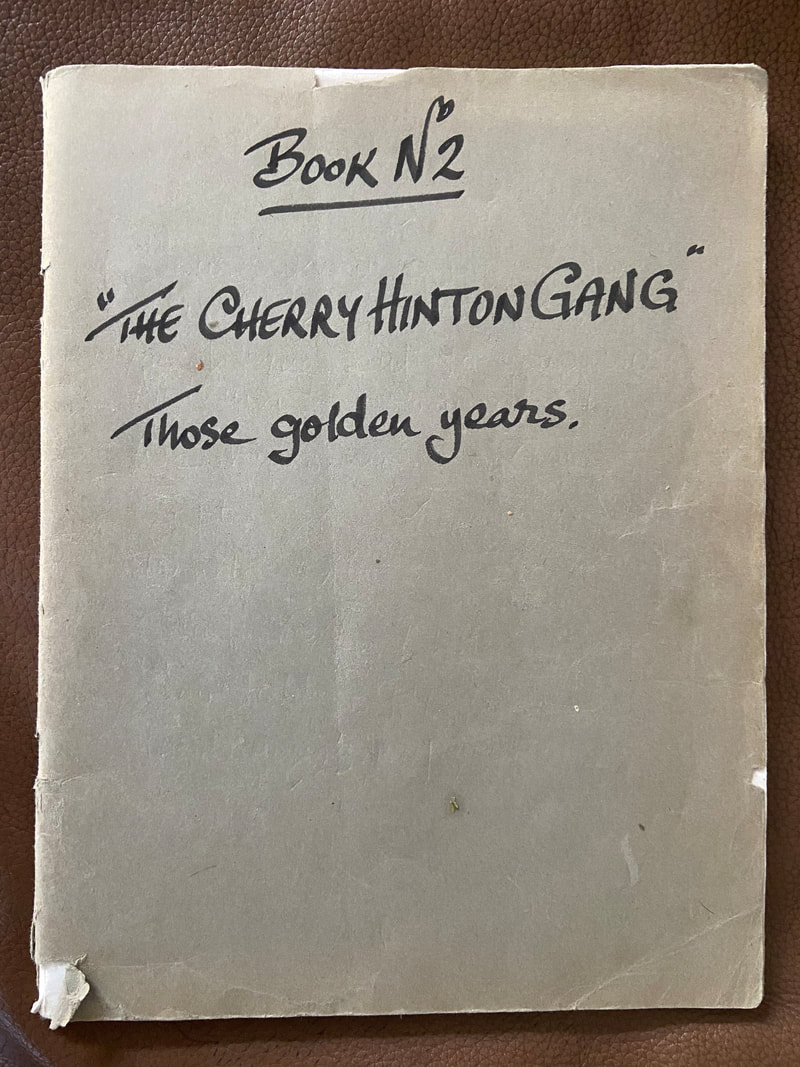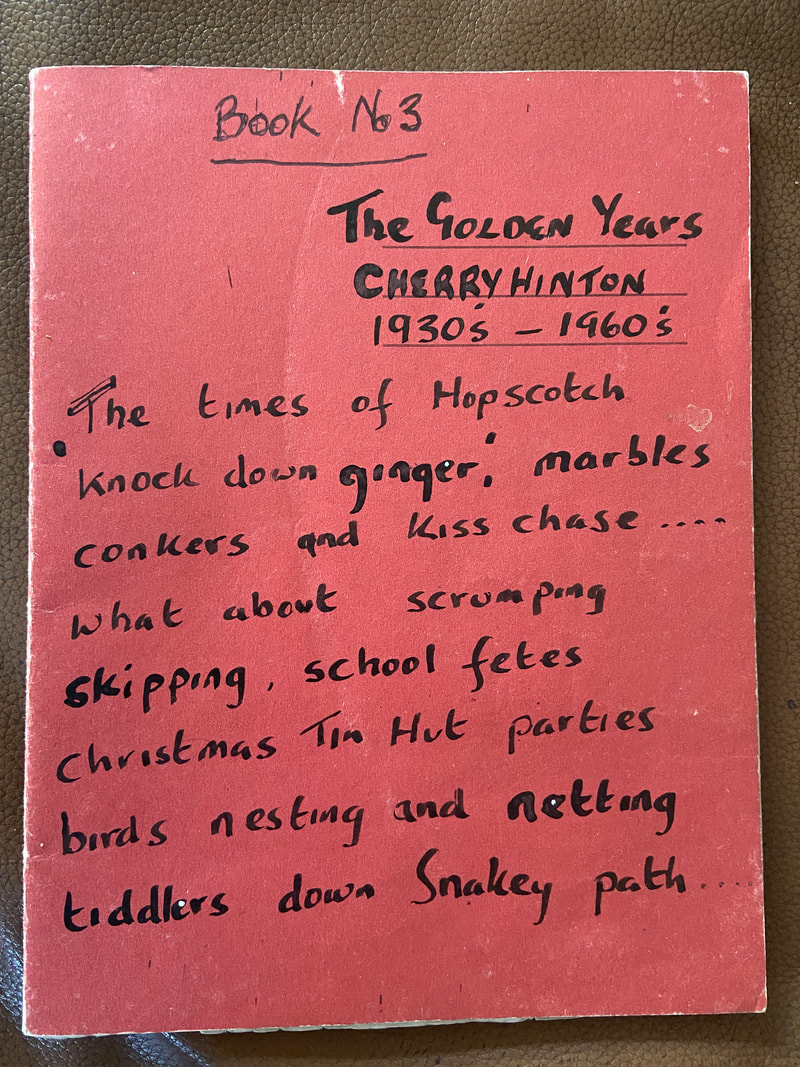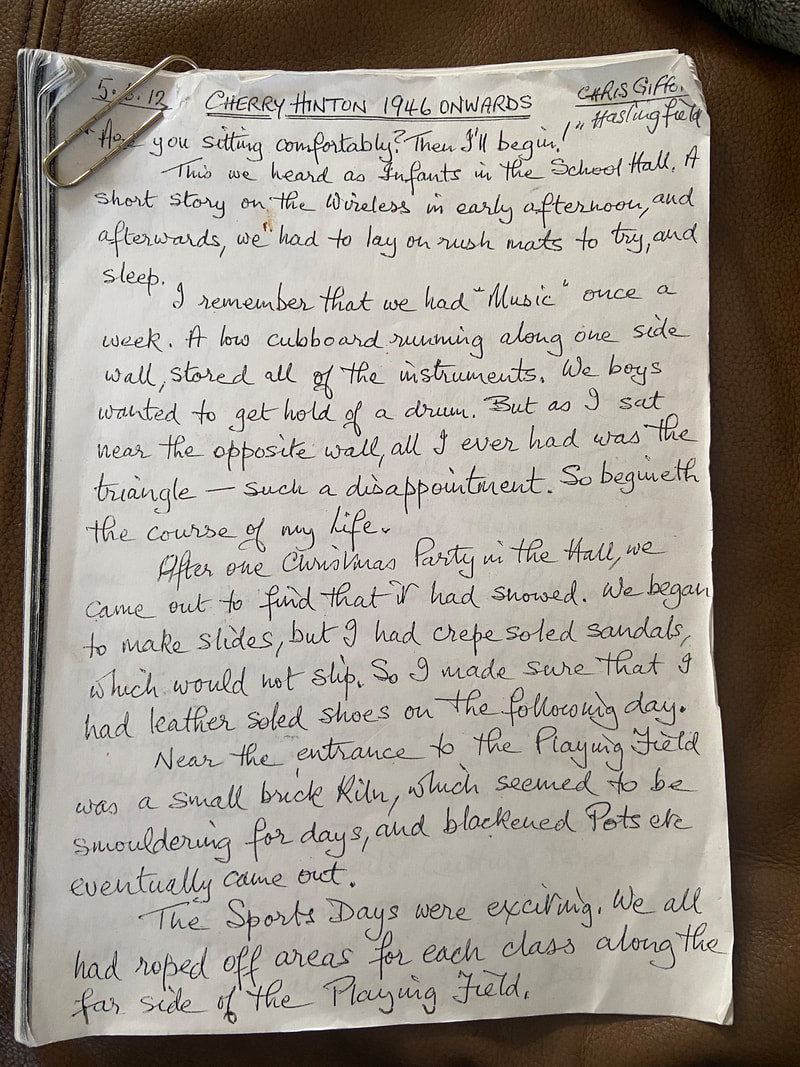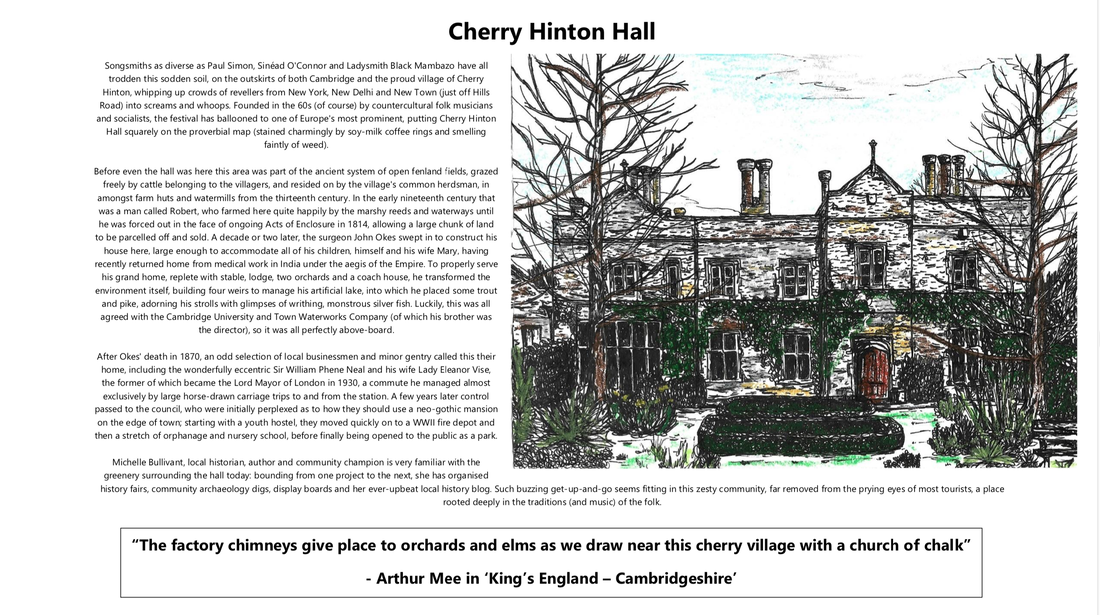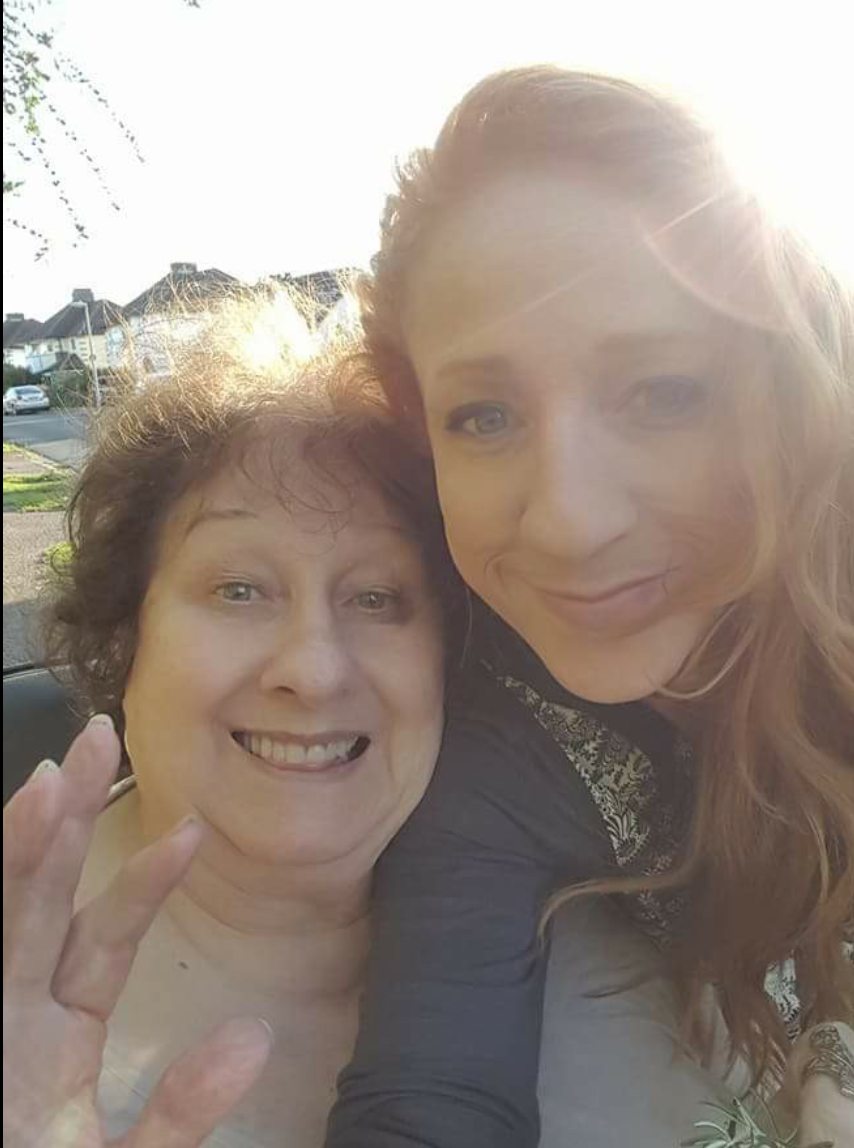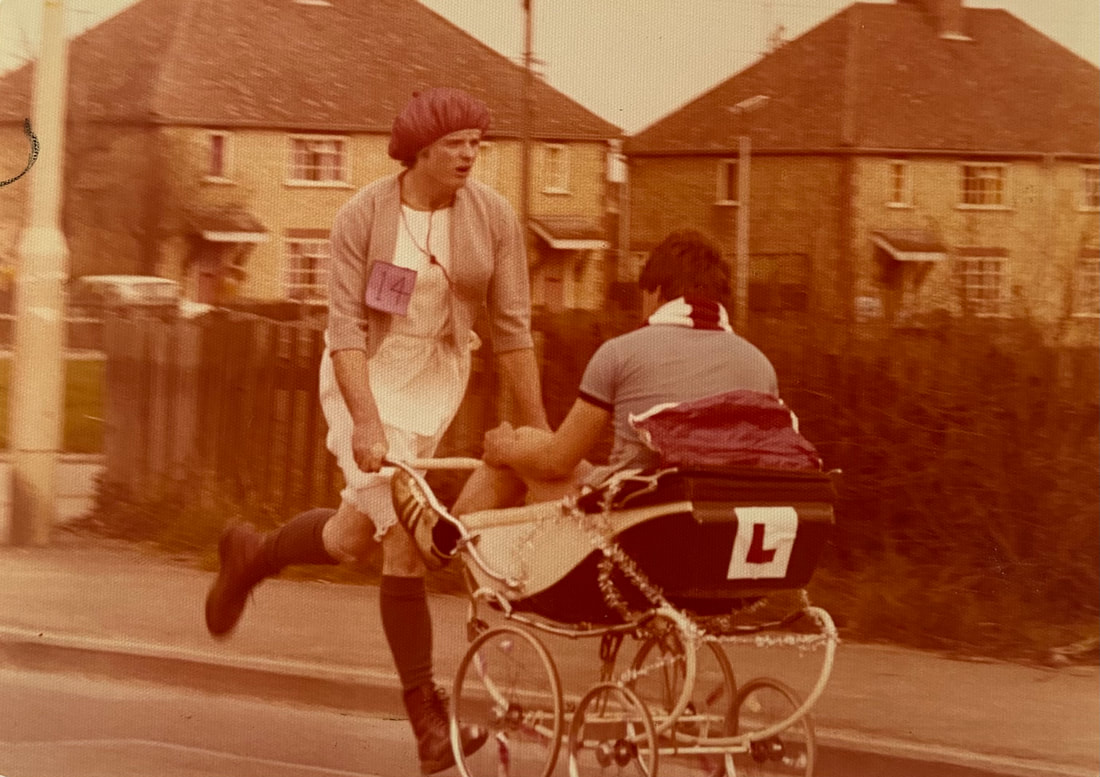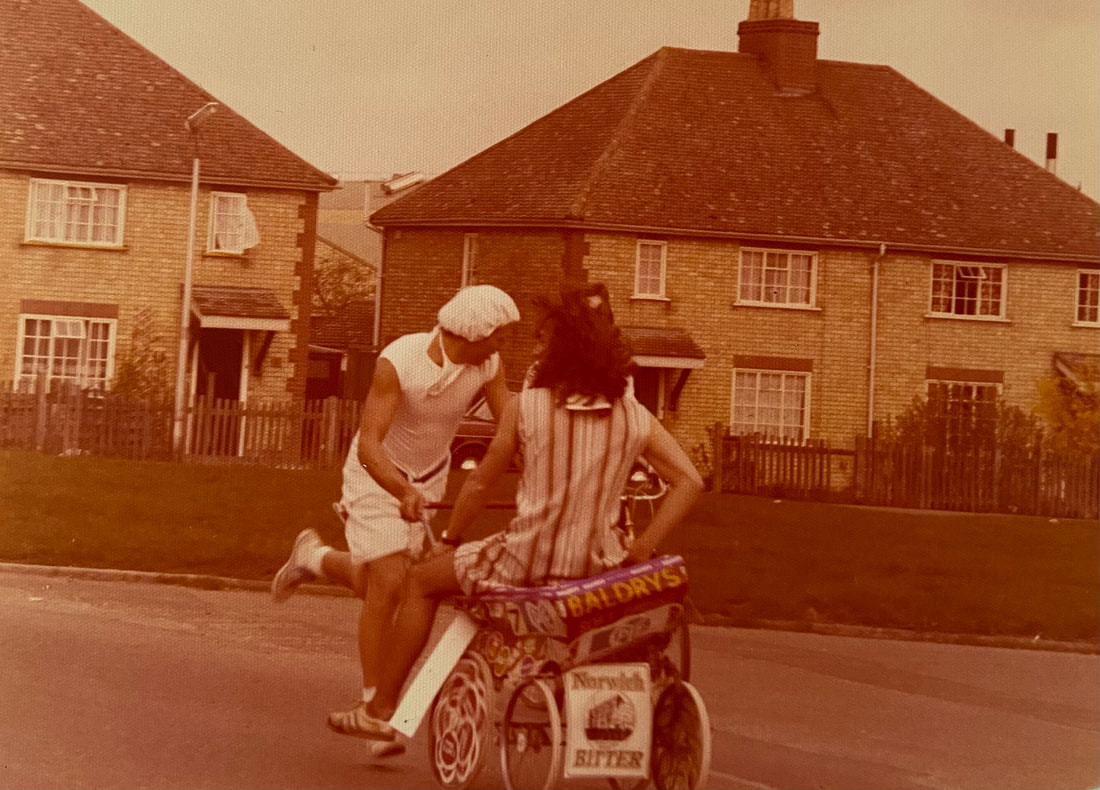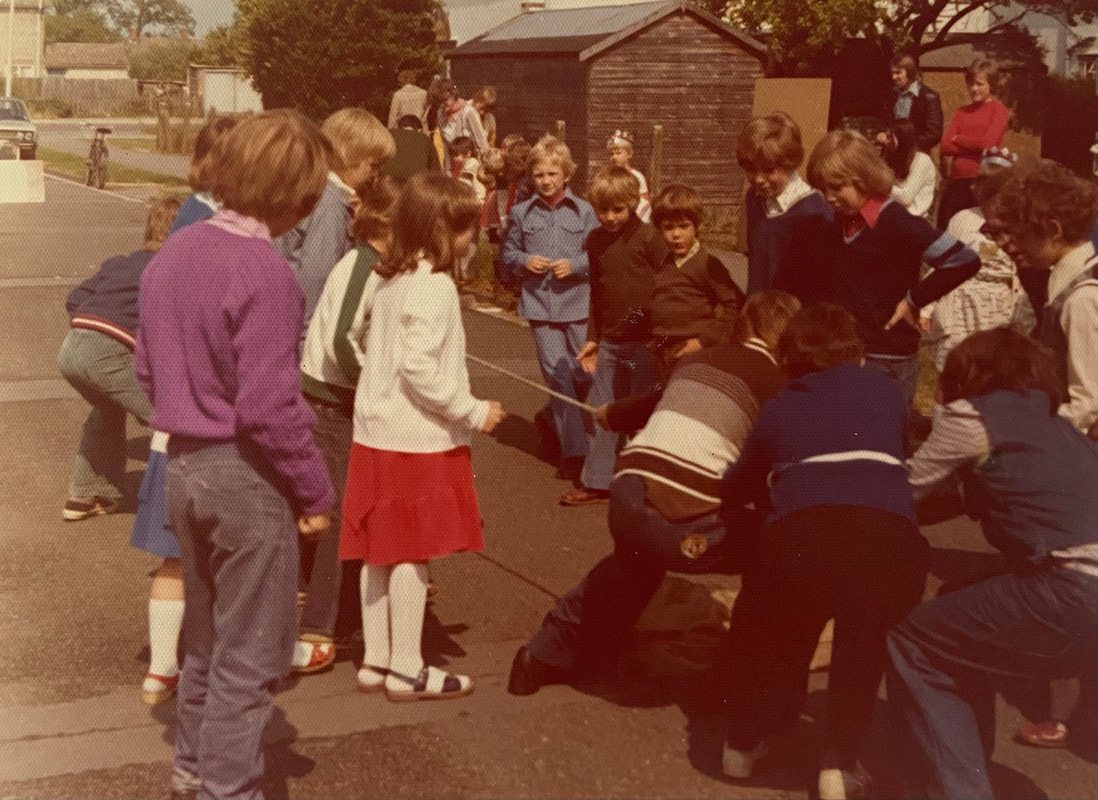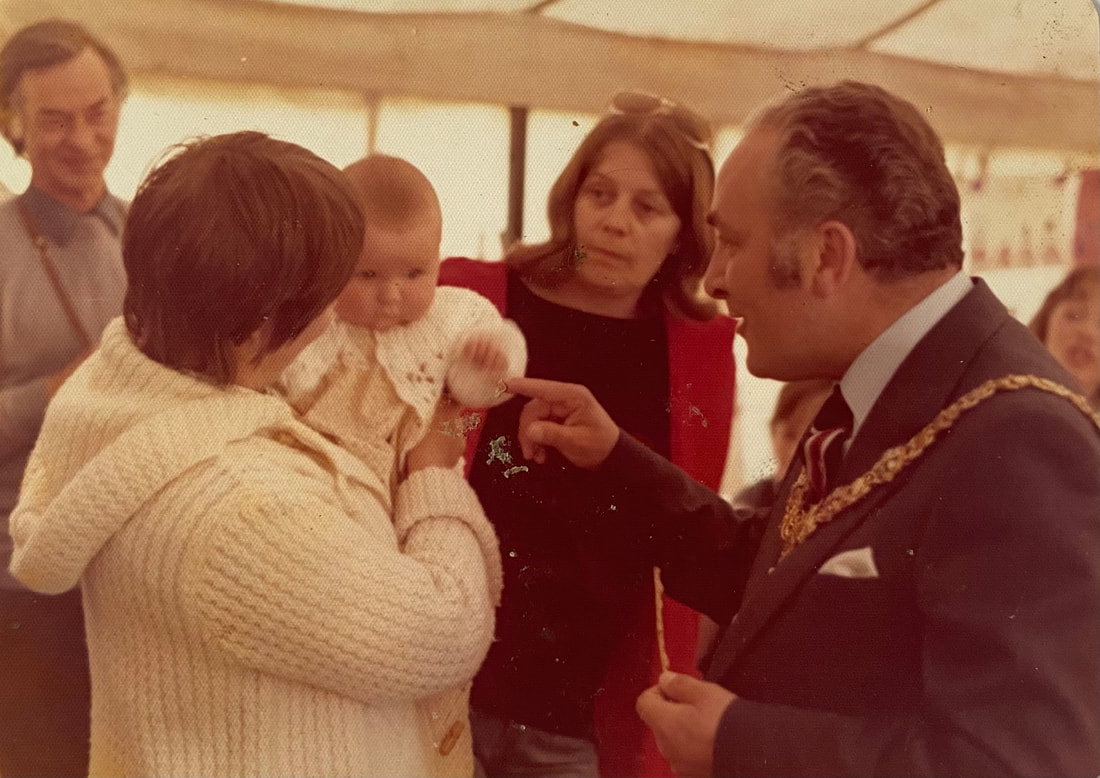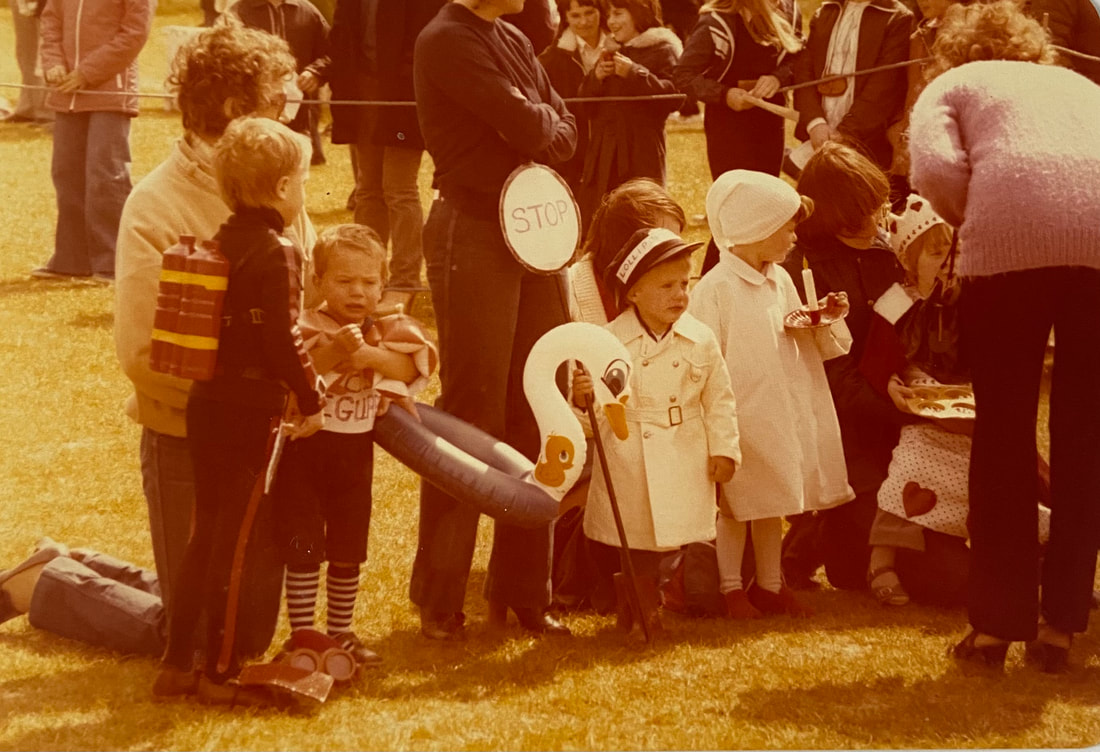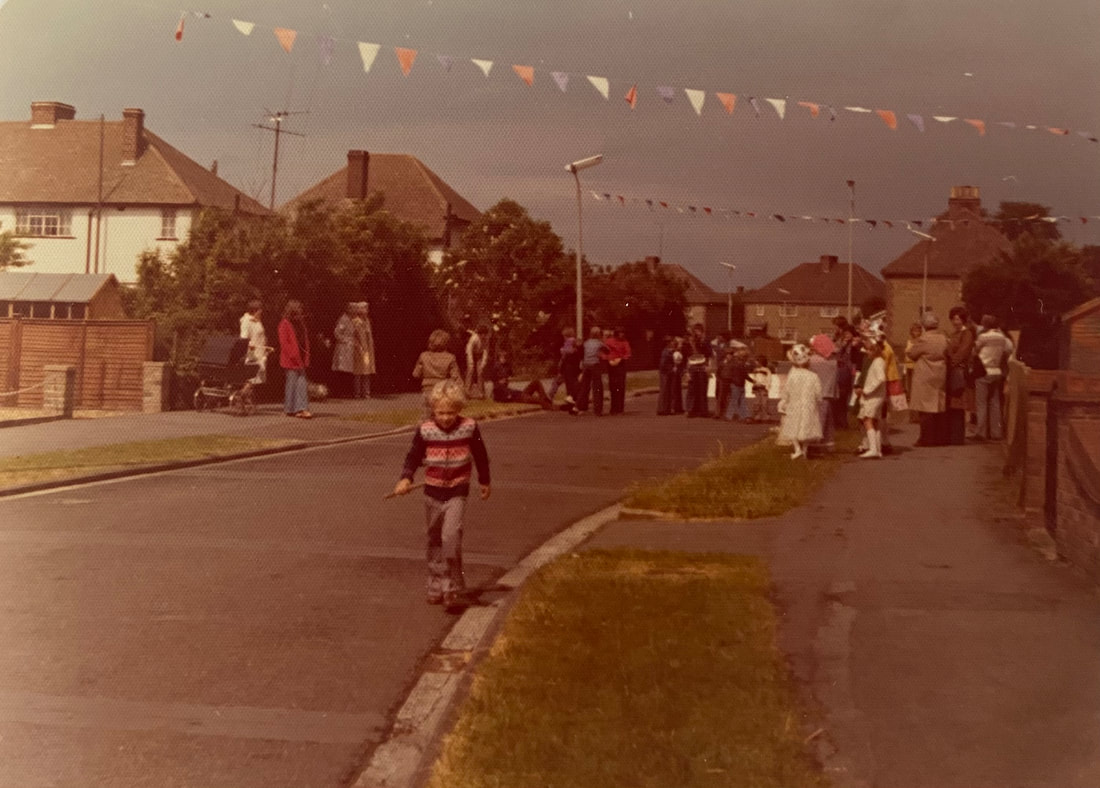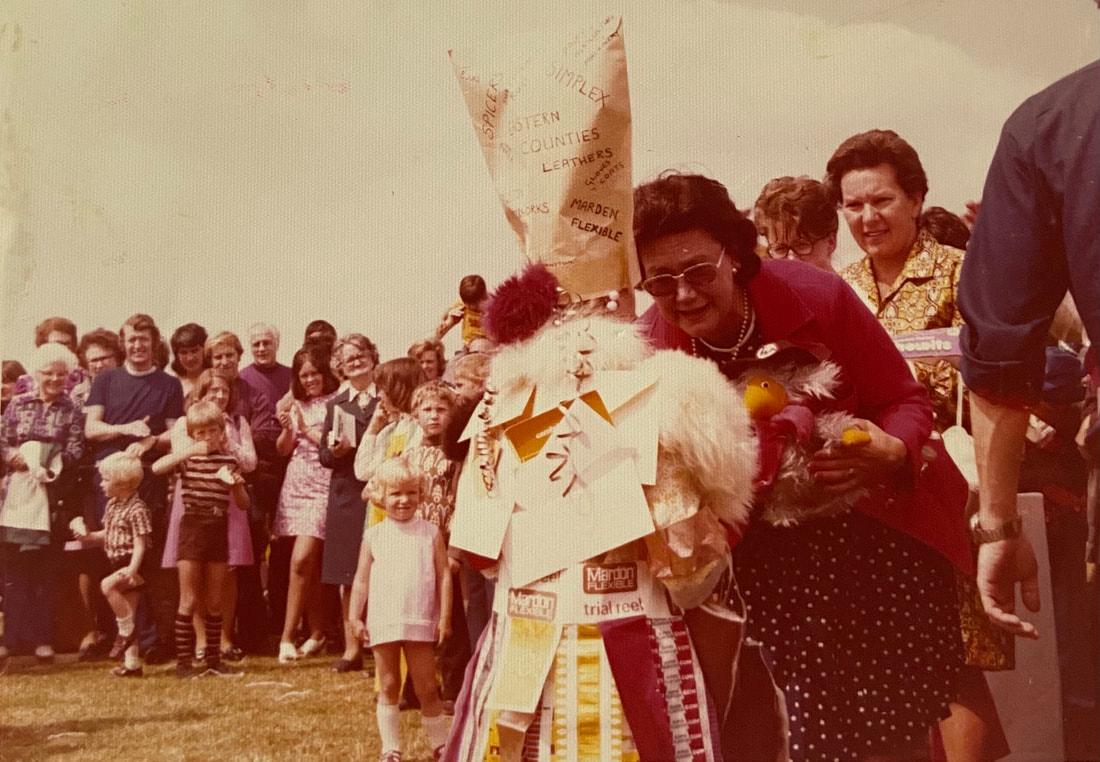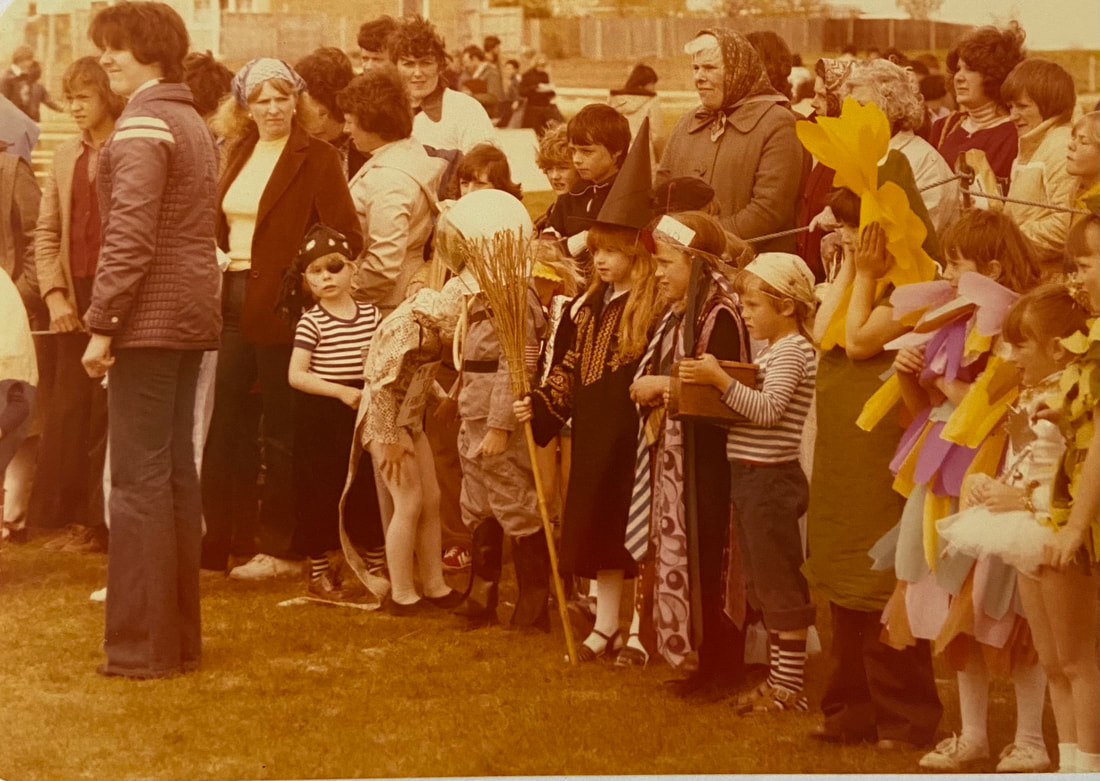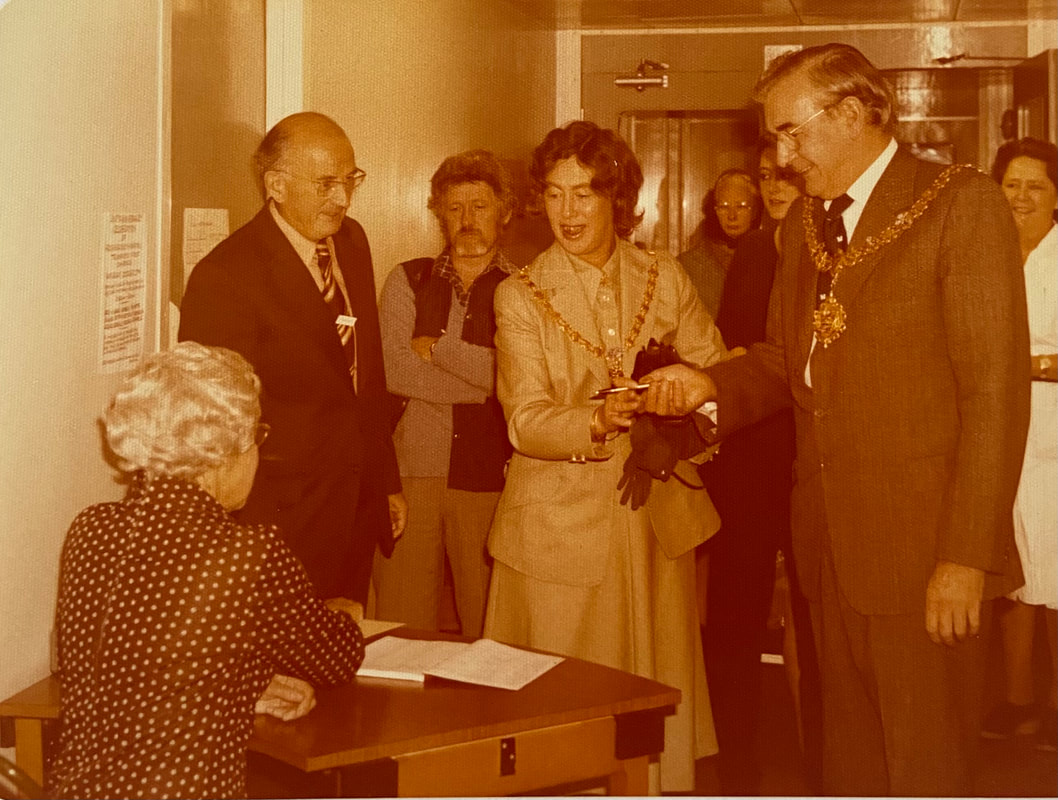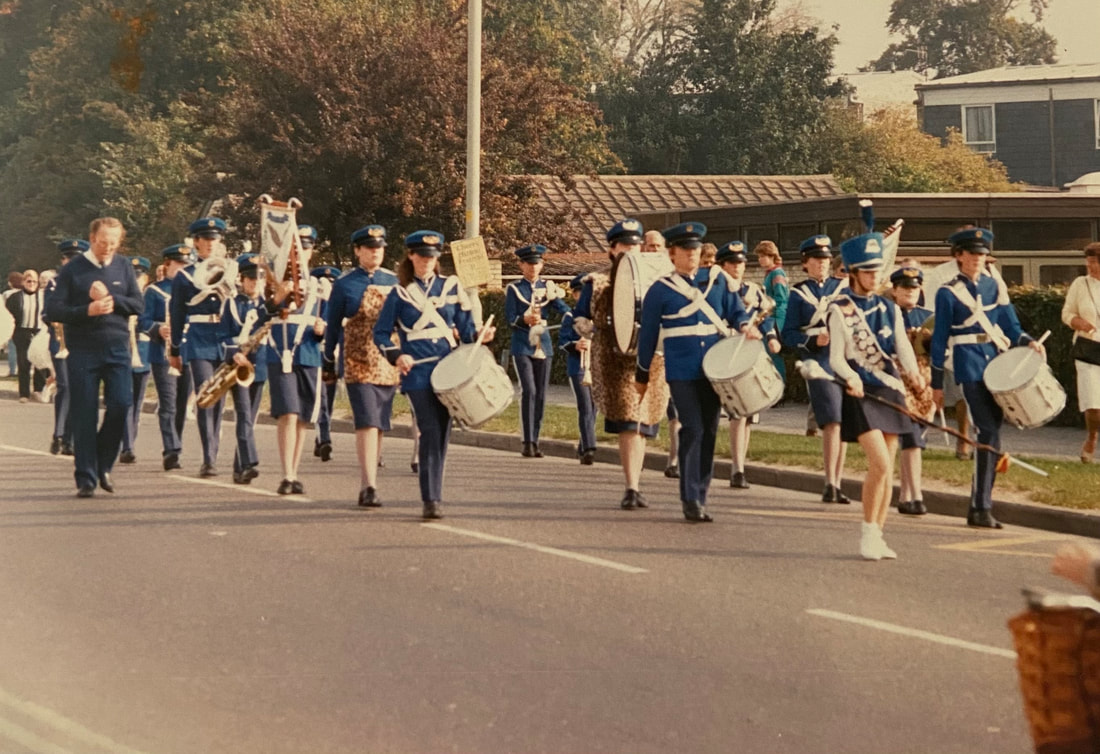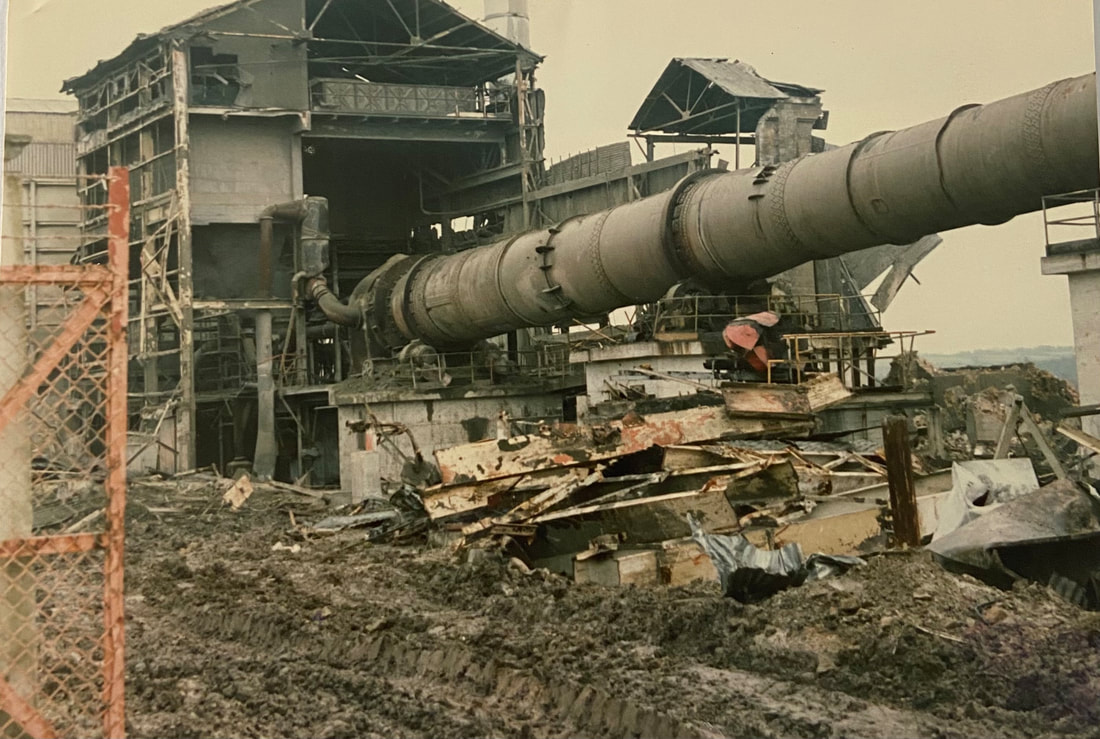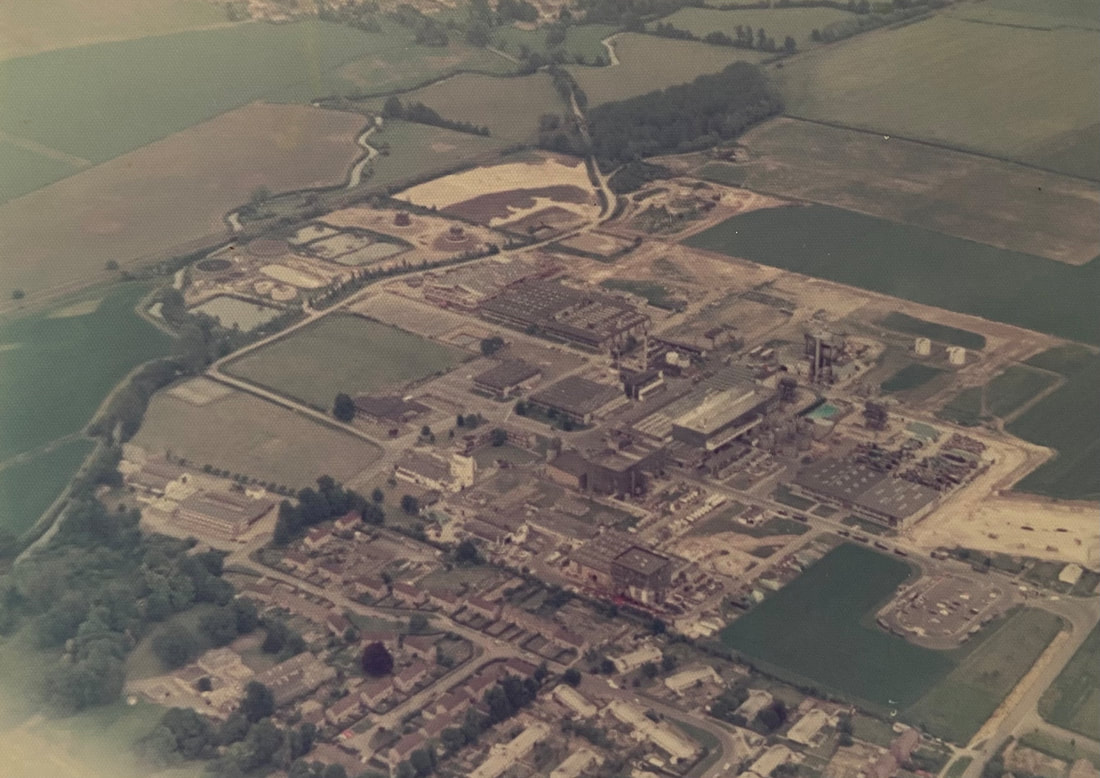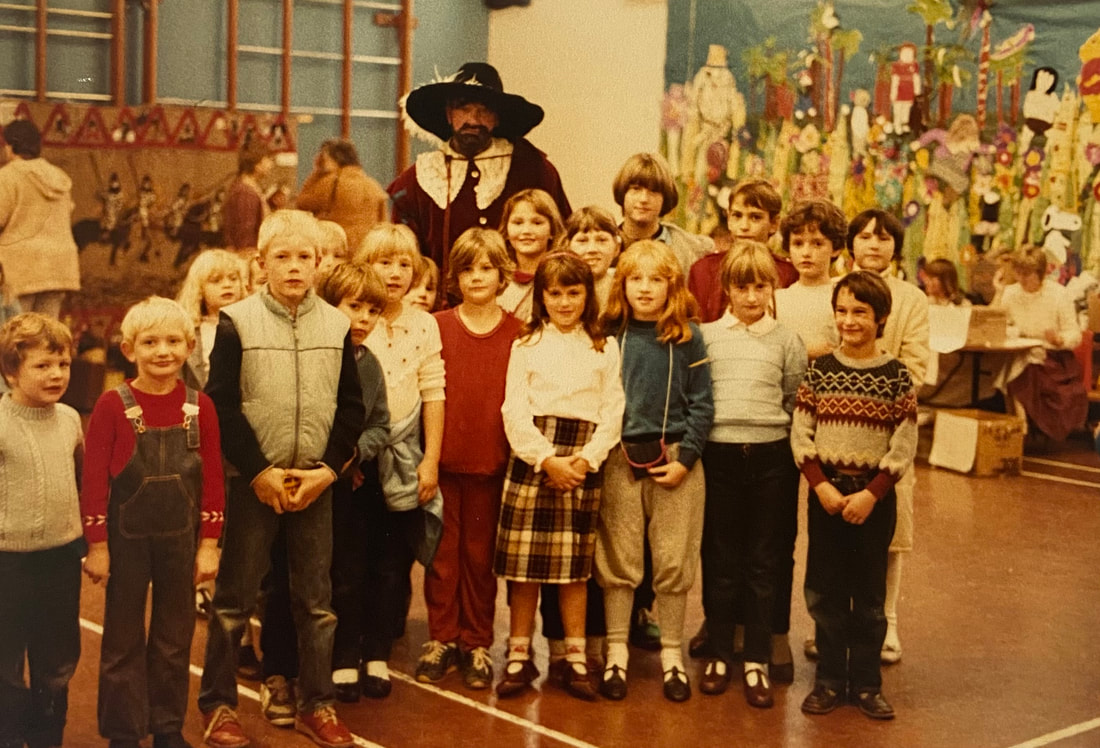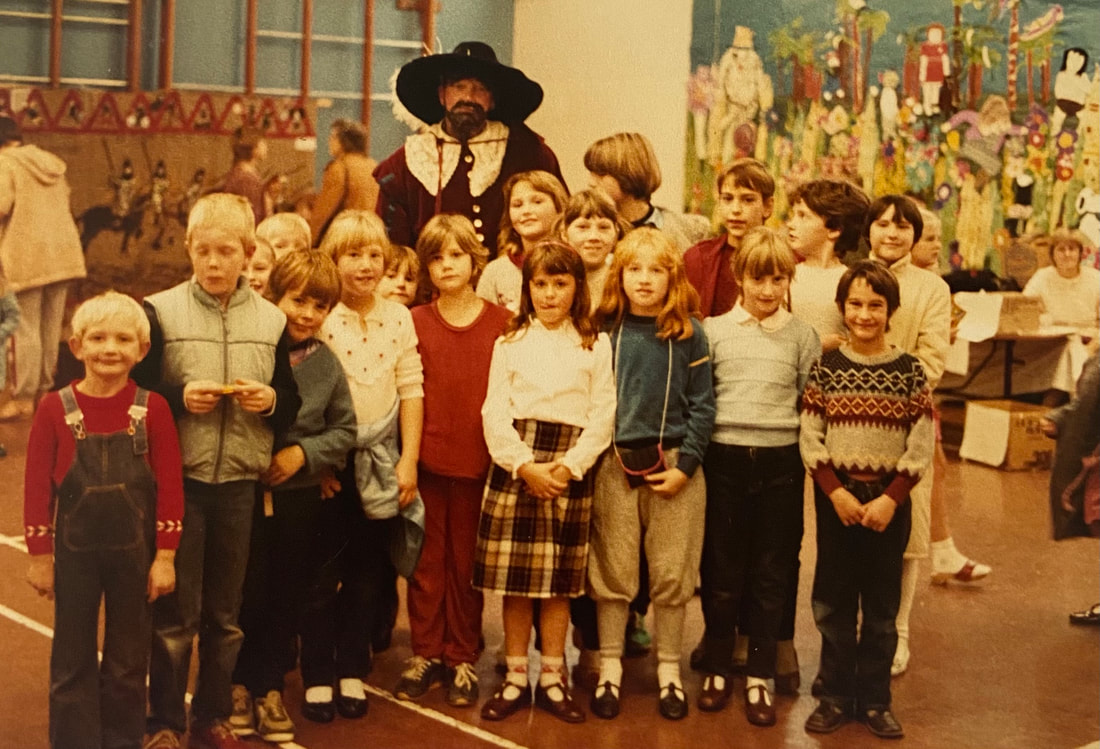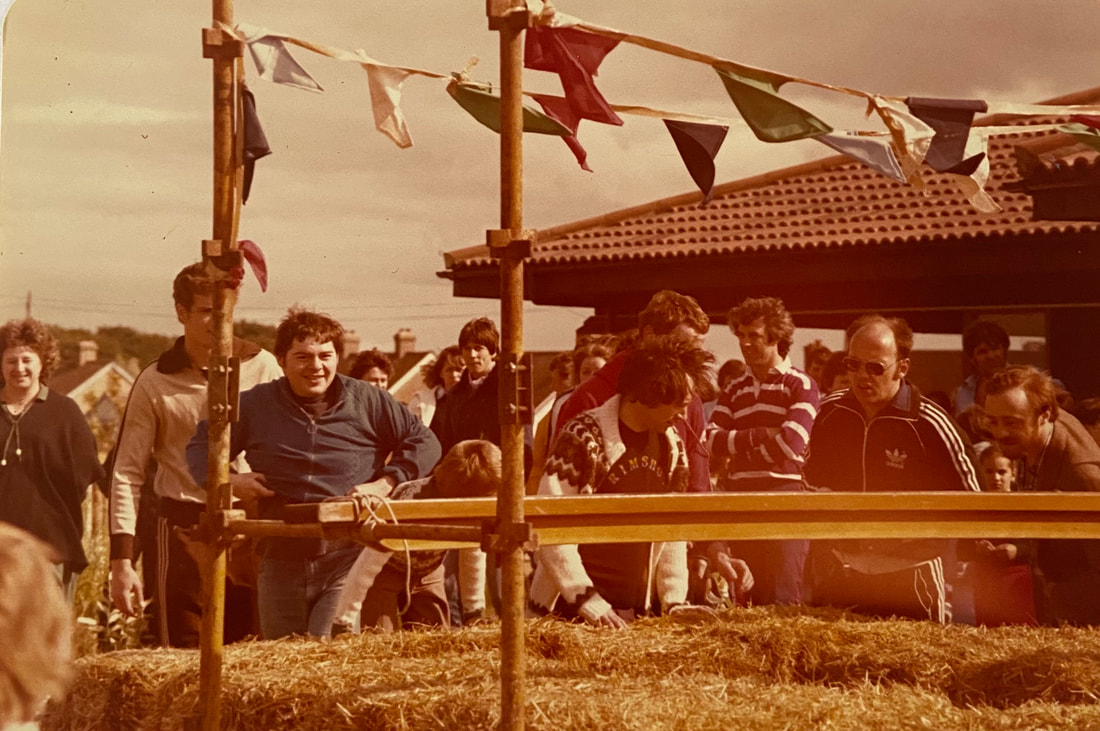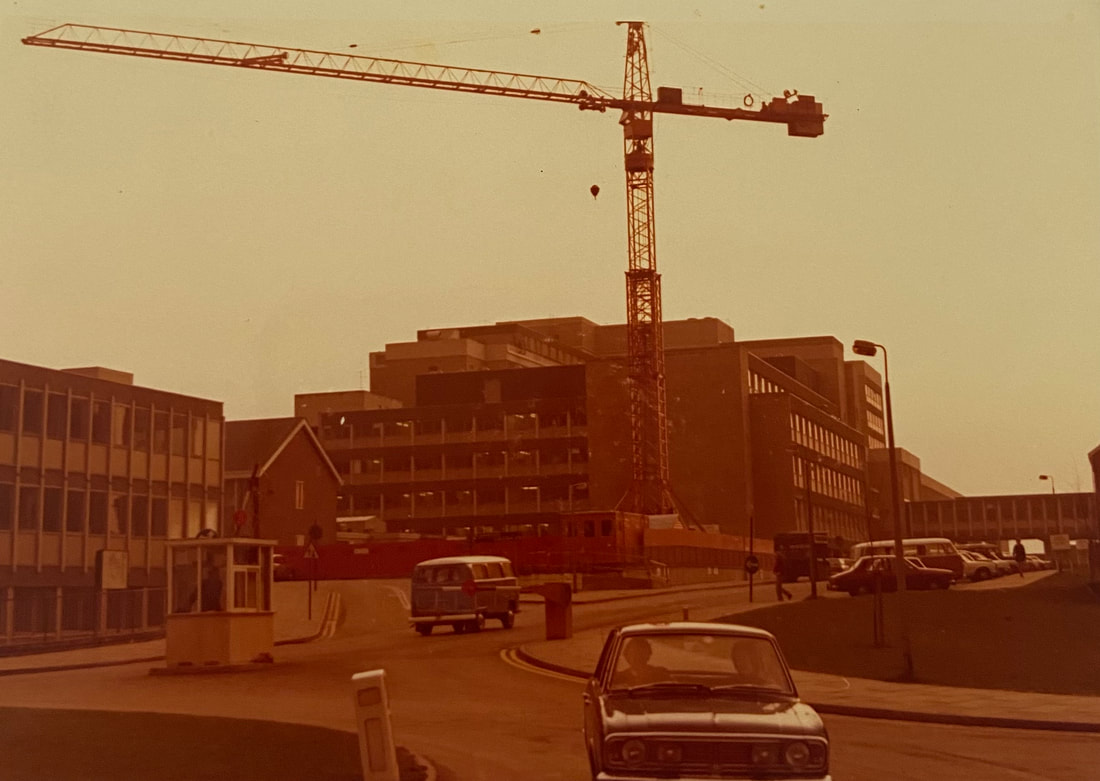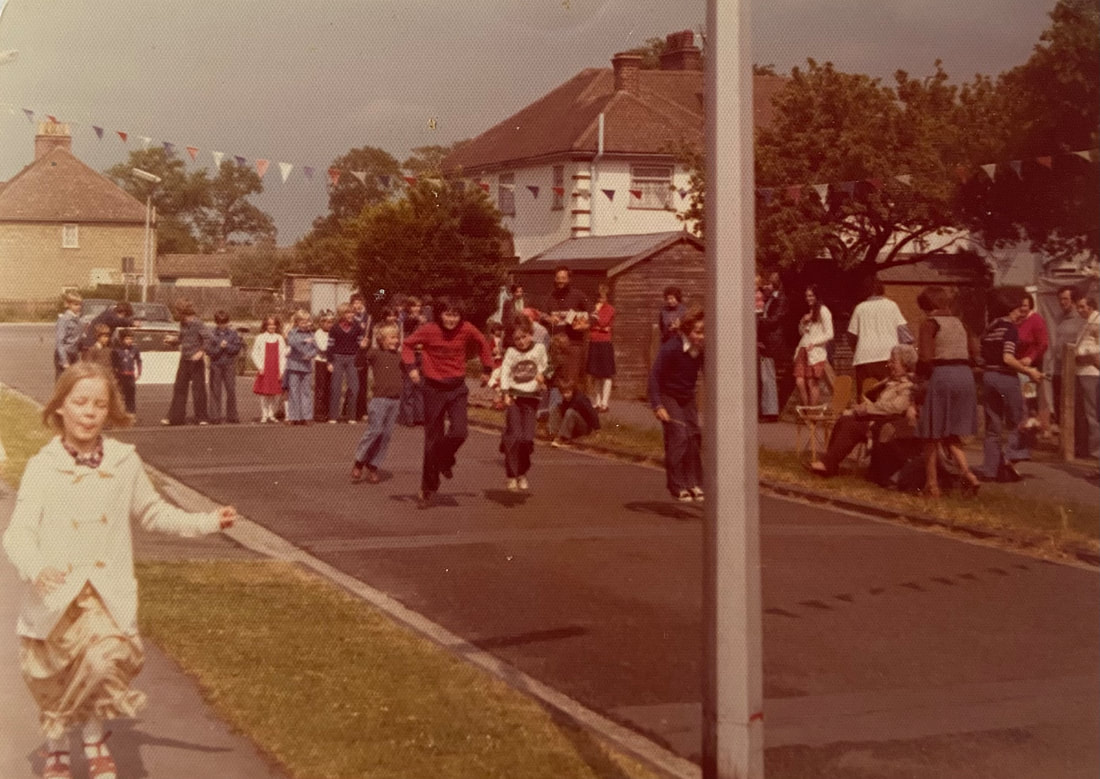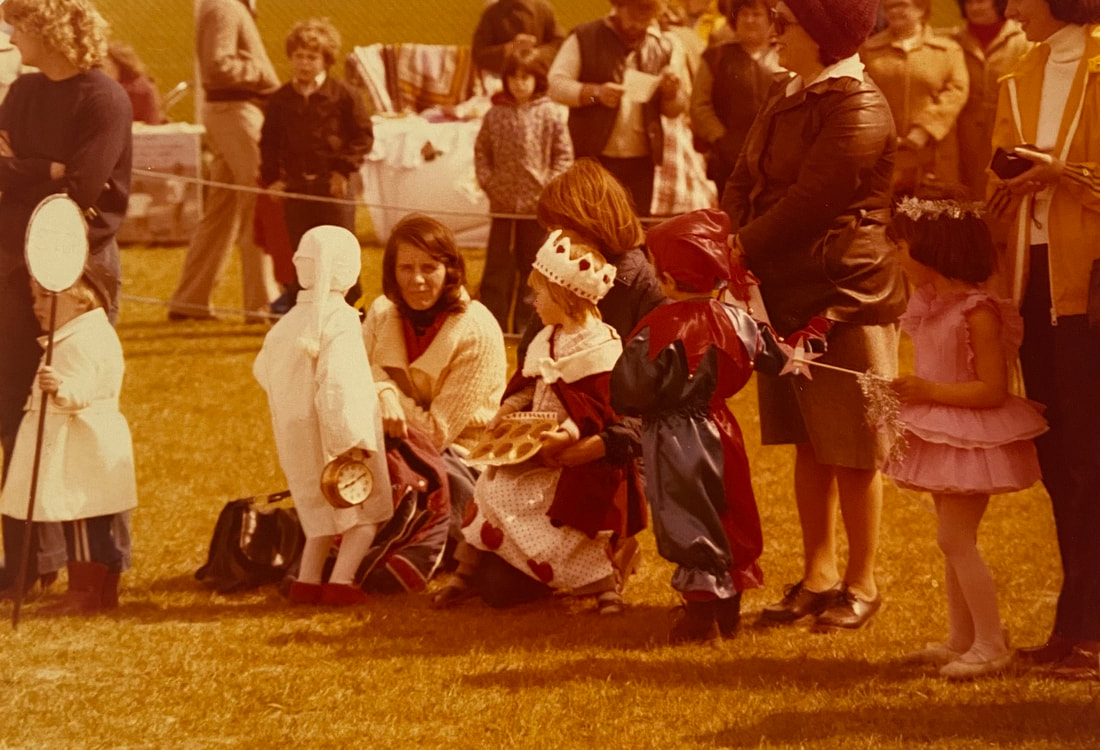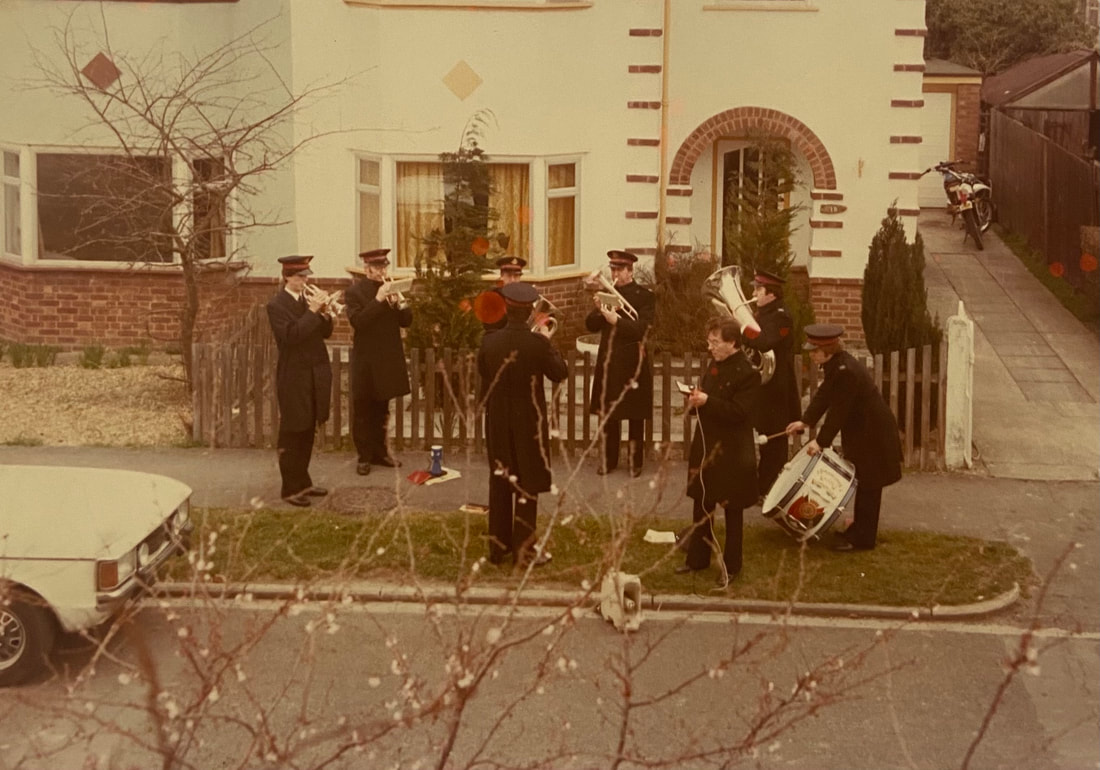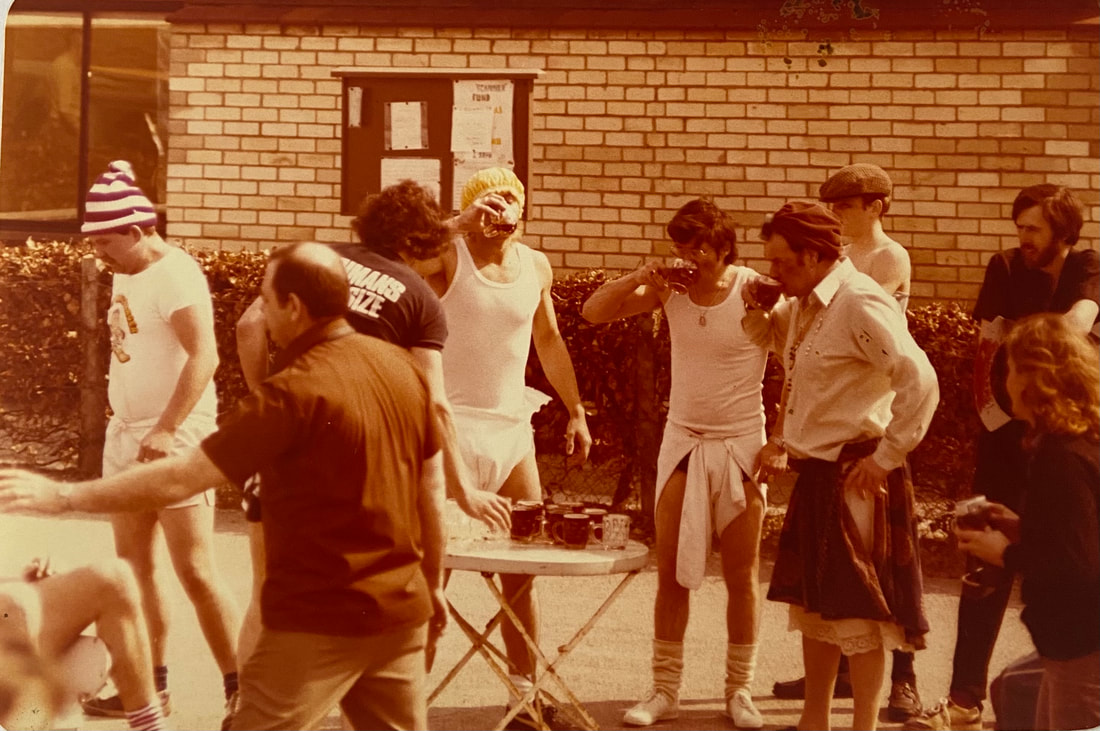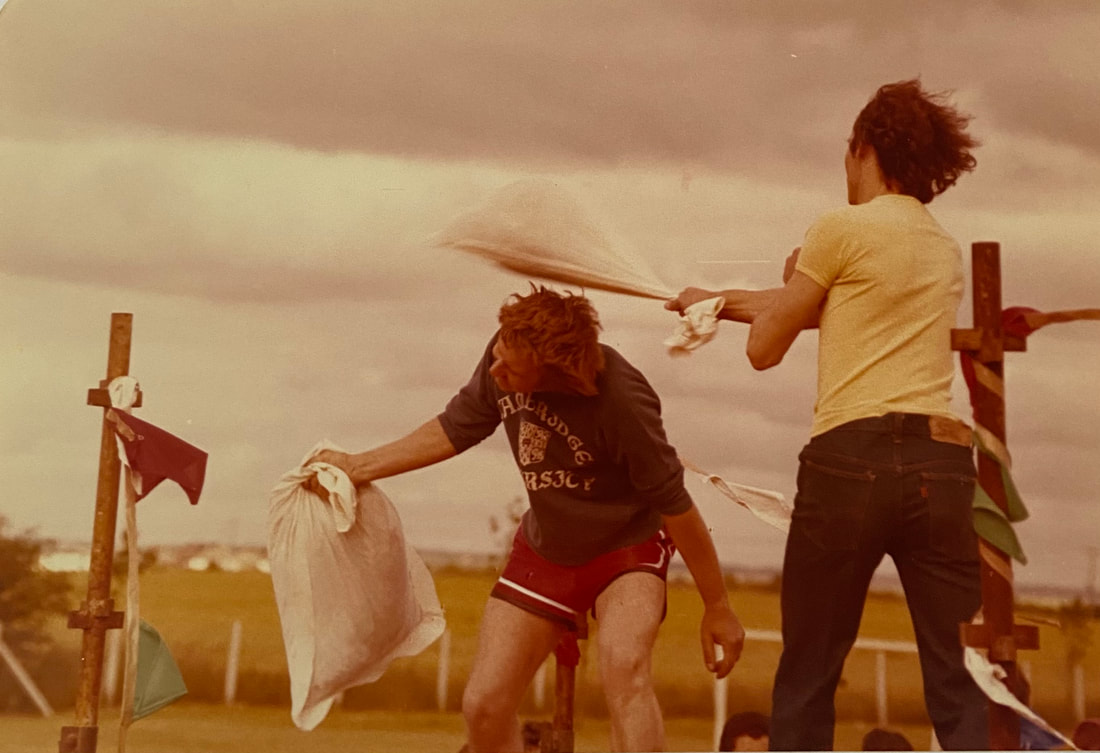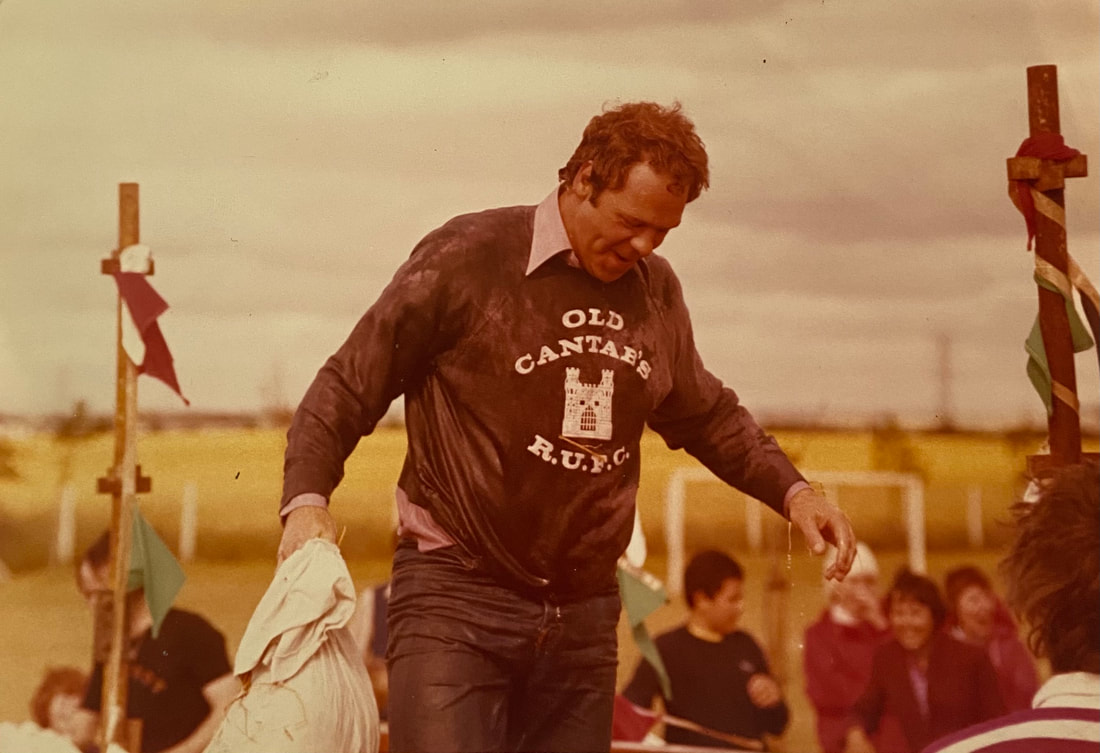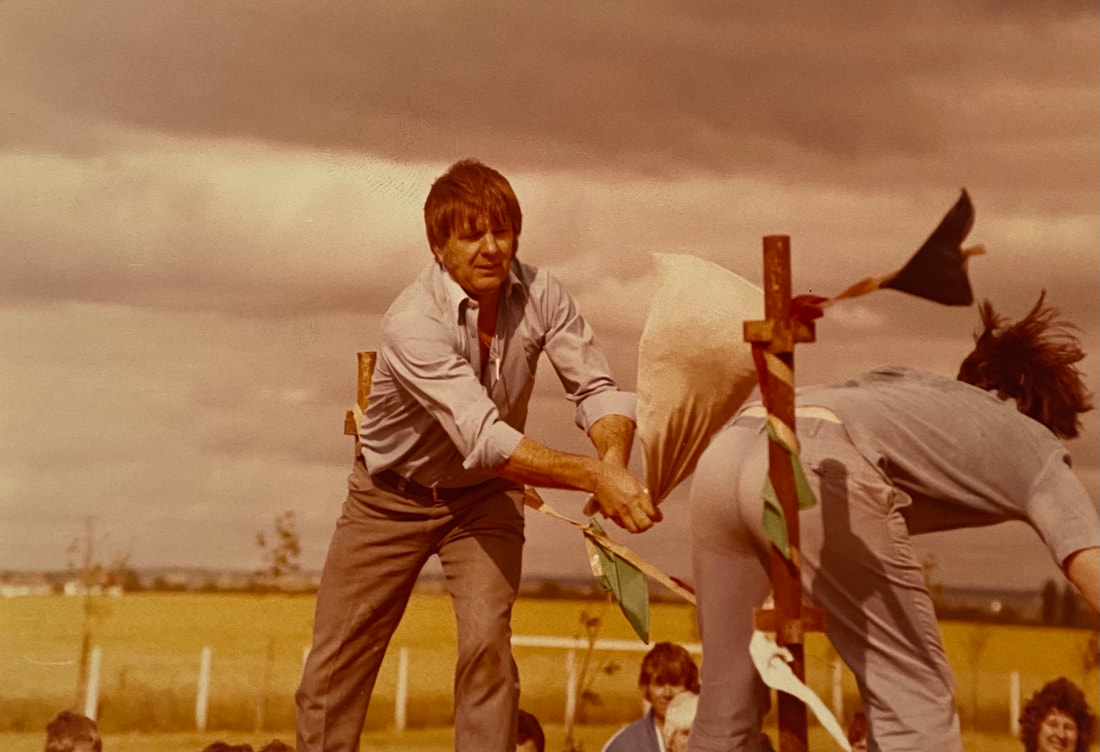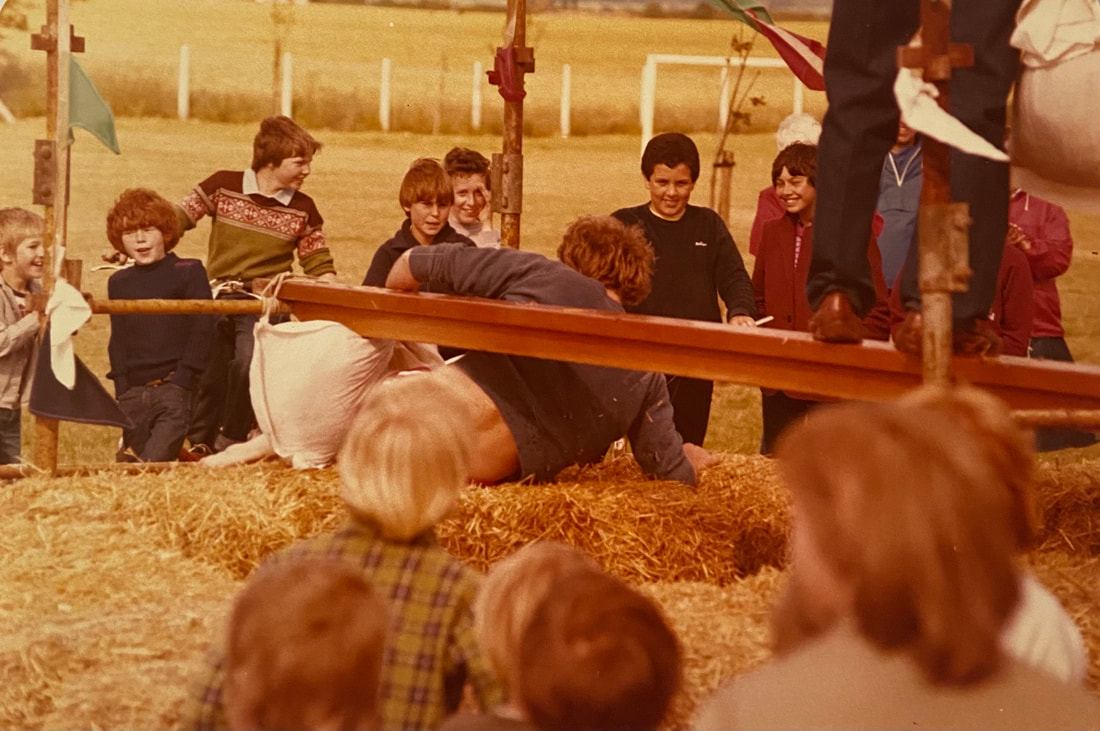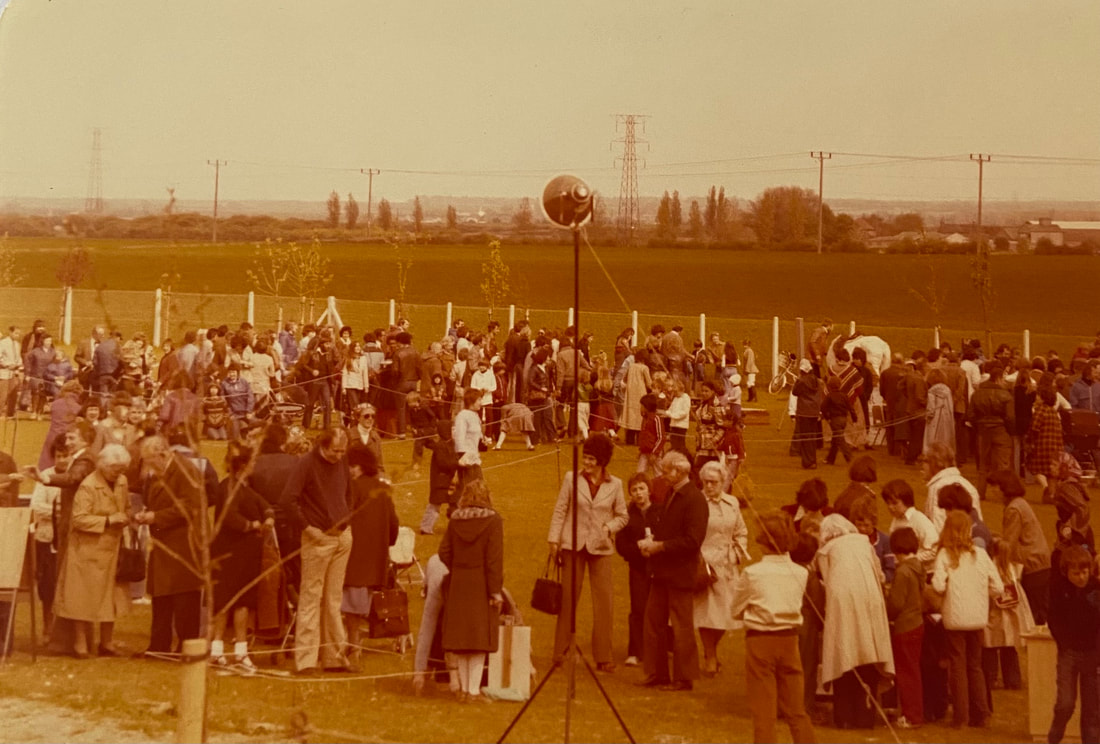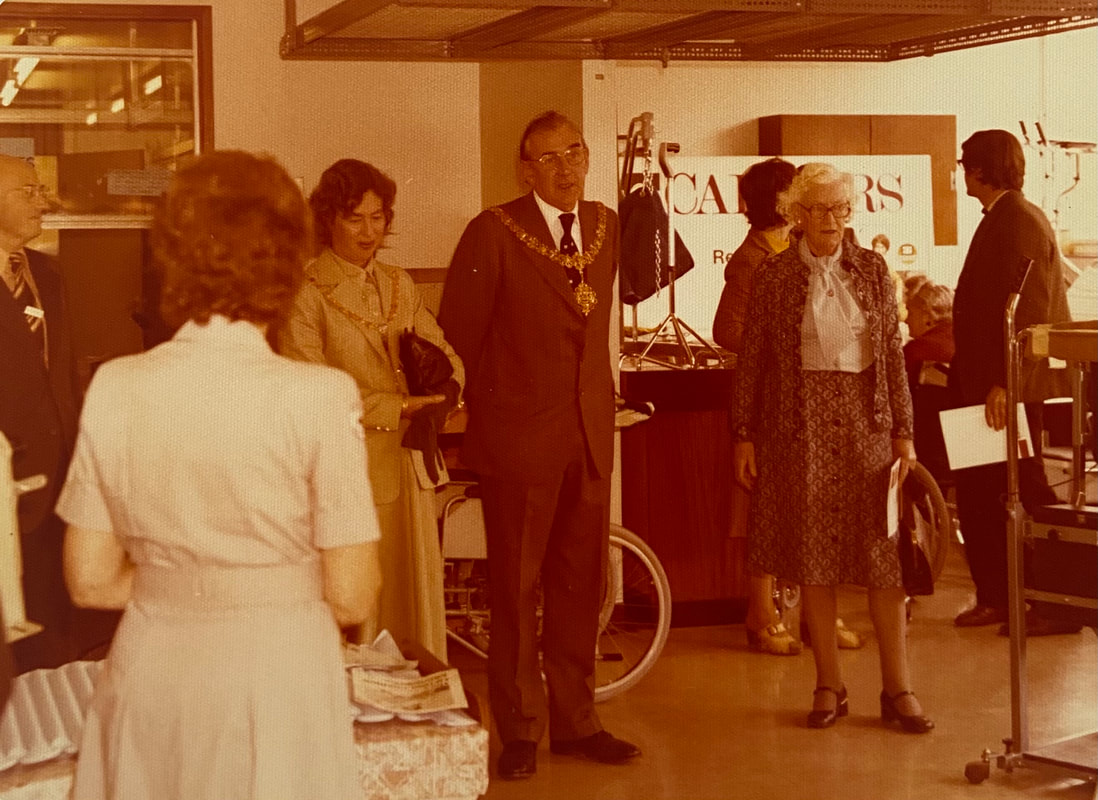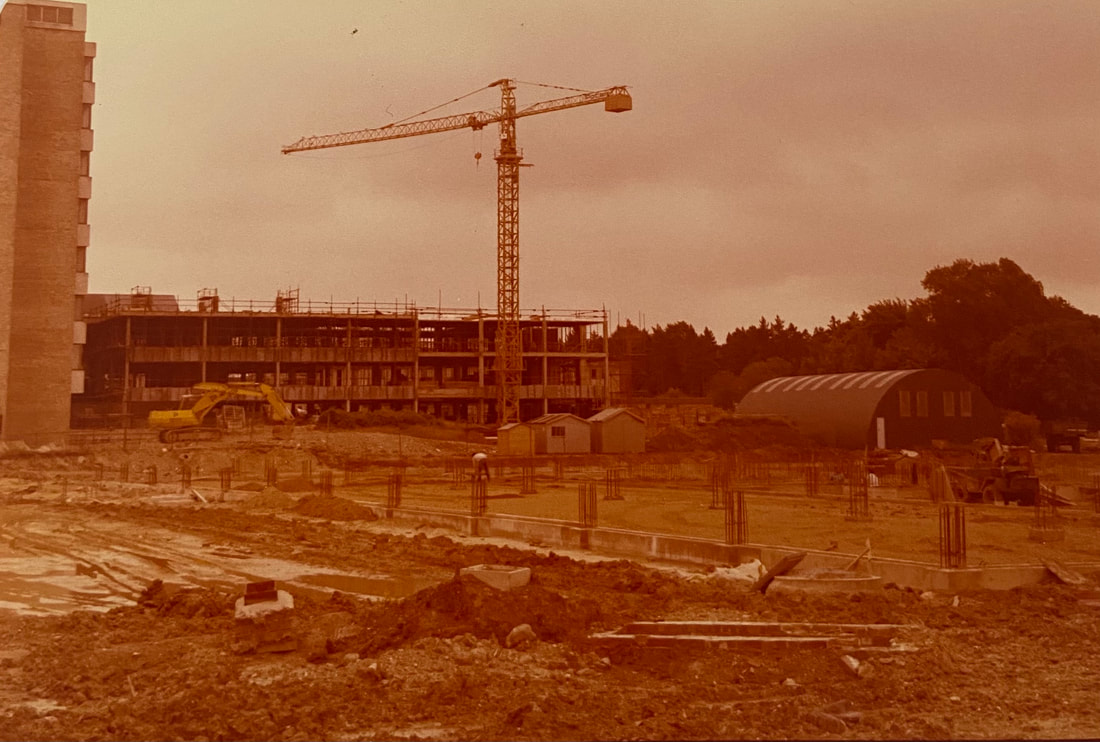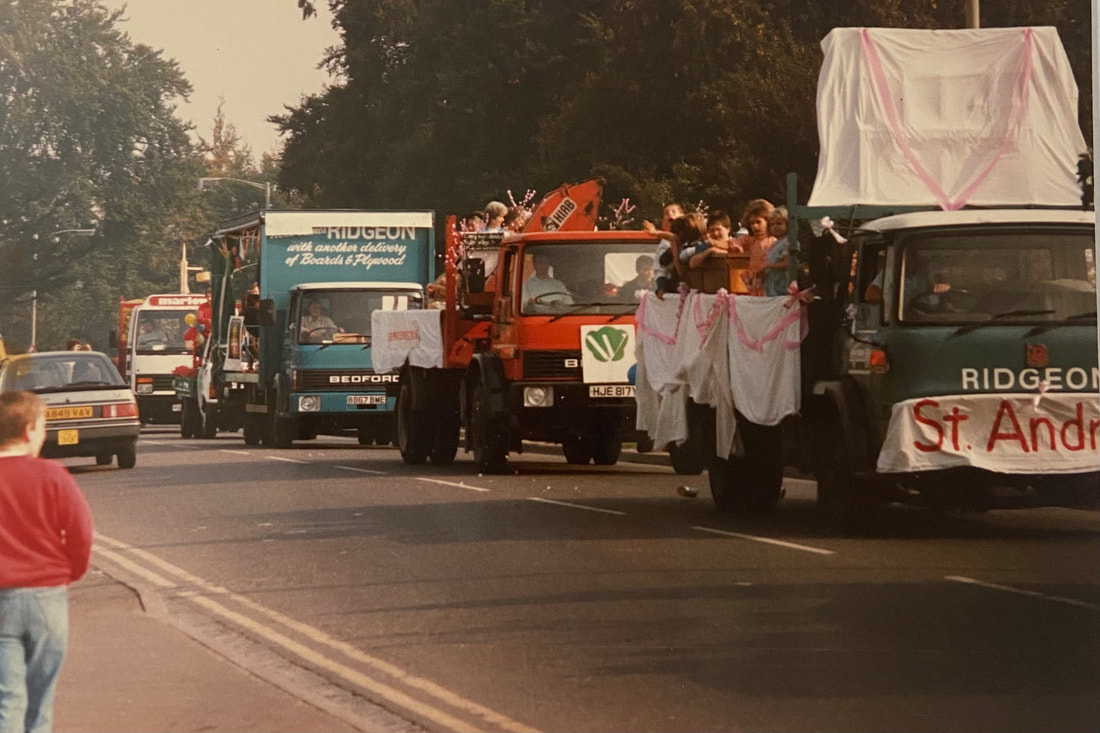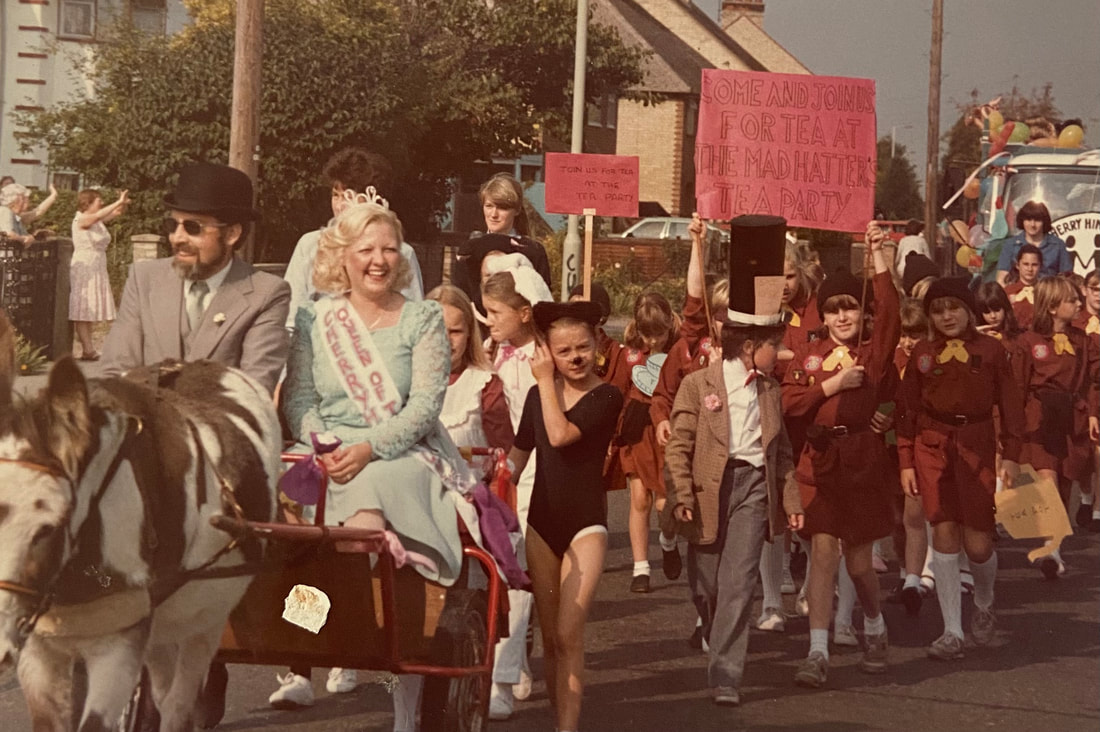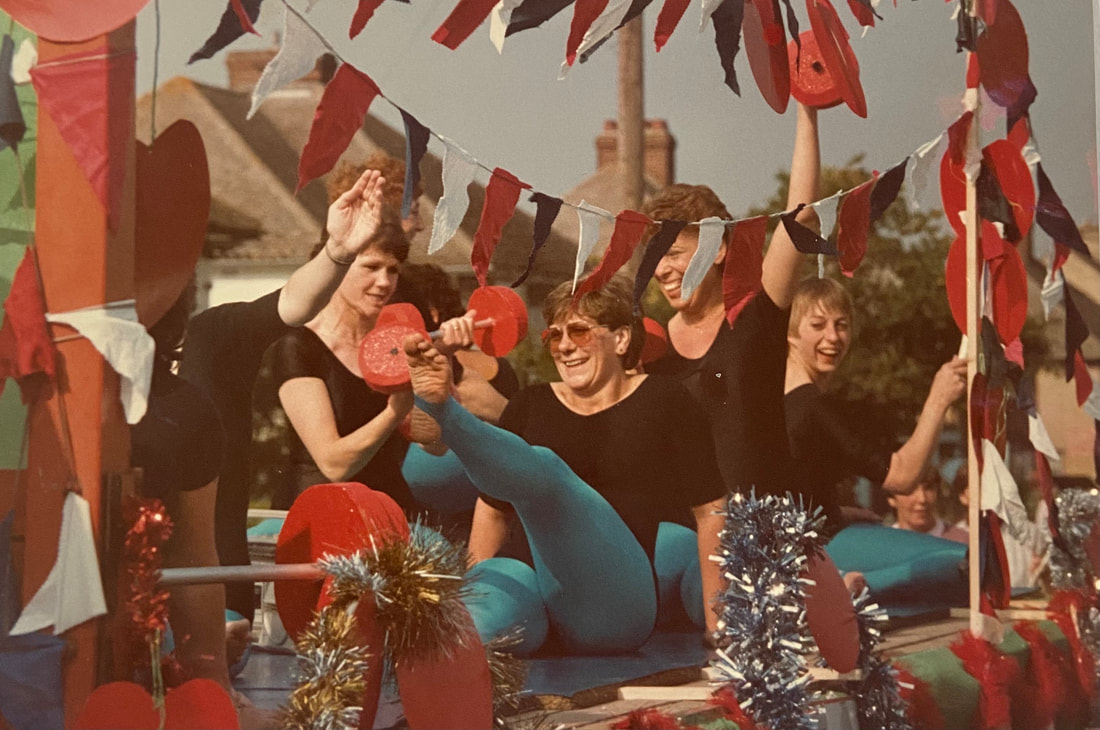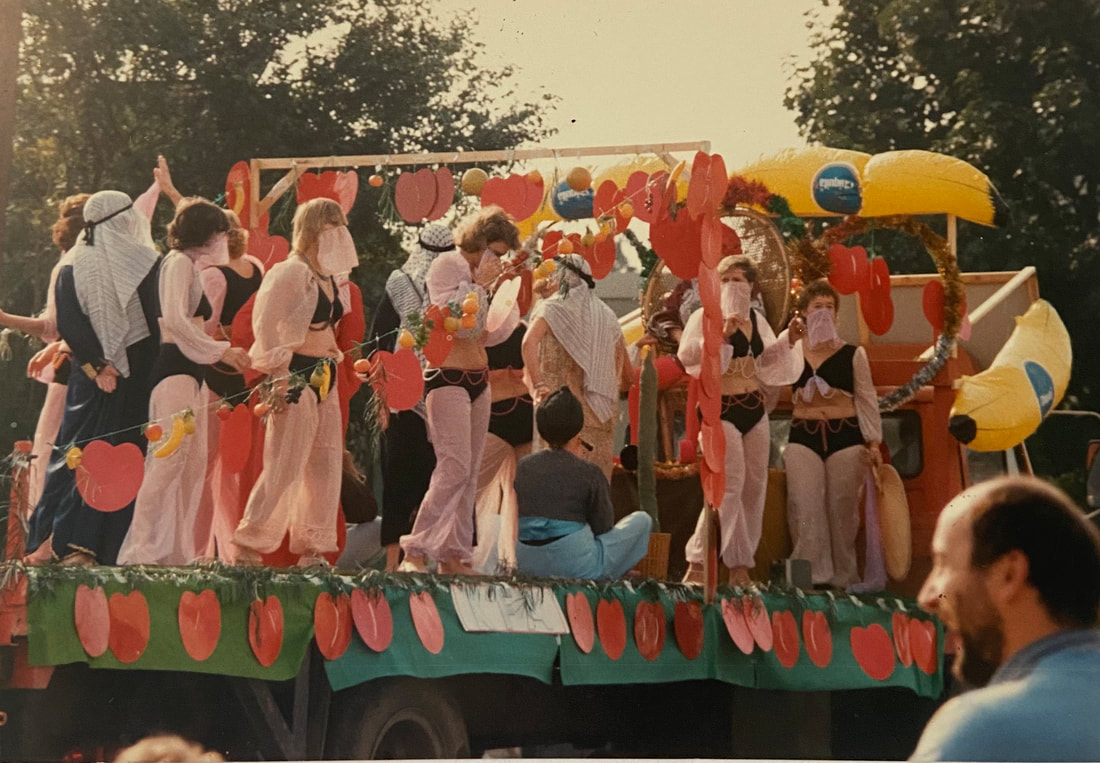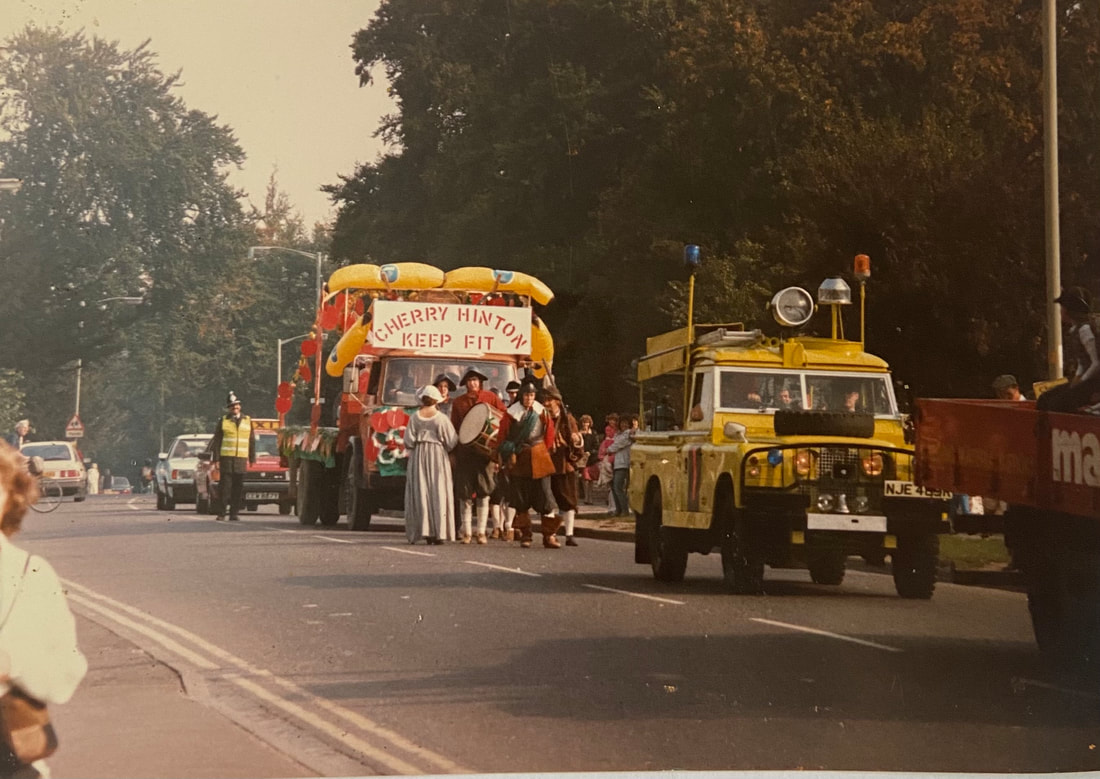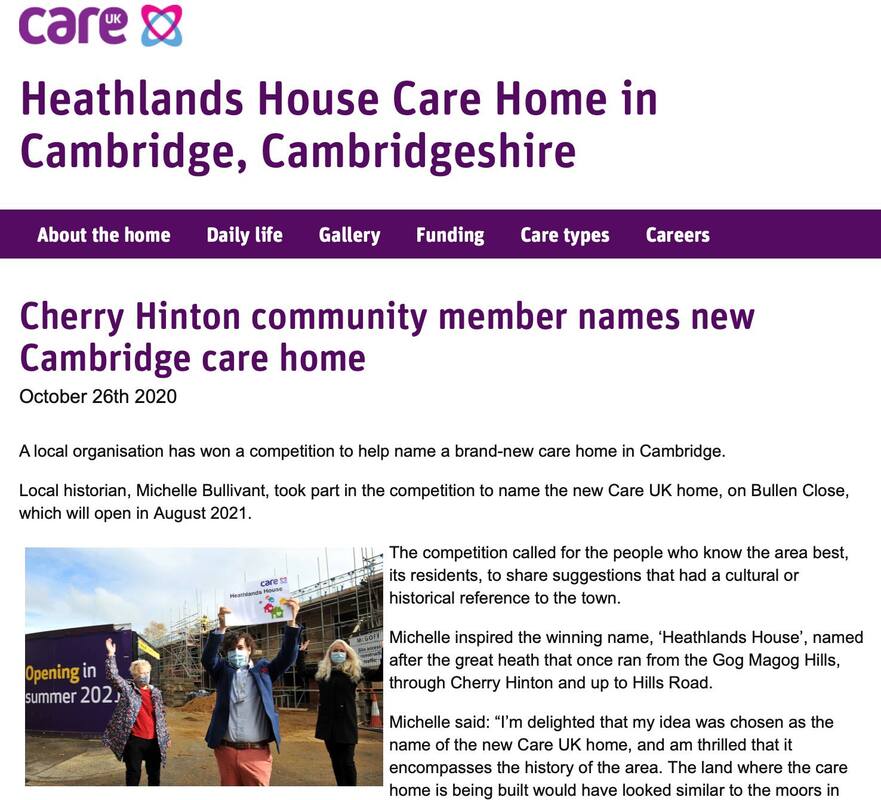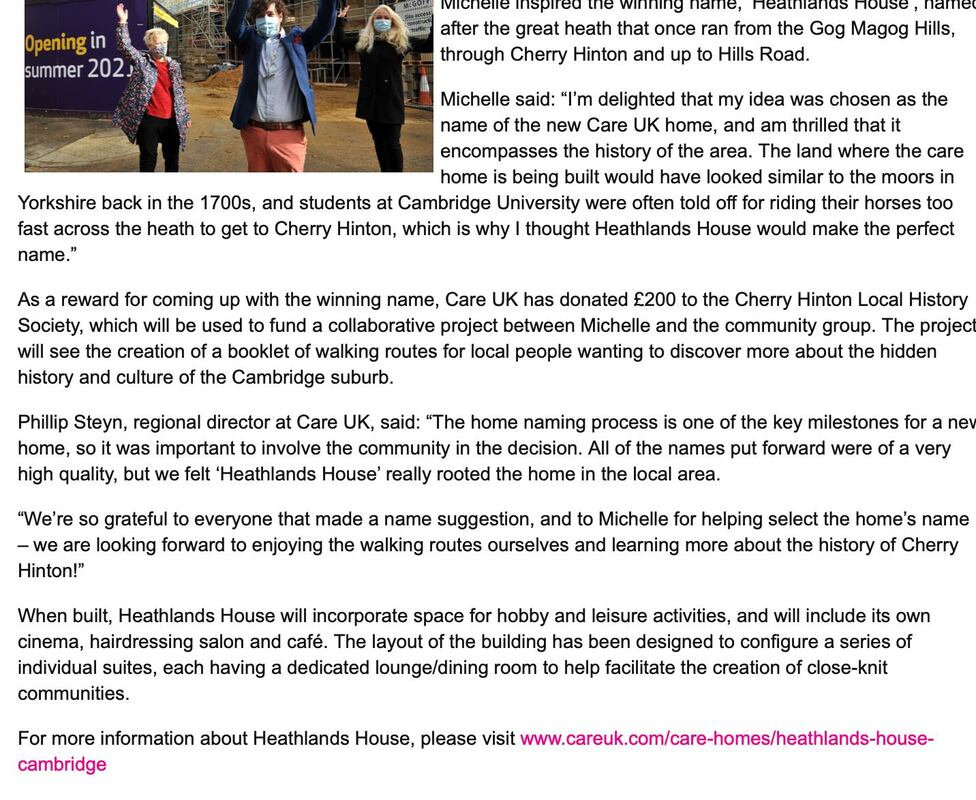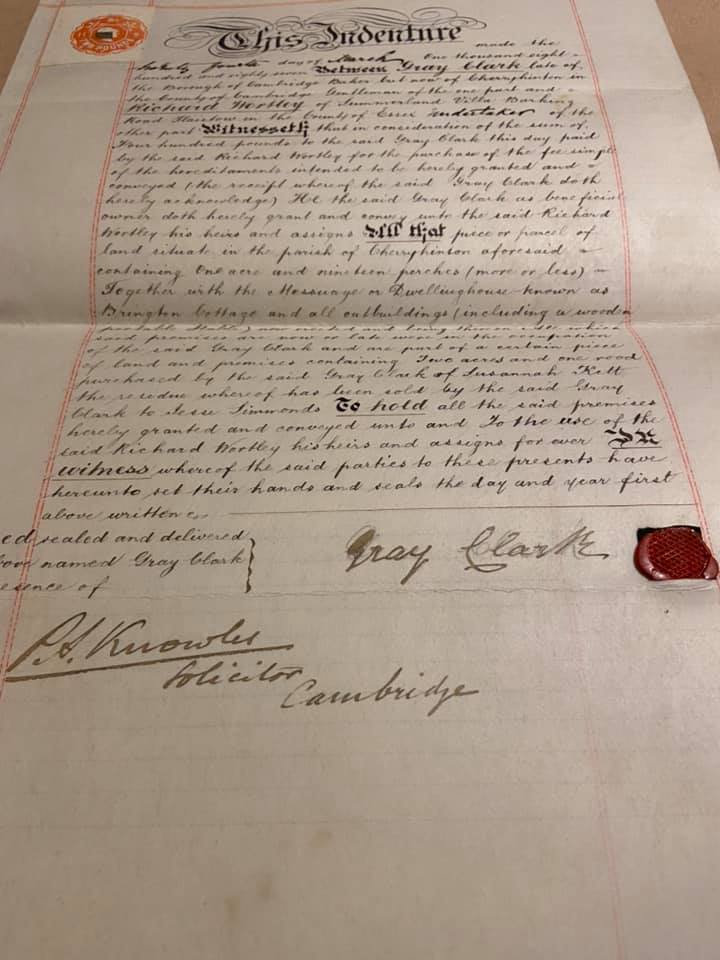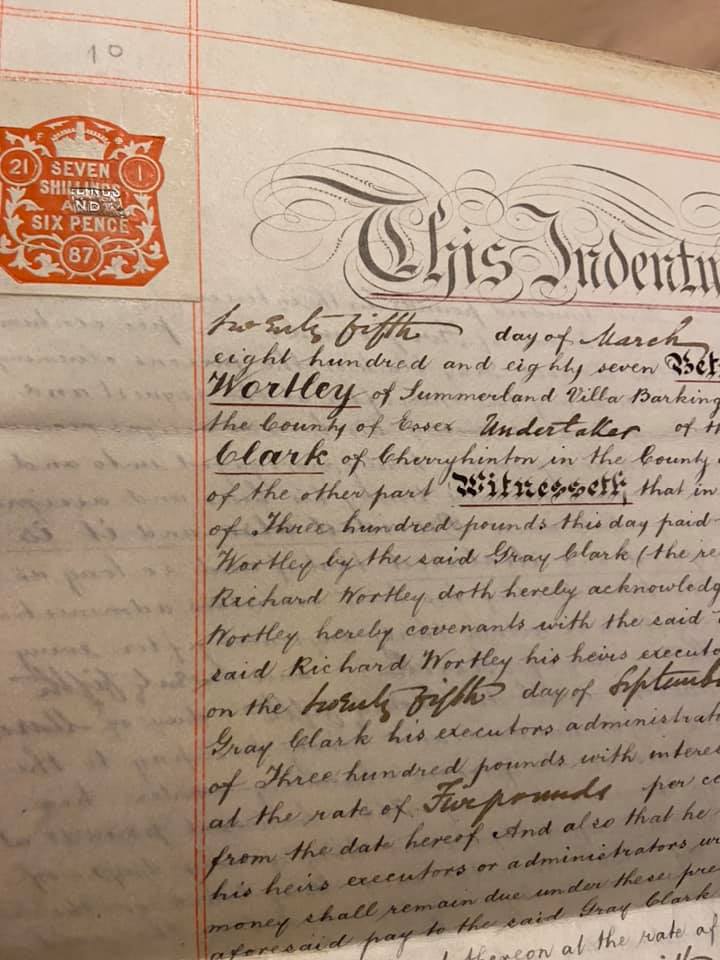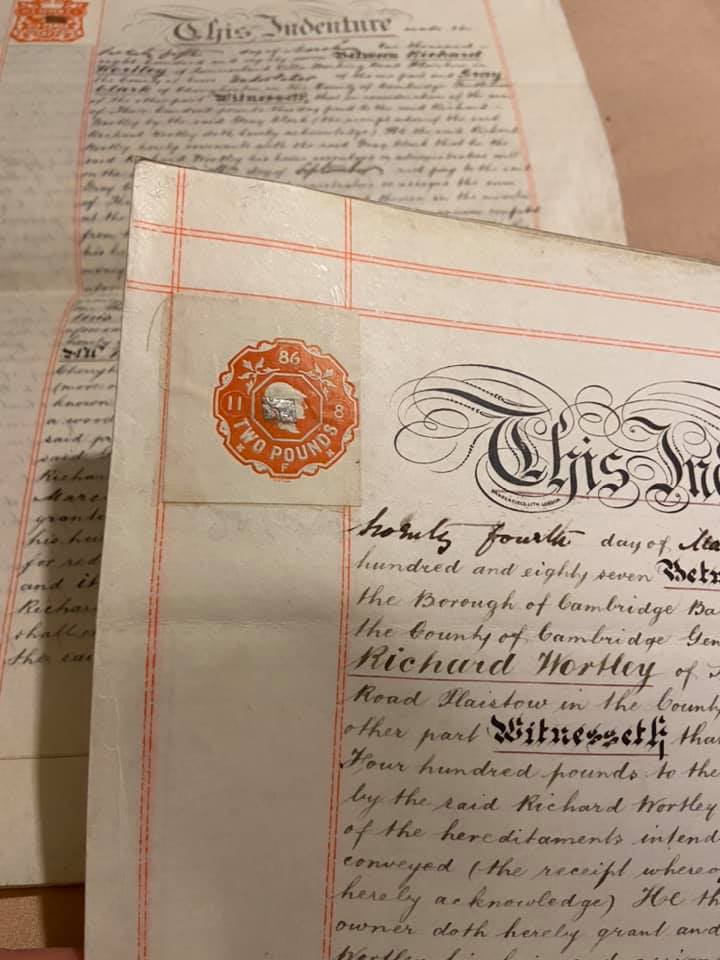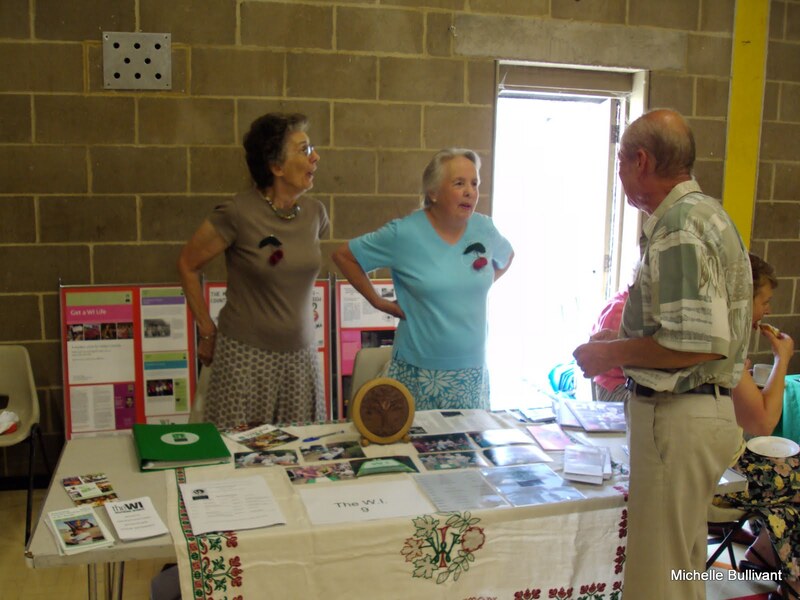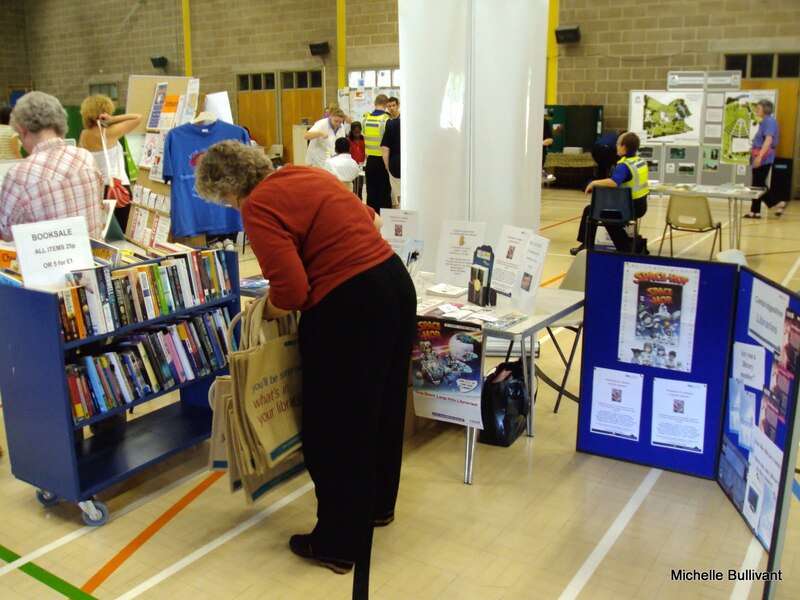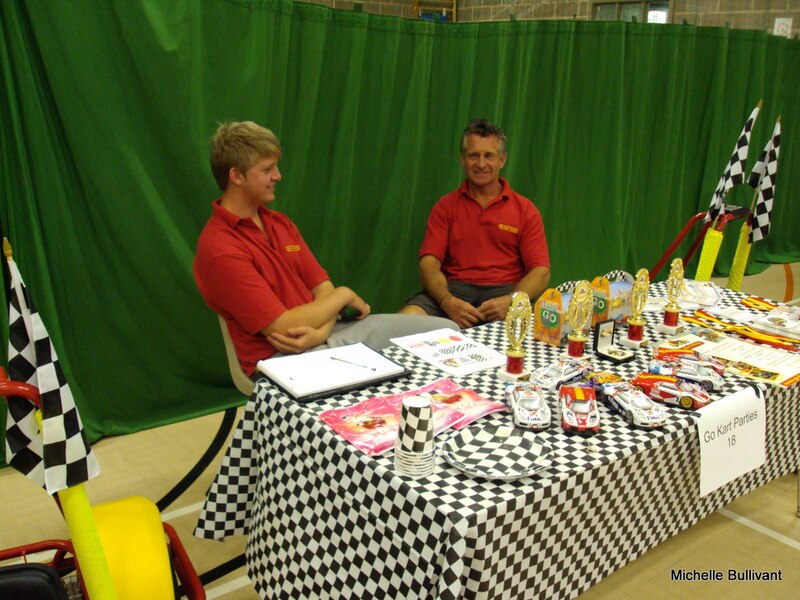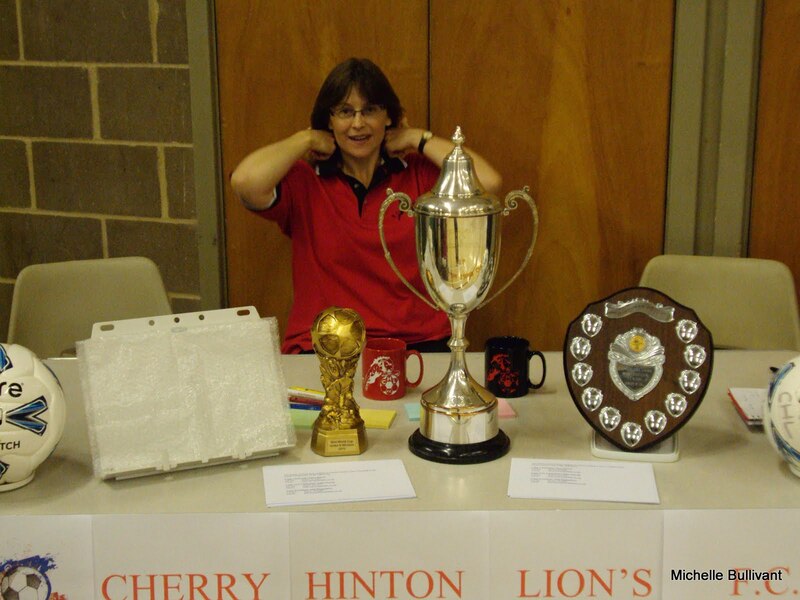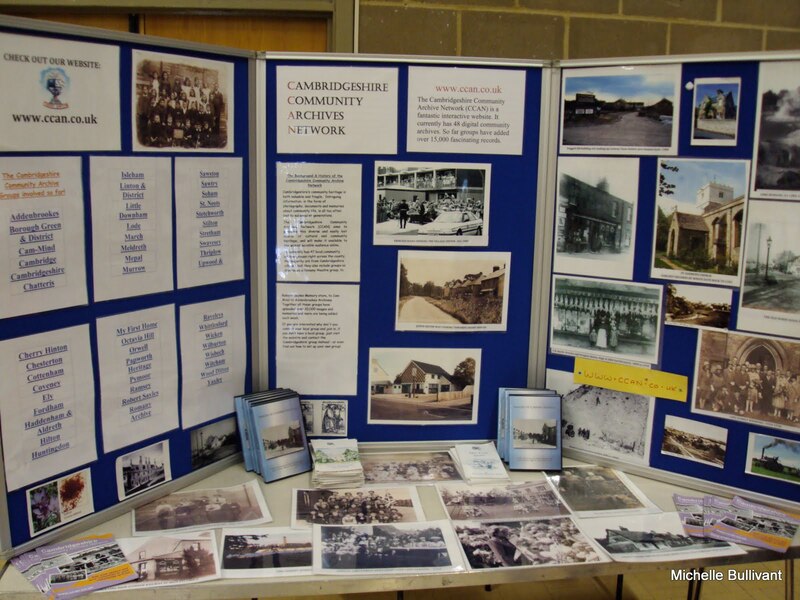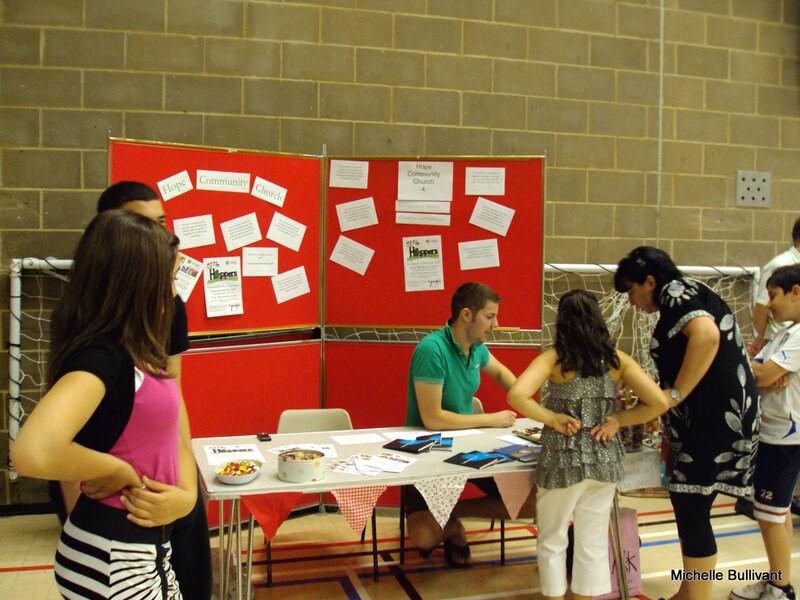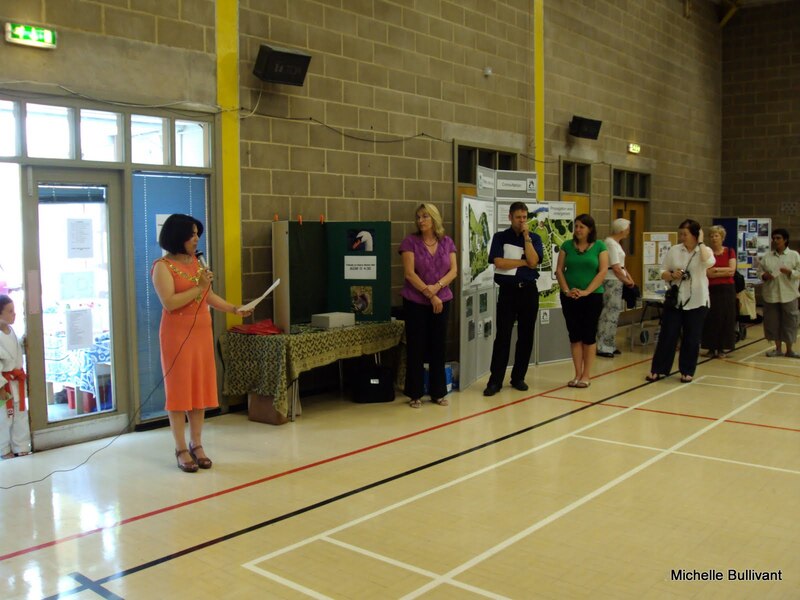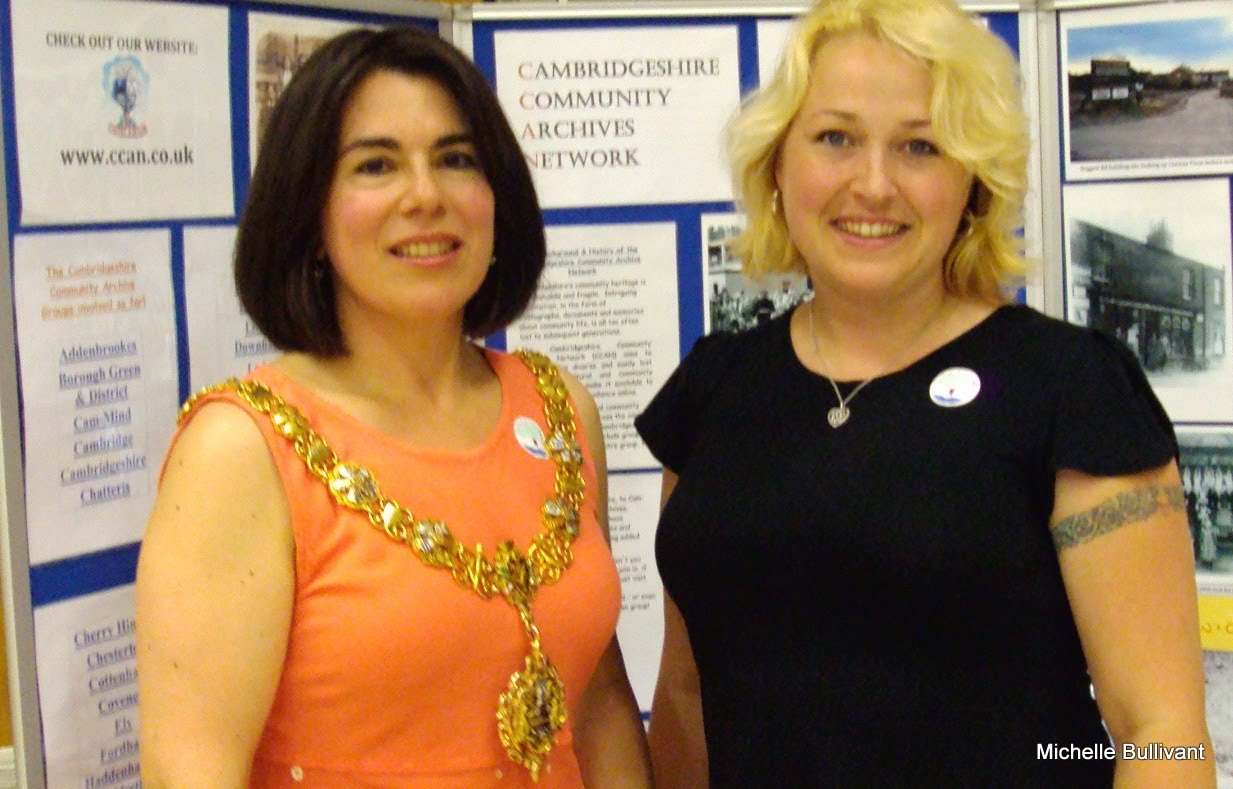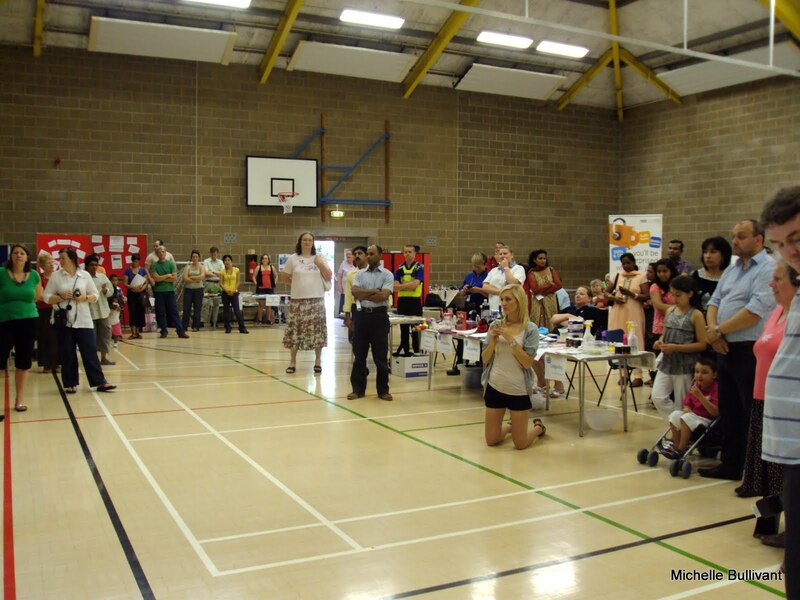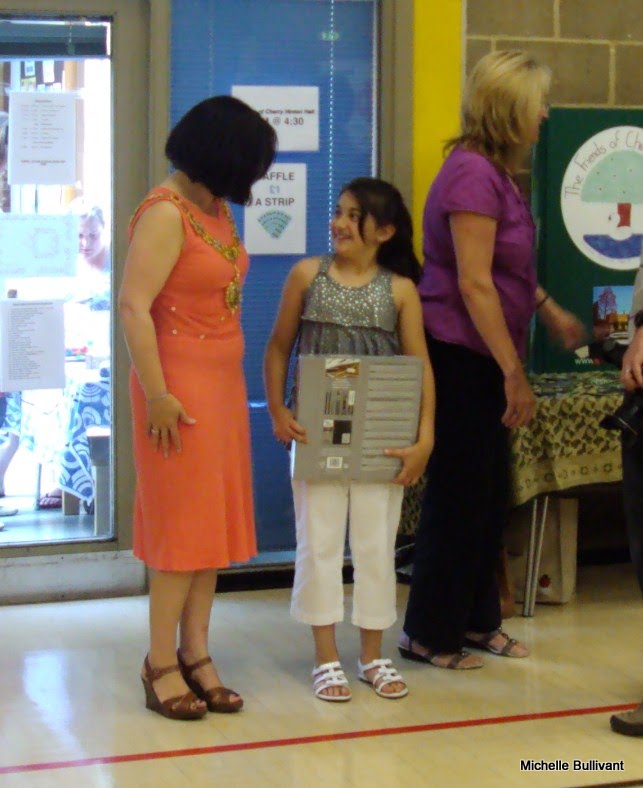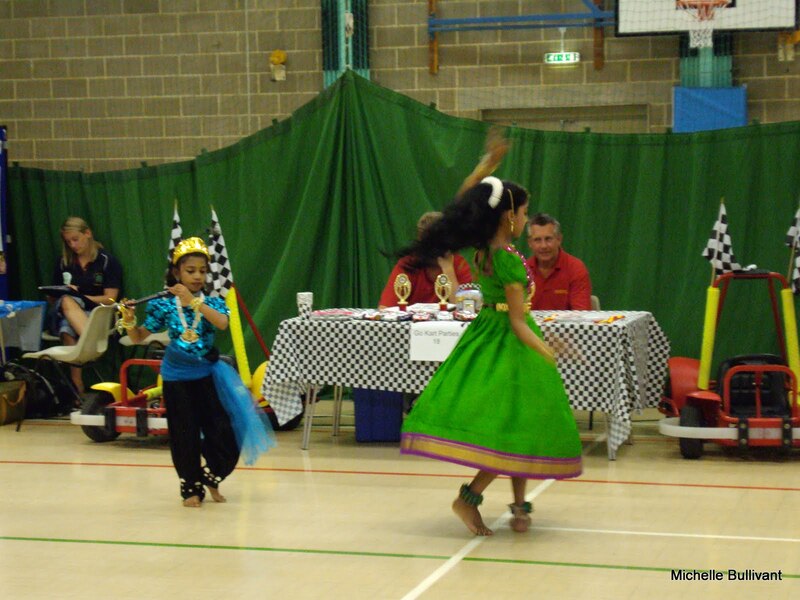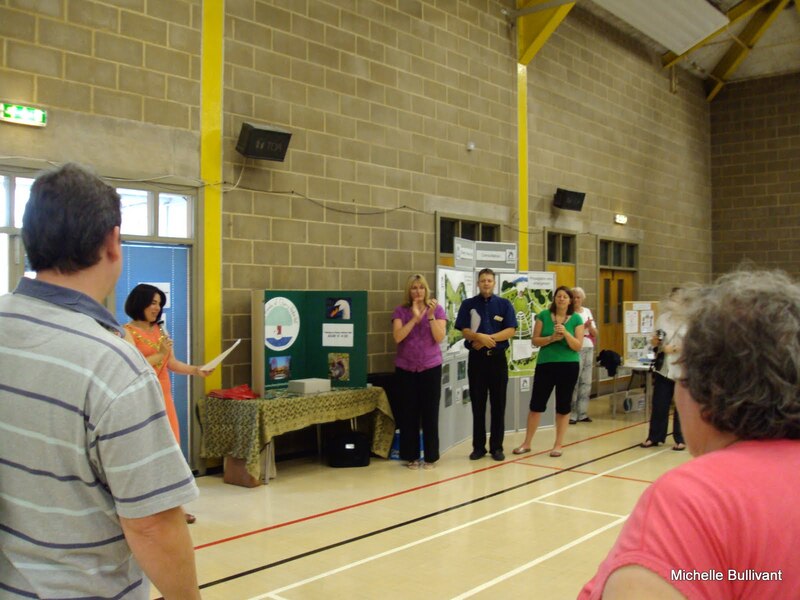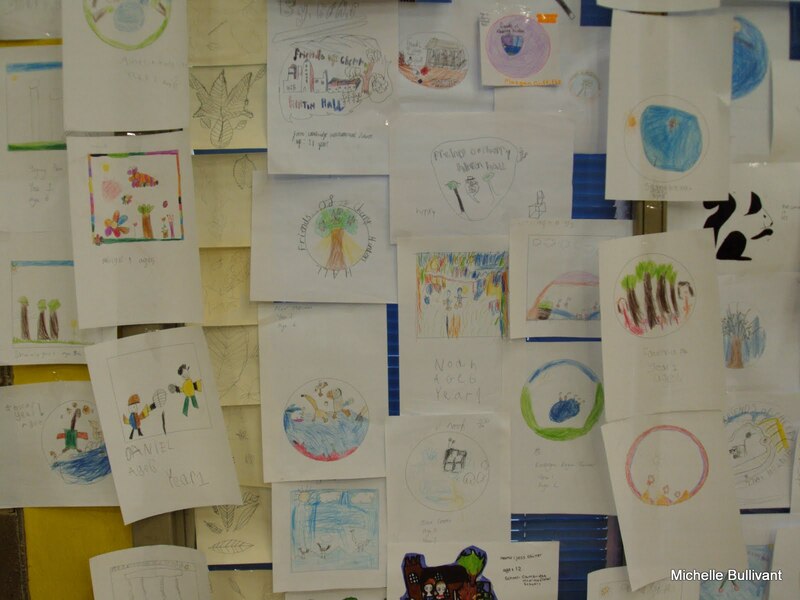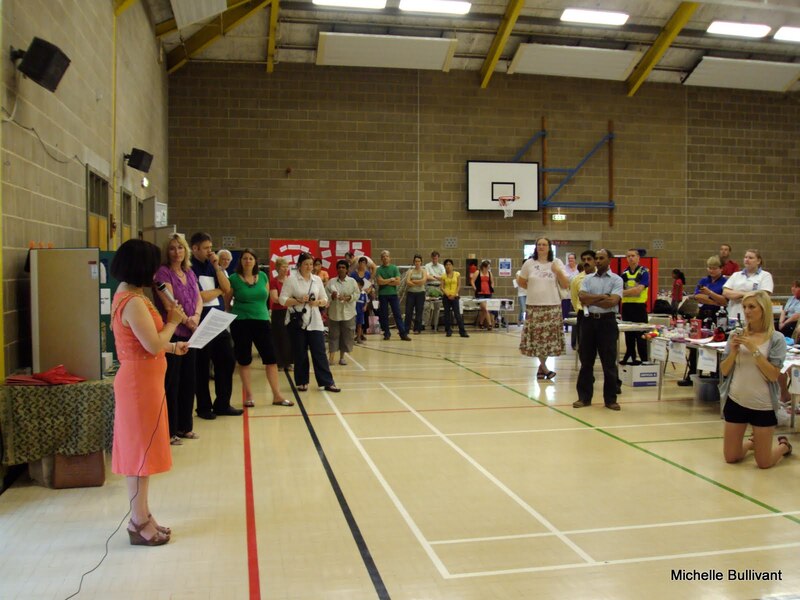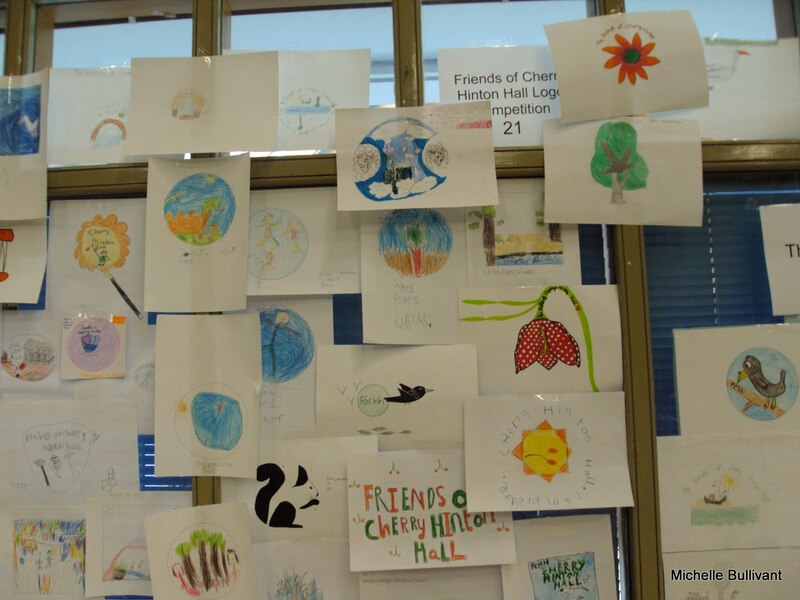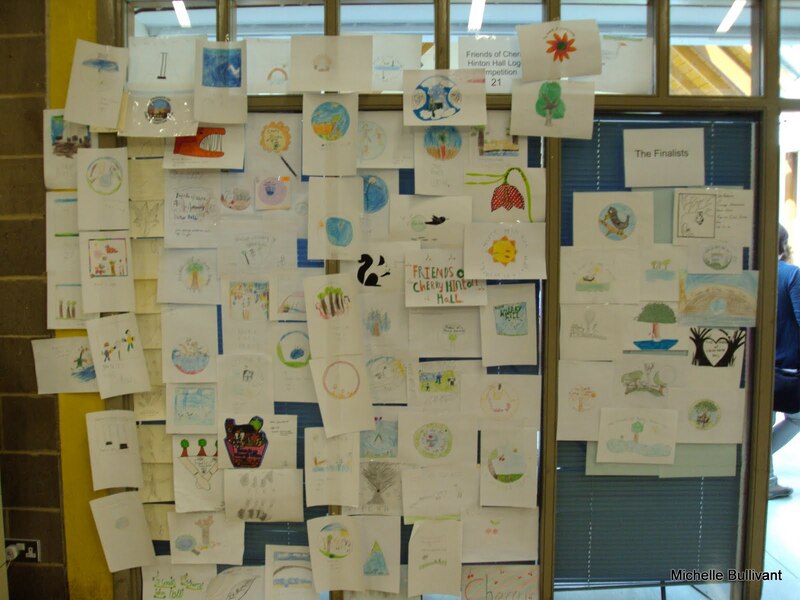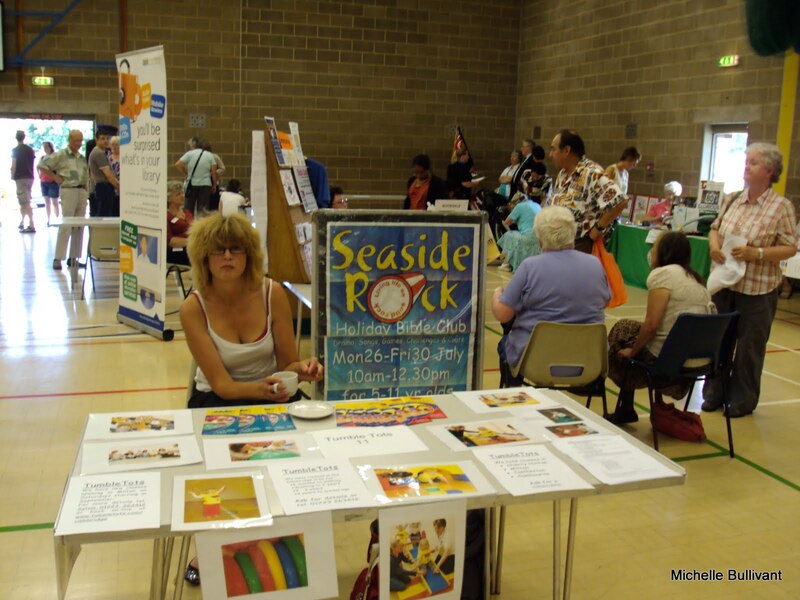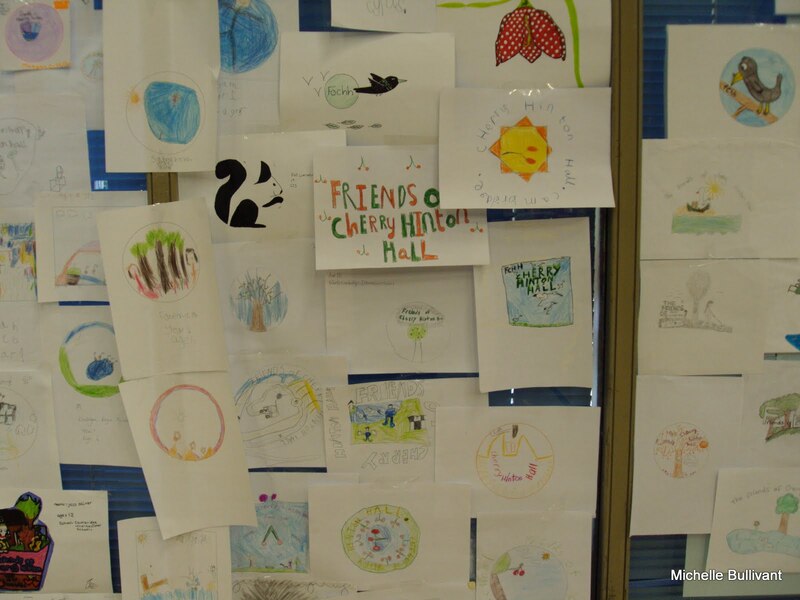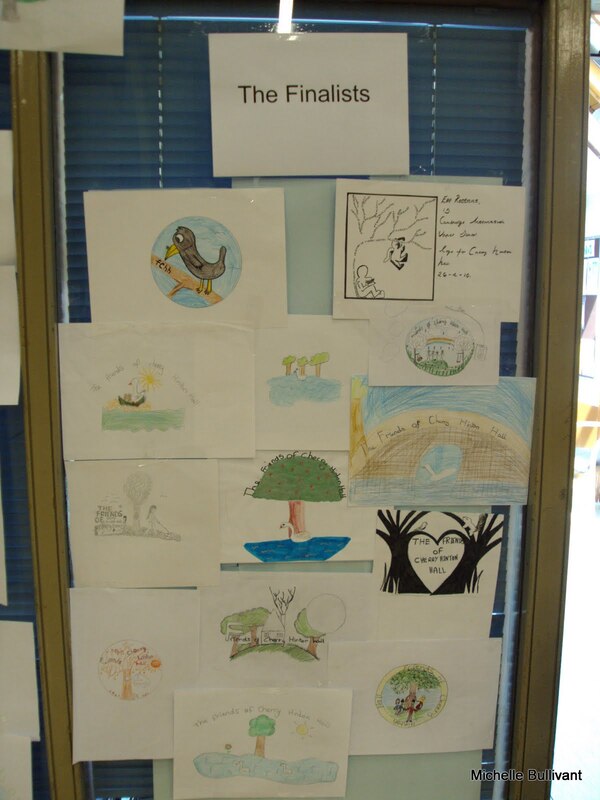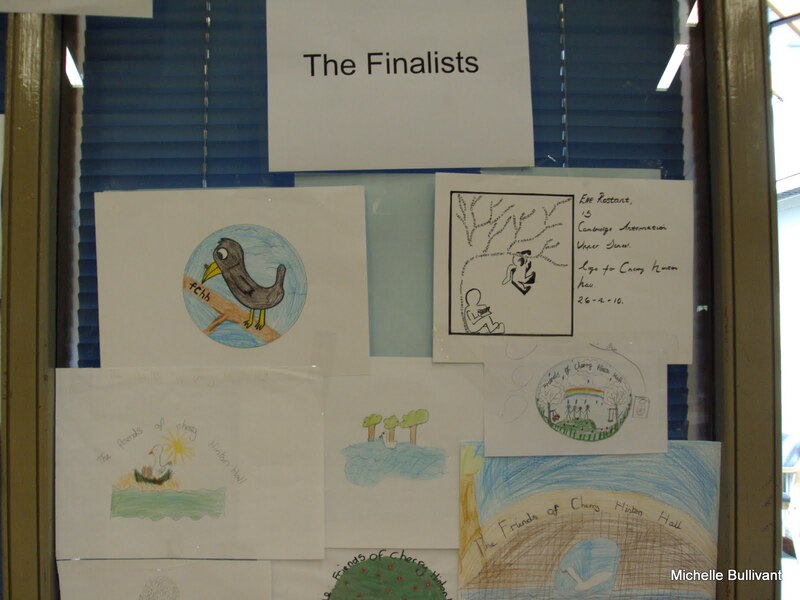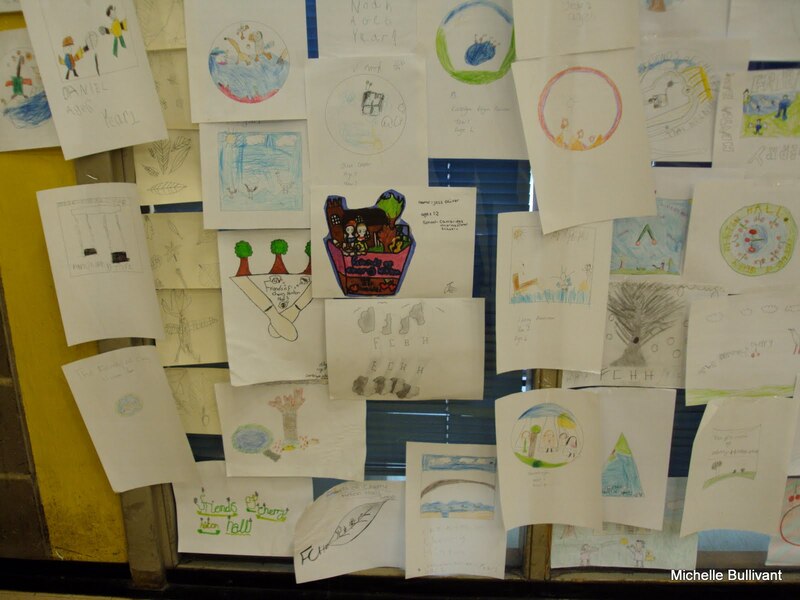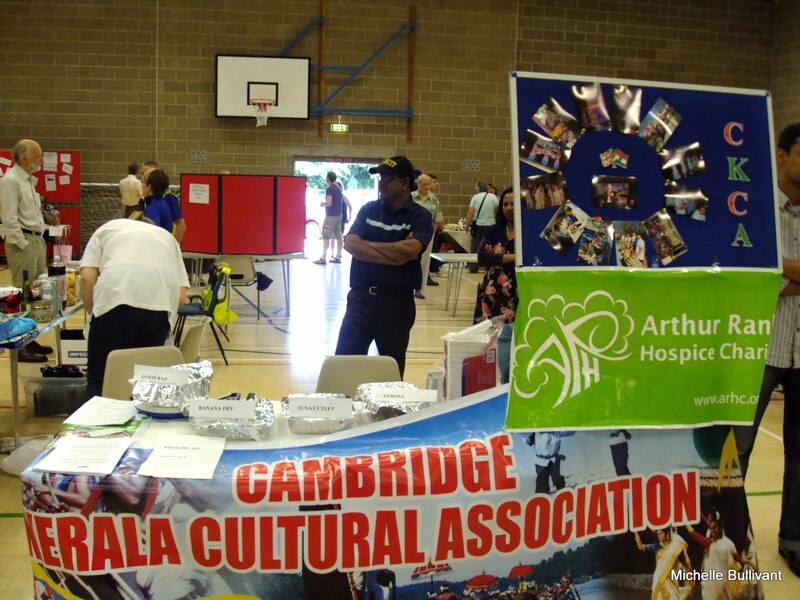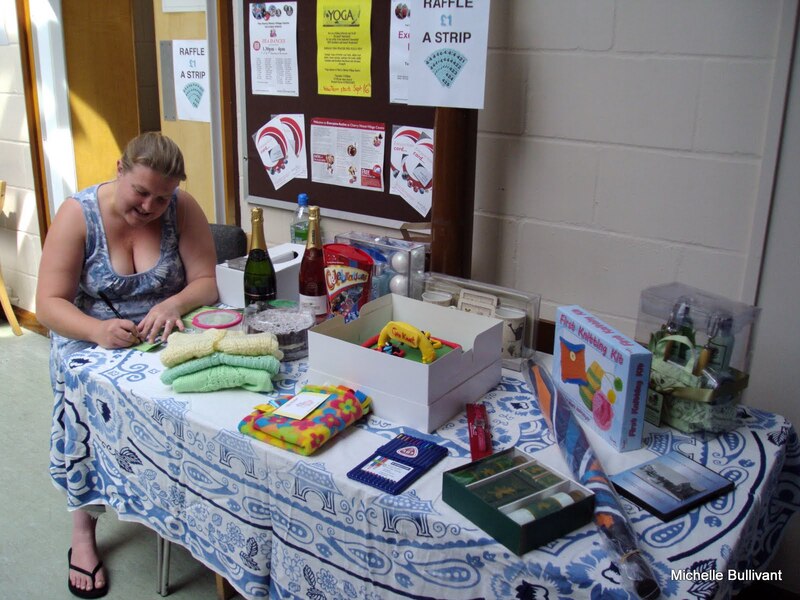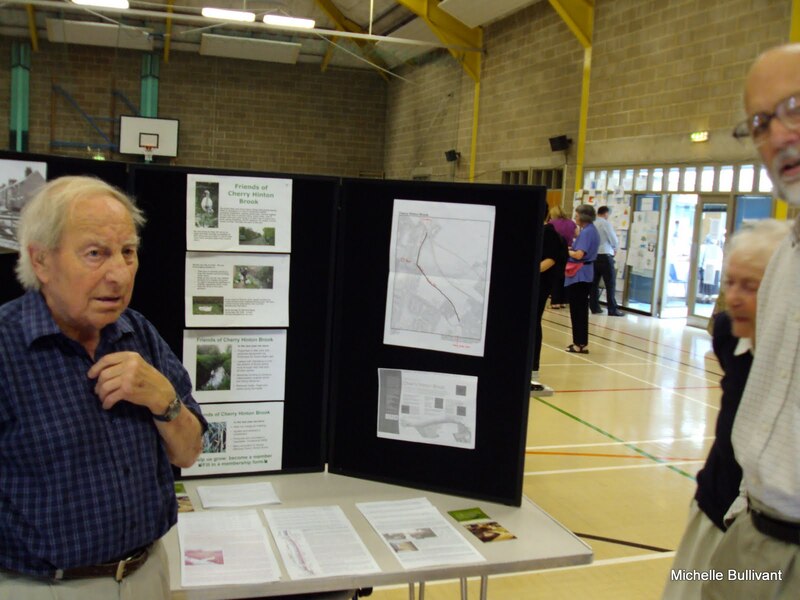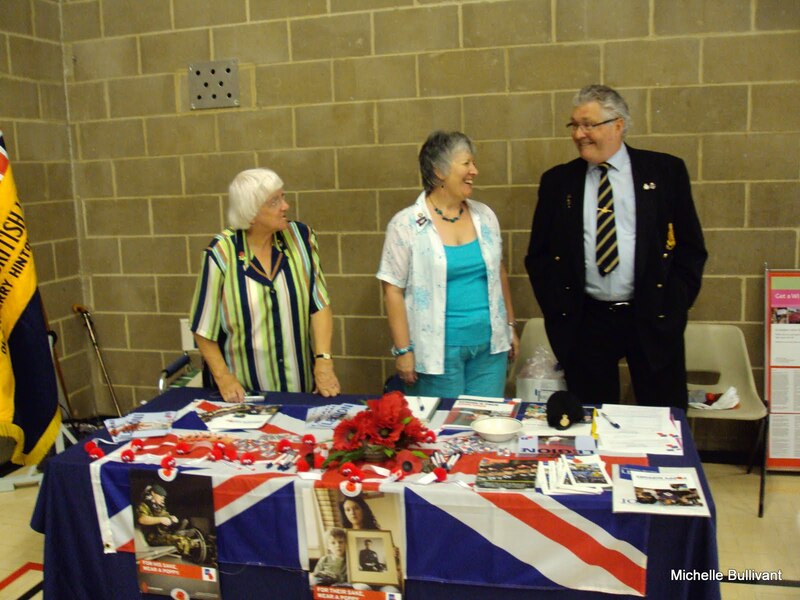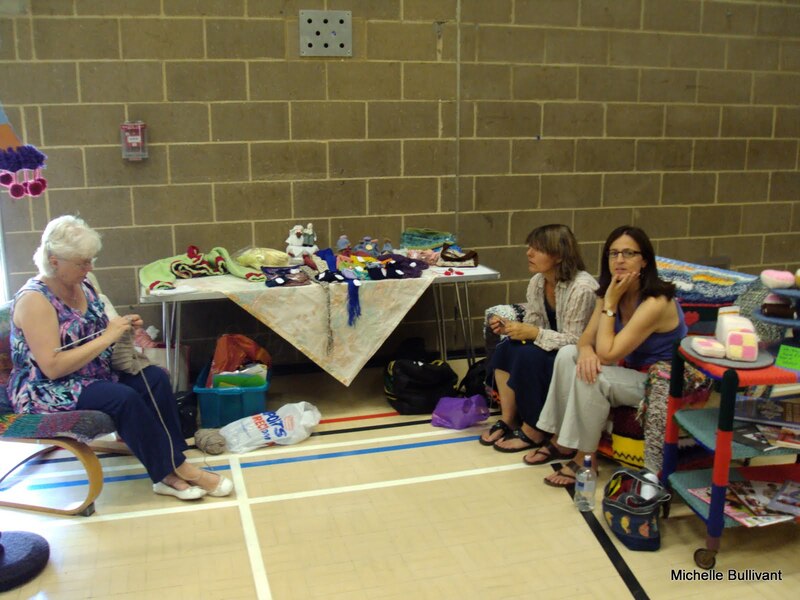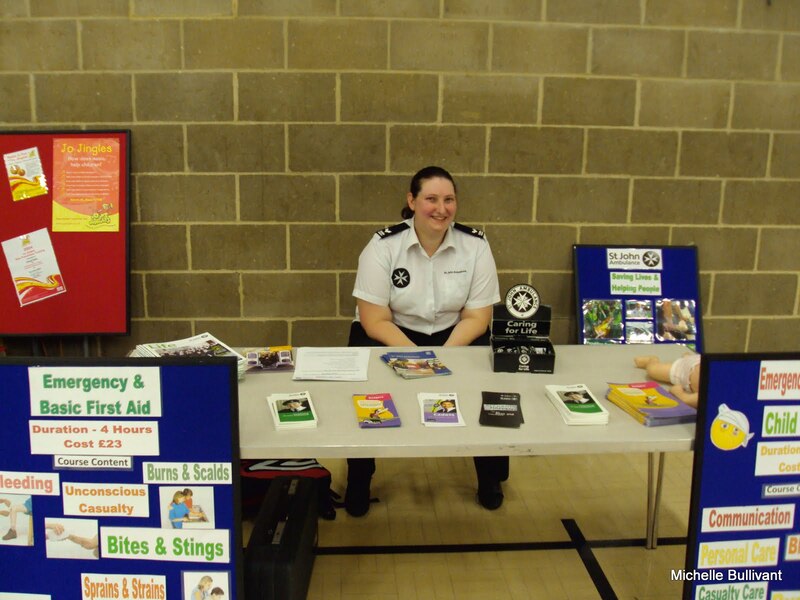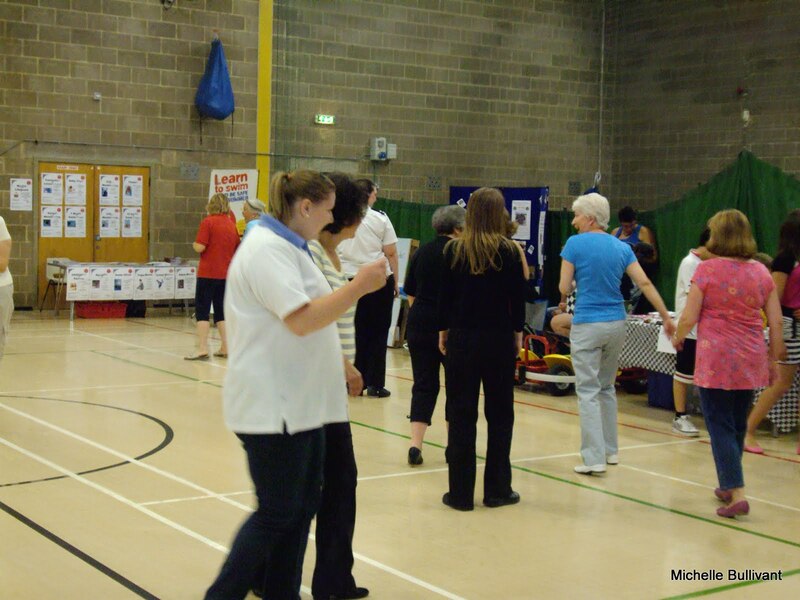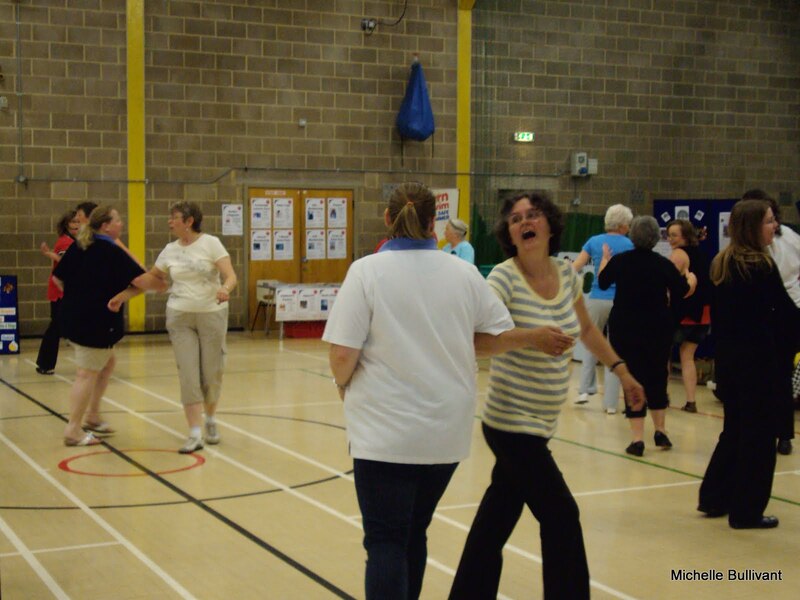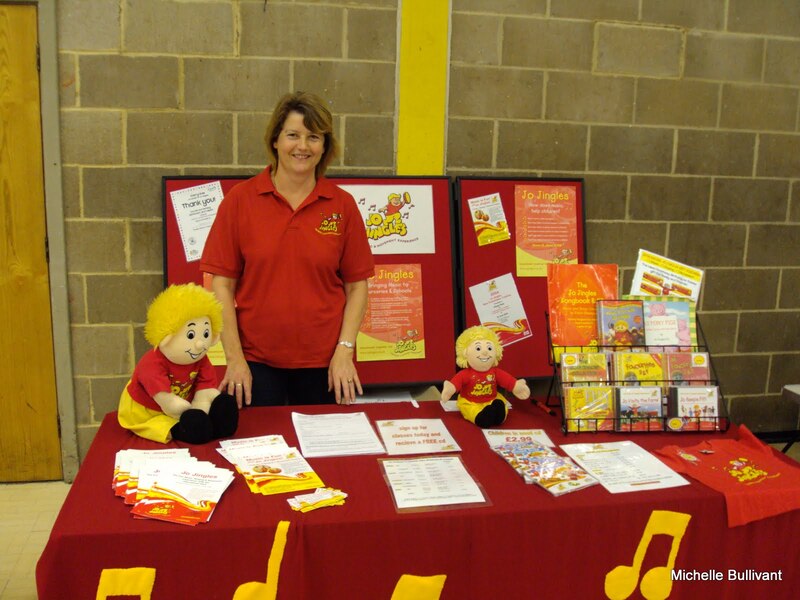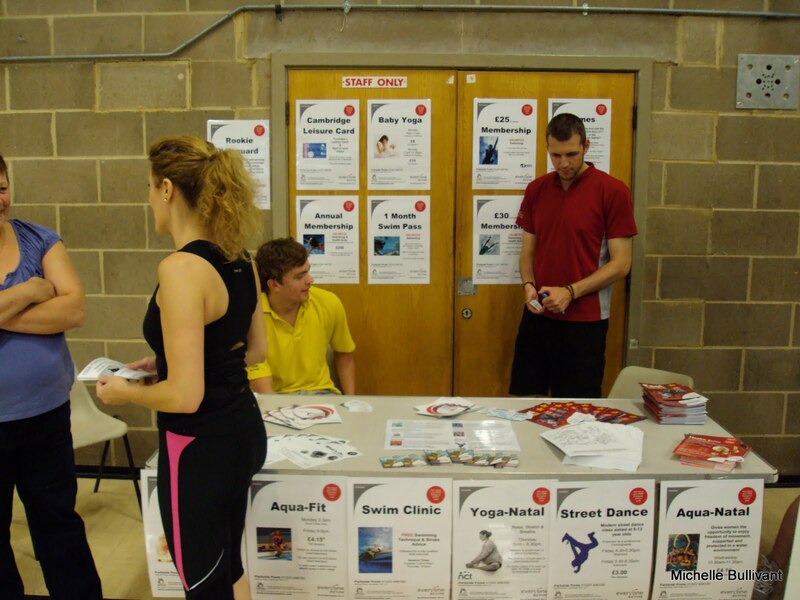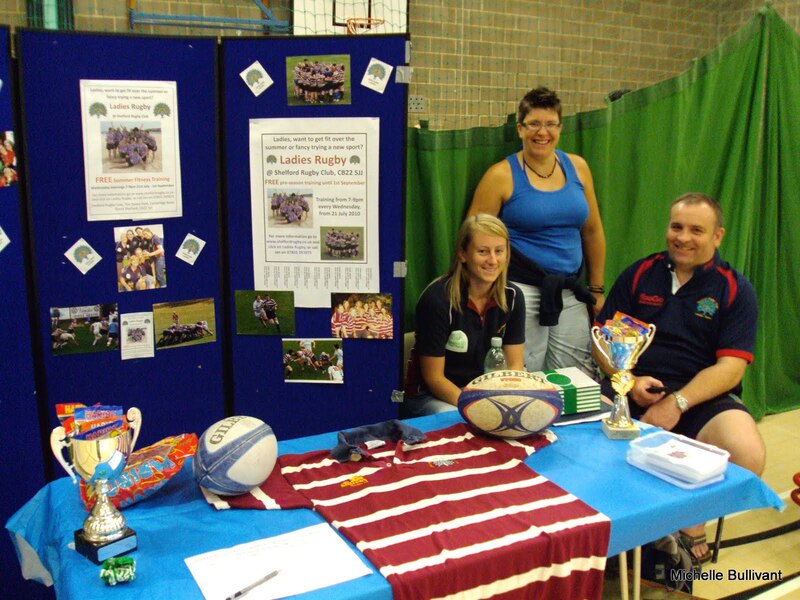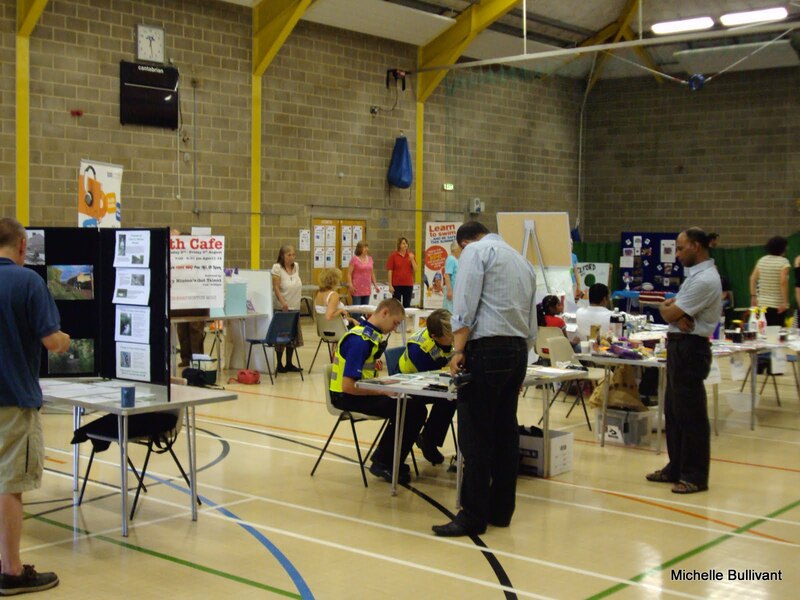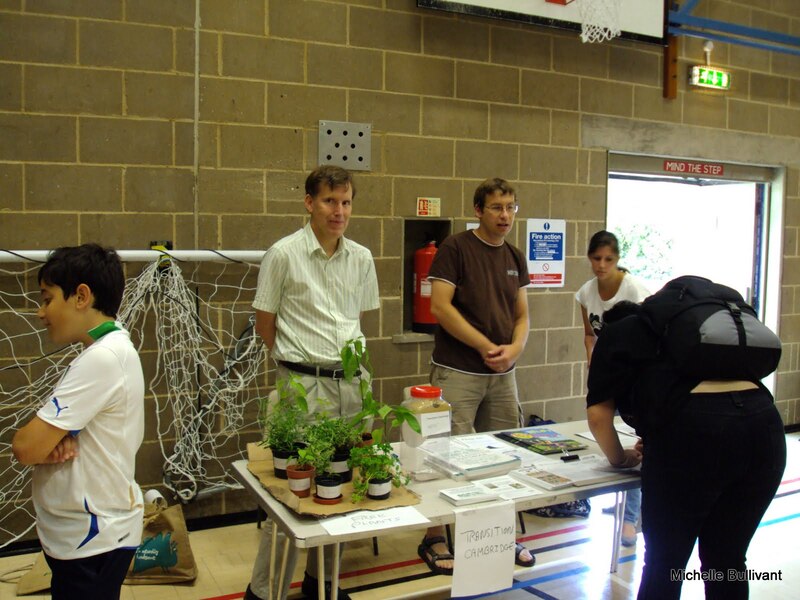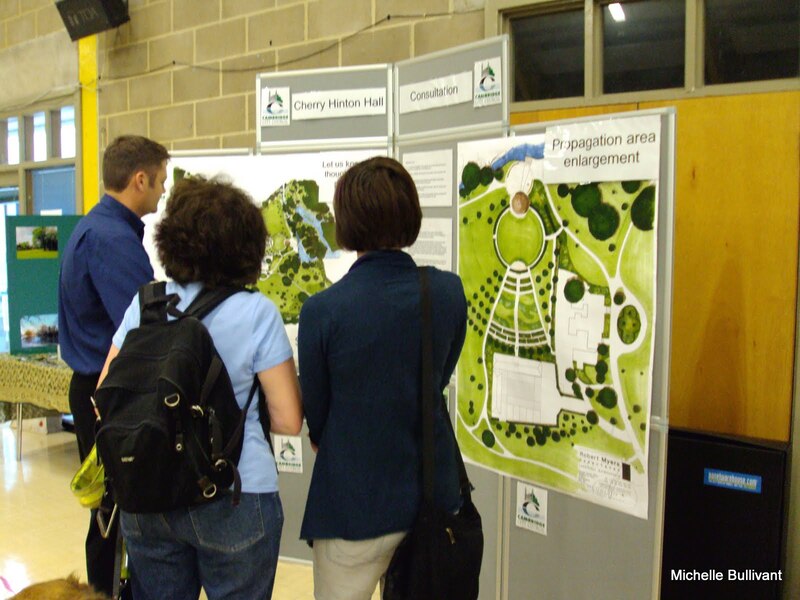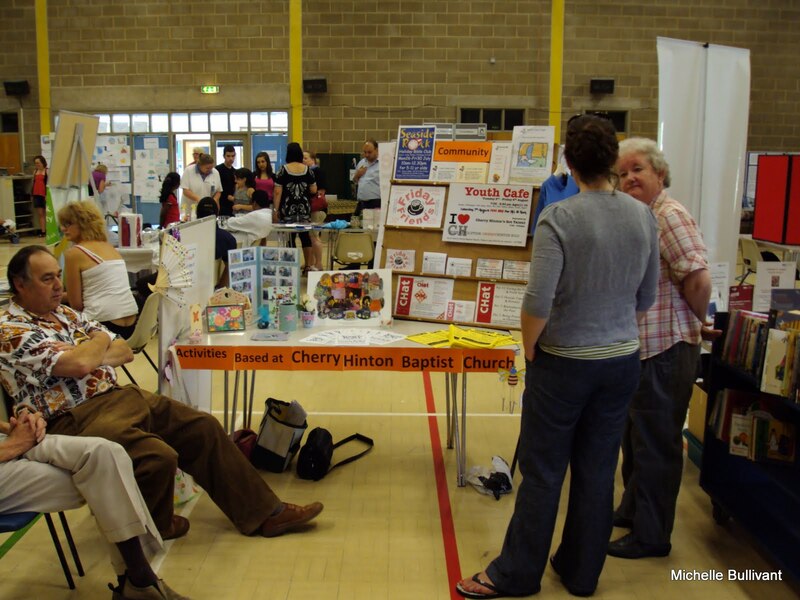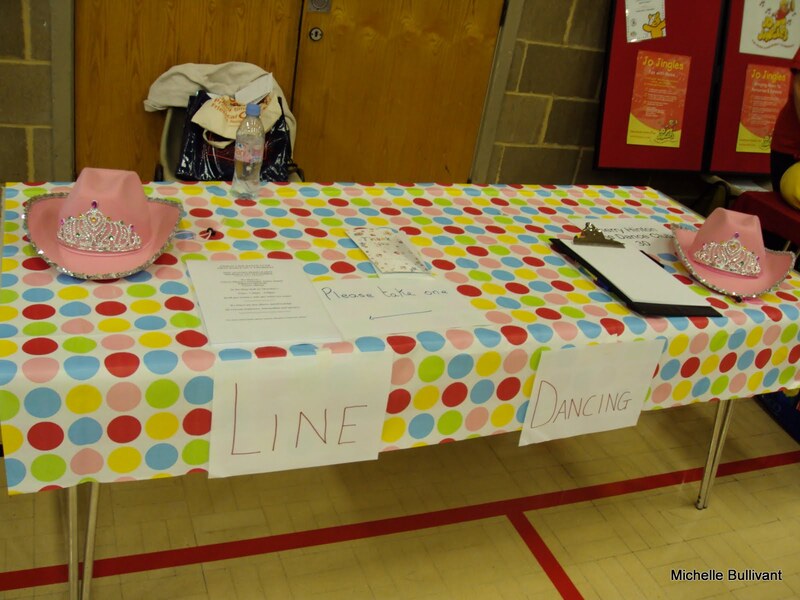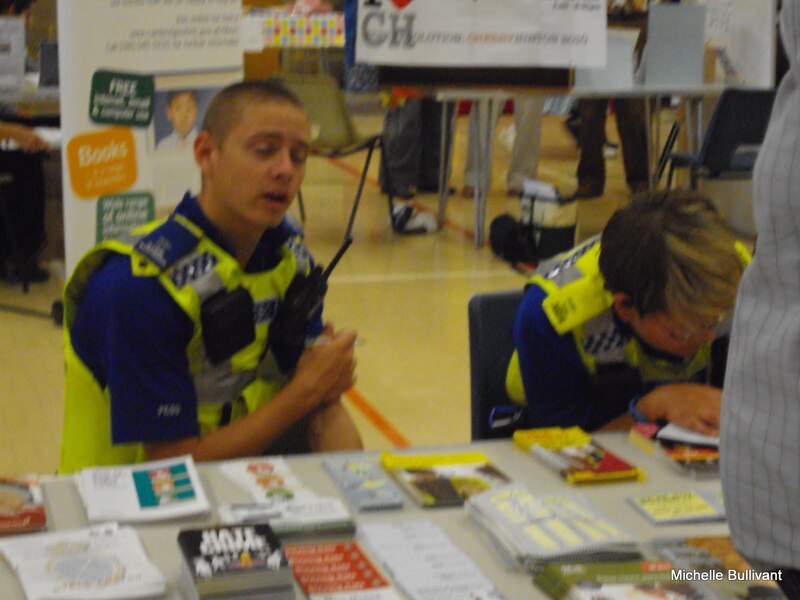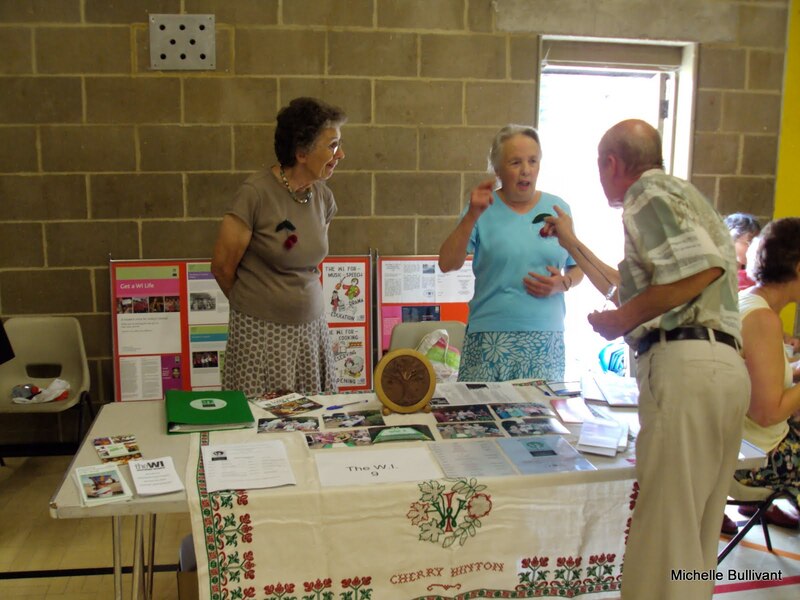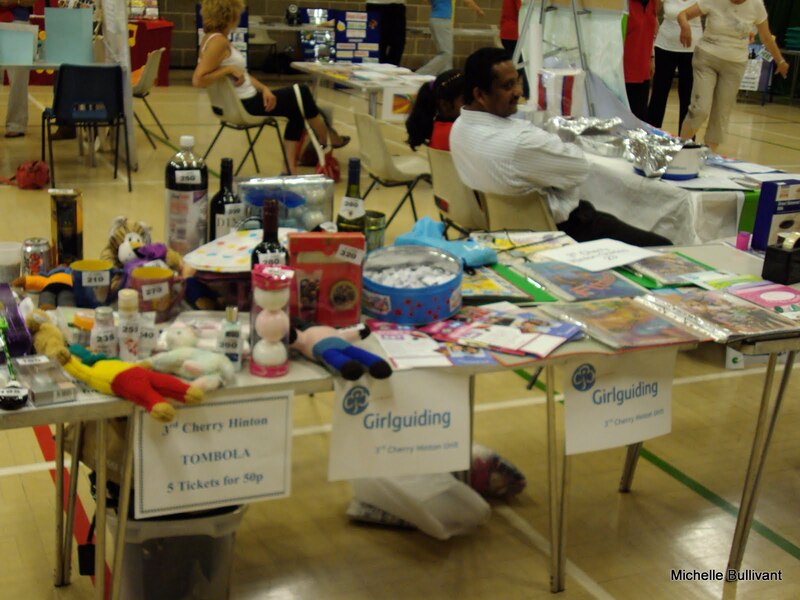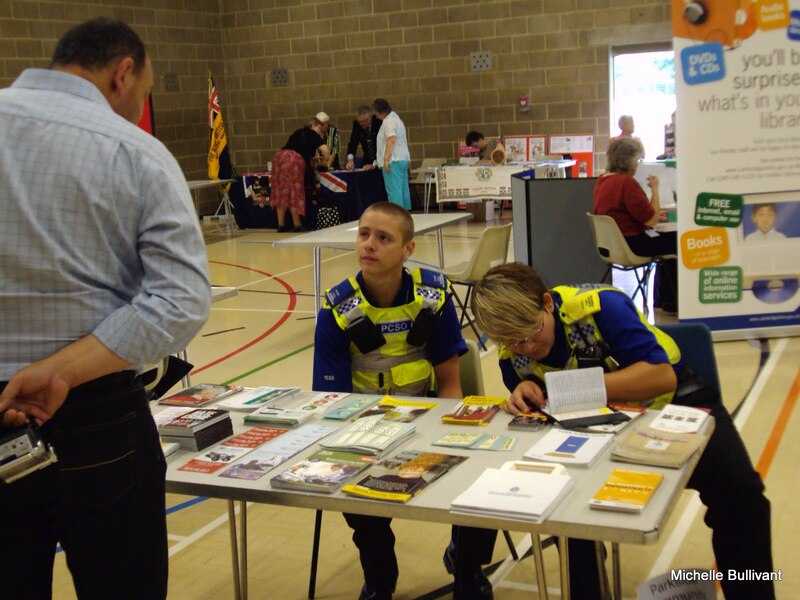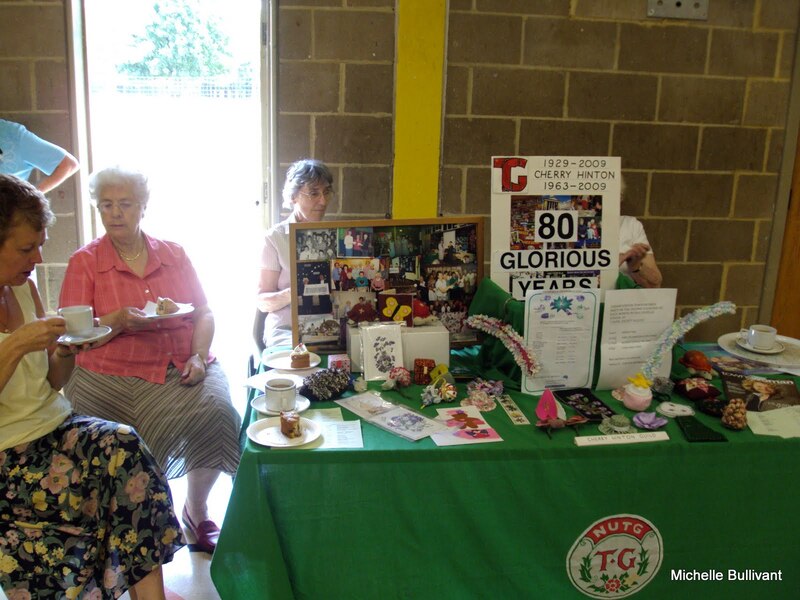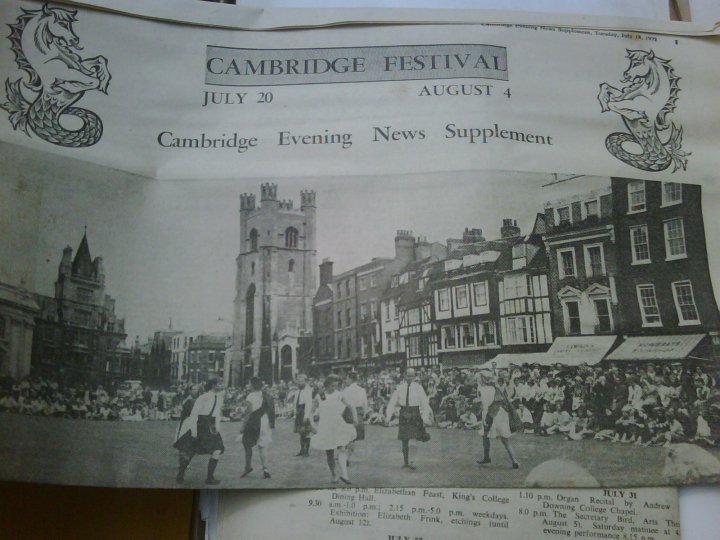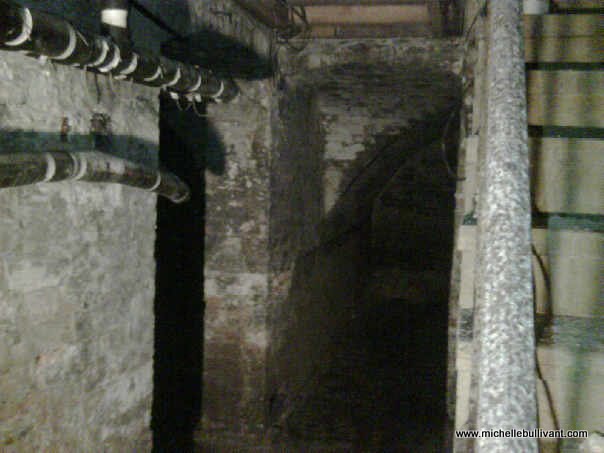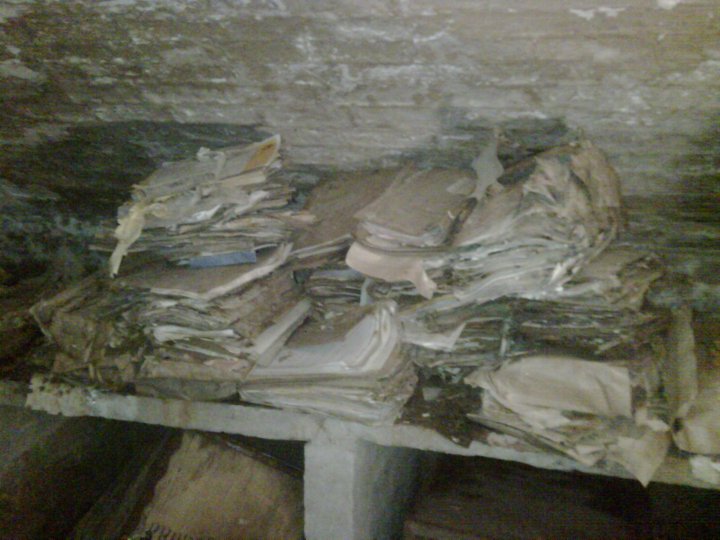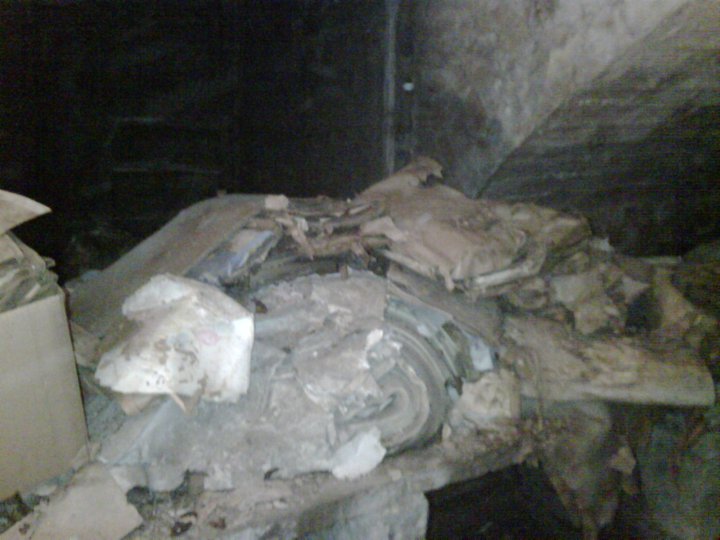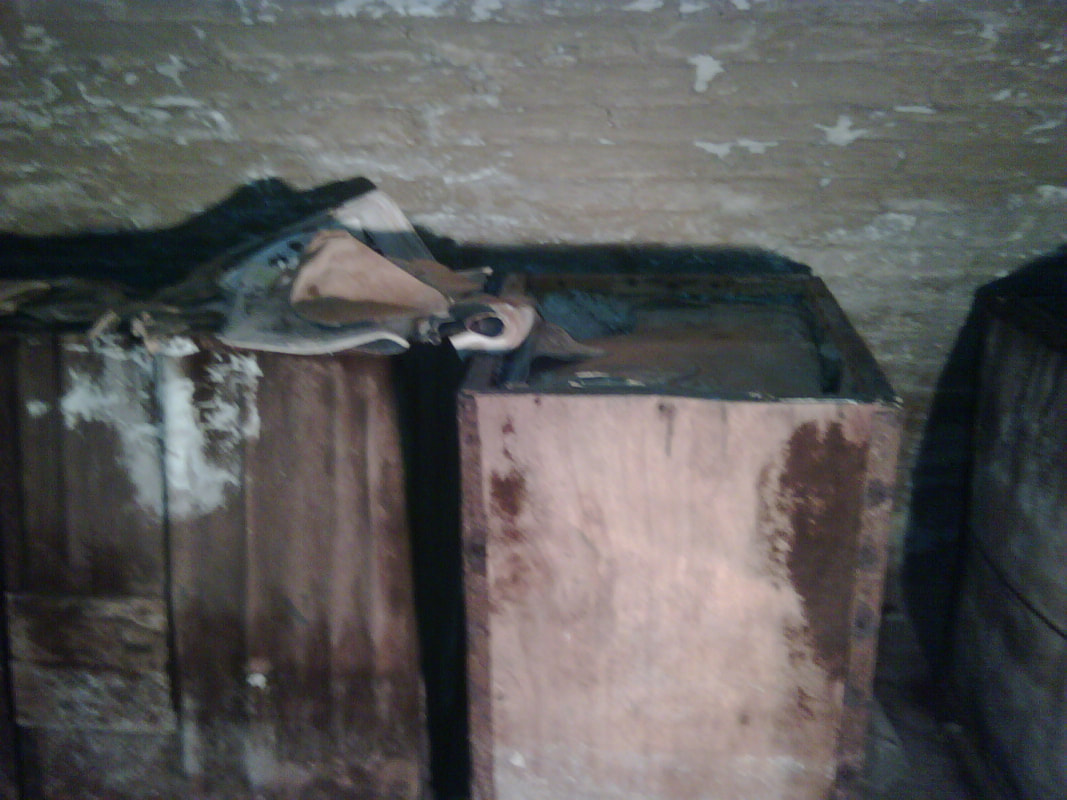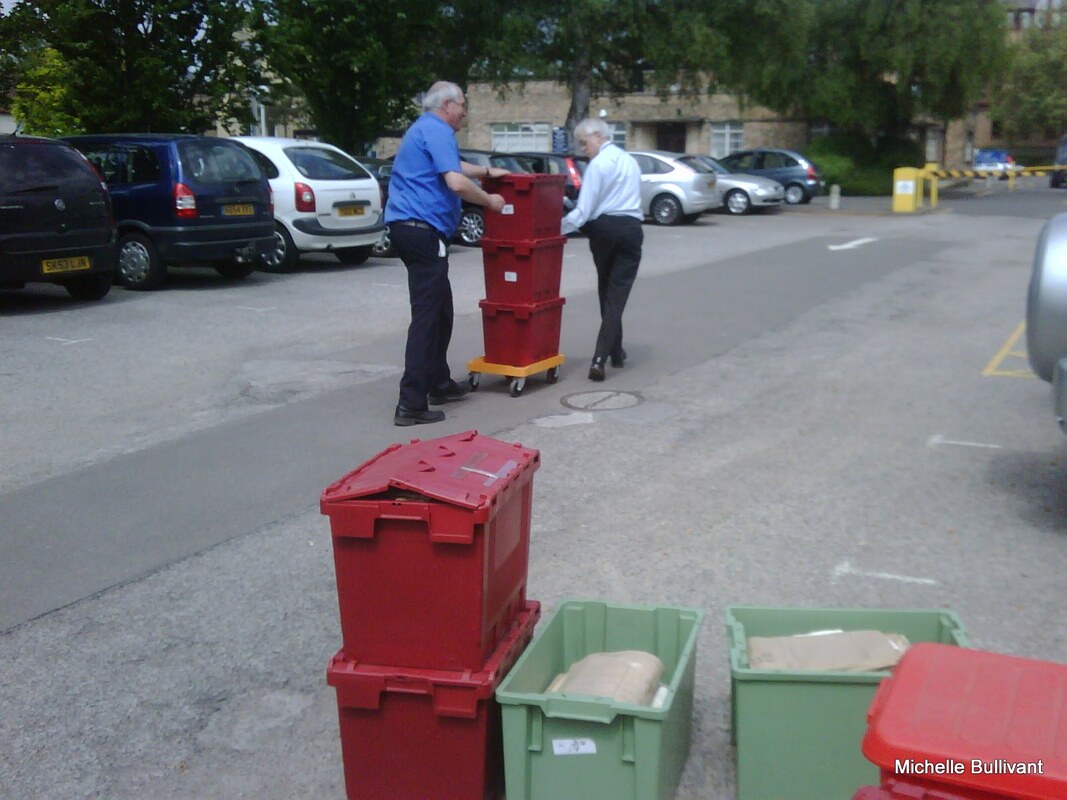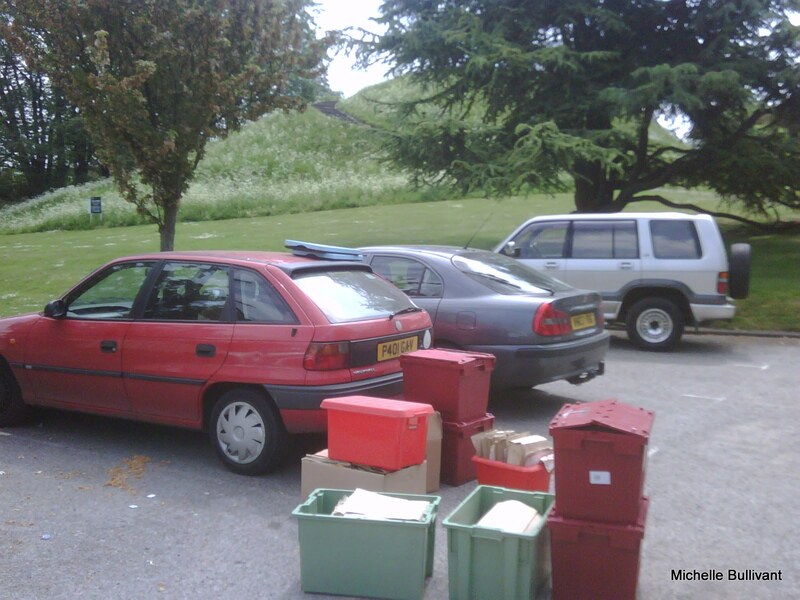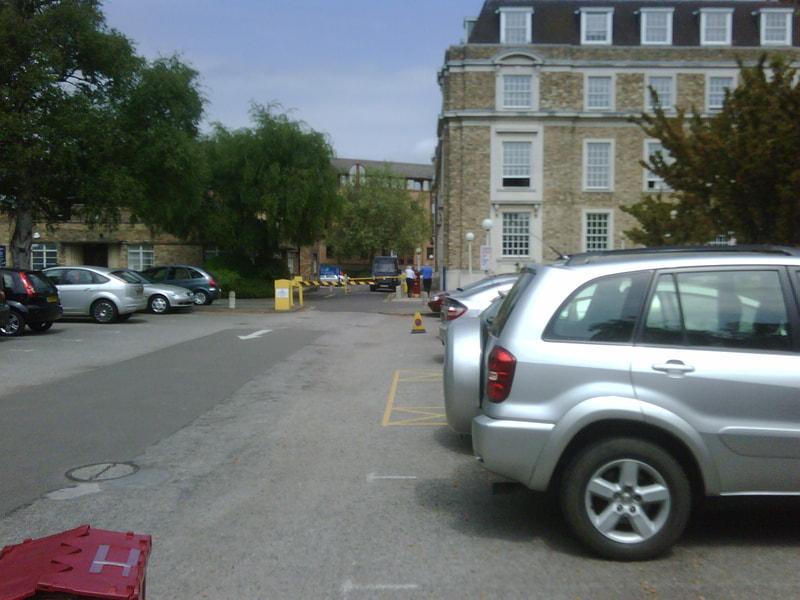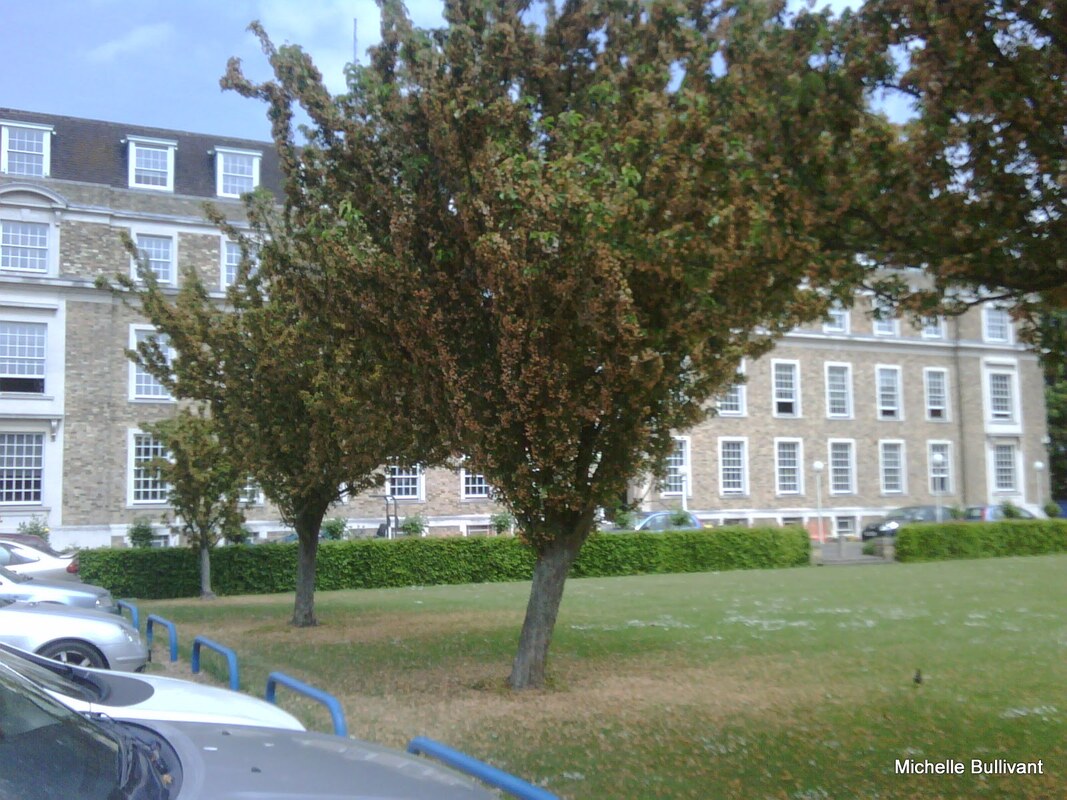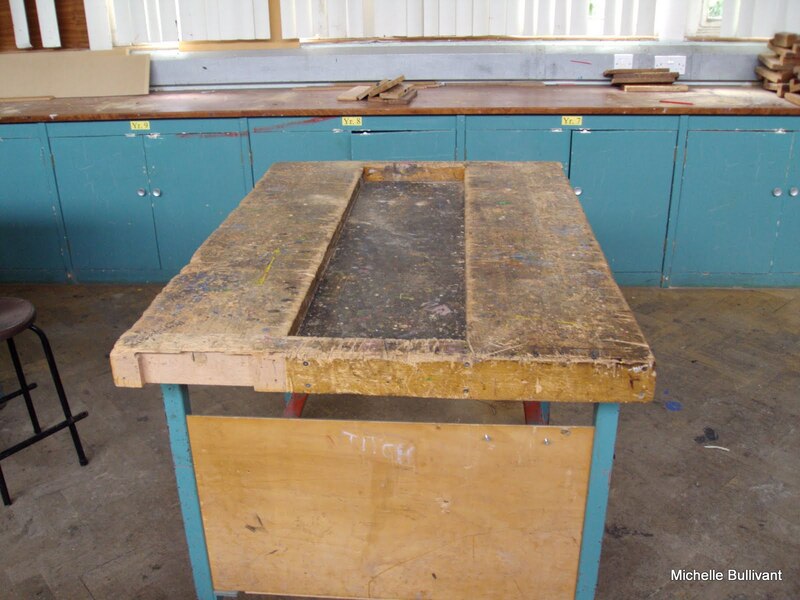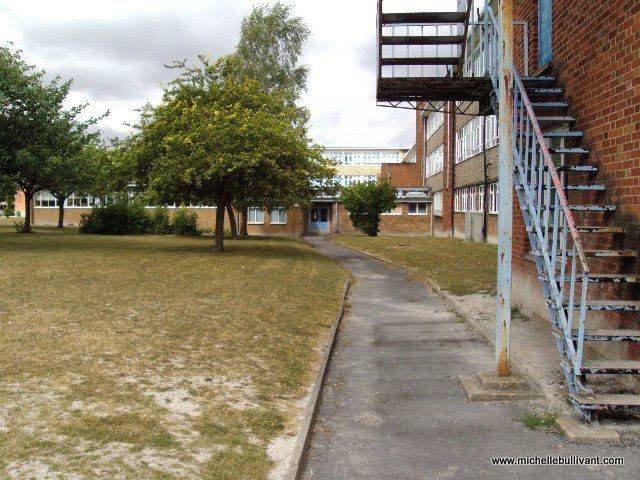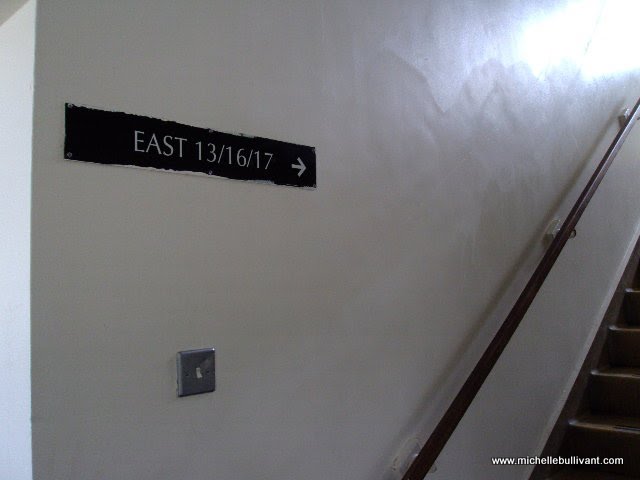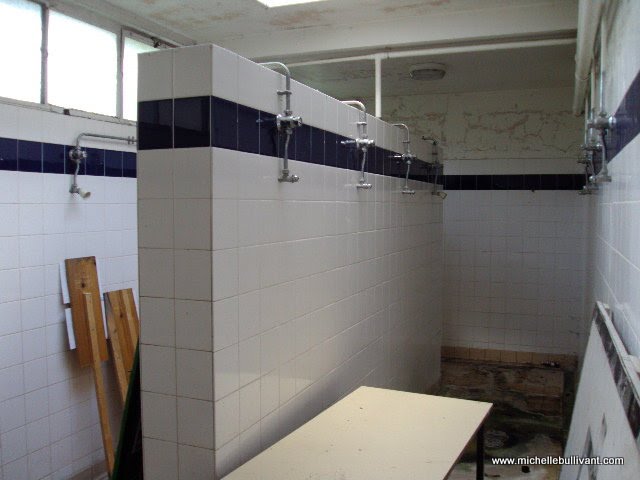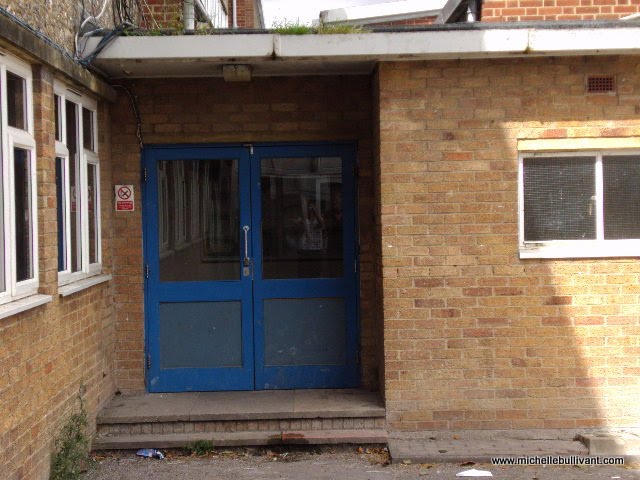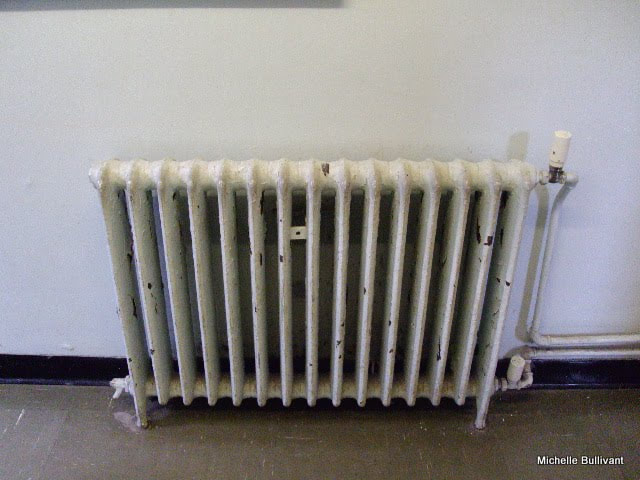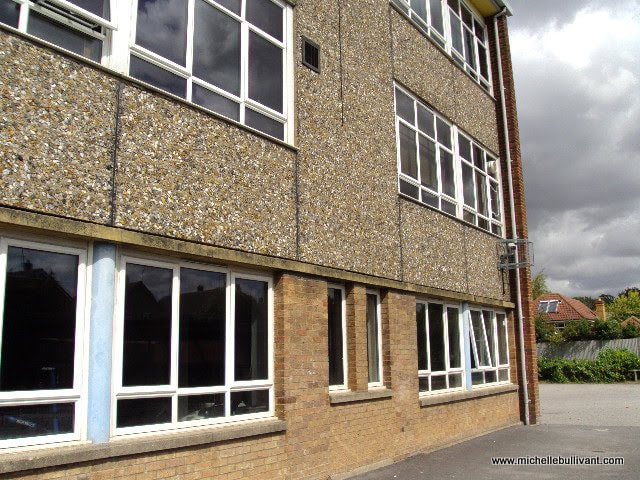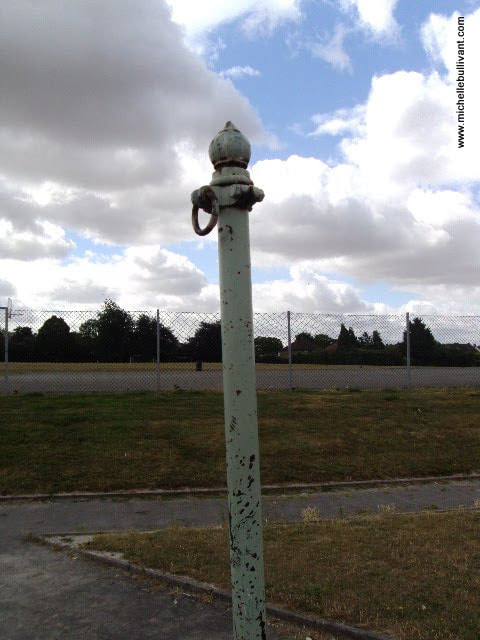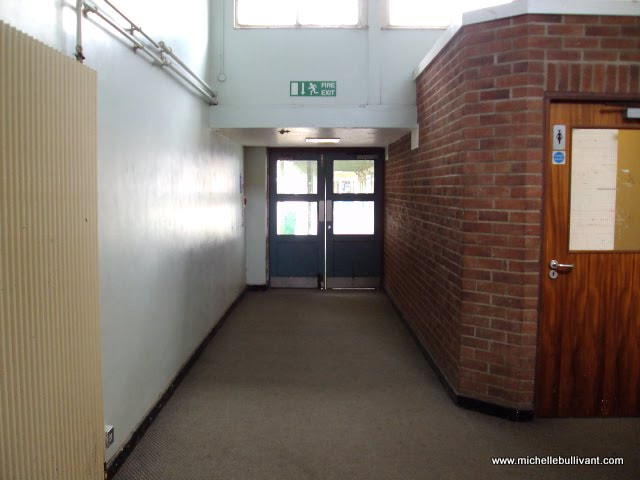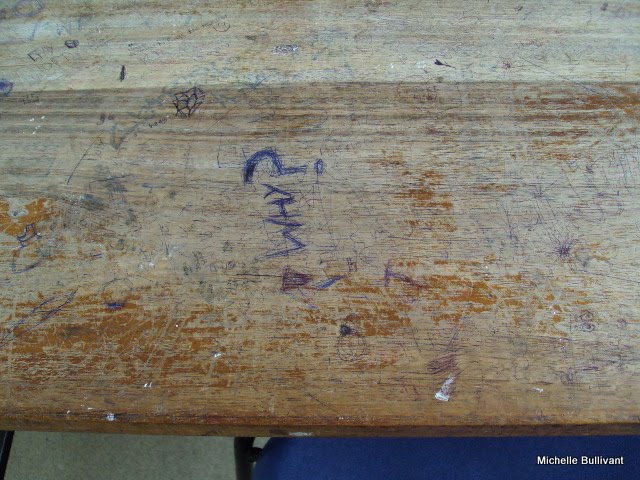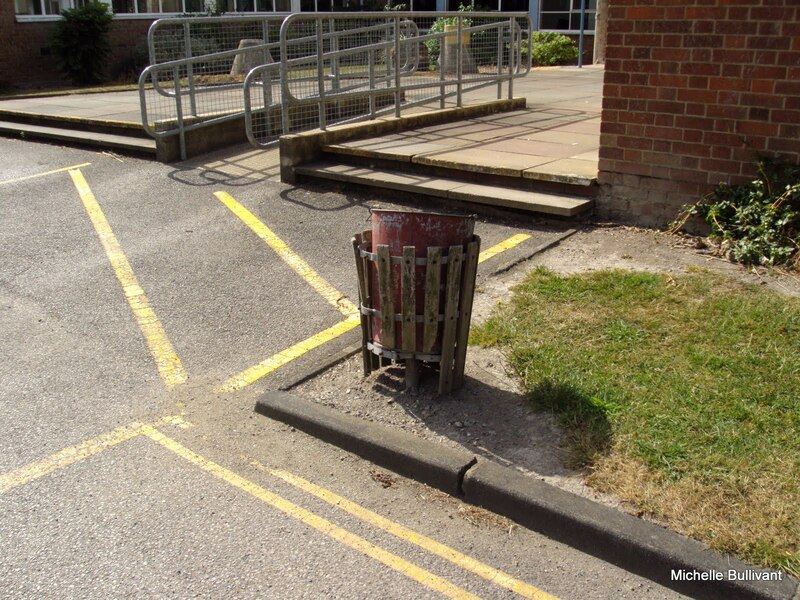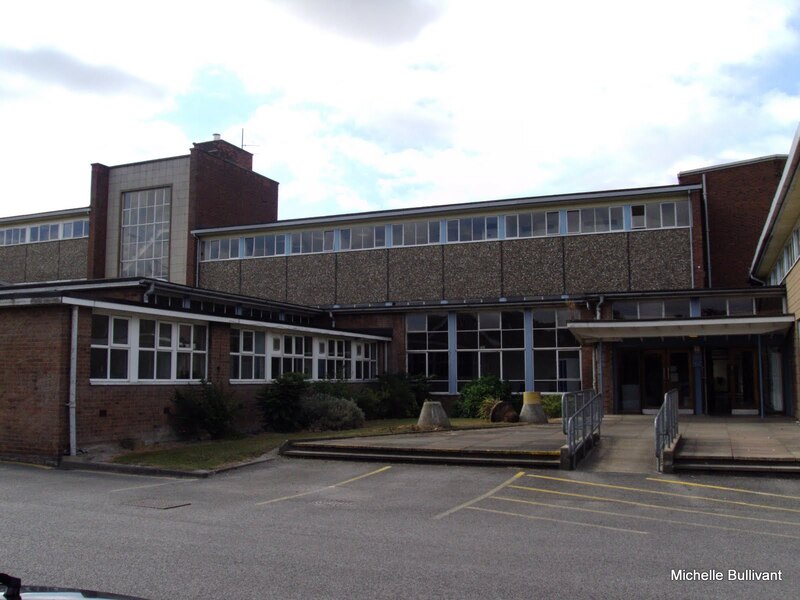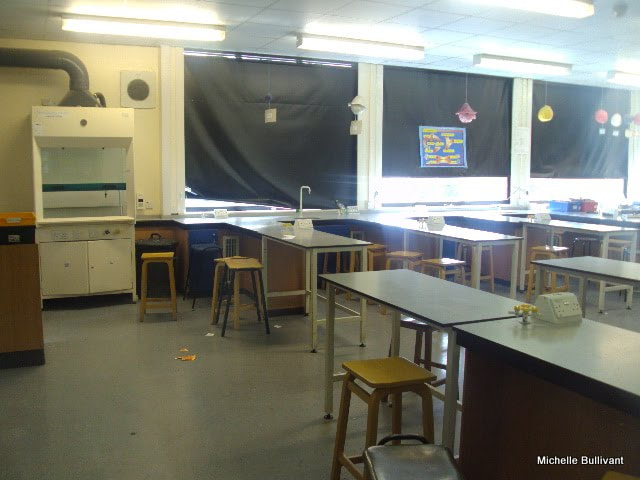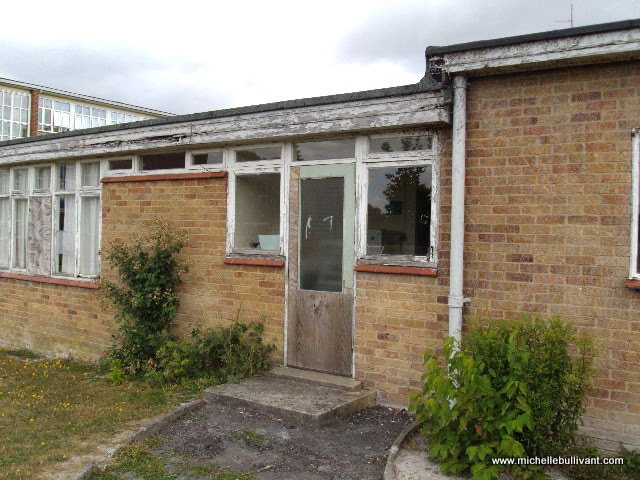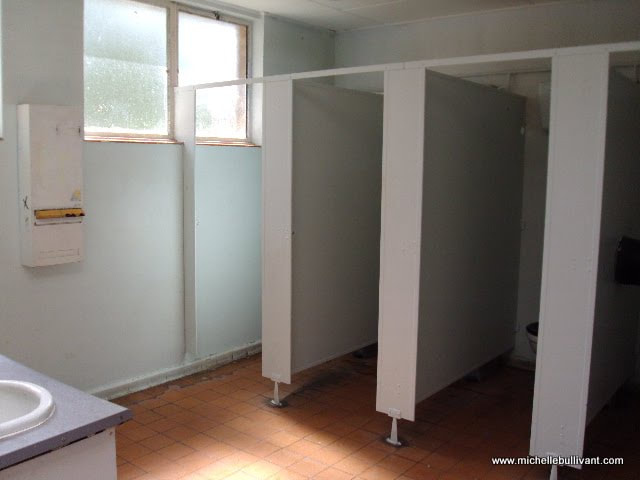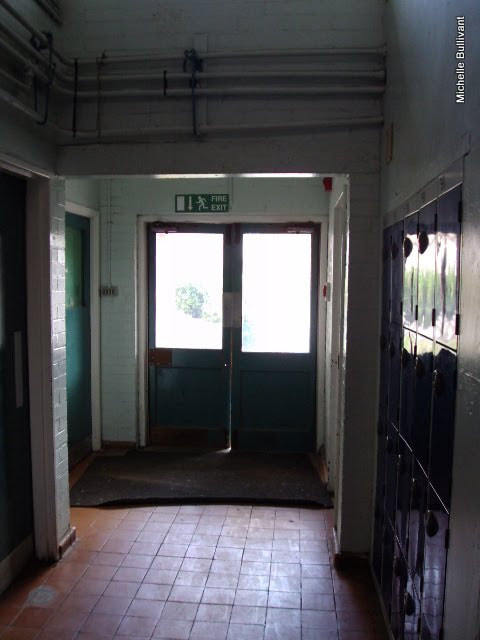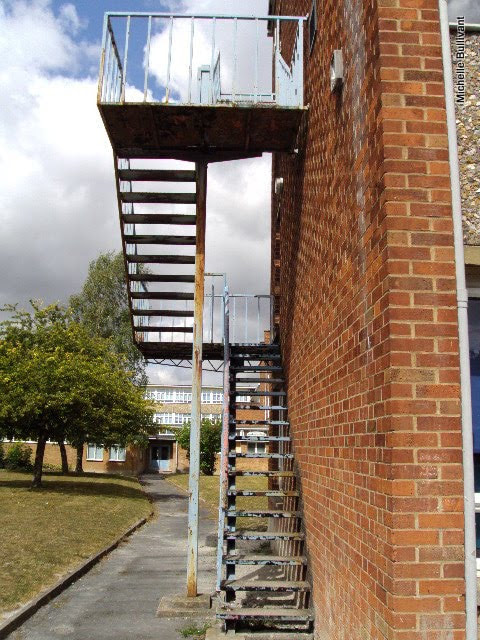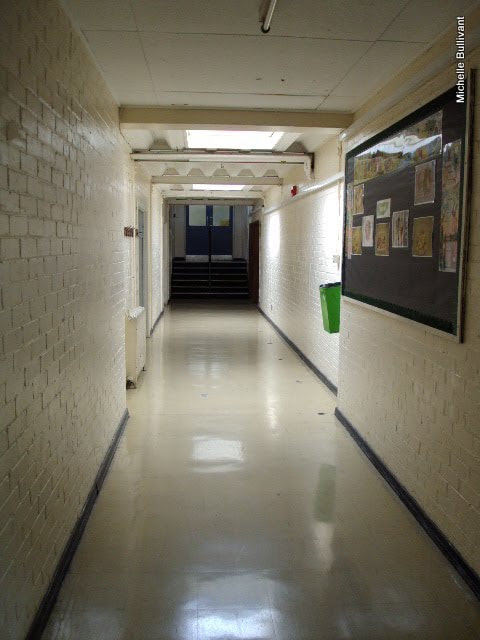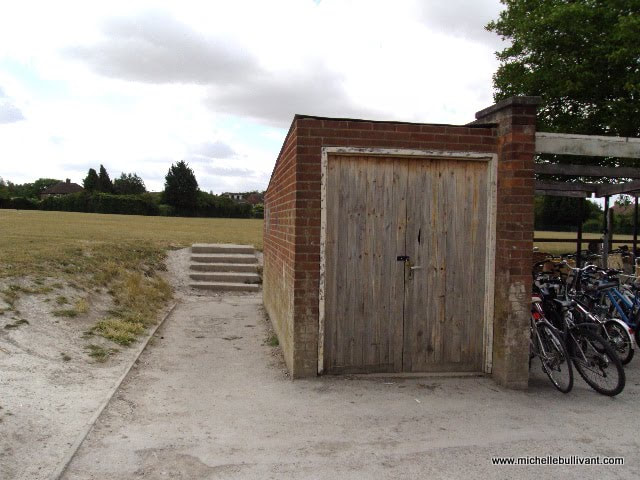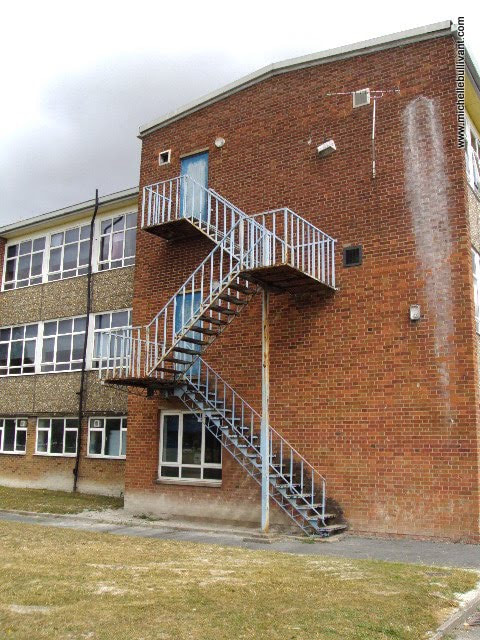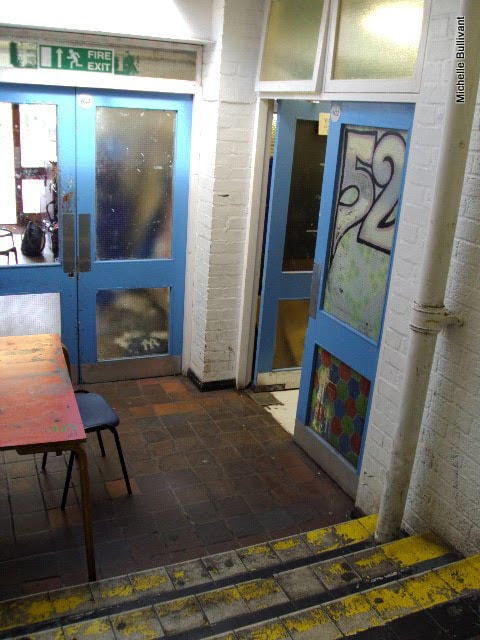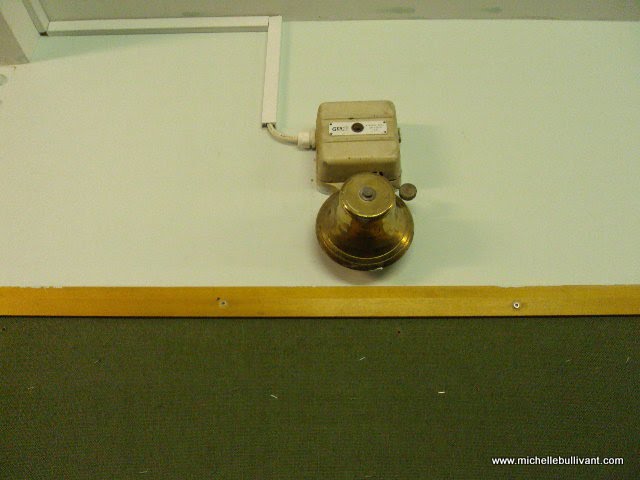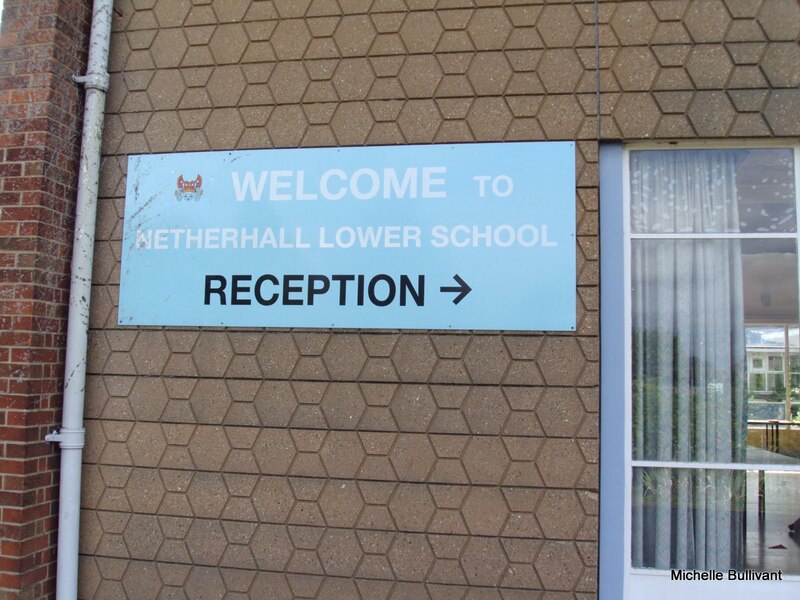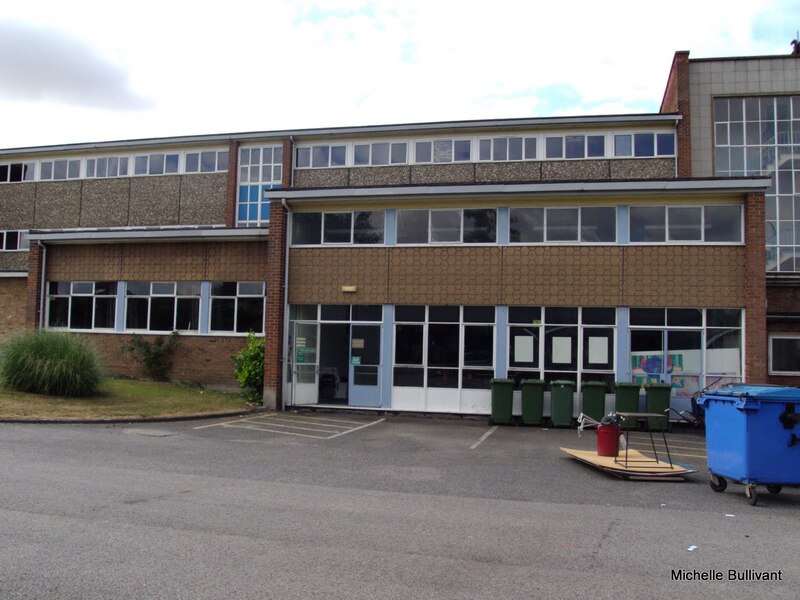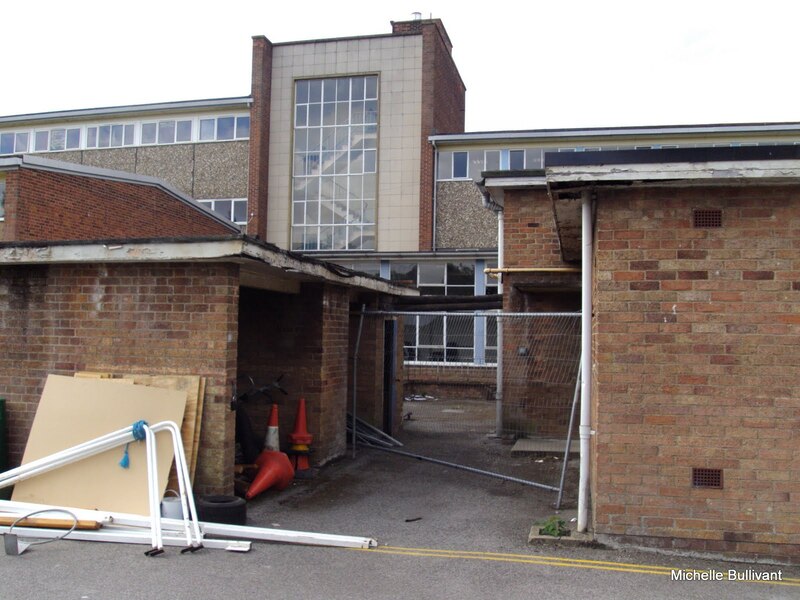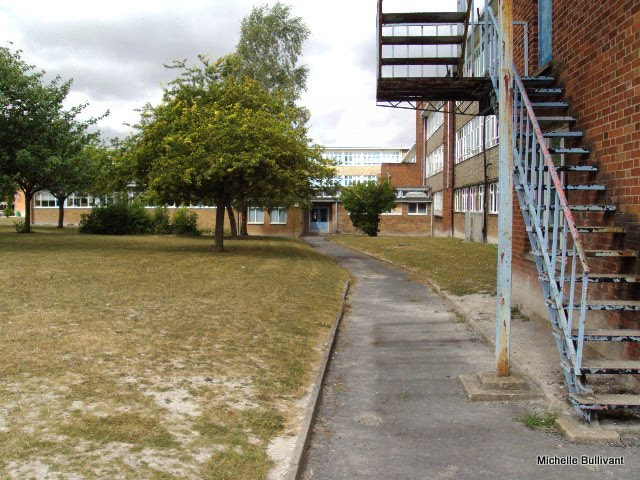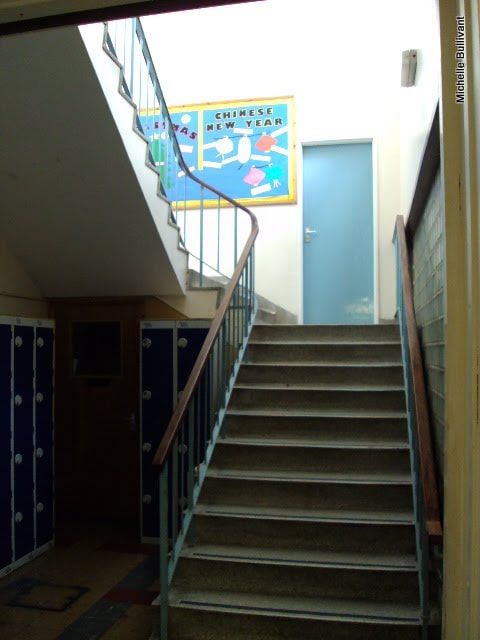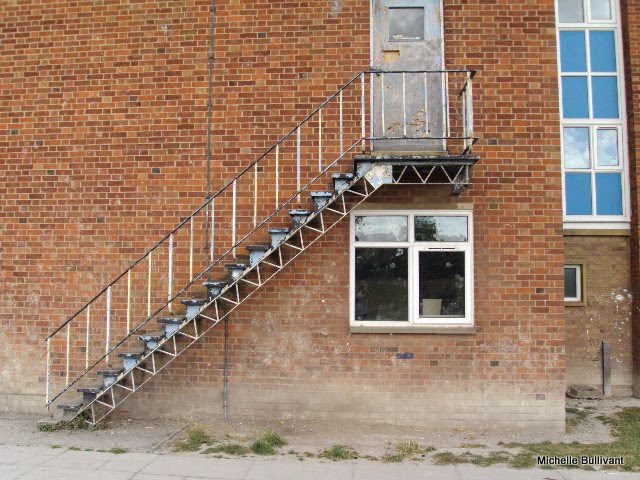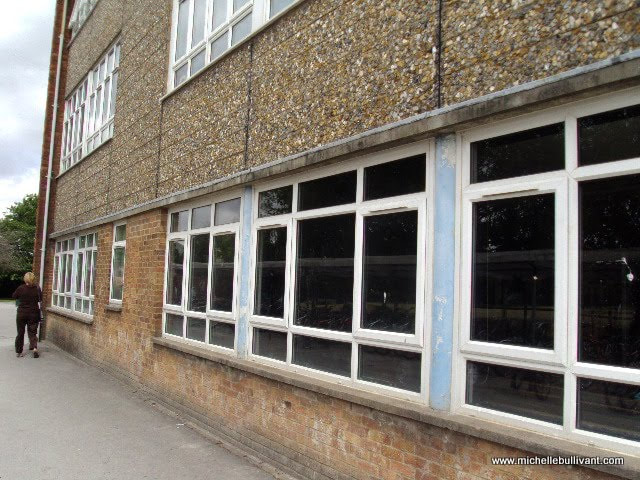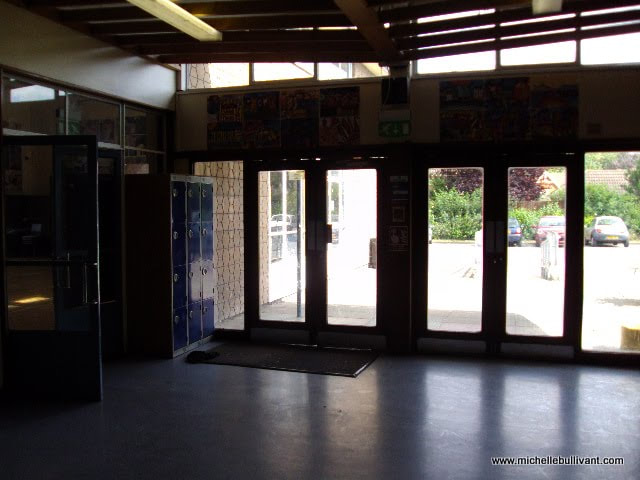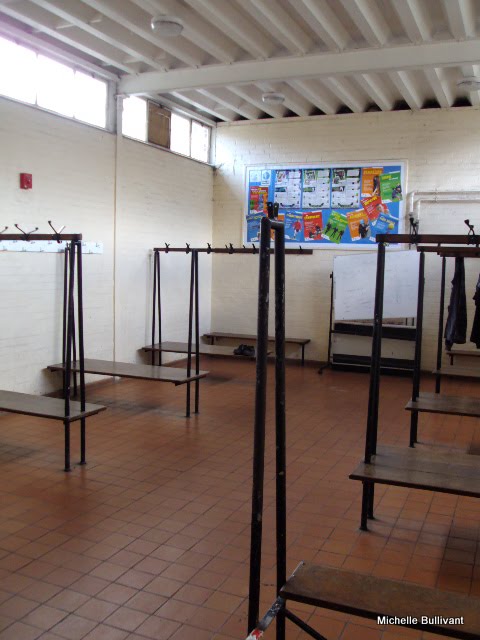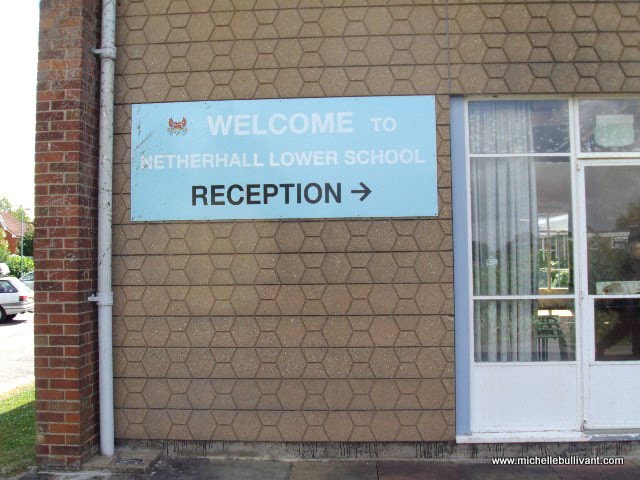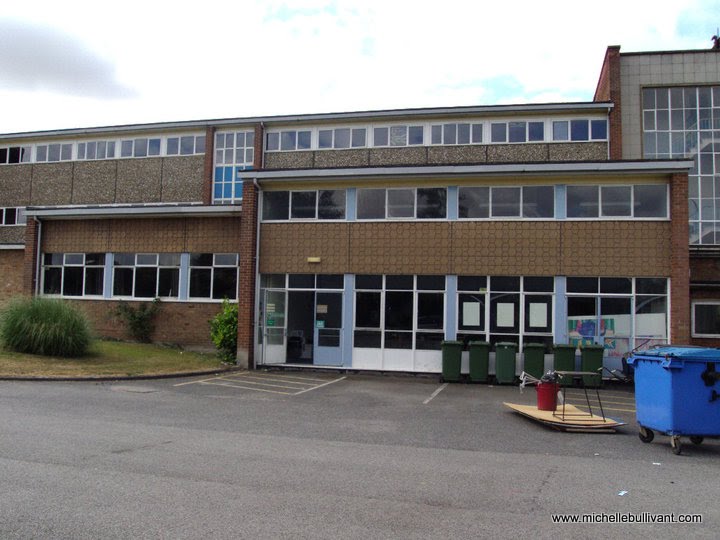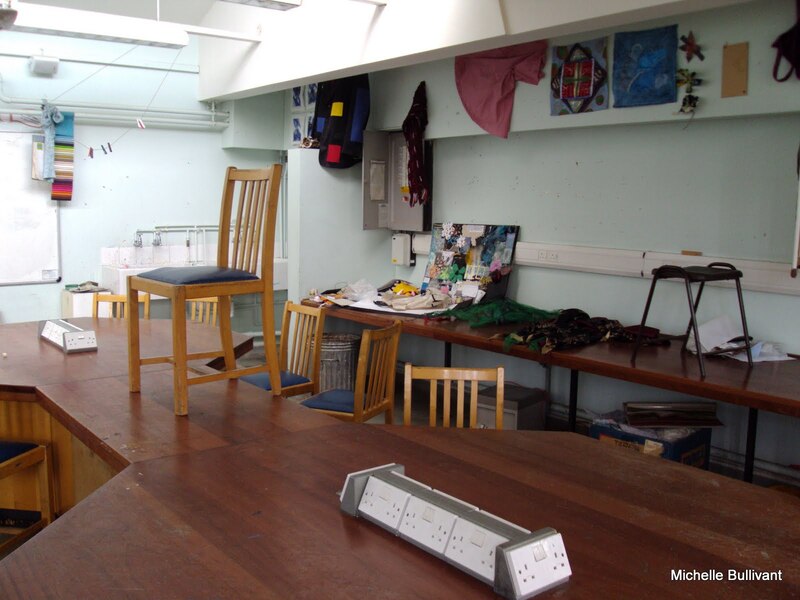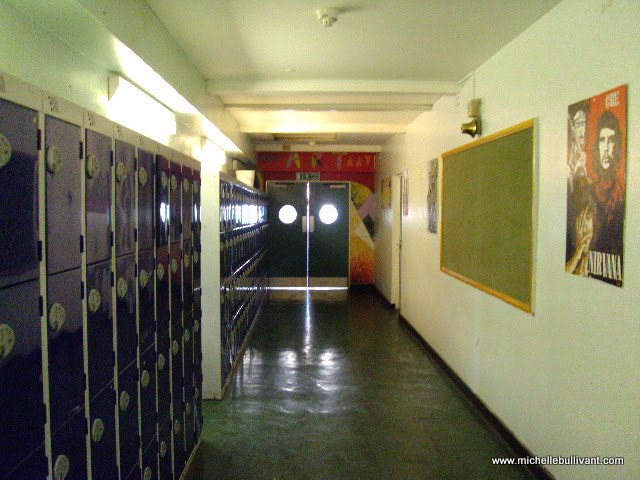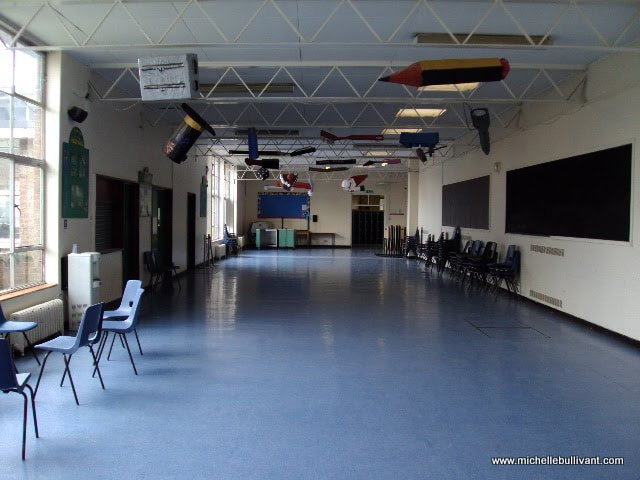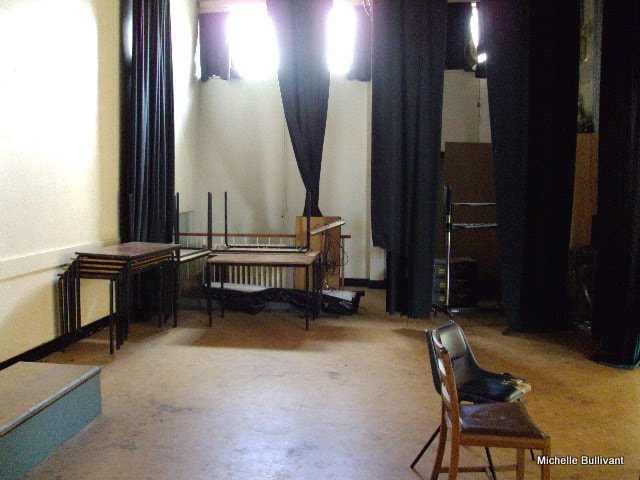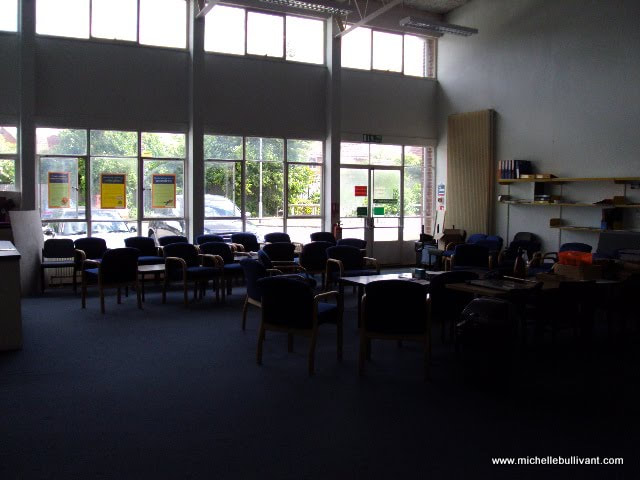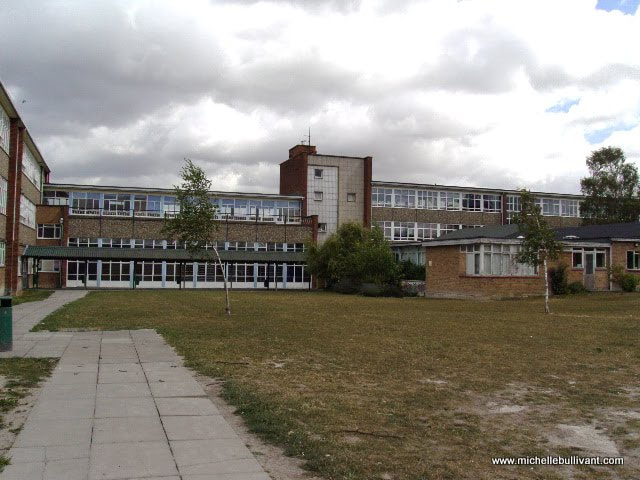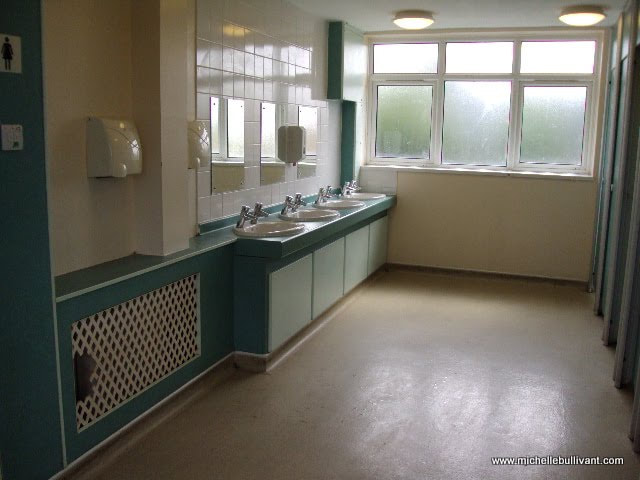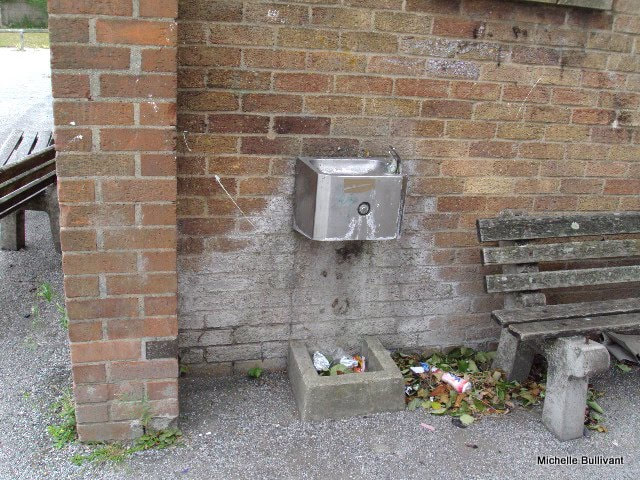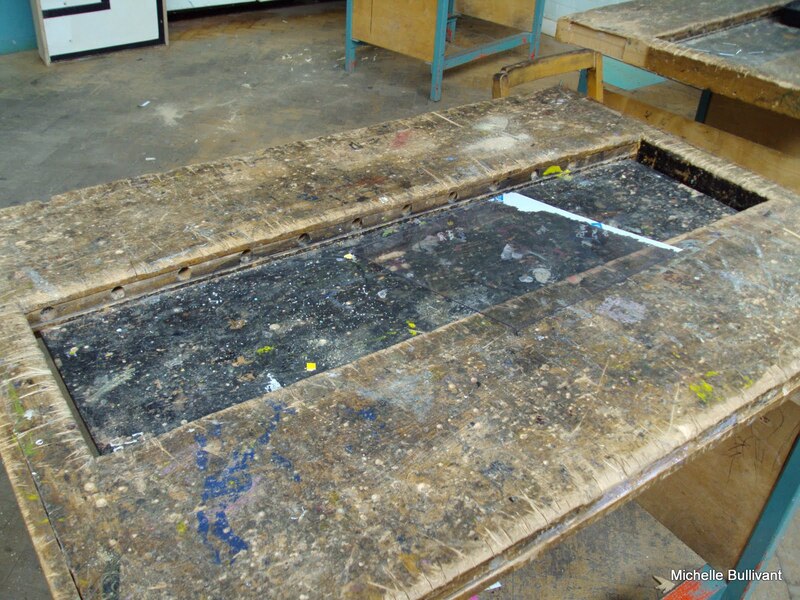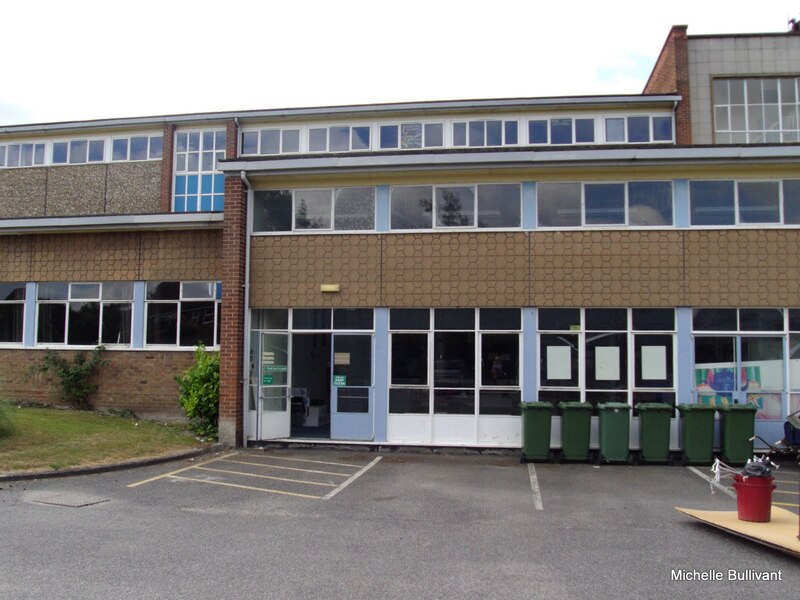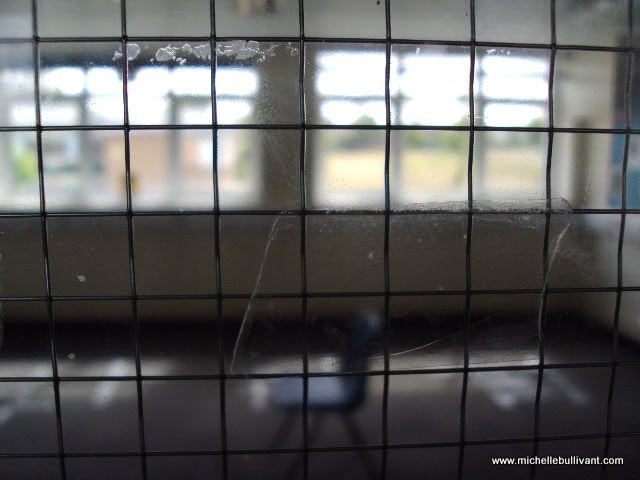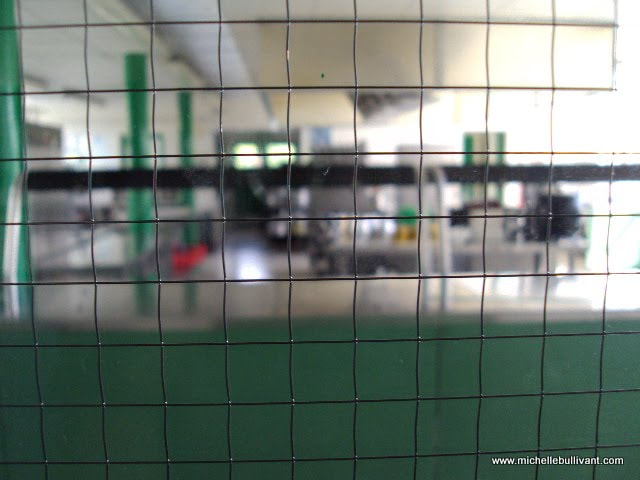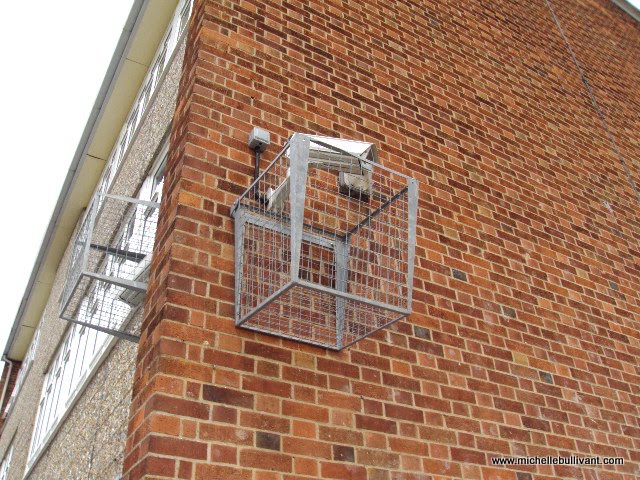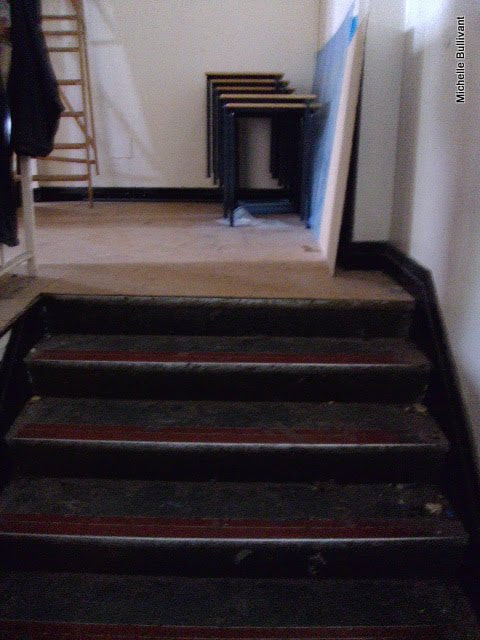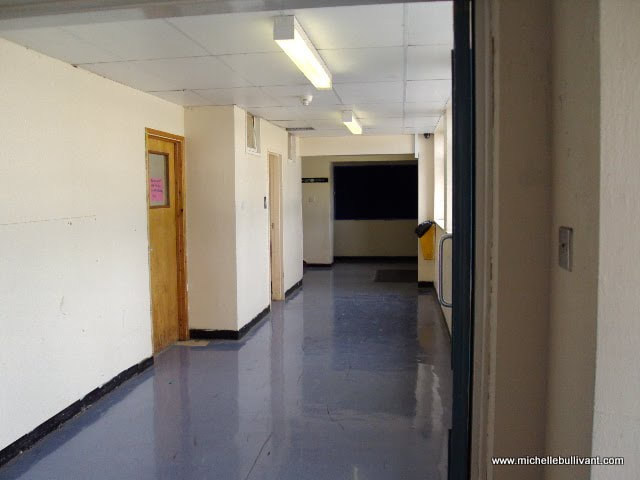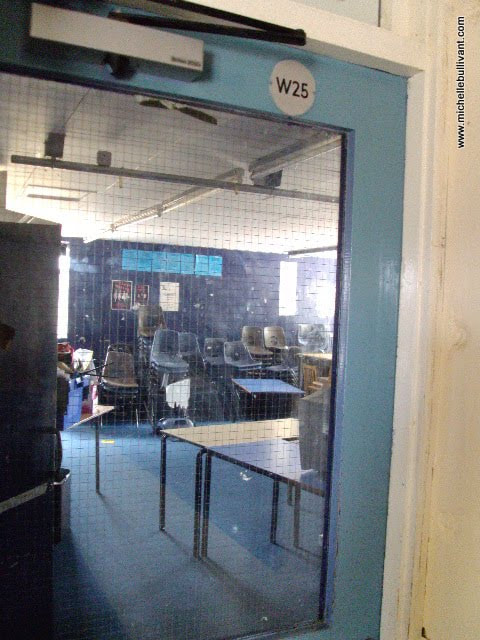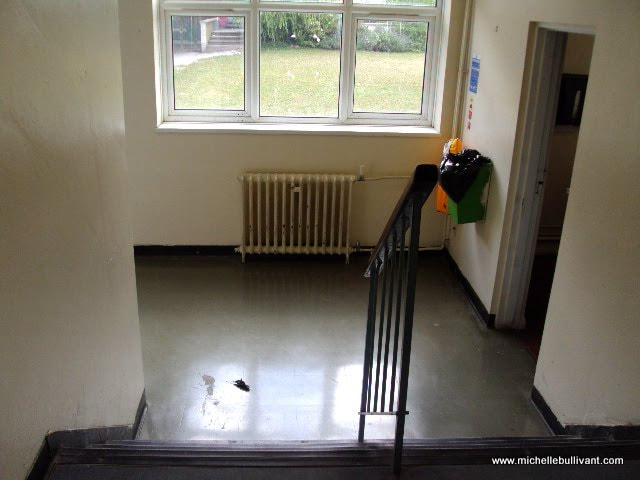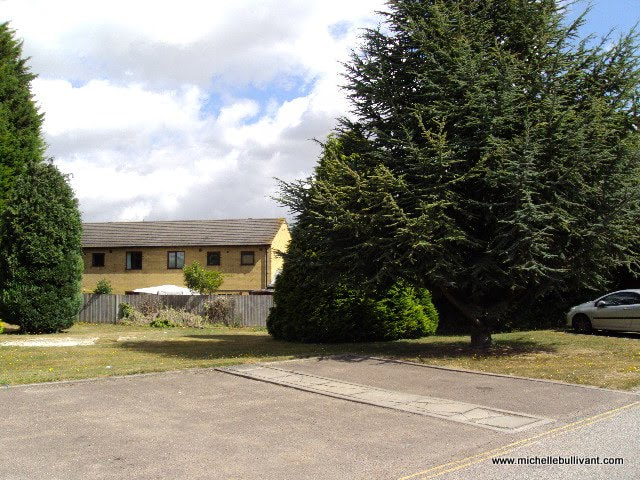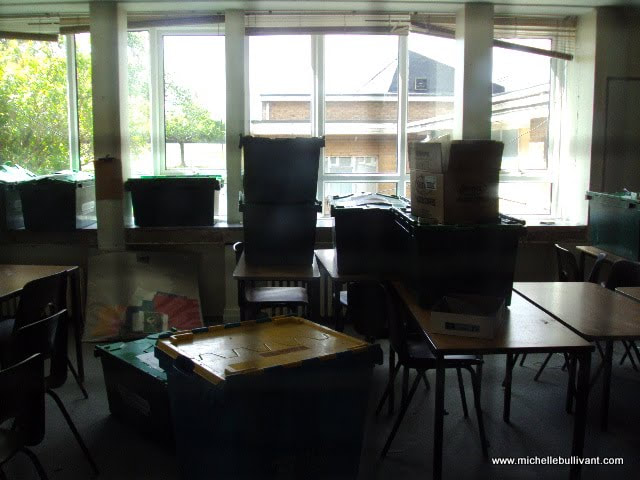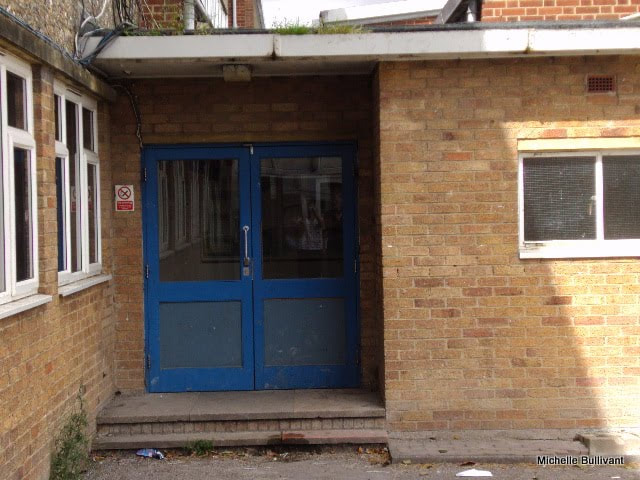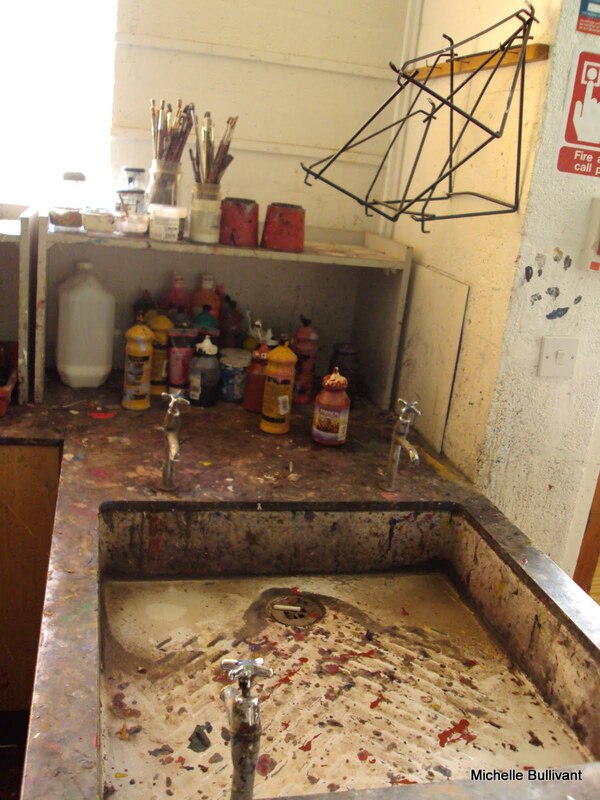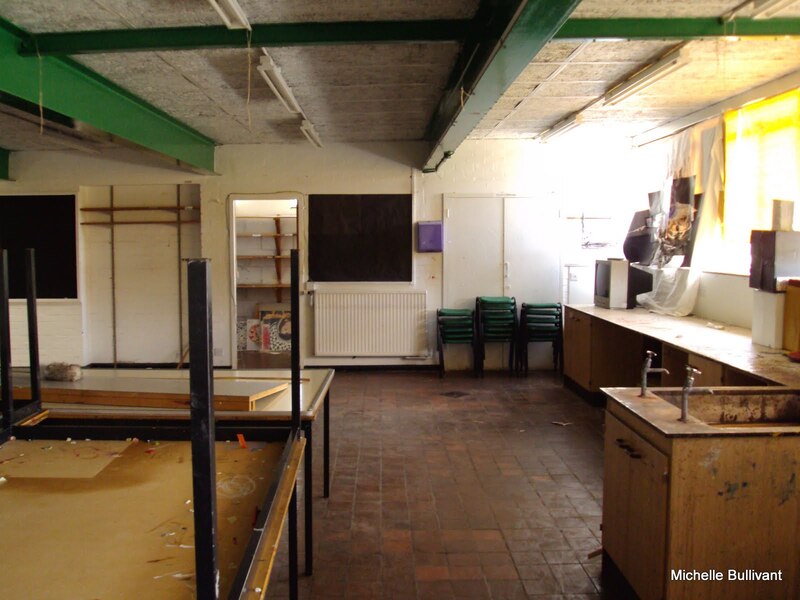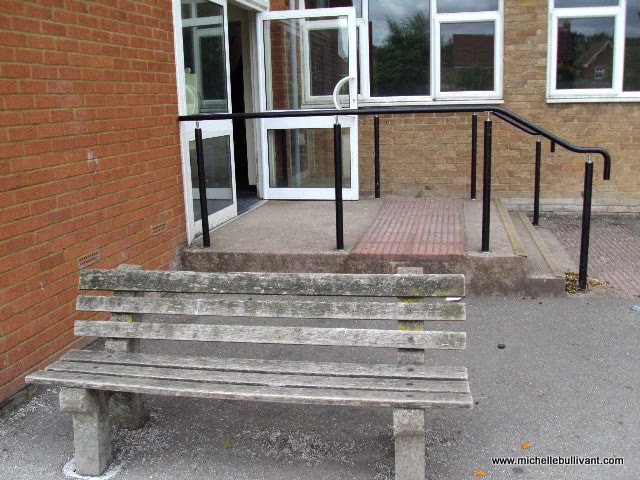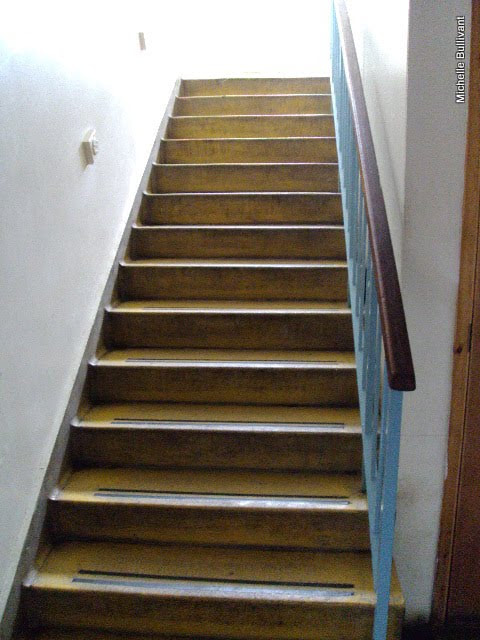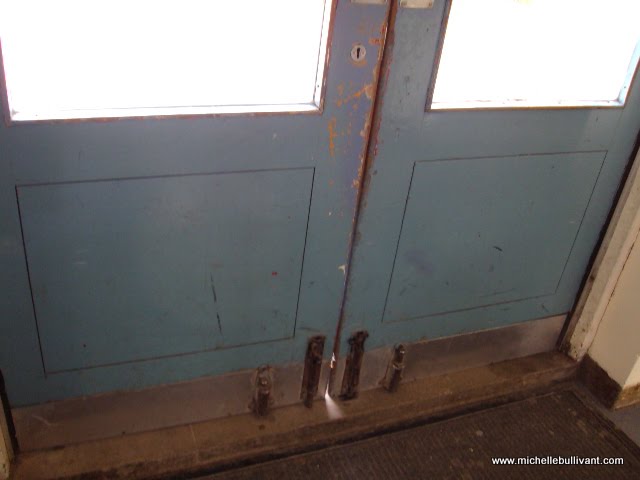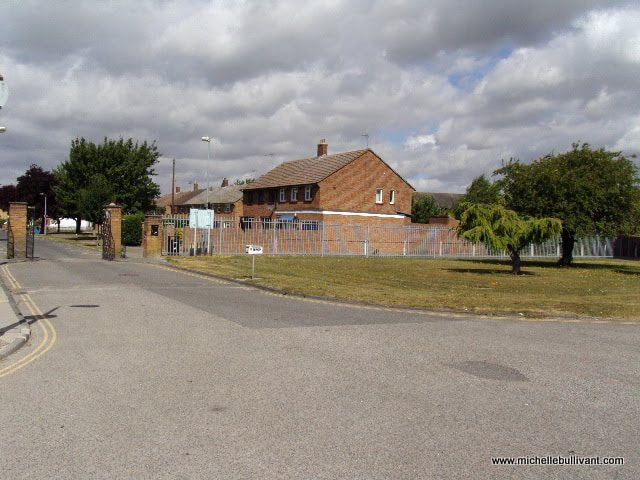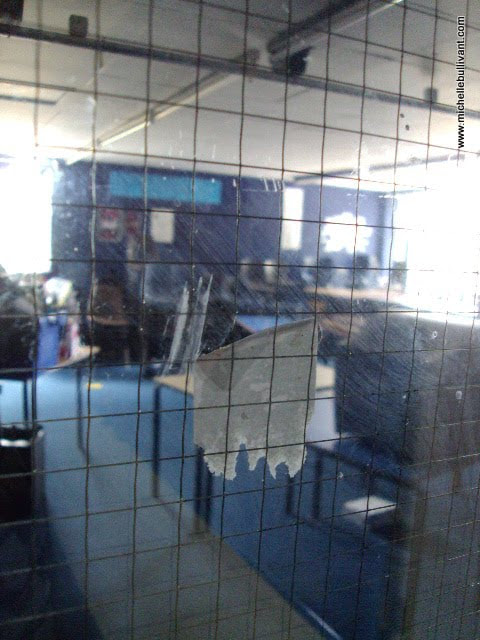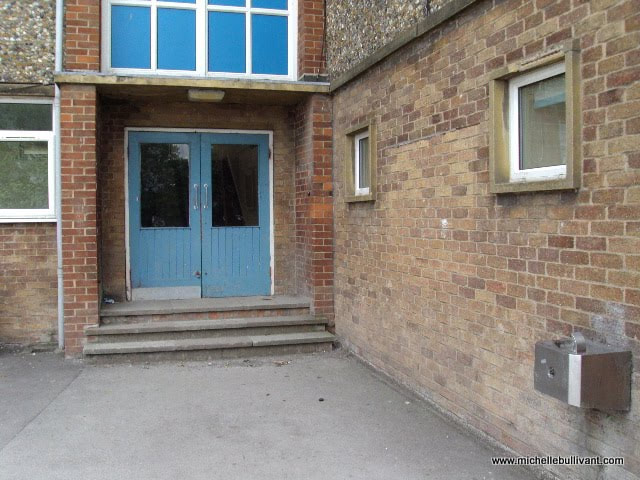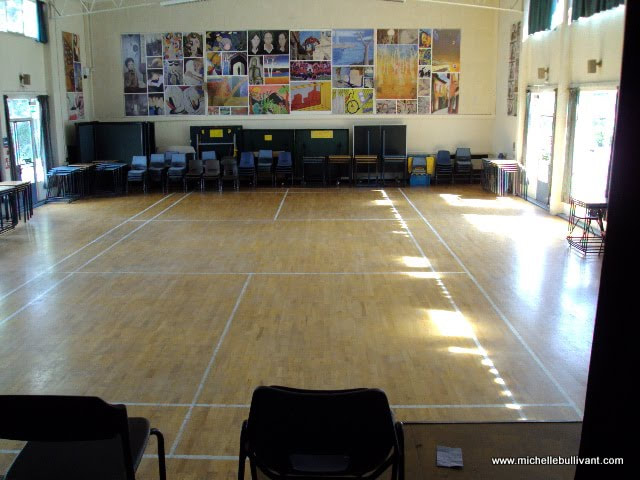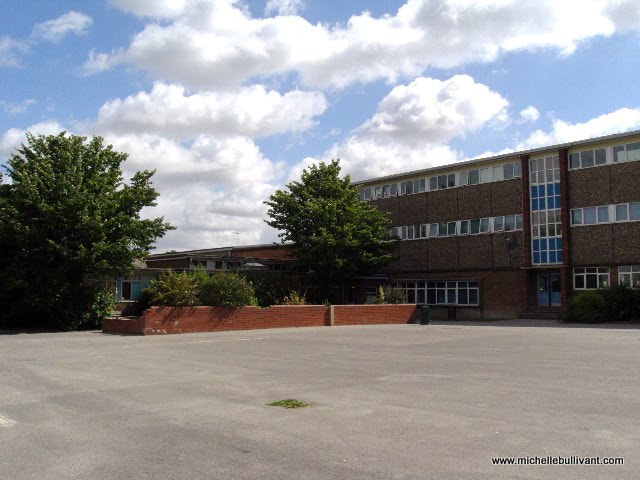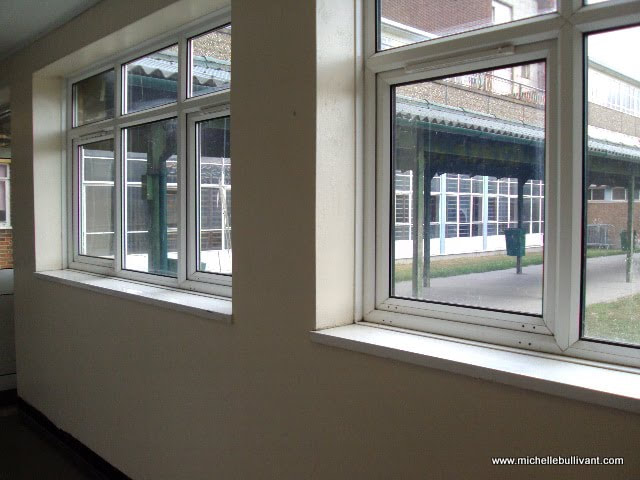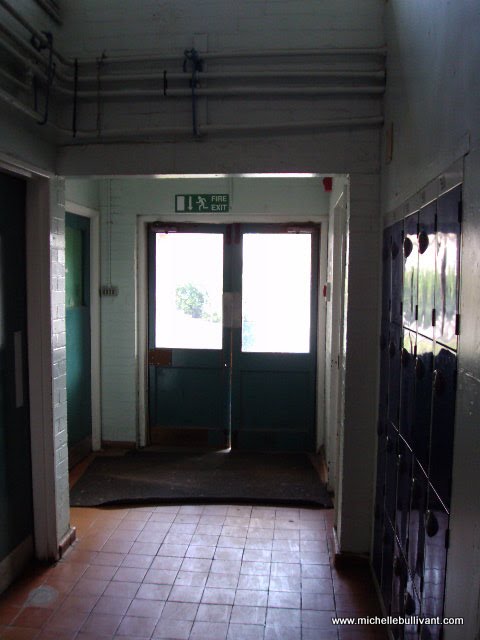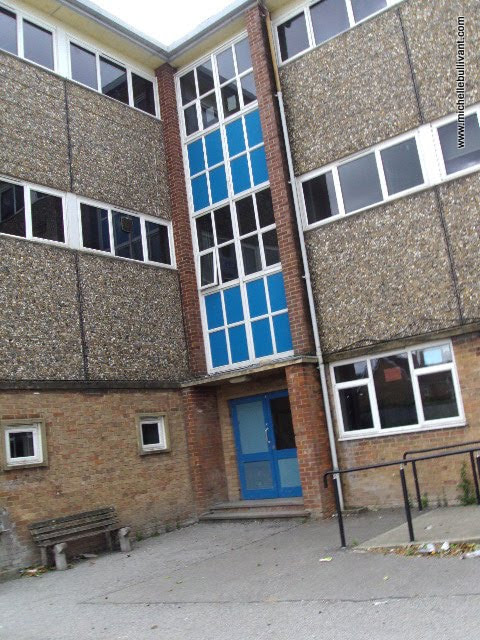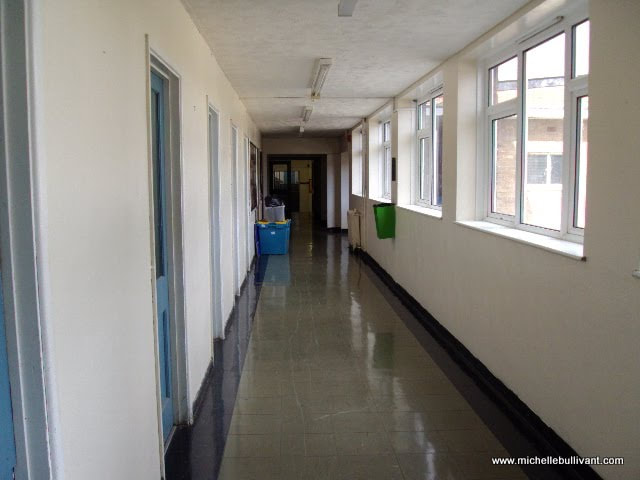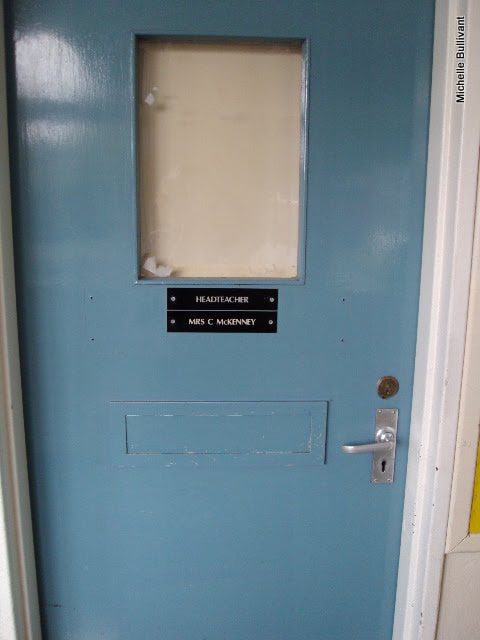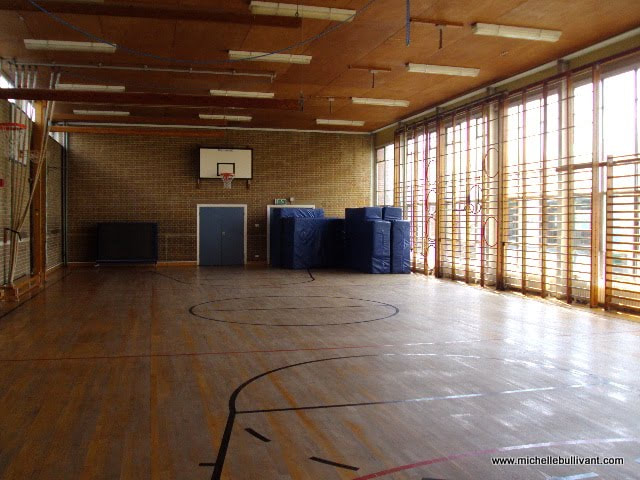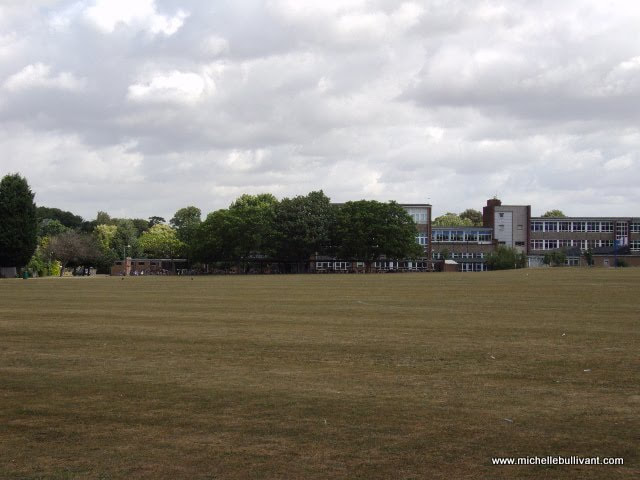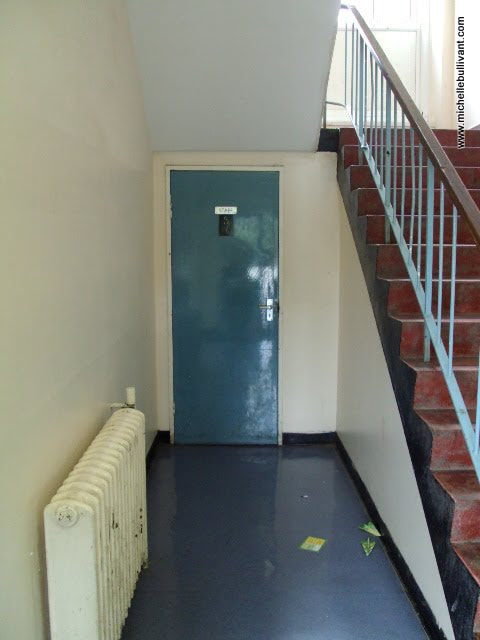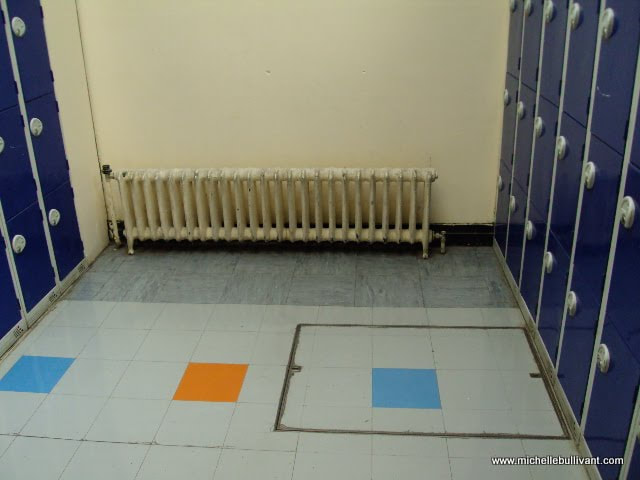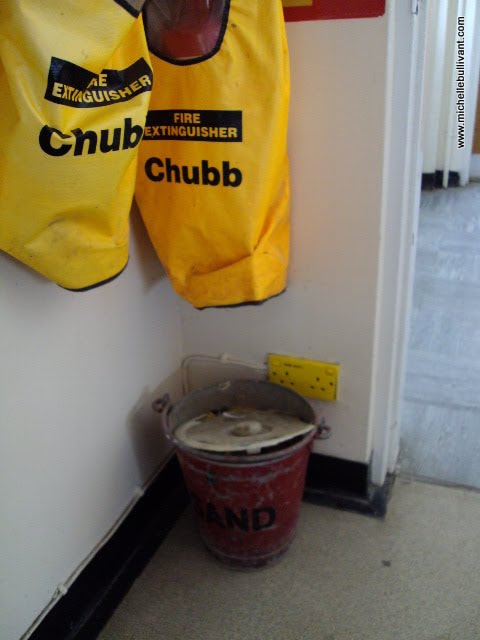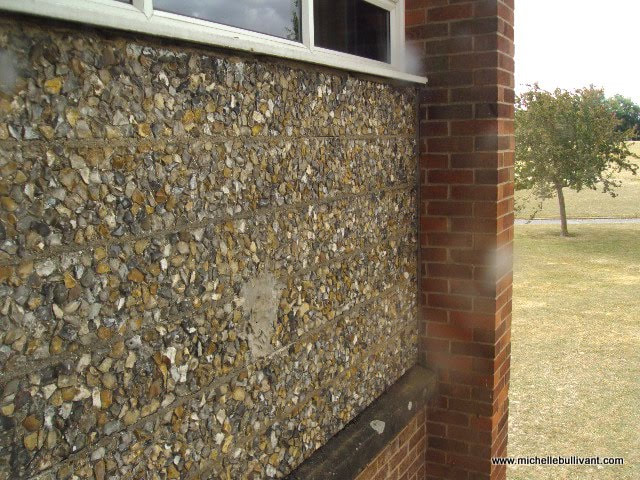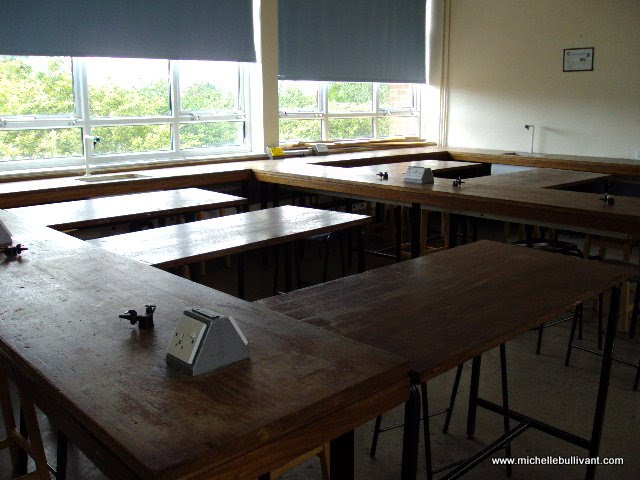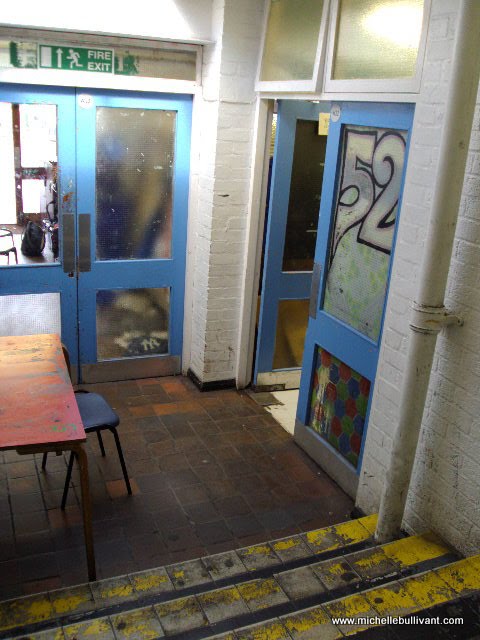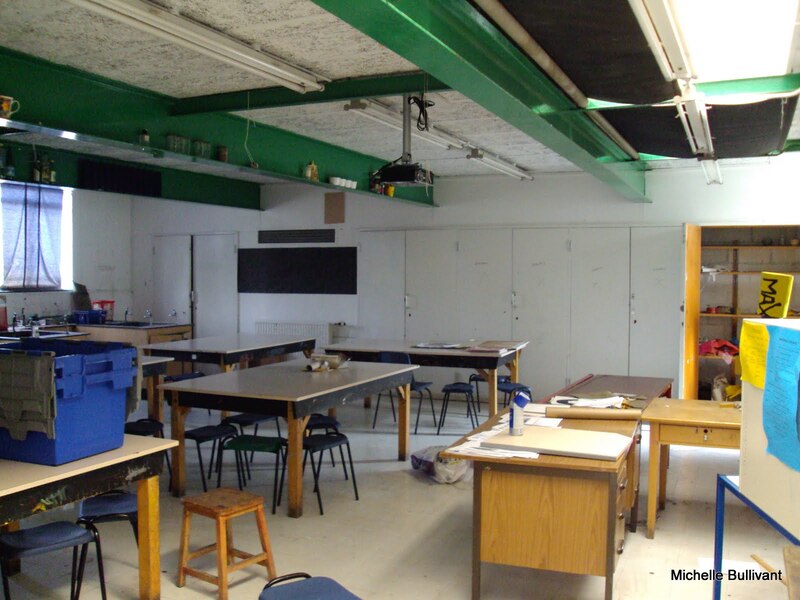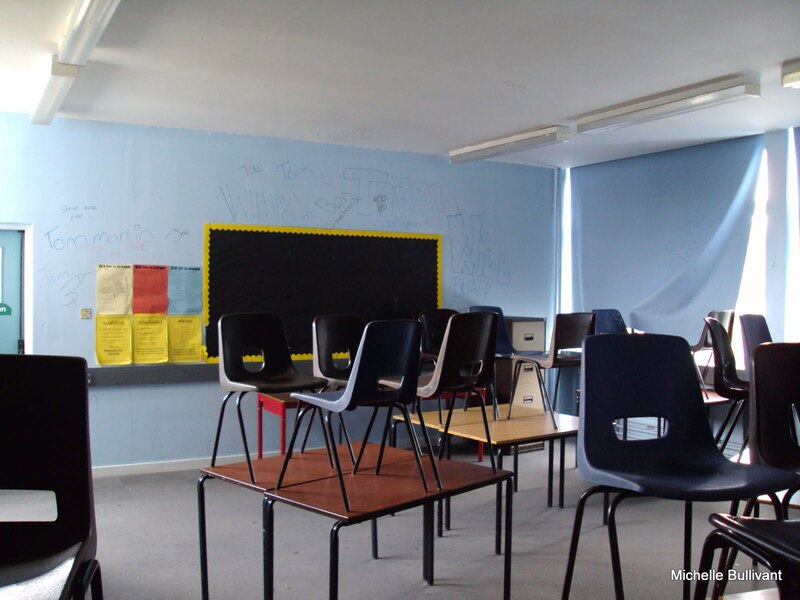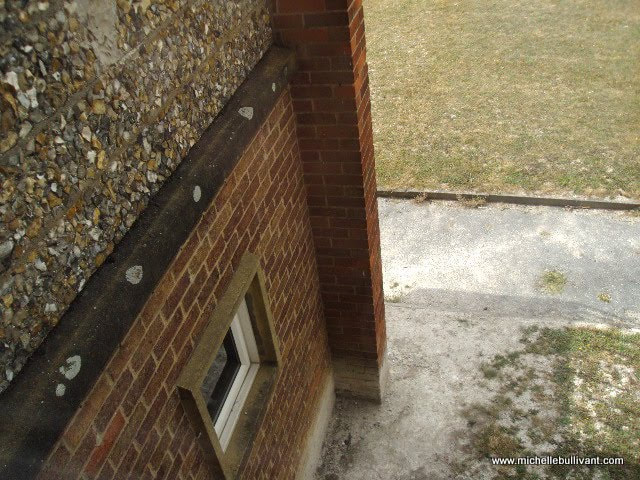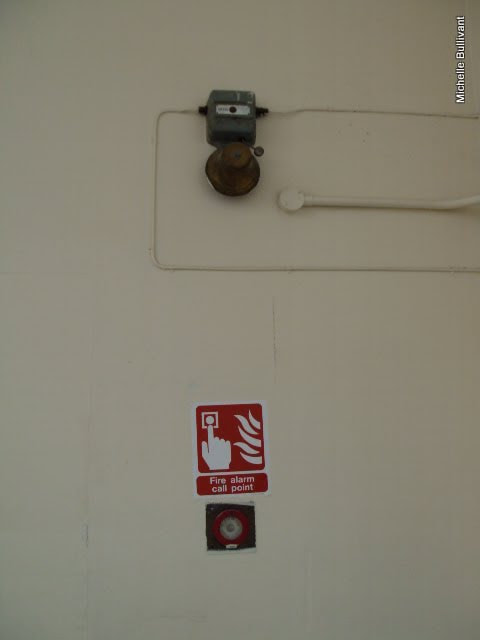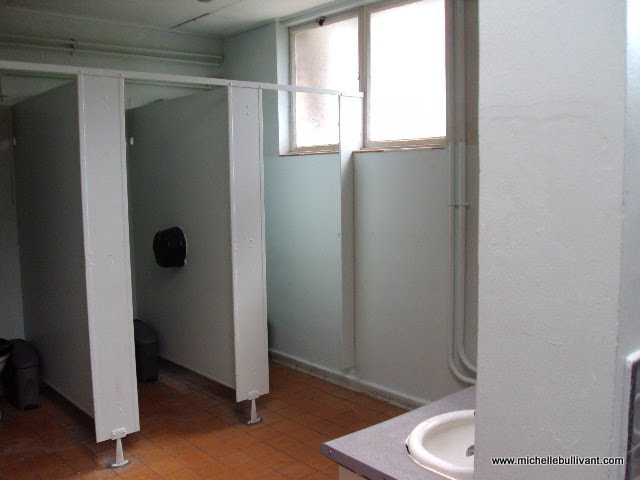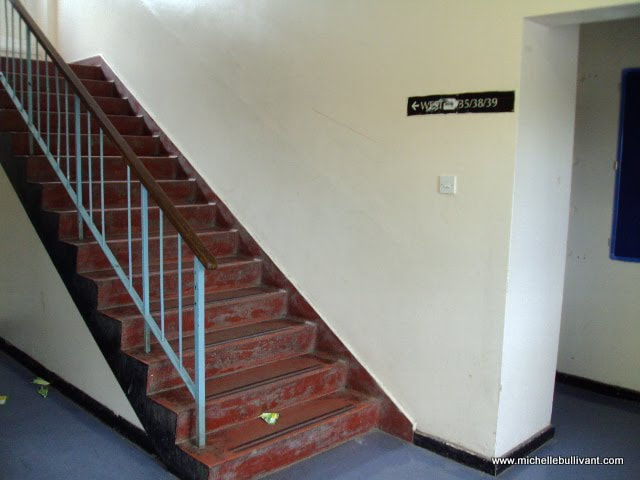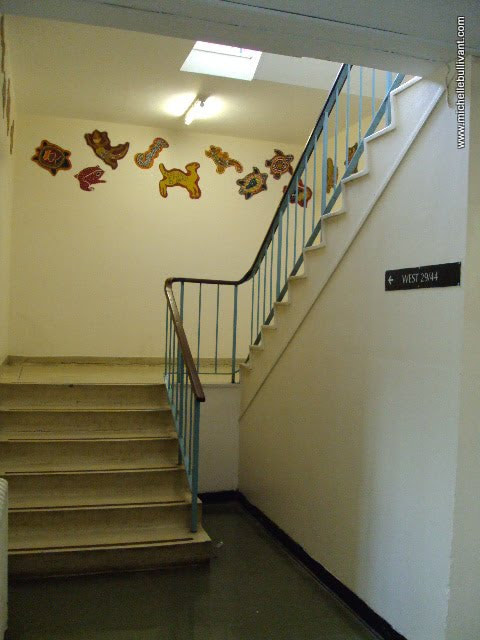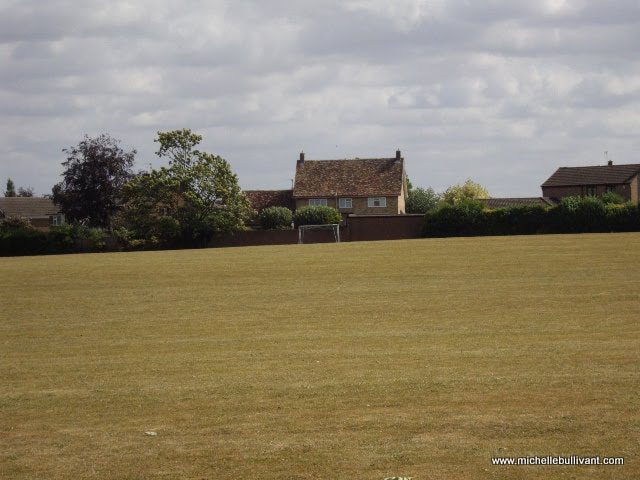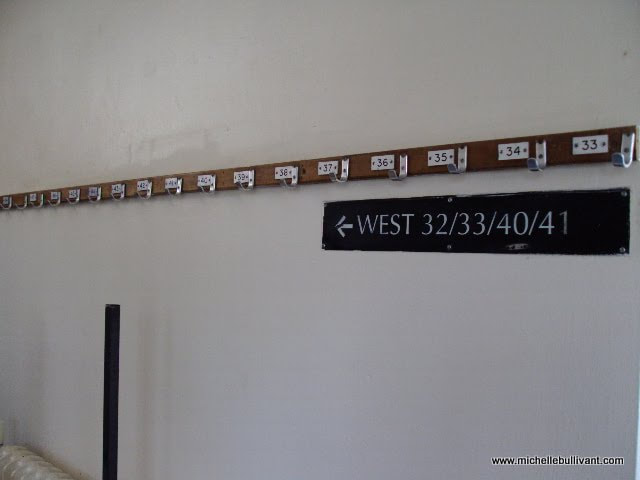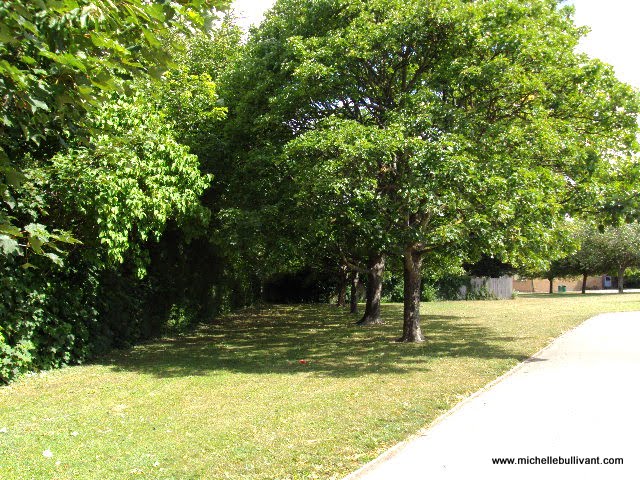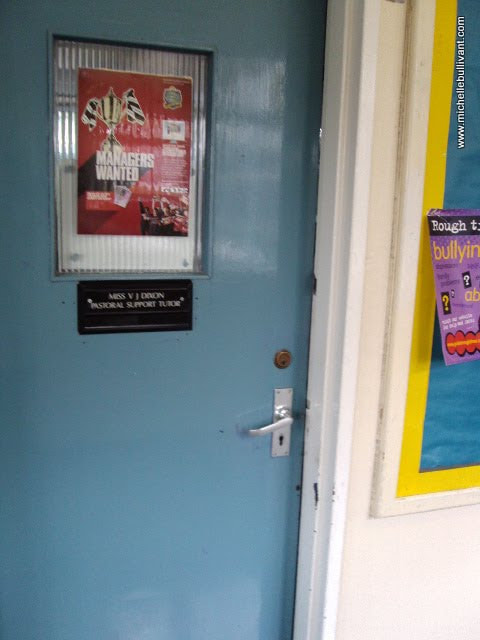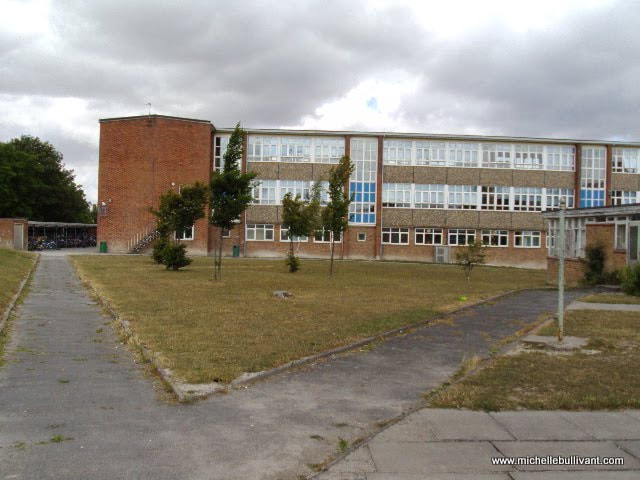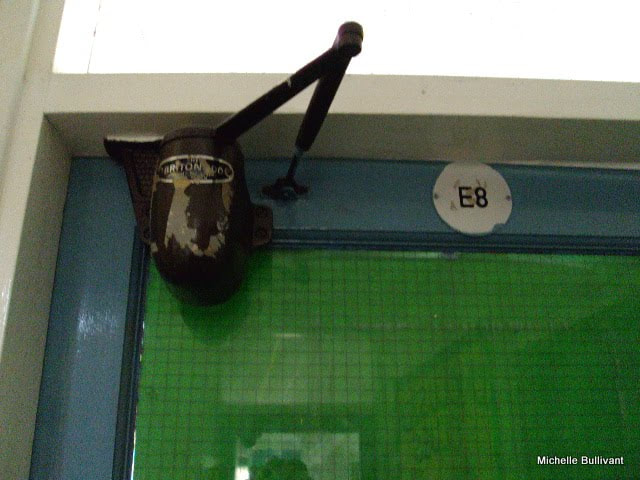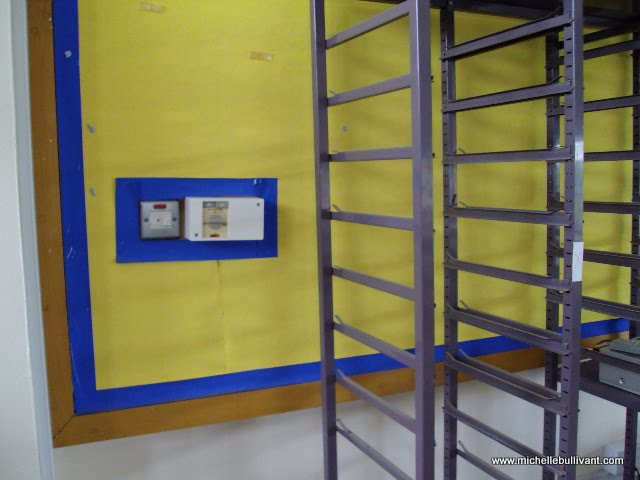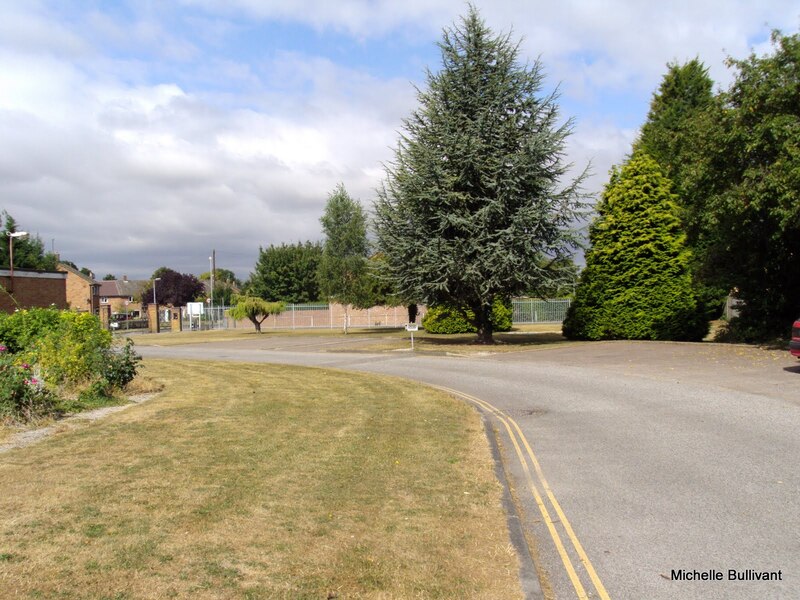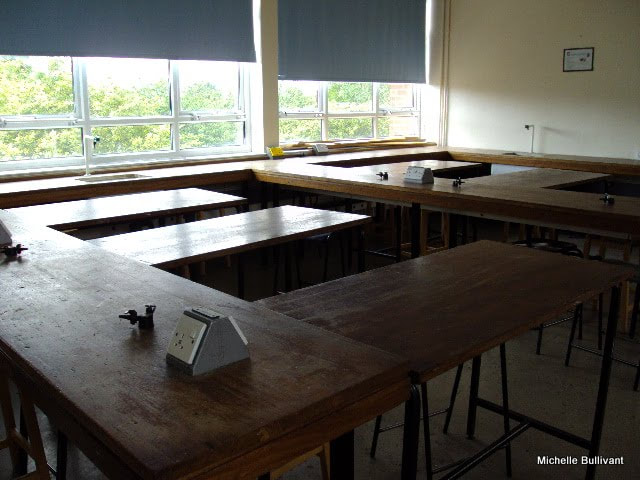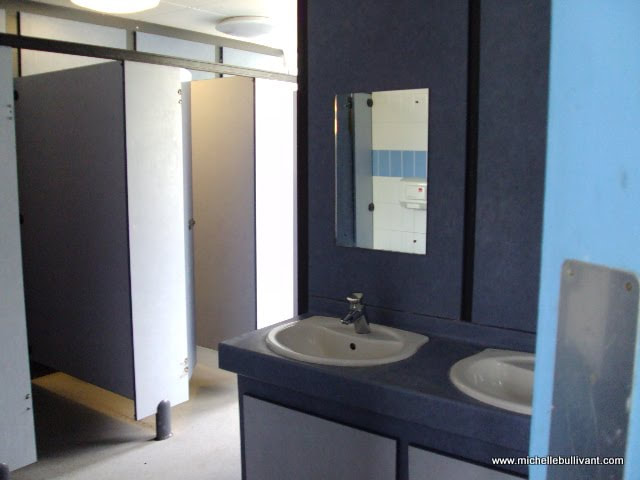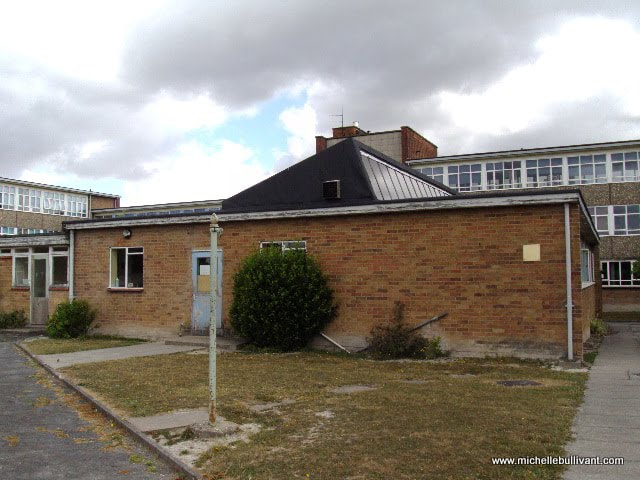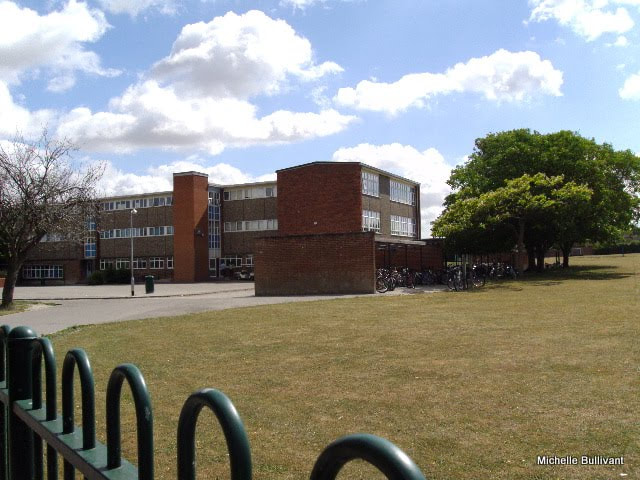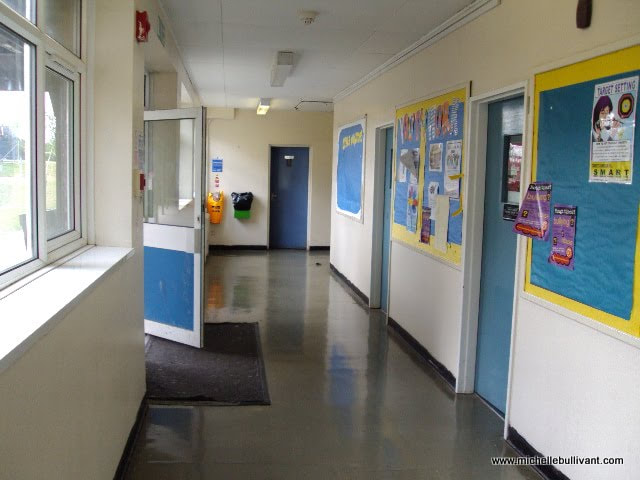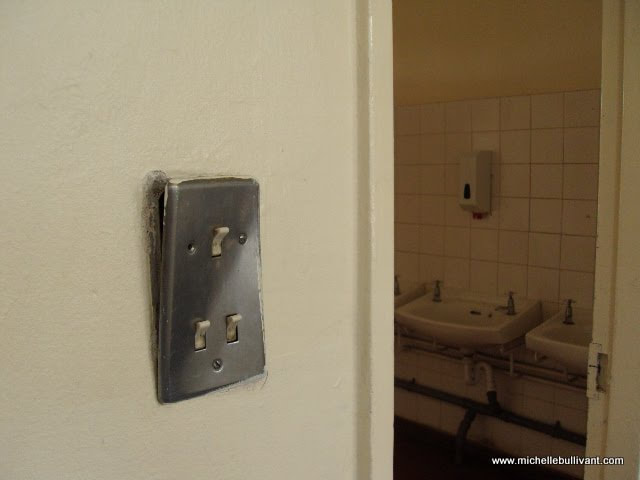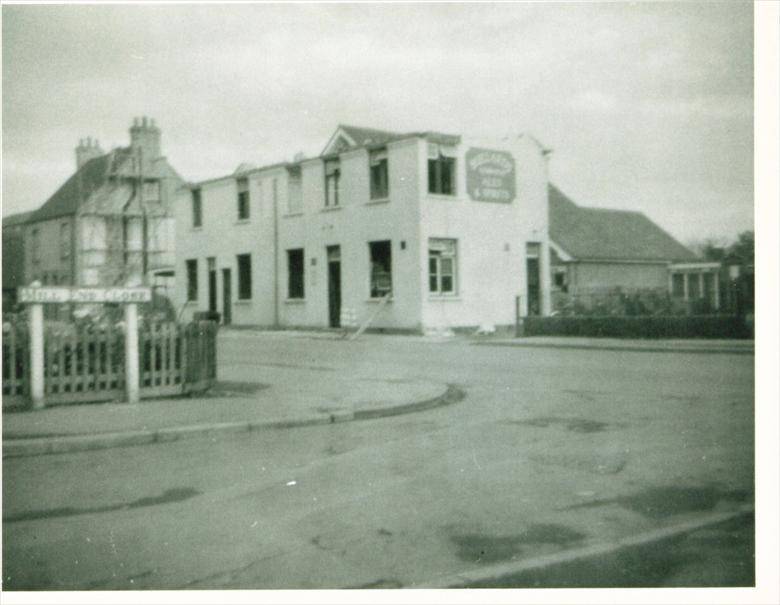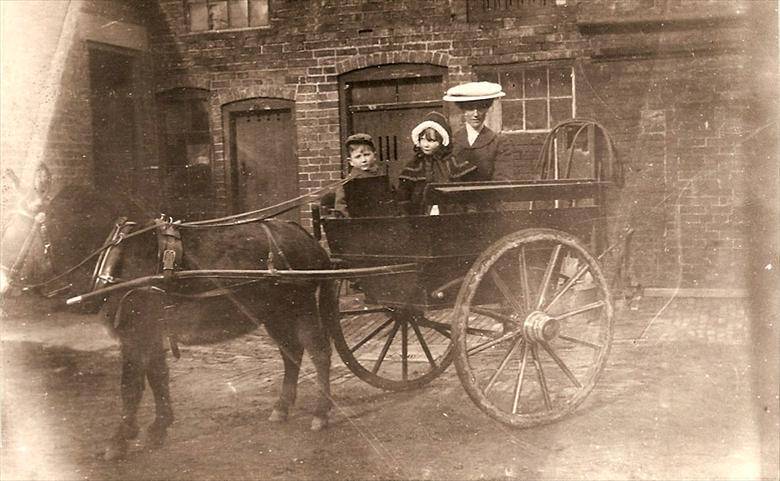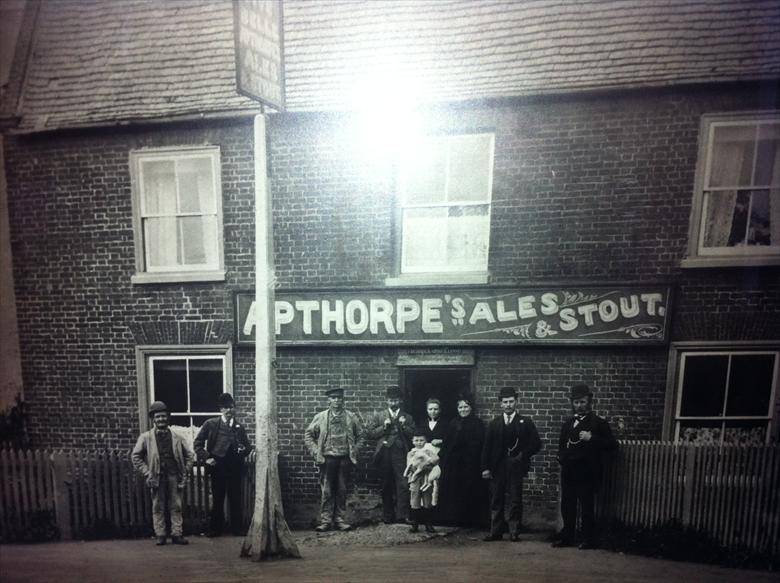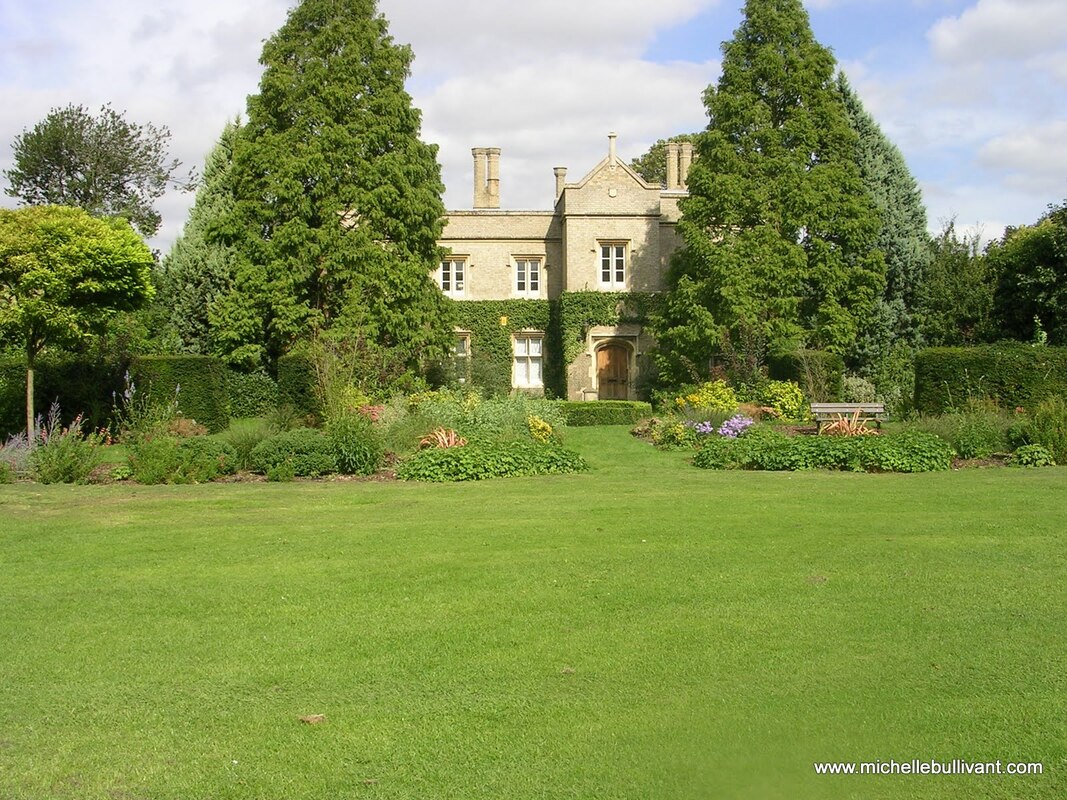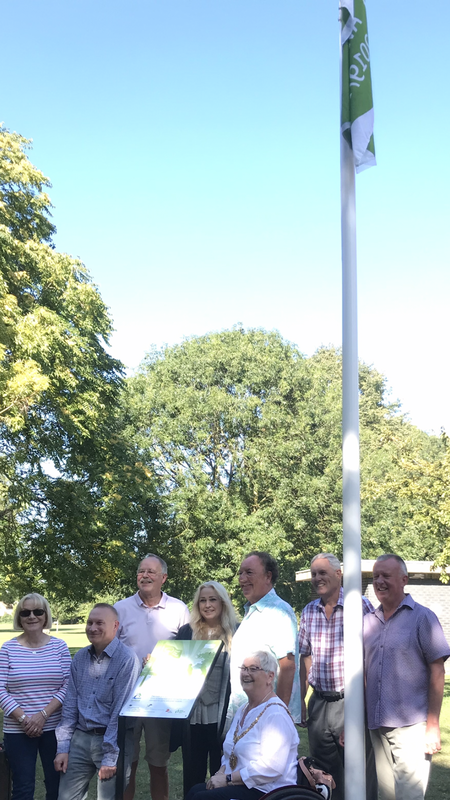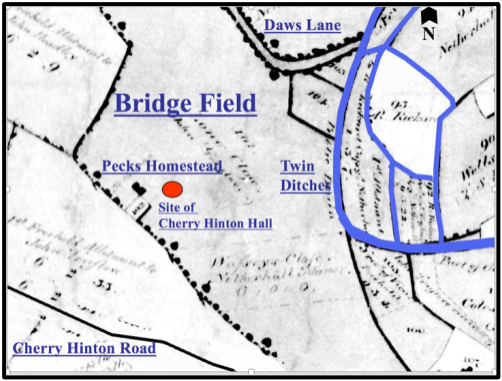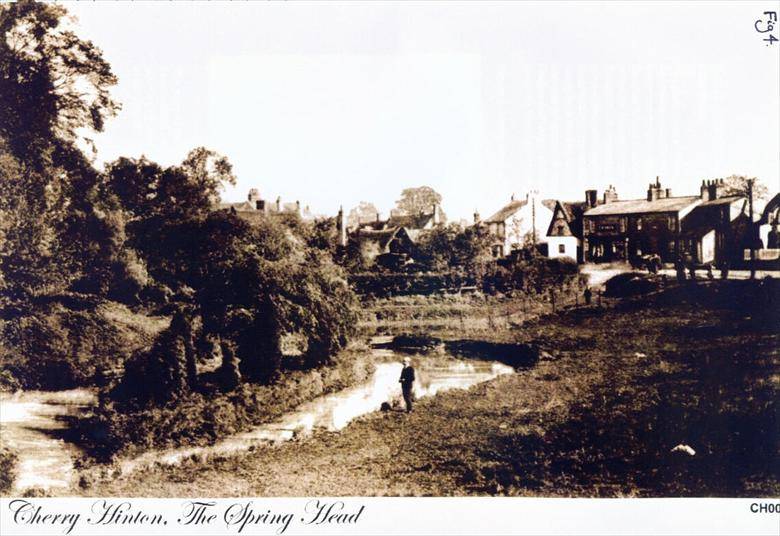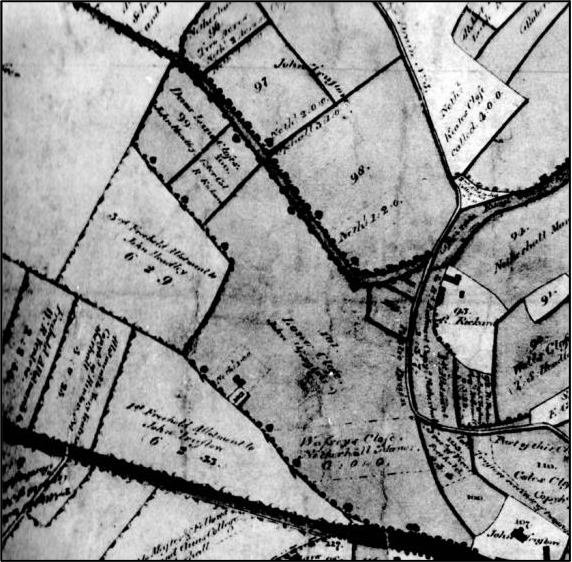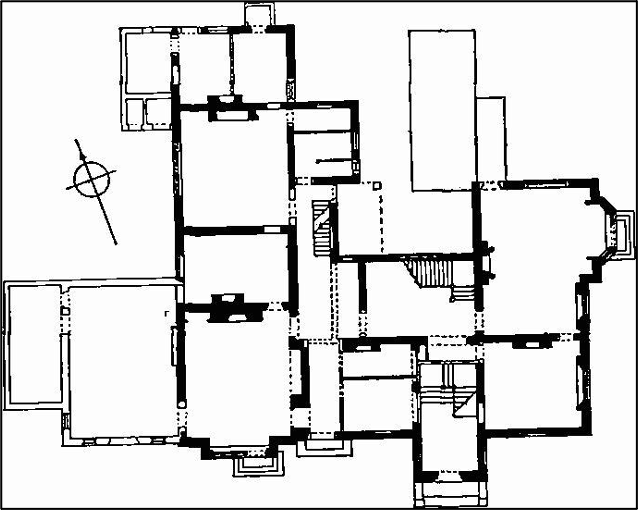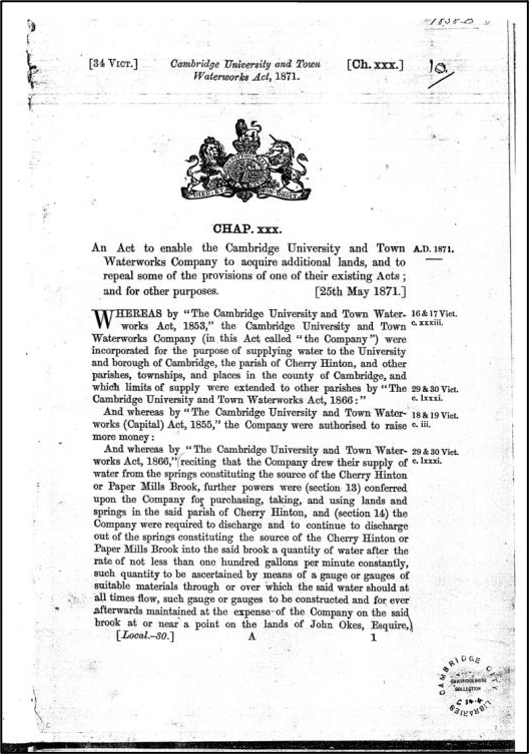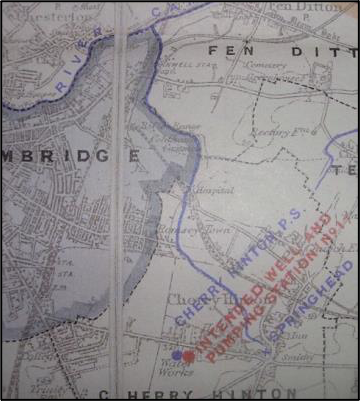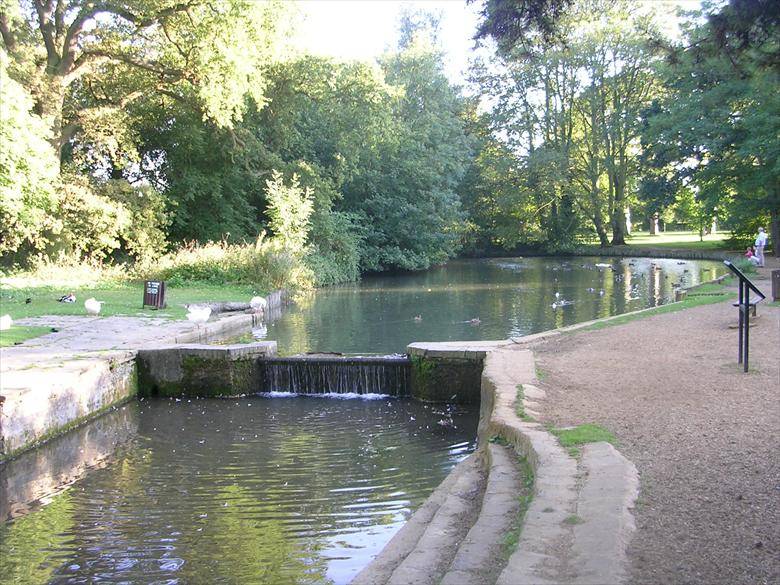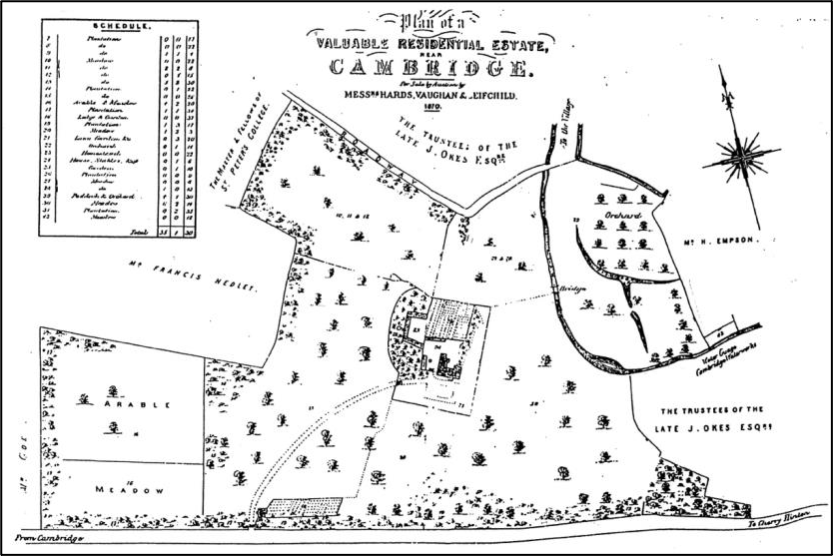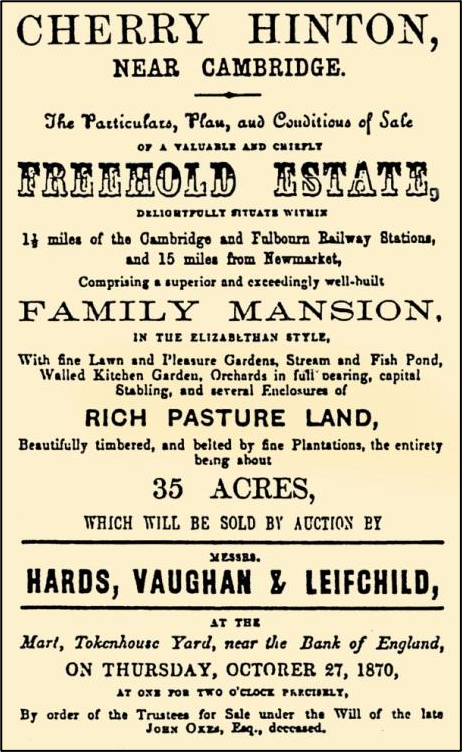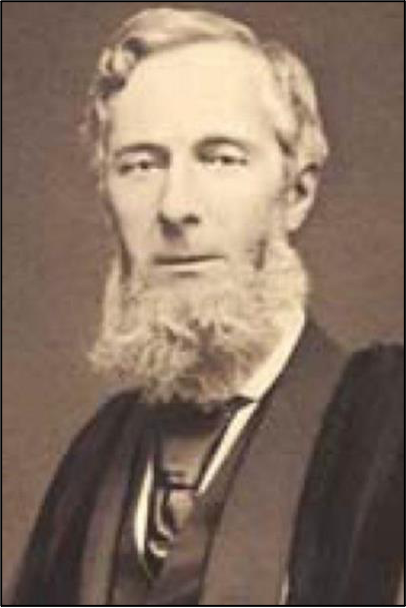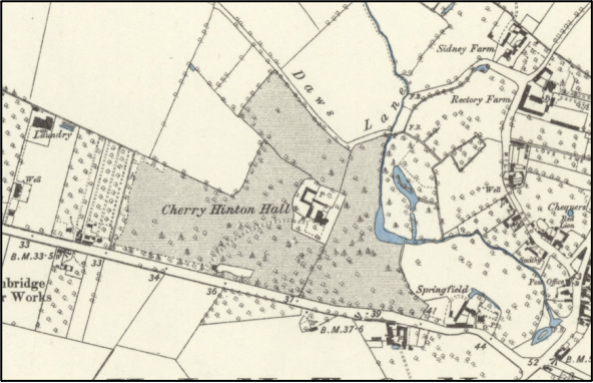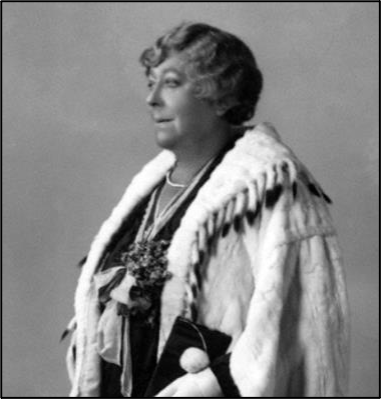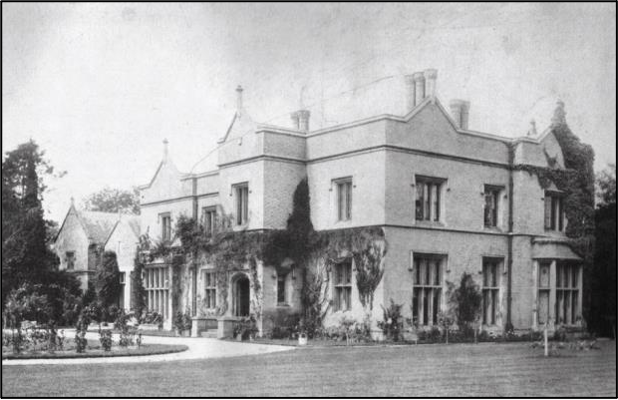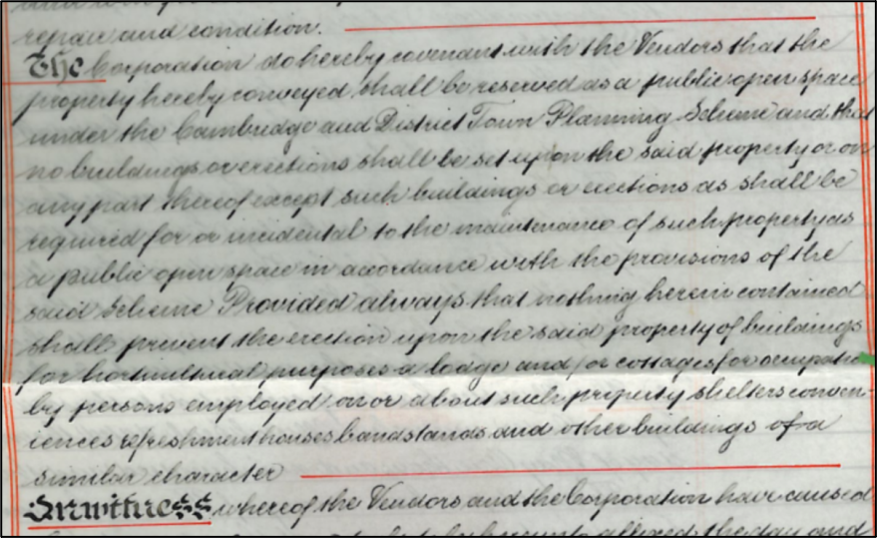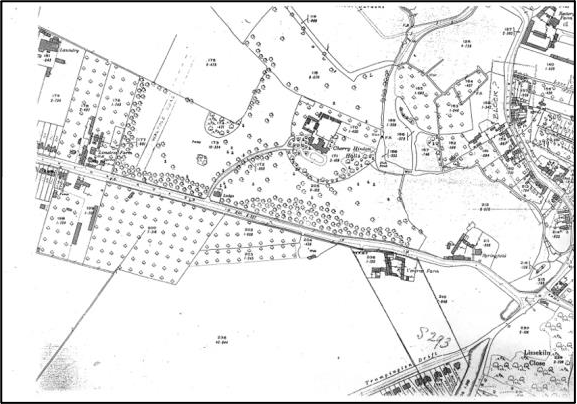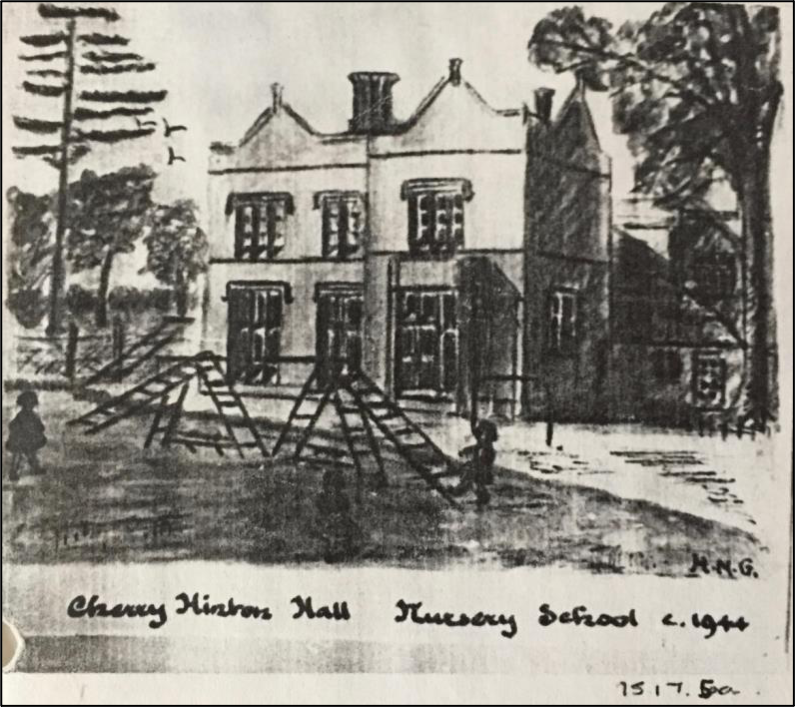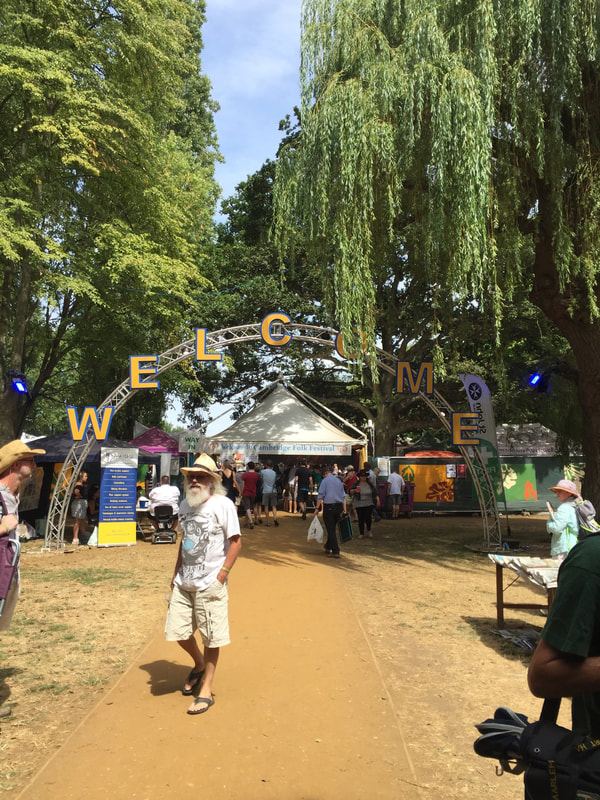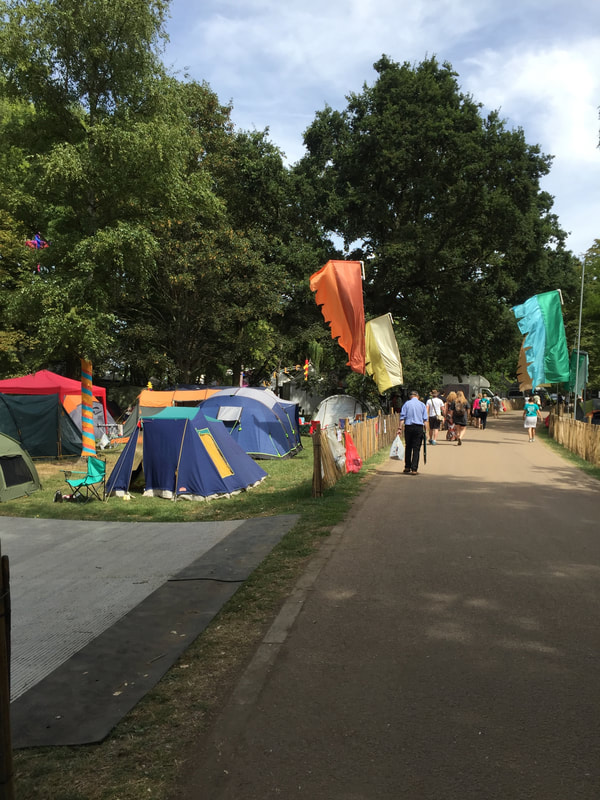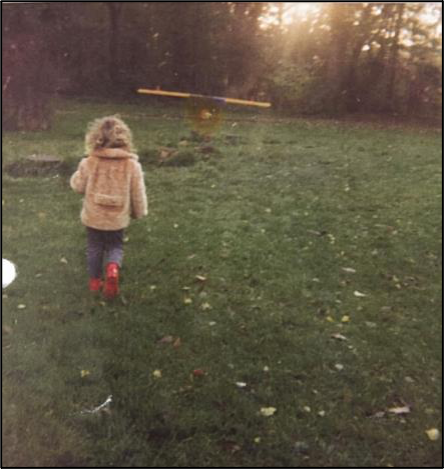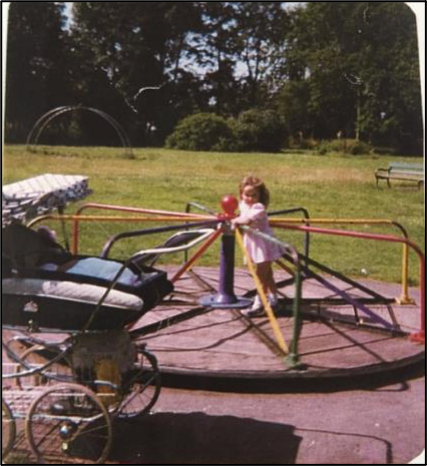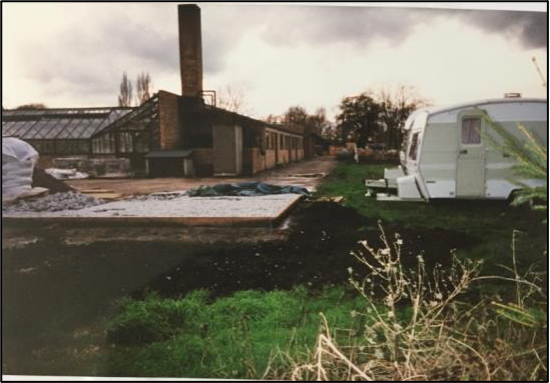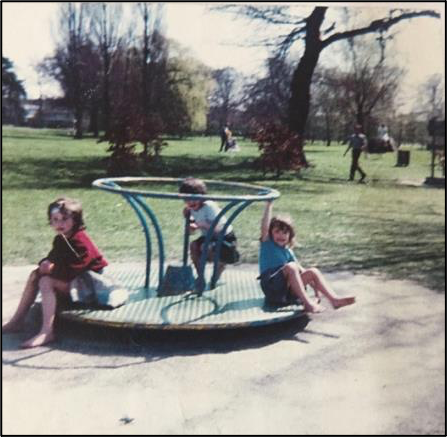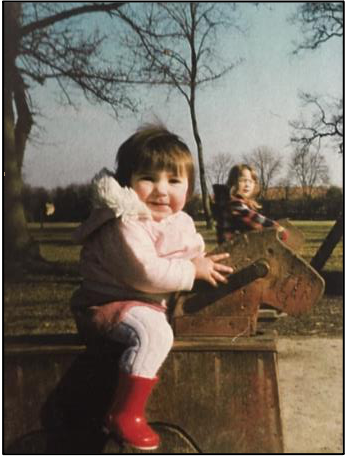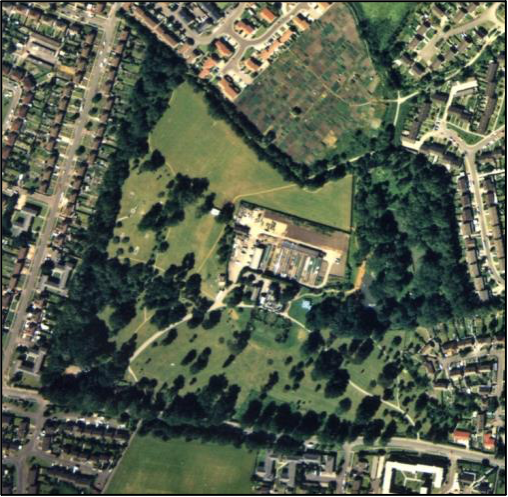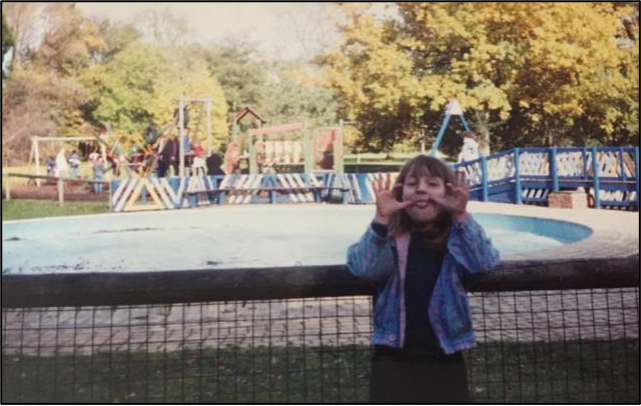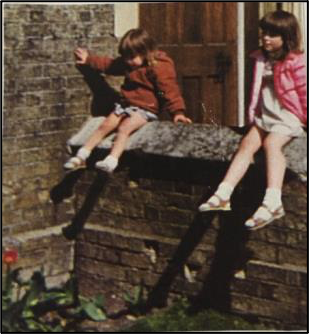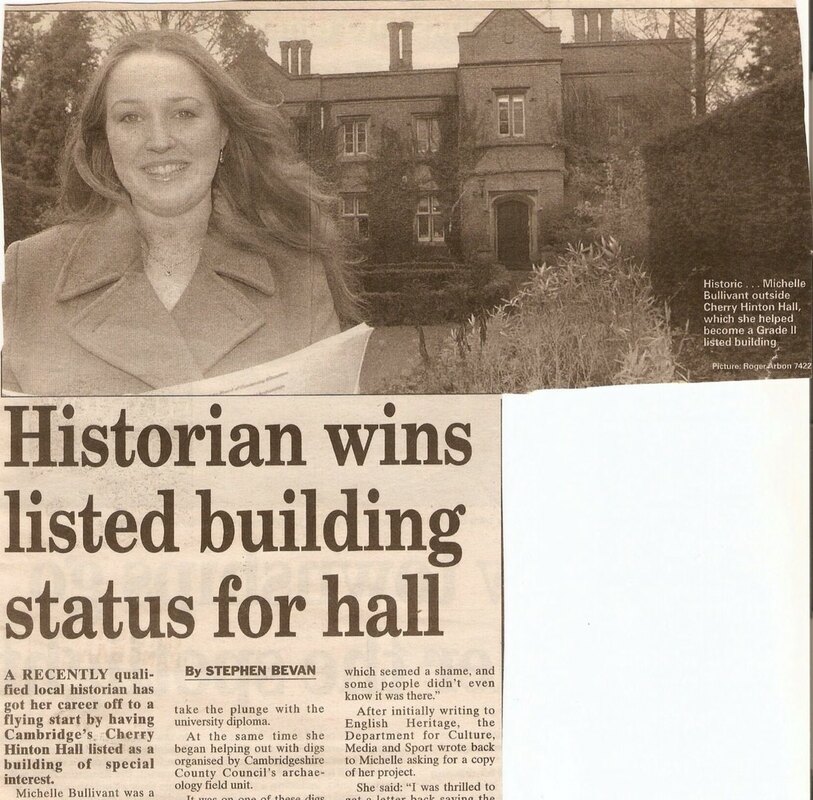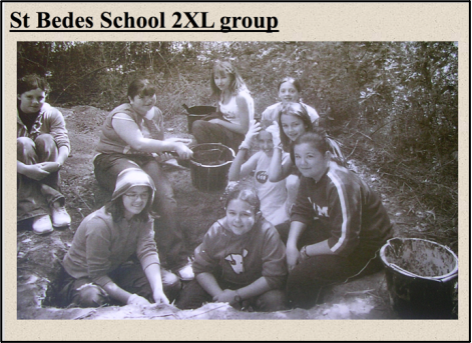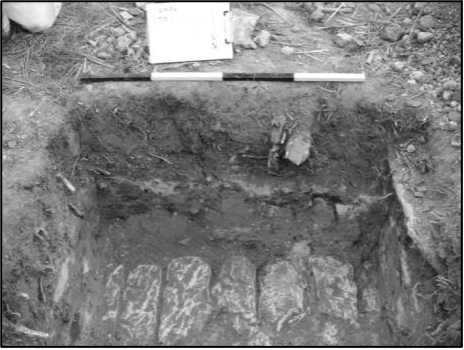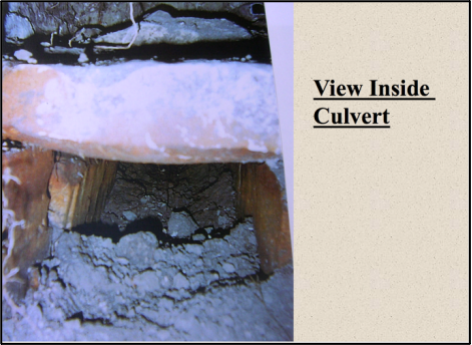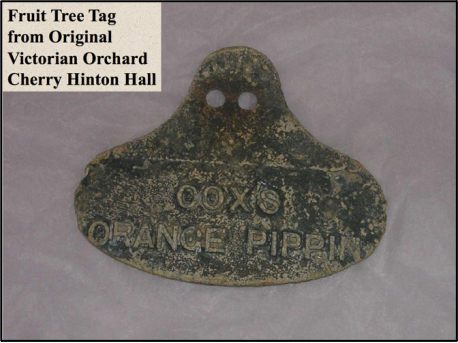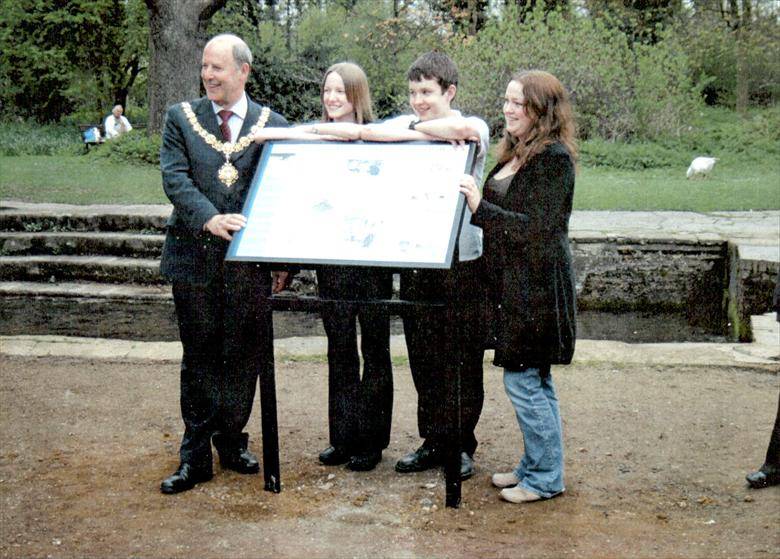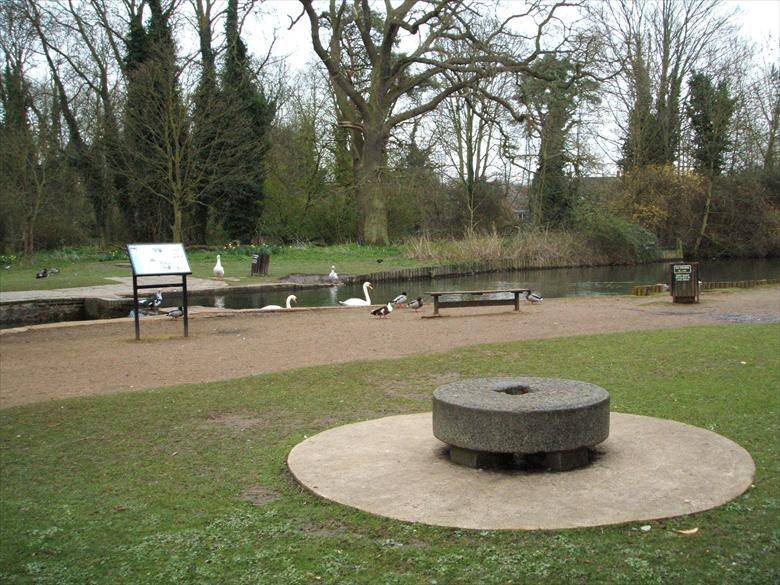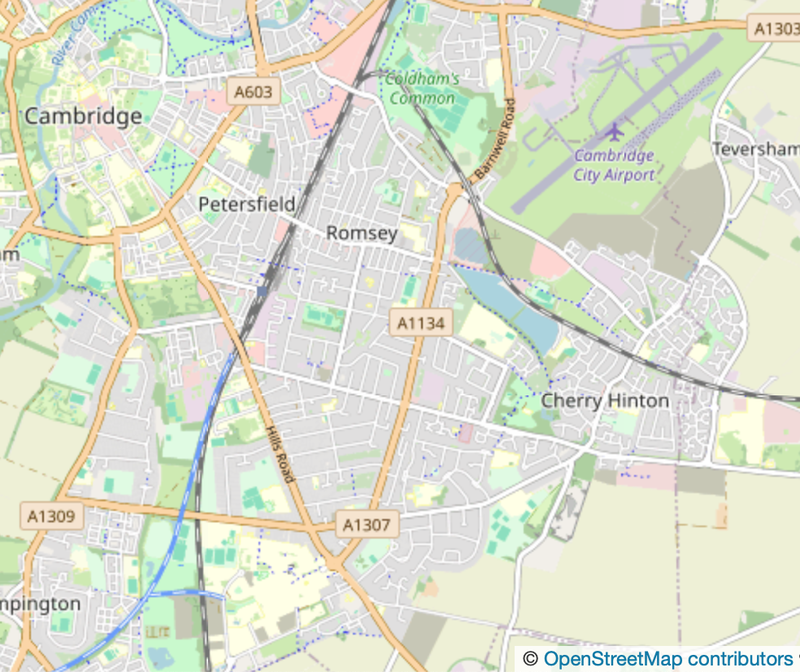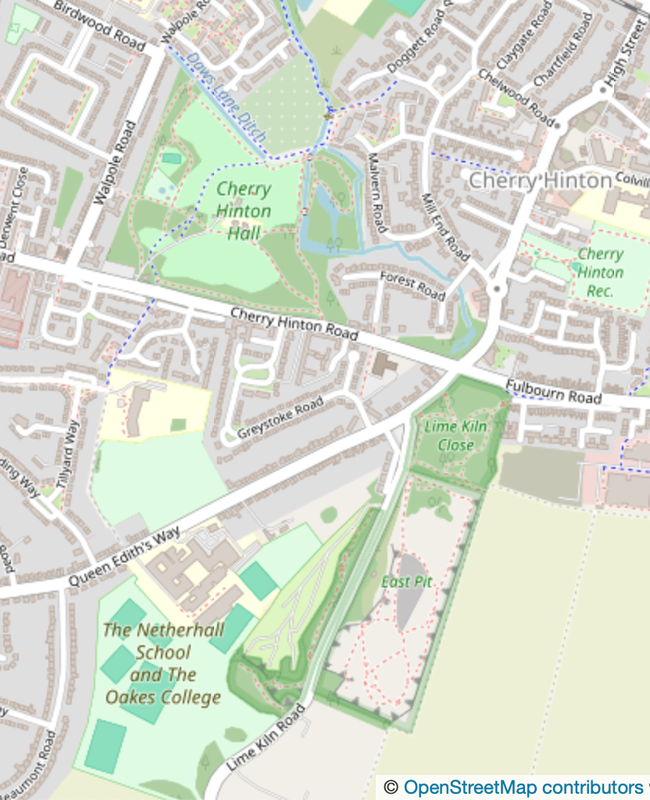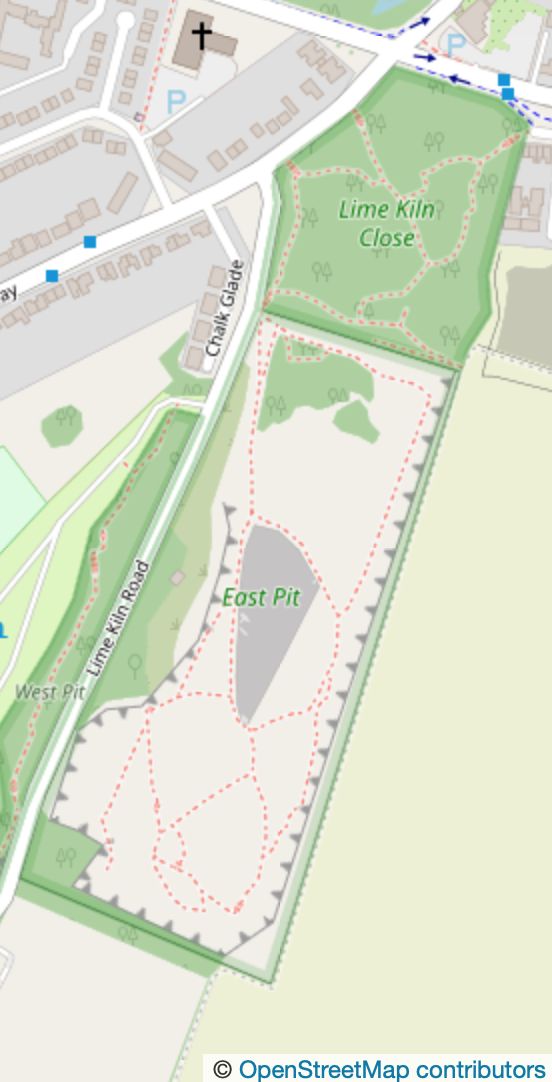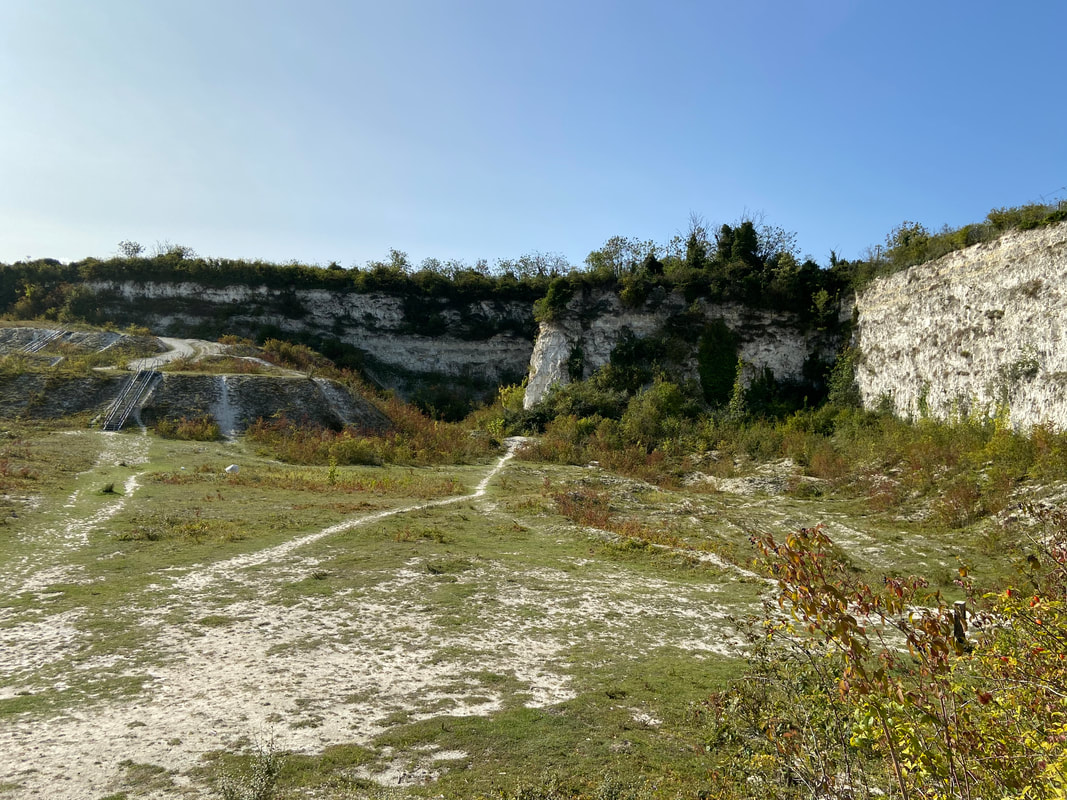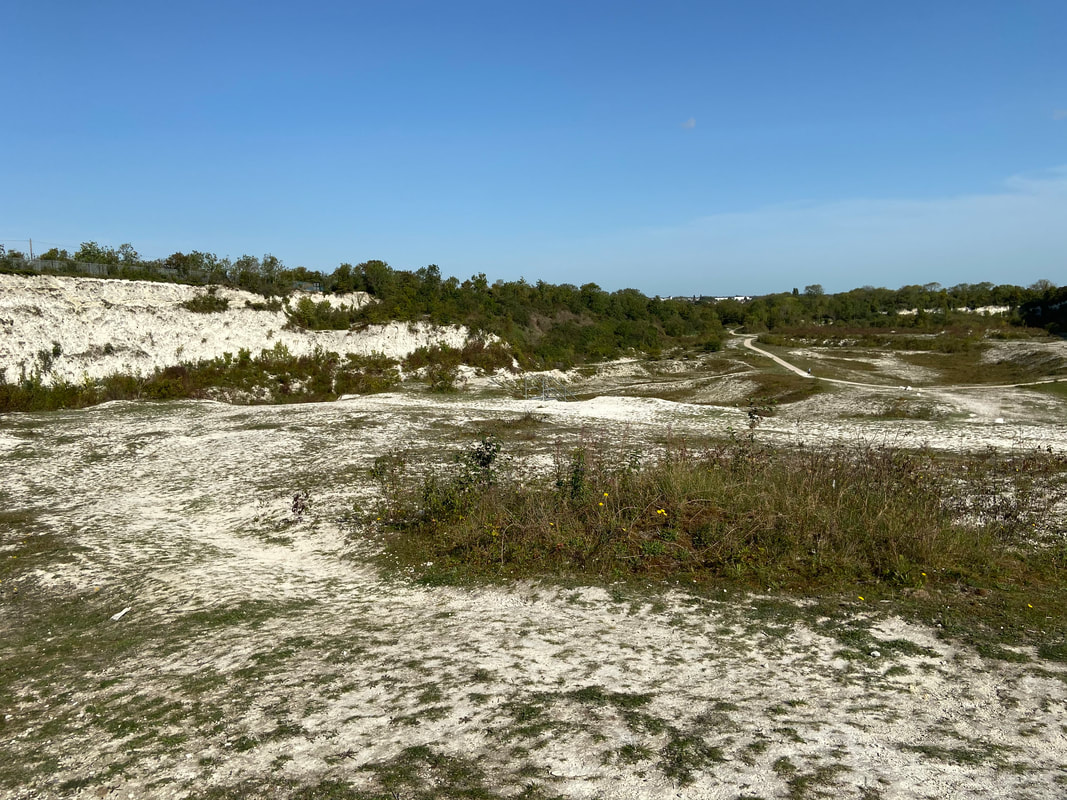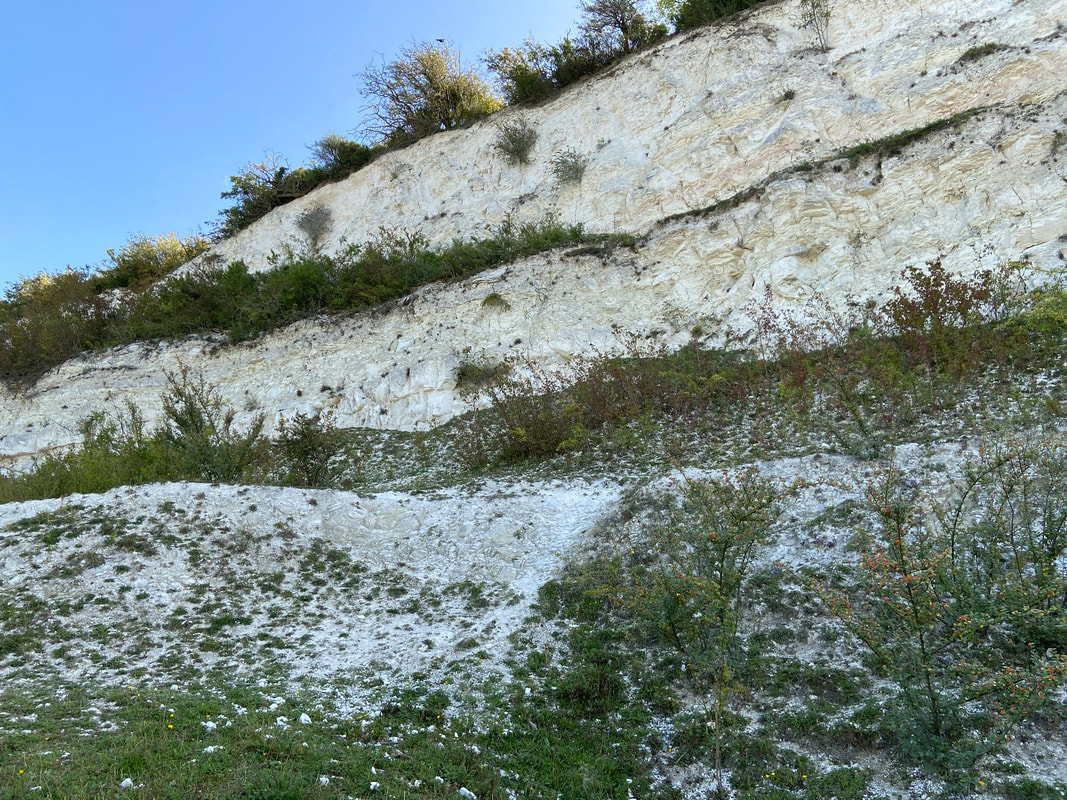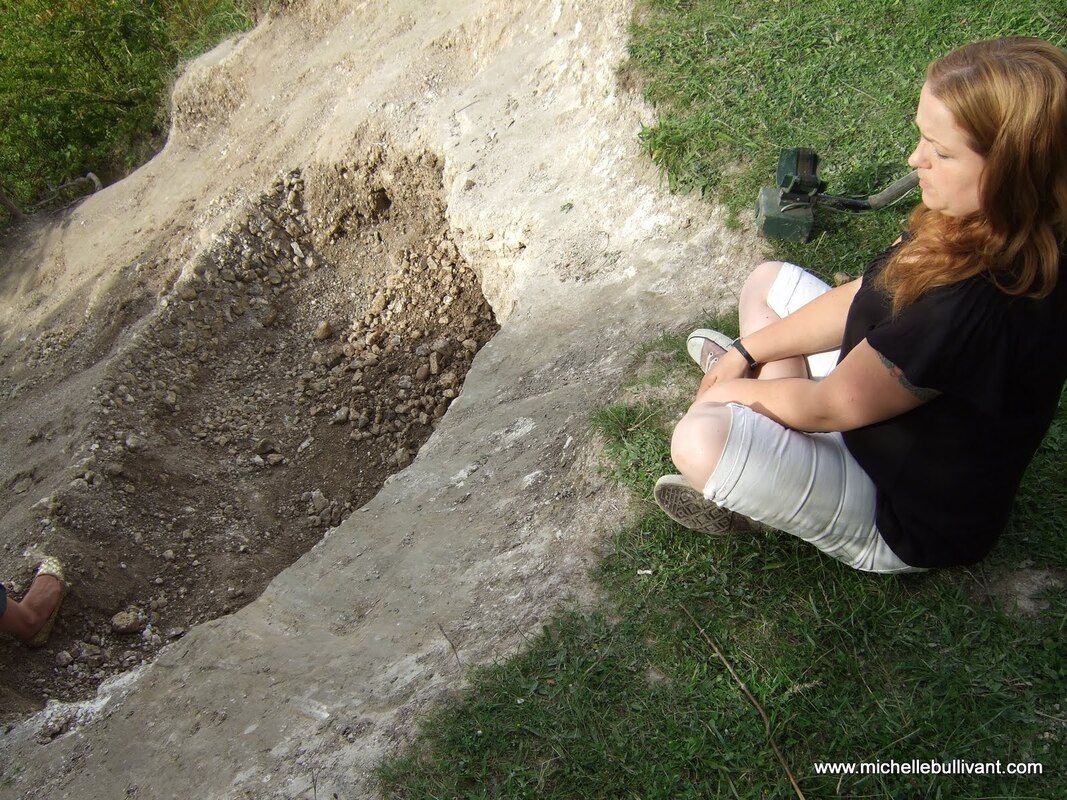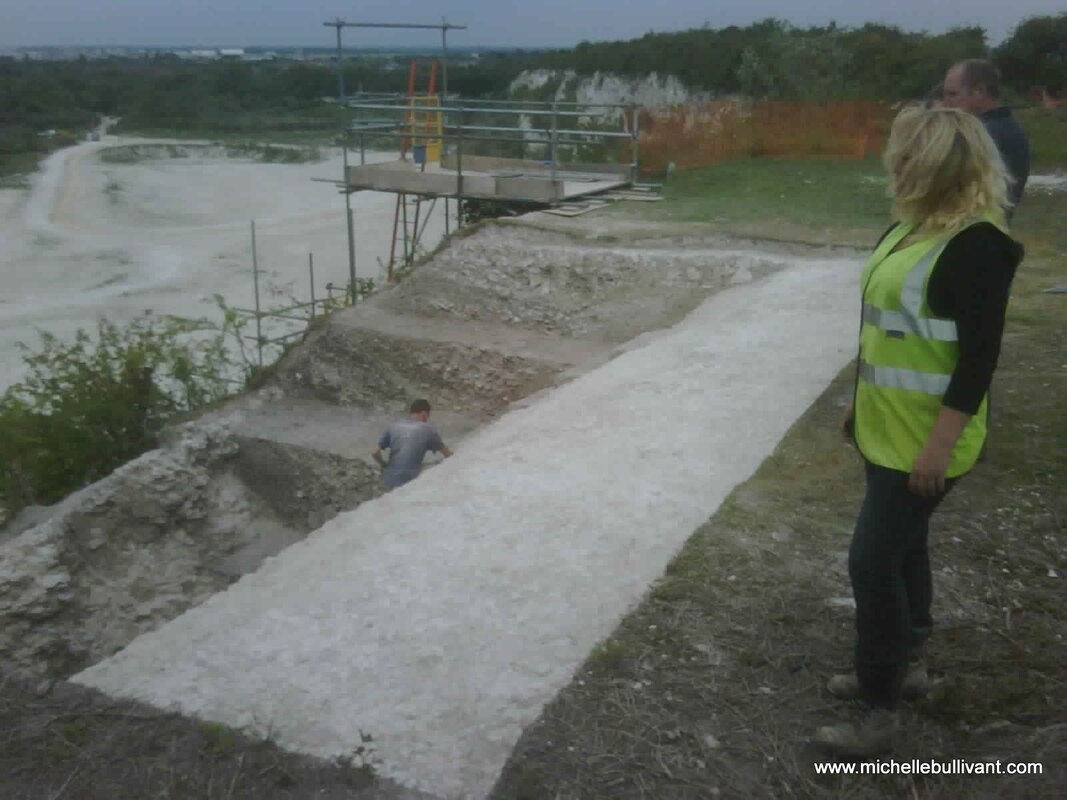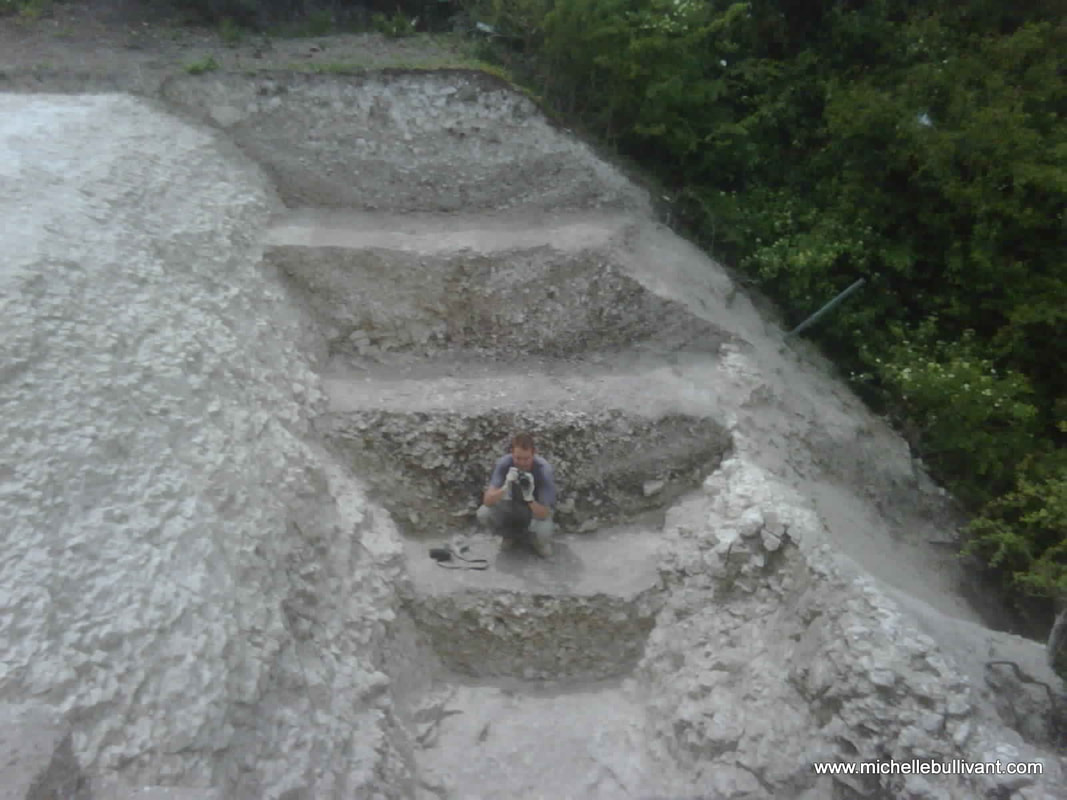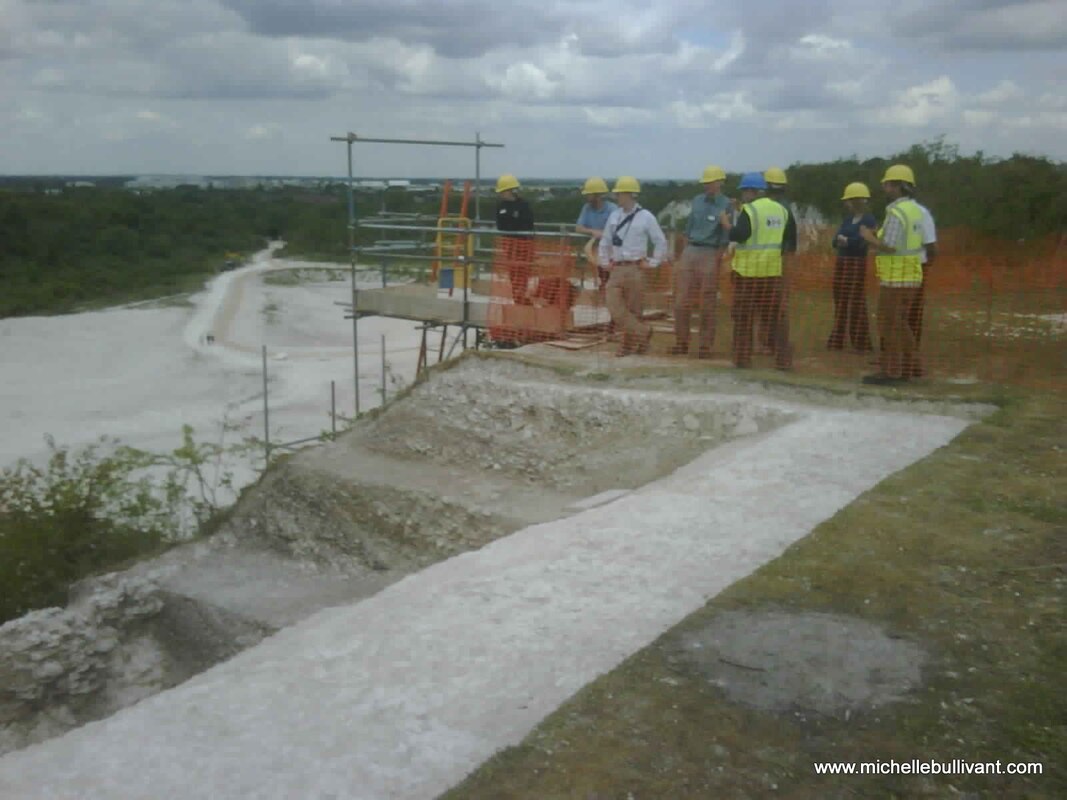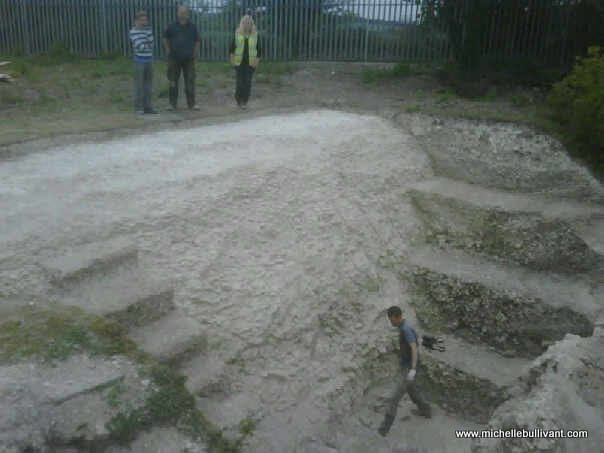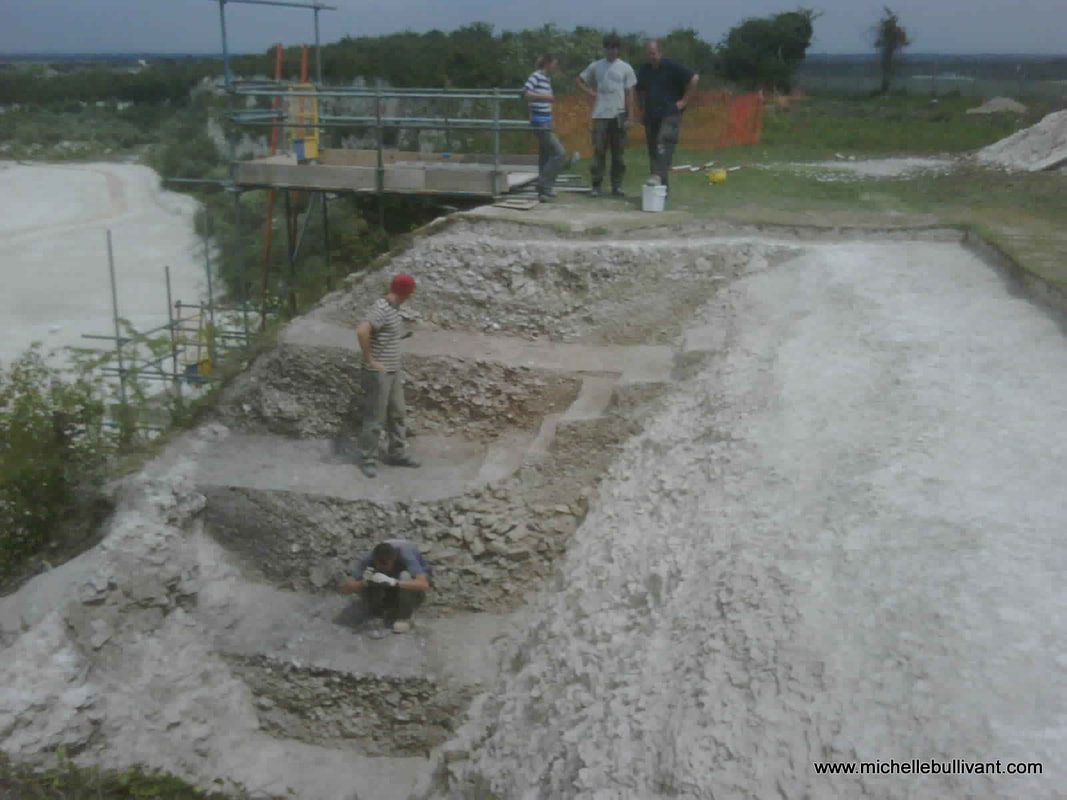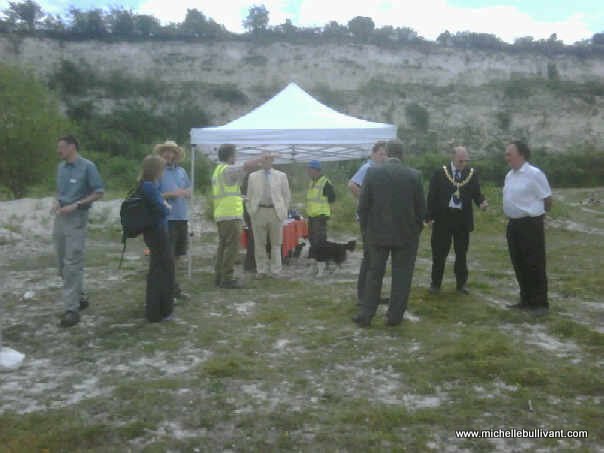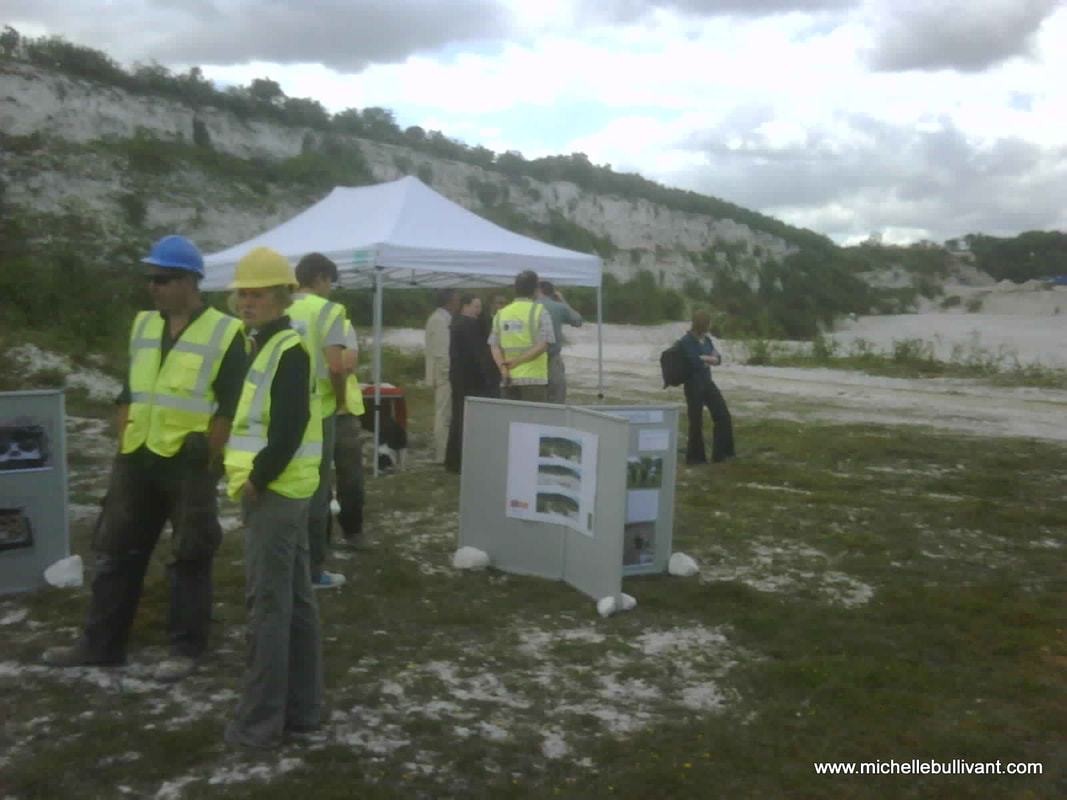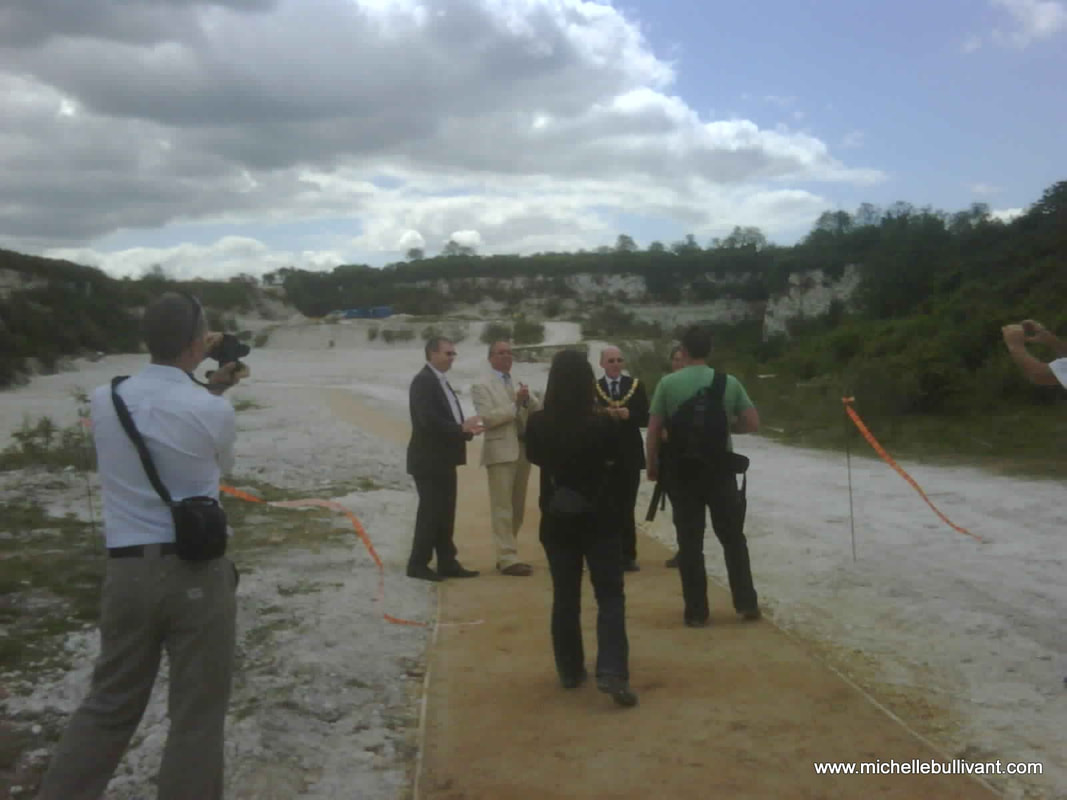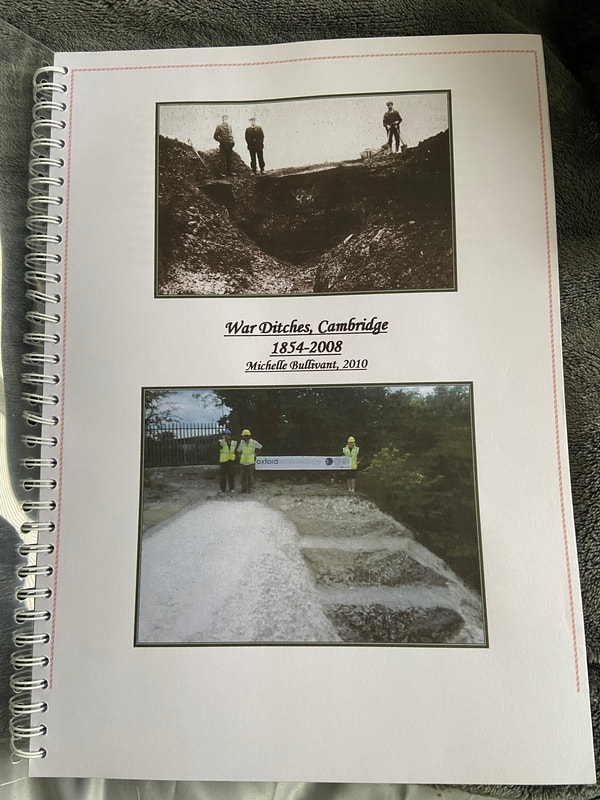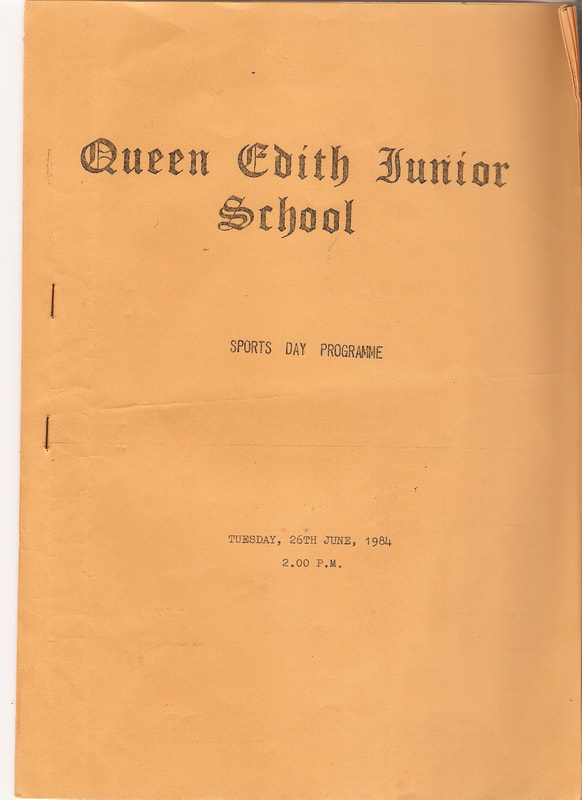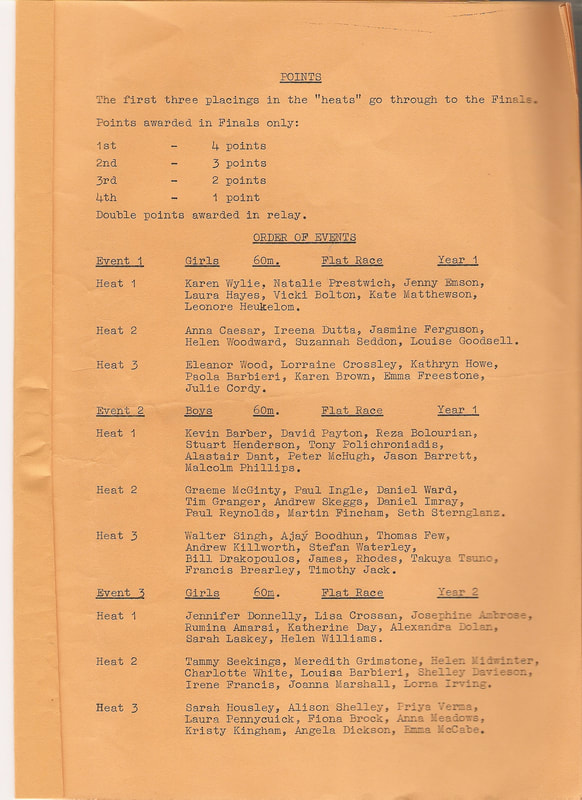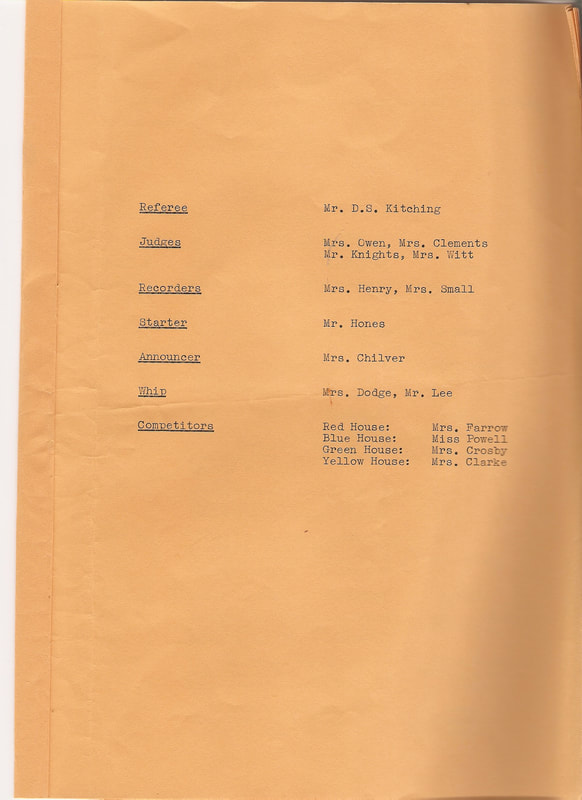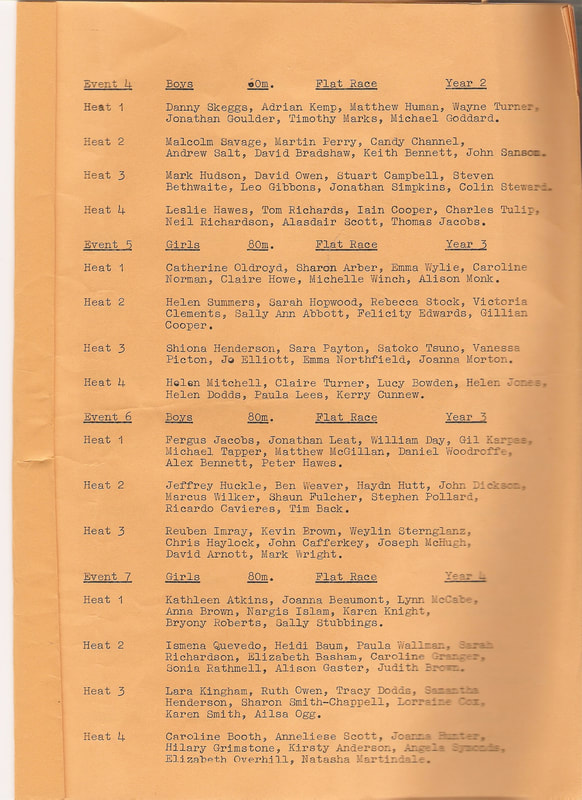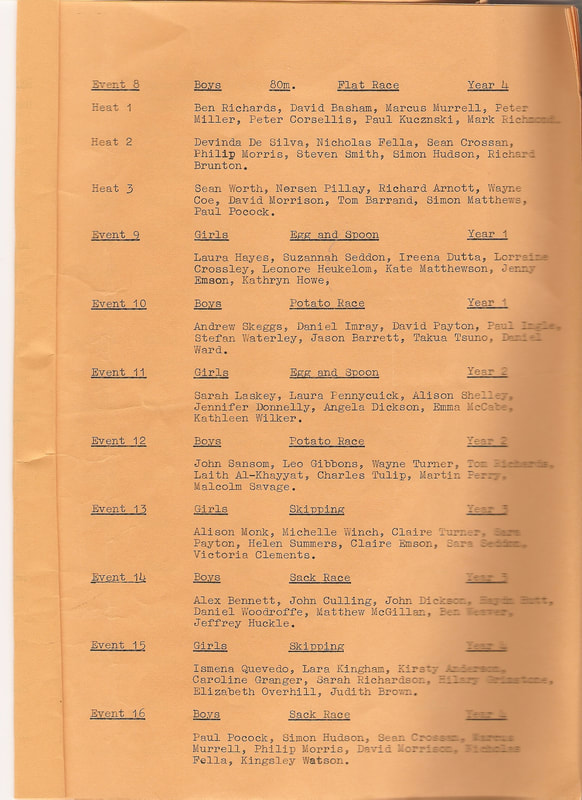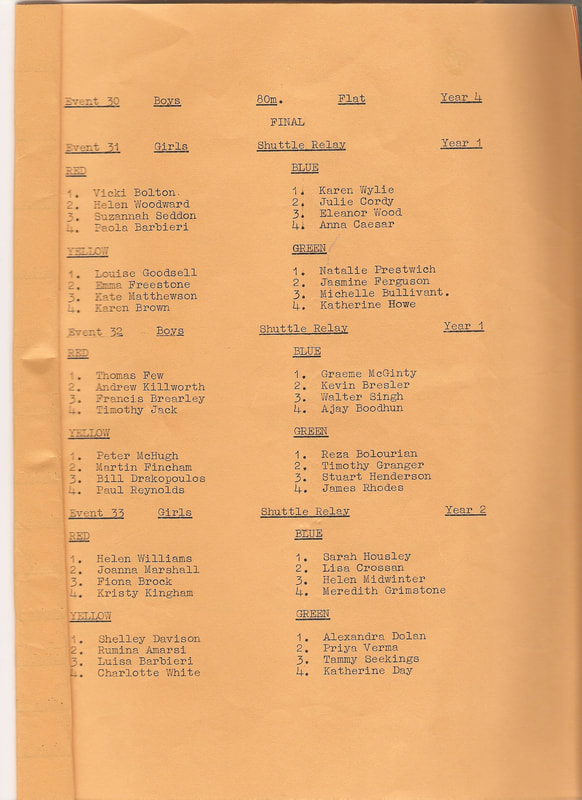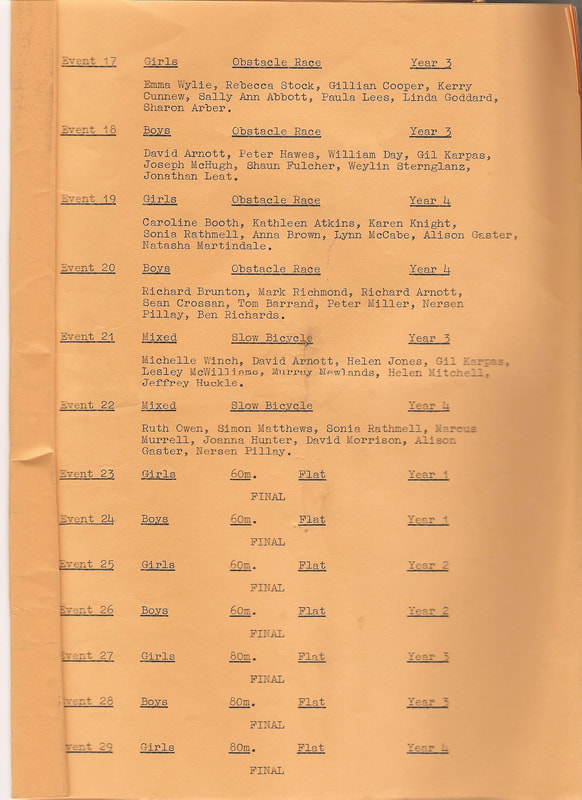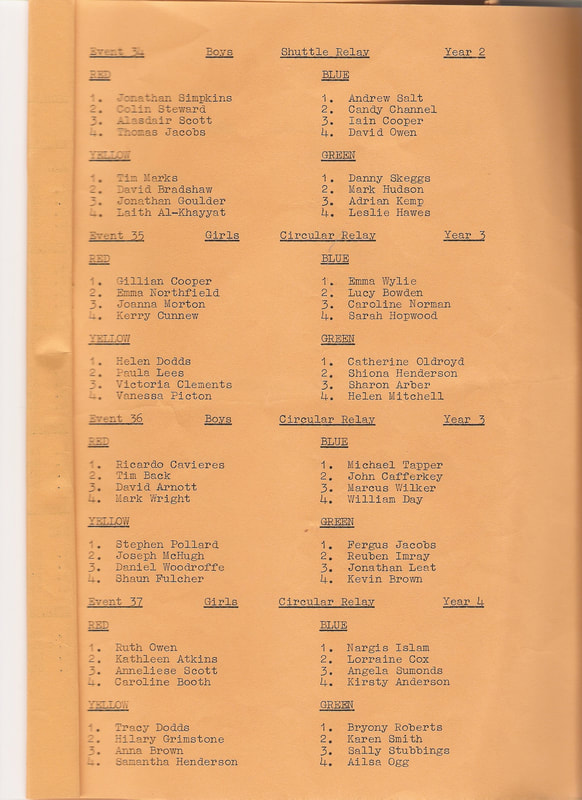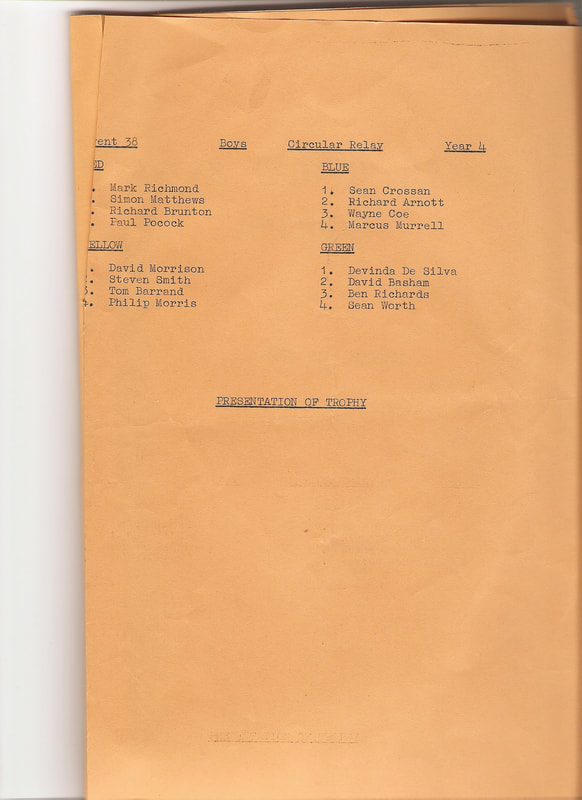|
I have almost finished writing the full history of the Hopbine beer house and it will be ready to read here online shortly. It will be available as a free PDF booklet, which you'll be able to download using the link at the bottom of this article or by visiting the Downloads shop in the main menu above. In the meantime, I thought I would share with you some of the information and lovely old photographs showing rare glimpses of this long-forgotten Cherry Hinton beer house.
The Hopbine beer house (or Hopvine as it was sometimes known) once stood at the northern end of Cherry Hinton on the western side of the High Street, just south of Fernlea Close. Today nothing remains of the original buildings above ground and the site now lay beneath new houses since built on the High Street. It was in operation for about 100 years, from at least 1851 to the 1950s.
It was a beer house rather than a public house as the Beer Act of 1830 removed duty on beer and people were encouraged to run what were instead called beer houses for a licence fee, which was much cheaper than paying for a full licence to be a public house. This distinction between beer-only beer houses and fully licensed pubs selling beer, wine and spirits remained until around 1960.
In the photograph below, you are on Cherry Hinton High Street, past the railway crossing, looking north towards St Andrew's Church - if you look carefully you will see, in the centre of the picture, left of the horse and cart, a wall with a short white vertical line on it - this is the old gas lamp sat on St Andrew's Church wall until earlier this year, before being damaged by vandals.
On the immediate left of the picture is an old thatched cottage which was called Robert's Cottage. Next to that was another house, bound by a fence, which can't be seen in this picture and then, set back from the road and again out of sight in this picture, was the original Five Bells public house - you can just make out the tall black and white post with the pub sign at the top. Beyond that are a row of cottages and you can just make out another sign hanging from these - this is the sign of the Hopbine beer house.
I have added it again below, enlarged twice for you - although we lose definition on the picture it is still good to take a closer look.
The photograph below is of a similar date of the one above -perhaps around c.1910 - again here you can make out the rectangle hanging sign which is attached to the cottage roof with an iron bracket. You can see what looks like a family standing outside the door to the Hopbine. You'll be able to read more about the people who owned and lived in the Hopbine and more about activities that took place there in the full history that I'll add here soon.
This next photograph below is from c.1927, and a little later on from the previous photographs but still looking from a slightly different angle, northwest, up the High Street. You can see Robert’s Cottage on the immediate left, the first house - this cottage, which District Nurse Harniman once lived in*, was demolished in 1966 to make way for the new Five Bells pub car park) and can now just catch a glimpse of the house we couldn't see previously, with its fence. Next along and set back from the road we can now see more of the original Five Bells pub with its pub sign followed by the row of cottages which include the Hopbine beer house/Quinney’s store with a man outside - this time it looks as though the Hopbine beer house sign has gone; this reflects the gradual change from beer house to grocery store. The house on the end is still shown as before and was Stanley Tabor's house, it stood at what is now the entrance to Fernlea Close. Beyond that, The Pamplin Brothers had their steam engine yard which then joined with Coldhams Lane (now houses).
(A separate history of the Five Bells Pub will be coming later this year. Along with a separate history of the Pamplin Brothers)
The Quinney family were the last family to run the beer house and began selling groceries and other items from the house. This was the very first version of the well-loved Quinney's shop, which after these buildings were pulled down, moved a little further south down the High Street to become Quinney's shop and newsagents in the house on the corner on Fernlea Close and the High Street (where Sun Studios are today).
It was Albert Frederick Quinney snr (born 1883 died 1960 aged 78) who was an ex-landlord of the Red Lion pub (1903-1908), - he was also a shopkeeper, butcher and grave digger* - who moved from the Red Lion into the old Hopbine and ran it as a shop, butchery and betting shop, amongst other things. He eventually had his new shop built on the north corner of Fernlea Close/High Street. His son Albert Frederick Quinney jnr (born 1904 died 1986 aged 82) took over from his father as shopkeeper but was no butcher*
The photograph below shows George Quinney (died 1961 aged 41) with Rover the dog*, outside his father's shop, the old Hopbine - you can still see the metal work bracket, which once held the beer house sign, still attached to the roof.
The photograph below shows a view looking in the opposite direction, south down Cherry Hinton High Street, with the Hopbine/Quinney's shop on the right side of the photograph. On the left-hand side, you can see the original Cherry Hinton School (where the school stands today on the High Street). The Gog Magog Hills can be seen in the distance and the railway crossing gates in the centre. To the extreme right-hand side you will see Stanley Tabor standing at a gateway at the end of the cottages.
The picture below shows the view towards where the Hopbine used to stand - approximately fronting the High Street where the brick wall is shown - The picture is c.1984 and shows the new Five Bells pub (cream building beyond the brick wall), the new road of Fernlea Close leading off of the High Street and Quinney's shop which he had built after the demolition of the Hopbine cottages. On the right, the houses with the black weatherboard are built on what was Pamplin's steam plough works meadow.
Below: The same view today
In the forthcoming full history of the Hopbine you will be able to see more pictures and a lot more detailed information, so do keep an eye out for that here, over the next month, and do follow me on the socials like Facebook and so on, to keep up with news of new releases on here as they happen.
* thanks to Richard Hoye archives held at Cambridgeshire Collection for these extra bits of useful information
You will be able to download a free PDF copy of the full 'History of The Hopbine Beer House, Cherry Hinton' here shortly.
Please feel free to get in touch if you would like to add anything to this story or if you have any further information on the Hopbine Beer House.
If you'd like to support my work and the archive, why not buy me a virtual coffee or make a one-off donation at PayPal, I'd be really grateful and it will help keep me going! Just click on either of the buttons below :)
0 Comments
You can now visit and see the newly installed artwork at the new housing development site on Colville Road, which is based on the local community and history of Cherry Hinton. Information below is taken from: http://resonance-cambridge.co.uk/developments/colville-road/ Colville Road Public Art Programme: The development of the site at Colville Road saw a creative programme delivered by Alec Finlay and Janetka Platun in collaboration with members of the community. ‘Medius‘ is the outcome of artist Janetka Platun’s research and collaboration with residents. Medius weaves together unique pieces of local history; the iconic cherry trees commemorating the loss of servicemen and women; the local chalk pits that once quarried clunch, a hard chalk used in local buildings; and the 19th-century discovery of unusually tall skeletons found locally and their resonance with the giant Gog Magog myths. These histories are brought together at the location of the new Colville Road housing, where the artwork is located. This is believed to be the site of the old village green, a middle place – or medius – between the settlements of Church End and Mill End. Janetka worked with local historian Michelle Bullivant to explore these themes and together they delivered public walks and talks that traced these histories. Janetka also worked with children, staff and parents at Colville school, delivering workshops that explored students’ perception of where the centre of Cherry Hinton is in relation to their body and height. You can read more about the project and view further pictures by following the links below: http://resonance-cambridge.co.uk/developments/colville-road/ https://www.ip-cambridge.co.uk/news/a-new-public-artwork-installed-at-colville-road/ In preparation for the artwork, various events and workshops were held, one of which was the Chalk and Cherry guided tours. On 11th September 2021 Colville Road artist, Janetka Platun will be hosting a short tour and talk around Colville Road with local historian Michelle Bullivant discovering Cherry Hinton’s history and the inspiration behind the artwork which is being created for the development.
Chalk and Cherry! Thank you to everyone who joined us for the two fascinating ‘Chalk and Cherry!’ walking tours led by the wonderful Landscape Archaeologist and Local Historian Michelle Bullivant. The event was held as part of Open Cambridge 2021 and provided an insight into the heritage of Cherry Hinton and the origins of the village. Along with sharing the history of the 34 Cherry trees planted to commemorate the servicemen – and one woman – who lost their lives in WWII, Michelle’s walk included hidden wildlife spaces along the route. The tour shed a light on the aspects of the local area which have informed Janetka Platun’s proposals for artworks for the new homes being built. Everyone who came along also had their heights measured on a Cherry tally stick; these measurements will form part of the final artwork. The History of Cherry Hinton World War One Memorial Recreation Ground
Memories of Laundry Lane by Penelope (Penny) Jackson
My Early Life living in Cherry Hinton Road & Laundry Lane
Family
Ruby Gladys Jackson (Mum) William (Bill) Ernest Jackson (Dad) Sisters Ellen Margaret, and me Penelope
*All photographs included here are Penny's, unless otherwise stated.
I was born on 28.04.1948 at 141 Cherry Hinton Road where my family lived in a downstairs flat. I was the youngest of three girls, Ellen was the eldest, she was born in North London in 1940, Margaret followed in 1946 and I came along later in 1948. Margaret and I were both born at 141 Cherry Hinton Road. My parents decided after the 2nd World War to move away from London and make Cambridge their home.
I believe that my dad's first job in Cambridge was at the Swiss Laundry on Cherry Hinton Road, which was not far from our home. My dad was an engineer, and he eventually left his job at the Swiss Laundry and worked for the Cambridge Steam Laundry which was at the end of Laundry Lane off of Cherry Hinton Road in Cambridge.
The job came with a cottage which was located at Laundry Lane, our cottage was number 1 Laundry Lane which was the cottage nearest the Laundry, there were 5 other cottages and as far as I can recall, all were occupied by other laundry workers.
I recall that there was a family called Arnold who lived at number 3 Laundry Lane, Cecelia Arnold was the eldest and I think Len was her son, there was a young lady called Ella and I remember a young man called Ricki. At some point, there was a baby boy living in the Arnold household and I guessed he was Len's son, his name was Kevin.
There was a family whose surname was Cramer. I think the dad was Polish. I cannot remember his wife's name, but I remember he had 2 daughters. I think one of the daughters was named Barbara, the other I think was Marisha but I am not sure.
There was a family called Inskip but I cannot remember what number they lived at, but they had two children Michael and Christine. At the end of the row of cottages was a couple who did not have any children, they were Tom and Ivy Cordon, and I can remember when Queen Elizabeth was Crowned (1953) they let us children watch the ceremony on their TV because none of the other residents had one! They were also the only ones who had a car.
There was another little cottage in Laundry Lane, it was nearer to Cherry Hinton Road. There was a little girl called Freda Mauer who lived there with her parents, her dad's name was Steve.
Post-war, money was tight, but as a child, it seemed to be a happy community. At the back of the row of cottages, we all had back gardens and to the side of the houses was a plot of land which was turned into allotments for growing vegetables. There was also a well on this piece of land.
Beyond our back gardens was a big field, where in the summer the children used to play during the school holidays. In early summer the field was covered with cowslips, which today are still my favourite flower. The boundary of the field had a row of trees and beyond the trees was Coe’s Farm. Mrs Coe ran a shop, the front of which was on Cherry Hinton Road. The shop was opposite where the TA is now.
(* You can read more about the Coe's by clicking here: Lime Tree Farm and the Coe Family, Cherry Hinton)
Ellen went to Morley School and when she left there she went to Coleridge School. With all the building that was going on in this area two new schools were built, Queen Edith School and Netherhall Secondary School. Margaret went to Morley School but when Queen Edith was built, she moved there and then went on to Netherhall. I went to Queen Edith and then to Netherhall, but we both hated school.
In the Early 1960s, I am not sure of the date, but I know I was at Netherhall School at the time, we learned that the field that was playing field, at the back of the cottages had been sold and houses were to be built, and Derwent Close was born, building proceeded and we were surrounded by a building site. At the time it seemed like a huge number of houses were being built, but worse was to come, the houses that we lived in were to be demolished to be part of the new build, I think there are garages where our houses used to be. The workers from the Laundry were given new homes on Derwent Close, wonderful we thought, brand new houses with a bathroom! I can remember our old cottage being demolished, Margaret and I watched out of our new bedroom window, and we could see all the pictures of pop stars still clinging to the walls of our old bedroom as they demolished the cottages.
I was 14, Margaret had left school and had a job and Ellen had been married for a couple of years and they lived in a flat in Station Road. Dad came home from work one night and he had to tell us he had been made redundant from his job, so he had to find us somewhere else to live. Margaret and I were really upset, we did not want to move!
But Dad sorted it out, he got another job, at the Cambridge pumping station (now the Museum of Technology) , and the council rented us a house, but the house was on the other side of town, Arbury Estate, it seemed miles away from our friends, but there was no other option. It was winter 1962 when we moved, Dad and Margaret had to go to work, so Mum and I had to sort out the moving, we had a removal company move us, and when they had finished, I had to take the key to the house back to the manager of the Laundry, I think his name was Mr Dorsey. We then ordered a taxi and together with the cat and Tinker the dog we arrived at our new home. It was freezing cold, the house was brand new, and I think it was colder inside than out. Dad eventually ended up working for the University in the Engineering Department, being in charge of the boilers in the teaching lab.
So, our new life began. The next morning it was freezing cold, but my sister had to go to work and I had to go to school. But to go to Netherhall school involved 2 buses each way, nightmare!
Christmas came and went and School Easter Holidays in 1963 were on the horizon, I knew I did not want to stay at school any longer, so I went to talk to the Head Teacher of Netherhall at the time, Miss Wilkinson, I told her I wanted to leave school, but she said I was only 14 and could not leave. She looked at the calendar and said, you will be fifteen in the Easter holidays, if you find a job that you can start when you are fifteen you can leave. That is what I did! Murketts Motor Vehicle Company had a repair workshop in Histon Road and I became a receptionist, telephonist and general office worker. It was a bit of a shock as I was very shy, and most of the staff were men.
Looking back, I had a very happy childhood, we did not have much money, but we had a good time, and we made the most of what we had. Looking at the recent pictures that my husband Nick took the other day of Laundry Lane, it made me sad to see how neglected it is now. But that is progress for you! After my marriage to Nick in 1968, our first home was at Swann’s Terrace (off Mill Road) before moving to Shepherds Close Cherry Hinton where we resided for 45 years bringing up our two boys before moving to Church End in 2015.
Penny Nicholas (Jackson)
18.09.2023
The Laundry Lane / Arnold Layne Pink Floyd Connection.
Added by D J (Nick) Nicholas
The story of the Pink Floyd song Arnold Layne has never been fully explained, and probably never will, the Lane although called Laundry Lane had so many Arnolds living there in the very early days, it was called (unofficially) Arnold Lane. If you listen to the lyrics of Arnold Lane by the Floyd, you will gather that it is pertinent to an individual (known to the police) as an alcoholic, and a thief who stole items of clothing from the washing lines in the area, it is believed he was an Arnold (one of the many that lived in the Laundry Lane cottages) and as the nearby Homerton Colleges had lots of ladies lodging in the area, it was a like a child in a sweet factory, with an abundance of quality undergarments to pilfer. He also had an illegal still in a shed at the back of the cottages where he brewed illegal hooch and sold it on.
The connection here is that Kevin Arnold was a friend of Roger (Syd) Barret and it was one of Kevin's relatives that was the perpetrator of these acts. Obviously he not only stole ladies' clothes, but men's attire as well, as it is rumoured that Syd Barret was one of his customers, (Syd being totally unaware of where the booty came from) He was eventually caught and served time for his misdemeanours. Hence it can be assumed that Syd used this knowledge to pen the song, Arnold Layne. Below I have written down an abridged version of the lyrics. Arnold Layne had a strange hobby Collecting clothes Moonshine, washing line They suit him fine On the wall hung a tall mirror Distorted view See-through, baby blue He dug it Oh, Arnold Layne It's not the same Takes two to know Two to know Why can't you see? Now he's caught A nasty sort of person They gave him time Doors bang, chain gang He hates it Oh, Arnold Layne It's not the same Takes two to know Two to know Why can't you see? The song was Pink Floyd's 1st Single and was recorded on Feb 8th & was released on the 11th March 1967. DJN (Nick)
Michelle's Notes - A draft History of Cambridge Steam Laundry:
Laundry work was a traditional trade in Cherry Hinton, usually carried out by women of the village. The main clients were the colleges of Cambridge University, but the laundries also served local hotels, schools and families.
Before motorised vehicles, the washing would have been delivered and picked up by horse and cart or donkey and cart.
With the rise of the steam-powered industry in the later Victorian period, the traditional manual laundries were overtaken by mechanised steam laundries. With the establishment of the Cambridge Steam Laundry in 1881, in the fields west of Cherry Hinton village, much of the trade soon diverted there.
1881
The Steam Laundry was built in Cherry Hinton parish on the site of an old brewery and was opened by 18th October 1881 for business. It included a large area of drying ground. Further research is needed to learn more about the brewery that is said to have once stood on this site.
Cambridge Steam Laundry was established in 1881 by Ginn, a Cambridge solicitor, who made Josiah Chater the secretary of the newly formed company. Newspapers reported on the formation of the new public company by March of 1881.
You can read more about Samuel Ginn here:
https://en.wikipedia.org/wiki/Ginn_%26_Co_Solicitors
Capturing Cambridge are currently transcribing and publishing the diary of Josiah Chater - you can find out more about this on their website here:
https://www.museumofcambridge.org.uk/2022/07/josiah-chaters-diaries-a-glimpse-back-in-time/ They state that: "Josiah Chater records in his diary the establishment of the Steam Laundry Company. On 11 Feb 1881 he writes: "Had a pipe with Ginn the solicitor; he told me about a new project of a Laundry Company he had in view to which I am to be secretary if it comes off. He has the offer of an estate of 4 acres, with buildings on it, at Cherryhinton, opposite the waterworks, and he has a capital man in view as a manager." Josiah was appointed secretary and the first meeting of the directors was on 5th March. It was decided to demolish the brewery which had stood on the site; by 18th October the laundry opened for business. The first customers were Cavendish College and Mrs Todhunter, wife of Isaac Todhunter, honorary fellow of St John’s College. Josiah as secretary was paid £25 per year, the manager was paid £1 per week and the manageress £1 10s per week.
By February 1882 there were problems though. Josiah found the books in a bad state and did not think that the manager and his wife were competent. There had been many mistakes in sending linen back home. Eight cottages for workers had been built near the laundry and a Dr Cunningham, a graduate of Harvard then living in Cambridge, had been consulted on the problem of disposing of the soap suds without interfering with the sewage system." (Capturing Cambridge)
1882
In January 1882 we find evidence of the trouble referred to by Josiah above, in the form of an advert for a Forewoman for the Laundry who "must understand book-keeping":
By March 1882 we begin to see the first advertising for custom by the new Cambridge Steam Laundry Company. The advert below ran for several months in various publications.
The advert above states that full information may be obtained from No. 2 Alexandra Street, Cambridge. This was the office of the Cambridge Reform Building Company. This office was given up quickly because it was too small and moved to 5 Alexandra Street.
You can read more about Alexandra Street on Capturing Cambridge here: https://capturingcambridge.org/museum-of-cambridge/museum-exhibit-stories/7-alexandra-street/ 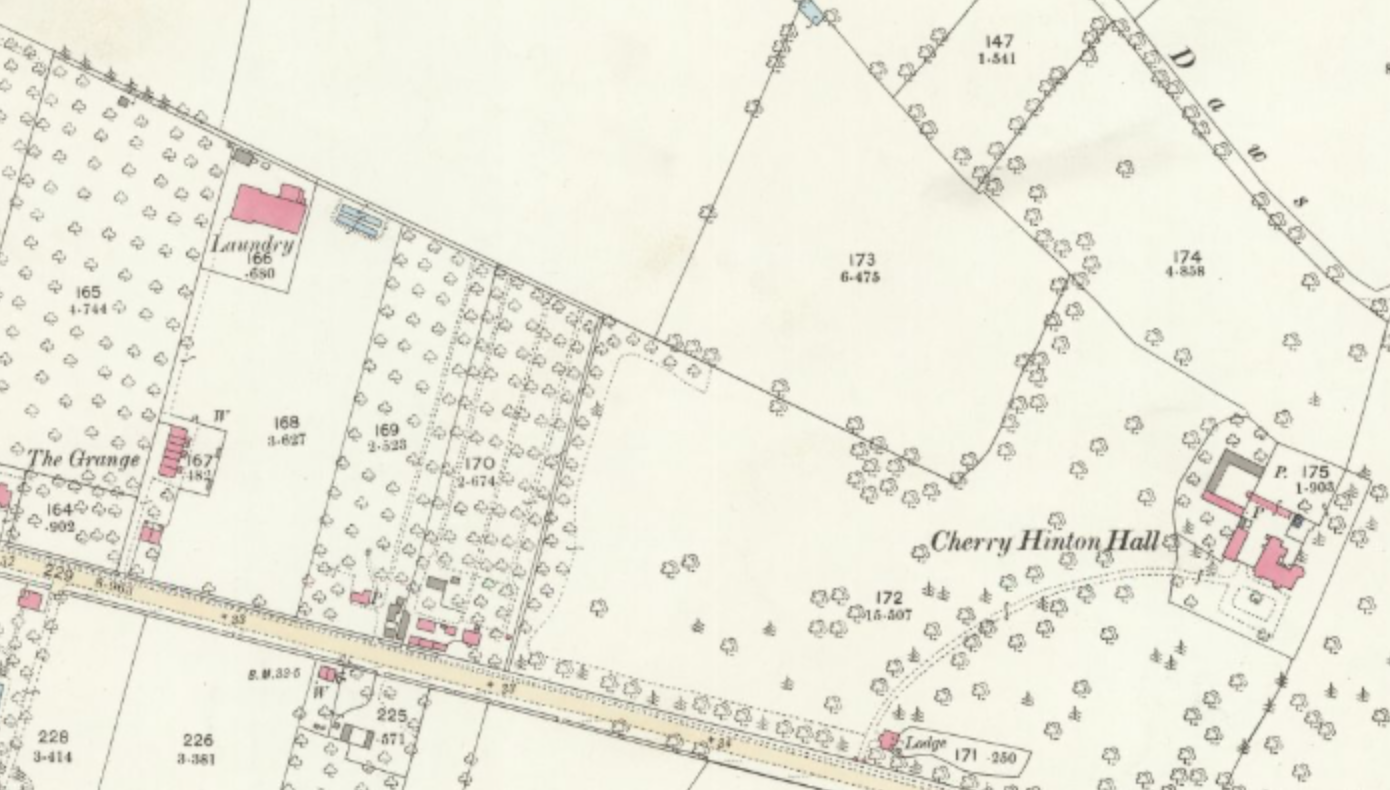
OS 25" 1888 (surveyed 1885) Showing the site of the newly established Cambridge Steam Laundry with its drying field and lane leading to the workers houses (left side of the picture above - Cherry Hinton Hall is shown to the right side of the picture above with Coe's Market Garden Farm (Lime Tree Farm) in the centre with its orchards.
In August 1882 a complaint was published in the Cambridge Newspaper (see below) about the contamination of water. This matter soon seems to be resolved and no further public reports are made. It does help us identify the water source being used for the works. The article refers to an open ditch which ran at the back of the Steam Laundry building and although not visible above ground there today. You will note on the map above that there are two long water-filled troughs which must have been made for use by the laundry.
1883
The laundry continued with consistent, regular advertising for business in the newspapers. You'll see from the advert below that the offices have now moved from No. 2 Alexandra Street to No. 5 and that the manageress of the laundry is Miss Daniel.
1885
By December 1885 the manageress is Mrs Pratt. The advert below also describes the laundry site a little more by mentioning the "Spacious well ventilated sorting, washing and ironing rooms and an extensive meadow for drying ground"
1887 By May 1887 we start to see the first of many sponsorship adverts between the Steam Laundry and Reckitts Blue. You can read more about Reckitts Blue at the 'Old and Interesting' website here: http://www.oldandinteresting.com/laundry-blue.aspx These sponsored adverts linked between the manageress of the Steam Laundry and Reckitts continue for many years and appear in adverts all over the country, providing a great deal of coverage and promotion for both parties. 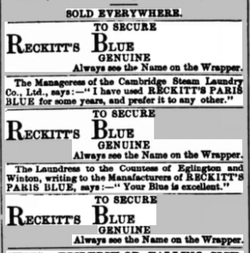 Richmond & Ripon Chronicle - Saturday 07 May 1887 - British Newspaper Archive. Richmond & Ripon Chronicle - Saturday 07 May 1887 - British Newspaper Archive.
1888 Kelly’s Directory:
Steam Laundry Co. Limited (Josiah Chater, sec.) 5 Alexandra Street; works, Cherry Hinton
1889
In 1889 we get the first look at the Cambridge Steam Laundry Company's logo in an advert placed in the Cambridge Independent Press. You'll also see that Mrs Pratt is still the manageress and Josiah Chater still the secretary.
1890
In the financial papers and financial sections of general newspapers continuing information about the share prices of the company are given regularly over the years.
In the 1890s there were newspaper adverts for more workers needed at the laundry, which provided employment for local people.
1891
The first full record of the people who worked and lived on-site at the new laundry is in 1891. The 1881 census was taken before the Steam Laundry was opened so there are no details for it for that year. The 1891 census shows 7 households living at the laundry site. James Pratt is listed as the manager along with his wife Annie Pratt who is the manageress. The remainder of the families appear to be housed due to the wives working at the company. On the OS Map (25" 1888-Surveyed 1886) you can see a terrace of 6 cottages down Laundry Lane and 2 separate semi-detached houses set back, facing Cambridge Road (Cherry Hinton Road) - it is not clear if these last 2 houses are part of the laundry houses. However, the 1901 Census lists two households (with the laundry manager & family living in one and the laundry Carman & family living in the other) as being on Cambridge Road and the rest are called Laundry Cottages Cambridge Road. It would make sense that the manager/s would have higher-grade houses, separate from the main workers.
1891 Census
Laundry – 1. James E Pratt Head M 35 Laundry Manager – Norfolk Old Catton Annie A Pratt wife M 31 Laundry Manageress – Loughton Essex Grace A Pratt daughter 6 Scholar – Cherry Hinton Daisy M Pratt daughter 4 – Cherry Hinton Fred Thomas Pratt son 10 months – Cherry Hinton Mary Ann Pratt mother widow 55 – Brook Norfolk Keziah Read servant single 14 Domestic Servant – Petersfield Hampshire Cambridge Road Laundry – (Cambridge Road is Cherry Hinton Road today) 2. John Osbourne Head M 67 Farm Labourer – Great Wilbraham Cambs Ann Osbourne wife M 64 Laundress – Little Wilbraham Cambs Annie McDonald Boarder 46 widow Laundress – Hanover Square St George London 3. Wilfred Freeman Head M 38 General Labourer – Royston Cambs Jane Freeman wife M 38 Laundress – Cherry Hinton John Henry Fuller step-son s 15 General Labourer – Cherry Hinton Sidney Fuller step-son 8 Scholar – Cherry Hinton 4. Isaac Read Head M 48 – Cherry Hinton - Buckworth Hants *Defective eyes* Elizabeth Read wife M 46 Laundress – Walworth Surrey Annie Read daughter s 18 Packer and Sorter in Laundry – Worcester Park Surrey Jessie Ann Read daughter s 16 Packer and Sorter in Laundry – Worcester Park Surrey Mary Elizabeth Read daughter 12 Scholar – Petersfield Hants May Read daughter 10 Scholar – Petersfield Hants 5. George Patten Head M 30 Carman – Cherry Hinton Jane Patten wife M 26 Laundress – Cherry Hinton Percy George Patten son 2 – Cherry Hinton 6. Arthur Nightingale Head M 34 General Labourer – St Andrew the Less Cambridge Sarah Anne Nightingale wife M 35 Laundress – Thriplow Cambs Julia L Nightingale daughter 6 Scholar – Cherry Hinton Arthur George Nightingale son 5 – Cherry Hinton Ernest H Nightingale son 2 – Cherry Hinton Emily Ann Benstead Servant s 12 Domestic Servant – Swaffham Prior Cambs 7. Margaret Daniels Head widow 53 Living on own means – Edinburgh Scotland *In 1891 the secretary of the Steam Laundry, Josiah Chater and his family - including Augustine Chater who would later take over the role from his father as secretary of the Steam Laundry - lived in Hartington Grove, off of Hills Road Cambridge*
1892 Kelly’s Directory
Steam Laundry Co. Lim. (Josiah Chater, sec.), 5 Alexandra st
In February 1892 the newspapers reported on the death of a well-known Cherry Hinton man, one of the Pamplin Brothers of the Steam Engine fame, who had a steam engine works in Cherry Hinton at the junction of Coldhams Lane and Cherry Hinton High Street.
Eliab Wright Pamplin died as a result of an accident, in which it was believed that he fell from the loft of his stable. The report notes that "Mr Pamplin was for some years Manager to the Cambridge Steam Laundry Company". We know that Mrs Pratt was still manageress in 1899, it is not clear when Mr Pamplin was manager but Mrs Pratt still continued to be manageress for some years.
1893
 Cambridge Independent Press - Friday 14 April 1893 - British Newspaper Archive. Cambridge Independent Press - Friday 14 April 1893 - British Newspaper Archive.
1894
There were many steam laundry businesses across the country by the 1890s and many books were written about the processes, equipment and running of these establishments. The newspaper article below discusses the wages of the Cambridge Steam Laundry Company as a comparison.
The continuing adverts both for the business and for employees gives us useful pieces of information that we can use to build a picture of the machinery used, the jobs available and the workings of the Steam Laundry. Click on each below to expand them.
1896 Kelly’s Directory
Cambridge Steam Laundry Co. Limited (J. Chater, sec.) Cherry Hinton, Camb Steam Laundry Co. Limited (Josiah Chater, sec.) 5 Alexandra St. Cambridge
The following newspaper article from December 1899, gives a report on proprietors and employees of Steam Laundries and is extremely useful as it includes the Cambridge Steam Laundry in the listings, giving a list of names of people working there. - you'll see the error in the print calling Cherry Hinton 'Cherry Linton'!
1901 Census
Cambridge Road – 1. James C Pratt Head M 45 Laundry Manager - worker – Norfolk Old Catton Annie A Pratt wife M 41 Laundry Manageress -worker – Loughton Essex Grace A Pratt daughter s 16 Pupil School – worker - Cherry Hinton Daisy M Pratt daughter 14 – Cherry Hinton – Typist Pupil – Own account at home Frederick T Pratt son– Cherry Hinton Annie A Pratt daughter 7 – Cherry Hinton Rose M Pratt daughter 7 – Cherry Hinton Mary A Pratt mother widow 68 – Brook Norfolk Margaret Daniel mother-in-law widow 63 – Scotland 2. Arthur H Wolfe Head M 32 – Laundry Carman – worker – Cambridge Alice Wolfe wife M 33 – Little Wilbraham Rose Wolfe daughter s 13 - Cambridge Harold Wolfe son 8 – Cambridge Laundry Cottages Cambridge Road Cherry Hinton – 3. Ann Osbourne Head Widow 73 – Little Wilbraham Cambs Agnes M W Maloney niece m 33 Laundress – worker – London 4. Henry J Frost Head M 37 – Steam Laundry – worker – Cambridge Jane Frost wife M 38 – Laundress – worker – Great Easton Essex Christopher W Frost son 12 – Cambridge Montague H Frost son 10 – Cherry Hinton William H Frost son 7 – Cherry Hinton Henry J Frost son 5 – Cherry Hinton Robert G Frost son 1 – Cherry Hinton 5. Arthur J Case Head M 28 – Asylum Attendent – worker - Cambridge Ann Case wife M 26 – Silverstone Northants 6. Frederick E Coe Head M 27 – Waterworks Stoker – worker – Cambridge Ellen Coe wife M 30 – Teversham Ellen E Coe daughter 6 months – Cherry Hinton 7. William Tingery Head 33 Foreman & Coal Porter – worker – Wheathampstead Herts Minnie Tingery wife M 32 – Cambridge Frances Tingery daughter 10 - Cambridge William E Tingery son 8 - Cambridge Dorothy Tingery daughter 1 – Cambridge 8. Arthur Nightingale Head M 44 – Brewers Labourer – worker - Cambridge Sarah A Nightingale wife M 45 – Laundry Worker – worker – Thriplow Cambs Julia L Nightingale daughter s 16 – Laundry Worker – worker – Cherry Hinton Arthur G Nightingale son 15 – Whitesmiths Assistant – worker – Cherry Hinton Ernest H Nightingale son 13 – Errand Boy – worker – Cherry Hinton William M Nightingale son 6 – Cherry Hinton 9. Frederick Bowles Head M 30 – Coal Carter – worker – Fulbourn Cambs Mary A Bowles wife M 28 – Whittlesford Cambs Frederick Bowles son 2 – Cherry Hinton Redvers Bowles son 6 months – Cherry Hinton Pretoria May Bowles daughter 6 months – Cherry Hinton *In 1901 the secretary of the Steam Laundry, Josiah Chater and his family - including Augustine Chater who would later take over the role from his father as secretary of the Steam Laundry - lived in Hartington Grove, off of Hills Road Cambridge*
Extensive regular advertising continues for the Steam Laundry in the local newspapers, again providing us with interesting clues and information about the business.
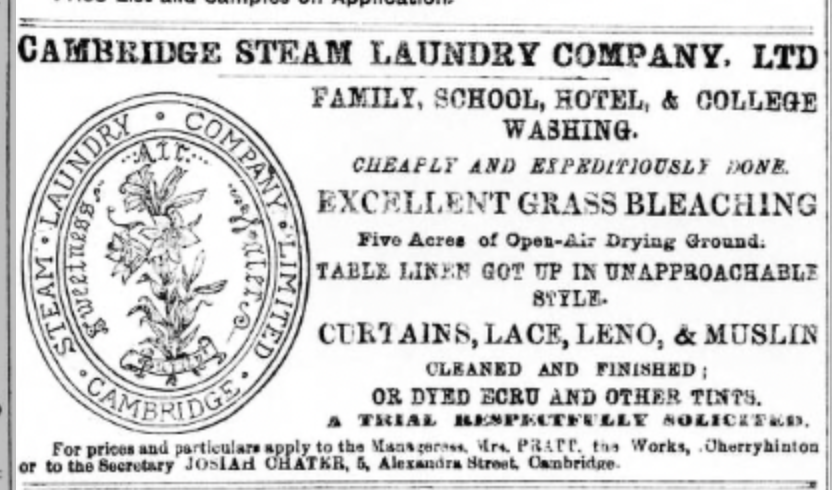 Cambridge Independent Press - Friday 08 November 1901 - British Newspaper Archives. Cambridge Independent Press - Friday 08 November 1901 - British Newspaper Archives.
1903
In 1903 the Cambridge Steam Laundry opened new Offices at 84 Regent Street Cambridge.
1904
With continued drainage of the land and management of the various streams crossing the fields to the west of the Steam Laundry, development continued across the western parish of Cherry Hinton, along Cherry Hinton Road towards Hills Road, which was known as 'New Cherry Hinton'. With the growing number of new houses, streets and shops, a new laundry called The Swiss Laundry, was built on the higher ground further to the west. The Swiss Laundry was founded in 1904 by Mr Chapman and Mr Goundry on the former site of a tannery. It offered a Swiss finish to table linen. This new laundry was to be in direct competition with the Cambridge Steam Laundry. It is worth further research to see what effect this event had on the Cambridge Steam Laundry share prices. As a result, the advertising campaign for the Cambridge Steam Laundry went into overdrive with many repeated and varied advertisements being placed in many local publications and newspapers. Some are shown below - click on each to open them fully.
1907
By 1907 Cambridge Steam Laundry had progressed from donkeys/horses and carts to including tricycles for their collections and deliveries.
In 1907 Cambridge Steam Laundry worker, 16-year-old Montague Frost, was involved in a serious cycling accident whilst riding a Steam Laundry carrier tricycle laden with linen.
1909
The advert below shows that things must have continued to go well for the Steam Laundry despite the competition further up the road, this was in part probably due to the sheer amount of new development leading to a decent number of customers going around. It's also worth noting that despite opening the new offices in Regent Street, the office at 5 Alexander Street was still in use.
In February 1909 drama unfolds with a robbery at the Steam Laundry premises. This is then reported in several newspapers across the country as well as locally.
Along with adverts seeking new staff the Steam Laundry continues with its regular advertising but is now able to include a phone number for the first time.
1911 Census - Cambridge Road now called Cherry Hinton Road
Mary Ann Oakman wife 23 – Laundry Hand Steam Laundry – worker - Cambridge Henry William Oakman son 6 – Scholar - Cambridge
Annie A Pratt wife 51 – “ “ “ “ – Laundry Manageress -worker – Loughton Essex Fredrick A Pratt son 20 s – Clerk Government Telegraph – worker – Cherry Hinton Annie A Pratt daughter 17 s – Cashier Café – Cherry Hinton Rose M Pratt daughter 17 s – Teacher (Pupil) School – Cherry Hinton Harrold G Daniel brother-in-law 45 s – Journalist – at home – Loughton Essex
Elizabeth Wolfe wife 38 M “ – Laundry Ironer Steam Laundry Company – Chesterton
Annie Coe wife 38 M – Dressmaking – own account, at home – Compton Devon Arthur Coe son 9 – School – Cherry Hinton Annie Coe daughter 6 – School – Cherry Hinton
Jane Frost wife 49 - “ “ “ - Essex Christopher Frost son 21 s – Labourer to Carter – Cherry Hinton Montague Frost son 20 s – Labourer to Carter – Cherry Hinton William Frost son 18 s – Farm Labourer on Land – Cherry Hinton Harry Frost son 16 s – Farm Labourere on Land – Cherry Hinton Robert Frost son 11 s – School – Cherry Hinton Sidney Frost son 8 s – School – Cherry Hinton
Emily Patten wife 28 M – Trumpington Rose Patten daughter 7 – School – Cherry Hinton Frederick Patten son 4 – Cherry Hinton Sidney Patten son 4 – Cherry Hinton Maude Patten daughter – 3 months – Cherry Hinton
Emily King 30 M – Laundry Maid Steam Laundry – worker – Arlesey Beds
Olive Harriet Miller wife 47 M “ “ “ “ – Forewoman Laundry – worker – St Pancras Islington William Frederick George Miller son 11 – School – Wood Green Middlesex Robert Rick Miller son 8 – School – Wood Green Middlesex
Sarah Ann Nightingale wife 55 M – “ “ “ “ – Laundry Ironer – worker – Thriplow Julia Louise Nightingale daughter 26 s – Laundry Ironer – worker – Cherry Hinton Arthur George Nightingale son 25 s – Whitesmith – worker – Cherry Hinton Ernest Henry Nightingale son 22 s – Wheelwright – worker – Cherry Hinton William Mark Nightingale son 16 s – Under Gardener – worker – Cherry Hinton
Mary Ann Bowles wife 38 M “ “ “ “ – Whittlesford Cambs Dorothy Bowles daughter 13 – School – Cherry Hinton Frederick George Bowles son 12 – Cherry Hinton Redvers Bowles son 10 – Cherry Hinton Pretoria May Bowles daughter 10 – Cherry Hinton *In 1908 Josiah Chater died, the role of secretary to the Steam Laundry Company most likely fell to his son Augustine Chater at this date. In 1911 Augustine was living in Hartington Grove, off of Hills Road Cambridge*
1912
In 1912 we find the first mention of the use of motorised vehicles for the Steam Laundry.
1916
By May 1916 the effects of the First World War on businesses were being felt and a claim was placed by the Steam Laundry to hold on to their key worker, William Henry Wenham, rather than him go off to war, stating that if he were to go, they would probably have to shut down. We can see from the newspaper report below that the Steam Laundry was engaged in army work by the washing of army blankets.
1918
Throughout 1917-1918 the Steam Laundry places less of its regular weekly newspaper adverts for business and instead, there is a constant stream of weekly adverts places requesting staff for various jobs. The advert below, for example, states that a war bonus is included.
In July 1918 we can see that William Henry Wenham was granted another 3 months' extension to continue working at the Steam Laundry rather than be sent of fighting. This must continually be requested.
1923
For a few years after the war there were quite a lot of newspaper adverts placed for job vacancies at the Steam Laundry but no real regular adverts for business like there had been before the war. In 1923 we find the following newspaper notice which discussed one of the Steam Laundry cottages. We can see that the office at 5 Alexandra Street was still in use and that the manageress was now Annie Wheeler.
1925
In January 1925 Mr Rutter dies and the newspaper obituary states that he was a director of the Cambridge Steam Company.
1933
In 1933 another break-in at the Steam Laundry occurred with an interesting tale of how the culprit was caught!
The full tale unfolds in March 1933 in the trial report given in the newspaper, which you can read below - click on each picture in turn to see the full details!
In the report we discover that Edna Fisher, who gives evidence in the trial, is Chief Clerk of the Steam Laundry. Saffron Walden Weekly News - Friday 10 March 1933 - British Newspaper Archive.
In the end, at sentencing, Thomas Spriggs was found not guilty.
1935-36 Cambridgeshire County Directory
Cambridge Steam Laundry Co. Ltd. Receiving office 4738 Works 87548 Chater, A. B. A.C.A., F.C.I.S., secretary Cambridge Steam Laundry, Cherry Hinton road and 54 Regent Street *Augustine Barrett Chater was Josiah Chater's son*
1937
The following newspaper notice shows that the laundries are working together - how this worked in practice and affected the public ownership of the Cambridge Steam Laundry is not clear and would merit further research.
In 1937 we find the first general business advert in many years for the Steam Laundry. It is much plainer than those that they used to publish before the war, and you'll note that there is now a new phone number for the Steam Laundry.
1938 The Blue Book Cambridge Directory
Cambridge Steam Laundry Co., Ltd. Cherry Hinton meadows. 87548 Cambridge Steam Laundry Co., Ltd. (Chater, A. B.), 54 Regent st. 4738
By 1938 Kelvin Close was laid out to the immediate west of the Steam Laundry and the houses were built just before the war.
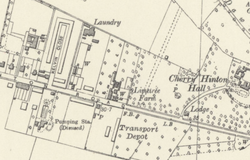 OS 6" surveyed 1935 published 1945. OS 6" surveyed 1935 published 1945.
1939
A very sad tale appeared in the newspaper in August 1939 which tells of the suicide of Francis Cort Carpenter, Manager of Cambridge Steam Laundry. You can click on each of the pictures below to read more.
With the outbreak of World War Two the Steam Laundry business was once again affected.
1946
I visited the Cambridgeshire Archives at Ely to look at the records that they hold for the Steam Laundry at Laundry Lane. They hold a set of building bylaw plans which I was able to photograph. Cambridgeshire Archives Reference: KCB/2/SE/3/9/14843 Building byelaw plan and approval for alterations and additions to laundry, Cherry Hinton Road (Cambridge Steam Laundry) 11th Feb 1946.
Cambridgeshire Archives: KCB/2/SE/3/9/14843 Building byelaw plan and approval for alterations and additions to laundry, Cherry Hinton Road (Cambridge Steam Laundry) 11th Feb 1946.
I sent Penny the plan which showed the houses on the Steam Laundry site, and she kindly highlighted in yellow, which house used to be theirs - see below:
"I was pleased to see that the well was marked on the plan, it was practically in our back garden! It's a shame that the Lane is in such a mess now.....On the attached plan that you kindly submitted I have highlighted our cottage and we resided there circa 1952-1962."
1948
1962
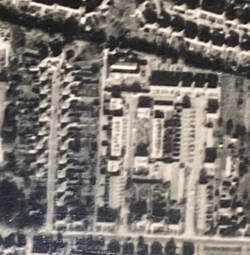 c.1962 Aerial view showing the newly built Derwent Close over the drying meadow with the Steam Laundry still reachable at the rear, via Laundry Lane - Fairley Surveys c.1962 Aerial view showing the newly built Derwent Close over the drying meadow with the Steam Laundry still reachable at the rear, via Laundry Lane - Fairley Surveys
1954
From around 1950 the Cambridge Steam Laundry had begun a new service of Dry Cleaning and had begun its advertising campaign by 1954 Perhaps this was in part because it had now lost its traditional drying ground to the new houses. For several months there were many newspaper adverts placed to call for new employees at the Steam Laundry, in the 'Dry Cleaning Department'. Mrs B Jackson & Co. 3 Regent Street, was one of the first businesses in Cambridge offering Dry Cleaning from 1900 onwards. The Swiss Laundry had also offered dry cleaning since its opening in the early 1900's.
1962 In 1962, during the last years of the laundry, Mr H Dorcey of Cambridge Steam Laundry represented on the East Anglian Council section of the Institute of British Launderers. 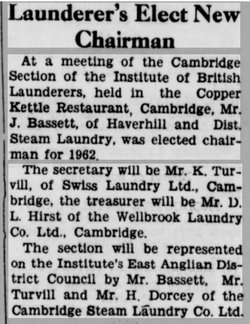 Haverhill Echo - Saturday 24 February 1962 - British Newspaper Archive. Haverhill Echo - Saturday 24 February 1962 - British Newspaper Archive.
In the same month of February 1962 Cambridge Steam Laundry changed its name and became the Cambridge Laundry and Cleaners Ltd with Mr Dorcey identified as the general manager. The company then takes over another laundry - The Coldham Model Laundry - bringing along a few of its staff.
1969
In August of 1969, the end of the 88-year history of Cambridge Steam Laundry was coming to an end. The name had been changed in recent years, but the business did not last much longer. The remaining premises and land were listed for sale by direction of Lyndale Laundries Ltd.
By October 1969 the public auction sale of the site had been withdrawn, citing the reason that the site had been sold by private treaty.
The mystery surrounding this sale was noted in a newspaper article the following year. It seems that after the private sale of the land in October 1969, the business had carried on for almost another year under its name of Cambridge Laundry and Cleaners Ltd, which had been owned by Mr W Shaw. It soon becomes apparent that the Swiss Laundry had taken over the Cambridge Laundry business. The Cambridge Steam Laundry, albeit with a new name change, finally closed for good on the site it had occupied for 89 years.
Today the Cambridge Steam Laundry Buildings are all gone and in their place is a new housing development called Brothers Place. Laundry Lane remains as a rough road now leading to a dead end.
You can download a PDF copy of Michelle's History of Cambridge Steam Laundry Company and Penny & Nicks article for free, by clicking on the buttons below.
Please do feel free to get in touch if you would like to add anything to this story or if you have any further information on the Cambridge Steam Laundry.
If you'd like to support the work that I do and the archive, why not buy me a virtual coffee or make a one-off donation at PayPal, I'd be really grateful and it will help keep me going! Just click on either of the buttons below :)
Suggested further reading and research:
Books that are worth reading on the subject: The Steam Laundry and its Methods - Charles A Royce How to Successfully Operate a Steam Laundry - Caleb David Patterson (Classic Reprint) The Steam Laundry. Its Construction, Equipment and Management - Taylor, John. (Consulting Laundry Engineer) LAUNDRY MANAGEMENT. A Handbook For Use In Private And Public Laundries - Editor of "The Laundry Journal" A Manual Of Modern Steam Laundry Work 1912 - Ellis Clayton Steam Laundries: Gender, Technology, and Work in the United States and Great Britain, 1880-1940 - By Arwen P.Mohun (Baltimore, Johns Hopkins University Press, 1999) Further Suggested Archives and Records to Consult: Cambridge University Library: Laundry books, 1956 - 1968 Reference Code: GBR/0265/UA/BG 18 Scope and Contents Record laundry taken in and money paid. Several of the books in this series were used concurrently. Dates: 1956 - 1968 Conditions Governing Access: From the Fonds: Among the archives of the Botanic Garden, personal records are closed to scholars for 80 years from the date of creation under data protection legislation. Restrictions are clearly indicated in catalogue entries. Found in: Cambridge University Library / GBR/0265/UA, Cambridge University Archives / Teaching, learning and research records / Archives of the Botanic Garden Personal diaries: Volume 39 (loose inserts), 1930 Reference Code: GBR/0271/GCPP Tillyard 1/1/39a Scope and Contents Photograph of AT with ? Agatha at St Anthony-in-Roseland in Cornwall; also press cutting re a carol concert given by the Perse School at the Cambridge Steam Laundry works. Dates: 1930 Found in: Girton College Archive / GBR/0271/GCPP, Personal Papers / Personal Papers of Aelfrida Tillyard / Personal and biographical records / Personal diaries, 1897-1959, together with documents formerly contained loose in the diaries, 1868-1959. Personal diaries: Volume 50, 1935-11-01 - 1936-06-08 Reference Code: GBR/0271/GCPP Tillyard 1/1/50 Scope and Contents Oxford. Still at St Benedict's. Alethea also living in Oxford - frequent visits. Brief visit to Cambridge - resigns directorship of the Cambridge Steam Laundry. Continued illness: goes to a nursing home in Torquay in Jan. 1936. March 1936 - has an operation then convalesces at the Convent of the Holy Trinity. Otherwise this volume contains largely description of the contemplative and religious life - occasional comment on the world, eg the situation in Germany. Discussions with Father Cary,... Dates: 1935-11-01 - 1936-06-08 Found in: Girton College Archive / GBR/0271/GCPP, Personal Papers / Personal Papers of Aelfrida Tillyard / Personal and biographical records / Personal diaries, 1897-1959, together with documents formerly contained loose in the diaries, 1868-1959. + taking on her father's role as a director of the Cambridge Steam Laundry Ltd. Writing: 'Concrete' and 'Can I be a Mystic?' both published by Tillyard, Aelfrida Cambridgeshire Collection: The laundry of perfection Author: Cambridge Steam Laundry Co. Ltd Imprint: n.d. Collation: 4 p. ; 19 cm. Dewey class: C.27.2 Local class: C.27.2 Language: English Subject: Cambridge Steam Laundry Co. Ltd BRN: 1144480 Cambridge steam laundry, 80 Regent St and adjoining shops Imprint: 1907-1911 (circa) Notes: Indexes: Yes Dewey class: P.Stea.K0 B.REG.K0 PC.Lan.K0 Local class: B.REG.K0 Language: English BRN: 1024081 The Cambridge Steam Laundry, Cherry Hinton Road, Cambridge Author: Sales Catalogue Imprint: Cambridge, 1969 Collation: p.7 ; 35 cm. Notes: With map enclosed Dewey class: C.06 CABINET Language: English Subject: Cherry Hinton Road I came to Cambridge at the outbreak of the Second World War in September 1939 as a six-year-old boy, from New North Road, London, with my junior school from Islington. We walked around Cherry Hinton looking for people to take children into their houses. I ended up at a large house next to the Rosemary pub on Coldham’s Lane. My school was in Cherry Hinton at the green tin hut near the railway crossing. After a while, my lessons were moved into the school classroom from the hut. My playground places were the Spinney in Cherry Hinton and the chalk pits at Coldham’s Lane. One night during an air raid a high explosive, bomb hit Riche’s scrap yard killing the guard dog at the nearby cement works. I was standing in the road at the time when a bomb hit the cement works but didn’t explode. On another occasion, I was on Coldham’s Lane by the Rosemary pub when a German Dornier flew low over me on its way over Marshall’s airport. When America entered the war, many Americans came to Cambridge. They always had sweets to give to us children and the cement works road in Coldham’s Lane had conveys of trucks getting cement for their airfield runways. As the convoys were going into the cement works, I climbed in alongside the driver at the beginning of the cement works road, travelling with them whilst they collected the cement, and when the vehicle got back to Coldham’s Lane I got out. I always asked, “Have you got any gum chum?” They always had! When I was about nine years old, I joined the choir of Great St Mary’s Church in Cambridge, walking there and back for morning and evening services. One end of Marshall’s airfield was near to a field in Rosemary Lane. On a few occasions, my friend and I crawled through the barbed wire fencing to go up to the bombers to have a close look at them. After a few times of this, we were chased off by one of the guards, but it was good fun at the time. I spent a lot of days at Coldham’s swimming pool where I learned to swim. Coldham’s Common was covered in stone pillars to prevent German gliders or aircraft from landing. At the end of the war, I was eleven years old, and the children that I knew went back to London. When I saw my father and asked him about me going home, I was told he had no place to take me to. I then had to go to Cherry Hinton Children’s Home in Cherry Hinton Hall, with other evacuees and I attended Coleridge School. Cherry Hinton Hall was a grand old building with a stream running underneath the building and into the lake on the grounds of the Hall. It was a good place for boys as there were plenty of trees to climb and conkers to collect. There were five other boys of various ages, and I was the oldest. It was run by Miss Johnson. She was a very good lady at running the boy’s home. She treated us as her own. It had a bad reputation owing to older streetwise boys living in the hall and the headmaster of the secondary school would come to help Miss Johnson. On Coldham’s Lane, where the sweet shop used to be opposite Queen’s Meadow, I was with a young lad who had gone into the shop to get some sweets. An older, big boy, known to be a bully came over and hit my friend for no reason at all, and made him cry. I was having none of this, so I turned round and hit him on the chin knocking one of his teeth out. Being a typical bully, he ran home crying. He got his brothers to come after me on their way to school but I used to go around other ways to avoid them and they had to make sure they were not late for school, so they never got me. The village boys didn’t realise how streetwise we London boys were. Next to the Hall was an Italian prisoner-of-war camp, on Walpole Road. I spent a lot of time in their camp talking to them as some could speak a little English and they made toys for us. After about two years of being at Cherry Hinton Hall, we were told it was going to close as a children’s home and the boys were told we would be going to the Red House children’s home at Little Shelford. This was a sad day for the boys who had nowhere else to live. On the day we left Cherry Hinton, I, being the eldest, took the boys to the pictures in Cambridge. Then we had to catch the bus to Shelford and then to the children’s home. It was a large house with many rooms and a very large garden with a brook running down one side. The bad reputation of the boys from Cherry Hinton Hall during the war had reached the children’s home in Shelford. One day, when my friend David and I were talking to two of the village girls who were on the other side of the stream, a man called out to them. “You don’t want to talk to them. They go round with a ball and chain on their feet”. So, the bad reputation of Cherry Hinton Hall during wartime had preceded us. But we changed their minds when they got to know us. I even played football for Shelford. Having moved to Shelford I still went to Coleridge School, until I left at the age of fifteen. The council then found me lodgings in Cambridge. I was then working as a printer in Cambridge. The third lodgings the council found me turned out to be two doors away from my future wife Doreen. She was fourteen at the time and I was sixteen. We were together for seventy-two years, until her death in January 2022. When I was eighteen, I was called up for the army. After several weeks of intense training, I became a paratrooper and joined Two Para serving in Egypt, Cyprus, and Transjordan. When I left the army, I went back to my job as a printer. Doreen and I got married, I was twenty-two and she was twenty. We had three children, all boys. Two were twins and an older brother by three years. I later joined the Royal British Legion at Waterbeach and, after a few years of training, became their Standard bearer. I entered competitions and became the county Standard bearer a position I held for a number of years. It was when my wife and I went to a function on The Green at Waterbeach that I noticed there were several ex-paras there with a stall selling various items including military badges and other items of interest. They asked me if I would join the Cambridge branch of the Para Association, which I did. It was a very active branch which organized trips to Arnhem every other year. I eventually carried the branch Standard to the events at Arnhem and other places in the U.K. At the age of seventy-two, I became the Para Association National Standard bearer. The Standard is the only Standard of the Para Association that has a Union Jack in the top corner. About a year later the Standard was being ‘laid up’ and I was to receive the honour of carrying the new one, at the event where it was to be dedicated at a church in Normandy. At one of the Normandy events, a bust of Major Jack Watson was to be unveiled by Prince Charles (as he was before becoming King). I asked him if he was doing the unveiling as I had the National Standard with me. He told me to bring it over and when telling my superiors of this they replied that they couldn’t overrule his wishes. In my seventeen years as the National Standard bearer, I carried the Standard every year to the Ardens, Rhine Crossing, Belgium, Normandy, and Arnhem. I would like to pay a special tribute to my wife Doreen who accompanied me on all my duties, at home and abroad. Without her support, I am sure I would not have carried on for as long as I did. I would also like to thank the Watson family, the Zannette family whose father was a Normandy veteran, Ralph, who organised all the trips, and Barry our bugler of many years. Jane and Elaine Zannette are still very much in contact with me. I go to Kent to stay with them for a few days and they come up to stay with me. They also ring me to make sure I am okay. Ken Price 2023 Many thanks to Patricia Curry for helping Ken write up his memories. You can download a PDF copy of the original article by clicking on the button below.
This memory is taken from the Cherry Hinton Memory Books Collection which were donated to my Cherry Hinton archive. You can read more about the complete collection by clicking here:
Cherry Hinton Memory Books Introduction I am now taking each memory/story and posting them individually on here, adding in any pictures to illustrate the memories and any further points of information and research that may be of interest.
Memories of Cherry Hinton by Bryan Stevens
Vic Phillips often mentions me by my nickname “Ziggy”. Ziggy was the owner of the clothes shop in Newmarket Road before he moved into Regent Street “Stylebest”. This shop sold the most modern clothing during the fifties and sixties and it was where I bought most of my clothing, hence the name “Ziggy”. Ziggy gave me a gold tie pin for my wedding in 1959 which I still have. I am now happily married for the second time.
Bonfire nights in the High Street were something special. There was an air raid shelter opposite 197 High Street, where I used to live, and we would fill it up with logs collected from the Spinney. One Bonfire night the fire was so large that it nearly burnt down the telephone wires.
There was a rubbish dump down Fulbourn Old Drift over the railway line and we would go up there with our air rifles to shoot the rats. One day we were up there shooting the rats when the siren sounded from Fulbourn Hospital and thinking someone had escaped we all ran home as fast as we could.
We all talk about the Spinney with fond memories. During the school summer holidays we more or less lived up there, making dens, laying turf for the floor of the den, and cooking on open fires. One day when we were there my dog Gyp caught two rabbits from out of the chalk pits which I took home.
Opposite the Robin Hood pub are the springs where the water for the brook starts. There used to be railings round the springs to try and keep us out but we would get in and try to catch the pike which would be by the island. We would stand on the now stepping stones and try to catch them before they went back to the lake in Cherry Hinton Hall.
In the brook round by the Black Land allotments we would block up the tunnel underneath the bridge with a sheet of corrugated iron so that the water could not escape and we could get it deep enough to swim.
Grandma Coe who used to live at the then 203 High Street was still riding her “sit up and beg” bike when she was 90 years old. I still remember when a horse and cart passed by her house and left “deposits”, she would rush out with a bucket and collect them. She always had the best roses in the High Street.
As you old Hintonians know, my grandfather started the Stevens Brothers Building Company. He built some of the first houses for the Housing Association in Cambridge. One of the last houses they built was the bungalow in the High Street for the Bartram family (the level crossing keepers). They also built the shoe repairers bungalow next to the recreation ground.
The Cherry Hinton History Society have no record of the building company. My only record is a photograph of a cast iron sewage drain cover in the front garden of the house in the High Street which used to be 201 High Street. It reads “Stevens Bros, Builders, Cherry Hinton”. If anyone could help me find out any other information I would be grateful.
Further notes by Michelle:
I would love to find that drain cover, mentioned above, and get a picture of it and photographs of where the houses above mentioned stood. I have had a look along that stretch of High Street but the house numbers have all changed sometime ago and many houses have been pulled down and others built in turn. There is a real challenge now to draw up a map showing the changing houses/buildings and where they were over time on the High Street, along with working out the house numbering system. Once this has been done we will be able to add the information and pictures to a separate article, and in turn to these memories where they mention any particular houses.
One clue from the story above is that Mrs Coe lived at what was then 203 High Street - meaning that 201 would perhaps of been next door to that house, and therefore the Steven Bros drain cover may still be found somewhere there.
I have search the census, electoral and directory information to see if I can find which house Mrs Coe lived at on the High Street around the 1930's-1960's. The only two clues that I have so far are the picture on the left below, which is from the Richard Hoye collection - it is a photograph c.1985 showing a house on the High Street which is still there today (see my picture on the right). Richard Hoye's picture, on the left, has a note beneath it stating "Mrs Coe". The house has the name 'Temperance Villa' on it (for which I have searched many records and turned up nothing on it) and it is dated 1903. If this was the house, 203 High Street, referred to in the story above it is now known by a different number.
The next clue is on the 1911 Census and of the only Coe family on the High Street at that date - it shows Charles Coe living on the High Street with his family "near the school" - Temperance Villa shown above would have been built by this time - and is near the school on the High Street. This branch of the Coe family were certainly living along this stretch of the High Street in 1911, did one of these Coe ladies end up living in Temperance Villa and is this the house referred to above, what was then 203?
We might also be able to work out where 197 High Street, above mentioned, was and in turn know that across the road there was once an air-raid shelter - which may or may not remain in some form.
I have managed to find out a little more about the Steven's Bros Builders business. The picture below shows Albert Stevens and Jess Tabor in Cherry Hinton near the railway line, stating that they are both apprentice carpenters. The photo is not dated but as you will see from the other sources that I've managed to find, below, this helps us get an idea of what the Steven's Bros were doing in their business.
You can see from the County Directory extract below that 'Stevens Brothers' are listed as builders and wheel-wrights.
Then, in this newspaper clipping below from 1936, we find that the Stevens Bros were the undertakers of a funeral! They give the address for the business as the High Street Cherry Hinton. As odd as this seems, to find them acting as undertakers, this was not unusual for joiners or furniture makers and like to do this at this time. I presume it would be because they are able to produce the wooden coffins but that's just my guess as to why this is the case, as in many similar firms across the country years ago - in fact Chippendale in London, the great furniture maker, also did the same, so it really was 'a thing'.
To add further proof that they were listed as builders and contractors but also carrying out undertaker services, you can see more detail on the bill below from 1935. Note the business header on this paper and the house shown.
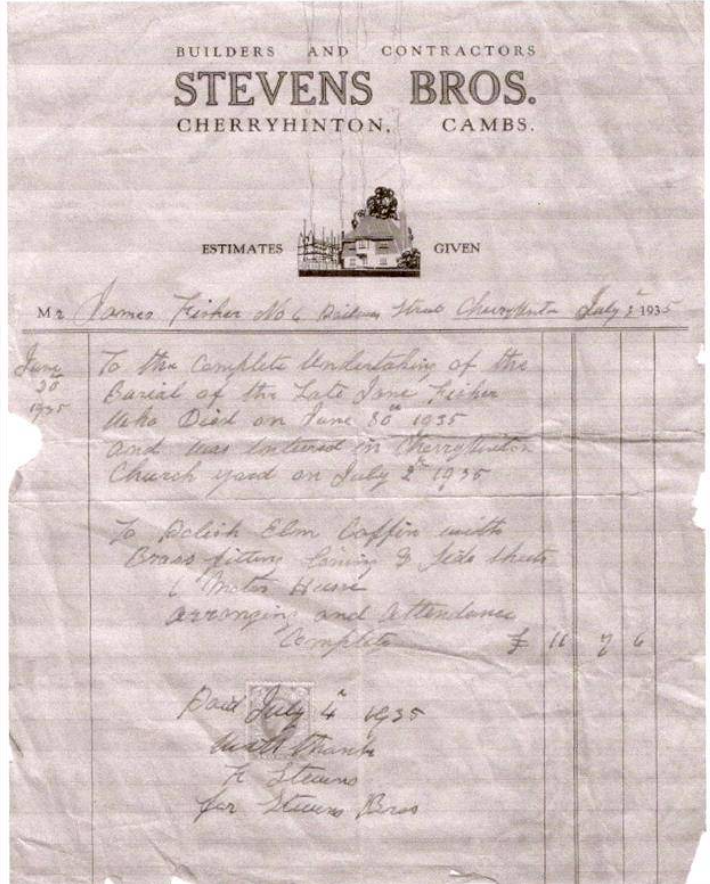 Stevens Bros Builder & Contractors Cherry Hinton. Bill for Undertaker services - CHCAN Donated by Neville Cullup Stevens Bros Builder & Contractors Cherry Hinton. Bill for Undertaker services - CHCAN Donated by Neville Cullup
You can see the details of the business still continuing in 1955 from the newspaper advert below.
 Cambridge Daily News September 24th 1955 - British Newspaper Archive Cambridge Daily News September 24th 1955 - British Newspaper Archive
A very important part of the village has been the British Legion Hall, first a shed-like building that once stood on the main recreation ground and then, when it was rebuilt down Fishers Lane. So many Cherry Hinton memories from both of these two versions of the hall from over the years. The Fishers Lane hall was demolished about 10 years ago and now the houses of Poppy Close stand on its site. I have now discovered that the Stevens Bros were the builders for the British Legion Hut in Fishers Lane, as you'll see from the bill below. This is great to discover and will add a bit more to the story of the firm. Again note the header and picture of the house. They give their address as 77 & 79 High Street Cherry Hinton.
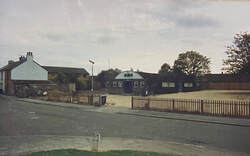 The second British Legion Hut, Fishers Lane Cherry Hinton c.1985 - R.Hoye, courtesy of Cambridgeshire Collection The second British Legion Hut, Fishers Lane Cherry Hinton c.1985 - R.Hoye, courtesy of Cambridgeshire Collection
The picture above shows the Fishers Lane, British Legion Hall, as it was, built by the Stevens Brothers of Cherry Hinton.
Please do feel free to get in touch if you would like to add anything to this story or if you have any further information on the Stevens Bros.
If you'd like to support the work that I do and the archive, why not buy me a virtual coffee, I'd be really grateful and it will help keep me going!
Just click on the green button below :)
Here you will find the complete article by Chris Gifford 'Cherry Hinton 1946 Onwards' - if you haven't done so already, I would encourage you to take a brief look at the introduction page about the memory books and this accompanying article first - which you can do by clicking the link here: Cherry Hinton Memory Books - Introduction
There are three books altogether and this one separately written article - you can find the links to the other books and this article by visiting the Cherry Hinton Memory Books Introduction page, mentioned above, or by searching the index (Categories) on the righthand side of this page or by using the search box on the right.
Cherry Hinton 1946 Onwards Chris Gifford 5.6.12
Chris Gifford Cherry Hinton Memories
“Are you sitting comfortably? Then I’ll begin!” This we heard as infants in the school hall. A short story on the wireless in early afternoon, and afterwards, we had to lay on rush mats to try and sleep. I remember that we had “Music” once a week. A low cupboard running down along one side wall, stored all of the instruments. We boys wanted to get hold of a drum. But as I sat near the opposite wall, all I ever had was the triangle – such a disappointment. So begineth the course for my life. After one Christmas Party in the Hall, we came out to find that it had snowed. We began to make slides, but I had crepe soled sandals which would not slip. So, I made sure that I had leather soled shoes on the following day. Near the entrance to the Playing Field was a small brick kiln, which seemed to be smouldering for days and blackened Pots etc eventually came out. The Sports Days were exciting. We all had roped off areas for each class along the far side of the Playing Field. At one Sports Day, Susan Thompson and her friend were short of a third person. A teacher asked me to join in. The girls were a couple of years older than me, but they were ‘girls’, and I was confident that I would keep up with them. After about 20yards I realised that I couldn’t, and half-way along, they pulled me off my feet. So that I went head-long onto a white line. I returned to my class, looking, and feeling, a right Charlie. I think that we all enjoyed “Tig-Ball”, when one was hit with a tennis ball, one joined the “catchers”, until there was only one person left. Football was our passion. Putting a sleeveless jumper under one’s football shirt to keep warm. Having your mother’s women magazines down your socks as shinpads. Having football boots on already, before one caught the 131 Bus into town. The terrific racket stamping up the stairs to the top deck. Dangerous leather studs with protruding nails. Cutting three or four parallel cuts down one’s leg. Or in my case cutting mums mags to shreds. I have always enjoyed dancing. Ballroom, Barn dancing, German dancing, I liked it all. And I put that down to the lady who used to come and teach us Country Dancing every week. I used to like dancing with a pretty girl with lovely red hair, freckles, and plaits down to her waist. I used to hold the door, as everybody came into the classroom. Quickly whisper to her, “Can I be your partner?” She always said “Yes”. You see that I never had trouble with girls under 12, and over 70. It was the bit in-between that caused me trouble! At our recent Cherry Hinton Reunion at a Fulbourn Pub. I kept saying to ladies, “I’m looking for my Country Dancing partner. Was it you?”. Plenty of giggles, until I asked a rather younger young lady. A look of contempt came over her, and she said, “You had better ask my older sisters!” Boom! Boom! It was clever of our Headmaster to play some classical music at morning Assembly. I liked “The Hall of Mountain King” best. He used to ask us questions. One was, “What is a weed?” And of course, we all gave various plants as the answer. But he said, “Anything in the wrong place. So, a potato could be a weed, or if one dropped a couple of lettuce seeds in the wrong place – they would be weeds.” I have remembered that answer for over sixty years, but the question has never turned up! So, if we have another C. Hinton Reunion, will somebody please ask me the question. Stop me dreaming about that answer! I remember that the teacher asked us to bring a potato to school, as we were going to cut them in half, and make potato prints. Modern ideas even in those days. The following day, I walked to school with another boy, and as we reached the Tin Hut, we remembered – no potatoes. I used to help my dad with planting potatoes, so I knew that they wouldn’t be too deep. Somebody had a vegetable patch between the railway line path and the playground boundary. I told my friend to keep an eye out. Took a stick, ran over to the potatoes, and quickly dug two out. Of course, all afternoon, I was waiting for the headmaster to come into our class, but nothing happened. Another time, the headmaster asked me to take a bundle of old letters to the Vicarage. The stamp on the top of the letters was Queen Victoria. Many of us collected stamps in those days. I kept looking at that stamp, and I gave into temptation, and ripped the corner off that envelope. (Even in later life, I was prone to give in to temptation – not stealing, unless it was a cherry). Then I thought, I’m going to get “told off” for taking one stamp, I might as well have more. I worried about it at the time, but nothing happened. I remember a Vicarage Fete, and they had a painting competition at 6 pence per entry. I did a vase of flowers. A blue vase with some red crosses on it. John and Peter Hedge and their mother were going to the fete. I tagged on with them. The winning entries were pinned up on display boards. There was my painting, but with a girl’s name on it. I told Mrs Hedge, and she went over to tell them the mistake. When the prizes were given out, I was given two fairy cakes worth 6 pence. Disappointed Tunbridge Wells! I never went in for anymore painting competitions. “Turf” cigarettes had printed cards onto the packaging. So, as we walked to and from school, little Eagle Eyes were on the lookout for old ‘Turf’ packets. Brian and Tony Tabor, as they lived at the Chequers Pub, suddenly cornered the market. They came to school with packets full of Turf cigarette cards. The dear boys had emptied out all of the Turf cigarettes and taken the packets. After which, customers were given their cigarettes in small paper bags. Then dad had some pigs down the end of the garden and took some farming magazines. So, when our teacher asked us to look out for pictures of farmyard animals. Tony arrived for school with a whole pile of magazines and gave them out. But there were only a few pairs of scissors, and I became tired of waiting, so ripped out the various pictures. Pasted them in my book, job done. But the teacher was not impressed. This was while in the Tin Hut. The teachers had a chart on the wall to record Tables. One had to say the table and then answer some questions, i.e. what is 7 x 3? 9 x 3? Etc etc. Success meant a star against your name. I struggled to get 2 stars, while some children had 5 or 6 stars. I had forgotten that we had poetry and we had to write out the poems into our books. The neatest one got a prize. We boys discussed the prize as we walked home and decided that it must be a penknife! I won the prize, and it was a book of children’s poetry by R.L. Stephenson! Deep depression as we walked home. A poetry book of all things. Some weeks later in Assembly, the Headmaster asked a question to which the answer was R.L. Stephenson. Nobody knew the answer. He said, “I’m surprised that Chris Gifford didn’t know the answer, after winning that book of poetry by R.L. Stephenson”. Of course, I went as red as a beetroot, having not even opened the book. Last year at the Trumpington car boot, I brought a copy, thinking that I would actually read it after 60 years. But I mislaid it somewhere in my house. Sorry! Mr Stevenson. We were writing with the simple nib pens and had to keep dipping the pens into the ink. When we came out of school one afternoon, a man was sitting outside the Tin Hut with a board of colourful fountain pens. They had wooden bodies. He said that if we brought him a bag of old clothes, we could get a pen. I ran home and got a bag of clothes. My mother being in Town. But he said that these weren’t enough, so I had to run home again, grab my dad’s old pullover and an old jacket, run back again. This time I was given a pen. The next morning in class a lot of us were writing with our bright, new pens. Tony Tabor and I were good friends. By the time we were in the top class, bikes were beginning to become available. I was scared to sit on the saddle at first, so sat on the back mud guard. Spent hours going up and down the lane beside our old house, which led to the Stevens wood-yard and black barn. I was always after wood off-cuts and saw-dust. I took my bike to the Rec. Whilst there, I tried to sit on the seat, as the grass gave a softer landing, if I fell off. Once in the saddle proper I could ride to school. Tony was also riding to school. One day we were racing each other home. Neck and neck, we peddled furiously. Suddenly we caught up with an old man going slowly. I was on the inside and I realised that if I braked to go around the outside of the old man, I would lose the race. I saw that there was just enough space for me to over-take on the inside as Tony on the out-side. We flashed past, and we could hear the shouting and swearing fading into the distance, as we arrived home. A draw! There were a whole bunch of children who lived in Mill End Close, opposite to the Recreation Ground (Rec). We met on the Rec and soon had a game of football in progress. Anybody who turned up – played. 15 a side, 20 a side, it didn’t matter. All that mattered was that the kid who owned the football turned up. Otherwise, we picked sides to play hide and seek (offs). Initially, there was only a swing on the Rec. If one was on the swing, and a Tiger Moth flew up from Marshalls, it made a strange noise with one’s ears. Near the swings stood a circular stand of plum bushes, but with a hollow space in the middle. Somebody suggested going around the circle without touching the ground. Some promenade tree roots in some gaps helped this along. Next suggestion was tig, without touching the ground. Exciting stuff, but usually somebody went home with a dirty handkerchief tied around a leg wound. There were bushes up the sides of the Rec and a line of mature trees across the end. More testing to our climbing skills. One day, Tony Tabor and I rode to the end of the Rec and decided to cut a track through the big trees. So, we spent a happy time with a spade and saw making our dirt track. Making a half circle with short branches on the Rec itself. We began the races beside the big trees, around the half-circle, and then to the trees. Any over-taking had to be done on the half-circle. We used to let other kids use our bikes to race. Plenty of fun, until it was another race between Tony and myself. Just before we went into the trees, Tony’s pedal went into my front wheel, and whipped out several spokes in a split second. My poor father used to spend a long day repairing cars at a garage along Cherry Hinton Road (Cambridgeshire Motors), cycle home, and find more work with our bicycles. We made bows and arrows. Took then onto the Rec to see who could shoot the furthest. One boy had a large box kite, which went absolutely miles into the air. We spent many happy hours trying to make kites out of old newspapers, bamboo strips, glue, paint and string. We had to run at 50 miles an hour just to get those kites up in the air a bit. Catapults were another obsession. As we wondered about, we always kept a good eye out for suitable wooden forks in a “Y’ shape. I found a red car wheel innertube in my dad’s garage. “Borrowed” my mum’s scissors and cut off strips for catapults. I think that nearly every kid in the area, turned up for a pair of red rubber strips. At the end of the Rec was usually a corn field, and we enjoyed making tracks and hiding places in it. Until the farmer sent the local Copper to tell us off. I remember lovely summer evenings when we were all having great fun and our mother coming to the Rec to call us Gifford three in for bed. Looking at the older kids, who were allowed to stay out. There are photos of my father as part of the Chequers Darts Team, in cricket whites in the Cherry Hinton Team, and he was in the Football Team. After he married, he didn’t have the time for any of it – which is sad. Our place of joy was the Spinney. A wild place of small hills and a deep hollow, thick with bushes and some mature trees. To have such a place at one end of the village, opposite the “Robin Hood” pub was brilliant. We used to gather on the Rec. Divide into two teams. One side would dash up to the Spinney to hide, while the other side counted up to 500 (nothing wrong with our village education!). Whoever was caught had to join the Seekers, until only one or two were left. Not being able to find them, sometimes we called out “We are going home!” and all troop out of the entrance. But then creep around the edges, waiting for movement. Then all poured in to give chase. My middle brother Dave (Todd) was extremely cunning at hiding. Once he sat in the middle of a creeper covered bush right beside a footpath. Another time, he climbed a tree and lay on an Ivy-covered branch, going over a footpath. So, we all passed by, underneath him. I once sat under a bush, only to be entertained by a little mouse fussing about. In summer, we used to ride our bikes down the hollow. In winter, we went down on our home-made sledges. There was a tall plant, which when old and dried out, made beautiful spears. The hard root had a long sharp point. We used to stand on a hill. Put the index finger on the end and hold the spear between the thumb and middle finger. Lift the spear up with the other hand, and throw. So, we all lined up on a hill. One, two, three, throw, and a whole shower of spears flew off. Most of us had wellies on. Once when I bent forward to collect my spear, another spear hit my wellie. It went through the top of my wellie, grazed my calf, and made a hole in the opposite side. Everybody was very impressed by the effectiveness of the spears. It was not until many years later, that I realised that the little rascal John Hedge, had deliberately thrown his spear at me! If there were only two of us and we had catapults, we would hide behind two thick tree trunks, about 60-70 yards apart. Then fire lumps of chalk at each other. Chalk was slow in flight and easy to see. So, we didn’t get hit. But if one of us found a marble in our pockets, we called out a warning because one couldn’t see a marble in flight, and it was very accurate. We hid behind the tree trunk, as the marble thudded into it. If any of us had any money, we bought a bottle of pop, and a batch of bread rolls from the bakers, near the Robin Hood. Then go into the Spinney to divide them out. Opposite the Unicorn Pub in C.H. High Street, was a footpath between the houses. It led into the end of the Bakeries very long garden. We chose to walk up this path, because it went past various fruit trees. Especially a heavily loaded Victoria Plumb tree, right beside the path. So, on our way back with our loafs of bread, we would pinch several plumbs. (Still my favourite). But the baker used to wait outside the Robin Hood, for our father to cycle home, we got warned to leave the fruit alone. The smell of that Bakery was gorgeous. Those rolls had a special taste, not like the bland white bread of today. Being the eldest son, our father used to put me on his bike, and cycle to the top of Cherry Hinton Road, to the Cattle Market. He used to buy cheese roll, which had thick slabs of cheddar. Several years ago, I went to the Bury St. Edmunds Cattle Market, and brought some cheese rolls and it was the same taste. I was delighted. Opposite the Robin Hood was the spring, and one could see the water bubbling up, a pile of fine grit moving about. There was an island with mature trees. We put down branches to make a bridge. We got onto the island but several of us had wet feet. The water became deeper, and it was covered in thick weed. But there was a clear patch, and a large Pike could often be seen sun-bathing. One day a group of bigger boys from the Church End of the village, arrived with home-made spears to get the Pike. They were all standing in the water, which had gone muddy, shouting at each other and stabbing the water. It’s a wonder none of them were injured. They all cycled off, but I think, without the Pike, which must have swam downstream to find a new home. At the other end of the spring was a high black metal fence. But we could get our feet between the uprights and walk over to the other side. There was a large meadow, and the stream went on to Cherry Hinton Hall. At the time the Hall was in private hands. The back of the Hall was an overgrown jungle. So, we could follow the stream along and into this brilliant place. If we made too much noise, there was always the possibility of being chased by one of the gardeners. I remember one sunny day, and we were following a track through the jungle. I climbed onto a thick fallen tree trunk and was just about to jump down, when in a patch of sunlight lay two grass snakes. I yelled “Snakes”, and we all ran off in panic. Us little boys had never seen snakes before and were easily scared. There was another set of black metal fencing at the other side of the C. H. Hall, which we could easily climb around and come out at the Brook and allotments. So, we could return home along Mill End Lane. We spent hours and hours down at the Brook, catching sticklebacks. Most of them were 3 spine but occasionally we caught a black 10 spine fish. Usually, it was my brother Dave who caught the 10 spine fish, as he went down the stream of the Wooden Bridge, and just used his hands to catch fish. Further down-stream, where it was too deep to paddle, we had some thread and a cane, tied on a small nut for a weight and a small worm. The bigger sticklebacks would take in the end of the worm, and we would gently pull them out. Sometimes they dropped off but in the Brook. We lived in the “Red House”, which was a pair of old red brick semi’s, belonging to the Church. We were on the High Street, opposite the Chequers, and the Thatched Cottage. It was only a one room up and one down. Very dark inside, and dark twisting stairs. We had gas lights and had to go “over the yard” to an old wooden hut privy. Dad had a large shed next door, where he had a vice, tools, and car parts, as he was a mechanic by trade. By watching him in his shed, we learnt about the various tools and how to use them. We used to make our own trolleys, fishing rods, and sledges etc. Although we left his tools all over the place, I think dad was quite proud of our efforts. One day, Billy Taylor and I were looking around in dads shed. Billy picked up a strange box with a plunger on top. Pressed the plunger and it made a horrible noise. It was a horn from an old 1920’s Taxi. Beside the Thatched Cottage, on the other side of the road, was a large meadow going down to Fishers Lane. The farmer kept a mixture of white bull, cows, and a couple of horses, all in together. We sat on top of the wooden rails and took it in turn to press the plunger. Weerrker! Weerrker! Weerrker! The animals began to run I a group around the meadow. Weerrker! Weerrker! Weerrker! More and more noise. Faster and faster went the animals, until it was like a wild west stampede. They were thundering around. While at the Fishers Lane end, the white bull disappeared right through the hedge. We ran into the middle of the road and looking anxiously to see what would happen. Suddenly, the white bull appeared, coming straight down the middle of the road towards us. We immediately ran for my dad’s shed, and looked out from the doorway, as the bull went past. We stood in the middle of the road again and watched the bull going up towards the Robin Hood. Sometime later, back came the bull with a man on a bike guiding him home. Back in the shed again. A lot of excitement and we got away with it completely. The next house along was a big house made out of chalk/clunch, most probably from the Spinney. There was a long barn at right angles to the house, and a tall pole, which could have been a wireless Ham Radio. Every evening a little owl sat on top of that pole and screeched. Beside the chalk house was a footpath going to Mill End Lane, and so was our short-cut to the Brook. One side of the footpath were trees and bushes, and on the otherside a large meadow with a tall pear tree and a carthorse. The pears were small, red/yellow and sweet. The ripe ones dropped onto the grass, and we would go over the fence, run out to the tree, picking up as many as we could, stuffing them down our shirts. But the carthorse didn’t like us in his meadow, and always chased us out. So, some of us lads went to the Mill End Lane end of the meadow, The horse gave chase, as we others went in for the pears. As soon as he saw us at the tree, he came charging up. But we already had our fruit. For us boys, the best place in the world was Woolworths. They sold what we wanted. Foreign stamps, balsa wood gliders, marbles, and fishing kit. Brilliant. Brian and Johnny Richardson lived on Coldhams Lane, and they had the Cement Works pit beside them. A real source of adventure. Their father took them on bikes right to the end of Coldhams Lane, over Newmarket Road, past the Gas Works and to the River Cam. So instead of sticklebacks, they were catching Gudgeon, Roach, and Perch. Huge monsters in comparison. They told us lads at school and got us all excited. Woolworths sold a beginner’s kit of line, float, weight and hook on a card. Dad got a piece of 1” square board, knocked in some staples, and nailed on a cotton reel, so I could wind on the line, and fix the hook to the staple. Dad found an empty paint tin, and a piece of white bread. Ready. From the Chequers, I cycled up to Coldhams Lane and met Brian and Johnny. That first time seemed a long cycle ride. Too much anticipation I suppose. Soon we were beside the river, and I watched what they were doing. Put my float up to fish close to the bottom. Gudgen shoal on the bottom and bite freely. So, it’s only a couple of minutes before one of us has a bite and swings in a sturdy fish. We only had to fish 3” or 4” from the bank, so it was easy fishing. Time goes by quickly when you are having fun. We gradually moved upstream until we came to the Jesus Green Weir, and that became our favourite place. Fishing became one of our main hobbies. We three Gifford brothers always took our rods in the car, whenever dad took us out. Even coming back from a Hunstanton seaside trip, the rods were with us. Halfway back home he always stopped at an isolated pub right beside the river (A10). We caught some lovely silver bream, another new species for us. Dad always came along with glasses of pop and crisps. We didn’t mind how long our parents were chatting in the pub, and it was always disappointing to have to stop fishing. Brian Richardson became a very accomplished fisherman. After about 50 years I was able to obtain his phone number and we are going to meet up and have a go at fishing again. And of course, it will give us a chance to chat about our childhoods. There was no T.V. when we were young. The Victoria Cinema on the Market Square used to run Sat morning films for us children. The “minors” had a membership card, and sometimes checked the cards at our back of the cinema entrance, beside the Holy Trinity Church. The Mark’s & Spencer shop is now on the site. My friend Billy Taylor had forgotten his card at that morning’s check-up. I went through, and then sneaked my card to Billy behind the back of the checkers. They made us sing songs first of all. The words were put up on screen, and a white ball bounced along the words. Quite boring, unless it was the Woody Woodpecker song, and we could make a lot of noise. The films begum with cartoons, then a serial of a cowboy, detective, or later a space film. One could see the cotton holding up the spaceship and smoke just puffed out of rockets. The serial always ended at a critical point. Was the hero going to survive a tomahawk blow, or a gun shot? How was he going to get out of this tricky situation? Then we had a full-length film, and we loved Tarzan of the Apes, or Cowboys & Indians. After the cinema, we looked around the Markey Square. Our dad used to mend the car of a market trader who used to sell broken biscuits. We used to say hello to him, and he would say “Hello, the Gifford Boys”, and give us a bag of mixed biscuit pieces. Then to Woolworths to spend our 6 pence pocket money. Before catching the 131 Bus back to Cherry Hinton. A group of bigger boys were discussing the Treasure Island film about Pirates etc. I ran home and asked my mother whether I could go with them, and she said yes, which surprised me. It was a very exciting film. Especially when the boy had climbed into the near empty apple barrel and he over-heard Long John Silver’s plan. A Pirate was just about to stab into the barrel for an apple, when land was sighted. Again, when a pirate had chased the boy up to the Crow’s nest, and the boy had to shoot him. Recently, I have been able to obtain a copy of that film and enjoyed watching it once again. On the corner of Mill End Close and the High Street was a Grocers shop. In those days, nothing was packed. So the staff had to cut, pour and pack every item. Consequently, there were very long queues in the shop. I was only about four years old, and my mother used to give me a list and money. The shop was always crowded to the door. All I could see were legs. I used to worm my way to the counter and could just hold up the list above it. Which attracted attention and I was soon served. I remember one woman saying loudly “why is he the last in but the first to get served?” I think that we lived in a golden age for childhood, and we all had a very happy and exciting time.
If you'd like to support the work that I do and the archive, why not buy me a virtual coffee, I'd be really grateful and it will help keep me going!
Just click on the green button below :)
Here you will find the complete contents of Cherry Hinton Memories Book Three - if you haven't done so already, I would encourage you to take a brief look at the introduction page about these books first - which you can do by clicking the link here: Cherry Hinton Memory Books - Introduction
There are three books altogether and one separately written story - you can find the links to the other books and story by visiting the Cherry Hinton Memory Books Introduction page, mentioned above, or by searching the index (Categories) on the righthand side of this page or by using the search box on the right.
BOOK THREE
Book Three “The Golden Years - Cherry Hinton, 1930's-1960's"
Contains memories from: Unknown Christine Wright Mavee Williams Malcolm Jobson Bett Dawson Stuart Nunn Neville Cullup Basil Simpkins Tony Tabor David Gifford Kenneth Gifford
Below you will find the full transcription of book three, copied as it is, with pictures of the handwritten stories to compare (and send me any corrections!). You can choose to read through it here or, for more detail, you can click on one of the names above to see their story individually and any extra pictures that I have added to illustrate their story.
Book 3 The Golden Years Cherry Hinton 1930's-1960's.
Unknown: Cherry Hinton Memories
I was born in the middle of the night in February 1944, in a council house up Fulbourn Road beside the Spinney and at the other end was a big Dutch barn, both the Spinney and the Dutch barn were ideal for children to play in. The council houses at Fulbourn Road were the latest in Cherry Hinton, completed in 1939. They had flushing toilets, a luxury that not everyone enjoyed in England during the 1940’s. I recall in my pre-school days the High Street was not made up and not kerbed all the way from the Robin Hood corner to the school – which was opposite Ling’s sweet shop. We could drink the water from the natural spring opposite the Robin Hood where wild Honeysuckle grew and Moorhens nested on the island. There was a green triangle that made the slip road from Queen Edith's way to Cherry Hinton Road and Mr Scott, who lived in the first house by the Spinney in Queen Ediths Way used to hold Sunday service for the young men of the parish. There were two thatched cottages in the corner of the Spinney opposite the Robin Hood where the late Bricky Mason used to live in one. Turkeys often wandered along the High Street from Stevens Builders Yard where they were being fattened up for Christmas (meat was on ration). In the late 1940’s for pre-school children Cherry Hinton was idyllic with the war over. We had the Spinney, the Recreation Ground, Cherry Hinton Hall, the chalk pits and lime pits, with only the chalk pits still being worked of these – we could roam free all over the village. Fulbourn Road in the late forties and early fifties was home to lots of children. The games we played too numerous to remember all. The council house side was on a sub-road with only one entrance for cars, you could draw anything on the road and play. There were several variations of hop-scotch and with the Spinney and chalk pits nearby there was no shortage of chalk. I recall the game with the most competitive edge, passion, and arguments, that lasted days or until the next time all the children were available for a re-match was rounders – “boys against girls a catch was the whole side out”. On the Recreation Ground then half the size it is now, as Bullard’s Brewery owned the Chequers and allotments behind it, there was Sid Hancock’s bungalow – the village cobbler. The old British Legion “Hut” as the locals called it was a long, mainly wooden structure built on raised concrete stilts, therefore small children could easily move underneath it. The Rec in those days had lots of bushes around it and small copses of trees more natural and evolved than the well organised and designed as today – but much more fun for children. On V.E. day in May 1945 Fulbourn Road children had a celebration party under the Dutch barn. In the late 40’s and early 50’s on a Saturday morning and early arrival was Mr Hardwick who came down the Fulbourn Road with a horse and cart, it was a mobile shop. A thatched cottage caught fire on Saturday morning in the High Street 1955 and the Esso Garage and Petrol Station were built there.
Christine Wright nee Ellison Cherry Hinton Memories 12 Nov 2012
Cherry Hinton in the 50’s & 60’s was very special. I know everyone will say that about their village but it is true. Bert Quinney’s shop – he could serve 10 people at once as he knew who came in for cigarettes & what brand, he knew who paid cash and who had “tick”. I am sure he was the shopkeeper who “Open All Hours” character “Arkwright” was based on. Pledges newsagent in Coldhams Lane used to sell comics which were out of date much cheaper. I used to love going there to get “Bunty”. Greenwoods sweet shop near the railway was so small. In the 70’s Mrs Greenwood used to do chiropody. Our Sunday “paper boy” was Jim Chapman – bringing us the News of the World. We lived in the prefabs in Teversham Drift which were lovely & warm until 1964 when we had to move to Fulbourn Road as they were going to be demolished. The house in Fulbourn Road was a shock as there was an outside toilet & ice on the inside of the windows! Cherry Hinton Infants School with Mrs Holman as Headmistress. She showed my mum (Tess) the drawing I had done titled ‘what I did on a Sunday morning’. It was a picture of my friend Valerie Betts and I playing in the garden of the Red Lion while my mum was inside having a drink. All the other pictures were of children going to Sunday School, going to nana’s, taking the dog for a walk etc. Well, she always told me to tell the truth! Miss Rush riding her ‘sit up & beg’ bike across the playground & all the children jumping out of the way convinced she would run them over. Was there a child in Cherry Hinton who was not frightened of her??? Colville School with Mr Farmer as Headmaster. Being milk monitor & carrying the crates on a cold icy morning & the milk had frozen forcing the top of the bottle was a highlight. Playing tig off ground in the girls toilets & being sent to Mr Farmer for the steel ruler treatment. Daren’t tell my mum otherwise I would have got another clout when I got home. Many, many memories. Christine Wright nee Ellison
Maree Williams nee Stevens Cherry Hinton Memories Nov 2012
My sister and I were born in the front room of Fulbourn Road in 1944, and I lived there until I got married. Growing up in Cherry Hinton was childhood heaven, we spent most of our time playing outside in the road, the Spinney, down the Rec and in the big barn at the end of our road and round the back of the houses there were allotments, no buildings then. My father kept pigs and chickens and Roy Tabor had a shepherd’s hut on his. My father used to walk the sows all the way down the High Street to Mr Fabbs pigs opposite the church. We knew mostly all the neighbours, Tabors, Grays, Chapman, Walders, Clarke, Pearson. We would start building a bonfire weeks before Nov all the road contributing and on Nov 5th used to go with our potatoes. No fancy fireworks then – bangers, rockets, Catherine wheels. We would try and keep embers going for days. We used to be sent to shop in Smiths. – on the bk, and George Parish the butchers used to have a bike with a huge basket on the front, smoking and coughing his heart out, then there was Arkright himself – Bert Quinney with his brown coat on. Love Lane was another haunt there was a scrummy pear tree in the middle of the field ideal for scrumping, messing about down the island and falling in trying to get to the middle, playing in the buttercup field opposite the Spinney, doing a paper round on the new estate after collecting the papers from Jim Chapman in Coldhams Lane We used to walk round from school once a week for country dancing, a lady used to play the accordion, and many happy times spent in the Tin Hut, it looks a bit worse for wear now. We also had lots of dancing etc. in the British Legion Hall down Fishers Lane, mostly every week there were live groups, rock, roll and skittle, Mark Arnold and Jonny Collum absolutely packed, great, happy times.
Malcolm Jobson Cherry Hinton Memories – 20/12/2012 – 75 High Street (after Giffords)
My family, the Jobson’s, mum Mary, dad Tom, Michael, Margaret, Alan and Brian, arrived in Cherryhinton in the early 1950’s from Radwinter End near Saffron Walden. We lived at number 75 High Street in a tied semi-detached home which belonged to the farm owned by Mr Chalk, where my dad worked as a famer. Mr Chalk was also an auctioneer at the cattle market which is now the industrial site at the top of Cherry Hinton Road near the railway. After Mr Chalk died, the farm and the field were sold and now is the Chelwood Road estate behind Rectory Terrace on the High Street. We later moved onto the Colville Road estate to live at No. 10 Drayton Close, my dad still lives there today with my brother Alan. Going back to the house on the High Street, behind there was a builders yard owned by Mr Stevens who had a son called David whom I played games with. He had a elder brother who played football for Cherryhinton F.C. I had another mate named Peter Anderson who lived in Fishers Lane near the little chapel, we all used to go on the bus with the football team to away matches on Saturday afternoons. Some player’s I remember in the team were, Brian Stevens, Peter Dean, Billy Chapman, Mick Colville, Sam Bartrum, Ron Hagerty, to name a few, and the manager was a Mr Denny who lived in Queen Edith’s Way. Opposite our house, and still there today is a little thatched cottage where Mrs Jane Elwood lived, a lovely old lady who used to give us children sweets and drink (orangeade). Behind her house was a field which someone used to keep a little pony, and every weekend a male patient from Fulbourn Hospital used to bring a carrot to feed it. We named him Pony Man. The site now belongs to Tony Mason Plastic Engineers. To the left side of our home was a big white cottage and when the wife died the gentleman had it burnt down, and he went to live in a caravan in in the orchard at the bottom of his garden. My friend Peter’s mum used to work as a cleaner at the big house in the middle of Cherry Hinton Hall grounds. At that time it was used as a play group, and one day, when his mum was there working she let us go down into the cellars which are still there today. It now belongs to Cambridge City Council who hire it out. At the back is a large playing field. When myself and Peter came out of Netherhall School we used to kick a tennis ball to each other on our way home. Later when we were in our teens we met up with a lot more youngsters and we formed a Sunday football team which was called Hinton Rangers F.C. and we became the first team to win the newly formed league by one of our lads named Bruce Badcock and someone from the Cambridge newspaper. I remember we all met round Mick Davey’s house near Queen Ediths School to pick the name of the club and the all-green kit we played in by a show of our hands. At the top of Fishers Lane on the High Street now stands a Guest House, before it was a home to Mr West who owned the Renault Garage at the top of Coldhams Lane near the traffic lights. They also had a son called Martin who used to let me and Peter play snooker on his father’s table. The little hut in the picture with the lamp post outside in Mrs William’s Story was a classroom for the infants school which I had when I went there. We all loved Cherryhinton village as it was then, we knew a lot of people, who looked after the little ones, watched it grow to what it is now, no longer a village, but a part of the City. By: Malcolm Jobson.
Bett Dawson (nee Stevens) Cherry Hinton Memories
In February 1938 we moved from a farmhouse in Shelford Bottom to the new council house in Fulbourn Road Cherry Hinton. My mum and dad and two brothers Peter and John, and my sister Pam. I was 9 years old. We thought we were in heaven, bathroom, hot and cold water, flush toilet (even though it was outside). We all went to the school in the High Street, Mr Bray was the headmaster, the times I’ve stood on a chair and was hit on the back of my legs with a ruler. We spent holiday playing marbles in the street and hopscotch. My father was in the T.A. and went straight in the army when war was declared. During the war there was dances every Saturday in the Legion hut on the Rec, you could hardly move let alone dance it was so crowded, especially when the pubs closed. We used to sit on the bank and watch the army convoys going down Fulbourn Road, on one such convoy there was a fatal accident near Fulbourn Hospital, my father built an air raid shelter in the garden but we rarely used it, it was much better to get under the table when the sirens went. Then we had the evacuees form London, the brightened things up. One or two families stayed in the village after the war. In 1947 the weather was very bad, we had lots of snow, my brother Pete and I had to get in the loft and shovel snow out, the inside of the windows were iced over and you can guess what it was like getting up in the morning and walking on cold lino. Over the years, whenever I’ve been, I’ve always come back to Cherry Hinton it was a lovely place to live, and I’m still living in Fulbourn Road. Bett Dawson (Nee Stevens)
Stuart Nunn Cherry Hinton Memories 04/02/14
I was born on 27th April 1951 to Jim and Joyce Nunn (nee Elliot) and we initially lived in a room on Fulbourn Road next door to the Plumbs. Mum was the daughter of Kathleen and Bill Elliot who lived in Fishers Lane. Bill worked at the cement works and spent a lot of time at the Five Bells in the High Street and I remember on one occasion he fell off his bicycle attempting to get home after a session in the pub. Her mother also lived in Fishers Lane and I believe the family history goes back many years before that. Around the age of about 3 mum and dad got themselves a council house in Drayton Road, dad spent most of his time on the allotment and playing football for Cherry Hinton who were a very successful team in those days. I can remember as a young lad going football training with dad at Stevens Farm in Teversham and I think we were one of the few teams that had floodlight facilities for training. We used to watch the Cherries on the Rec and in the mid 50’s they won the premier division of the Cambs league and I recall seeing such people as Brian Stevens, Peter Dean, Billy Chapman in the team. I remember Mr Rust the hairdresser as one of the driving forces. I used to go to the 27th Cubs at the red hut on the railway line and always went to Auntie Nelly and Uncle Charlie Mason who lived in Railway Street for my tea on a Thursday. Their daughter Ann would always make sure that my ears were clean and that my hands were not dirty before attending Cubs. When I visited Aunty Nelly and Uncle Charlie I used to play with their son Tony who used to shoot birds in the garden with his air rifle and I had the most enjoyable times playing with him. Mum and dad were regulars at the Unicorn where they played both skittles and darts and I can remember as a young boy sitting in the garden eating my crisps and glass of lemonade, the landlord being Reg and Daisy Fuller who would be always bickering with each other but the pub was very much community orientated with lots of Cherry Hinton people enjoying themselves. I used to go shopping with mum at the co-op and was fascinated to see the money shooting around the tubes when she paid for goods. Gran had her groceries delivered from Bowyers but unfortunately their demise came in the late 60’s. In my early teens my friends and myself used to visit Bob Hirsts fish and chip shop in the High Street who used to sell marvellous pickled onions and would always give you a bag full of fritters when you bought your chips. Mum and dad then bought their first house in Claygate Road, Cherry Hinton for I believe in the region of £3,000 and I was lucky to pass the 11 plus and caught the bus from the High Street to Soham Grammar School on a daily basis. When I was 16 dad encouraged me to join Cherry Hinton Football Club and I can remember dear old Bunny Tabor finding it difficult to keep up to date with play acting as a linesman. I was lucky enough to achieve first team recognition and a small amount of success was forthcoming. Most of the players came from Cherry Hinton such as Trevor Chapman, Tony Tabor, Paul Ritson, Barry Witt, Mick Colville, and the rest I just cannot remember. A lot of my early years was football orientated and I can remember in the school holidays spending virtually all my spare time playing football on the Rec. The only other activity on the Rec or near the Rec scrumping in the apple trees in the orchard which backed onto the Rec and we were only caught on one occasion and my god whoever hit us, hit us hard with a very large stick. I think that covers the 50’s and 60’s and my recognition of what was then a great village to live in and I have not lived in Cherry Hinton since my early 20’s and am now semi retired living near to the Suffolk coast. Mum died some 12 years ago and dad recently passed away on 9th December 2013. We have now sold the family house and I must say Cherry Hinton has changed so much, not for the better but I still have very fond memories of my early years. Stuart Nunn 04/02/14
Nev Cullup Cherry Hinton Memories
I was born on 1st October 1936 at 6 Railway Street, Cherry Hinton in the front bedroom that looked out onto the cement works. Next door but one to my friend Tony Mason and his sister Ann. My father Bert Cullup and mother Daisy had moved with my sister June from Fishers Lane to look after my grandfather Jim Fisher who worked for Pamplins Agricultural Engineers as a foreman driving threshing and ploughing steam engines. He was well known as the Steam Engine Man. During the war I remember my father was a nightwatchman for Thompson’s Yard in the High Street. He dug an enormous hole in the back garden, then bought a large car body from Richies in Coldhams Lane and put it in the hole with steps down to the door and covered over with railway sleepers and earth. When the sirens sounded we all got into the home made shelter together with our neighbours from number 4 the Stevens. However my grandfather Fisher refused to leave his bed. I can remember bombs dropping over the railway line in a field close to Orchard Estate. One dropped through the roof of the cement works but failed to explode. However the one that fell on Riches Yard killed his guard dog. I can distinctly remember, even now, the sound of the Doddlebugs as they went overhead. I remember my grandfather James Fisher cycling to nearby villages as foreman to oversee the ploughing and threshing engines from Pamplins who lived in ‘The Battlements’ in Fernlea Close. Nearer to home I can recall at least 4 stacks waiting to be threshed at the end of Fishers Lane which was then an unmade road. The smell and heat from these mighty steam engines that remains with me to this day. Also in Fisher Lane on the right Ray Cawston’s father George kept pigs. He also operated a mobile greengrocery van with his wife Gladys. I remember coal being delivered to the school in the High Street through a sort of trap door in the wall to fire the tortoiseshell stove in the Parish Room (Green Hut) and the open fires in the classrooms. These were tended by the school caretaker Harold Fabb. On cold days in the winter the third pints of milk would be stood around these fires to warm – no ‘health and safety’ then. Regarding memories of the school, I remember a sliding partition between Miss Wilson’s and Miss Rush’s classes which was folded back nearing Christmas to facilitate the playing of numerous simple but enjoyable games. Hester Anderson from Fishers Lane was the school cleaner. A large bell hung in an archway on the roof over the top of the school office with a rope hanging down into the hall. Perhaps somebody will recall it ringing? Owen Fabb was a friend and his father Harold kept pigs and one cow in a field beside Fulbourn Old Drift. During the summer holidays when I was 9, Owen and I hoed almost a whole field of sugar beet. Harold gave me a suckling pig which I took home in a home-made wheelbarrow, to a sty in the garden. I called the pig Marco Polo as we were studying the adventures of Marco Polo in Miss Lilley’s class. One Saturday morning I remember Harold wanted to get the cow out from its stall. He tied a rope to her halter and round his waist. After some considerable pulling and swearing the cow bolted pulling Harold halfway across the field with both ending up in a ditch much to my and Owen’s amusement. When I was 10 years old I developed a TB hip and was sent to a hospital in Shropshire. The school P.T.A. sent me 2 books and Sylvia Horner sent me comics. My own mother wrote to me every day, including Sundays for 5 years, she also sent food parcels twice a week because the hospital food, before the NHS, was quite awful. Five years later, after an operation, when I returned home, most of my contemporaries had finished secondary school. I learned to walk again, then Mick Bentley and I made a table tennis table in a large shed in Steven’s Builders Yard in the High Street. We hired the Parish Room (Green Hut) and started a table tennis club. Among the members I remember were Ken Harrison, Fred Rentcomb, Peter Tyrrell, Peter Dean, Peter and Michael Boland and some local girls. We met most Friday nights and entered a good team in the Cambridge League for several years. Opposite the Parish Room (Green Hut) in 1956 Lings shop was bought by Ted and Audrey Cunningham with their young daughter Sally. They introduced me to their niece Janet then 16 who I married in 1959. That same year I bought the bungalow and show repair business from Sid Hancock after working for him for 7 years. I continued the business until April 2013. These are just a few of my memories of a Cherry Hinton childhood – perhaps I should write a book!
Basil Simpkins Cherry Hinton Memories Nov 2014
I was born 31st Jan 1941 at 36 Mill End Road, the youngest child of Ralph & Irene. I had two older sisters Daphne & Beryl, who have both sadly passed away. I remember the blacksmith at the top of the road and Chalks Farm at the bottom. One incident I have always remembered was when my mum cycled by the brook through to Mill Road with me on the front I pointed to a Barrage Balloon in the sky & we both ended up in the water! I remember seeing the ration books hanging on the line to dry out. Before I started school I played with Susan Thompson, who lived next door. I learnt that it’s not a good idea to chase women after chasing her round her rockery and cracking my head on a rock! When I started school in the village I was in Miss Wilson’s class and we drew on little chalk boards. At the end of the day the children who had been good had a turn on the rocking boat. I then went to Miss Rush where I peaked and was top of the class (the only time!). I remember the start chart with the times tables on it and instruments mentioned by Chris Gifford. In Miss Dunnett’s class I think we made made models with Homerton students. I enjoyed playing football and cricket in Mr Read’s class. I passed the 11 plus and went to the Central School with Chris Gifford, Dicky Pilsworth and ? Stevens. Tony Mason went to the “County”. I had happy years there, especially enjoying chess, football & cricket and maths. At Cherry Hinton School I also remember country dancing with Mr North. We did a display on Sports Day and I danced with Doreen Fabb. Around the village I remember playing on the Rec. with Tony & Brian Tabor, Peter & Michael Boland, John & Peter Hedge, John Cornell, Chris Gifford, Brian Grey, Billy Taylor & others. There was a track at the top of the Rec. for riding bikes between the trees. Ray Causton had the best bike. Billy Taylor would take his air pistol & rifle up there and if we were lucky he let us have a go. We played in the brook – building dams and fishing for sticklebacks. My sister and I would go through Cherry Hinton Hall grounds across the wall at the lake, around the springs and into the High Street. I was not allowed to go in the Spinney but of course I did! We loved building dens, making fires and playing “offs”. I remember bikes being ridden up and down the hills. I once borrowed Chris Gifford’s bike (I didn’t have one), came off halfway down, Brian Tabor came behind and his pedal hit my eye. I told my parents I had fallen over on the Rec & hit my eye on a brick! I had a black eye for ages. In the hard winter of 1947 I remember we went into the field at Fishers Lane where there were icy pools. Margaret Boland was the first to run across the ice, making it crack! I joined the Cubs in 1949 and loved the Cubs and Scouts, with Mr Ward the Scout Master. We had summer camps at Pakefield and Cromer and weekends at Pampisford Hall. We went in the back of Steven’s lorry. One Bob-a-Job I remember making sausages for George Parish the butcher with Michael Boland – very unhygienic! During the holidays we would go out on all-day cycle rides, sometimes Newmarket or Royston. I must have been impressed with Royston because when I married in 1966 I moved there and have lived there ever since! Tony Tabor also married that year. We have remained good friends and meet up regularly – often reliving happy childhood memories of Cherry Hinton.
Tony Tabor Cherry Hinton Memories Jan 2015
Sorry, my memory is not good!! I lived in the Chequers Public House on the High Street, Cherry Hinton with my mum Nellie, dad Jesse and brother Brian. I remember going to school with Basil Simpkins, Chris Gifford, Bill Taylor, Brain Gray, also Peter and Mick Boland. I also remember the butcher George Parish and also the shoe mender Sid Hancock (that was before Nev Cullup took over the business). We had an Anderson bomb shelter in the back garden of the Chequers and Brian and I would play in and around it, I remember one of us fell down the shaft and hurt ourselves badly, but I can’t remember which one of us it was!! Our father had a newspaper business and we would go with him very early in the morning to collect the papers from the train station, then we would help to deliver them around Cherry Hinton houses. When we were old enough we both helped mum and dad by serving in the Pub behind the bar, there were lots of great characters – Bags Chapman, Cyril Murrell. Wonderful memories.
David Gifford Cherry Hinton Memories – Ex – 75 High Street. Opposite to the Thatched Cottage. June 2018.
We went to school one day, and found some tyres in the playground. They were for a race on Sports Day. A boy was to sit inside the tyre, and another boy to push it along. Billy Taylor asked me to sit inside a tyre. When the race started, Billy gave a really big push, and away went the tyre over the finishing line, and continued until I think somebody stopped the tyre. When I looked back, I was the only one over the finishing line, thanks to Billy. When I first went to school, I played with the bigger boys. One day a boy called me toddler, so I ran after him to hit him. All of the boys began to call me toddler, which after a time shortened to Todd. So Todd I was throughout my life. When I was about seven years old, we were told about Cave Men at school, and I thought that I would like a Cave. So I took a spade and fork down to the bottom of our garden, next to Mill End Close. I began to dig a hole. Soon, some boys came by, and asked me what I was doing. When I told them, they came into my garden to help. More boys came by, and they helped too. But then I put the fork into my foot. It hurt, so I got out of the hole. By this time there were too many boys to dig. So some of them went onto the Playing Field (Rec). They returned with sticks and green plants to put over the deep hole. They had just finished, when my mother came to see what we were doing. She was not happy at all. Some of the gang had gone into Mill End Close. My mother was telling them off; when she stepped back onto the roof of our hole, which gave way, and she fell in. The gang ran off to the Playing Field, but I couldn’t run as my foot hurt so much. I didn’t know that my mother could speak a foreign language. I didn’t understand one word, but I knew that I was in for it when she got out of our hole. Yes we had a great childhood. They were happy days, but sadness too. After some years, I went to C.H. High Street. I knew that it was just before John Cornell’s 50th birthday. So I bought a card, and gave it to his mother to post. Some weeks later, he phoned me, and that was great. He said that he would look me up, but it didn’t happen. That year I was told that he had died on the way home from work. Only 50 years old. I have had a good life. I became a Christian in my teens. I live near St. David’s in Wales, which is not much bigger than Cherry Hinton in the 1940’s. I can look out of a window and see a line of hills two miles away, and the sea in another direction. It is great! Todd.
Kenneth Gifford (Kenny) Cherry Hinton Memories 2/04/2020
Hi, My name is Kenneth Gifford (Kenny). I’m the youngest brother of three, Chris and David (Todd). Mother “Dot” and dad “Sid”. We have lived in the forties and fifties in the oldest house in Cherry Hinton High Street opposite the old Chequers Pub run by the Tabors. A big Tudor house with a large garden which went right down to Mill End Close where a lot of our friends lived. My first recollection of growing up in Cherry Hinton was sitting on a little seat on my mother’s bicycle at the age of three and half going to pick potatoes in the large field running down the side of Fulbourn Old Drift opposite the parish church. The church where I was nearly stopped for going because I would not sit quietly. Like others, we also all went to the Baptist Church where I remember the Smith sisters would be teaching in Sunday School. Owners of the lovely little grocery shop near Roots Bakery. The school has already been mentioned by others, I can only add that it holds some of my happiest memories. Mr Farmer and my form teacher Mrs Rush, I can still remember running home to tell mum and dad that Mrs Rush had given me the “ruler” across both calves for being cheeky. Me!! I remember one school Nativity play, the school hall was packed, people standing at the back and sides and four young boys were shepherds in the field looking after their sheep. Itchy blankets, tea towel on the head, sitting around a pretend fire. I only had one line “The star is very bright”. This unfortunately came out as “Cor Blimey me, it ain’t half bright in’t!!” My mother took days before she would leave the house. Someone said “A star was born”. The games of conkers and marbles played in the playground were legendary. We always collected an abundance of conkers from the conker trees on our way to school. During September, just past Lover’s Lane was the farmers field which had a very large walnut tree. Iron Railings right along the path with just one bent railing just enough to squeeze through!! But there was always a very large unfriendly white horse just waiting for us. So with carrots in one hand one of the boys would try to lure the beast to the other end of the field, many a times I would just make it back through the railing!! The Rec was another source of fun. Crawling under the British Legion Hut just behind the cobblers bungalow, especially when the dances were being held. We would watch our hero’s playing football during the winter and cricket during the summer. I never thought that I would receive a telephone call in 1962 from Joe Denny asking me to cycle to the Abbey Stadium as three of the first team forwards were either injured or unavailable to play against Girton in the Creake Shield Final. A dream first half saw me scoring the first and third goal in a 6-2 win, followed by my first beer back at the Chequers Pub with the men. My dad was so proud but it put me off beer for life!! Behind the trees at the far end of the rec was a very large corn field where we would run through trying to find the skylarks nests, to no avail. Who can remember the time during the forties when the army put on a show on the rec with all their equipment/guns etc and letting off canisters of “smoke screen” for us youngest to get lost in. As somebody has already mentioned the freedom which we enjoyed during this time. Half penny bread rolls hot from the baker before spending most of the days in the “Spinney” playing “offs” and later riding our bikes up and down the big hills. I also remember always going to the Spinney to pick wild violets and primroses on Mothering Sunday for our dear mothers. We built our own trollys and sledges for the mad rides down Lime Kiln Hill during the winter and summer. How we all reached adulthood I never know. I nearly forgot about the snail races on the front path outside our house and the time in our back garden when about six/eight of us dug a large and deep hole to reach Australia. One evening my mother returning from the Chequers after playing in the ladies Darts team managed to fall right down in the hole. I learnt some of my first swear words that evening. Dear dad had to climb down to recue her. Needless to say the hole was gone the following day. Like others I’m now in my seventies but I can still look back and say “What a great time to be born and spend my early childhood in such a wonder village as Cherry Hinton” I now live in Comberton. Kenny Gifford.
If you'd like to support the work that I do and the archive, why not buy me a virtual coffee, I'd be really grateful and it will help keep me going!
Just click on the green button below :)
Here you will find the complete contents of Cherry Hinton Memories Book Two - if you haven't done so already, I would encourage you to take a brief look at the introduction page about these books first - which you can do by clicking the link here: Cherry Hinton Memory Books - Introduction
There are three books altogether and one separately written story - you can find the links to the other books and story by visiting the Cherry Hinton Memory Books Introduction page, mentioned above, or by searching the index (Categories) on the righthand side of this page or by using the search box on the right.
BOOK TWO
Book Two “The Cherry Hinton Gang” Those Golden Years
Contains memories from: Bryan Stevens June Stevens Pat Clarke Julie Smith
Below you will find the full transcription of book two, copied as it is, with pictures of the handwritten stories to compare (and send me any corrections!). You can choose to read through it here or, for more detail, you can click on one of the names above to see their story individually and any extra pictures that I have added to illustrate their story.
Book 2 “The Cherry Hinton Gangs” Those Golden Years.
Memories of Cherry Hinton by Bryan Stevens
Vic Phillips often mentions me by my nickname “Ziggy”. Ziggy was the owner of the clothes shop in Newmarket Road before he moved into Regent Street “Stylebest”. This shop sold the most modern clothing during the fifties and sixties and it was where I bought most of my clothing, hence the name “Ziggy”. Ziggy gave me a gold tie pin for my wedding in 1959 which I still have. I am now happily married for the second time. Bonfire nights in the High Street were something special. There was an air raid shelter opposite 197 High Street, where I used to live, and we would fill it up with logs collected from the Spinney. One Bonfire night the fire was so large that it nearly burnt down the telephone wires. There was a rubbish dump down Fulbourn Old Drift over the railway line and we would go up there with our air rifles to shoot the rats. One day we were up there shooting the rats when the siren sounded from Fulbourn Hospital and thinking someone had escaped we all ran home as fast as we could. We all talk about the Spinney with fond memories. During the school summer holidays we more or less lived up there, making dens, laying turf for the floor of the den, and cooking on open fires. One day when we were there my dog Gyp caught two rabbits from out of the chalk pits which I took home. Opposite the Robin Hood pub are the springs where the water for the brook starts. There used to be railings round the springs to try and keep us out but we would get in and try to catch the pike which would be by the island. We would stand on the now stepping stones and try to catch them before they went back to the lake in Cherry Hinton Hall. In the brook round by the Black Land allotments we would block up the tunnel underneath the bridge with a sheet of corrugated iron so that the water could not escape and we could get it deep enough to swim. Grandma Coe who used to live at the then 203 High Street was still riding her “sit up and beg” bike when she was 90 years old. I still remember when a horse and cart passed by her house and left “deposits”, she would rush out with a bucket and collect them. She always had the best roses in the High Street. As you old Hintonians know, my grandfather started the Stevens Brothers Building Company. He built some of the first houses for the Housing Association in Cambridge. One of the last houses they built was the bungalow in the High Street for the Bartram family (the level crossing keepers). They also built the shoe repairers bungalow next to the recreation ground. The Cherry Hinton History Society have no record of the building company. My only record is a photograph of a cast iron sewage drain cover in the front garden of the house in the High Street which used to be 201 High Street. It reads “Stevens Bros, Builders, Cherry Hinton”. If anyone could help me find out any other information I would be grateful. For the version of this story with pictures and added notes, please click HERE
June Kathleen Stevens (nee Buffett) Cherry Hinton Memories
I was born on Friday 13th June 1930 at 39, High Street, Cherry Hinton in my grandmothers little thatched cottage which sadly no longer exists as all three were demolished to make way for shops. We were fortunate to have a general store and post office next door – Mansfield’s. Mr Mansfield was also our landlord. We had no gas, electricity or water in the cottage; cooking was done in the oven heated by the fire (which was never allowed to go out) or on a small paraffin stove. Water was collected in pails from the pump in the road outside Mansfield’s, in later days a tap was installed in the next door cottage garden. I don’t remember the name of the lady who lived there but the Fuller family lived in the one adjacent to grans. Fred Fuller spent many years driving what was called ‘the clunch waggon’ from the chalk pits up to the cement works, back and forth many times a day. The water carrying was a chore mostly carried out by the man of the house – in later years my boyfriend came in handy for the job! Grandad (Albert Buffett) was a road worker in his prime but after retirement I can remember him smoking his pipe, leaning on the gate at the top of the path and watching the world go by. The gate and railings were taken for the war effort but Grandad died in 1938 so didn’t miss them. At one time, he had an allotment round on ‘the black land’ and very productive it was. As a special treat, I was ferried there on the crossbar of his bike. Gran (Elizabeth Buffett, nee Clarke, whose father owned the bakery and store in Weston Colville) remained in the cottage for many years and I lived with her after we had relocated back to Cambridge from Norwich in 1946. My dad, Noel Eric Buffett, moved back to take over running the Self Motoring Garage on Hills Road. In his youth he was a milkman delivering by horse and dairy float in the village. This mode of transport soon became too slow, so he decided to be adventurous and started up a taxi service. I still have his first driving licence dated August 1922, he was 19! The service became quite popular, the local builders, Stevens Bros hired him every year to take them to Yarmouth for their day out at the races, I particularly know of this event as I am married to Bert Stevens’ second son Roger and the tales were told many times by Roger’s grandad. As teenagers we had a great time in dear old Cherry Hinton, the Rec being a favourite meeting place. The village had the usual celebrations at the Queen’s coronation, I Particularly remember the football match on the Rec – girls versus boys. I believe the girls won although we had a distinct advantage – the boys had their hands tied behind their backs! My good friend Joyce Elliot was a major player in our team and gave no quarter!! We also had the run of the Spinney, fishing for tiddlers down the ‘island’ opposite the Robin Hood and bike races down Lime Kiln Hill which would be very much frowned on by health and safety these days. How surprising that we al survived (Joey Ling did break his arm once!) Roger has just reminded me of when he played football in the field at the top of Fishers Lane – before the game, everyone was required to remove the cow pats! A wonderful ‘growing up’ time in Cherry Hinton, writing this has made me recall so many things, the book is a great idea, long may it continue. Regards to all who may remember me – June Kathleen Stevens (nee Buffett).
Pat Clarke Cherry Hinton Memories 3-9-12
My memories as a kid in the 50’s & 60’s in Cherry Hinton, from Pat Clarke, nicknamed ‘Pixie’, from birth by: Ted Chapman, Dick Tabor & Bunny, when they first looked in my pram and saw my ears. I remember looking from my bedroom window, out over the hill at the fields to the Beech Woods from 62, Fulbourn Road which is not there now because they pulled it down to make way for the new houses, most families used to go to the Beech Woods in the summer for picnics and spend all day there. I also remember at Fulbourn Road, families having chickens and hens in their back gardens, also homing pigeons which Bill Chapman from 56 and my brother Ron had who was born at my nana’s house, 34 Fulbourn Road, my nan also took in Doug Kitson from a baby such a good women. Ron used to bring pigeons home on the 131 bus down his shirt from the Catholic Church when he got home he used to be covered in pigeon shit!! I remember playing in the Spinney and chalk pits in the summer holidays all day long, helping with the harvest in the summer, going down the High Street on the tractor to Chalk’s Farm, also cutting down branches in the spring for Bonfire Night. Everybody from Fulbourn Road was there, such fun and such good memories. I remember going down the High Street nicking the empty beer bottles from the crates at the back of the Unicorn then going into the Off Licence and getting the money back on them from Reg & Daisy for a pence for sweets or crisps. I also remember going on the coach on a Saturday to see the best village football team at that time. The coach used to take us to the away game. In the 50’s, they had the best team in the Cambs league at that time, with such good players like Big Stevo “Ziggy”, Bill Chapman, Peter Dean and don’t forget Ollie Chapman who helped with Cherry Hinton football club for many a year. What a great man he was. On a Sunday you would see on the washing line all the football shirts hanging out to dry at 56 Fulbourn Road which Queenie, Bill’s mum, had washed, where on a Saturday night, Ron my brother & myself would go and watch TV, there would be Well Fargo, Dixon of Dock Green and not to forget the 65 Special etc! You would see Peter Dean who was dating Bill’s sister Shirley at the time who later married. Christmas time at the Robin Hood Bill’s dad, Ollie my own father, “Nobby” Phil Clarke, Luffy, Rocky Root & Tubby Tabor all singing their heads off, also most Saturday nights, in the High Street, there was Smith’s where we used to get sweets. Next door was Parish Butchers on the corner of Mill End was Co-op where my mum used to send me for some groceries. Sometimes the ladies who worked there would get me to sing Elvis? With a broom as a guitar then give me some sweets. I also remember my mum going to the butchers which is now the Building Society and our dog followed her in and pinched a lump of meat and over to the Rec to eat the lot. We had to have him put down as the butcher wouldn’t accept payment for the meat and reported it. I remember coming home from school straight round my nan, where she would have the tea-pot out or on the table and loads of home-made goodies ready, like Jam Roly Poly and Spotted Dick and also Suet Pudding. 9 times out of 10, Eddie Long would be sitting at the table with my nan, they were great friends at the time. I played football from the age of 14 for the village football team (The Cherries) from the 60’s right through to the late 70’s till I was in my 30’s. We had 4 teams at the time I started in the youth team. I remember playing Cambridge City Youth in the Cup on the Rec on the first pitch they roped it off, there was about 600 there and we won 3. 0. I did finished in the First Team, when I first started playing we got changed in the Unicorn. What days there were, I loved it and would do it all over again if I could. I could go on and on. Anyway I will never forget great peachy life. Bunny Tabor, Bill Chapman, Trev Clapman, Dick Tabor, The Roots, Gentles, Pearsons, Bakers, Vic Phillips and one old mate, Barry Hawtins, Such good times, NEVER FORGET “Pixie” – Pat Clarke Sorry Pixie again, I forgot Meadly Gray and his sister Evelyn & Grayson Tabor and his blind brother Russ playing football in the road and laughing his head off, all good fun as kids. Thanks for all your memories, “Pixie”
Julie L Smith (nee Plumb) Cherry Hinton Memories
Formally Fulbourn Road (4 doors up from the Robin Hood and Little John) The stories so far have triggered a lot of my memories and stories from my dad about Cherry Hinton who all of his family were CH people. Dad, Len Plumb or as everyone knew him ‘Doggy’, as he always had a dog, somebody in one of the previous stories mentioned horses in the High Street, well dad used to bring the working horses down to wash them down in the spring near the Robin Hood and Little John the would mount one and gallop at speed with 6 more tied up behind the High Street, he often got told off for this, he then lived in one of the houses next to the level crossing with 2 brothers and 4 sisters, so there will be a lot of stories lost. Dads regiment was billeted back to Scotland were I was born and then we moved back to CH just after the war at the end of 1945, so my own memories start from here, my thoughts are triggered by many of the names of previous writers. We lived in Fulbourn Road before it was straightened, our front garden went up to where the car park on the other side of the road is now, and before traffic lights were positioned. I with Richard Tabor and Trevor Chapman and others “whose names are often mentioned in previous notes” would be always in the Spinney and chalk pits looking for meteorites, then we’d speed down the road on carts made up from old prams and end up in the Robin Hood next to the big stone that according to us had Little Johns footprint on it “traffic what traffic”. School like many others was in the Green Hut with teacher Miss Rush and Mr Reed who gave me the slipper, many years later he came into the hairdressers that I had just started work and said to everybody “I gave Julie here the slipper”. I digress. Back to better memories, can anybody else remember the day cattle got out of the train that had stopped at the crossing, they came charging down the road, can’t remember the date but we were in school. My family now cannot understand how we would sit on the church wall collecting car numbers and collecting the confetti. One of my walks from home in Fulbourn Road, to my aunts (married Gordon Plumb) in March Lane, was as you walked up the High Street you had to pass field with bull’s in, I used to bribe a school friend who used to live near the scrap yard (Richies) in Coldhams Lane, to come with me pass the field near where the bookie’s shop is now, to see my aunt who had been evacuated here in 1940 from London. She lived next to Mrs Daniels who kept pigs. One of the places where they did washing and ironing for the University is a shed opposite the Unicorn pub, dad’s step mother was one of them, and aunt Eileen did the ironing, later married Noel Buffett. Also, opposite the Unicorn was our and Mr Birds back drive to the Gardens, as many people will remember collecting flowers and vegetables from Birdies garden next to dads, you would have to go past Don Smith’s bakery ovens. Up to and possibly the early 70’s the patients from Fulbourn Hospital used to come down the High Street, accompanied by nurses to spend their pocket money. Fulbourn Hospital and Colville School used to run the local St John’s Ambulance Brigade where I attended, I only joined for the uniform. In Fulbourn Old Drift was the coal merchant, Mrs Potter, I had to stand and count the sacks that we had delivered. Another memory is of all the turkeys near the brook by the bridge, they disappeared to be replaced with static caravans for a time, now all houses. Cherry Hinton Hall was the nursery school and baby clinic. My aunt told me the extra land in the Recreation Ground was part paid for by the village people! Is this right? I didn’t realise how much freedom we had until you look back on it. Cherry Hinton was a village, even the local policemen knew everybody. Dated: 27-12-13
If you'd like to support the work that I do and the archive, why not buy me a virtual coffee, I'd be really grateful and it will help keep me going!
Just click on the green button below :)
Here you will find the complete contents of Cherry Hinton Memories Book One - if you haven't done so already, I would encourage you to take a brief look at the introduction page about these books first - which you can do by clicking the link here: Cherry Hinton Memory Books - Introduction
There are three books altogether and one separately written story - you can find the links to the other books and story by visiting the Cherry Hinton Memory Books Introduction page, mentioned above, or by searching the index (Categories) on the righthand side of this page or by using the search box on the right.
BOOK ONE
Book One “The Cherry Hinton Gang” Those Golden Years
Contains memories from: Mick Covill Bill Chapman Kay Smith Diana Lilley Ann Gentle Chris Kirch Gill Rapley Sue Gentle Ronnie Clark Tony Mason
Below you will find the full transcription of book one, copied as it is, with pictures of the handwritten stories to compare (and send me any corrections!). You can choose to read through it here or, for more detail, you can click on one of the names above to see their story individually and any extra pictures that I have added to illustrate their story.
Book 1 “The Cherry Hinton Gangs” Those Golden Years.
Mick Covill 4th Jan 2011
‘Yess’ .. I do hold Cherry-Hinton with a great love & fondest memories. I myself was not born in Cherry Hinton but was born and lived in Broad Street of East Road Cambridge, born in 14-Aug-39. Can only just remember the last part of the war air raid shelters and the Anderson shelter we had in the living room which we got under when the air raid sirens went off. My mum & dad moved to Cambridge when he got a job with Ralph Thompson as a painter. We then were offered a council house in either Trumpington or Cherry-Hinton but as the house in Fernlea Close were built by R. Thompson and the yard and offices were in Fernlea Close my mum & dad chose Cherry Hinton. We moved to Cherry Hinton when I was about 9 years old into number 6, the beginning of my life in Cherry Hinton. I always remember Bert Quinney’s shop just in the High Street. You used to go in like a dark cellar where they sold most things. They then had a house & shop front built at the front of Fernlea Close, where we used to do most of our shopping. Bert Quinney used to be the local Bookies runner, and my dad used to give me some money wrapped up tightly in paper & say take this up to Bert’s. Bert who used to call me Billy - don’t know why – used to slip the money under the counter. If dad won any money he would send me up to Bert’s & I would say “have you anything for dad”. Bert would say “I will have a look” and then produce another bit of paper wrapped around money and say “here you are Billy” and slyly pass it to me to take back home. Bert Quinney’s shop was always open from early morn to late at night, he was a good man, friendly and kind. One of my early introductions to Cherry Hinton was when Kenny Sutcliffe, who I did not really know, wanted to have a fight with me and my brother John. If I remember we declined and ran home. My sister Marie and I went to the Catholic School in Cambridge, so we knew Ron Clarke and his family, also the noble family and the boys Peter George and Paul who lived on the High Street. Their father George was the bone collector from all the butchers. I suppose my introduction to the friendship that Cherry Hinton was to offer me was passing my 11 plus exam and going to the Central Grammar School. Here I met and was in classes with John Anderson, who lived in the prefabs in Church End, and Ray Williams or chick to most people who lived in Queens Meadows. Also, Tony Short who lived also in Fernlea Close. I used to do a paper round which was run by Jim Chapman, Bill Chapman’s uncle, I did Pen Close, Shepherds Close, Fishers Lane and worst of all, Fulbourn Old Drift. The drift was not very nice as it was very dark and everybody had guard dogs, which were not that friendly. Jim Chapman ran the paper business from the back room in the Chequers Pub run by Tony Tabor’s mum and Jesse his dad. The years slowly passed and there are memories of all the new families moving into Cherry Hinton i.e. the Medow’s family, the O’Reiley’s - Paddy, Patric, Phillip, Brendon, Fergie – very poor families. I used to go scrumping walnuts with Paddy in Chalk’s farm off the High Street and finished up with stained hands which lasted weeks. There was Jimmy Davidson, Mick Williams, who I think went to the County School also moved in. When recalling names there was a great friends Peter Boland & Mick Boland, who lived down Mill End Road with sisters Margaret & Liz, also Stan Paine who lived in Rosemary Lane. While I drift from name to name let’s not forget the Youth Club which was held in the old Cherry Hinton Infant School by the Labour Party members an old record player playing the latest hit songs and then the skifle groups who and about, and then the Youth Club held at the Lower Netherhall School and also the dances held in the British Legion Hall, Fishers Lane, where all the latest budding groups played. At these events all us Cherry Hinton boys and girls danced the night away and if I remember correctly no alcohol. Flashes come back to me now of the Queen Edith’s school dances where the lads would sit in one corner of the room reading in Cambridge Blue, a paper with all local football results and pictures. Must not forget my friend J Poulter who I met at Central School and I introduced him to the Cherry Hinton way of life and am sure he then made many, many friends. Down the Red Lion pub, run by Norman and Joan, we played darts and bar billiards and on a Sunday morning we all played football which could last up to 2-3 hours and then we would go to the Red Lion for a drink. Norman would have loads of orange drinks lined up for us all which quenched our thirst. Must not forget Cherry Hinton great such as Brian Stevens, Peter Dean, John Bertram, Danny Buttress, Mick Scoett?, Matt Lindsay. I think ... could go on and on and write page after page. The pages I wrote may not have been of historic or exciting events but a small glimpse of some of the people I met from school to growing up and can say Cherry Hinton is in my blood. I love it, maybe I love the past more than the present because it has changed so much. However, I thank all those people and friends who made my life in Cherry Hinton such a wonderful life. Yours Mick Covill
Bill Chapman’s Story Written 26/04/2011
I was born in Fisher’s Lane and then moved to Fulbourn Road when I was two months old. I went to school with my sister Shirley. We used to walk along a path which was called Long Walker (which started at Fulbourn Road and ran along the back of Cherry Hinton Rec where Colville Estate is now. How the High Street has changed! There used to be a cottage on the corner, opposite the Robin Hood (just outside the Spinney). An old man, Mr Clark lived there. In the Spinney, gypsies would often park and live there sometimes. At the junction of the Robin Hood there were no traffic lights as today, but a little slip road from Queen Edith’s Way to Cherry Hinton Road and then the other road went straight across to Cherry Hinton. There was a little triangle green in between where Mr Snowy Scott used to preach on a Sunday evening. Mr Scott used to grow his own tobacco. On the left hand side there was a big hole (where a bungalow is now), we used to sledge there (it was called Prior’s Field). Sheep were herded by the Creek Brothers from the Chalk Farm (off the High Street) to fields at the back of Fulbourn Road (near the water softener where the water company is now.) Next to the water softener there was a big barn where all of the wheat sheaves were gathered and stacked and threshed with a threshing machine. There used to be loads of rats and mice around there. There also used to be hare hunts that came through the village with all the hounds and then chase the hares at the back of Fulbourn Road. Taffy Lloyd (from Queens Meadows) was the local poacher. He would put snares out in Lime Kiln Quarry and you would see him coming home on his bike with rabbits across the cross bar. Percy Tabor was the nightwatchman at the chalk pits (where the caravan site is now). Luffy Tabor used to drive the steamroller through the village, and he was a great friend of my dad. Rarzo Tabor was the landlord of the Robin Hood. Dad, Luffy, Rocky Root and Tubby Anderson used to sing around the piano at Christmas at 56 Fulbourn Road (where we lived). There were two bakers: one in Fulbourn Road called Don Smith’s – the other one was in the High Street – Root’s Bakers. Then there was George Parish the butcher. Across the road there were two cottages next to the shop. There was another butchers opposite the rec (where the Building Society is now). Next to the Rec was Sid Hancock’s (the cobbler) shoe shop. Then the Chequer’s Pub run by the Tabors. Across the road from the Rec was Steven’s Building Yard where we used to keep the football marking machine. My dad (Olly) used to mark the football pitch. My dad was well known in Cherryhinton because he helped run the football club. My mum and dad were good parents. Next to Love Lane (where the bank is now) there used to be a smallholding with chickens and ducks in a field. Next to that was Chalks Farm (roughly where Desmond Avenue is now). There was a big drive where they took cows across the High Street to the field opposite. There was a big pond in the field opposite (roughly where Colville Road is now). Further on opposite Fisher’s Lane there used to stand a big tank filled with water. On the corner of Fisher’s Lane, I used to go to Chapel with my sister Shirley. We would be dressed in our Sunday best. Next to the Chapel (towards the railway line) were a row of 4 cottages (only 2 now) and then a police house. This was occupied by Mr Laddington who was the village copper at the time. Mr Bartram was the crossing man who was in charge of opening the railway gates (he was the father of my friend John). Just over the railway was the green hut where we went to youth club and played table tennis. Neville Cullup was a very good table tennis player. The school next door in an old building which has now been pulled down. Tommy Bray was the headmaster and he lived in a house next door (next to the Green Hut). Just across the road was the Five Bells pub and Quinney’s store where I used to buy my sweets. B.C.
Memories of Cherry Hinton from Kay Smith
I lived in Mill End Close until I was 17 years old. I think we were all very lucky to have lived in such a small safe community. In Mill End Close most of our parents were married just before the war and as was usual most of our mother’s either didn’t work or had part time jobs – unlike today. My parents bought the house when they married in 1939 and my mother’s 1st cousin bought the other half of the semi so I was fortunate as an only child to have 4 cousins next door, namely Cynthia, Charlie, Diana and David Lilley. Diana being 3 weeks younger than me, Chris and Lorna Ketch, Ann and Sue Gentle, John and Christine Cornell and John and Peter Hedge, all similar in age lived in this great little cul-de-sac. We all went to the village school together, walking safely through the village without parents coming with us. We had Miss Wilson in reception class – with orange juice, cod liver oil and malt. Plus, the small bottles of milk, which in winter we stood beside the large ‘turtle’ heaters to defrost the ice. We had Miss Rush in the second class and I remember her saying as we left the class that we had to leave the bead frames behind but take our fingers with us. I think it was on Friday mornings in assembly that we heard a record played but I only remember the Flight of the Bumble Bee and Finigal’s Cave. Perhaps they only had 2 records. I also remember Jeffrey Rheimen singing Greensleeves – he must have been good or brave! We had some sad momentous occasions when Mr Bray died and also when we were in Miss Dunnetts class someone came into class and whispered in her ear and she announced, “The King is Dead”. There was a great celebration on the Rec for the coronation and everyone dressed up in fancy dress. I was a black cat. I also remember watching the hunt leaving from Chalk’s Farm – an amazing sight. We used to go to Ling’s sweet shop opposite the school, and buy packets of crisps from Smith’s shop with the salt in the blue paper and hot bread from Root’s – all in the High Street. Our favourite play areas were the Spinney, catching sticklebacks in the brook – and falling in. I went to church on Sunday mornings and then to the Baptist Chapel for Sunday School afternoons. The vicar was Fatten Forrest who drove an amazing car and used to bring carrots to school for us to eat in a wheelbarrow. He always seemed very shy but was very kind to me. When I went to see him about getting married in the church but no longer lived in the parish he suggested I use a different address – so my marriage certificate gives Ann Gentle’s address and the Gentle’s very kindly let me get ready and leave the from their house.
Cherry Hinton Childhood – Diana Lilley
As Kay has said, I also lived in Mill End Close, my parents bought the house in 1938 and my mother lived there until she died in 1995. They were truly very happy days, the whole of the Close very good friends – always helping one another out – I remember in the summer all the mums and dads loading up old prams with games and equipment and food, and we would walk over Lime Kiln Hill to the Beach Woods – We would spend the whole day there playing rounders, cricket etc. using the trees as our posts. The parents would light fires and perhaps cook sausages etc. on to eat. We used to have a great time, and then again walk home. We were always very safe having games in a very wide area, and never any fears hanging over us. Kay also mentioned memories of Junior School, many of which I can remember. One thing Kay did not mention that I remember, was when we heard our 11 plus results, we individually went into see Mr Farmer, as it was then, and told our results. From school we were taken to Coldham’s Common swimming pool in our final year to learn to swim whatever the temperature in an unheated pool. Thereafter I would spend many days there at the cost of One Penny for the whole of the day. Playing in Cherry Hinton and spending a lot of time in the Spinney. I remember walking to the Robin Hood corner and seeing the patients from Fulbourn Hospital out for a walk. They were all tied together and were resting on the wall outside the Robin Hood Public House, before walking back. I found this very frightening. I could have been no more than 10 when Kay and I decided we would cycle to Balsham, which was a fair way. On arriving at my great aunts who had a farm, and I loved to visit – apart from the outside loo – (a shed with a wooden seat – with a hole in it). She said “Does your mother know where you are”, well as we said “No, why, should she, we are quite safe” – to which she fed and watered us and sent us home. I went to Cherry Hinton Church with my brothers and sister on a Sunday and continued on to confirmation classes in the vicarage with Mrs Forest. The vicarage was a very large rambling house – we used to sit in one of the rooms for our class – and the ceiling was peeling off on to us. It always caused quite a laugh. Needless to say I did get confirmed in 1956 at St Pauls Church on Hills Road, and I did get married in Cherry Hinton Church in 1964. When we were old enough, I delivered papers for Mr Seal – both morning and evenings, before and after school daily and on a Saturday I worked for Mr Bird the greengrocer in the new shops in the High Street when Colville Road was developed. As mentioned previously in this book, I also had to deliver to Fulbourn Old Drift – a very dark and not a very nice place to be in the dark mornings and evenings, likewise, the caravan site on Bennett’s Farm, Mill End Road. I often had to get my dad to come with me. Coronation year 1952, Kay’s family were the first in the Close to have a television and I remember each family having a time slot in which to go around and watch the occasion. They also had a motorbike and side-car which I remember being taken in when I was 11 to fetch my first pet dog Mick, and I also married a Mick! There are many things in this book already that I recall – the cycling through either the Tins or the Snakey Path to the secondary school and later on to work. Quinney’s shop open 7 days a week – when mums ran out of something on a Sunday – he would sell it to us – and then wrap it in newspaper to disguise what we had. It was illegal to sell certain items on a Sunday years ago. We were extremely lucky to have had our childhood in Cherry Hinton – we were well cared for and looked after. Very happy days. Several of us have flown the nest, but we still keep in touch regularly, for lunch and a chat – Kay Smith, Chris Ketch – Ann Gentle, Gill Fordham and myself. We are friends for life.
Cherry Hinton Memories Ann Gentle
I lived in Mill End Close with my parents and sister Sue – who is 3 years younger than me. We were a close-knit community only 22 houses in the Close, and all the children played together. I went to the village school and was in the same classes as Vic Phillips, they were happy days. I remember us giving Mr Reed? our class teacher the bumps on his birthday, he took it all in good sport, I remember going to Mr Ling’s shop and buying 1p OXO’s to eat as we could not buy sweets because of rationing. I still like them now. The summer holidays were great, we had the run of the village, going tiddler snatching in the brook, climbing trees on a ree?, many’s the time my dad would have to come and get me down as I got stuck up a tree. The Spinney was another favourite, my mum didn’t like me going up there but it did not stop me. My dad kept racing pigeons and Tony Tabour and many of the boys used to come and see them. Vic my dad went to Crystal Palace with your mum and doing the High Jump I think they went to the same school. 1927 was the years I think they would have been about 14 years old. The High Street was a lot different to what it is now, there were 2 farm cottages at the top of Mill End Close they belonged to Chalks Farm. The Jonson's lived in one of them. The farm was where the hunt used to go from, and we used to go and watch. In autumn we would scrump walnuts I have always liked them. opposite the farm there was a field with a pond. In the winter it would freeze over and we would skate on it. One day on the way to school I decided to have a go, the ice wasn't very thick and I fell in afraid to go home and tell my mum I sat in school all day in wet clothes. When I got home, someone had told mum she made me have a mustard bath to stop me catching cold. We used to go to parties in the Chequers pub they were great fun. I left Cherry Hinton in 1963 when I married J Holmes. We lived in Chesterton for many years and had two sons I now live in Landbeach. My son Kevin now lives in my home in Cherry Hinton having bought it when my mother died so the connexion still goes on as I come back home quite often. Ann Holmes
Some of my memories of Cherry Hinton – Chris Ketch
Our Cherry Hinton is unrecognisable from the one of today. There was only one pavement along part of the High Street, small gas street lamps and Chalk’s Farm on both sides. I remember a bull being in the field in summer and skating on the pond in winter. Twice a year the sheep were herded through the High Street, no traffic calming then, thank goodness. I too was a Mill End Close girl, living there for 20 years with my parents and younger sister Lorna. The Millers, Janet, Roger and Sally, lived 2 doors away, Jackie and Danny Buttreas? across the road and Les, Win and their son Richard “Bonzo” King next door. As the girls have said before, it was a safe, happy environment in which to grow up in. Everyone’s parents respected each other, the mothers calling each other Mrs, not using forenames and all extremely hard working. School was a good experience then. Mrs Runnett getting us to chant times tables in the tin hut, Mrs North playing her piano accordion and being flung around by the boys who hated dancing. We often played marbles after school, rolling them down the High Street on the way home. In the winter we made long slides on the ice and formed an orderly queue for a “go”. It was also where I met Gill Fordham, my very good friend who came to live on the “new estate”. She is an adopted Mill End Close girl now. The wonderful Bernard Reed was the best teacher ever. How he remembers us all I will never know. Sports days were a great occasion. The MC used to be Mr Thompson, Susan and Caroline’s father. Margaret Boland was a terrific runner, I did beat her once but only once. I remember Billy Taylor rolling one of the Richardson boys along in a huge tyre in one of the races. Gill and I came third in the three legged race on our last sports day. We won a comb each and we got a big cheer when we collected our prize and it felt like an Olympic medal. Summer holidays were long and the best ever. Groups of us would disappear all day in the Spinney, on the Rec or the Beech Woods. Sometimes we would club together to buy a hot loaf from Roots the bakers to eat on the Rec. If it was wet we would play Monopoly in Di Lilly’s dad’s shed, for hours on end. Church, Sunday School and Bible class was the plan for Sundays. We took a few pence for the collection but Lorna decided to pay a visit to Ling’s sweet shop sometimes and spent her collection money on sweets. Our mum found out when bubble gum stuck around her mouth. After Sunday morning service we would pick up an ice cream block from Quinney’s shop which he wrapped in newspaper. This was kept on the pantry floor as we had no fridges then. As teenagers we went to youth club in the school hall and the British Legion Hall in Fishers Lane where some good local bands played live. No alcohol or drugs then but we had a really great time without the need for either. Today, I live in Fulbourn where I see several old school friends. John Richardson works very hard in his woodyard at the bottom of my garden. Horace White is landlord of the Six Bells and lives near me. I also see Tony Mason around the village and Herbie and Marie Williams. All of them are still so friendly. Great memories of very happy days spent in Cherry Hinton. - Chris x
A New Life in Cherry Hinton – Gill Rapley nee’ Fordham
I came to Cherry Hinton with my parents Bill and Chris and my sister Margaret in 1952. We moved into one of the new council houses in Leete Road on the Colville Road estate. As newcomers we were not welcomed by all the villagers, some obviously thought this influx of strangers would change the life of this small community and not for the better! I well remember the terror of standing in the playground on my first day at the primary school next to the level crossing and knowing absolutely no-one. That school with its coal fires, outside toilets and overflow class in the Green Hut was, it turned out, a wonderful place of learning with headmaster Mr Farmer, teachers Bernard Read and Miss’s Rush and Dunnett who enabled many of us to pass the 11+ and move on confidently to High School and Grammar Schools. School holidays were spent in the Spinney, on the Rec, blackberrying on the Roman Road and exploring the Beechwoods. There were huge steam rollers in Pamplins Yard and Mr Fabbs equally huge pigs to feed in Fulbourn Old Drift. The Norman Cement Works along the Tins path was always fascinating with the huge cauldron of liquid cement constantly being fed by the chalk lorries from the pits in Lime Kiln Road. The Green Hut with Brownies, Guides, Cubs, Scout groups, youth club and table tennis club was our social centre. I learned to Jive there to Paul Anka, Everly Bros and Elvis and I also fell in love for the first time, all such bitter sweet memories. There were more pubs than shops when we first arrived but eventually Mr Seals newsagents, Mr Bowyers grocery shop and Mr Birds greengrocers augmented Bert Quinney’s and Lings sweet shop. The friends I made all those years ago thankfully remain my friends today – I see Chris, Kay, Di and Anne quite regularly and so many of “the boys” now spend their retirement on the allotments on the Black Land where Mary and I spend a great deal of our time. Cherry Hinton was a good place to move to in 1952 and it is still a good place to live in 2011 and I am thankful for it. – Gill
Sue Gentle March 2012 Mill End Close
My sister Ann (Gentle) brought this notebook of reminiscences to show me. Reading them made me want to contribute so here goes! I have lived in the Pennine Hills almost twice as long as I lived in Cherry Hinton but my memories of my happy childhood are vivid. As others have mentioned we were so lucky to have had the freedom to roam, climb trees, make dens, go on long cycle rides. We would run home at lunch time then rush out to play again. Or sometimes we would take picnics which meant we were away from home for hours. This did not cause any parental concern as it would have me with my children. As already mentioned by Kay, Mill End Close was a new build just before the war and most of the houses were bought by young newly married couples. Because of this a lot of children were born there, including us. As a consequence, we were never short of playmates. One of my first memories was of the close being flooded and having fun paddling in the road with our shoes on. The year before I started school Peter Hedge (who was one year older than me) broke his arm so was off school. He and I went up the Rec to play on the swings (yes, with a broken arm!) Whilst there a hunt passed by heading for what was then the fields beyond. We were so frightened by the noise the dogs made – we swang as high as we could to escape them. Now when I hear a lot of dogs barking I think of this. I remember walking to school with Christine Cornell and her pet chicken Billy. When we reached the level crossing we told Billy to go home, and it duly did. One day I took my little doll to school – she was my pride and joy. On leaving school some boys in my sisters year (was it you?!) took the doll off me and when it was returned it had one leg missing. I cried all the way home. The leg went missing by the level crossing. Because I was so upset my dad went to look for it in the dark with Mr Bartrum the crossing keeper. He had a paraffin lamp. The leg wasn’t found but the next morning my doll had a wooden leg carved by my dear dad. It was even more special to me after that. We loved to climb trees at the top of the Rec. How pleased I was with myself when I managed to get from tree one to tree seven without touching the ground. My sister got stuck up one of these trees and had to stay there until our dad came home to rescue her. I thought her a bit of a sissy! We learnt to do things on our own like riding a bike and swimming. The former by getting on by a bench seat on the Rec and by falling off when wanting to stop. The latter by spending much time at Coldhams Lane swimming baths which I remember as always being cold. It didn’t bother us though. I loved school especially Mr Read’s class. His classroom was of a wooden construction that was separate from the rest of the school, it was near the railway line. One day, when I should have been paying attention, I counted the number of freight coaches there were passing by. I hadn’t realised Mr Read had stopped talking and was looking at me. When he asked me how many coaches there were (I still remember there were 23) I had to write out 23 times “the goods train engine was pulling 23 coaches”! We had a great time in Mr Read’s class doing project work. One project I was involved in was a study of the flora and fauna in the Brook. This was an excuse to have fun! He would allow us to go to the Brook in project time and we would come back invariably late and wet having paddled too deep or fallen in. Imagine a teacher giving pupils that freedom now! How fortunate we were. Our parents had modest lifestyles but they gave us a very rich and secure upbringing in Cherry Hinton – Sue (Gentle) March 2012
Ronnie Clark 12-6-09
I remember in the 1950’s when Cherry Hinton had the best village football team in Cambridgeshire, and around the 1950’s when Cherry Hinton was a village, sadly no more. Farms up the High Street, Smiths bakers in Fulbourn Road. A piano playing all the old songs on a Saturday night in the Robin Hood. I remember the sheep being brought from Fulbourn Road down the High Street to Chalks Farm. Old Ken Baker riding side-saddle on the big Shire horse, chewing a bit of straw, delivering muck for the allotments behind Fulbourn Road. Those were the days. Walking to school from Fulbourn Road down what was classed as Long Walker (a path which ran from Fulbourn Road to Fishers Lane) before the council estate was built. And the other footpath which ran from between Fulbourn Road and the old Dutch barn over the hill to the Beech Woods. No longer there (but could be if the locals had it opened up). I remember Mr Ollie Chapman, 56 Fulbourn Road. He used to cut my hair for sixpence on a Sunday morning. If I did not keep still he would clip my ear. Oh those memeories. Catching rats and rabbits when they done the harvest, the foreman from Chalks Farm, Mr Dawson, could not catch us. I remember Bill Chapman, who I owe so much for what he did for me, and was one of those players along with Peter Dean, Brian Stevens who would be todays £50,000,000 football players who played with pride. I could go on and on. Always dreaming but the times have gone, two other men I must mention are Douglas Kitson, who was like a brother to me, sadly no longer with us, and Bill Taylor from the High Street who also I owe so much to. I was born in Fulbourn Road, no. 34. Nickname Nobby. Cherry Hinton, thanks for the memories.
Tony Mason's Tale (born.1-12-41) June 2012
Lived at 10 Railway Street next door but one to Nev Cullup in a road where everyone knew everyone with a real community spirit. Kelly Ling a good friend of my sister Ann lived about halfway along the long row as did Marglin? Bird, Rodney Smith, Andrew Tabour and Richard Hallam? We had wonderful bonfire nights in those days with everyone mucking in building the bonfire and pooling our fireworks and potatoes for roasting later. Nev who still works in the village as a cobbler in his mid 70’s needs a medal for he was struck with TB as a child which severely disabled him but he was brilliant with his model aero engines and later so good at table tennis. My memories of Cherry Hinton are really happy ones as it was such a wonderful rural village in the 1940’s and 1950’s and just a fraction of its present size. There were no houses between Fishers Lane and Jane Elwoods old thatched hut still stands next to the library, there was just a lovely meadow with cattle and horses grazing amongst daisies and buttercups but in the winter it flooded in its lower part to form a small lake on which we would float an old tin bath using a slab of wood as a paddle and when frozen it was brilliant for slides. In summer if the cattle were not using the field, it was used for a rounders or cricket pitch by the chapel the quality of the pitch being questionable, but we did have David Shepherd (yes the England cricketer) play on it. He and Bob Jones used to help out at the chapel whilst they were at Cambridge University and on Sundays they would stay with Joyce and Stuart Hill in Fishers Lane (Sue and Jane Hill’s parents), poor Jane had a hole in her heart and went through much surgery as a child at Guys Hospital in London, I think it was the early days of heart surgery. There were just a few houses in Fishers Lane with a field on the left hand side where they held the village feast after the war and just beyond this field Prefabs were built to help house families of troops returning. At the bottom of Fishers Lane, which was quite short, were large fields stretching across towards Fulbourn Hospital where as a young one it was marvellous to watch the old binder making sheaves of corn which were stacked to dry before being pitchforked onto carts some horse drawn and some by an early tractor pulling them back to Chalks Farm which had a beautiful avenue of walnut trees roughly where the chemist and bookies are in the high street. It had a grand old farm house, surrounded by fields to the front going up the hill as far as the railway and very large barns built of chalk blocks and timber. Mr Chalk was the auctioneer, Grain? and Chalk, later to become Cheffins. He also had land to the south of Fulbourn Road where he grew corn and in winter moved his sheep well up the hill in compounds of bales, when they first came out, where the shepherd had his living van, dog with horse and cart so he could keep a close eye on the lambing as it progressed. Behind Chalks Farm was a winding part of Mill End Road where the road followed the shape of the brook which ran open in those days, not in pipes as now. There were fields and stables where the wealthy of the University had their beautiful big horses kept which later became a riding school. Further down Mill End Road was Arnolds Farm which again had tennis courts to the side of a large farmhouse with lots of corn haystacks in the farmyard. A steam engine would arrive in autumn/winter to power the thresher which sorted grain from the straw. This farm had an ex-prisoner of war Hans working on it, he was a friendly chap who used to let us ride on the trailers up to fields to the north of Fulbourn Old Drift and to those near the cement works north of the railway. It was great fun and mum would get one to take a bag with me to glean the loose ears of corn for the chickens and straw for my rabbits. Mr Fabb (Doreen’s father) had quite a lot of pigs in a large shed in a small field on Fulbourn Old Drift where I used to go with him at feed time and when he was ploughing it was great to hitch a ride on his old Fordson tractor which ran on paraffin. Next door to us in Railway Street lived Ray Coustons grandparents. Rays father used to come in a large van and sometimes we would go to the colleges to collect the vegetable cast offs which after he had sorted out the better veg at his Fishers Lane yard he would take the rest for his pigs that he kept in Church End somewhere near where Listers old building used to be. Dr Stracham lived in the big house in Church End used to give us school children a real treat in the autumn term by bringing a whole barrow load of apples into the playground. Another real treat in those days was the strawberry teas they used to do on sports days. We would all sit at great long tables with white tablecloths in the playground like a street party. Back in the High Street was Lings shop just above the railway line on the corner of Railway Street. I always remember queuing in a really long queue on a Tuesday evening when they first had ice cream delivered. Between Lings and the old 5 Bells was nurse Armanents? thatched cottage, she was the District Nurse. Between the 5 bells and the old Quinney’s shop (the one you went down steps into) at the rear was a sizable house with Battlements and vast gardens and tennis court which was where Pamplins the steam engine contractors used to live. It was a large business for its day with engines out all over East Anglia. Nev Cullup’s grandfather Jim Fisher was Foreman and many of the workers were housed along the row in Railway Street. Luffey Tabour from Cherry Hinton started as a teaboy/cook for a steam engine gang and later drove engines for most of his life. He told me he would often be in the Lowestoft area for 6 moths at a time. The last steam engine I remember commercially working in Cherry Hinton was when I was quite young in the field north-east diagonally across from the church. When Wimpeys built on it dad always said it should never have been allowed because the land was left to the church for a further graveyard. No wonder there’s no room in the churchyard to bury people now. As a child I used to play in Orchard Estate with Martin Capon?, Teddy Harding, Ronnie Heywood, Dickie Pilsworth, Horace White, Peter Crabb. We used to go fishing in the brook in summer but I always remember Horace leading us through the village to meet a bus at the Robin Hood on which was coming the greatest den builder from Fulbourn (Rocky Root) who needless to say, after waiting for several hours, never turned up. But when he eventually moved to Cherry Hinton to live proved to be a great guy who still tends his allotment by the brook even though he now lives in Landbeach and has proved to be the best roof carpenter I have ever known. Many lovely people moved into Cherry Hinton with the new houses being built all around and the village seemed to have the greatest football team of all time, Brian Stevens left wing (Swavesey always put 2 men on him but he still ran through the pair of them), Peter Dean, Mick Cornish, Bill Chapman, Ron Hagaty, Sam Bartrum, Brian Merry, Bill Taylor, Jimmy Nunn, Winkey Wells, Tom Watson, Pete Bland and many more good players. They seemed to win everything. Brian played for Cambridge United then Leicester City he was outstanding the Beckham of his day to us young ones. In my early days a tramp would knock our door and ask for his dirty old paint tin to be filled with tea, another similar sort of chap but cleaner would come on a bike with a stand that raised his wheel so he could pedal and drive a grinstone on which he would sharpen scissors, knives and shears. In Fulbourn Old Drift there was a small railway siding where a few railway trucks filled with coal would be backed onto for the local coal merchant to unlock by hand into sacks on his cart. Mr Doughty, who had a wooden leg, lived near the siding and worked for the railway trimming the wicks of oil lamps and filling them with paraffin for the railway signals. Doreen Tabour (nee Rowlings) who still lives in the row in Railway Street was relief railway gate lady. Mr Bartrum, John’s dad, was the resident gateman who lived in the old station house. The hunt in the old days which was quite a spectacle, normally left from Chalks Farm but on some occasions left from the Vicarage, the hounds I think came from Gingell? of Horningsea, they looked magnificent. Steven Bros Builders yard used to be next to Mr Bendalls old thatch which after a fire became the site of a garage but is now housing. The blacksmith shop, run by Kitch Gentle, opposite the Red Lion pub was the place to take glass accumulators to be charged for powering our radio as we did not have electricity, our lights were by gas or oil lamp. Upstairs at the back of the blacksmith shop was a beautiful picture with Springfield Farm on the edge of Cherry Hinton Road. There used to be another farm “Ventress” on the other side of Cherry Hinton Road just slightly along near the start of Cherry Hinton Hall, which again was burnt down for Harold Ridgeon (Sindals) to build more houses. At the top of Fishers Lane just on the High Street was Clintons big drying shed where washing was deposited for the village ladies to wash and iron for the University. Several houses in those days had washrooms in their back gardens just behind their house. It would contain a water filled copper heated by a fire below. Another large shed was at the back of the Steggles house in the High Street next to Joan and Bill Taylors house where tobacco would be dried. On the opposite side of the High Street was the Co-op Shop where later Freddy Reaverone? Was manager they had cables across the ceiling which took the money to the cashier, quite fascinating to watch as a child but the system seemed to hold up everyone because they had to wait for the cashier to process it and send it back the change in a little pot in a carriage zooming across the room against the ceiling – Hi Tek for its day I guess but slowed everyone down. In later days the Rec was enlarged to include where allotments used to be behind the Chequers Pub. There seemed to be a lovely croud of lads came to live in the village, Herbie Williams from Stotfold moved into Leete Road, John Anderson into the prefabs in Church End, he was a brilliant lad, he built such a good hi-fi system, I think he cast concrete into the base of a speaker cabinet he fabricated, the sound was so good that the whole prefab vibrated with the deep base notes. He was always up to something clever. I well remember the time when he made some metal tubes with a tiny hole for the fuse but with thread at the tube end which he would fill with chemicals from I think Jim Davidson which he would ask one to put a bolt at the end and gently tighten. It was nothing to see a massive branch blown off near trunk of a large tree with a horrendous bang as a test that it would work. Followed by PC Plod roaming the neighbourhood for the next few hours when we had to make ourselves scarce. But John’s father was very good at fobbing him off because PC Plod knew very well who had probably done it. I shall never forget the tremendous boom in the toilets (when they used to be underground) in the centre of Market Square) one Bonfire night, I’m sure it must have been heard halfway to Newmarket. I went with Herbie, Stan, John Poulter and others to learn to ride a motorbike at what was the old cattle market at the top of Cherry Hinton Road on Sunday mornings, it was a brilliant system where Hallens and Kings Harpes provided a bike for each of us to learn on off the road around the cattle market lane system. Needless to say we all got bikes which gave us the freedom to roam anywhere from there on. It was a wonderful time you could always tell when Stan was zooming through the village on his fanny barnet, it seemed the throttle only had one position. I remember Vics younger brother Gordon riding pillion on the back of mine whilst Vic was on the back of Stans, Gordon never realised he was going to fly as we took the railway gates going downhill at full throttle – happy days, we were the lucky generation, we had all the benefits of prewar tranquillity with orange juice, cod liver oil, chocolate and later milk at school each morning and in our teens, when most older lads would have to do 2 years in their National Service, which most thought was a waste of 2 years in their prime of life, even that was stopped just a year or two ahead of us. I think the last from the village who had to go were Sammy Bercham, who went into the RAF as did Paddy Reilly, what a smashing lad he was to come into the village with bros. Pat, Fergie and others in the family. Pete Noland I think was the last to go into the army, unless someone knows different. My dad Charlie was a bricklayer who worked until he was 74, quite a heavy job till that age, he would cycle all over as far as Girton but if he was working around town or nearer he would always cycle home at lunch times as well, people were really fit in those days with no cars to get about with. One of my fondest memories is of walking my son David, when he was little, to the cement works to watch the rotating machinery mulching the slurry to meet dad on his way home, David would sit on dads coat on his bikes handlebars with his feet in his basket, I think both of them were in heaven walking back through the Tins pathway. It was such simple things that gave such pleasure in those days, I can’t think of anywhere beter to have been brought up unless we were all living by the coast, maybe Bembridge I.O.W. (Isle of Wight) where Stan, Mick Colville and a group of us went for a holiday one year, before we had 4 chalets in a row at Skegness with a group of 16 of us another year with some of Vics United pals who joined the village lads at the Red Lion. We were a lucky generation. Tony Mason July 2012.
If you'd like to support the work that I do and the archive, why not buy me a virtual coffee, I'd be really grateful and it will help keep me going!
Just click on the green button below :)
In the autumn of 2021 I had a letter from a gentleman called Chris Gifford, who lives in a village close to Cambridge. He told me how, some years ago, he had written out a Cherry Hinton story from his memories of Cherry Hinton and had put it into an exercise book. He then went on to say...
“I showed it to another Cherry Hinton resident, and he wanted to write his stories. We were at Cherry Hinton Junior School in the 1940’s. The book was passed around from one to another all keen to write their stories! We have three books, and I continued with a 24 A4 pages of stories. One girl who lived in Mill End Close wrote about carrying her pet chicken to school. Upon reaching the railway line, she put it on the ground and told it to go home. Brilliant! Of course, there were few cars, and no stray dogs about” Chris offered me the collection of stories and notebooks to add to our Cherry Hinton archives, which I hold. We arranged a meeting, and I visited Chris in the village where he now lives. We had a very enjoyable time, as he related some of the tales from the books and then showed me around his village where he does such a lot to improve the surrounding natural areas using traditional skills. Chris then entrusted the collection of stories to me to make available for you all. There are three exercise books and one A4 written piece of 24 pages.
I will transcribe these tales individually and publish them here on the Cherry Hinton page. You will be able to find each complete book, once completed, under the link in the index menu on the right-hand side of the page or by following these links:
Cherry Hinton Memories Book One Cherry Hinton Memories Book Two Cherry Hinton Memories Book Three Cherry Hinton 1946 Onwards by Chris Gifford You can also click on the links below for each book/story. I will index the names, places and each story and each book individually too, which you can also find by looking down the right-hand side clickable menu on the main Cherry Hinton page or by using the search box on the right hand side. In addition, I will add any historical reference pictures that I have access to, to illustrate the tales within the individual stories. I am currently working on adding the pictures to each individual story. You will soon also be able to click on any of the names given below from each of these books to see individual stories or you can click on each book title to see the full collection of the stories within that book. Please feel free to use the 'Contact' button to get in touch if you spot any transcription errors (I'm only human!) - Please do ignore some general spelling and grammar issues as these stories are transcribed as they are written, in general - it's about preserving them as they are, as best is possible. There are, of course, some names or other words that I haven't quite been able to work out, which I would encourage you to drop me a note if you know what they should be so that they can be corrected. If you would like to add a memory or comment to any of the specific stories, then please do click the 'Comment' button at the end of each story. This will come through to me to approve and once approved it will show live in the comments section under the story on this site. Alternatively, if you would like to get in touch privately with any comments please use the 'Contact' button at the top of the pages which will result in me receiving an private email. Lastly, if you would like to add any of your own Cherry Hinton memories/pictures to the Cherry Hinton Archive and let me know using the 'Contact' button at the top of the page and let me know if you would like them published on this website too.
Book One “The Cherry Hinton Gang” Those Golden Years
Contains memories from: Mick Covill Bill Chapman Kay Smith Diana Lilley Ann Gentle Chris Kirch Gill Rapley Sue Gentle Ronnie Clark Tony Mason
Book Two “The Cherry Hinton Gang” Those Golden Years
Contains memories from: Bryan Stevens June Stevens Pat Clarke Julie Smith
Book Three “The Golden Years - Cherry Hinton, 1930's-1960's"
Contains memories from: Unknown Christine Wright Mavee Williams Malcolm Jobson Bett Dawson Stuart Nunn Neville Cullup Basil Simpkins Tony Tabor David Gifford Kenneth Gifford
Cherry Hinton 1946 onwards by Chris Gifford -separate written story on A4 paper.
If you'd like to support the work that I do and the archive, why not buy me a virtual coffee, I'd be really grateful and it will help keep me going!
Just click on the green button below :) Sketching Cambridge by Michael Large AN ILLUSTRATED GUIDE TO THE LANDMARK BUILDINGS OF CAMBRIDGE Sketching Cambridge was created by Hills Road Sixth Form student Michael Large for his Extended Project Sketching Cambridge was created by Hills Road Sixth Form student Michael Large for his Extended Project assessment in 2021. The Museum of Cambridge is very grateful to Michael for his permission to make the text and illustrations available on Capturing Cambridge. Michael writes: Cambridge is too often seen as nothing but a university city. The town outside the gown is packed full of rich historical, global and personal colour, which I have always wanted to share as a native of the city. Buildings tell the most fascinating stories from our shared histories, so I have chosen 25 buildings and neighbourhoods from across the city to tell the story of Cambridge, my home. The following link will open Sketching Cambridge as a PDF document. Sketching Cambridge Project I was pleased to be of assistance to Michael, on the section about Cherry Hinton Hall, seen above. He has produced some really fantastic drawings for his project and compiled some really interesting information. Do take a look at the complete project which can be seen by following the link given above for 'Sketching Cambridge'
Here is a selection of Cherry Hinton photographs which were given to me by my friend Sarah to share on my website for preserving Cherry Hinton memories. Sarah had been sorting out her late mothers’ belongings and was keen that these pictures be made available, for anyone who may be interested, to see and comment on. Sarah and her mother both were well known in Cherry Hinton. Sarah’s mother was Marian Martin-Emery, who had been very active in the village over the years, being involved with many of the church groups and activities, many will remember her well. Just three months after giving me these pictures, very sadly, Sarah also passed away. Sarah and Marian are both buried in St Andrew’s church yard, in the village.
Please do take a look through the pictures below. Where there was a date on the photograph, I have added it in the caption, most did not have a date on though. See if you remember any of the events and can spot anyone you know. If you would like to add a comment, then please do click the comment button below or use the 'Contact me' form and I will add the information/message – please note which number photograph you are referring to, so that the comment can be matched. In memory of Sarah Martin 13/02/1974 – 23/03/2020 & Marian Martin-Emery 27/10/1940 – 28/01/2018 Cherry Hinton, old photographs
If you'd like to support the work that I do, why not buy me a virtual coffee, I'd be really grateful and it will help keep me going! Just click on the green button below :) I had the pleasure of being able to name the new care home, built locally. The home is built down Bullen Close, just off of Cherry Hinton Road and I have donated the prize money to Cherry Hinton Local History Society so that they can print & produce some local history walking guides (leaflets or booklets) for Cherry Hinton, which I will get on and write now. Hopefully we'll the first of these available in Spring 2021 - good for socially distanced walks etc. Here's the link for the article
Managed to get myself a couple of original Cherry Hinton mortgage documents - beautifully hand written, on vellum with stamps & seals. Love all the detail -
1887 Gray Clark of Cherry Hinton ..& Richard Wortley “that piece or parcel of land situate in the parish of Cherry Hinton aforesaid containing one acre and nineteen perches (more or less) Together with the messuage or dwelling house known as ‘Brington Cottage’ and all outbuildings including a wooden portable stable.....” 2010 Diaries
On Saturday 24th July we had the Cherry Hinton Community Groups Fair which was hosted by The Friends of Cherry Hinton Hall and showcased all different kinds of groups and clubs in the local area. It was a great chance to meet each other and find out what things are going on, in and around Cherry Hinton. We had a packed afternoon of displays and demos by some of the groups and then The Friends of Cherry Hinton Hall had its new logo unveiled by the Mayor. Local school children to entered a competition to design the logo and we had chosen a winner at our last meeting. There was a lovely bit in the paper about it last week and the Mayor spent some time with me finding out all about CCAN and looking at the Cherry Hinton CCAN :) Special thanks to Sandra Day who did such a fantastic job of pulling the whole event together.
2010 Diaries
I have been back down the cellers of Cherry Hinton Hall this morning to gather up and rescue more of the archives which were discovered there a couple of months ago. Oaks International School now rent the Hall building from the Council and the teachers and pupils there have been a fantastic inspiration. They have taken real care and interest in their school building along with the history of the site and local area. I went out to visit them a couple of months ago to take them some old maps, records and artefacts, relating to the building and site. Also to show the children around the parkland and point out all the lumps and bumps on the ground, telling them what we think is hidden beneath. While I took some of the children round the park one of the teachers did a history trail in the Hall building, which included a visit down the cellars The children came up from the celler clutching handfulls of interesting old documents from the mid 20th century and paper work which they had discovered down there. There were things like old Folk Festival programmes from the 1970's, Royal Ballet tickets, City Council amenities records and all sorts. I then went down into the cellars myself, to see where these had all come from. I found there was a very sizeable amount of these documents all piled up on a ledge and some in old decaying wooden crates. The cellars, were vey dark - no electricity - and very, very damp, with running water culverts in places. The documents were in need of being removed and examined as soon as possible. So it was agreed that I could go back sometime soon and take the archives out, remove them for examination and preservation. A couple of weeks ago, both myself and Jonathan Phillips, went down in the cellars to begin sorting this lost archive out but not having electricity and the sheer amount which was there, we decided to take a sample of the archive and come back another day with re-enforcements and better lighting! On Saturday the Oaks International School was awarded a CYPHA award (Cambridgeshire Young Persons History Award) at the CALH (Cambridgeshire Association for Local History) AGM & awards in Toft, Cambridge. I had put the school forward for this award, as I was so impressed by the work the children had produced on their local area, the interest they had shown in the history and how the teachers had been so encouraging. Today I have been back to the cellars, along with Jonathan & Nicola Phillips to retreive the remaining archives. This time we had much better lighting (it is very spooky down in those cellars!) and we spent a good couple of hours ferrying the archives out of the cellar to my car. There was so much! A lot had, sadly, been so badly damaged by water and had rotted but a huge amount was still fine - there was a lot of old council reocrds from the 1930's to late 1970's. Lots of interest, with things like parks and gardens records, items from the allotment society and records of the Cambridge Festival etc. My car was filled - literally! As so much of the material didn't actually relate to the Hall itself or just to Cherry Hinton village, I decided to give my friend Phillip Sauders a ring. Phillip is a well known Cambridgeshire archivist working at Cambridgeshire Archives (formally Cambrigeshire Records Office). I had a chat about what we had and asked him if I could pop up to Shire Hall to the Cambs Archives, so that he could have a look and see if he was interested. He agreed, so off I went, car nearly touching the floor with the weight! (good job I have an old banger). Phillip and one of the conservators came out to the car and had a good look and decided they would be able to take the archives in and sort them out, which was fantastic news :) Once they have had chance to go through them properly, Phillip will get back to me with an update and we'll see how it goes. So all in all, I'm very pleased that we were able to rescue these documents before they degraded any further.
If you'd like to support the work that I do, why not buy me a virtual coffee, I'd be really grateful and it will help keep me going!
Just click on the green button below :)
2010 Diaries
Last Monday, I paid another visit to Netherhall School to take some more photos and retrieve any items of use, before the old Netherhall Lower school is pulled down in the next few weeks. I was accompanied by Jonathan & Nicola Phillips, Sandra Day and Elizabeth Toller-Brown. I managed to takes lots of archive pics and we got some great archive pieces, like the old classroom signs and wing signs :)
If you'd like to support the work that I do, why not buy me a virtual coffee, I'd be really grateful and it will help keep me going!
Just click on the green button below :) 2010 Diaries
We had a lovely group meeting last week for Cherry Hinton Community Archives and I am pleased to announce that Cherry Hinton Archives will be working in association with History Pin with archived material being uploaded over the next couple of months. This will mean you can benefit from seeing many of our pictures in Google Street View and you'll be able to add comments to our various archive pictures and stories. If you have anything you wish to add to either Cherry Hinton Community Archives or History Pin and would like some help, please visit the websites. I am also pleased to formally announce our association with the Cambridgeshire Collection, who have been involved with the CCAN project from the start. All of our pictures, stories, audio, video etc. will be shared with the Cambridgeshire Collection as a long term archive availble to the public. 2011 Diaries We have been donated some amazing old photos of the village and members of the Cherry Hinton Archives group have been busy getting them scanned in and uploaded to our CCAN site. We have also got a brilliant set of cine films which show various parts of Cambridge and Cherry Hinton in the 1960’s which we are having transferred to DVD. More news on that as we progress. Here's just a couple of those pictures: We, like many of the counties CCAN groups, still have lots and lots of photos and stories to upload and continue to build a fantastic community record of life and history in our villages. If you have any memories, stories, pictures, photos and/or ephemera to share the group would love to hear from you. We don’t just want old photos though, all CCAN groups are also a ‘living memory’ and we record current history too. Things like changes to buildings, local events, news and updates on our areas. We also carry out voice recordings and collect oral history.
Most CCAN groups have regular open meetings that you can attend and bring along your contributions. You don’t have to part with your pictures if you don’t want to either as all groups will scan in you items and give them back to you if you wish. To find out more or to get involved visit www.ccan.co.uk 2010 Diaries
I got out on Saturday morning to give a guided tour of Cherry Hinton Hall for the Cambridge Antiquarian Society, which Tony Kirby had organised. We had a good walk around and I pointed out and explained the features in the grounds from the prehistoric archaeology to the Victorian parkland. We even made a quick trip out of the site, up the road to Giants Grave (Spring Head) which is the large natural spring pool opposite the Robin Hood Pub in Cherry Hinton. Last night, I went and gave a lecture on local archaeology and history to Cherry Hinton Local History Society, it was a great evening and I had a surprise visitor along, Barry Fuller, from the Cambridge Archaeology Field Group - he had been involved with Cambridgeshire Association for Local History 25 years ago and is a great friend of mine, he'd been trying to get the chance to come along to the history society for the last year and had finally made it, so it turned out to be a great evening all round :) 2010 diaries
I have just been to our lovely committee meeting for Cherry Hinton Local History Society. We always have a lot to go through but do it with great humour and nice cups of tea and coffee. I am lucky to be on so many committees that are a pleasure to attend. Cherry Hinton Local History Society has nearly been going for 30 years! We found some notes about the start of the group and had a look through them today. We found out that the society actually started on March 21st 1982, so we’ll have to have some celebrations for our 30th year which is 2011. We’ll get all the details we have about the history of the group up onto our Cherry Hinton Archives Group (CCAN) website. Click here if you would like more details about Cherry Hinton Local History Society.
I thought that I would share with you this history of Cherry Hinton Hall, which I have been working on, for some years on and off, this latest version, given below, is based the one that I placed in the appendix of the Cherry Hinton Hall Management Plan, which I wrote for Cambridge City Council in 2019. It was used as part of the application for a Green Flag for Cherry Hinton Hall, which was a successful application with a Green Flag being awarded for the park (I will place a separate blog post about this on here shortly).
I am the official historian for Cherry Hinton Hall and grew up just down the road from "the Hall" as many of us called it. I went to the playgroup in the Hall building and to the clinic, again within the Hall building, for my childhood jabs. I also spent many hours playing on the park, at the duck ponds and within the grounds.
I am writing a book about the site which will give the full history, in more detail, and I will let you know when this will be available (I've been saying this for years, I know!). For now, here is a pretty decent length overview for you to have a look at.
Cherry Hinton Hall is a former Victorian country house and grounds. It was built, and the grounds laid out, in the late 1830’s by John Okes, a Cambridge surgeon, as his family home. Previous to the site being developed for this use, the area it was to be built upon, was part of the medieval open field system of the village of Cherry Hinton. There are very few surviving maps of this area before 1806. We can see the pre-Enclosure map and the Parliamentary Enclosure maps of 1806. These both show the dramatic transition from the medieval open field system, upon which, the village agricultural system used to function, to the changes to agriculture and the landscape, brought about by the Parliamentary Enclosure Acts. Through which process, the opportunity was provided to wealthy investors to purchase large parcels of land, which in this case, resulted in the land for the site of Cherry Hinton Hall to be acquired. From the time the Hall and Park were constructed and laid out, the site has remained relatively intact with its transition from a Victorian, family country home to its present form, as a multifunctioning, well managed public park.
The pre-Enclosure map shows that the area in which Cherry Hinton Hall was to be built, was within one of the 6 remaining open fields of the parish, these fields formed the medieval, agricultural, open field system of the village of Cherry Hinton. The site lay within the field, to the south west of the village, called ‘Bridge Field’ and through that field, the Hinton Brook flowed from the south-eastern side of the site. From the pre-Enclosure map, we can also see that there was a building called ‘Pecks Homestead’, which would have stood just south-west of where the present-day Hall building now stands. Within the ‘lake’ area by the waterways, at the north west of the site, there once stood several other buildings, which at the time of Enclosure, were in the occupation of Robert Rickards, who was the common herdsman of the village. These buildings are thought to be that of much older buildings, likely watermills and their associated dwellings, which have stood on the site since at least the 13th century[1].
[1] Cherry Hinton Hall 2004 Historical Research & Excavation Report, Bullivant & Clarke 2004
The 1806 Pre-Enclosure map of Bridge Field, Cherry Hinton. Showing the area that was to become the site for Cherry Hinton Hall & its parks and gardens. The red dot, added, shows where the future building of the Hall would stand. The blue lines show the water course and what was to become the ‘lake’ area of Cherry Hinton Hall.
We can also see the waterways of the site from the pre-Enclosure map above. The square, water-enclosed island in the south west corner, may have been a medieval, moated manor site and is currently thought (M. Bullivant) to have been the site of Netherhall Manor, which was one of the 4 known but now gone, manors of Cherry Hinton[2].
[2] Cherry Hinton Hall 2004 Historical Research & Excavation Report, Bullivant & Clarke 2004
The Hinton Brook, which runs through the site, was an important tributary of the River Cam, where it joined its destination at Stourbridge Common in Cambridge. The Brook broke forth as a series of fresh water springs at the north-west base of the Gog Magog Hills and formed a spring pool, known locally as Spring Head (also known as Giant’s Grave). The Spring Head was no doubt a major factor in the siting of the village. From the Spring Head, the chalk lined, fresh water brook, flowed in a north-westerly direction, where it entered Bridge Field, to be manipulated for early industrial purpose, before flowing on north-westerly to eventually join the River Cam.
Cherry Hinton Spring Head (aka Giants Grave) c.1910
Once the Parliamentary Enclosure had taken place, in 1806 in Cherry Hinton, much of the land ownership and use changed dramatically. The old, large, open fields and those systems of agriculture were gone. The land was divided up and sold into smaller parcels and new owners took over. Robert Rickards, the common herdsman living in Bridge Field, for example, was given notice to quit the property and land in 1814 and had to leave his home. These changes ultimately led to the purchasing of the land in Bridge Field and surrounding parcels of land by Mr John Okes, who planned and executed the building of Cherry Hinton Hall and the layout of its grounds. This new development work included clearing the old buildings that stood within the lake area of the site and once occupied by Robert Rickards and clearing the site of Pecks Homestead, all in preparation for the building of the Hall and park design, which began in 1831.
The 1806 Enclosure map of Cherry Hinton, showing what was Bridge Field.
John Okes had returned from the army in India and joined his father, Thomas Verny Okes, a well-known surgeon, at Addenbrooke’s Hospital, to work as a surgeon at the hospital himself. At this time Addenbrooke’s Hospital was on the Trumpington Road site, within the town of Cambridge. Cherry Hinton Hall was completed by 1839 and John Okes had laid out his ‘miniature park and gardens’ around the Hall building. The site was just 3 miles from the Cambridge town and the Old Addenbrooke’s Hospital. It provided a perfect family home for John, his wife Mary and their children, an escape from the busy town, which lay just within the bounds of the countryside.
Plan of Cherry Hinton Hall c.1960 , shows the various additions (shown in light tone) to the original form (shown in heavy tone). The additions include the billiard room to the north-west side and various minor additions to the rear. You will see that there was once a staircase added, within the main entrance porch, which is no longer there today.
Cherry Hinton Hall was built in the Gothic Revival style. It was placed centrally within the grounds. Built in Gault brick with stone dressing, with stone and slate covered roofs. The chimneystacks have separate octagonal shafts with oversailing brick capping. The glazing was lead-traced lozenge-shaped panes. The coach-house and stables were built just to the north west of the main building and the small Lodge was built in the same style as the house, to the south-west of the main Hall building, by the entrance gates and entrance to the driveway. The Lodge originally had its own length of garden, which ran to the eastern side of the property. The park and gardens were laid out with meadow and pasture, along with formal garden areas at the very front of the building, a kitchen garden to the rear of the property and features such as the orchard that lay within the lake area upon the place where Robert Rickards had once lived.
John Okes had the water course, flowing through his land, enlarged at one point to make an small ornamental lake and stocked the stream with trout and had a pike pond made. He also spent a considerable amount of money in planting the grounds. He had four weirs built along the watercourse to help control the water and a special deal was agreed with Cambridge University and Town Waterworks Company (CUTWC), of which John Okes’ brother Richard Okes was a Director, to supply a specific gallonage of water to the lake and stream at Cherry Hinton Hall, as the CUTWC had also acquired land in Cherry Hinton, specifically bought to begin taking advantage of the natural spring water that flowed out the chalk hills just to the south-east. This eventually resulted in the action of building reservoirs on top of Lime Kiln Hill, close by Cherry Hinton Hall and would have a drastic effect on the flow of water into the site, so specific plans were made and the design and control of the waterway running through the hall was managed in order to please both parties.
Front-piece of the Cambridge University and Town Waterworks Act 1871.
Cambridge University and Town Waterworks Company waterworks map.
The lake area of Cherry Hinton Hall (the duck pond and early paddling area) showing the Hinton Brook flowing through towards us, and showing one of the four weirs that John Okes had built during the Victorian period.
The planting of the varied selection of important trees adds to the historical value of the park. A combination of natural countrified meadows and paddocks with a mixture of formal gardens. From the sale particulars of the site in 1870, it can be seen that the grounds included a loose avenue from the gate lodge to the Hall, with the driveway forming a turning area on the Hall’s south side, outside of the front door entrance. Other parkland features included a kitchen garden, lawn and flower parterres, shrubberies and a fernery, two orchards, ornamental pleasure grounds, park-like paddocks, stream and fish pond, fine lawn, beautifully timbered and belted by fine plantations all set within about 35 acres.
John Okes died in 1870 and Cherry Hinton Hall and grounds were placed on the market for sale. The layout of the site, as he had intended it, can be seen from the sale map and particulars of the site. The sweeping driveway which ran from the south west of the site and curved round to the north east to meet at the front door of the hall was laid out when the grounds were planned, and remains, in its original position to this day.
Cherry Hinton Hall sale map, 1870. This map shows the detail of the grounds and features therein.
The sale advert for Cherry Hinton Hall 1870.
Following the death of John Okes, the site was sold to Cambridge University and Town Waterworks Company (CUTWC) for the sum of £5000, who went on rent the property and its grounds to private tenants. Cherry Hinton Hall remained in private occupation for around the next 60 years. During this time various people lived at the Hall.
The first tenant after the death of John Okes was Charles Balls. Charles Balls had started out life working as a shoemaker and then went on to become a Mayor of Cambridge and later a Director of The Cambridge University & Town Waterworks Company. He, his wife and four of his daughters lived at the Hall. His wife Eliza died in 1876 and Charles and his daughters remained at the Hall until 1888, when they moved back into Cambridge Town Centre.
Charles Balls (1810-1892) Read more here:
https://www.findagrave.com/memorial/181126309/charles-balls#source
The O.S map of 1886 shows the park with its water ways, planting, buildings and curved driveway. At this time, the Lodge can be seen with its plot of garden running to the east of the Lodge building.
Robert Moffatt, a General manager of a bank in Cambridge, and his family lived at the Hall for a few years until Major Richard Thomas Lyons, a retired military surgeon, took over the tenancy for another couple of years until c.1900. Cherry Hinton Hall was then unoccupied for a short while until 1902 when Sir William Phene Neal and his wife moved in.
Sir William Phene Neal and his wife, Lady Eleanor Vise c.1902
Sir William Phene Neal who lived with his wife, Lady Eleanor Vise, at Cherry Hinton Hall, created the Cherry Hinton Hall Dairy Farm within the grounds. He went on to become the Lord Mayor of London in 1930 and local stories tell of remembering him being driven in a beautiful horse drawn carriage down the drive, from the park grounds and onwards to Cambridge train station, where he would travel to and from London. Last occupier of the Hall before its sale in the 1930’s was Lt. Col. Brocklehurst Phillips O.B.E.
Cherry Hinton Hall in 1910, showing the drive return and front garden planting.
Ownership remained with The CUTWC and as such the Cambridge University Trinity Estates to which CUTWC was held, until 1937 when Cambridge City Council purchased the whole site, Hall and grounds and the site remains in their ownership today. This particular period was one where nationally the move to acquire and ornament public open spaces was prevalent. Cambridge City Council purchased the Hall and the grounds in May 1937, for £13000.00, and it remains in their ownership today. In November 1937, a conveyance document with covenant was drawn up which laid out the conditions of the purchase. The covenant stated that the site “shall be reserved as a public open space under the Cambridge and District Planning Scheme”.
Original Deed of covenant, 1937 and Below: The transcription of this section
Some of the parkland was lost in the sale of the site to Cambridge City Council. A large portion, to the west of the site, was sold off to a Mr Ridgeon (now a well-known Cambridge building firm, Rigeons) and subsequently houses were built along this strip, along with the creation of a new road called Walpole Road.
Cherry Hinton Hall c.1930 OS map, showing the planning position for Walpole Road, across the western side of the grounds. Note the Lodge garden is gone by this date and the driveway finishes at the Hall in a circular sweep.
For the first couple of years in the Councils ownership Cherry Hinton Hall becomes a Youth Hostel. With the outbreak of WWII, the Hall was used a fire depot and a training centre. It then became a home for young evacuees from London.
After Second World War Cherry Hinton Hall was used as an orphanage and by 1944 the Hall was host to a nursery school from 1944-1988.
The Inventory of the Historical Monuments in the City of Cambridge, originally published by HMSO in 1959 contains the following entry for the Hall:
“Cherry Hinton Hall, nearly 3⁄4 m. S.W. of the parish church, of two storeys with cellars, has gault brick walls with stone dressings and slate-covered roofs. It was built for John Okes and the title to the property begins with the purchase of plots of land in 1834 (University Library, Map Room: sale advertisement, 1870). Scratched on the roof-lead is the date 1839, to which the house would approximate on stylistic grounds. Late in the same century a billiard room was added on the W. Since 1948 it has been converted into a day-nursery and clinic involving alterations and additions inside and out. The coach-house and stabling standing nearby to the N.W. have been drastically remodelled to provide living-quarters. The Lodge some 210 yds. to the S.W. is contemporary with the house. Cherry Hinton Hall is a large and rather bald building of the first half of the 19th century in the late Tudor style. The elevations generally have moulded strings at first-floor sill and eaves levels, tall parapet- walls carried up in gablets with moulded copings and apex-finials and stone-mullioned windows of one, two and three square-headed lights with labels; the ground-floor windows are transomed. The S. front is asymmetrical on plan and in height, the porch and the E. part being slightly higher than the rest westward. The doorway has continuously moulded jambs and four-centred head. The rectangular bay-window towards the W. end is an early addition. On the N. side is a four-light transomed window lighting the original staircase; to the kitchen is another of five lights on the W. side. The lights in several windows have been cut down for doorways and french-windows, others retain the original glazing of lozenge-shaped quarries. The chimneystacks have separate octagonal shafts with oversailing brick cappings. Inside, the staircase in the entrance-hall is a modern insertion involving the blocking of the four- centred archways in the N. and W. walls. The principal rooms have doorways with architraves and six-panel doors all with roll-mouldings; another period allusion is the heavy moulding of the plaster cornices. The E. part of the house retains two original fireplace surrounds of gray polished stone, with moulded jambs and four- centred arches, sunk spandrels and moulded shelves; they are flanked, one by pilaster-like responds with roll-moulded angles and moulded caps, the other by octagonal projections with trefoil-headed sunk panels in the faces. The main staircase has close moulded strings, grip handrails, square panelled newels and pierced strap work balustrading of gilded woodwork. The back staircase has cut strings, a turned newel and slender square balusters. The Lodge, of one storey, with gault brick walls with stone dressings and tile-covered roofs, of uniform character with the house, has been much enlarged. It has large gables, and a smaller gable to the porch, all with moulded stone copings rising from corbelled kneelers. The windows have stone mullions and the tall chimney-stacks octagonal shafts.”
The grounds of the Hall were opened up to the general public as a public park in 1960. The Lodge building was rented out to a park steward who was responsible for opening and closing the gates and other duties (the park ceased to have a steward by the 1990’s and the lodge building continues to be rented out privately by the City Council.) Before long, there was the addition of a car park to the south west corner of the site, just inside of the front gates, along with the addition of a public convenience. This public park development of the site included providing a healthily stocked duck pond and a bird sanctuary to the eastern area of the site within the waterways. The paddocks at the north-west of the site were turned into a games field and the site began to take shape in its new role for the pleasure of the public. This development also, in turn, enabled protection and preservation of the wide variety of mature parkland trees and features.
Within the Hall building the children’s nursey continued, and there was a health clinic and offices from the 1960’s until the 1980’s.
In 1965 the first Cambridge Folk Festival was held, set within the grounds of Cherry Hinton Hall. The Folk Festival has been held annually, at the site, at the start of August, ever since and celebrated its 50th anniversary in 2014. It has grown to become one of the premier music events in Europe and one of the longest running and most famous folk festivals in the world. As a result, Cherry Hinton Hall is known world-wide and loved by many thousands of people, who over the years have attended the site.
By the mid 1970’s a paddling area was provided within the Hinton Brook, just north of the duck pond and a play area, with playpark equipment, was in use to the west of the site, where the playpark area has remained since.
c. 1979, Playpark equipment in the Hall grounds, close to where the present-day playpark is now situated. The photographs show a see-saw, a roundabout and a climbing frame. You can also see a bench, showing that public park furniture was being provided by this time (©M.Bullivant)
During this time Cambridge City Council continued to use the Hall building for office space and the rear of building was used for the City Council’s storage and horticultural use, for which they built glasshouses and a developed a nursey/propagation centre to provide bedding plants for council planning schemes.
c.1995 - The council propagation centre and planting nursey (now demolished) at back in the Hall building, which would have once been the site of the Victorian kitchen garden. (©M.Bullivant)
By the 1980’s the site was in full use as a public park and had developed a reputation of a lovely place to visit. There were regular outdoor performances by brass bands and families used the site for picnics. Cherry Hinton Hall became a firm favourite with dog walkers and duck feeders across the city and beyond. By 1988 the Hall building was then rented by the council to Eastern Arts, an arts development company, who additionally provided some art for the grounds of the Hall for the public to enjoy. There was also a fenced-off special bird sanctuary, to the east of the site, on the island beyond the lake and more wildfowl were introduced to the site.
c. 1984, Playpark equipment in the Hall grounds, close to where the present-day playpark is now situated. The photographs show a new roundabout and ‘rocking’ horses. (©M.Bullivant)
In 1987, a refreshment kiosk was opened on the west side of the building, this was only in service for a short time.
Aerial Photograph of Cherry Hinton Hall 1987 showing the site. (Courtesy of Cambridge University Committee for Aerial Photography).
During the 1990’s the playpark was further refurbished, with distinct toddler play areas and older children areas. A major new paddling pool area was constructed, which consists of two pools, one for general use and one for toddlers.
The newly built paddling pool, c.1995 with playpark in the background. (© M.Bullivant)
This wall was one of two original entrance walls, either side of the front door to the Hall building. This western wall, shown, was removed in the late 1990’s to make adaptions, in the form of a sloped pathway, so that the hall was wheelchair accessible, as previously, at the front of the entrance walls, were several steps. (© M.Bullivant)
In the 2000’s, tennis courts were added to the site, just immediate north to the playpark area and exercise equipment was also added. The bird sanctuary had closed by this time and some tree art was made from trees that had been retired. Further play area improvements were made with the addition of an accessible, disabled play equipment.
When I first started my research into the history of the Hall, back in 1998, I was amazed to learn that the buildings were not even grade listed. So I set about finding out how one goes about such a thing and I was successful in getting the Hall and buildings listed. If I can do it, so can you - always have a check if you think a building should be listed and now a days you can do the whole process online. I know it can be a mixed bag in some respects because of restrictions that then get placed on a building but I really did think it worth getting the Hall listed, to protect it for us all as it is a public park and we locals love it.
Cherry Hinton Hall is a Grade II listed building and was added to the Statutory List on 19 September 2002, along with the Lodge, gate piers and the gates at the drive entrance. The list description is provided below:
“667/0/10138 Cherry Hinton Hall 19-SEP-02 Grade II
Small country house, now training centre. 1839. For John Okes. Gault brick with stone dressings and parapeted slate roofs. Ornamental brick stacks, some with multiple flues. Tudor style with coped gables with finials. 2 storeys, attic and cellar. Entrance front is a 6-window range in all at first floor of 2-light casements with hood-moulds (single-light 2nd from left). To centre right is a projecting gable with a panelled door with Tudor-arched surround and casements to side walls and over. On the front to both sides of this projection are 2-light stone mullion and transom windows, one to right and two to left, some with leaded lights. On far left a gabled projection with large square bay to ground floor. Two gabled ranges further to left, one single-storey, the other 2- storey. Front to right has 2- and 3-light casements over taller similar mullion and transom windows with a canted bay to right. Rear has various wings and C20 extensions. A large leaded mullion and transom window lights the main staircase. INTERIOR. Entrance hall has arched screen and carved stone fireplace. Staircase hall has open well staircase with pierced fretwork balustrade. Other reception rooms have similar stone and marble fireplaces. Simpler fireplaces on first floor. Cornices and panelled reveals in some rooms. Service stairs with stick balustrade. Service wings have mainly C20 character. Cherry Hinton Hall is a well-detailed house of the period which retains many exterior and interior features. It forms a group with The Lodge and gate piers and gates at the drive entrance.”
In 2004 I ran a community archaeological investigation. A 'dig' around a small area of the site was carried out, within the lake are in order to establish the whereabouts of a lost medieval watermill site. The work was designed to include participation from the children of one of the local secondary schools and the end result was 2 different interpretation boards for the park along with public information leaflets, a better understanding of some of the archaeological history of the site and the discovery of one of the original medieval mill stones, who now makes an unusual seating feature by the Hinton Brook and information board. The site, as a whole, remains rich in archaeological remains and potential for future excavation and investigation.
I will do a separate blog post on here about this - 'The Lost Watermills of Cherry Hinton"
Photographs from the 2004 excavations at the Cherry Hinton Hall, Lost Watermills Excavation. Top Left: Children getting hands-on experience. Top Right: Capping stones of an old culvert discovered. Middle Left: View inside the culvert, which proved to be from the medieval watermill workings. Middle Right: A Victorian metal fruit tree tag, from John Okes’ orchards.
Bottom left, unveiling of the new information board by the lakes, about the findings and the lost watermills of Cherry Hinton. Bottom right, the new board by the lakes and the original medieval mill stone that I found on site during the project, now placed as a seat for all to enjoy. (© M.Bullivant)
After the departure of Eastern Arts, the Hall building has been leased to The Cambridge International School, since 2008, who remain the tenant of the building today. The school have just completed a major redesign and refurbishment of the main Hall buildings, at their own expense, including the building of a new all-purpose Hall, named The Okes Hall, at the rear of the main Hall. The Council continues to use an enclosed area to the rear of the main Hall building for storage and other council use, including a service area for when the annual Cambridge Folk Festival takes place.
With the design of the Master Plan for Cherry Hinton Hall in 2009 by Cambridge City Council and its subsequent implementation over the last 9 years, along with the formation of The Friends of Cherry Hinton Hall in 2009, it is clear that people still care and are passionate about this special place and that whilst utilising the site, it should be preserved and protected.
In the 21st century, the park remains an important amenity for visitors, students, and local residents, being an important green space between Cambridge town and Cherry Hinton, giving the village of Cherry Hinton some much needed distinction and preventing it being swallowed up to become an indistinct suburb of Cambridge City, whilst at the same time being within easy reach of the City and Cambridge Train station. The park is also in close proximity to Addenbrooke’s Hospital, a major employer in Cambridge providing, not just green relief for the staff, but also the visitors to the hospital. In addition, the Cambridge Silicon Valley and technology park is only a few minutes’ walk away from the park, the site proving a popular lunchtime space for its workers. The proximity of several schools to the site means that the grounds are put to good use for educational purposes and the site remains an important tool, for positive development of future generations.
So, there you go, that hopefully gives you a good general feel for the main points in the growth and development of the site and a bit more about its history. I have no-end to add to this which I have already written down, from much more detail about John Okes, who built the Hall and his family, to more in-depth details of happenings at the Hall and grounds over the years, including many written memories from many people, old photographs and voice recordings. I will bring you all these in due course :)
If you'd like to support the work that I do, why not buy me a virtual coffee, I'd be really grateful and it will help keep me going! Just click on the green button below :) 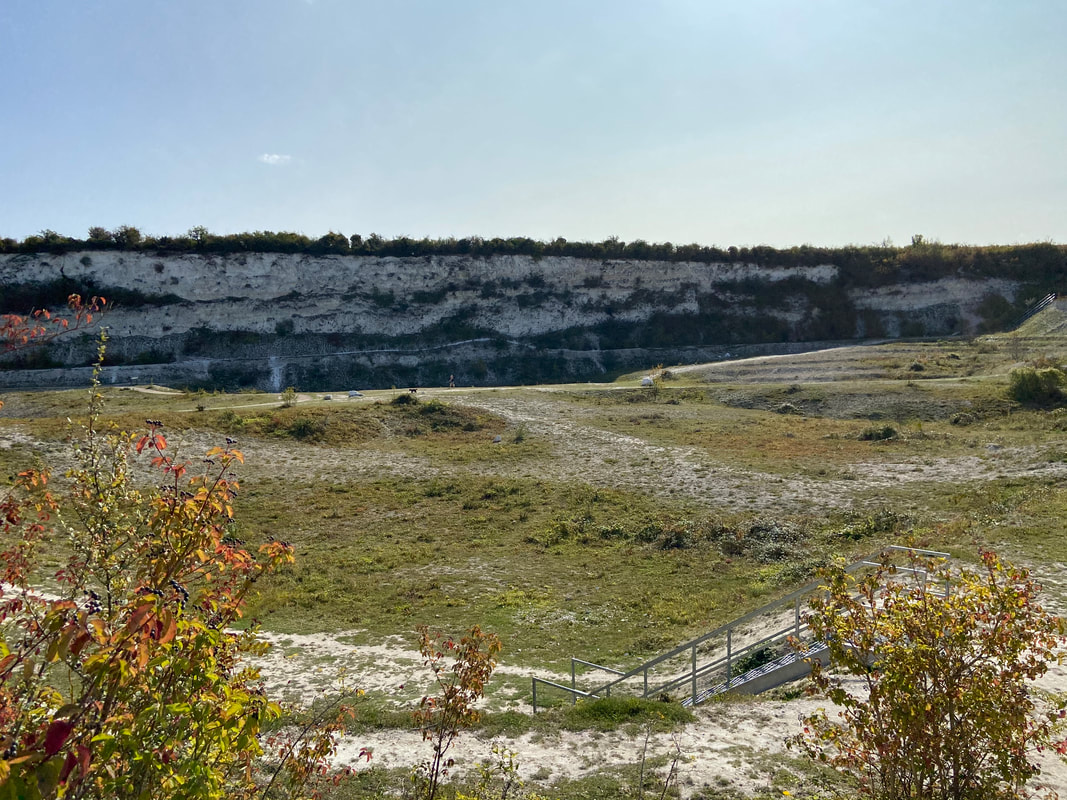 Cherry Hinton Chalk Pits (East Pit) November 2020 Cherry Hinton Chalk Pits (East Pit) November 2020
UPDATE: April 2024 - War Ditches Report Attached at the end.
I thought I'd give you a little information about the War Ditches, Cherry Hinton, Cambridge, as I am publishing my book on the site soon and so little is publicly known about the history of the site.
The War Ditches is an iron age hill fort site in Cherry Hinton, southeast of Cambridge City. The site, now almost completely destroyed by chalk quarrying, sits at the top of the most north westerly point of the Gog Magog Hills, on Lime Kiln Hill. The whole site has been occupied since prehistory and all periods are represented by activity on and around the immediate area. Today the site is within the old chalk quarry, now officially called 'East Pit'. It is managed by Cambridgehire Wildlife Trust and is open to the public for free.
Back in 2008 I was out for a walk with my sister and my daughter, we were climbing around in the local chalk pits, which were, back then, a bit wild and not really managed. Us locals would go there to walk, play and explore the massive open chalk pits, which made you feel like you were in some jurassic time slip. Many people in the area today still do not know of this amazing site and if they stumble across it they are amazed it is there.
Anyway, back in 2008 on our walk at the chalk pits, we were up on the cliff side (you can't go up on the cliffs anymore!), we were sitting in a small dip and as I poked about in the mud, hand fulls of amazing ancient pottery sherds started to come out. I was Parish Archaeological Warden at the time and knew the history of the area well. We were sitting on the edge of the cliff where chalk quarrying had made a massive deep area and cut away all that had been there previously (see pictures). 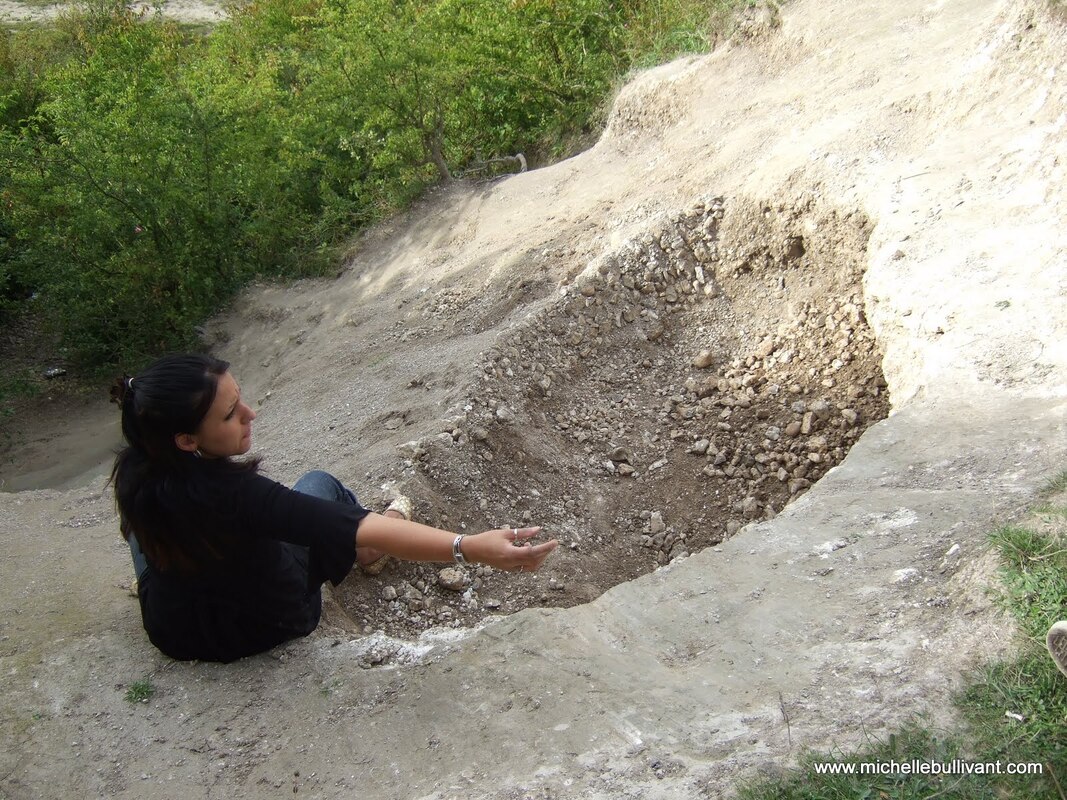 My sister sitting in the small dip, on top of the cliff, in Cherry Hinton Chalk Pits 2008 - filled with ancient pottery - part of the War Ditches rediscovered that afternoon. My sister sitting in the small dip, on top of the cliff, in Cherry Hinton Chalk Pits 2008 - filled with ancient pottery - part of the War Ditches rediscovered that afternoon.
In the late 1800's there had been reports of all kinds of things being discovered on the site and over the years various excavations had taken place alongside the ever encroaching quarrying - all manner of amazing well known antiquarians had been to and worked at the site over the years. The main discovery was that of the 'War Ditches' - a roughly circular ring ditch which was described as being an Iron Age Hill Fort, that had once dominated the top of Lime Kiln Hill - something like that of its neighbour of Wandlebury which is still preserved today, a couple of miles to the south west.
There had been various reports written about the site and the excavations that took place over the years and when the quarrying at the site had finished in the 1970's, the War Ditches was thought to have been finally and fully destroyed by the quarrying, it was written up in books and histories stating that fact. However, I was now armed with a bag full of beautiful pottery sherds dating from the late Iron Age, Romano-British and Roman periods. I knew the position of where the War Ditches had been and I also knew that where we had been sitting, in that small dip on the cliff side could only be one thing - an unknown remaining part of the War Ditches.....
I quickly phoned my two friends and colleagues Mark Hinman & Richard Mortimer, both of who take an interest in the archaeology of this area, and told them what I had discovered and then drove the bag of pottery over to them for them to have a look. A lot of things happened fairly fast after that. Firstly, we found that the site was in the process of being acquired by Cambridgeshire Wildlife Trust from one of the Cambridge Colleges. Then it turned out that the chap involved with the Wildlife Trust and the acquisition of the site, lived close by. So Mark and I had an emergency meeting with him, at the top of Lime Kiln Hill where we explained what had been discovered. Mark moved quickly, explaining that a full and official archaeological excavation would be needed. Terms were negotiated between The Wildlife Trust, English Heritage and others and the business of the full archaeological excavation was taken on by Oxford Archaeology East (based in Bar Hill Cambridge, this company used to be Cambridgeshire County Council Archaeological Unit). Mark and I also approached Cambridge Antiquarian Society (of which we were both council members of at the time) to tell them of the discovery. Many of the past excavations at the site had been published by the Cambridge Antiquarian Society, since the 19th Century.
While negotiations and preparations for the archaeological excavation were taking place, I then had a phone call from the Cambridge Archaeology Office to tell me that two young boys who had been playing up at the chalk pits had found some human leg bones which had fallen out of the cliff, it wasn't clear which part of the chalk pits these bones were found - it could have been anywhere along the entire cliff. I was asked to pop down to the archaeology lab in Downing Street, Cambridge and collect the bones. A odd experience, which involved me collecting a pair of leg bones in a wooden box, which I then strapped into the front passenger seat of my car. I decided that the best thing was, that as Oxford Archaeology would be carrying out the main excavation on site, that I would deliver the legs to them to be processed by their finds department - even though they may not have fallen out of the actual War Ditches ring ditch itself, they still came from the same area.
In 2010, the full excavation began in the chalk pits - this was something new for everyone, not least because Cambridgeshire is not known for its high hills or mountains but this excavation was on top of a cliff, so the archaeologists had to be trained in cliff side excavation and safety. A large scale scaffolding unit had to be erected next to the cliff to allow us to access the site safely and training in harness wearing was required for some.
Obviously there is so much I want to write about what was found and the whole history the site but for now, I just wanted you to know what had taken place at the chalk pits because so many people have no idea that this site is there or anything about what happened. I will publish the book later this year and you'll be able to find out all the details of what was found both during this excavation and in the past at the site.
At the end of the excavation in 2010, an open day was held in the chalk pits. The Cambridgeshire Wildlife Trust now owned the site and had called this large chalk pit 'East Pit'. The mayor, press and public were invited to come and see the site and find out what had been taking place. Here are some more pictures from that day and the excavations 2010.
Since the Wildlife Trust has taken over the site it has become a nature reserve and it is open to the public. There are also some display boards at the site for you to read.
As part of the excavation I was commissioned by English Heritage to write a report on the background and history of the site as part of the research into the site and subsequent write up of this new excavation. I took the opportunity to have a picture taken, to use for the cover of my report, with Mark and Richard, that mirrored a photograph of three of the antiquarians from the past, that had had a similar picture taken, it was a proud moment to be following in their footsteps.
March 2024:
I have attached my report on the War Ditches below and in the downloads section in the main menu. This report is currently undergoing review and preparation for publication. As a temporary measure, it is provided here as a draft PDF for your reference and fair use. I believe it is essential to make such material available rather than risk it never seeing the light of day due to protracted publication processes or ongoing research endeavors, which may continue indefinitely if not managed carefully. Originally authored in 2010, it is high time that the valuable information and research contained within be accessible to others. I intend to update and refine it further before its final publication. I trust you will find it both informative and engaging in the interim.
If you'd like to support the work that I do, why not buy me a coffee, I'd be really grateful and it will help keep me going :)
|
Cherry Hinton History Pages:
Contents If you'd like to go straight to a specific article or blog post within the Cherry Hinton History Page you can click on any of the post titles in the list below and it will take you directly there. Alternatively, you can use the search box above to search by keyword or you can use the index further below. About & how to use:This is the blog page for my articles, memories and archives relating to the archaeology and local history of Cherry Hinton, a village to the southeast of Cambridge UK. The area covered is the old Parish of Cherry Hinton which today includes the Ward of Queen Edith's. The Categories below are really the keyword index of what is on the Cherry Hinton History Pages. Each is a clickable link which will take you to an article or blog which contains that word or subject.
Categories
All
Archives
May 2024
|
||||||||||||||||||||||||
